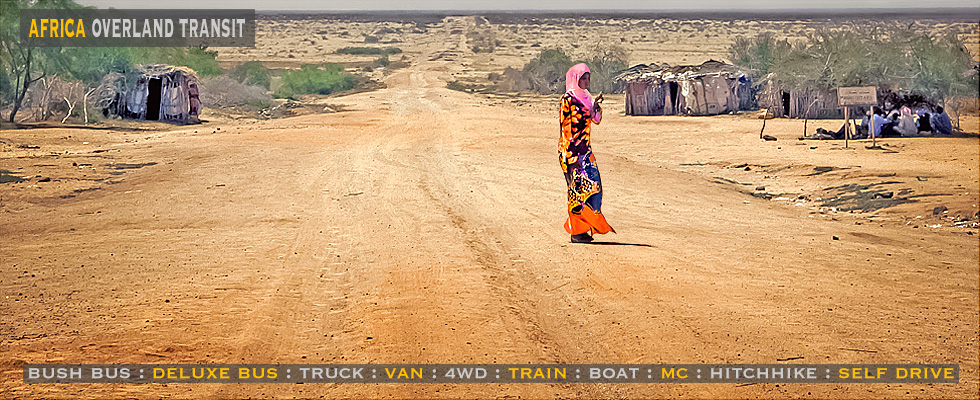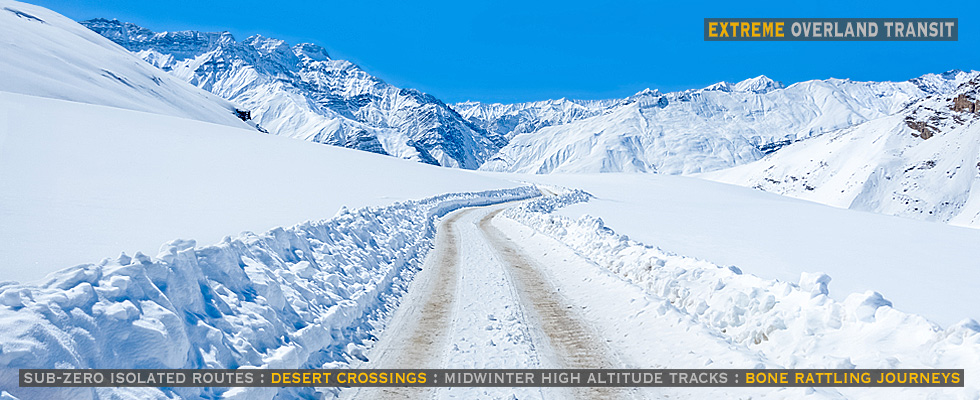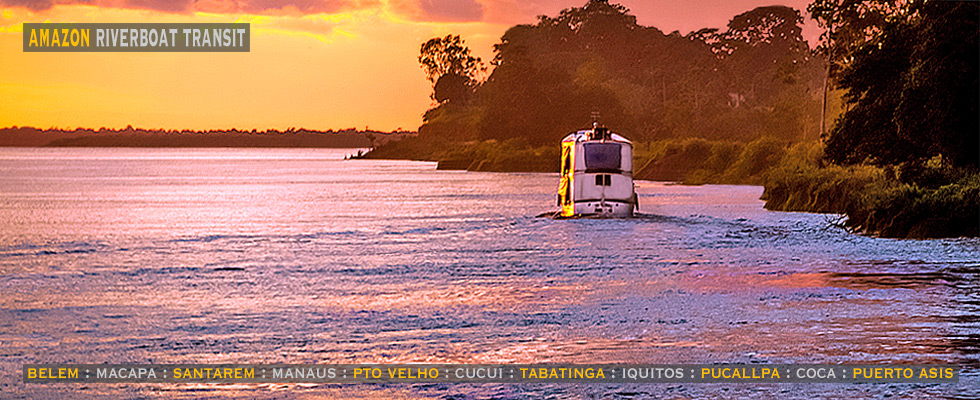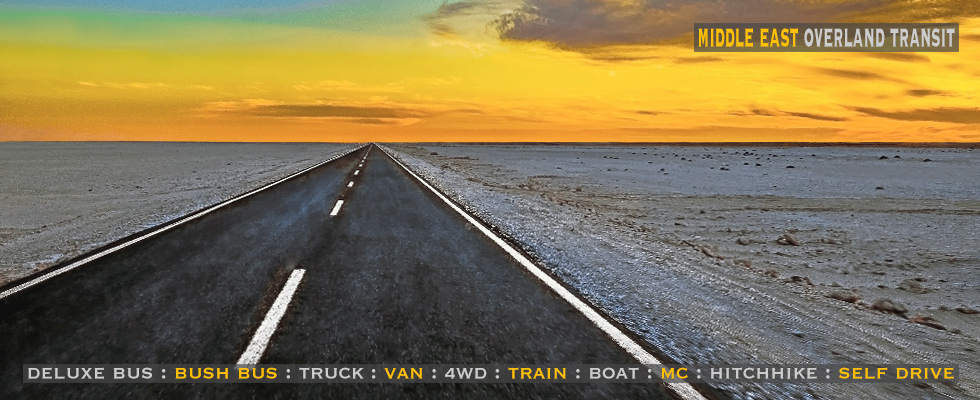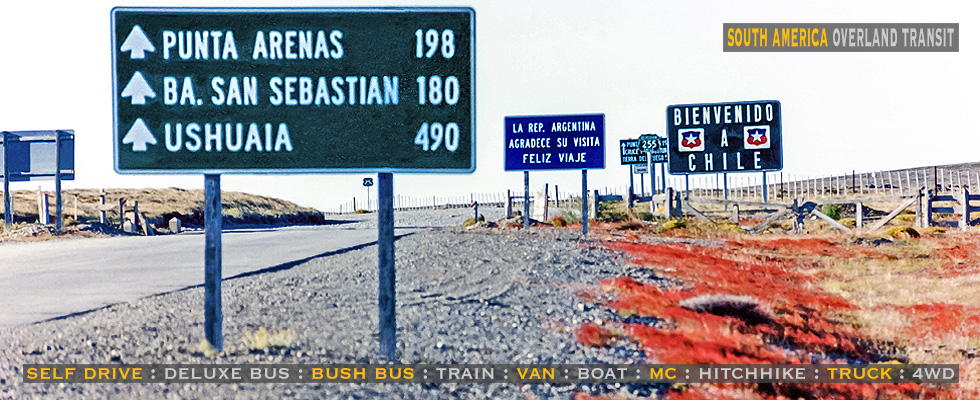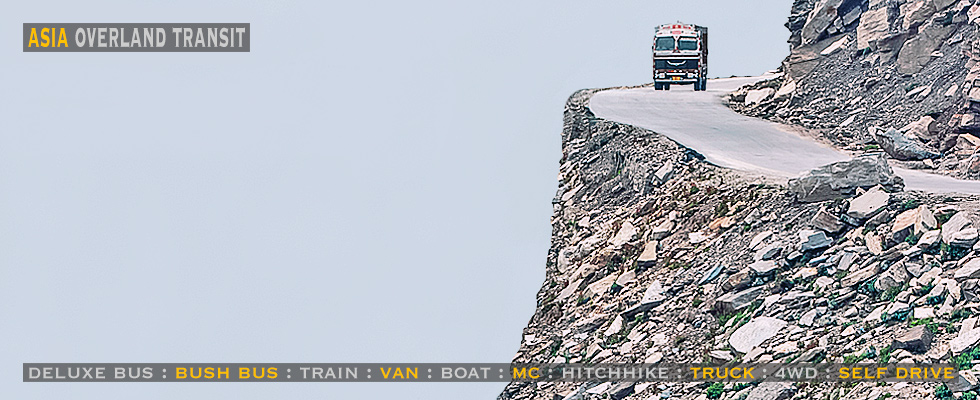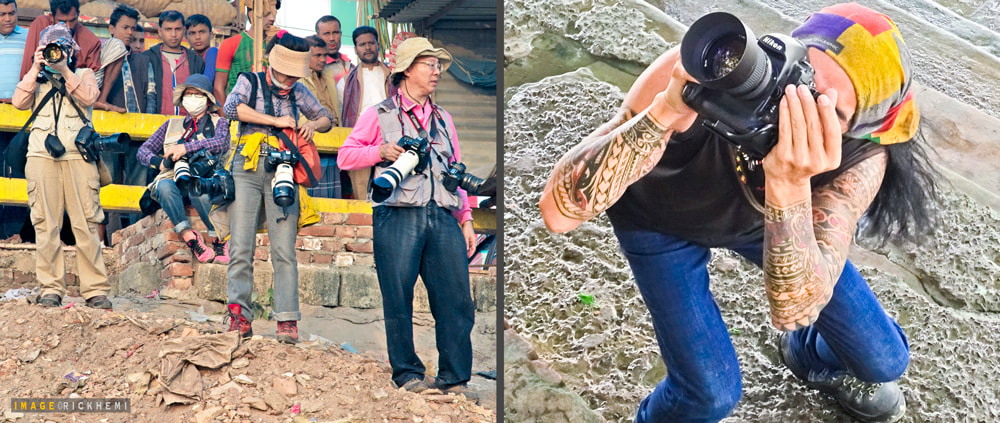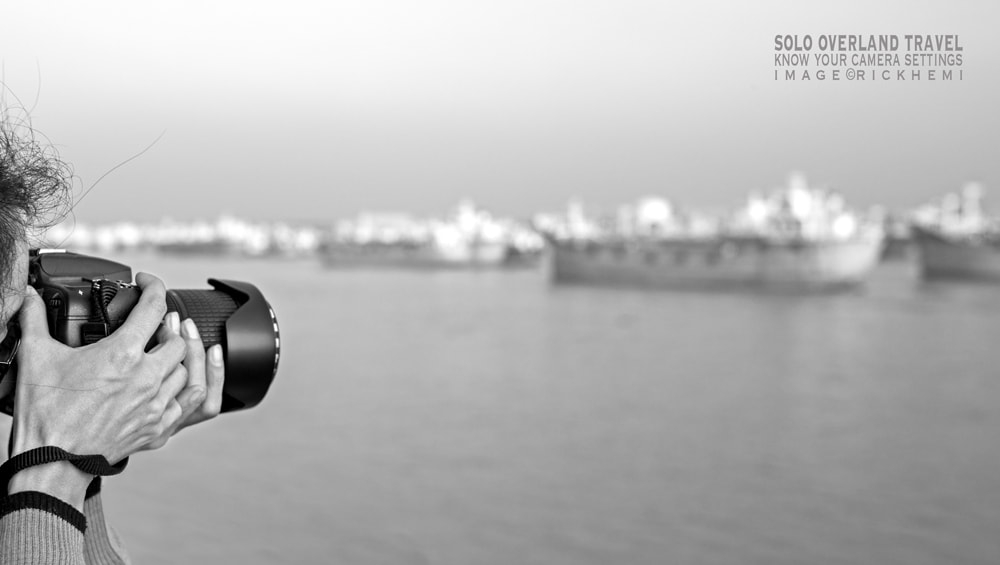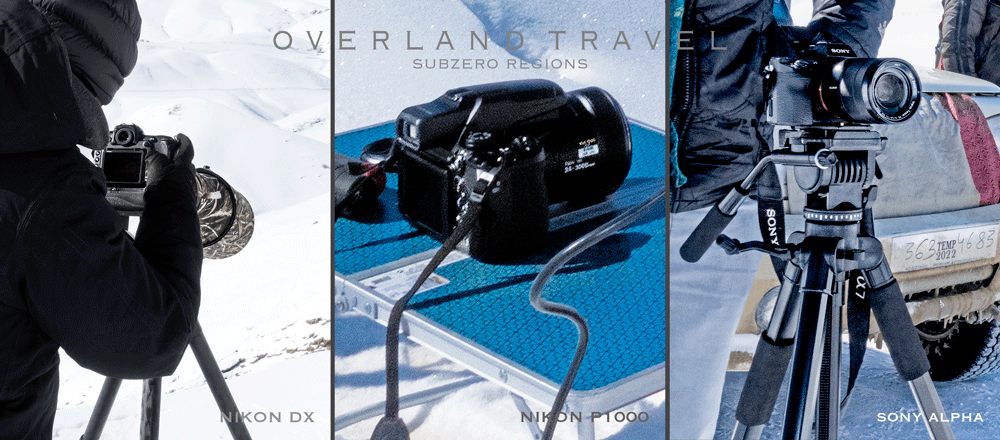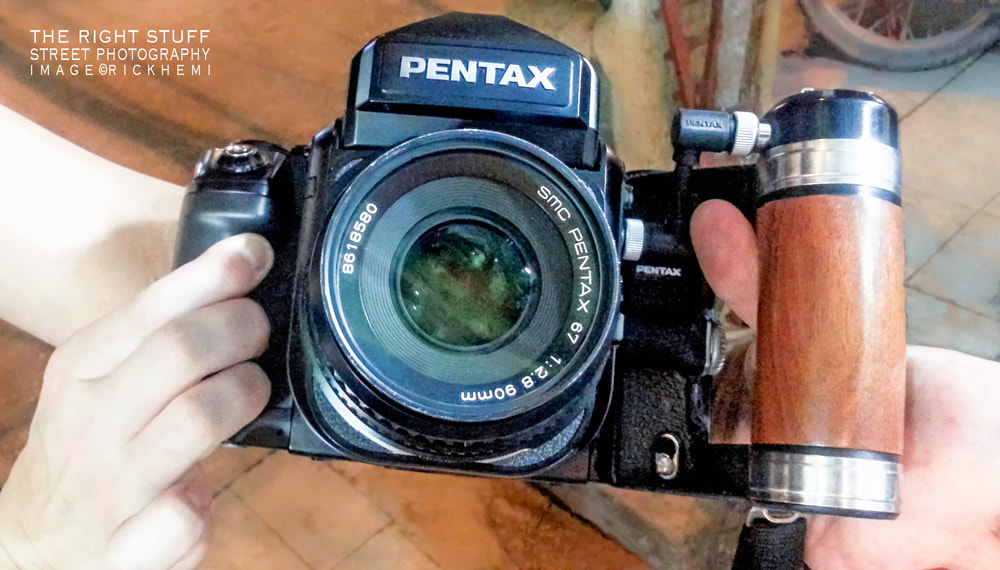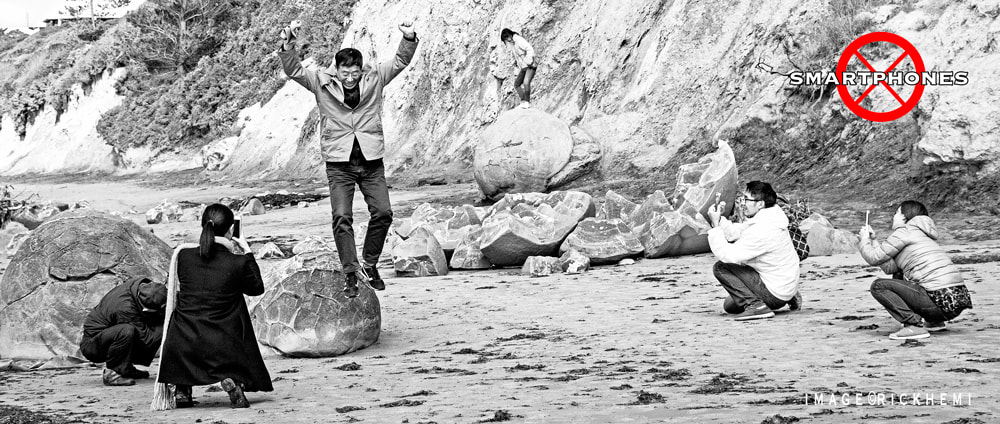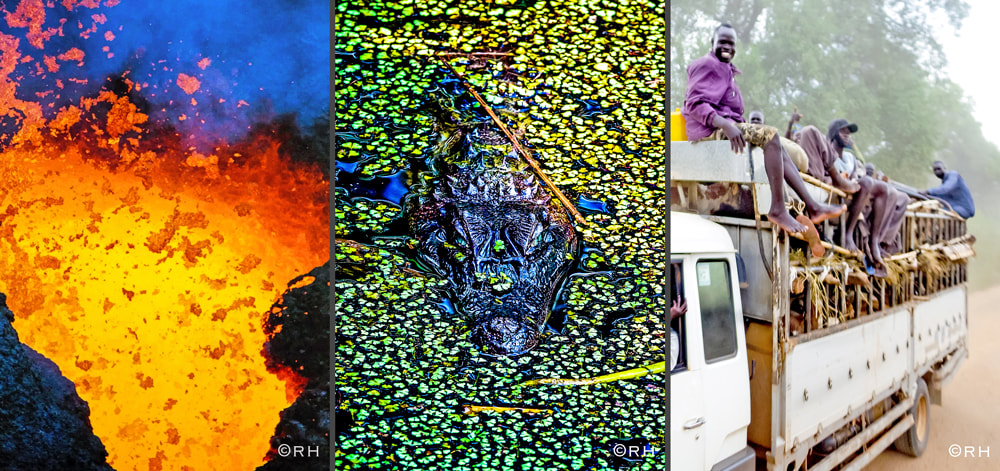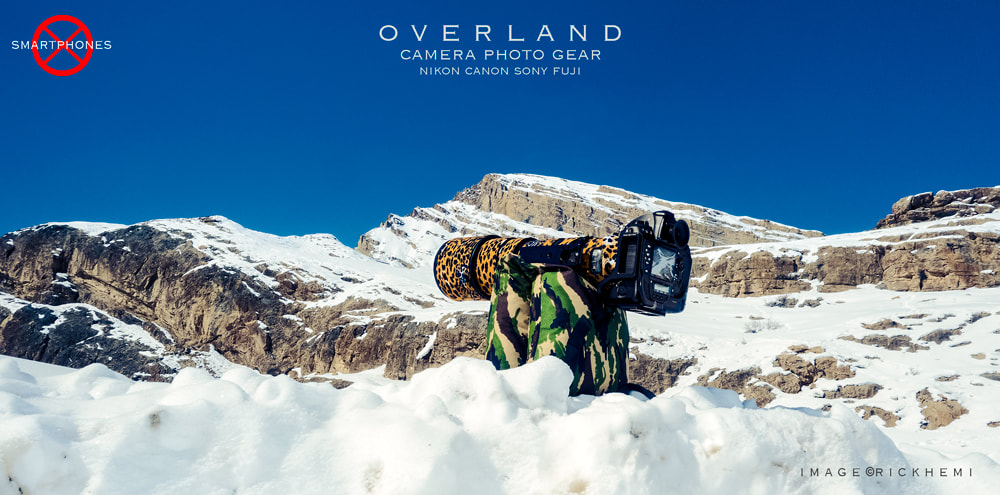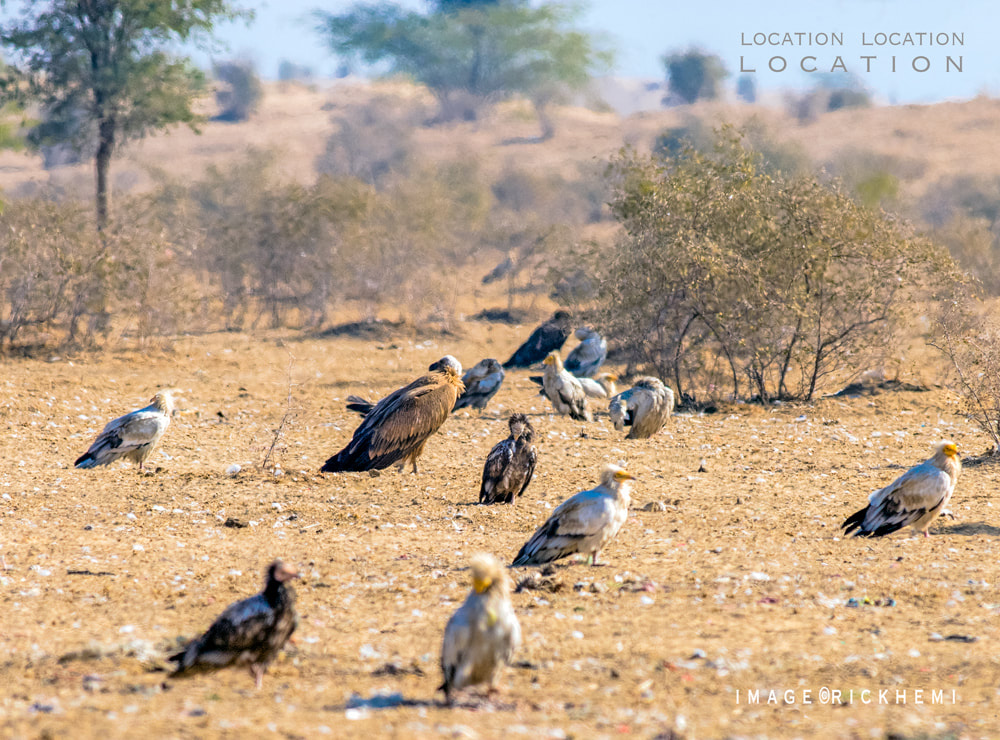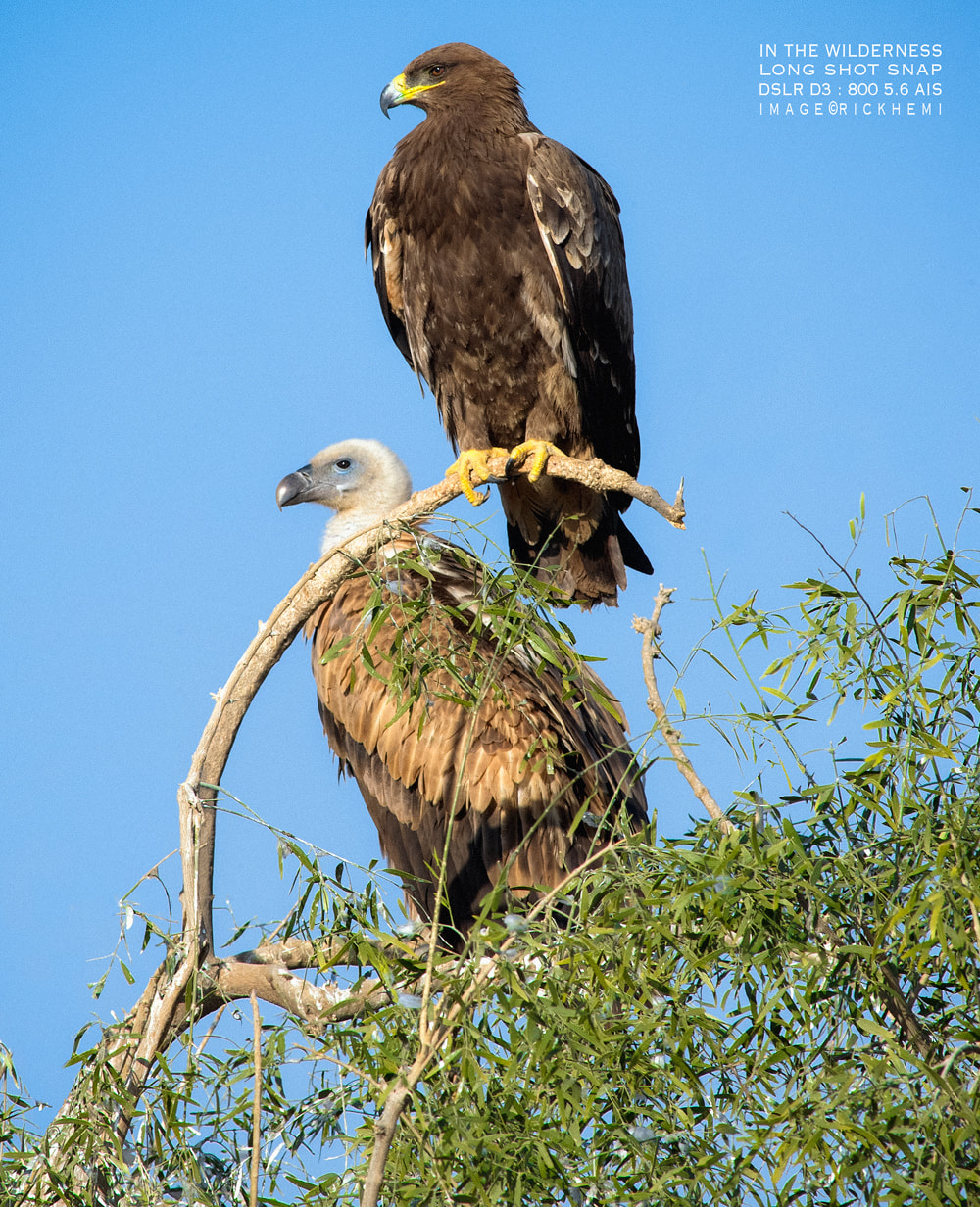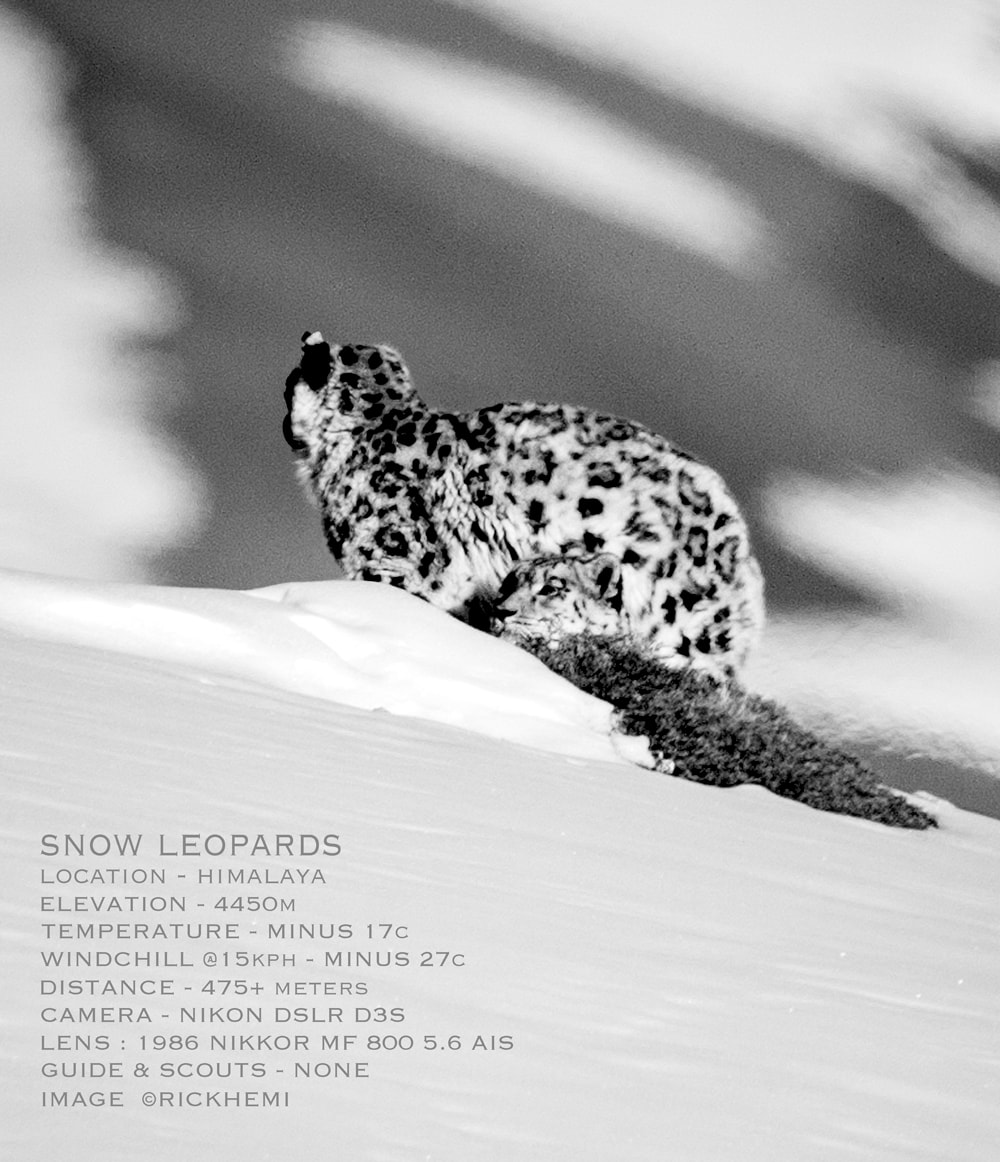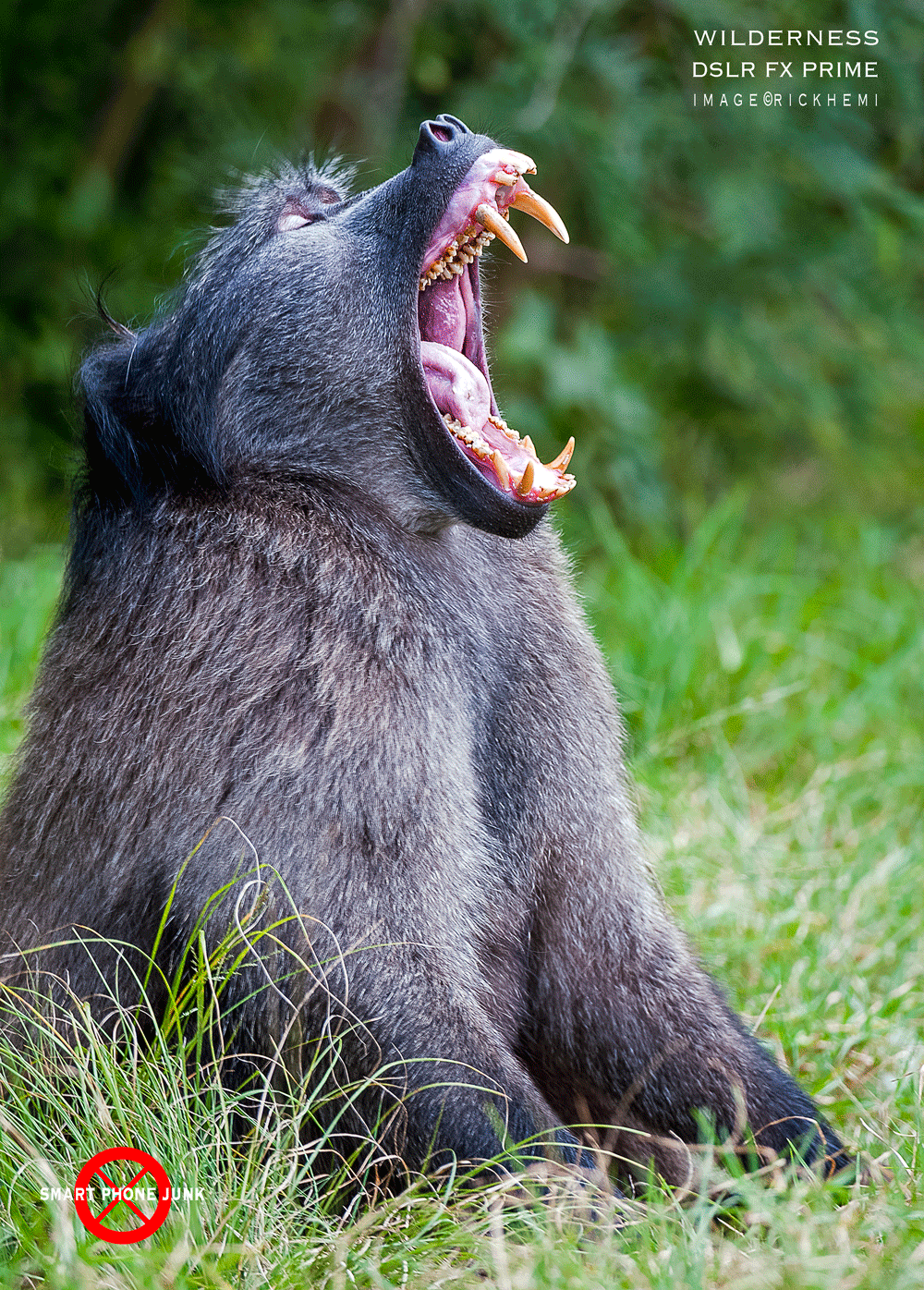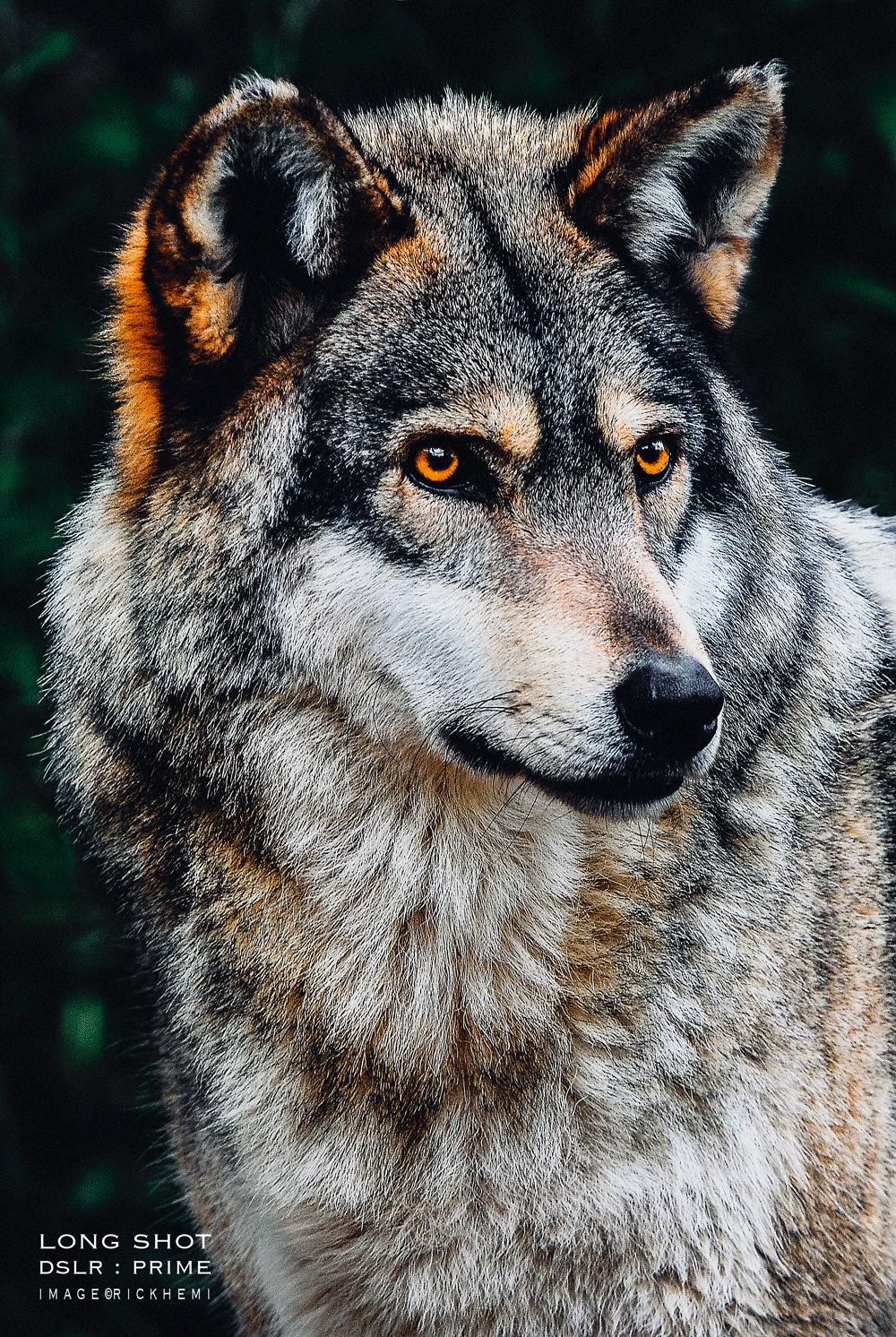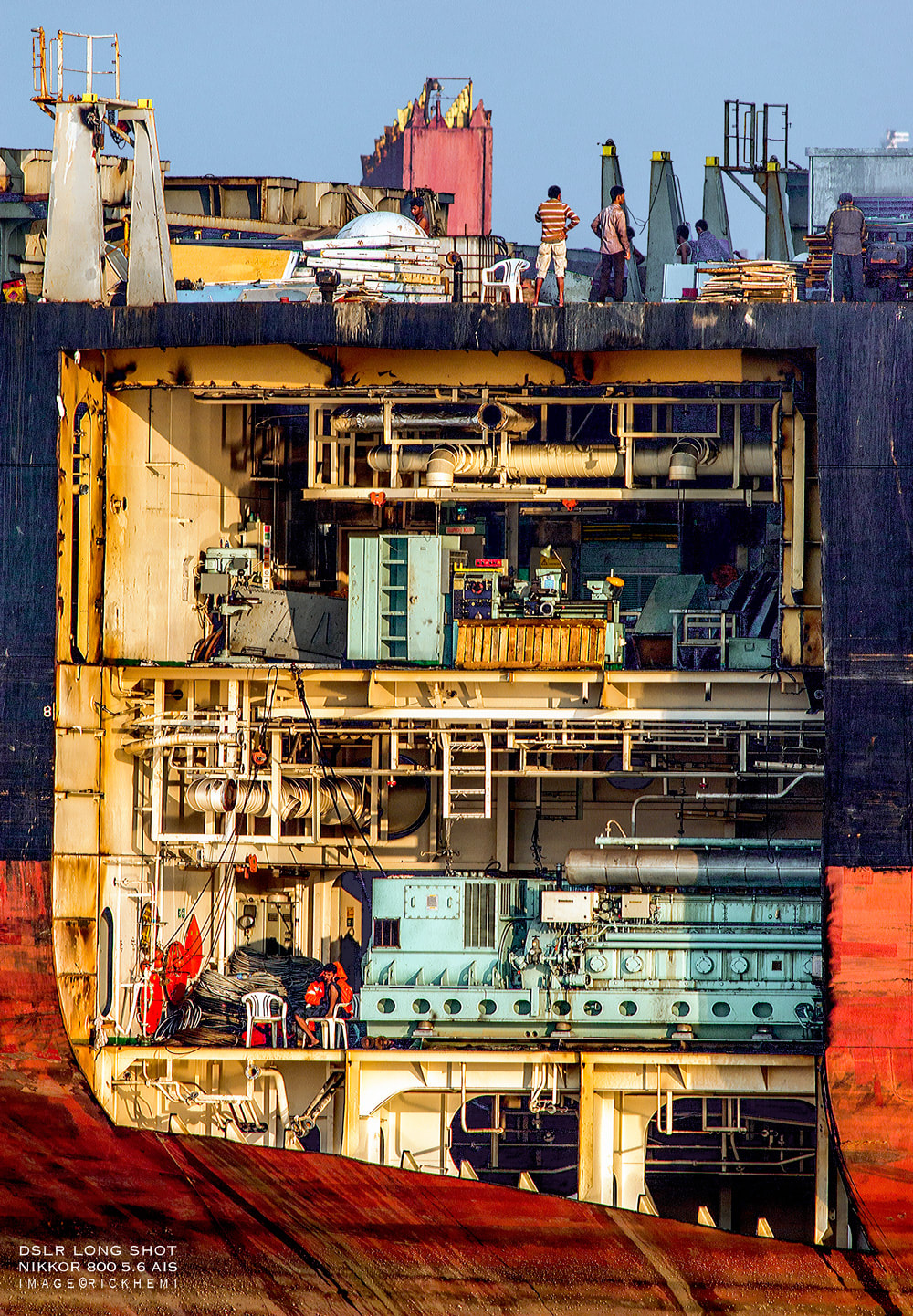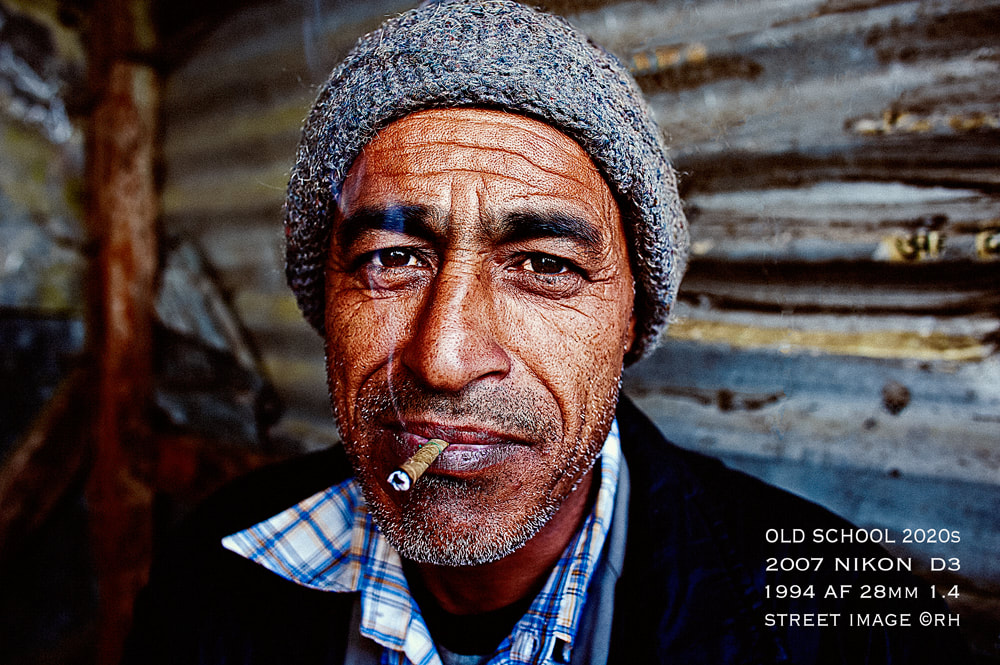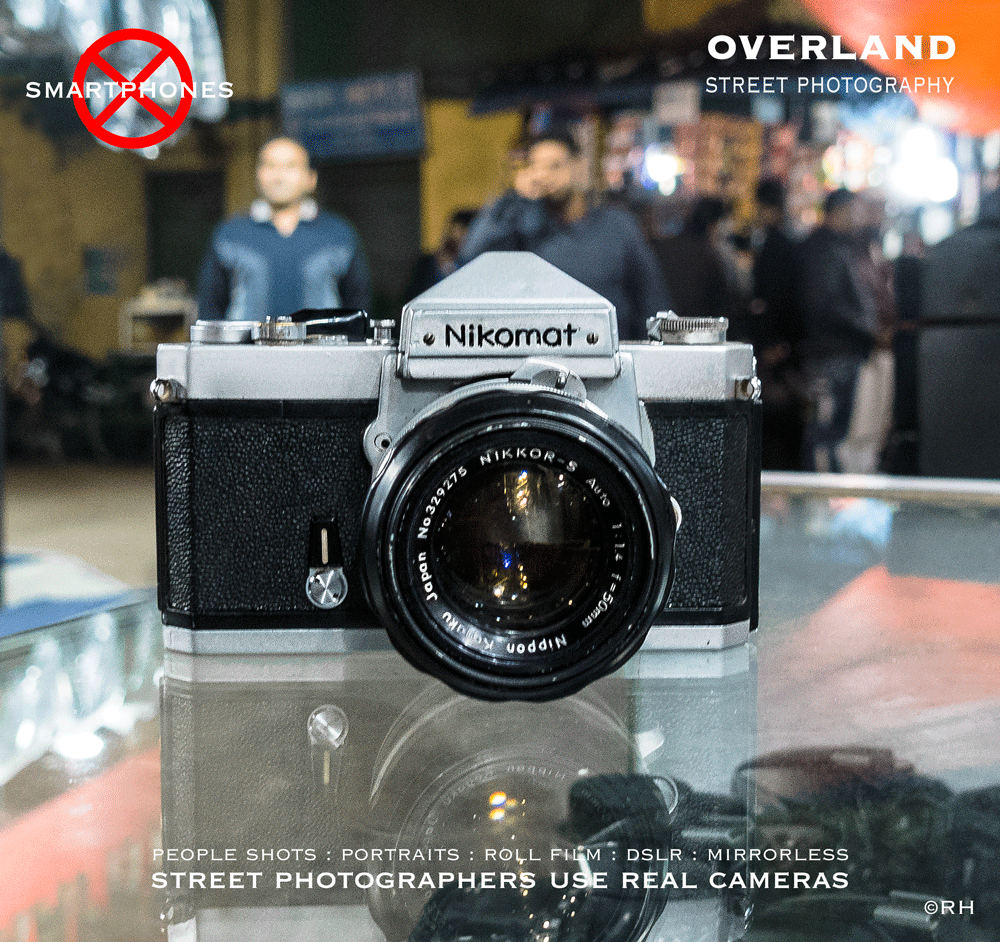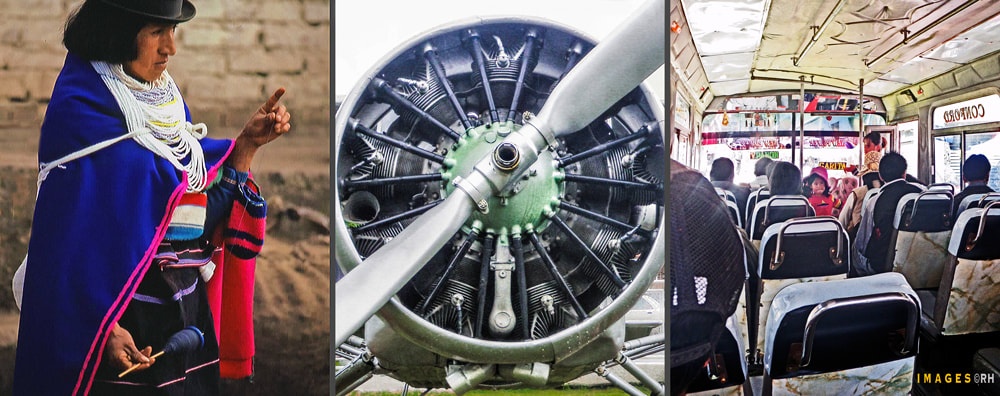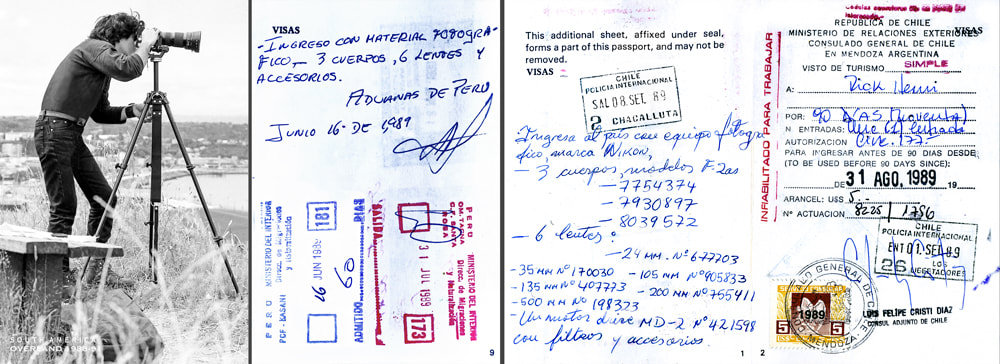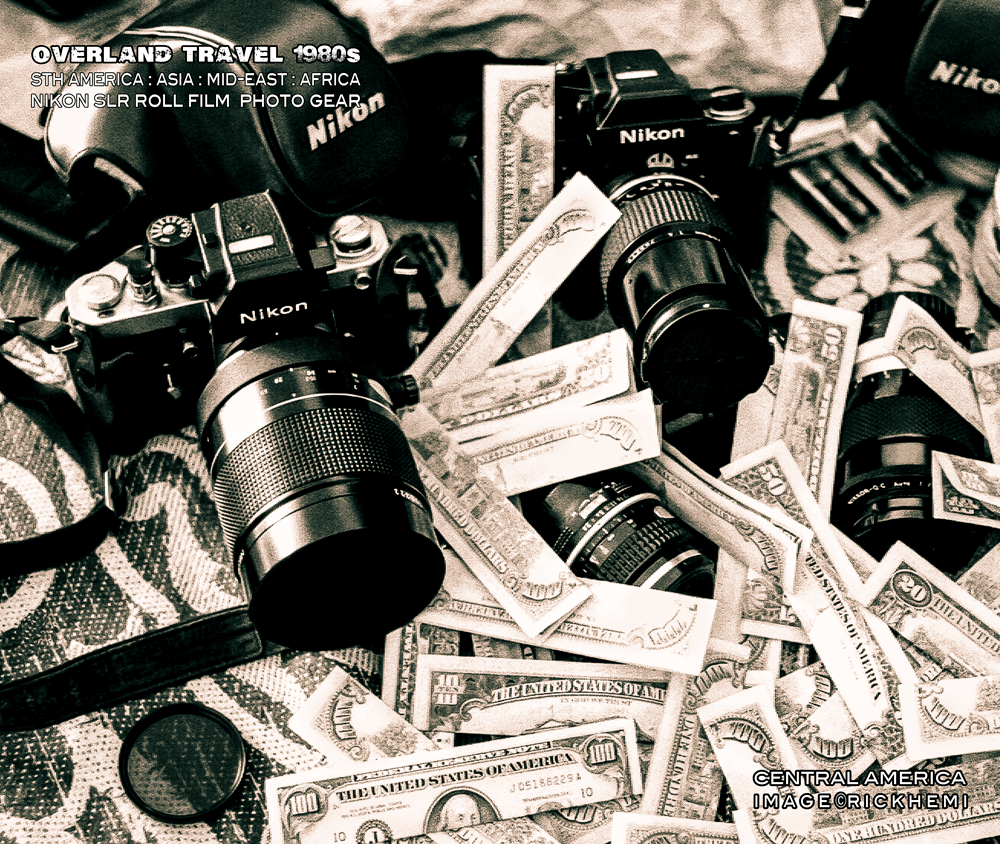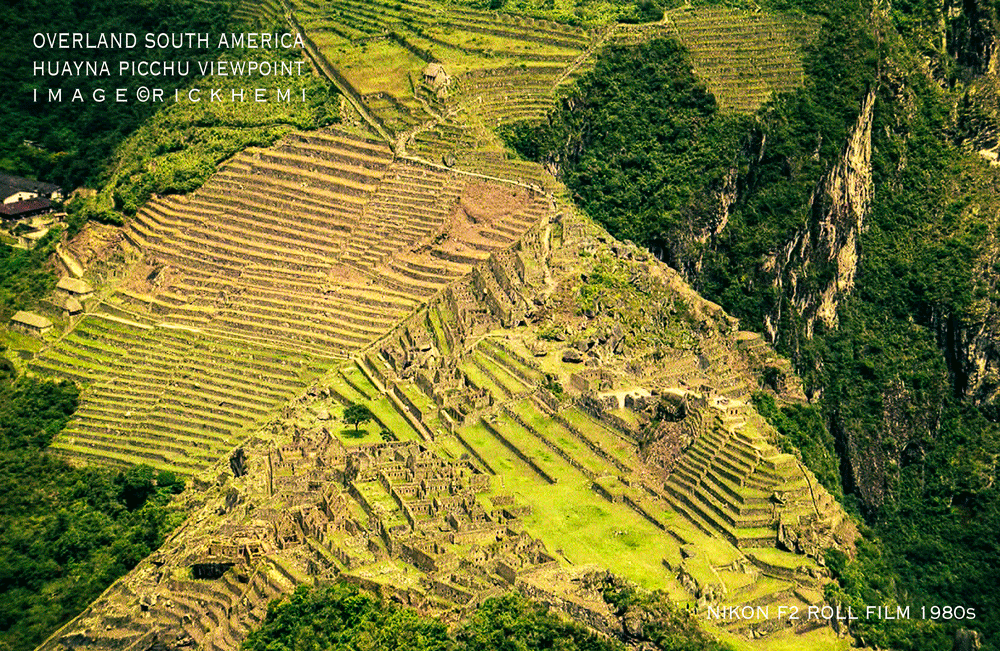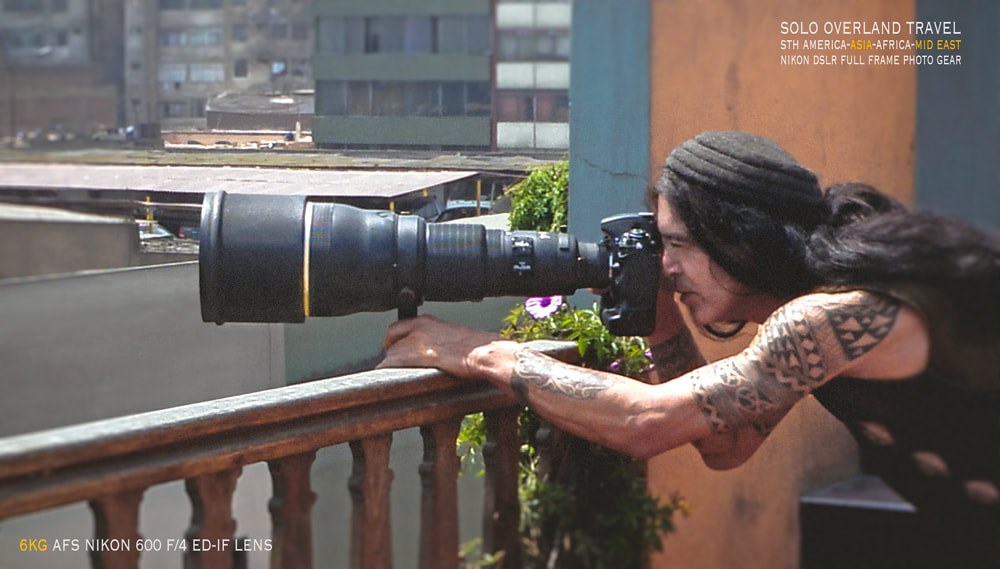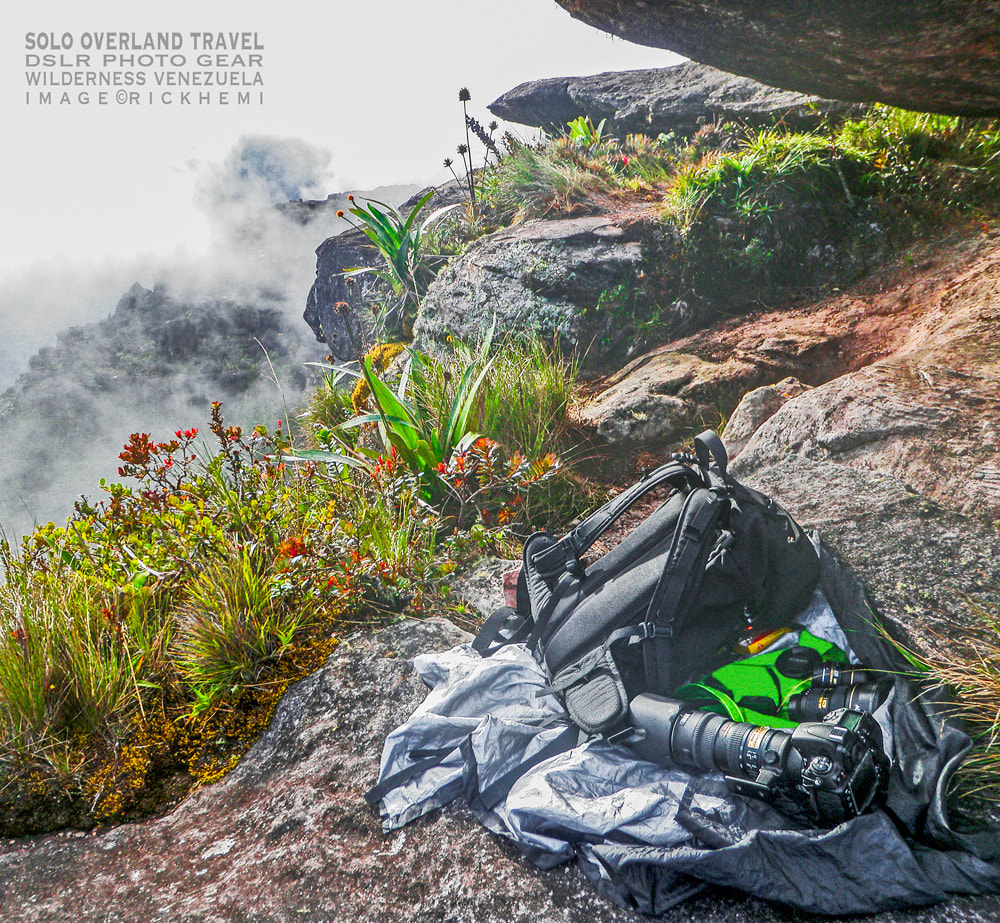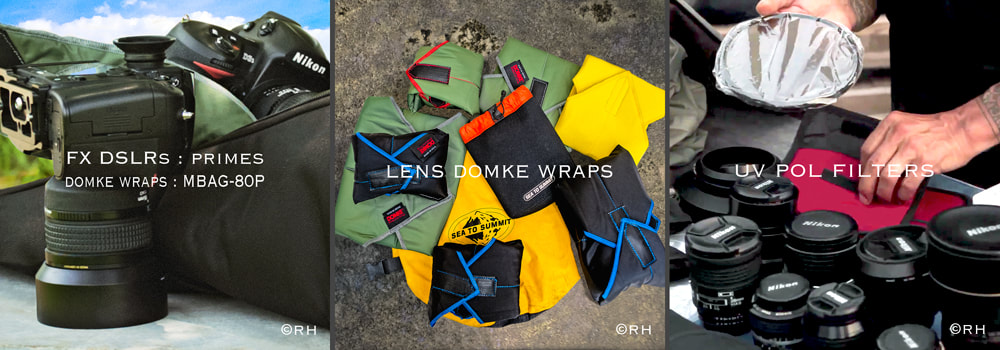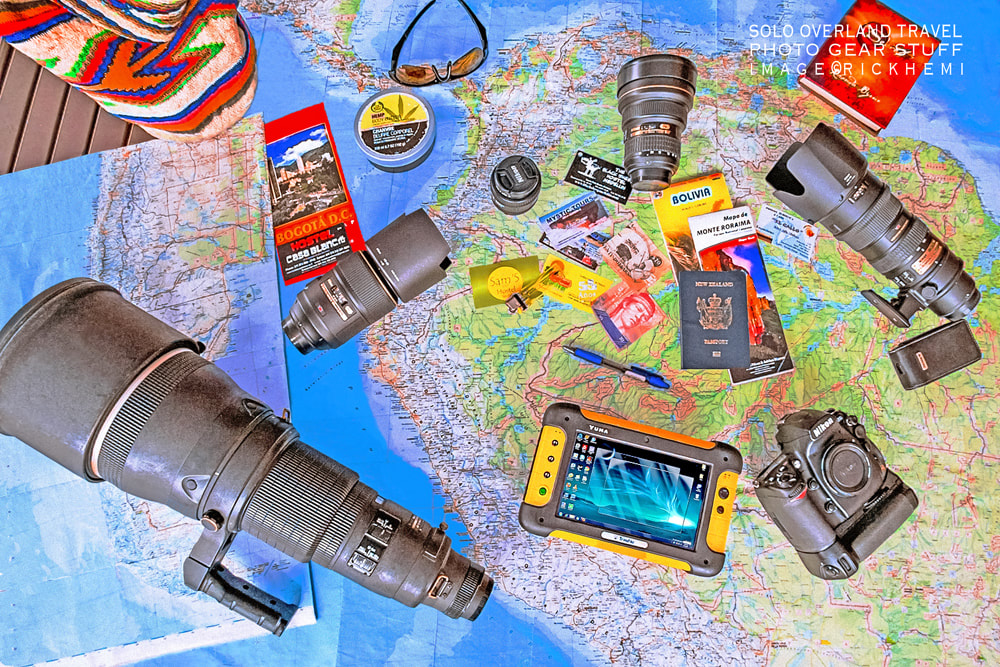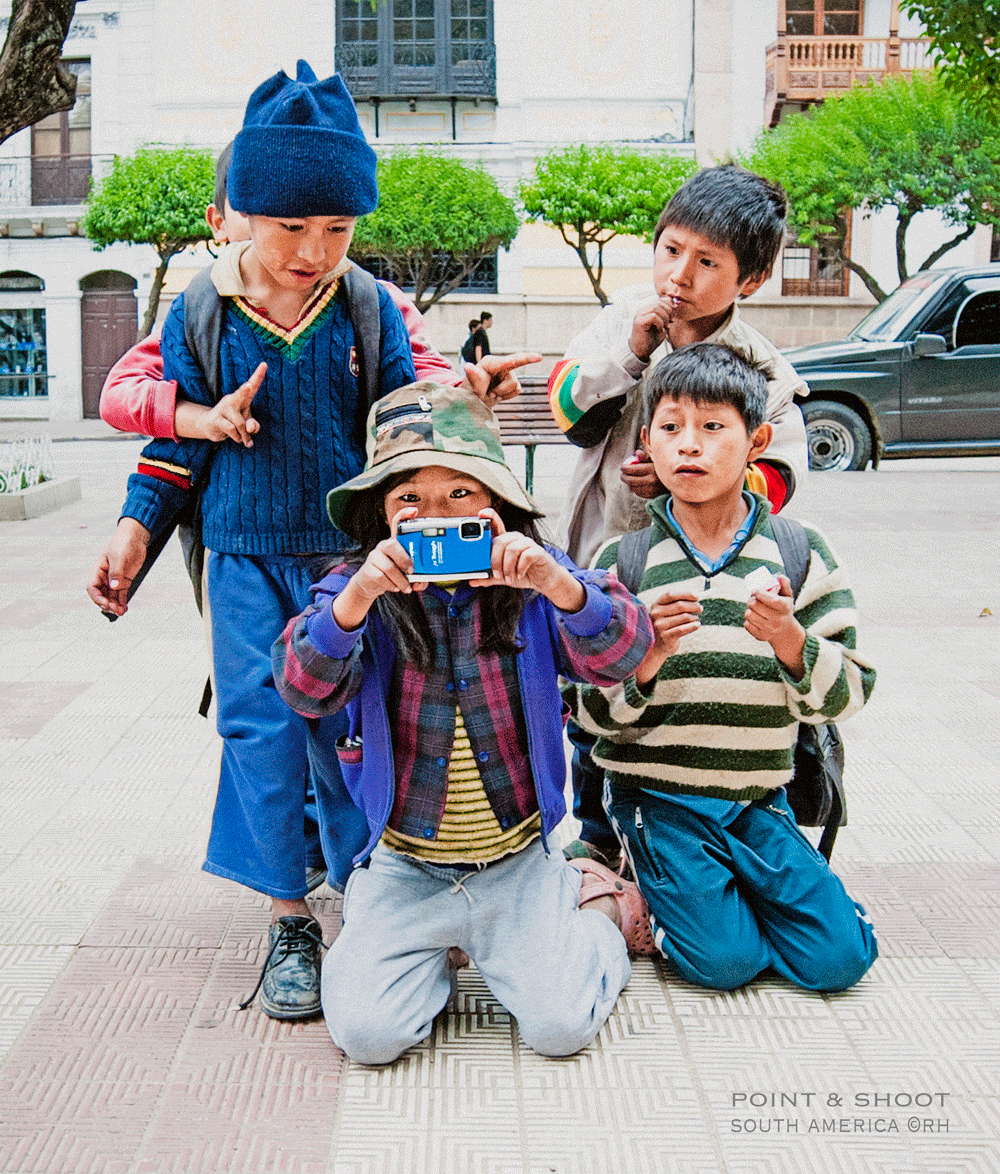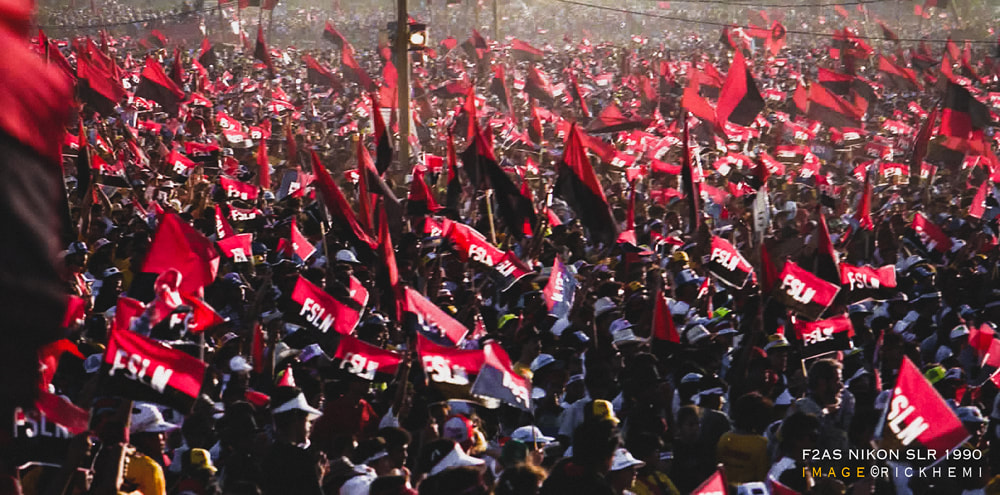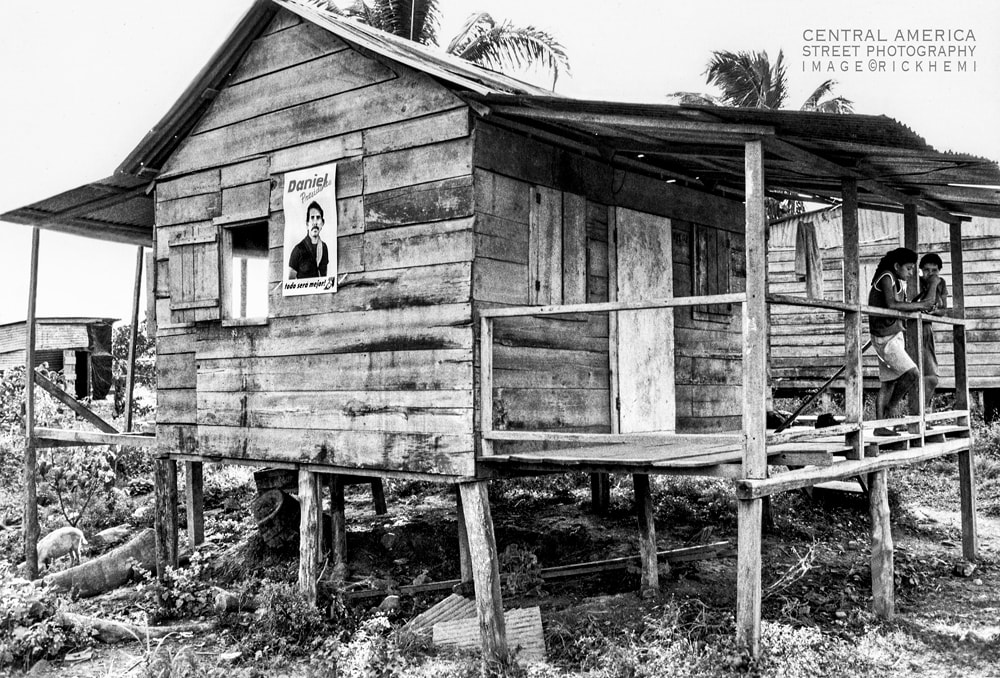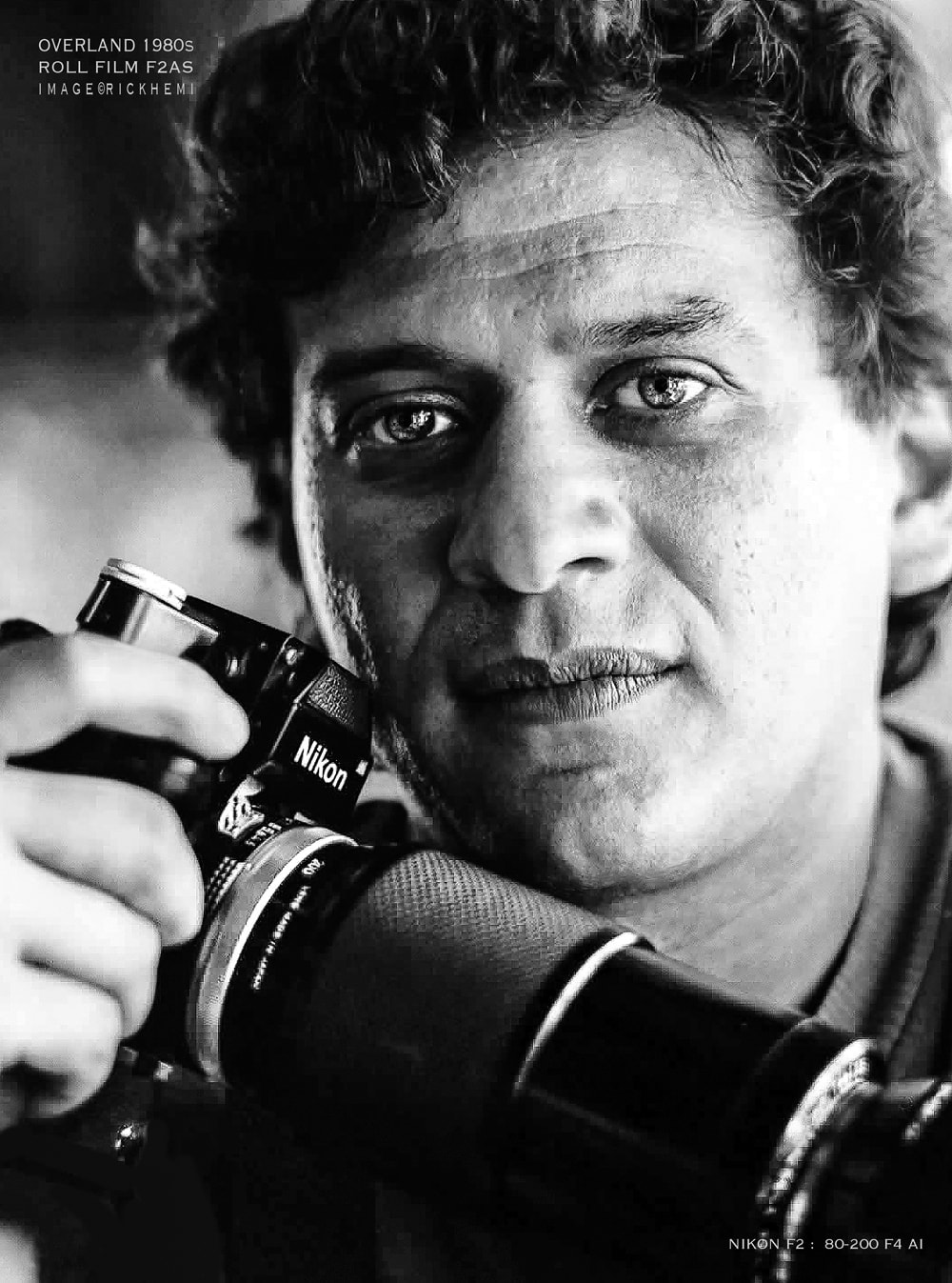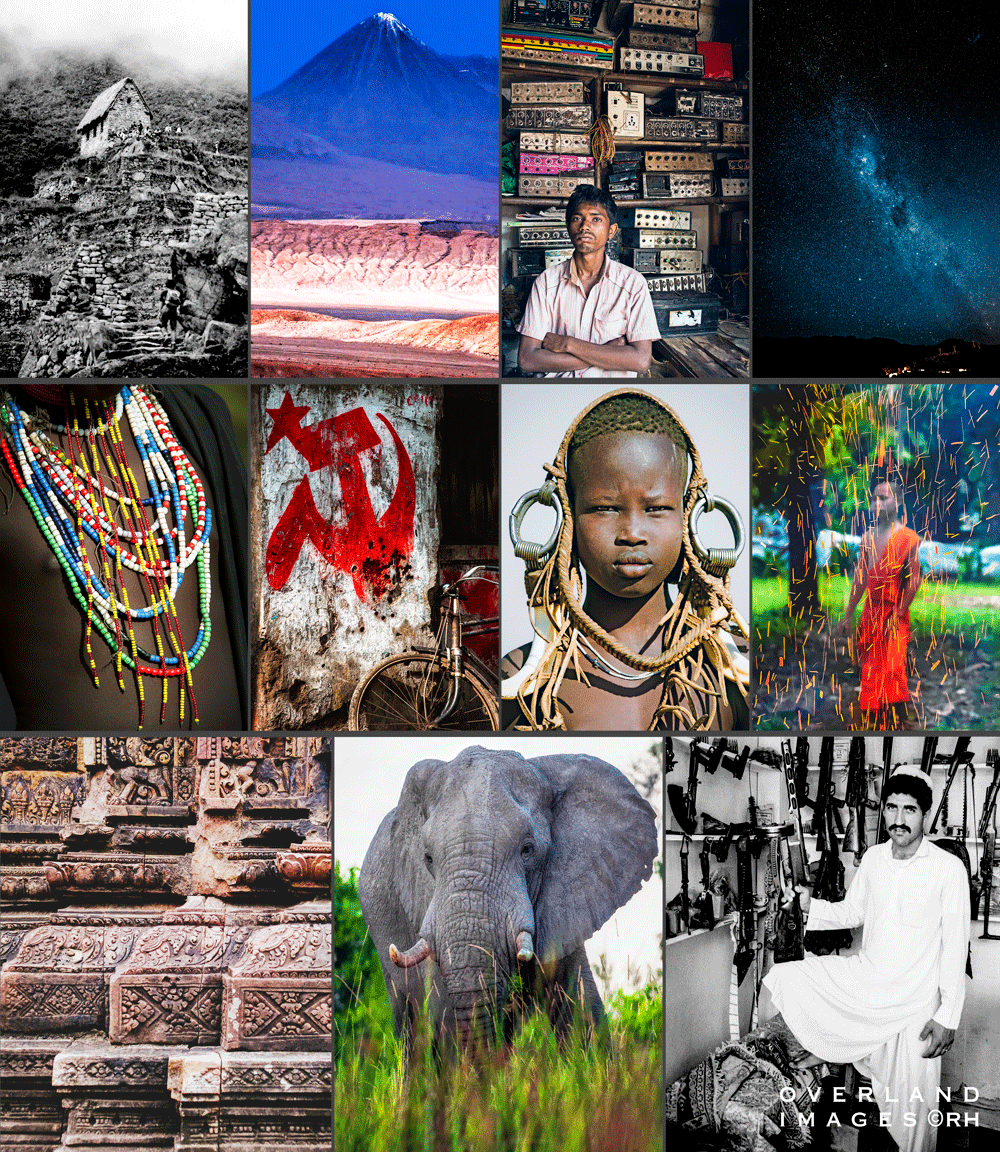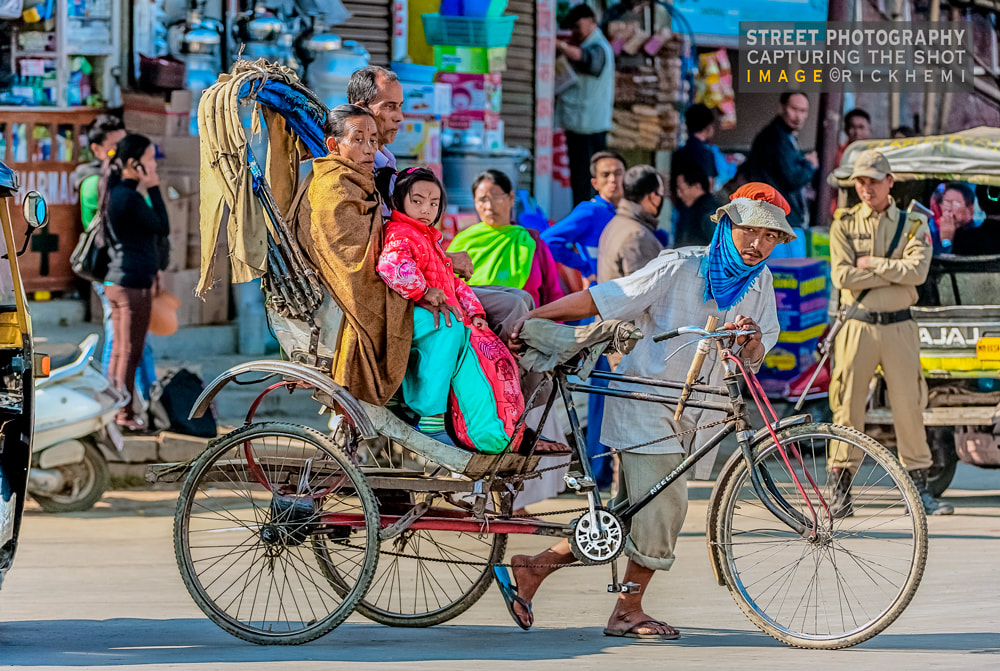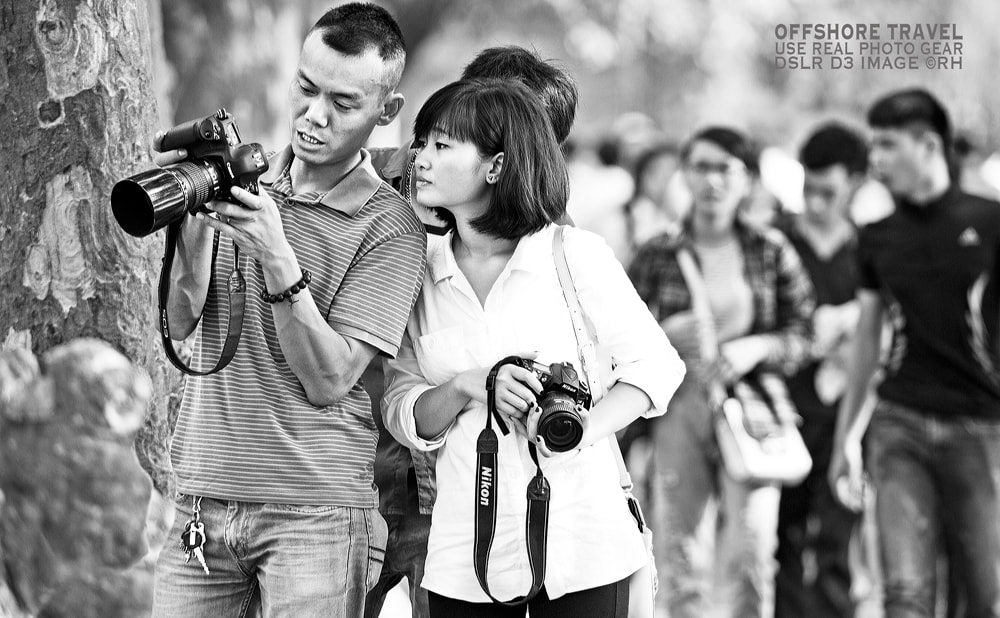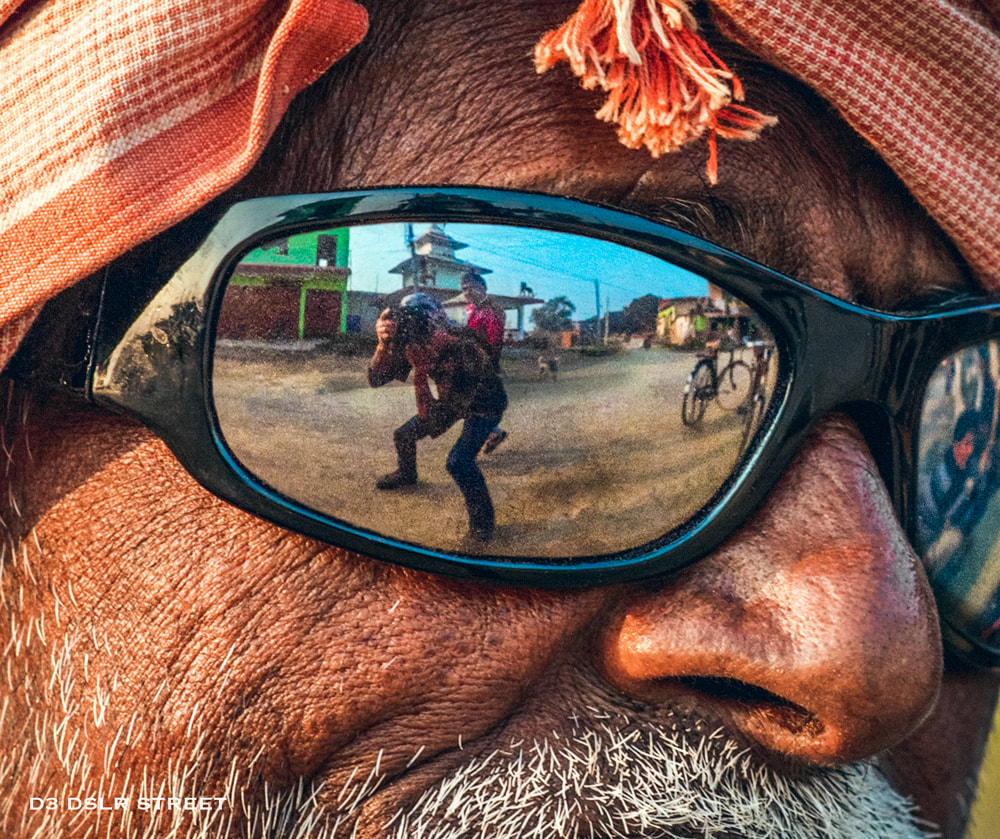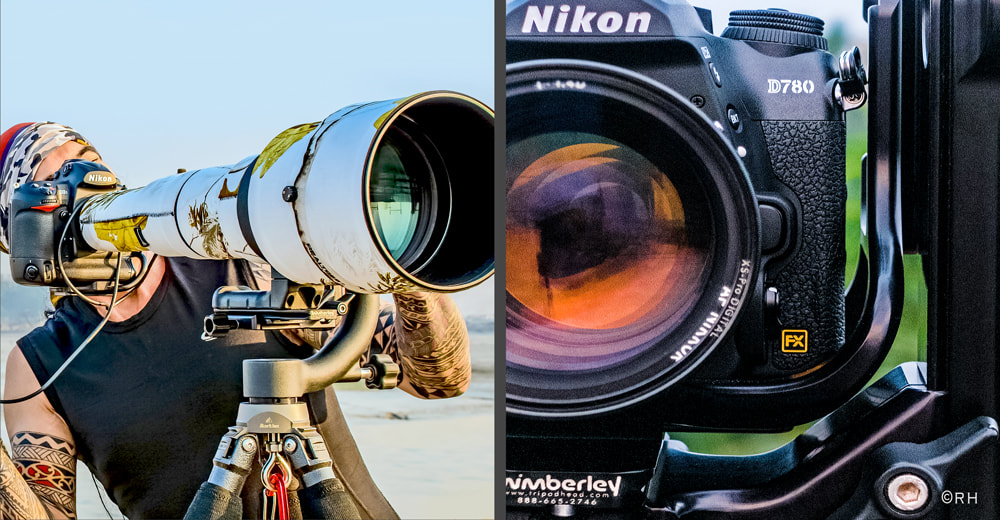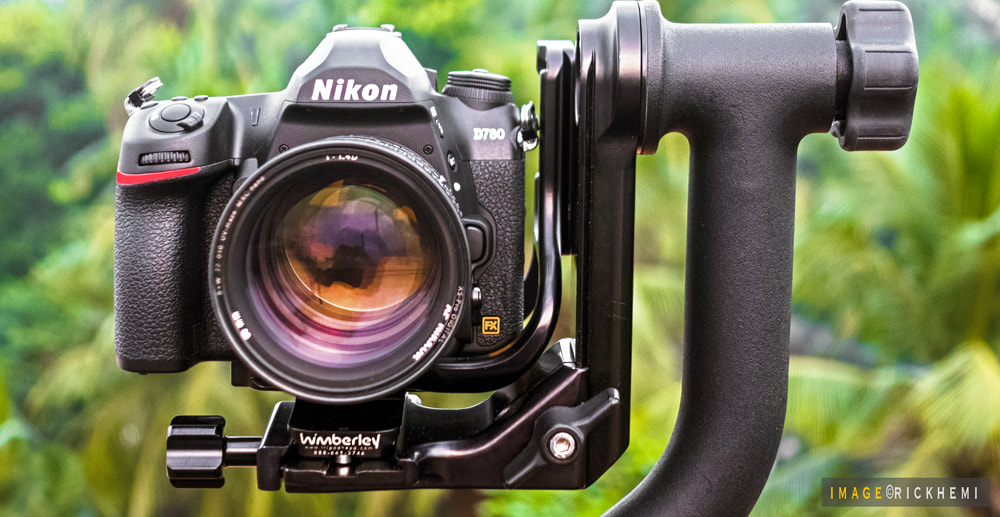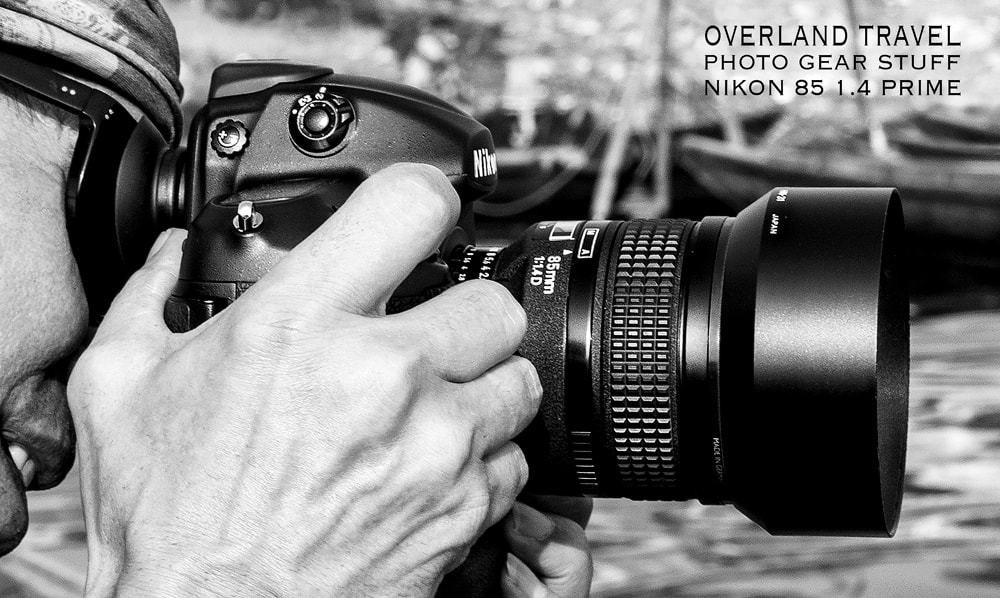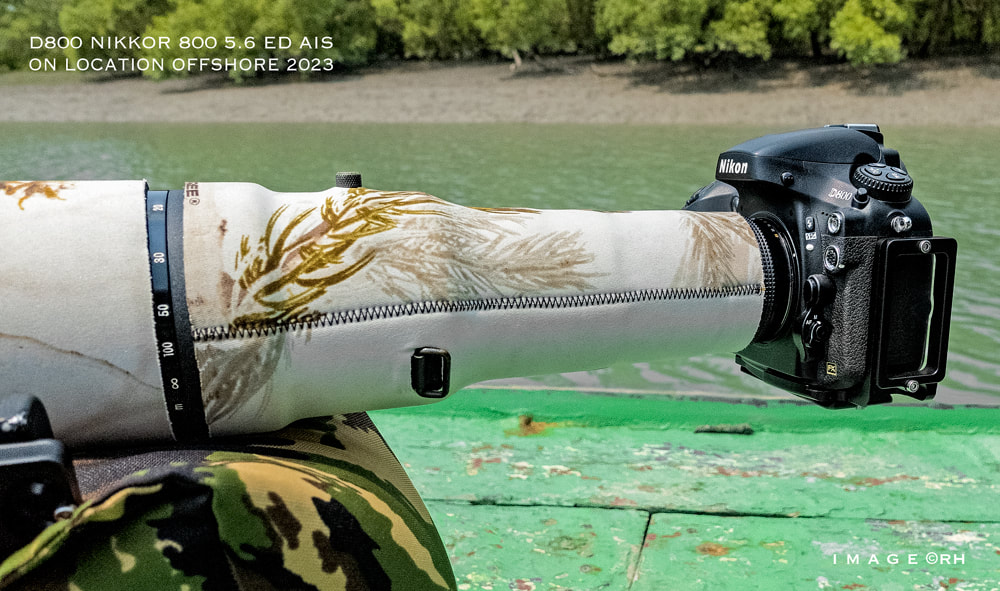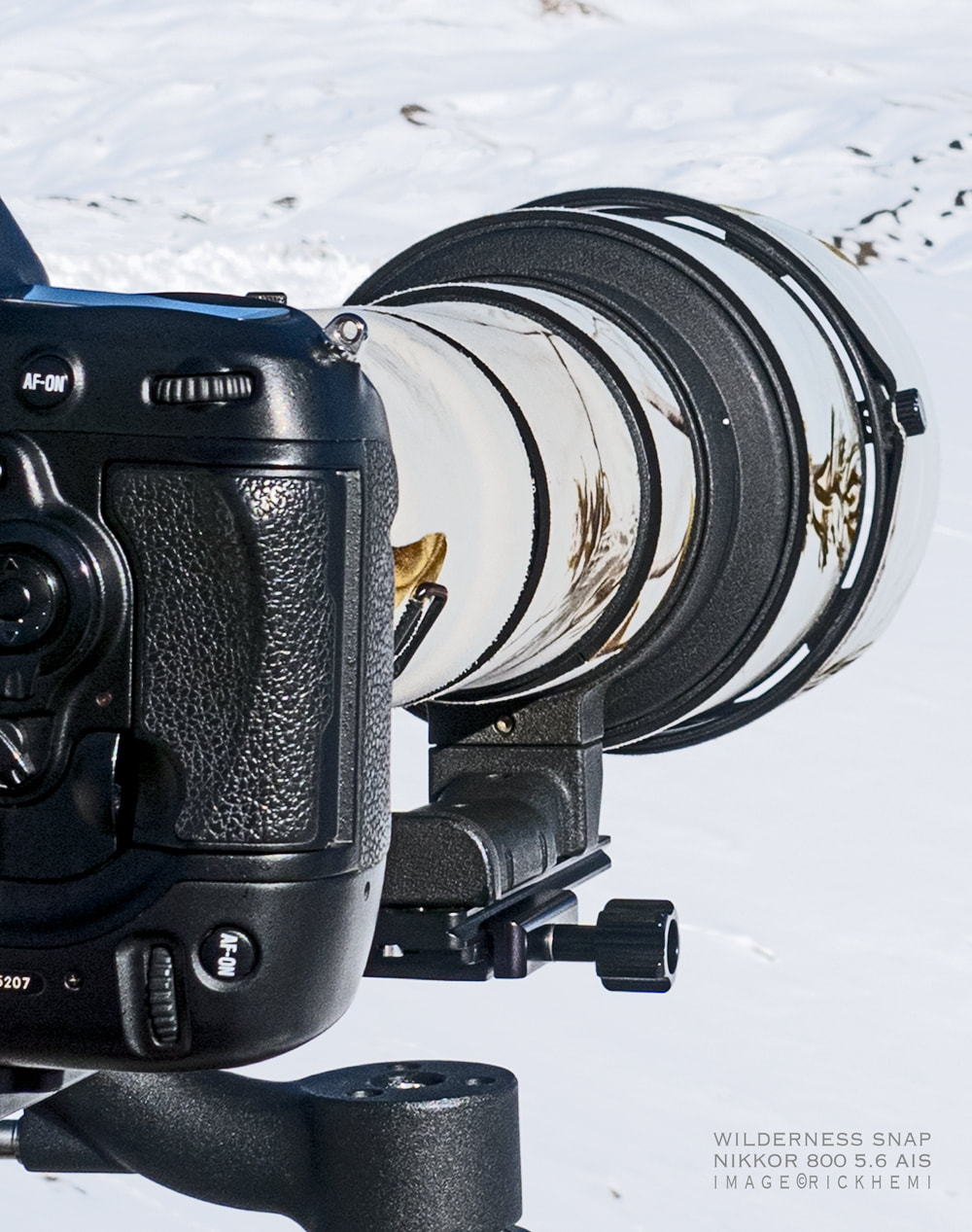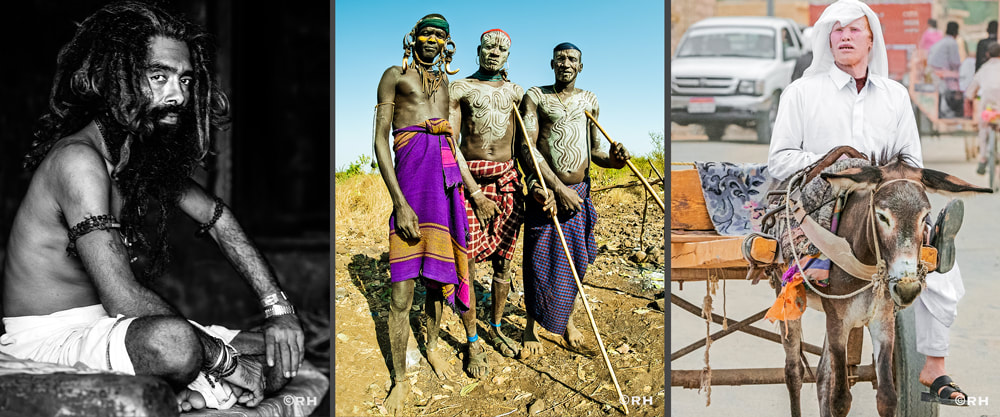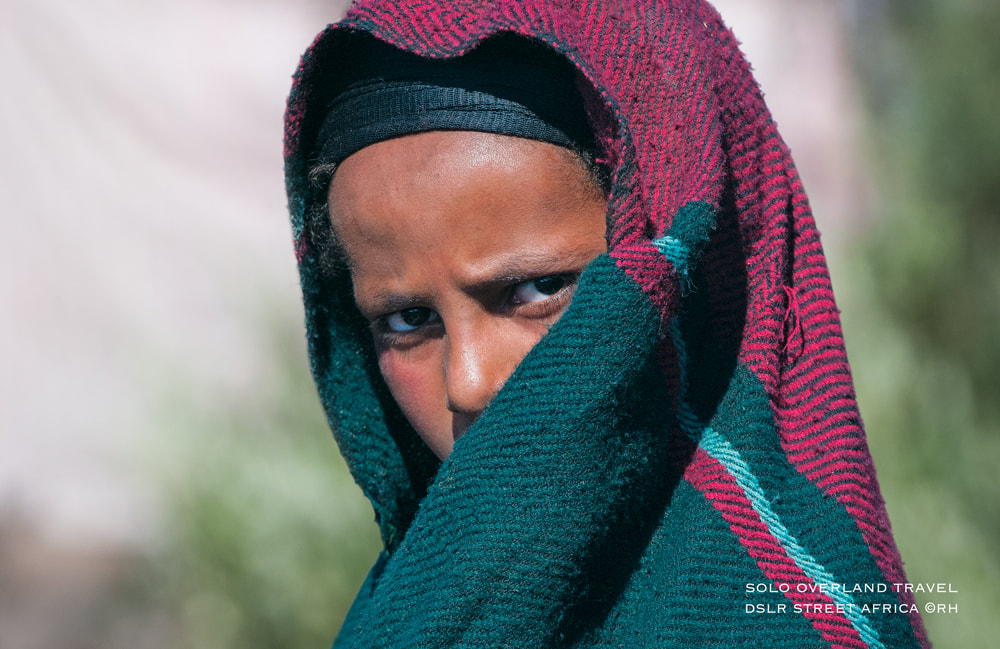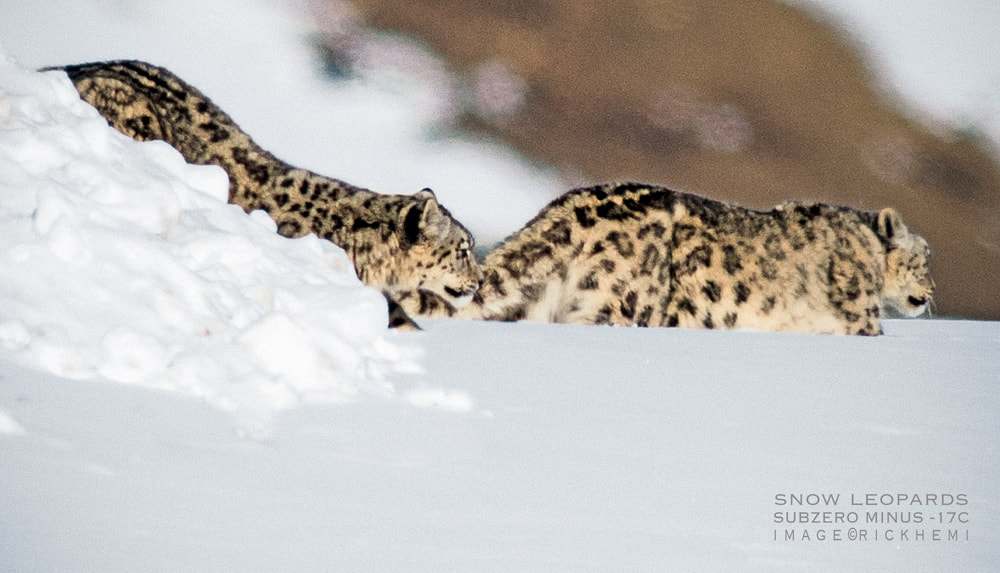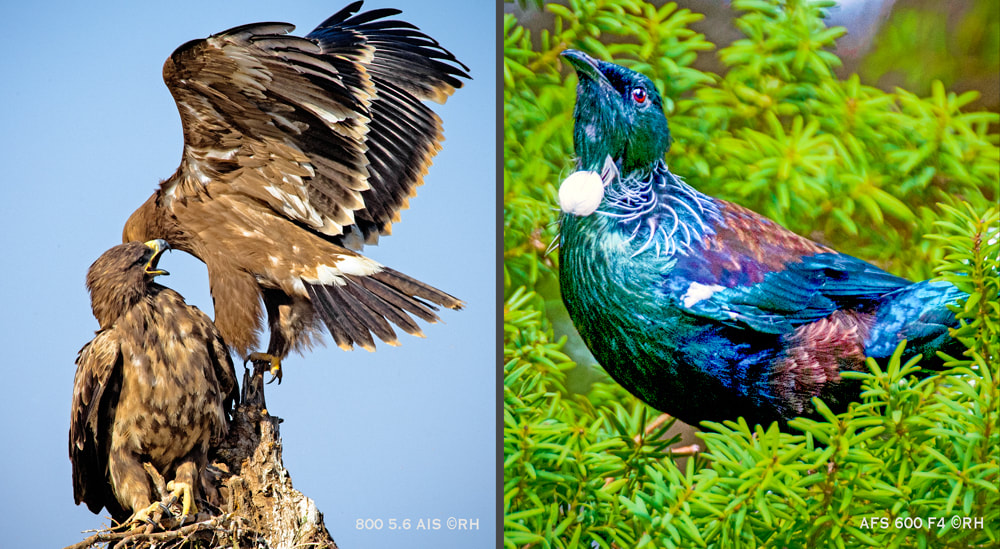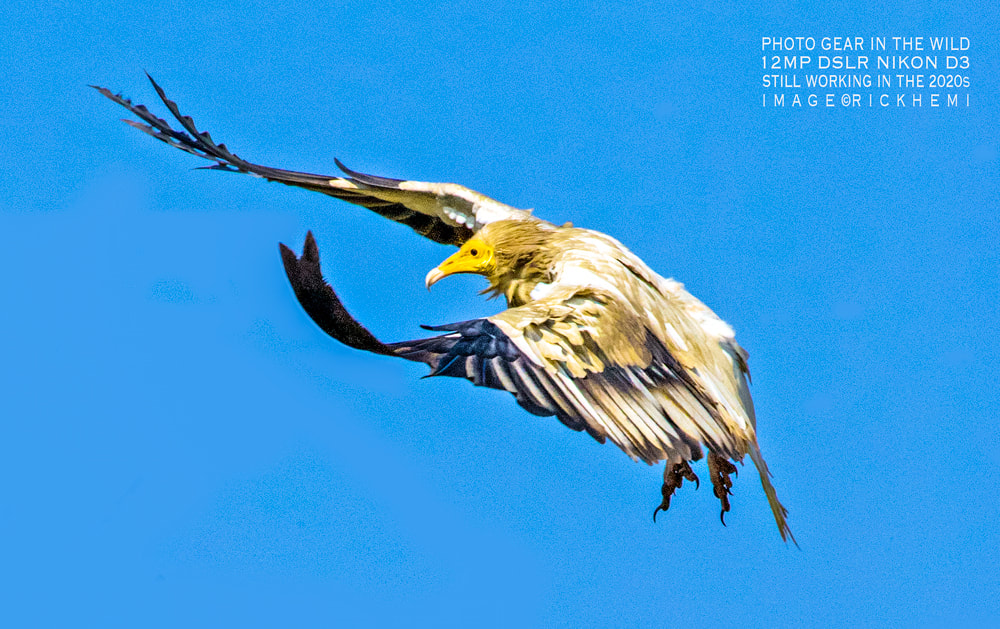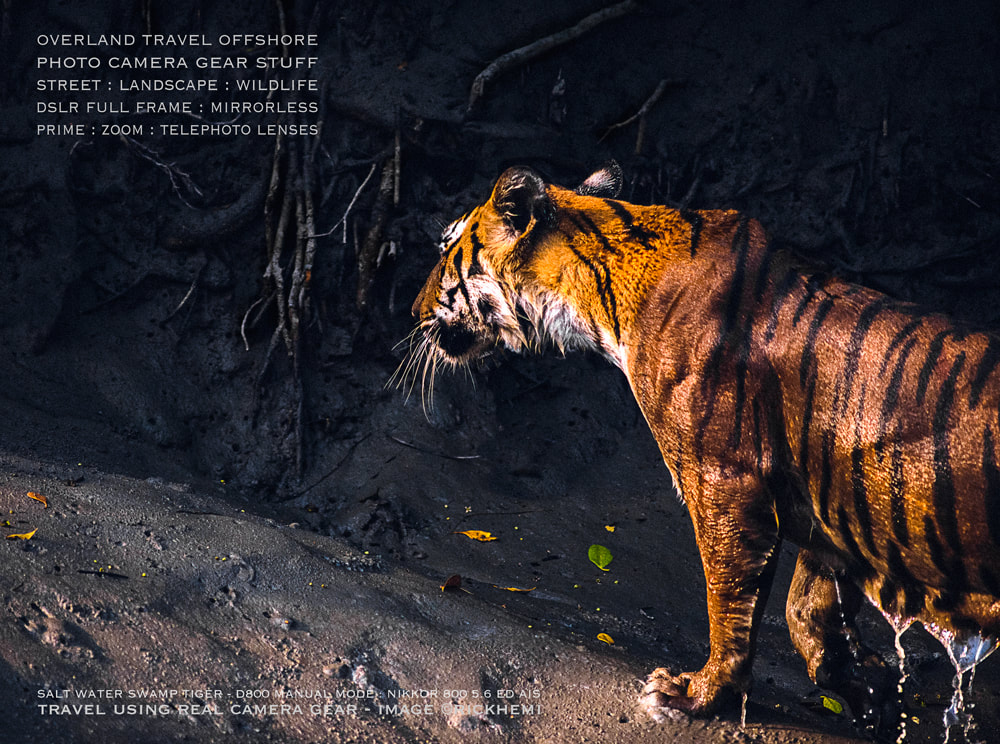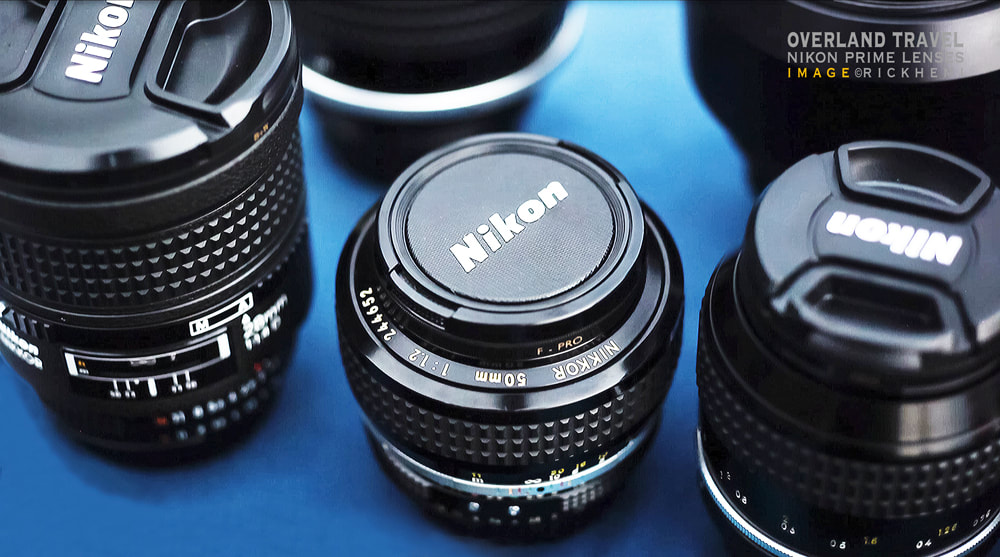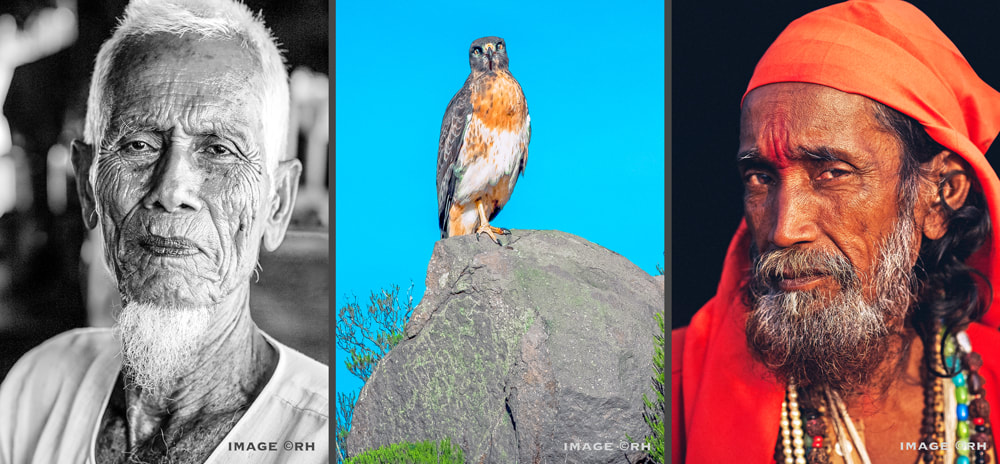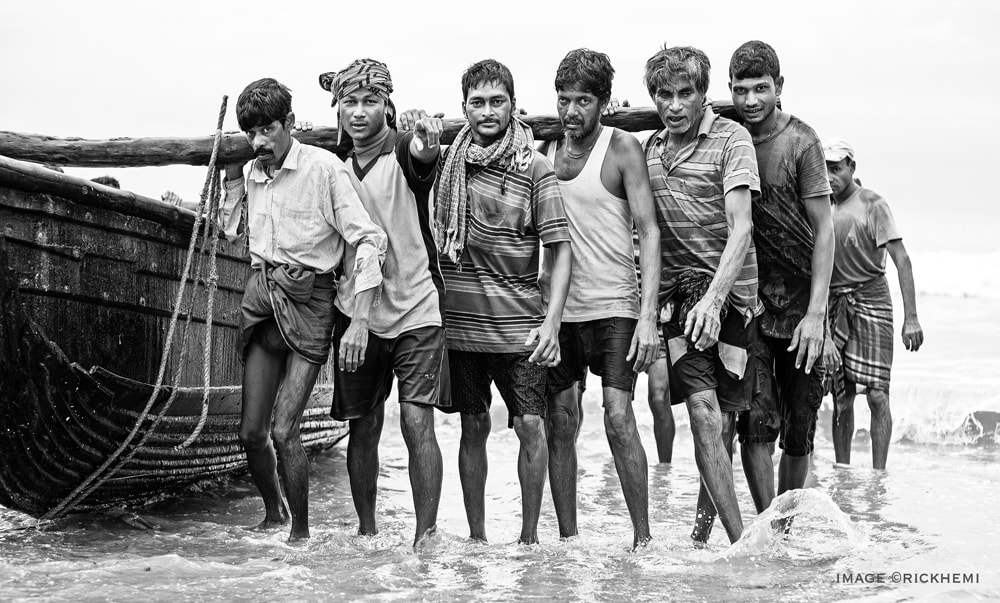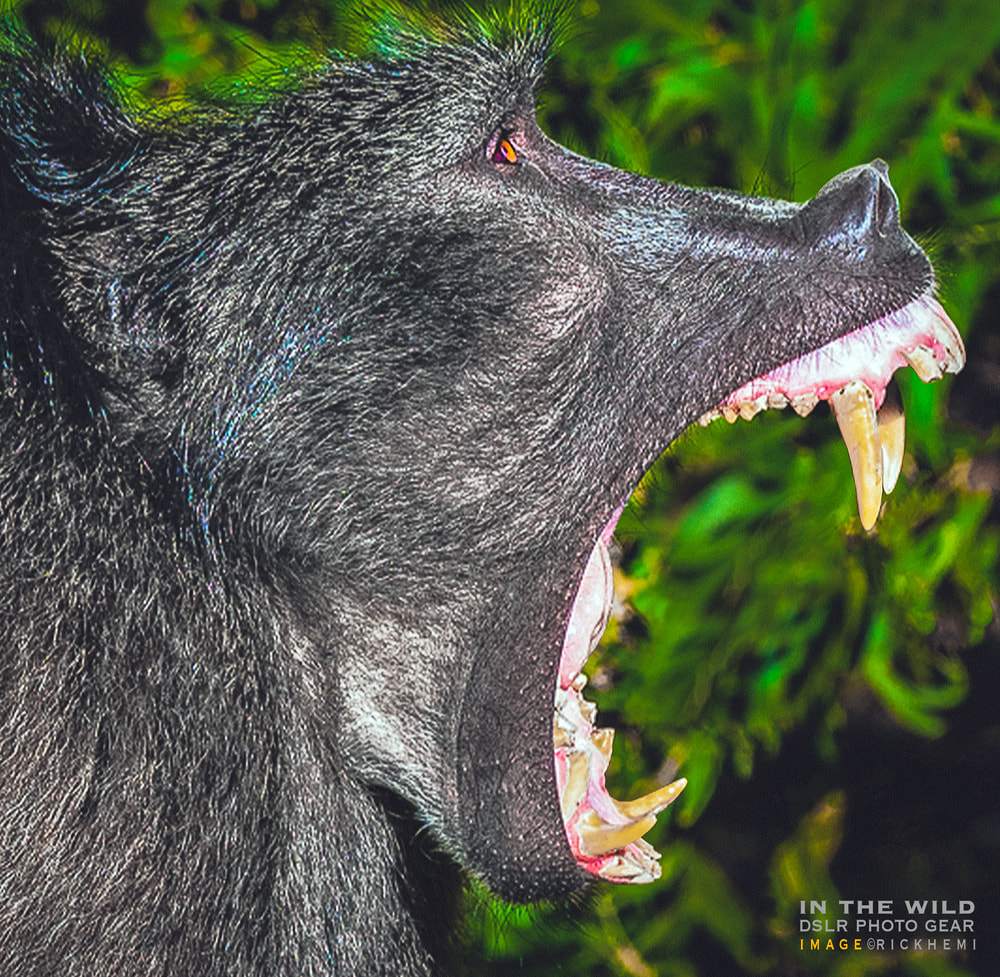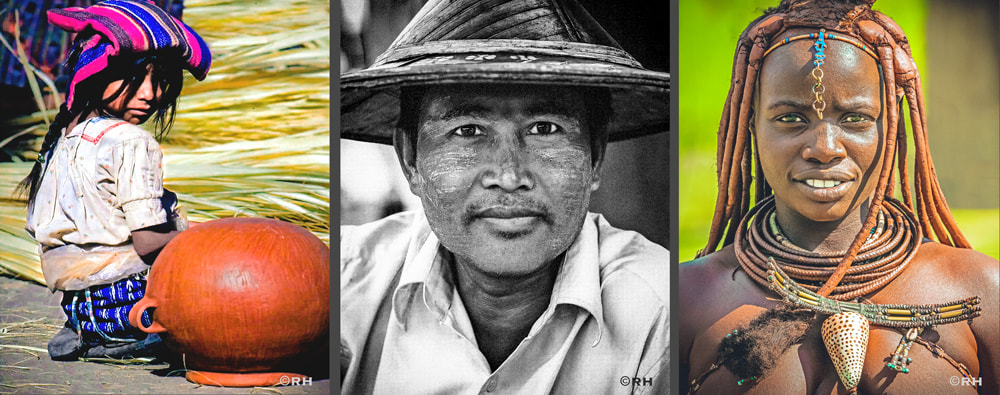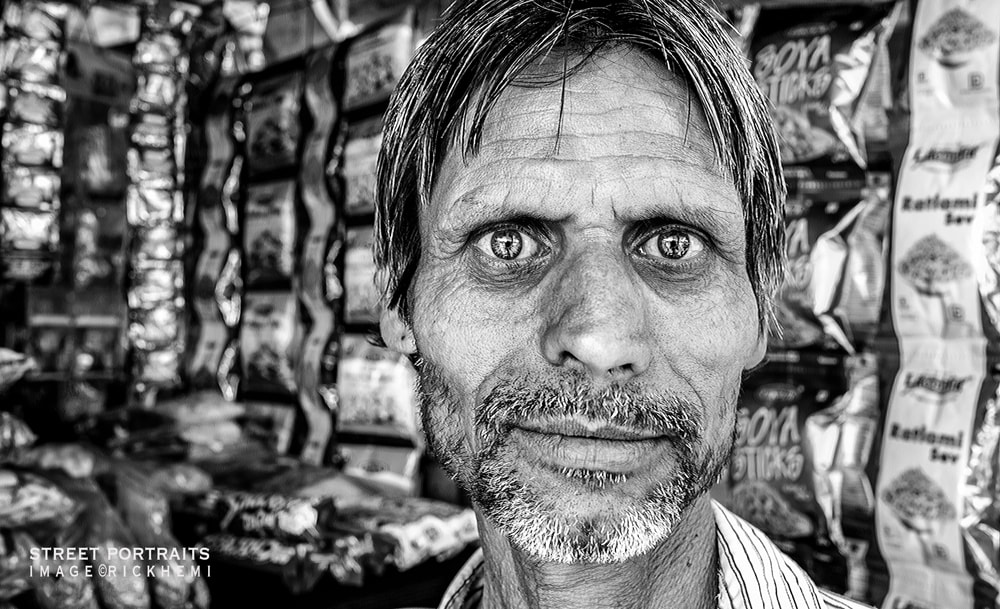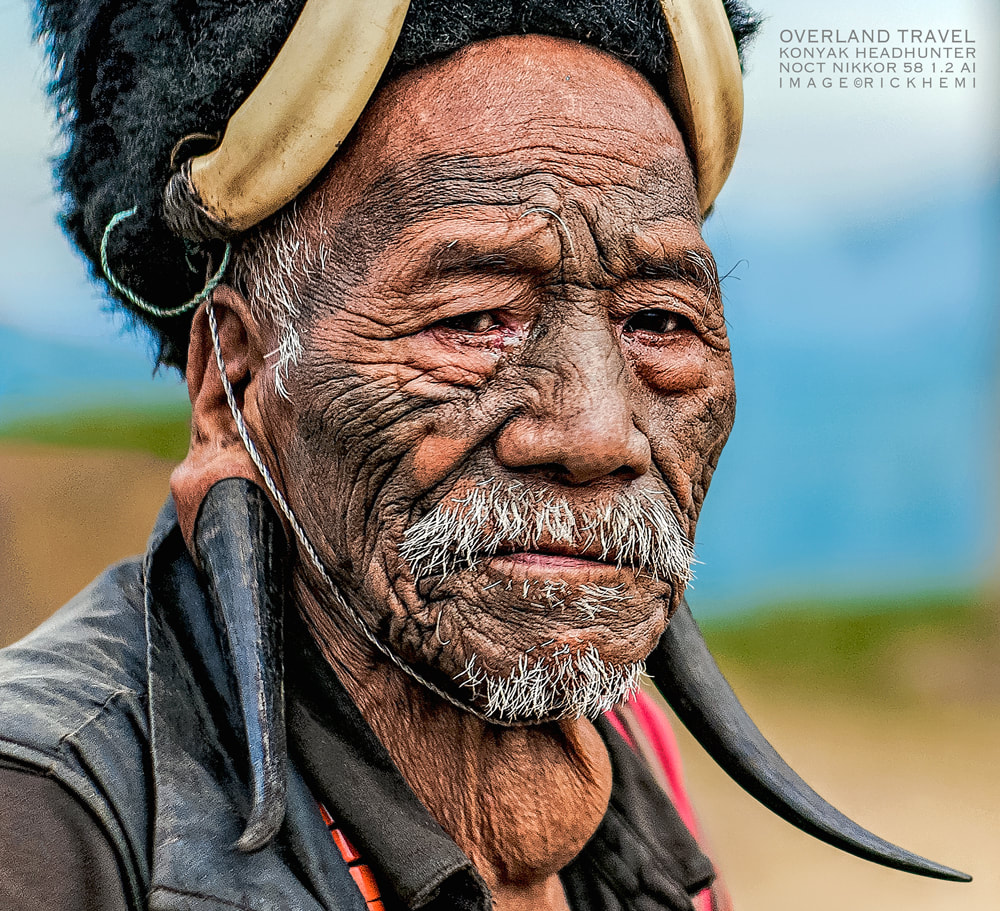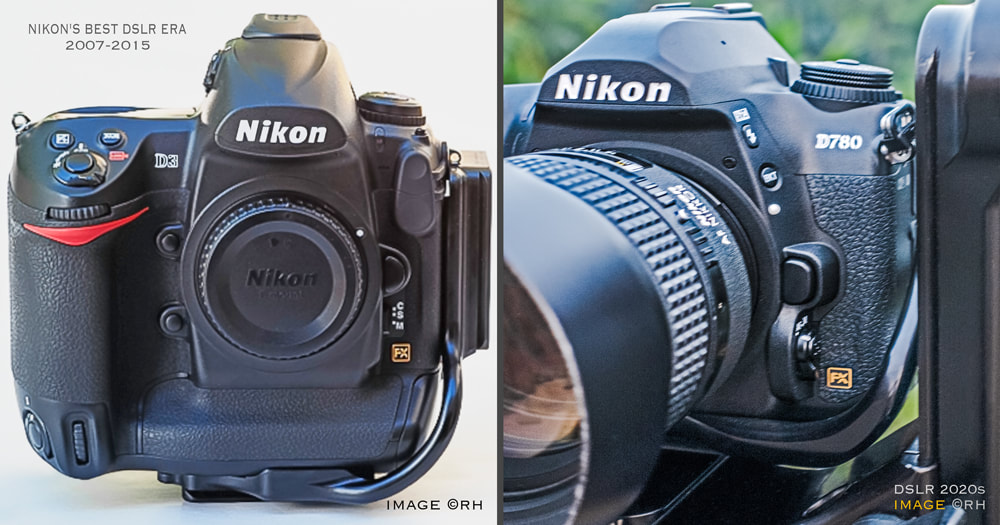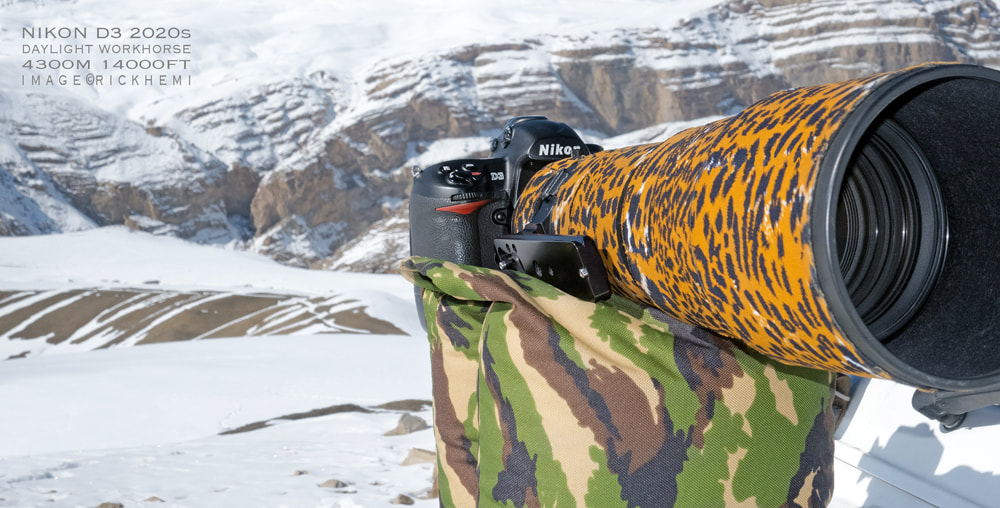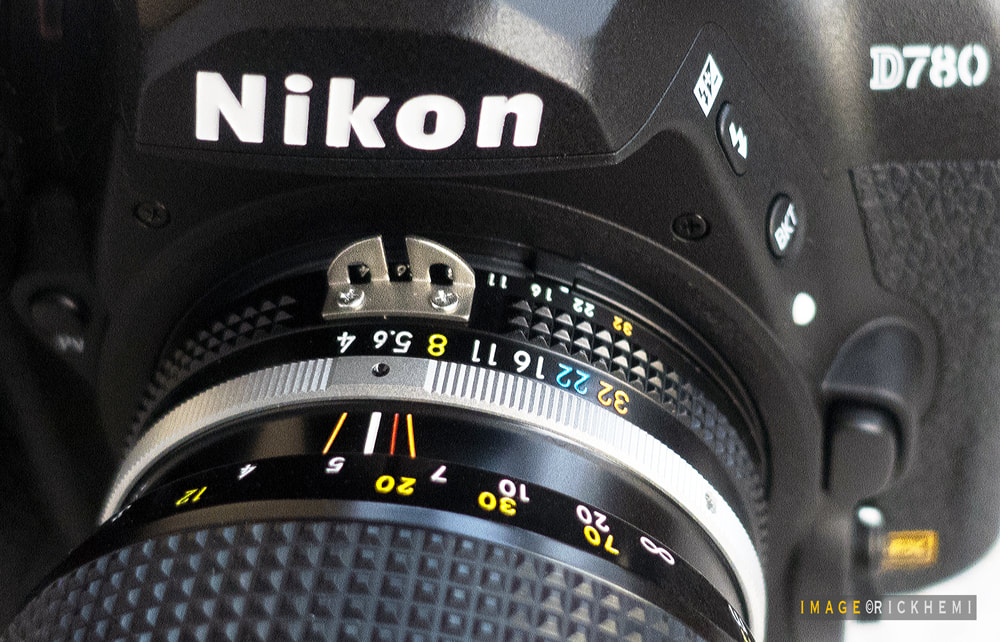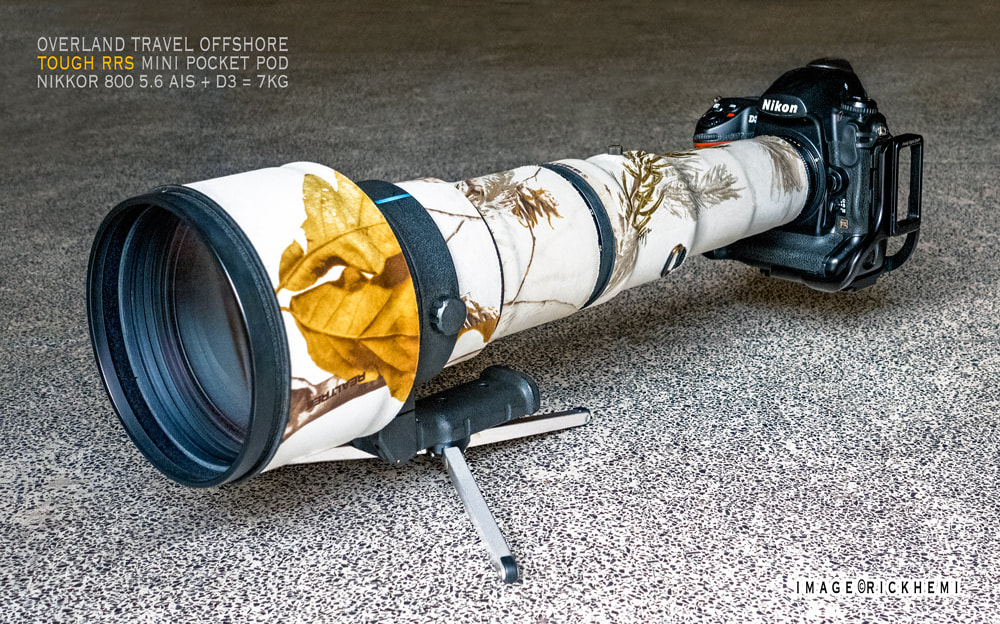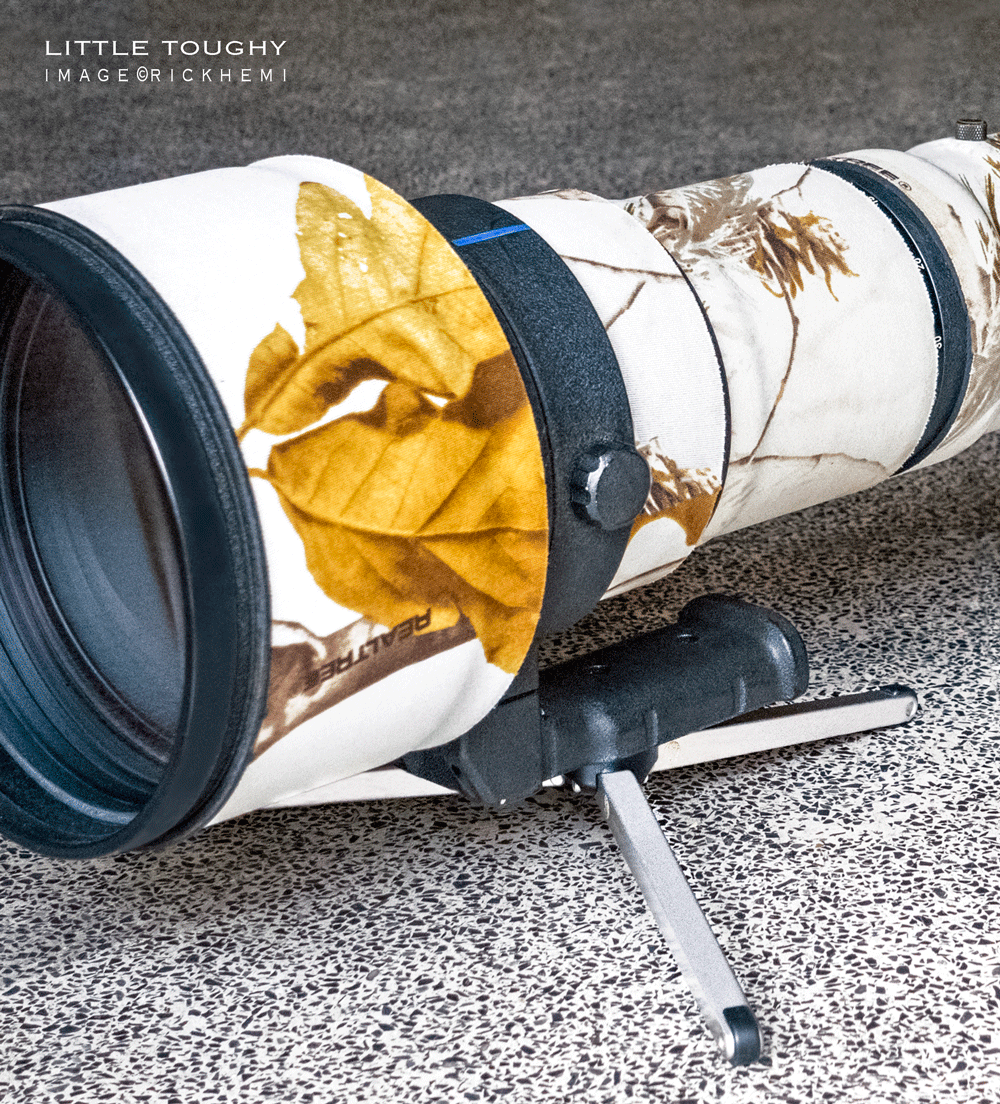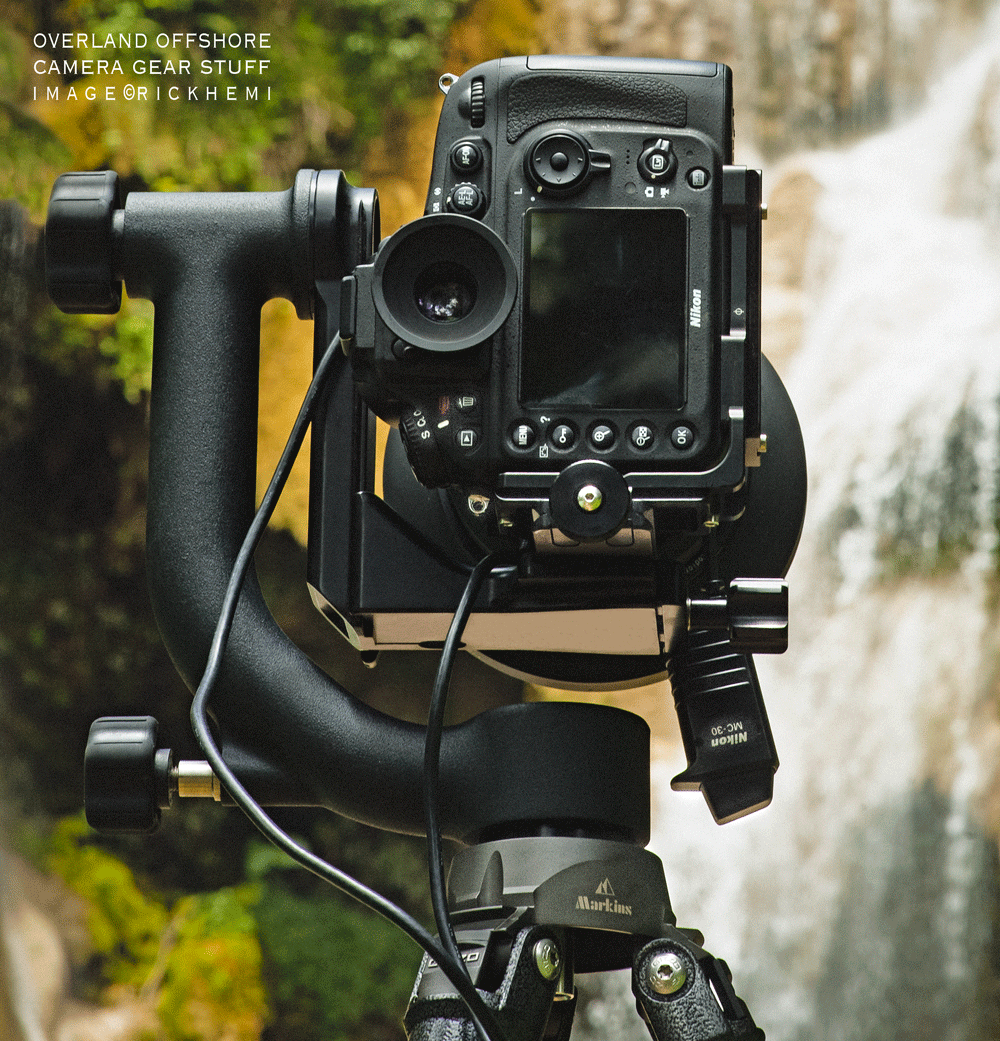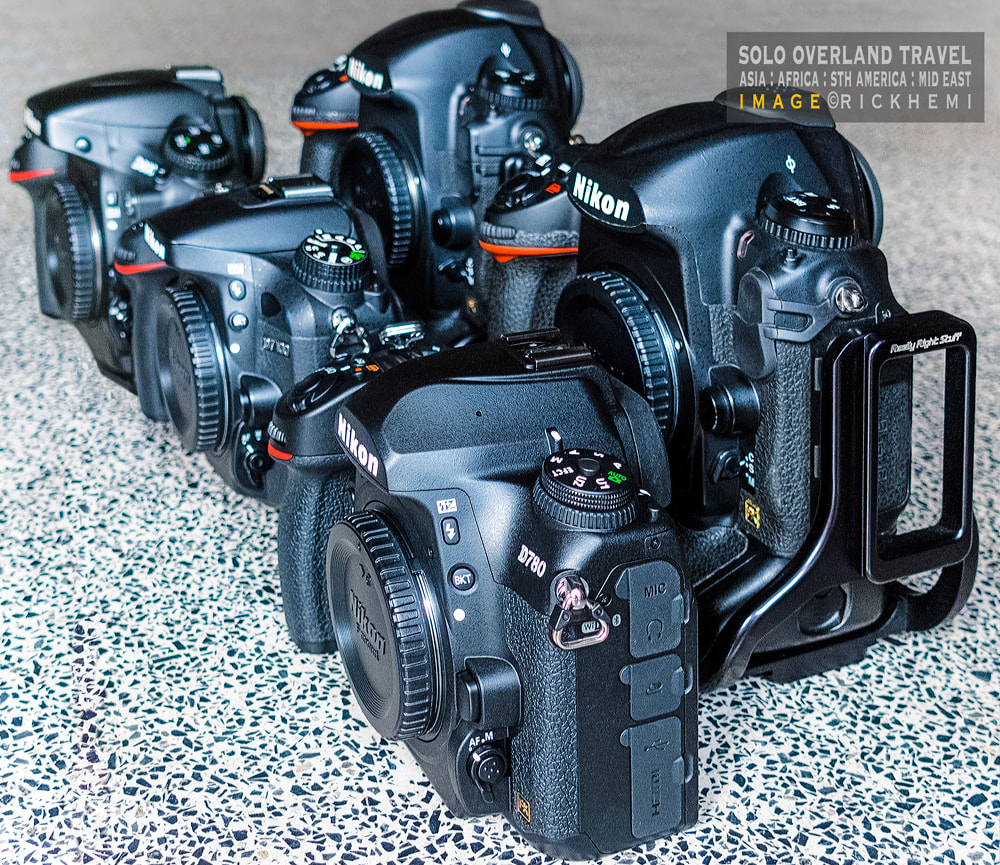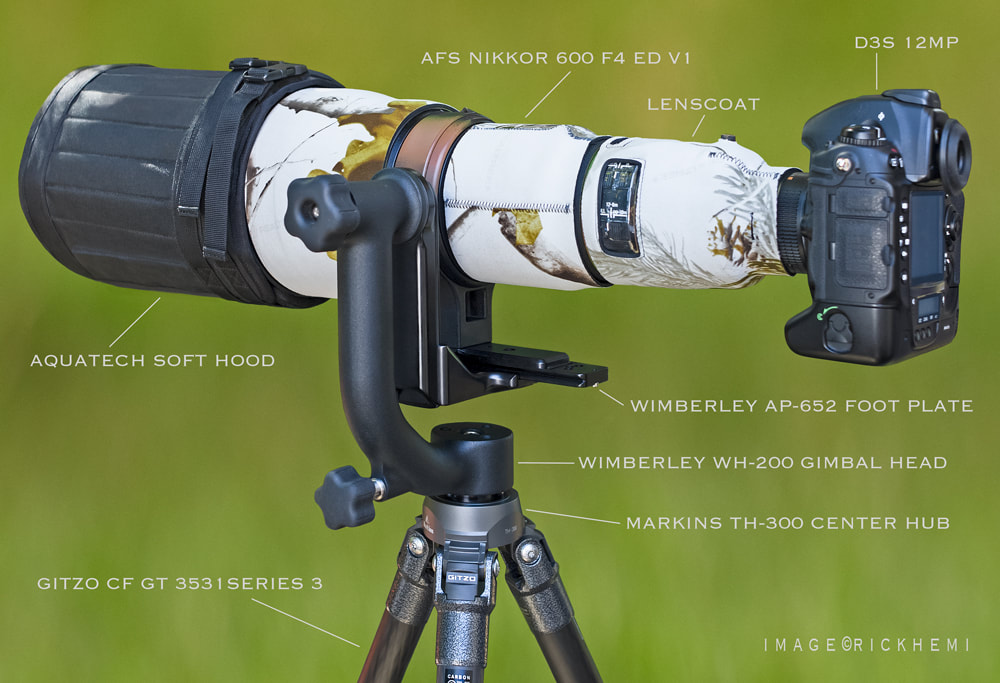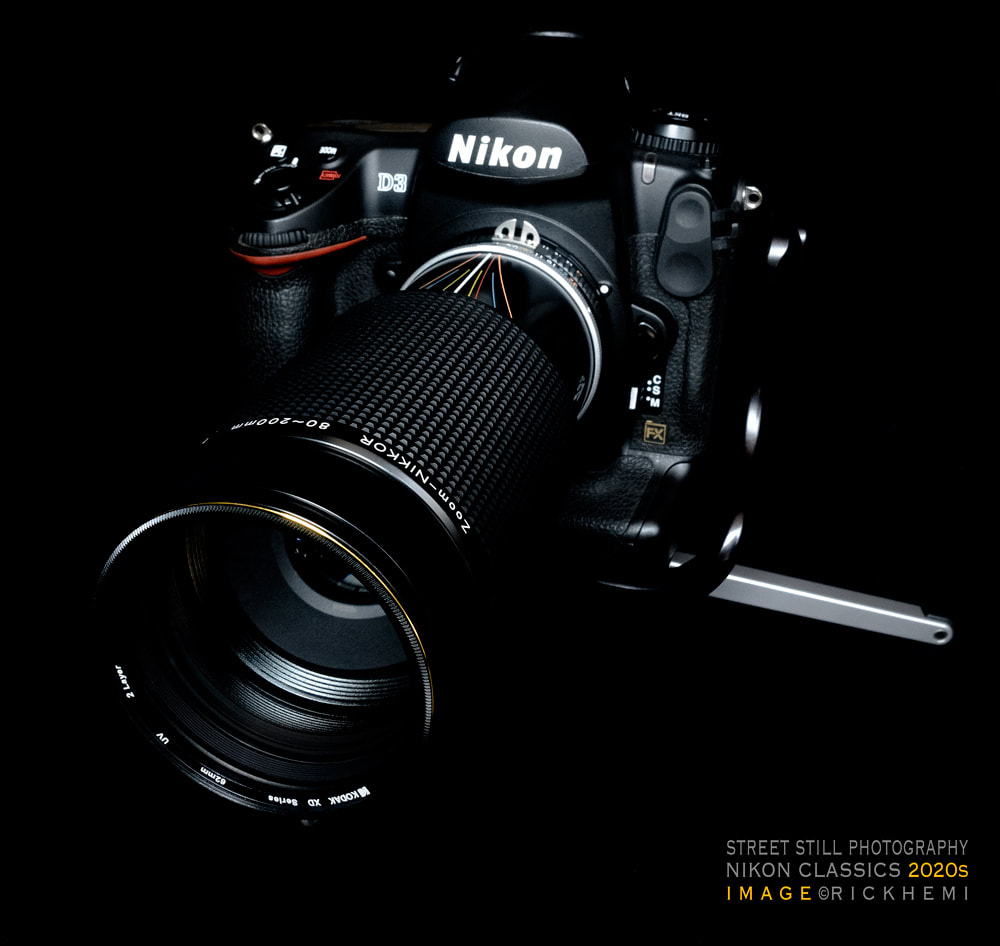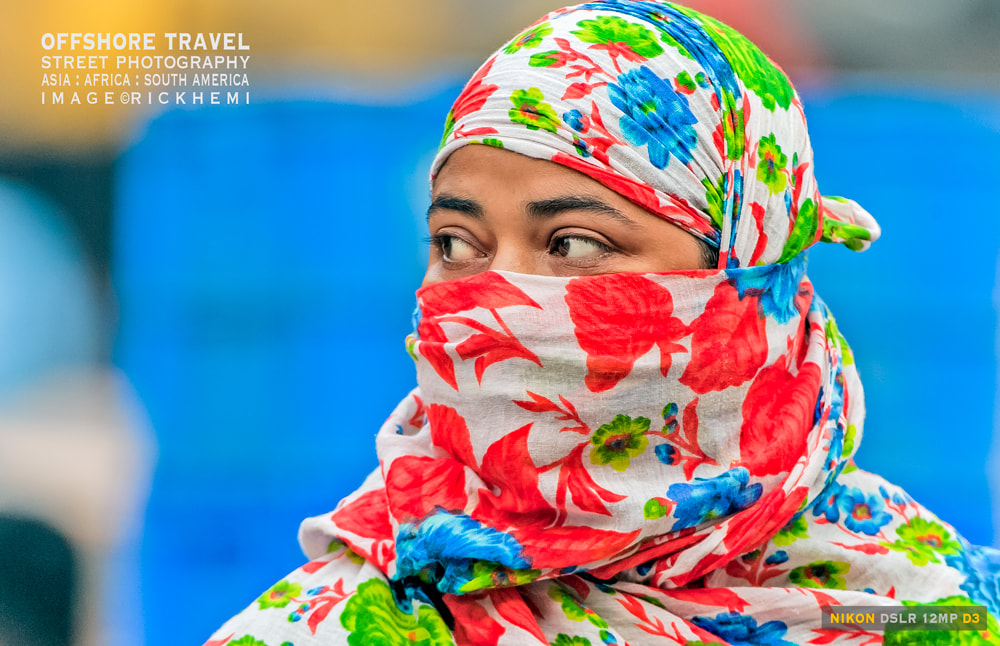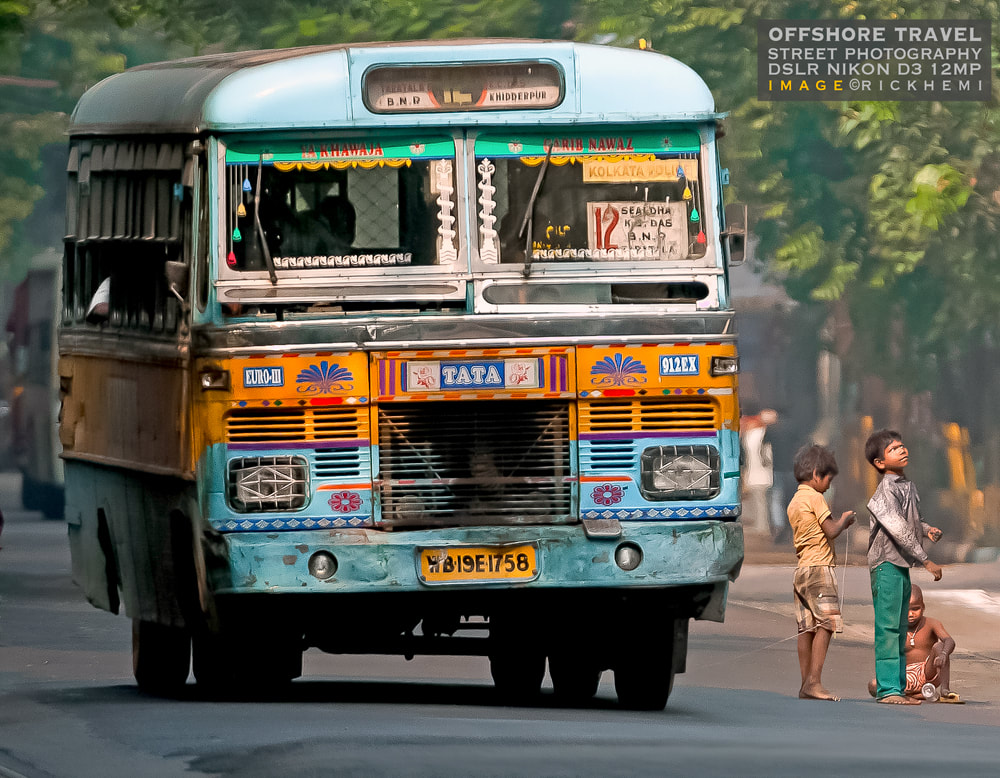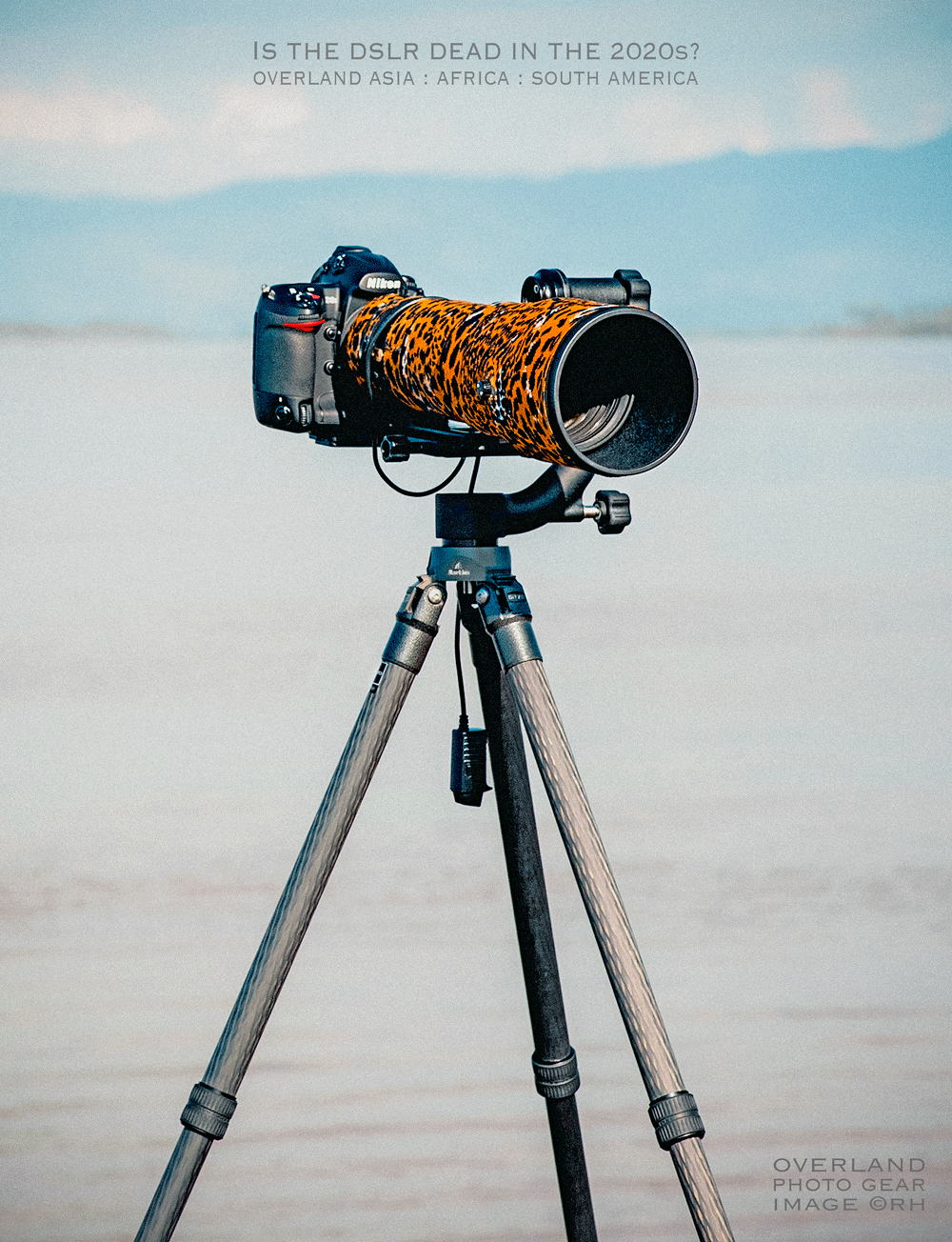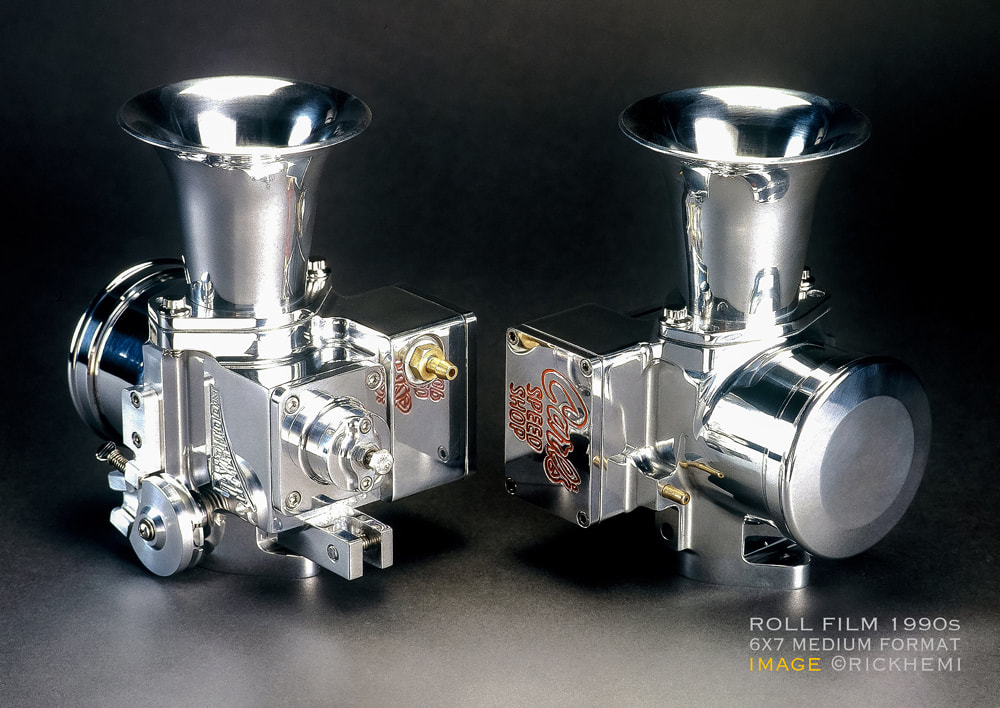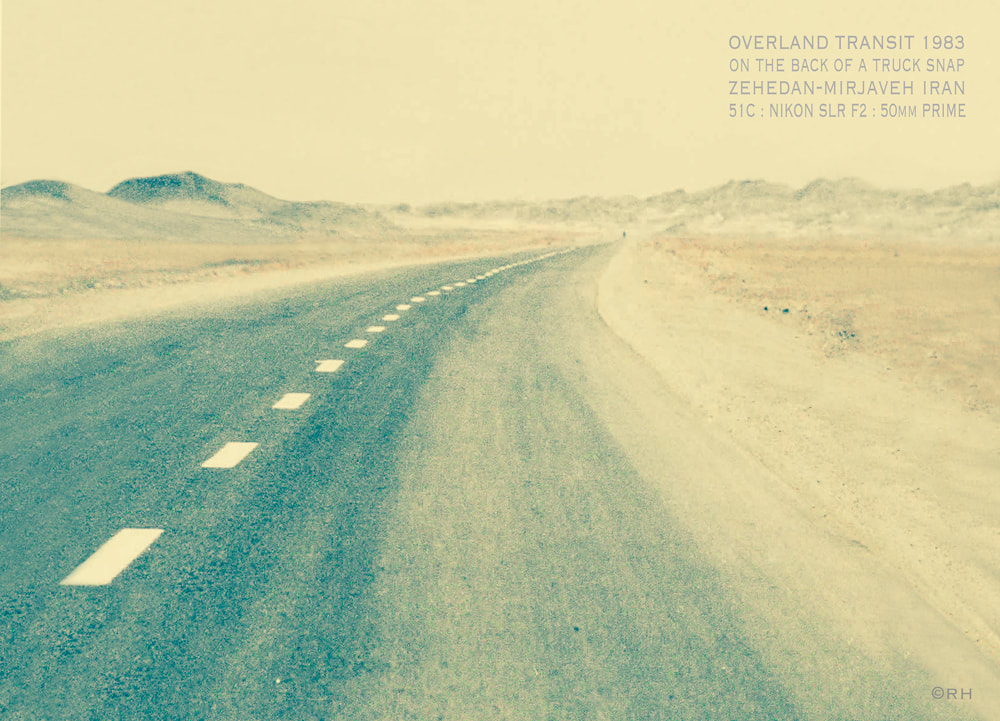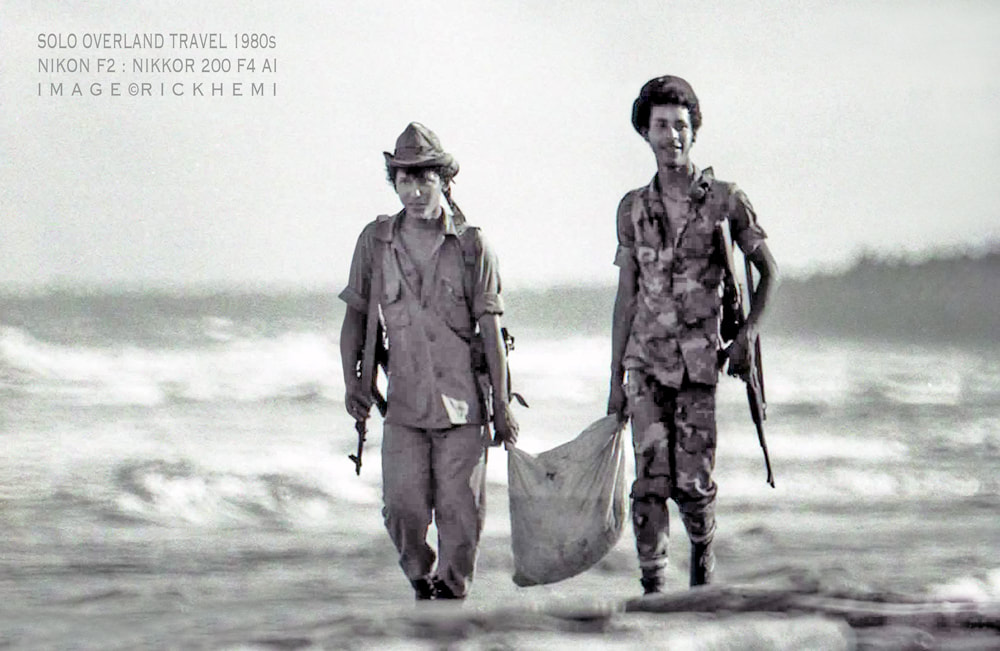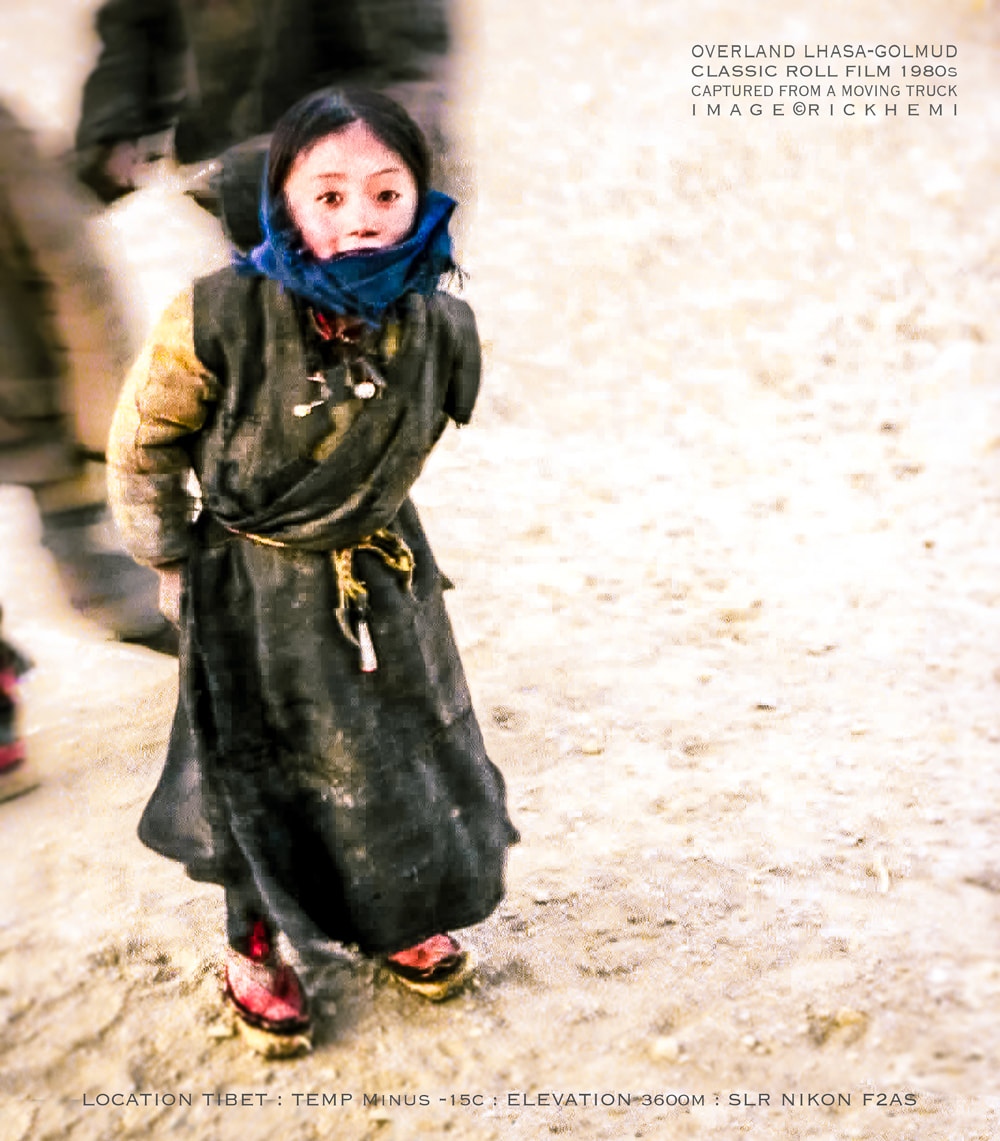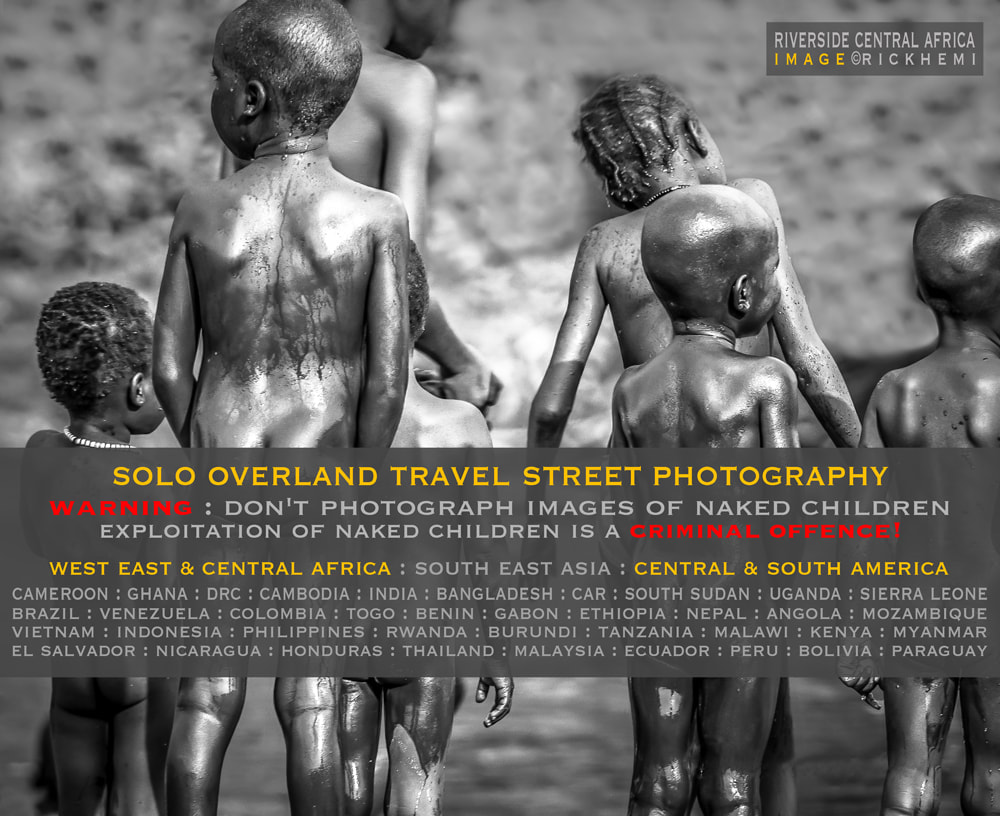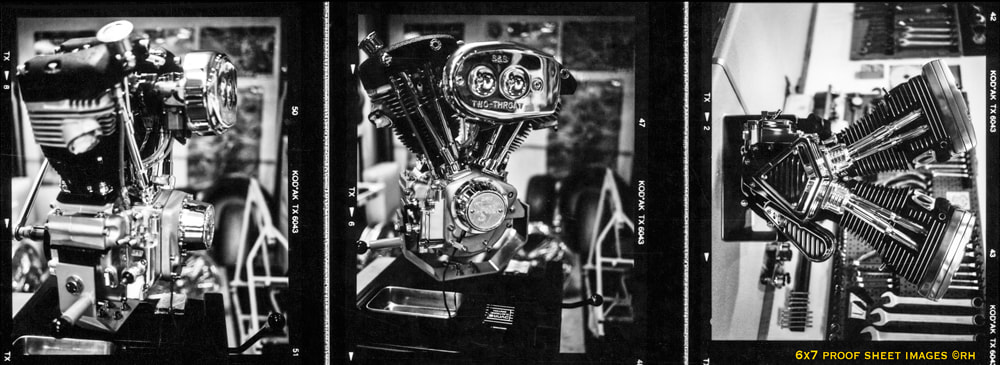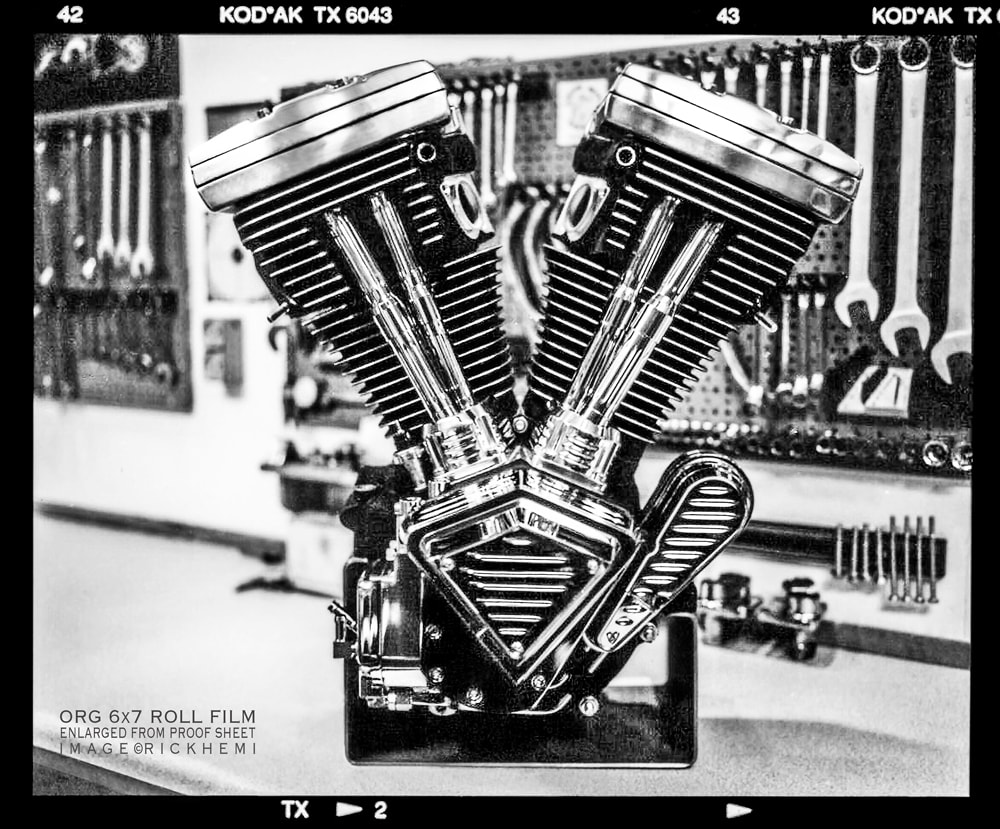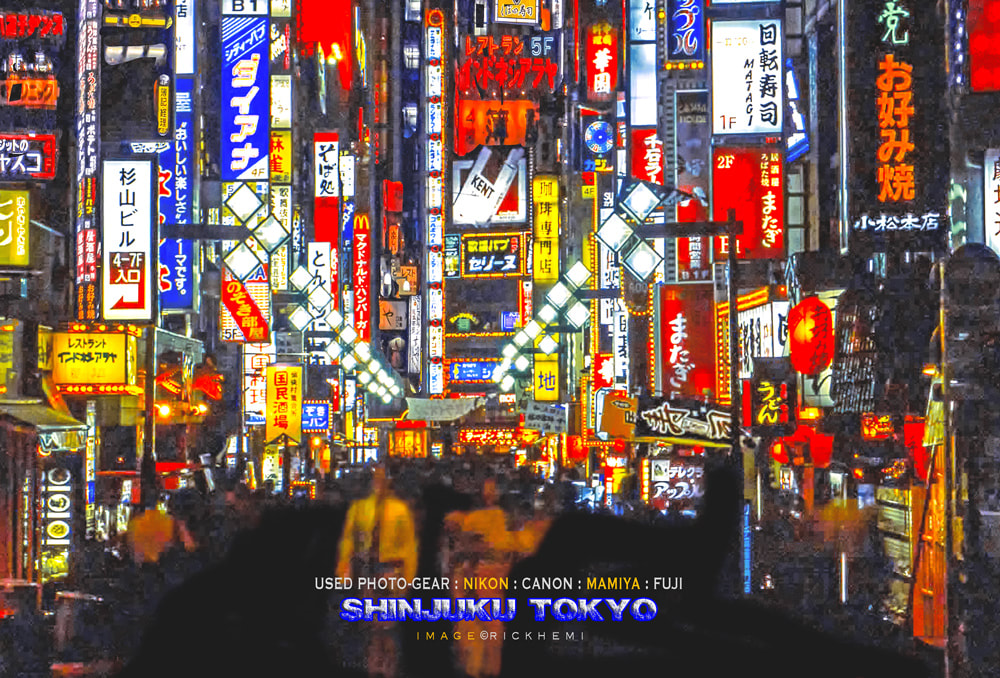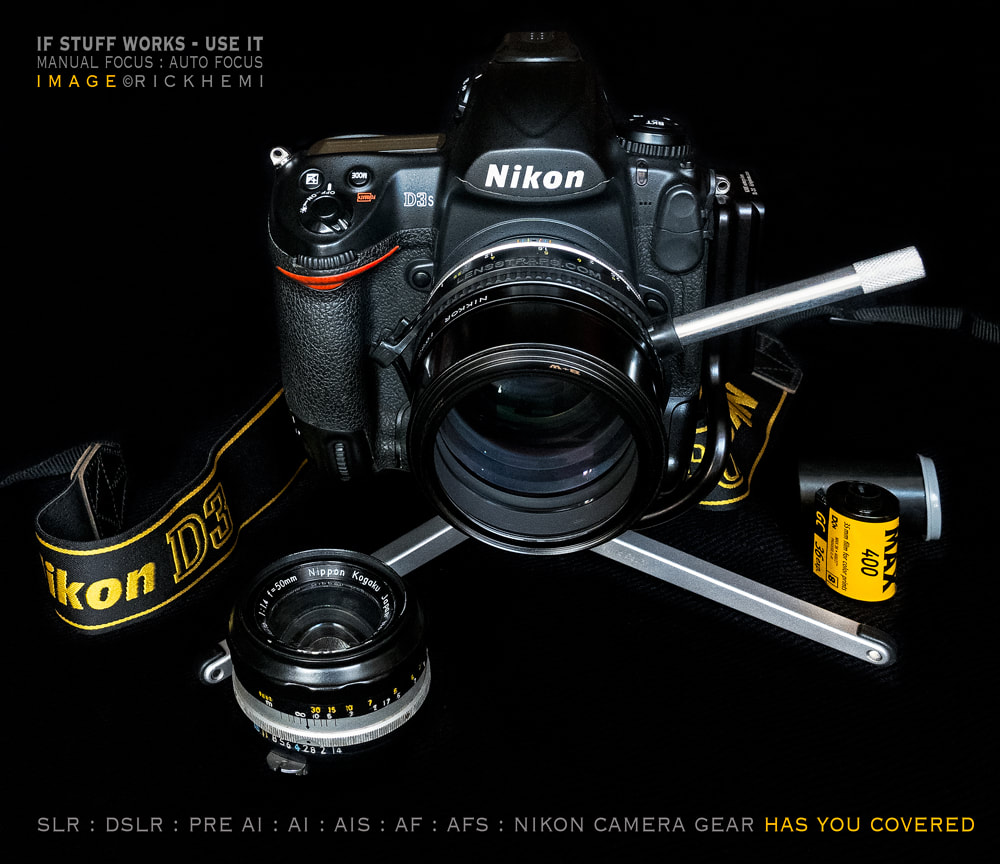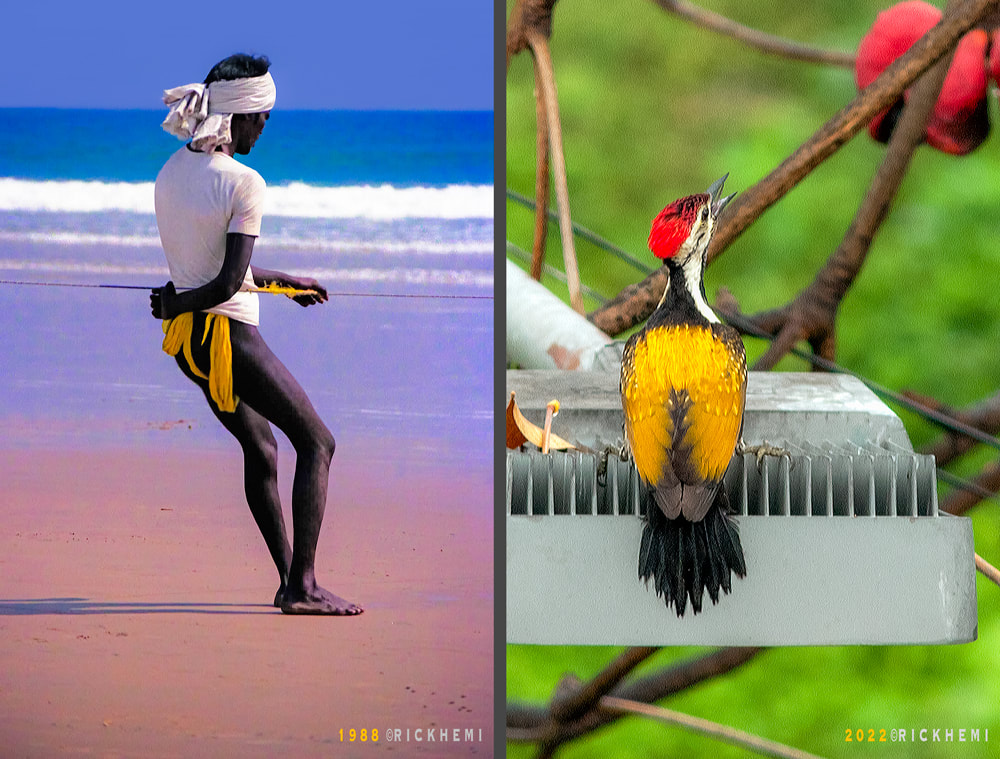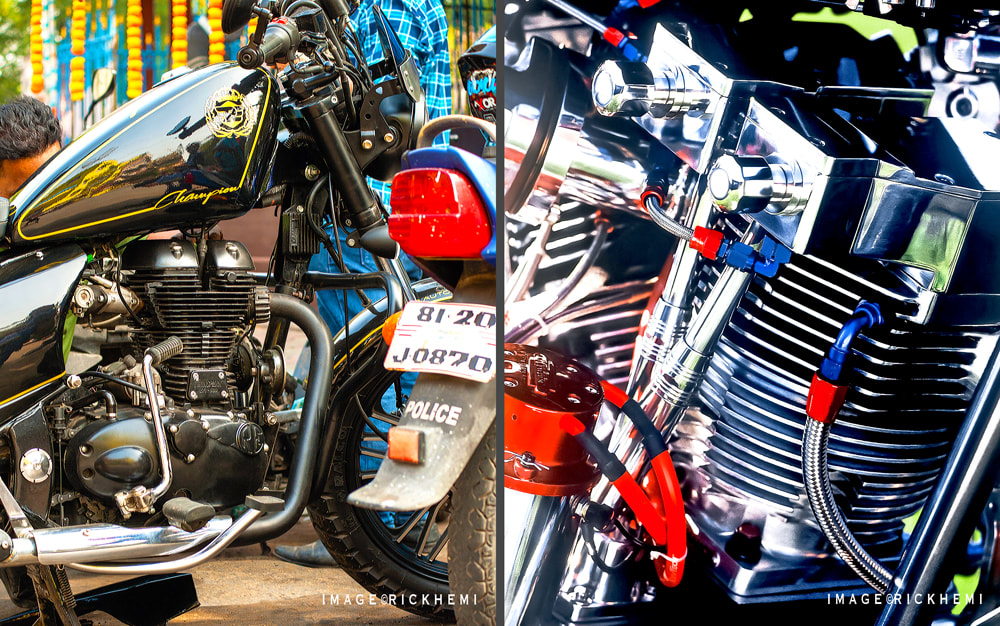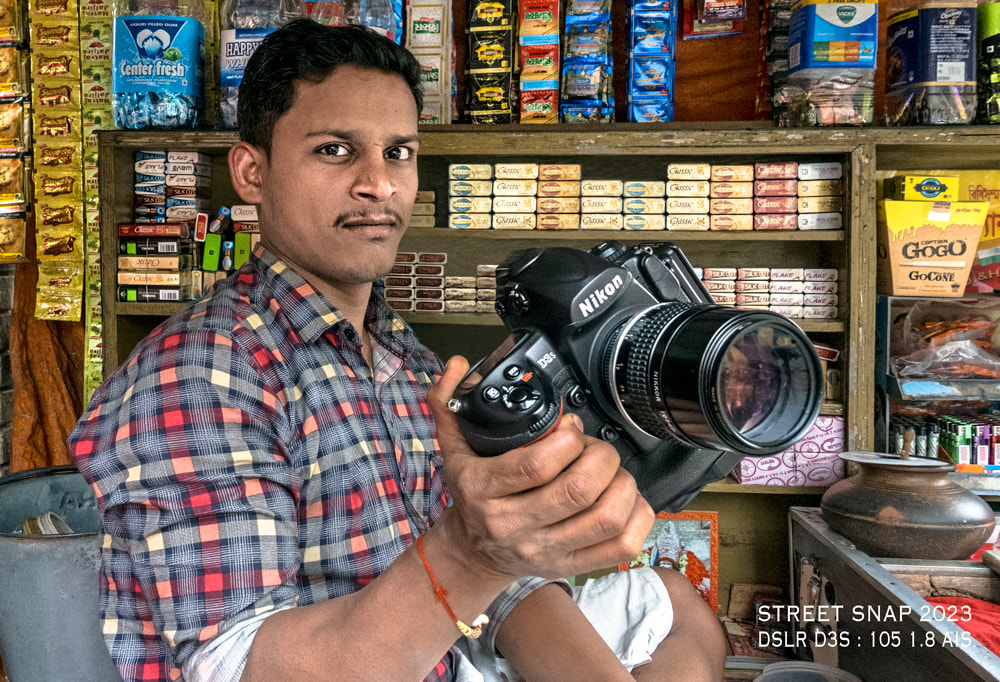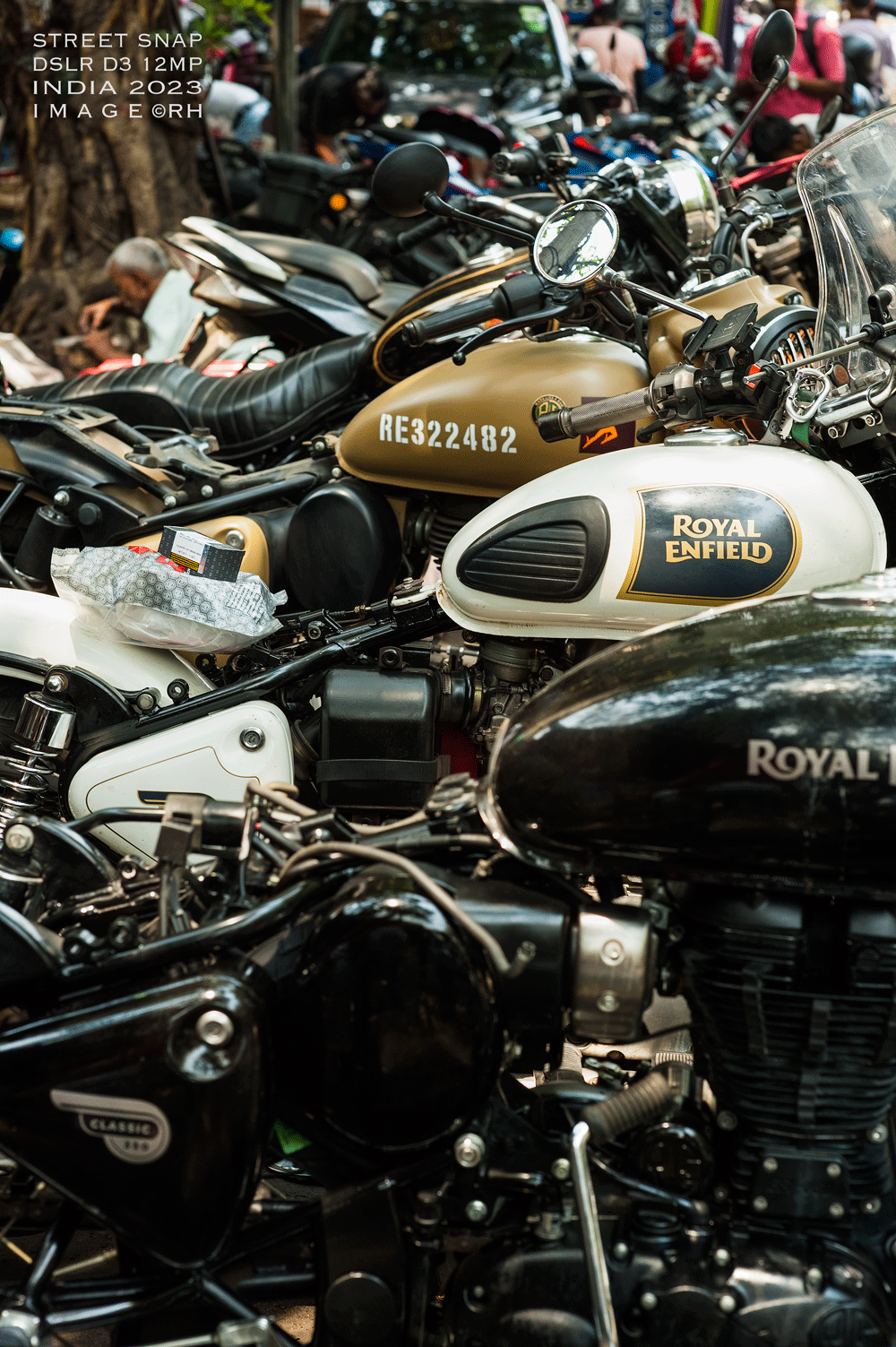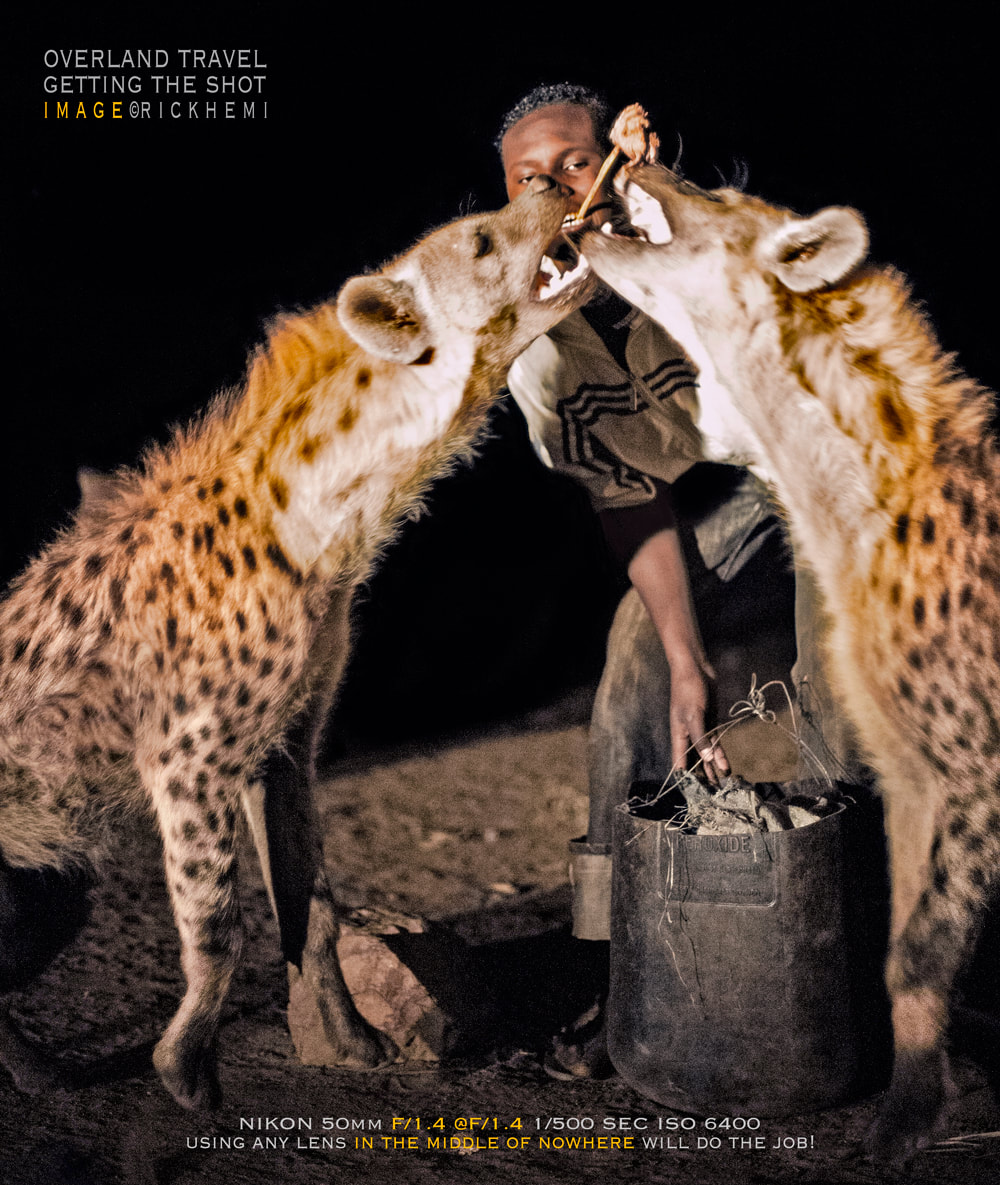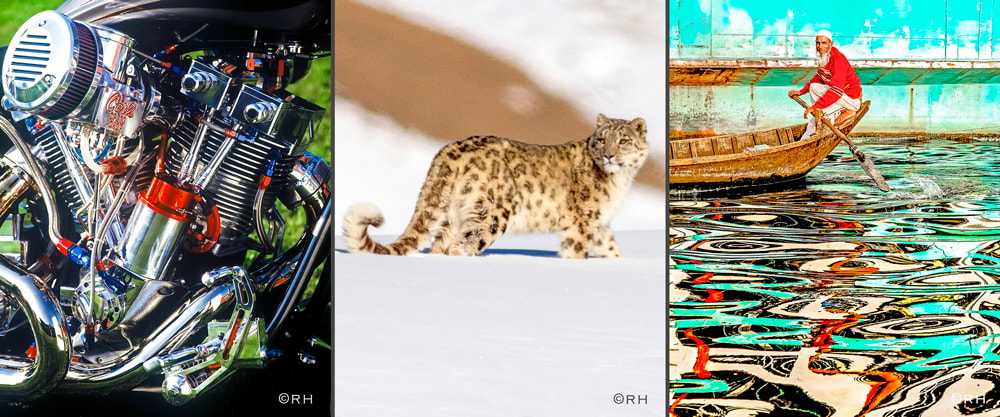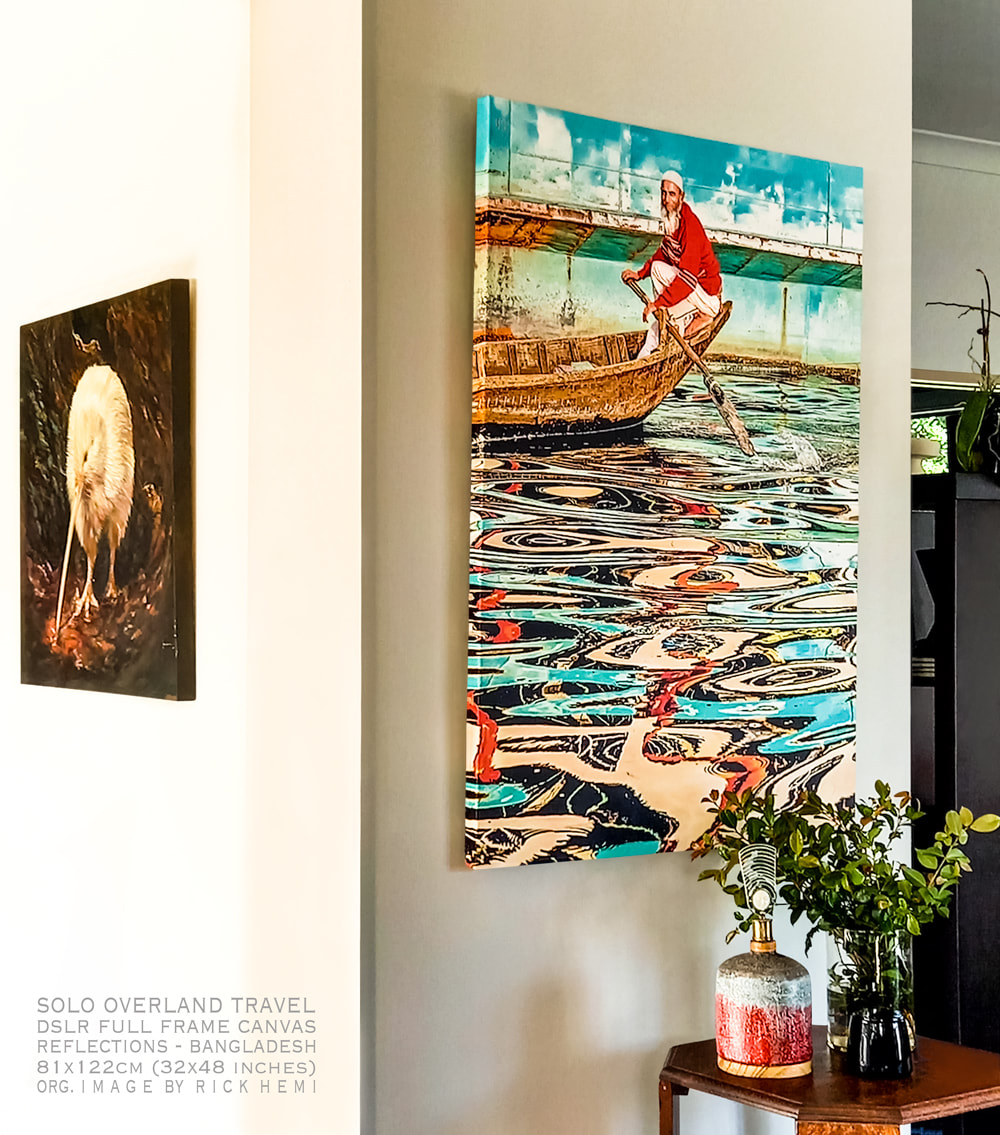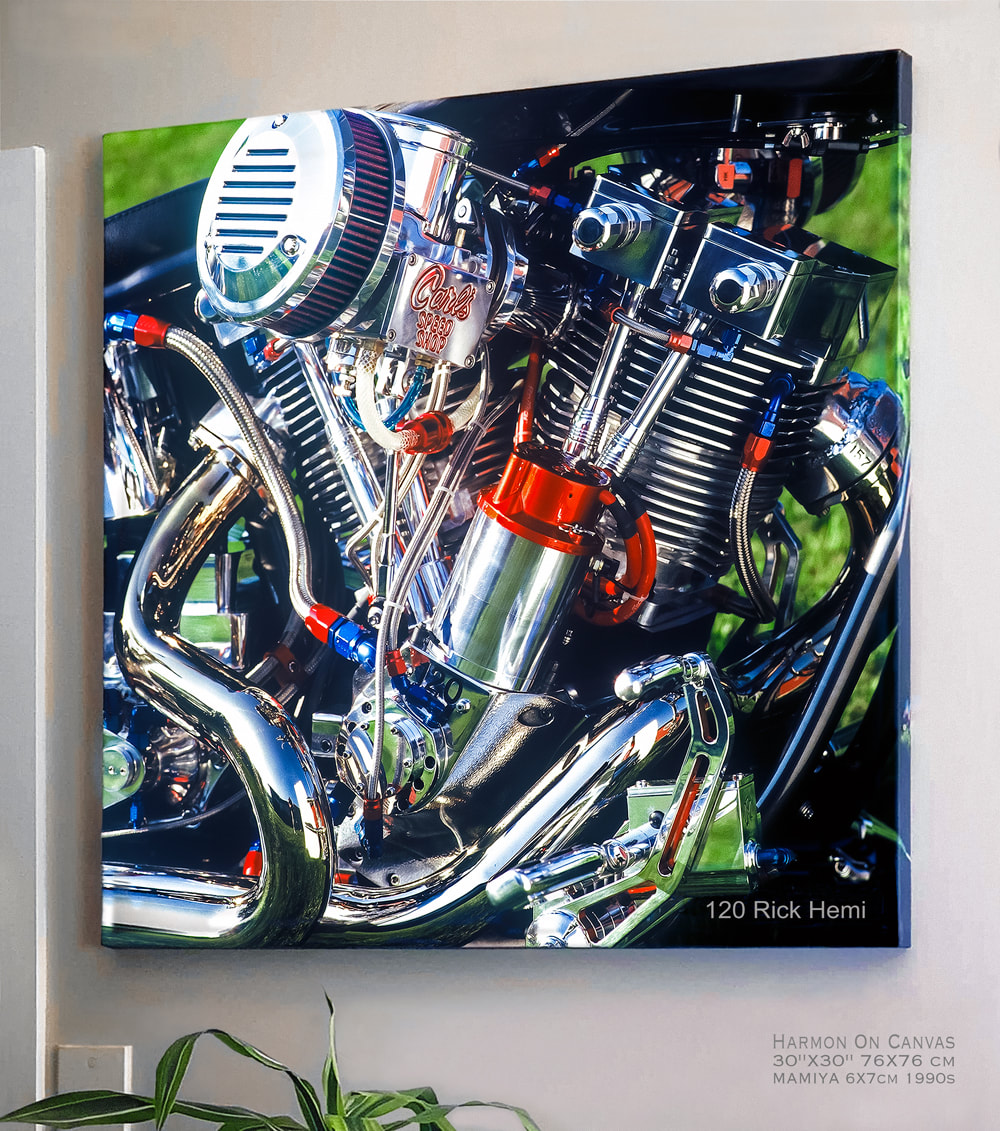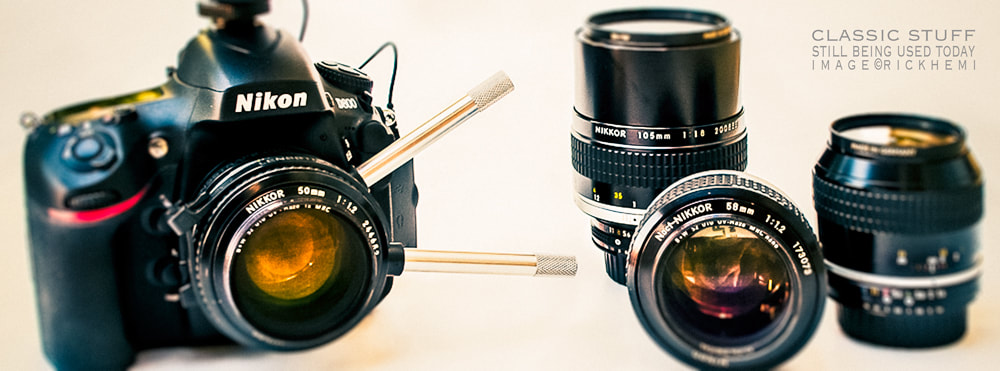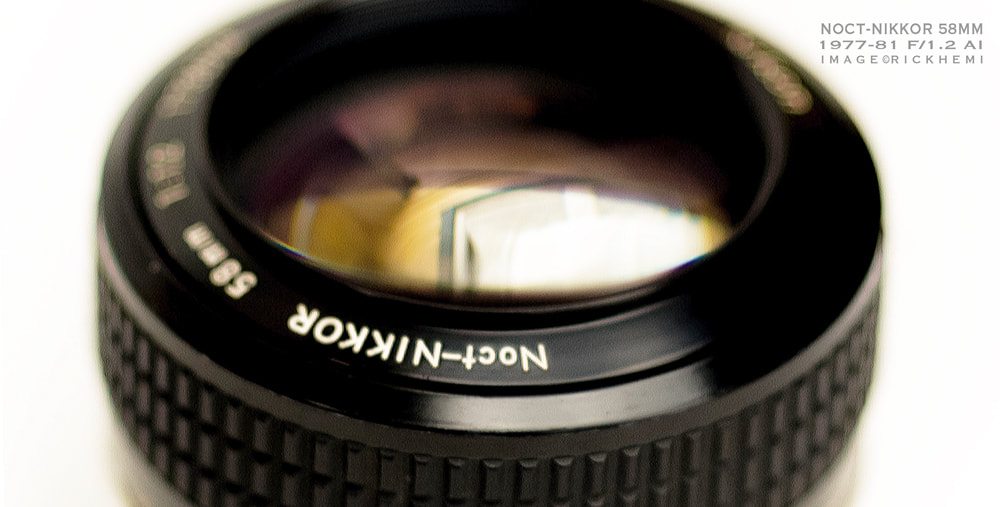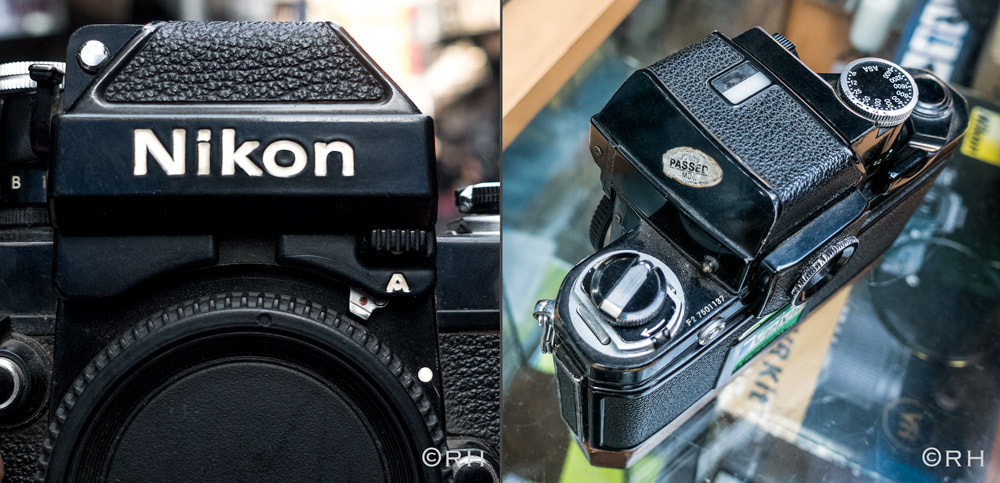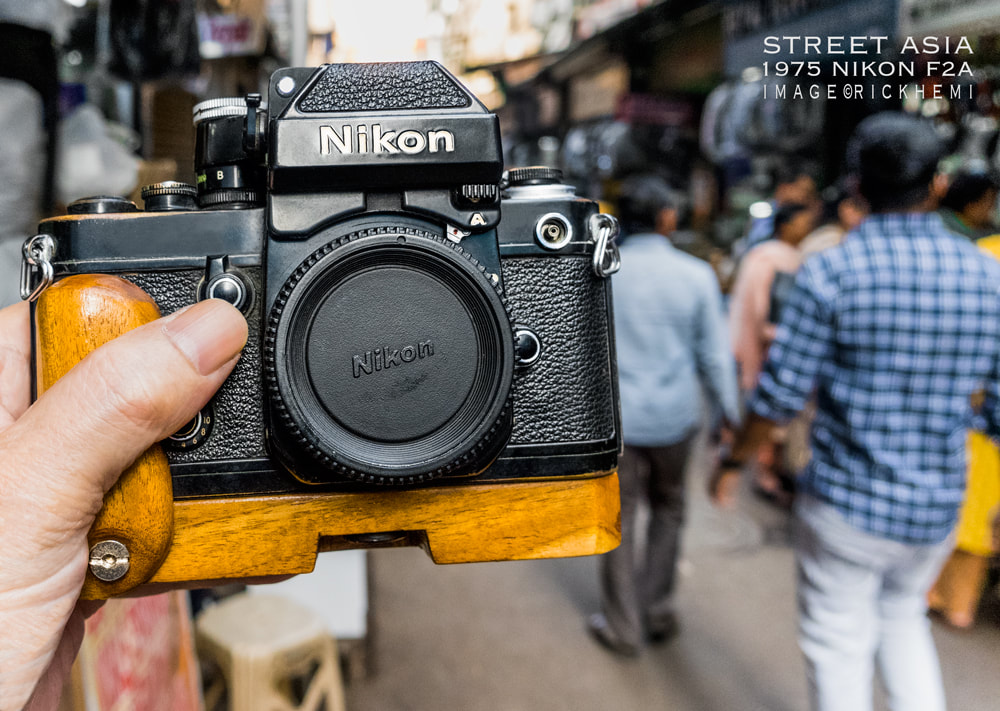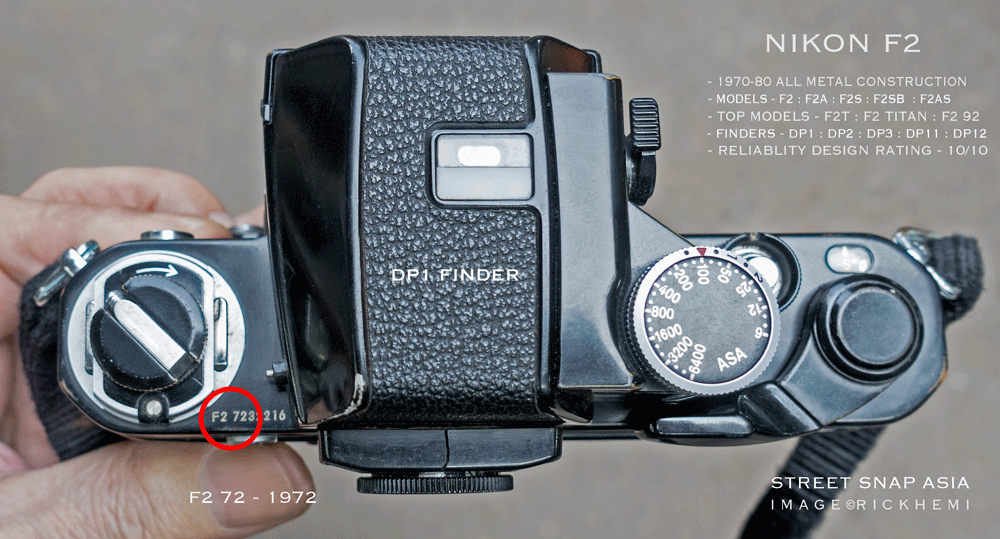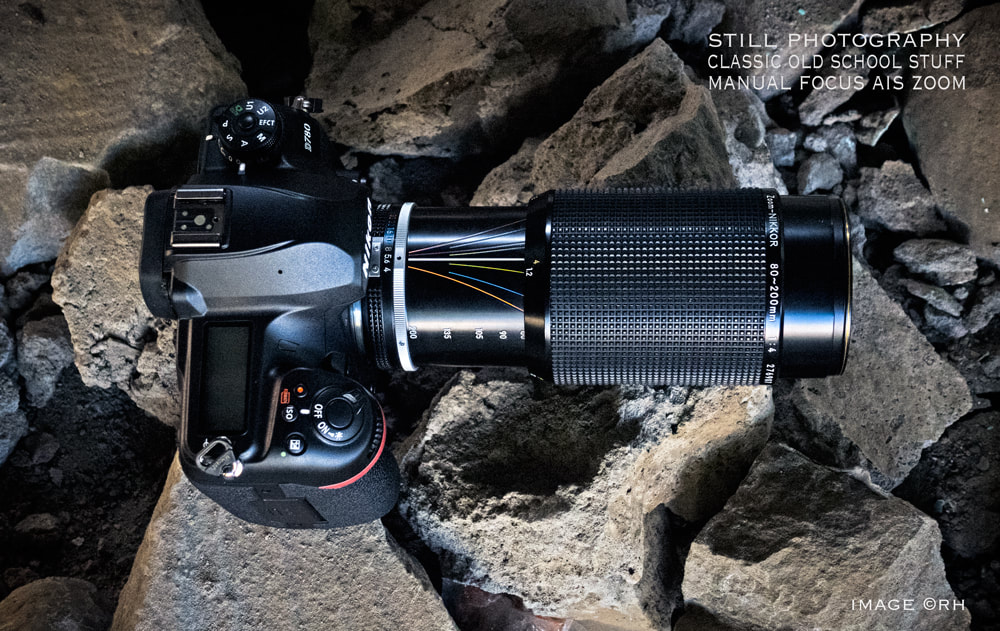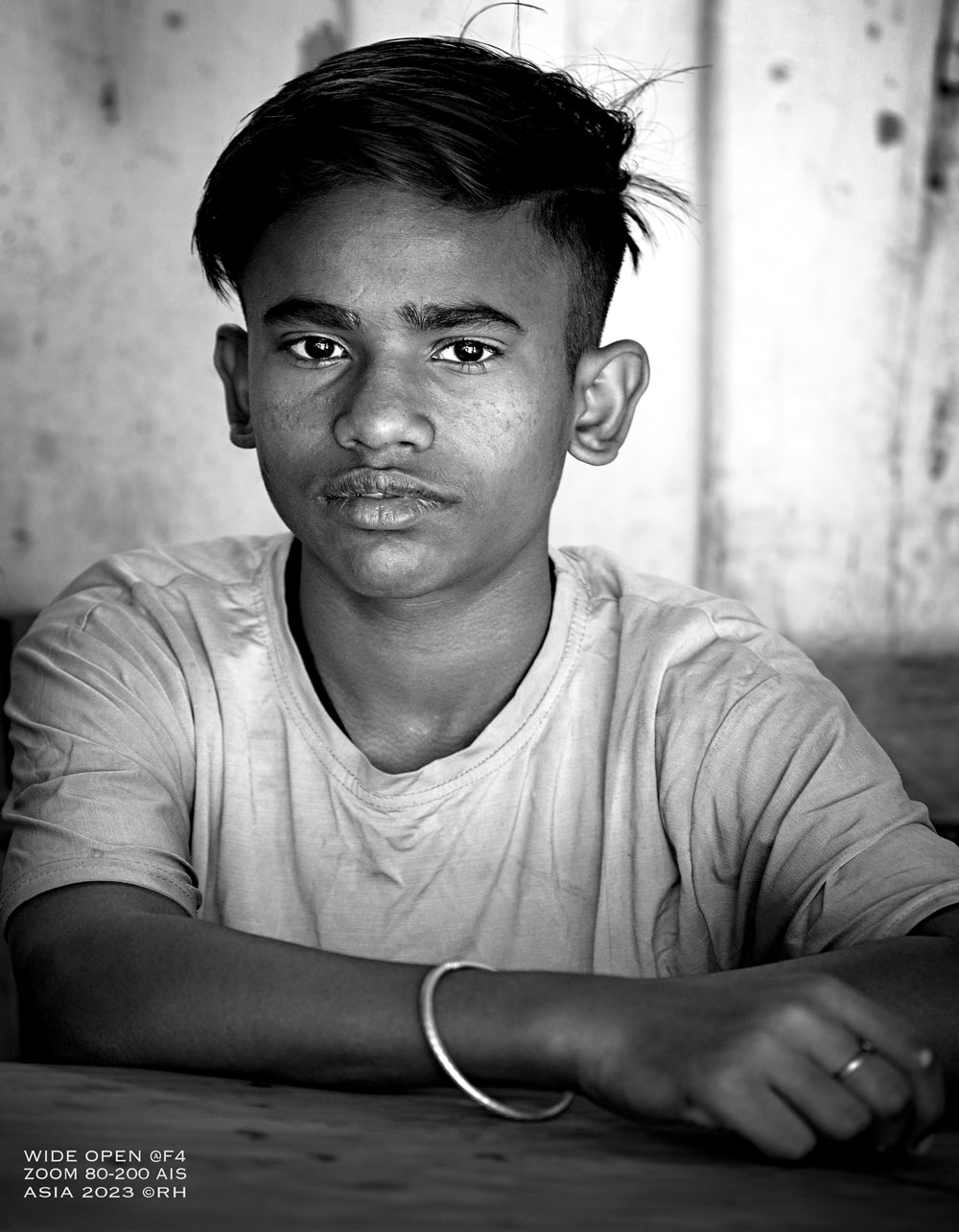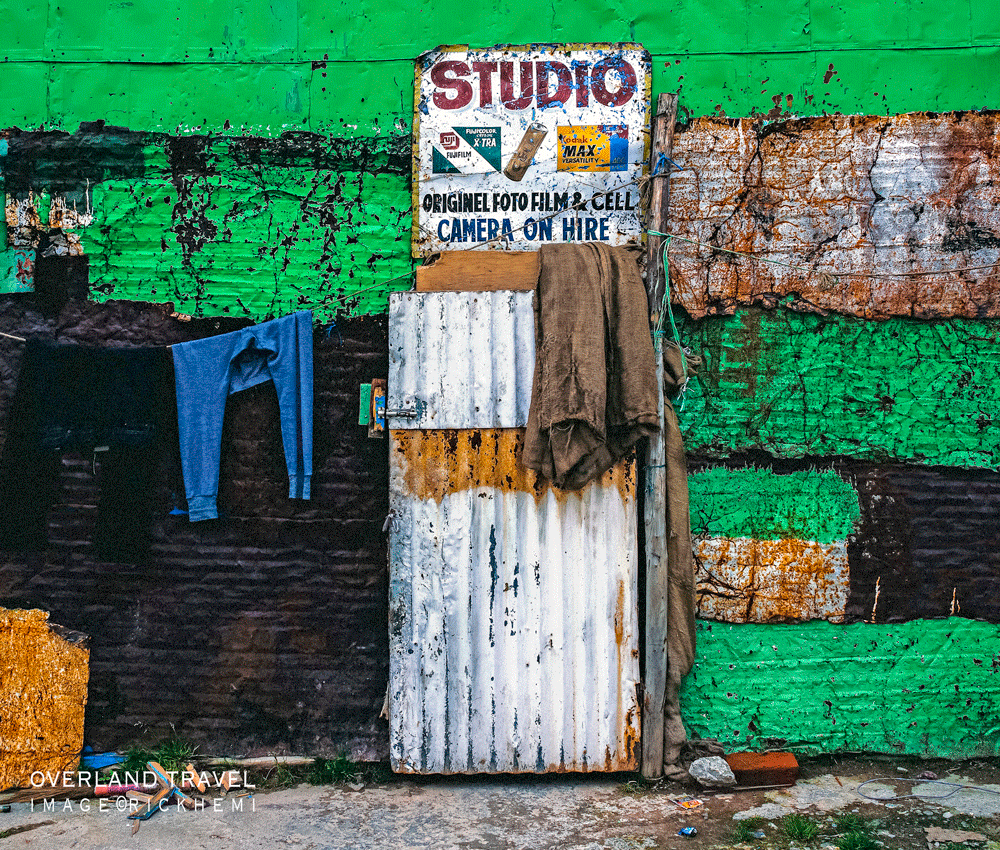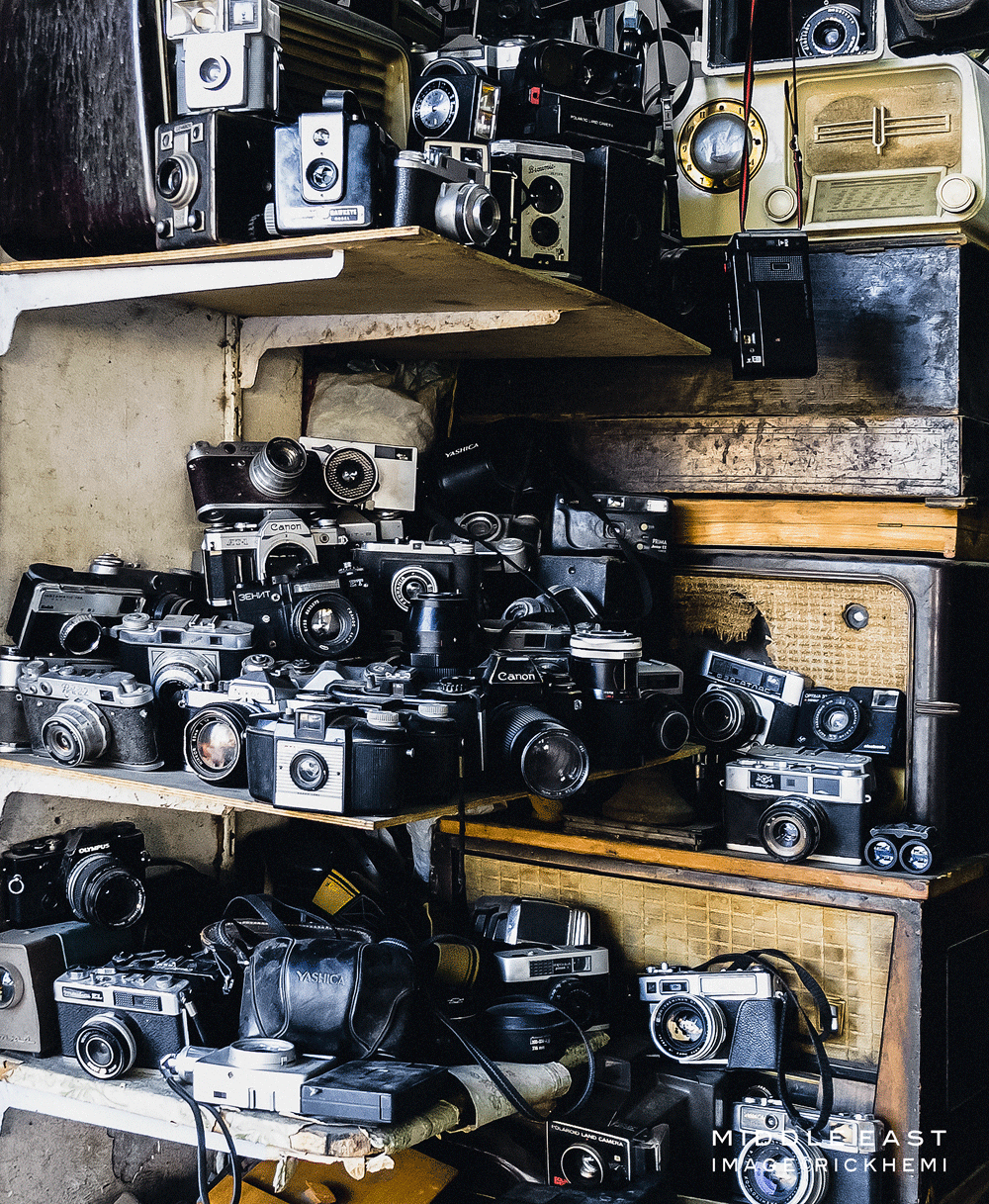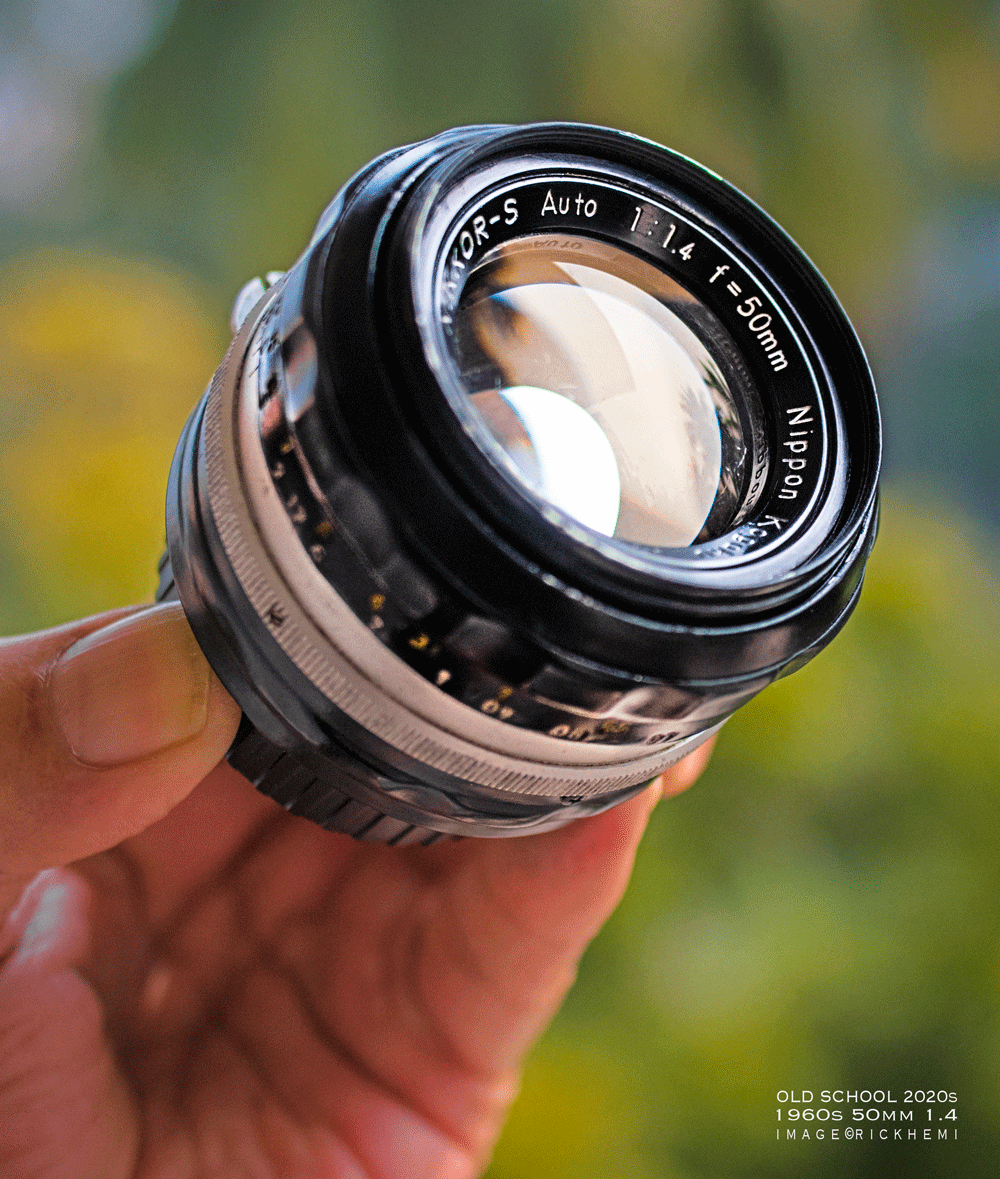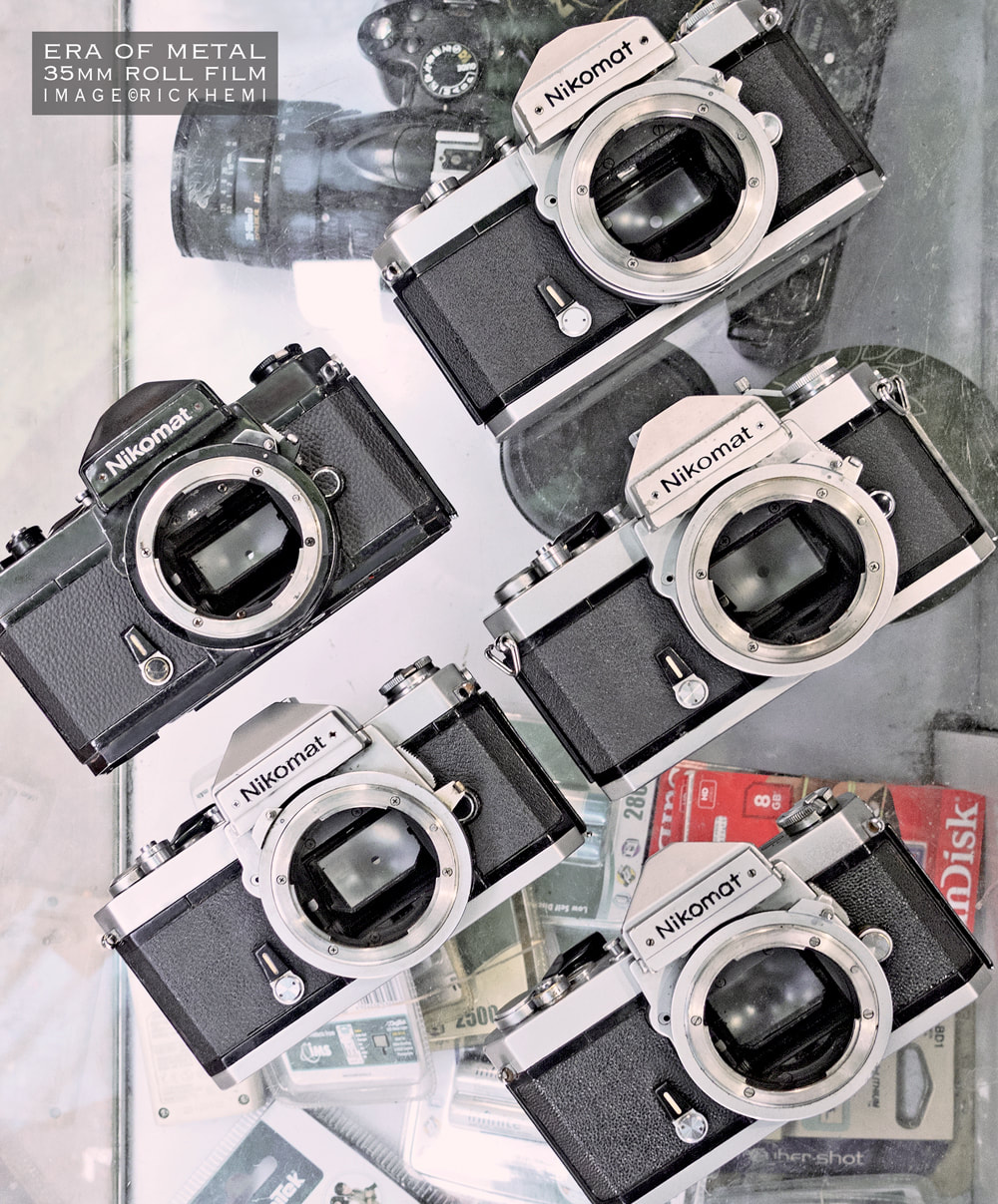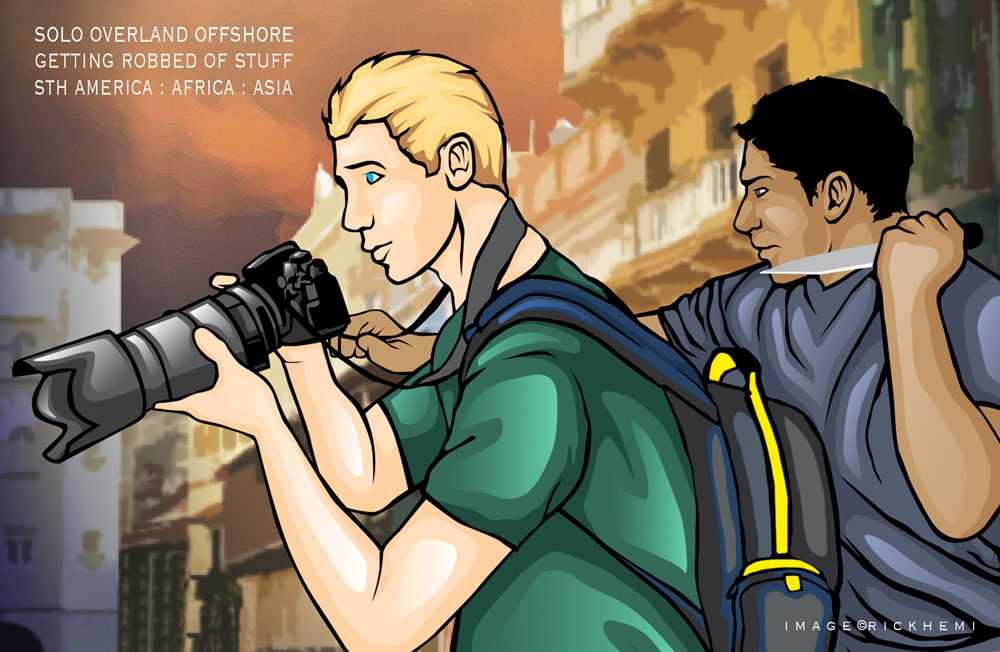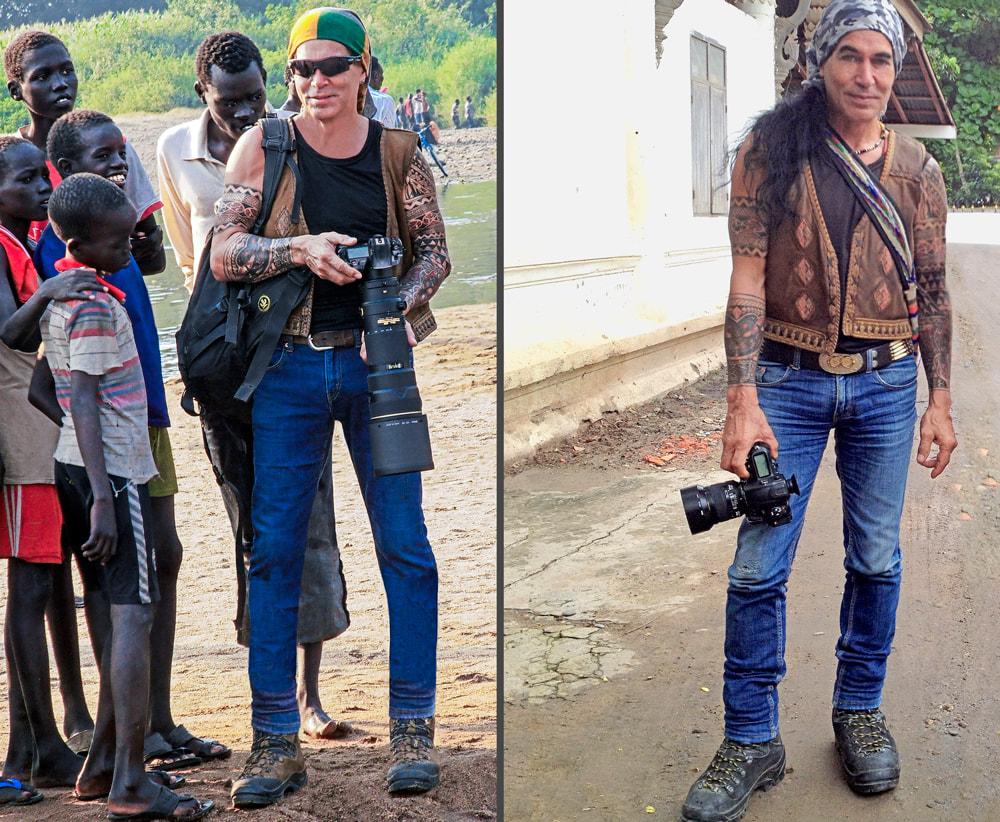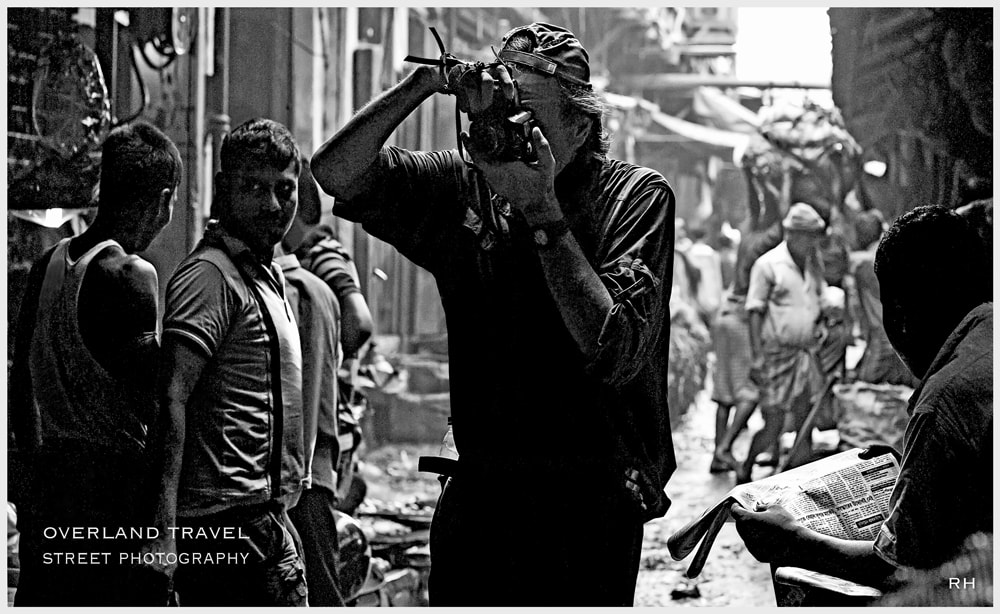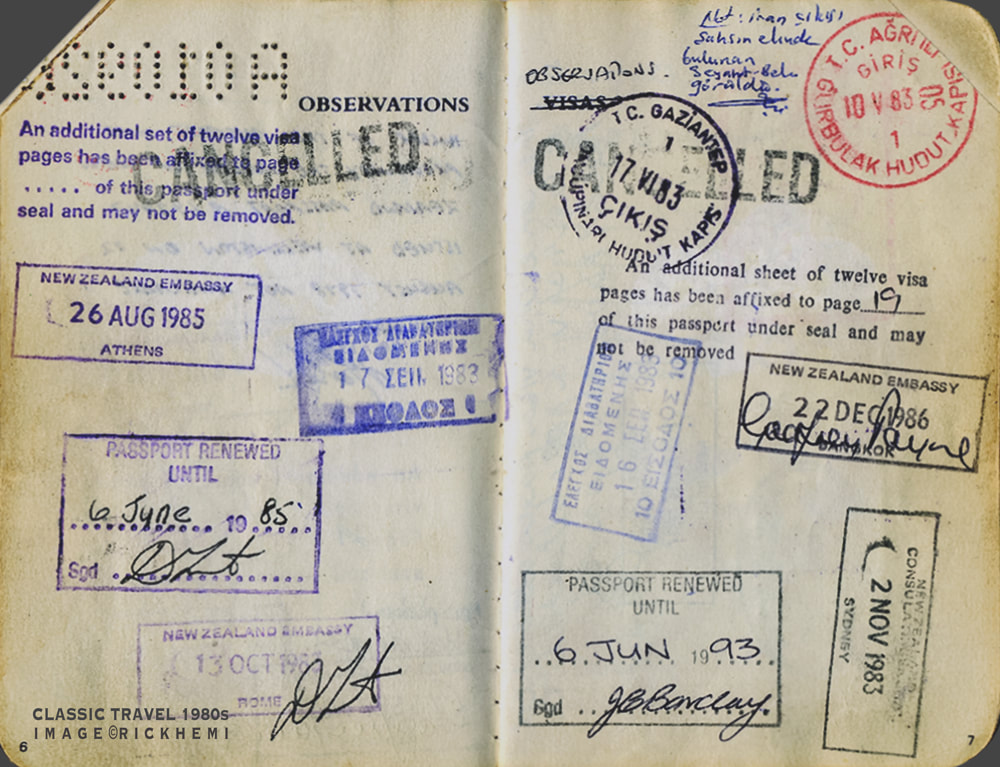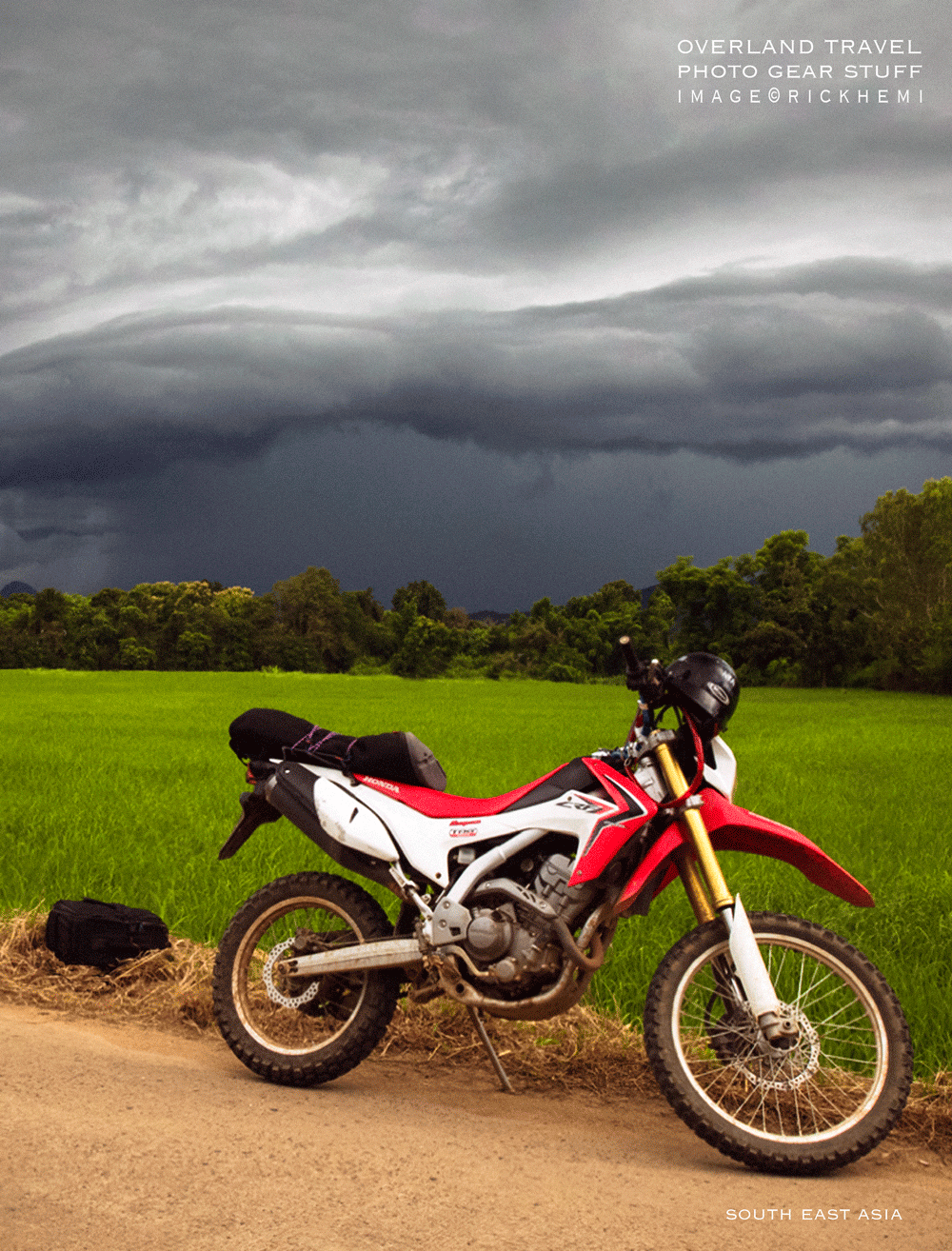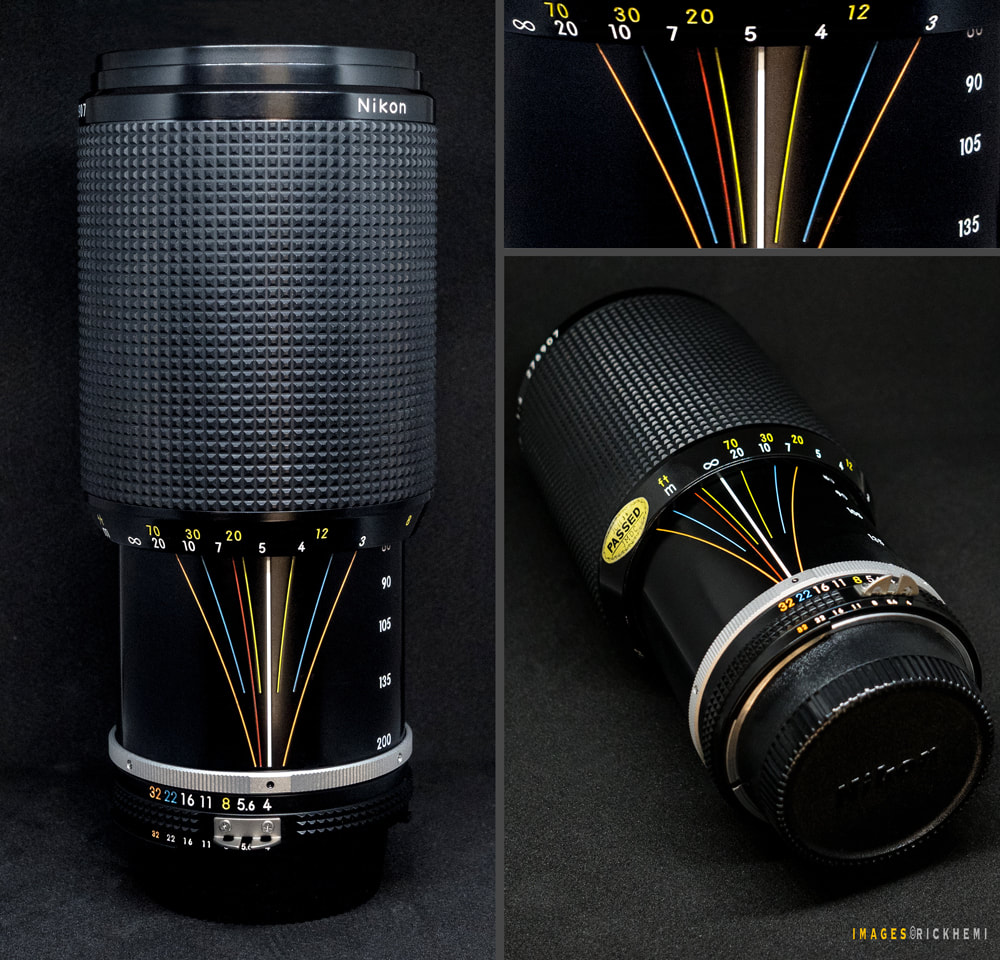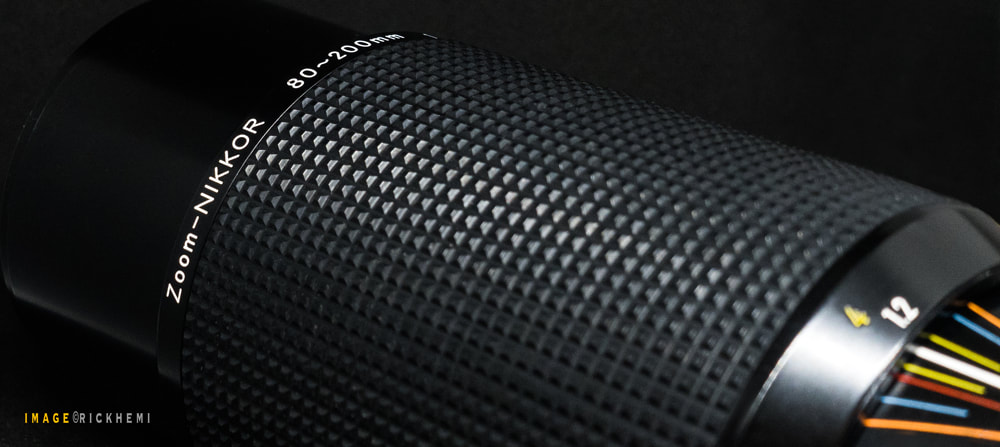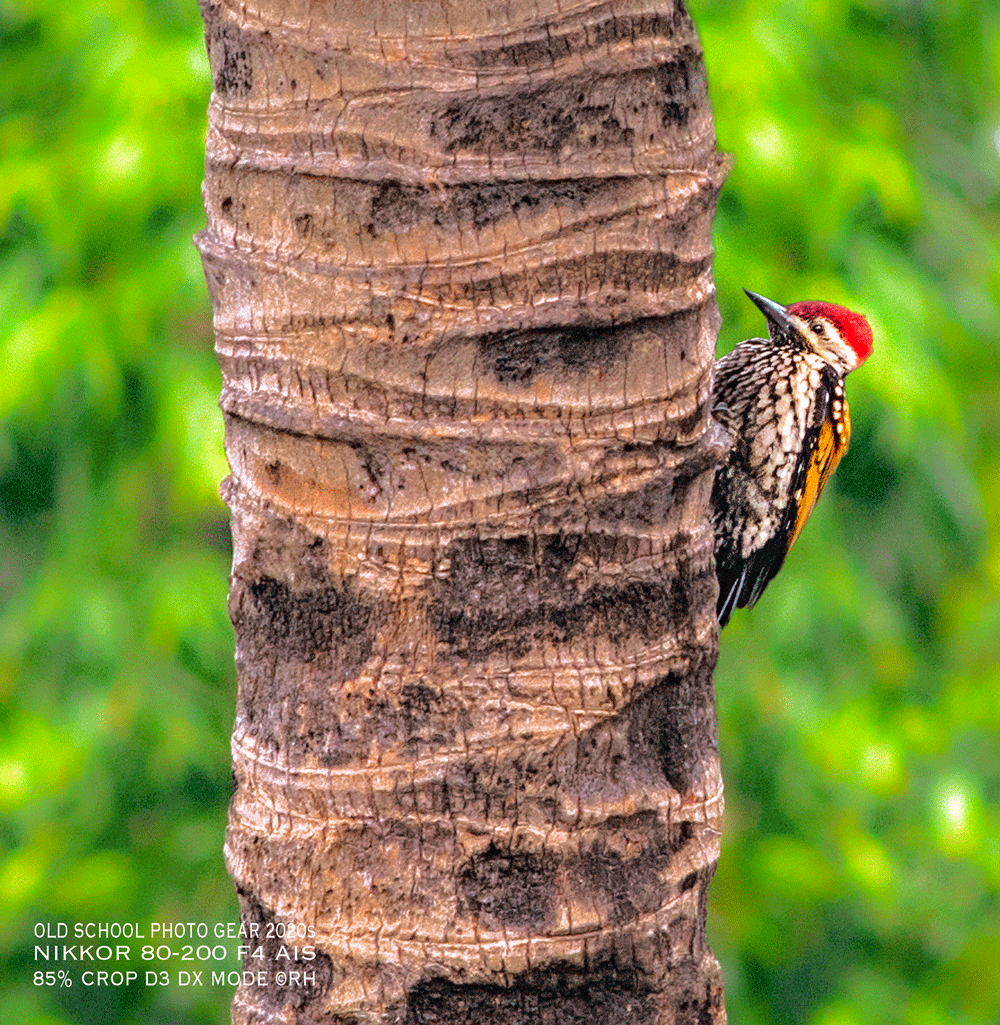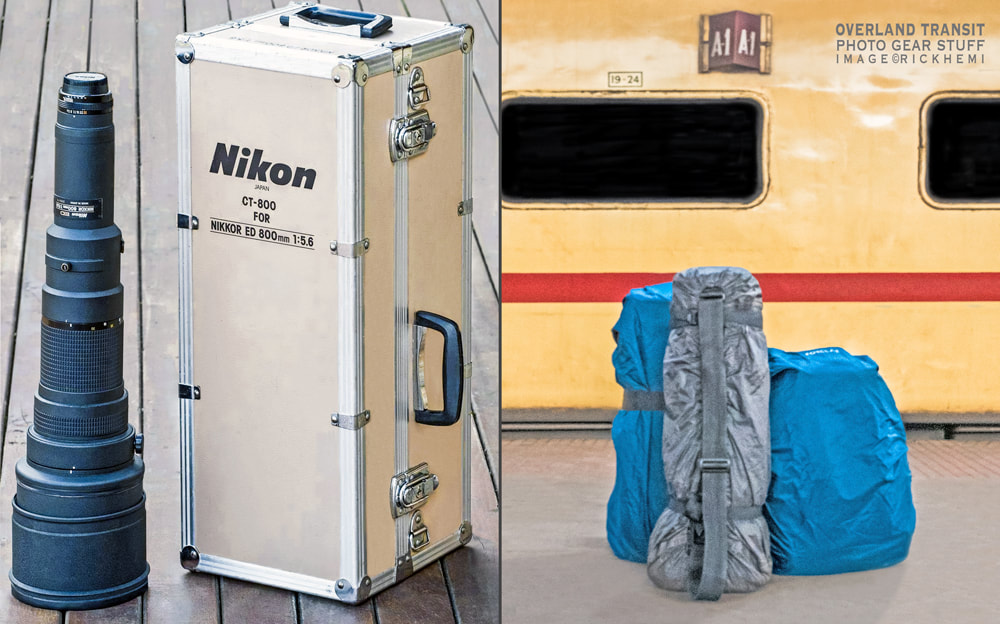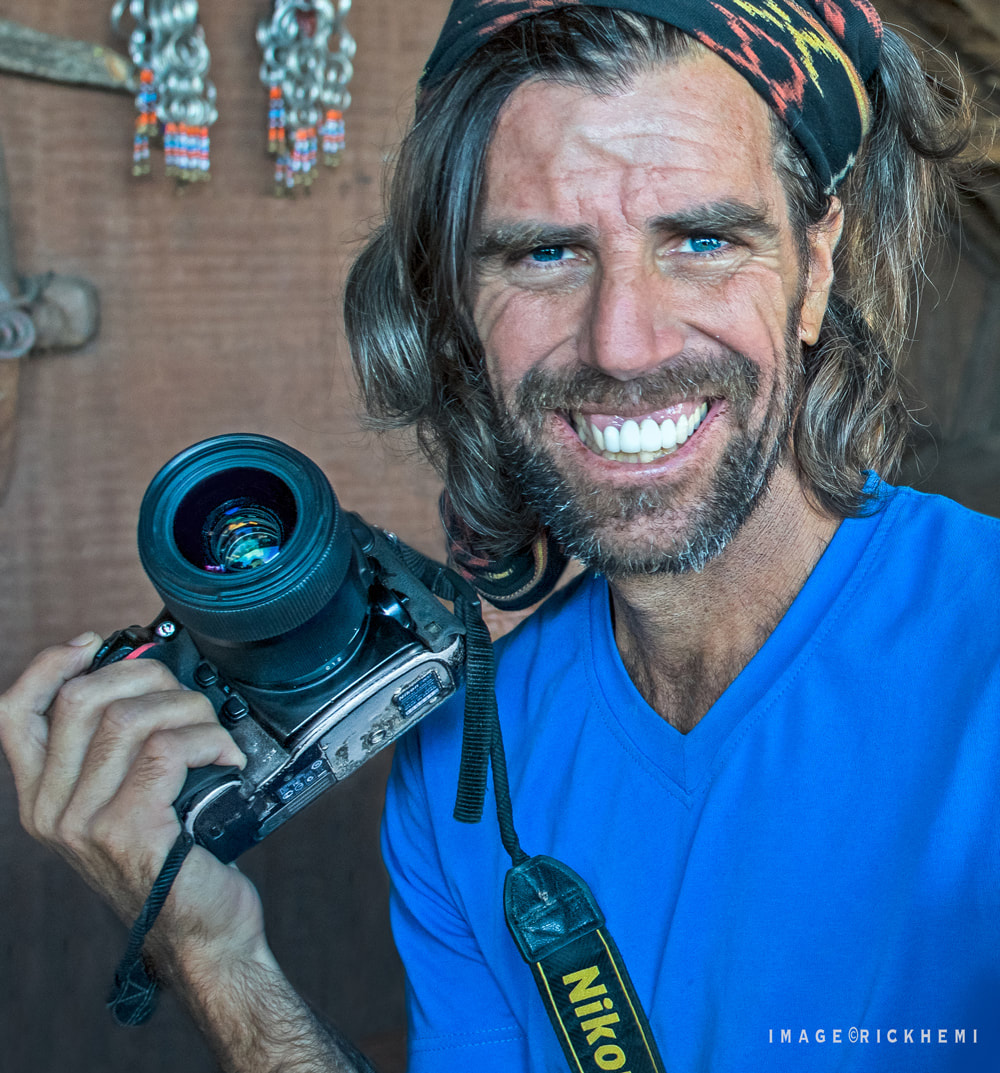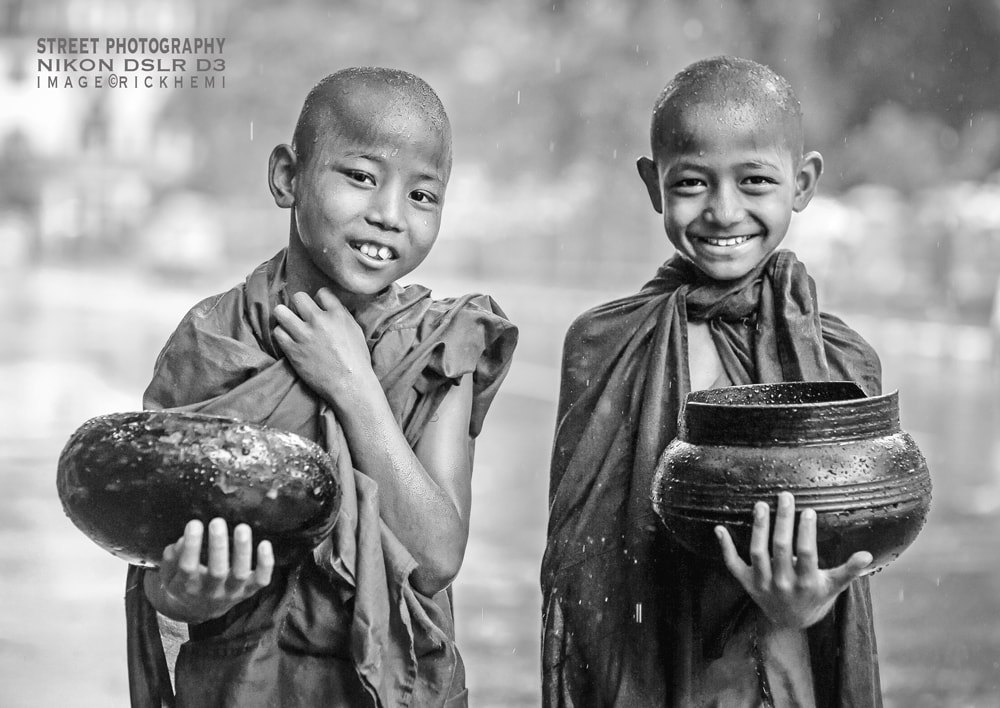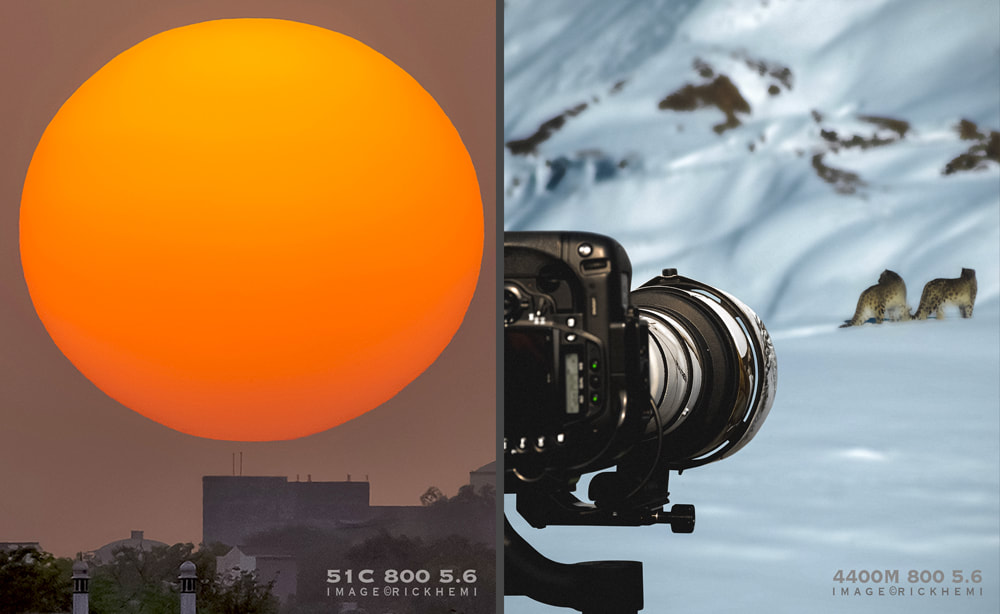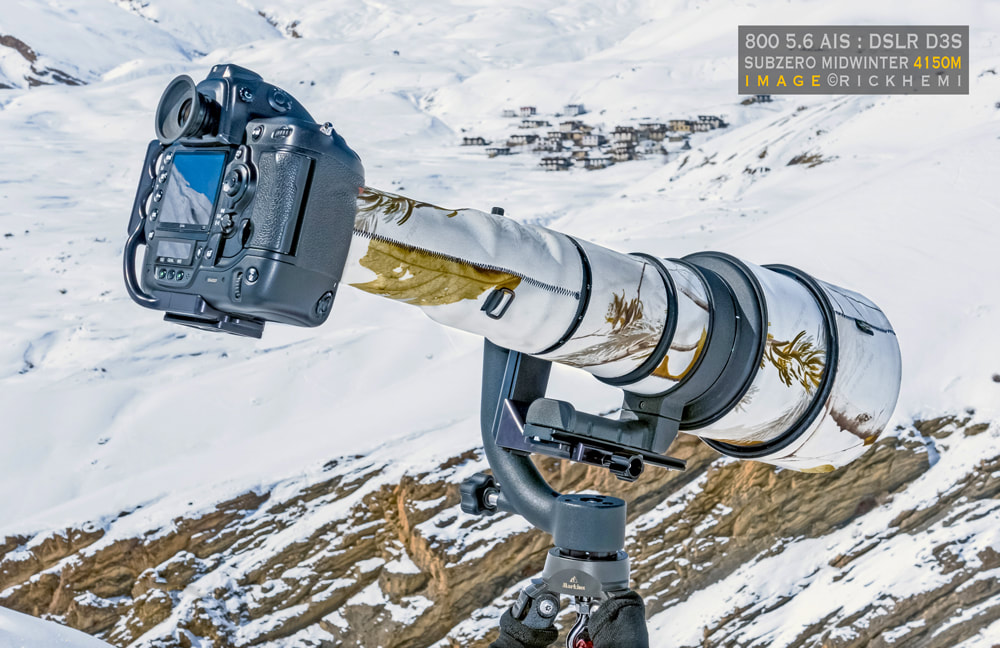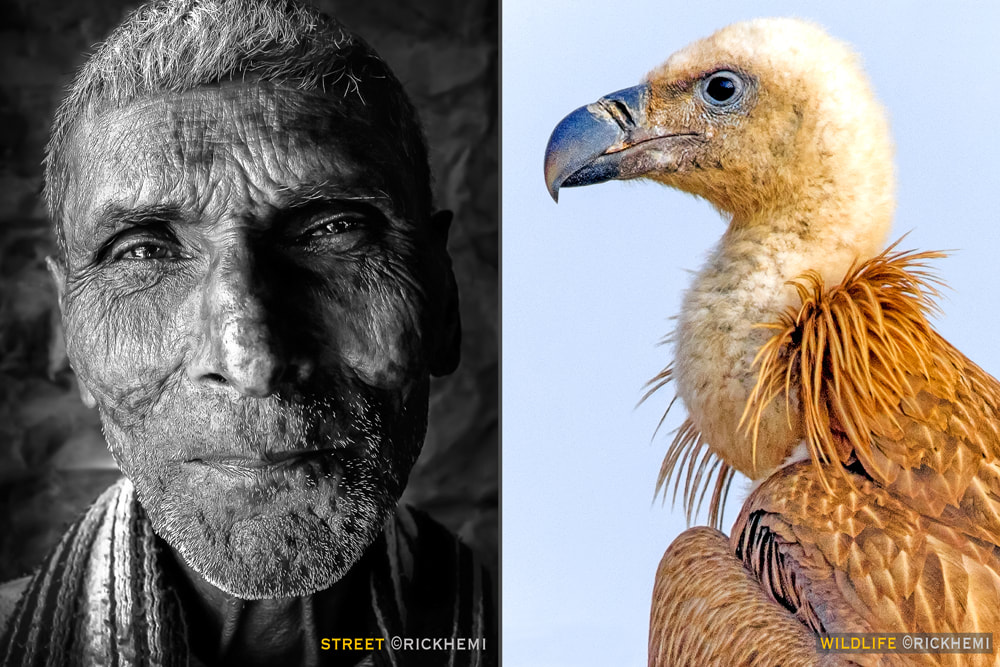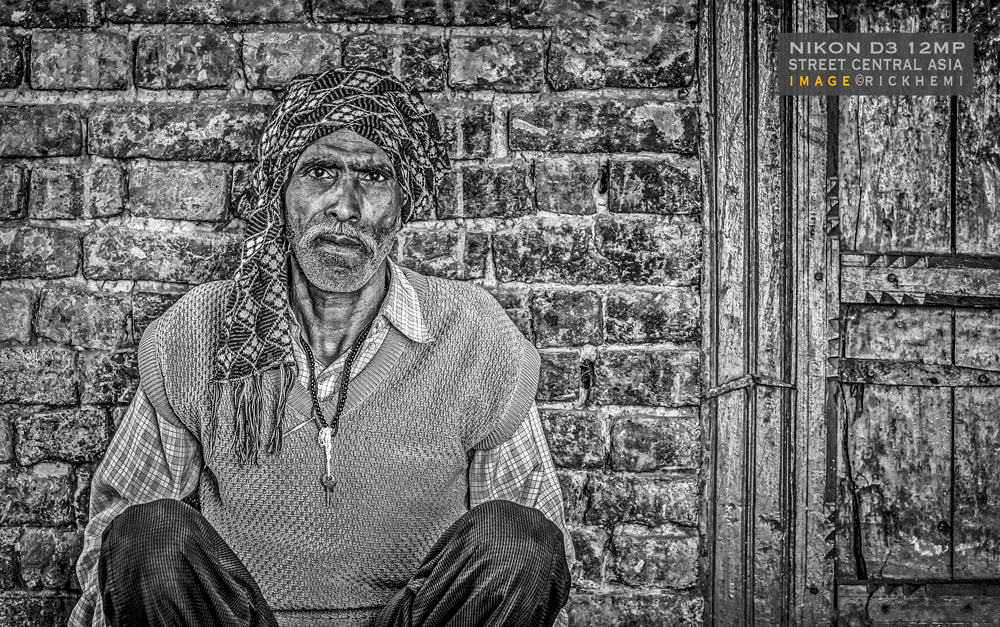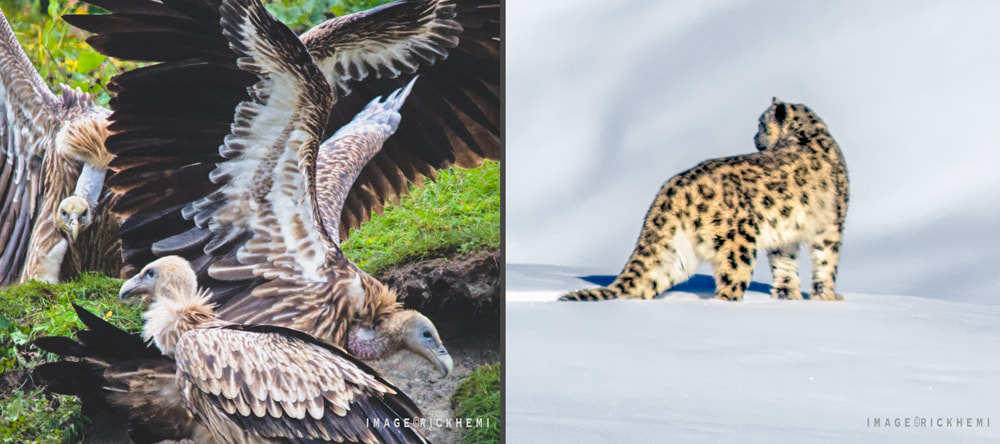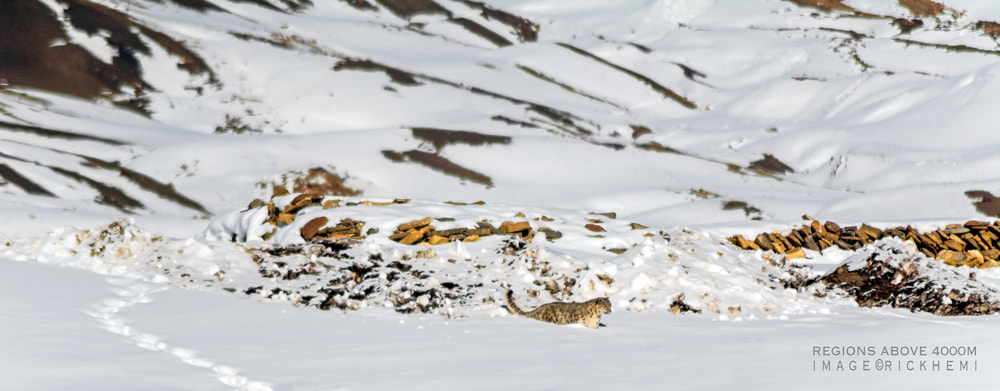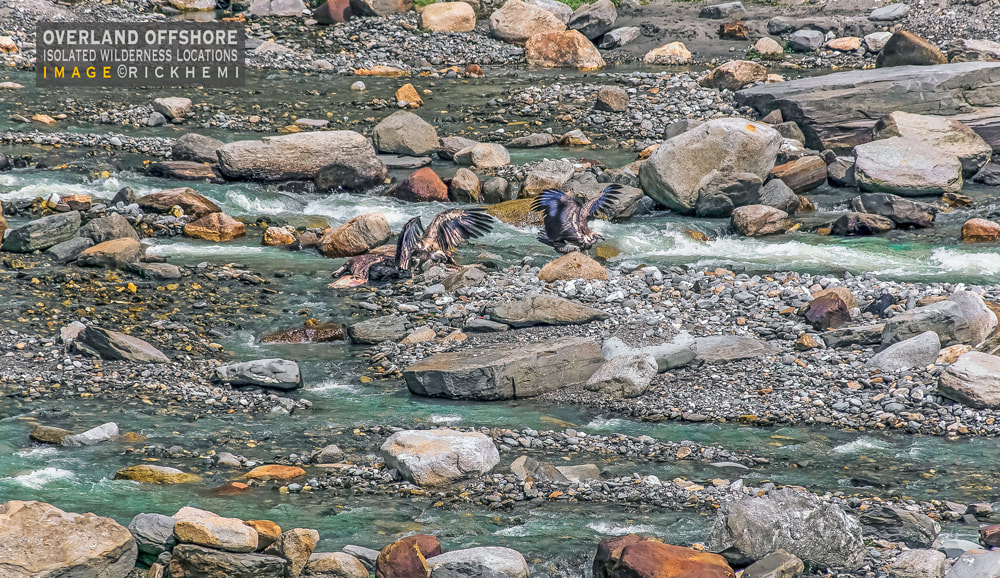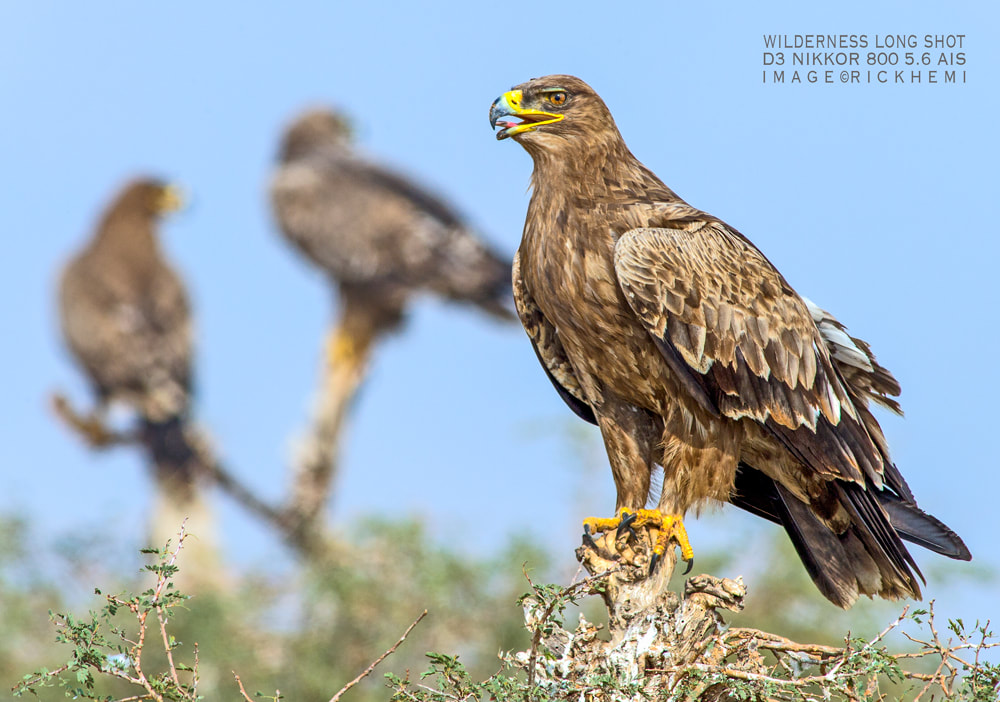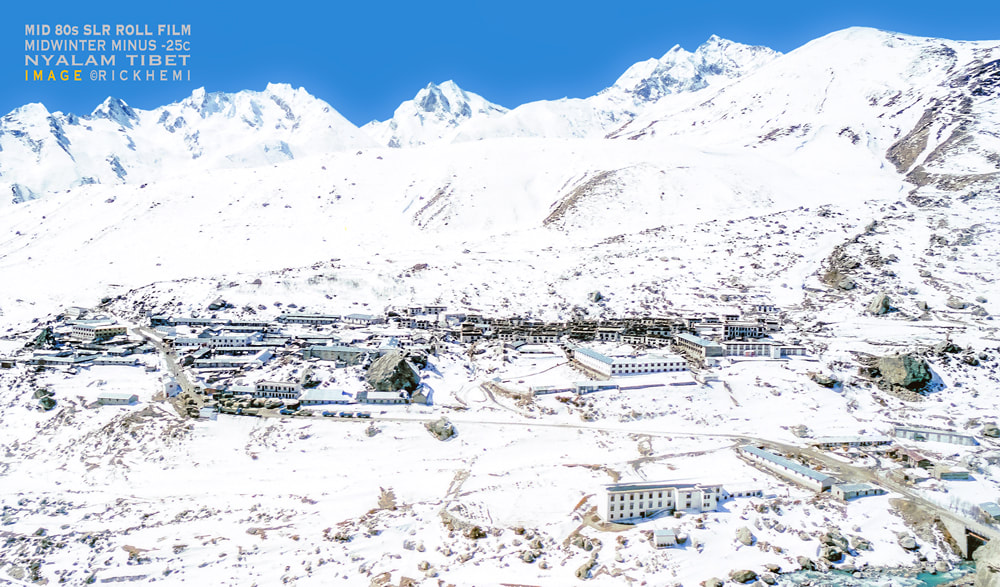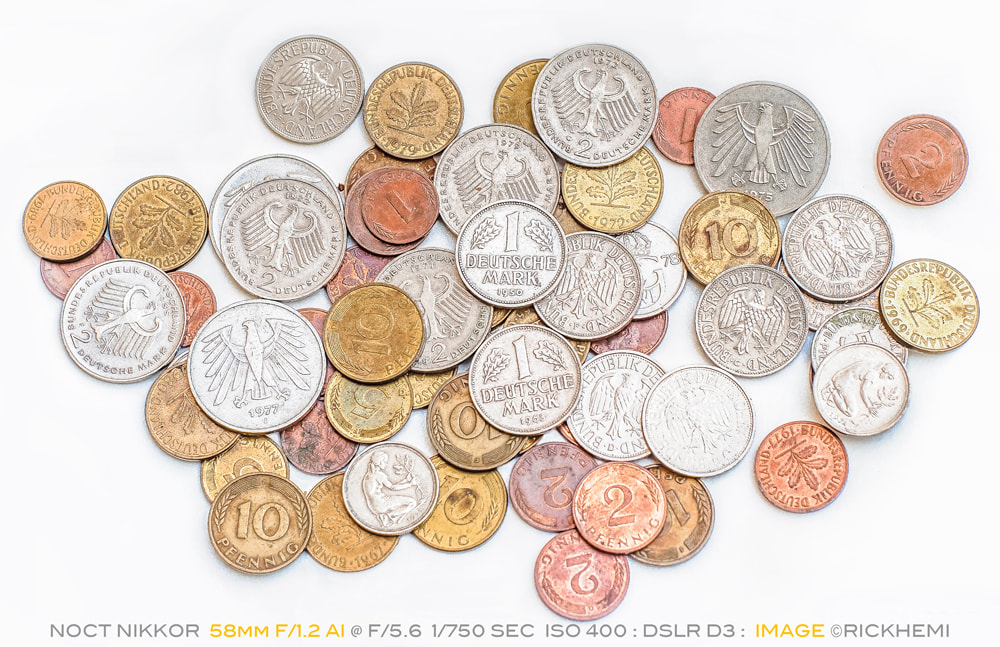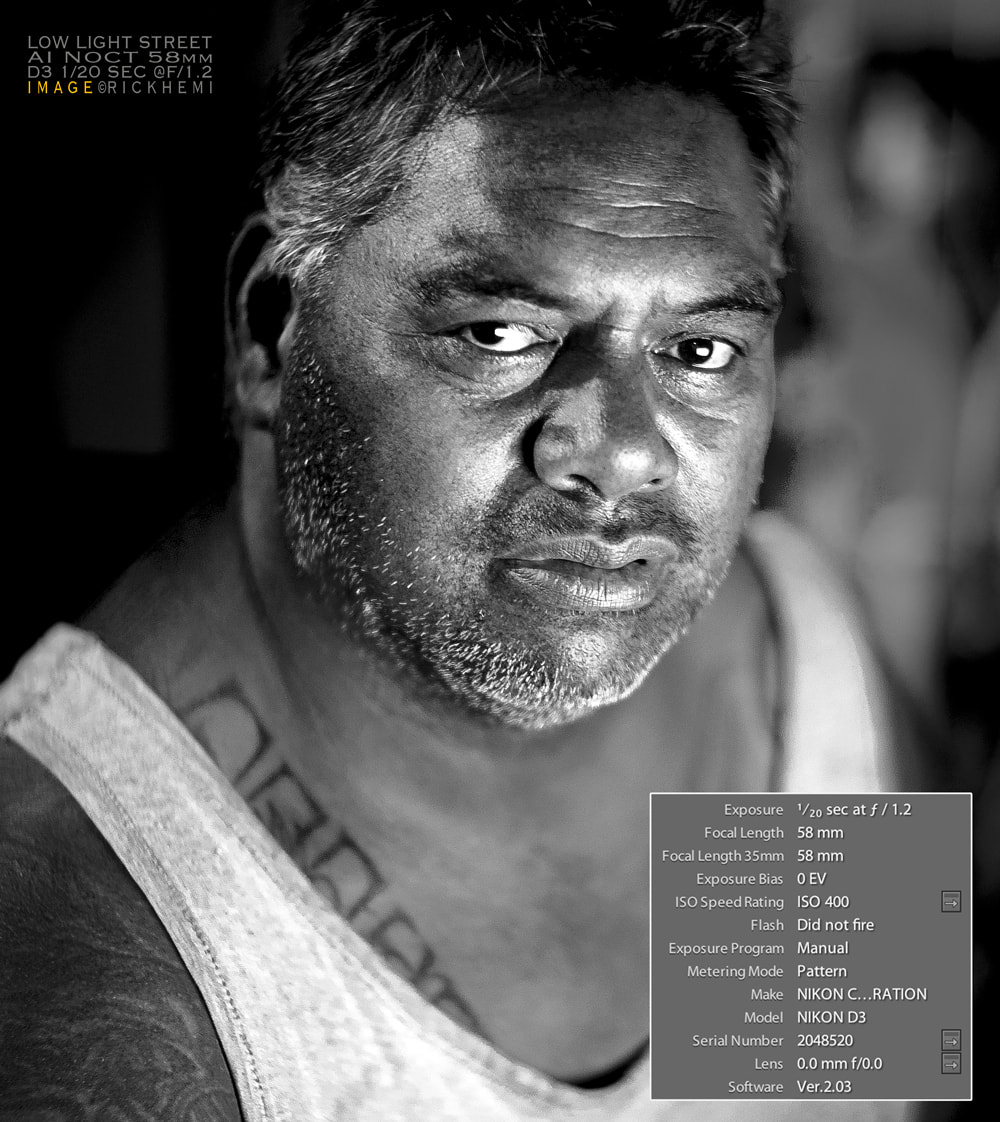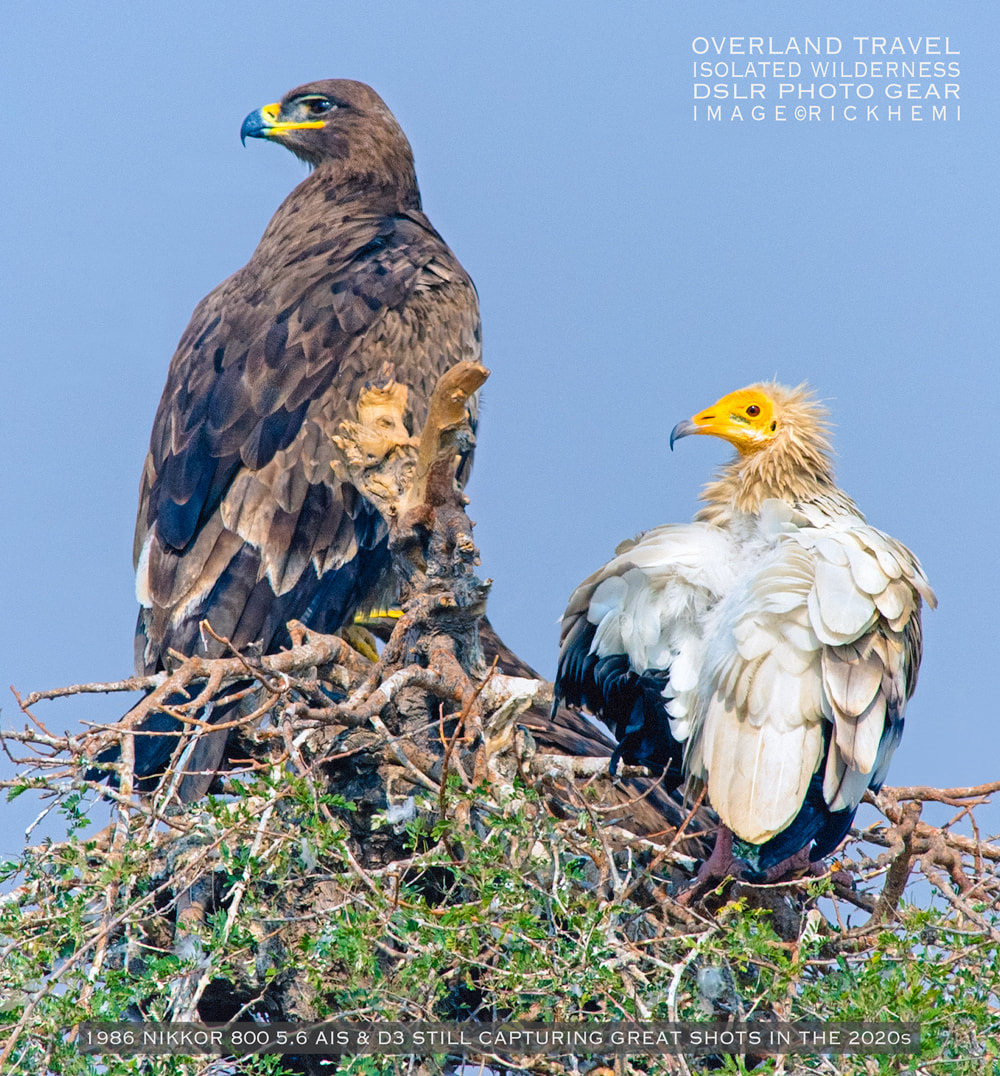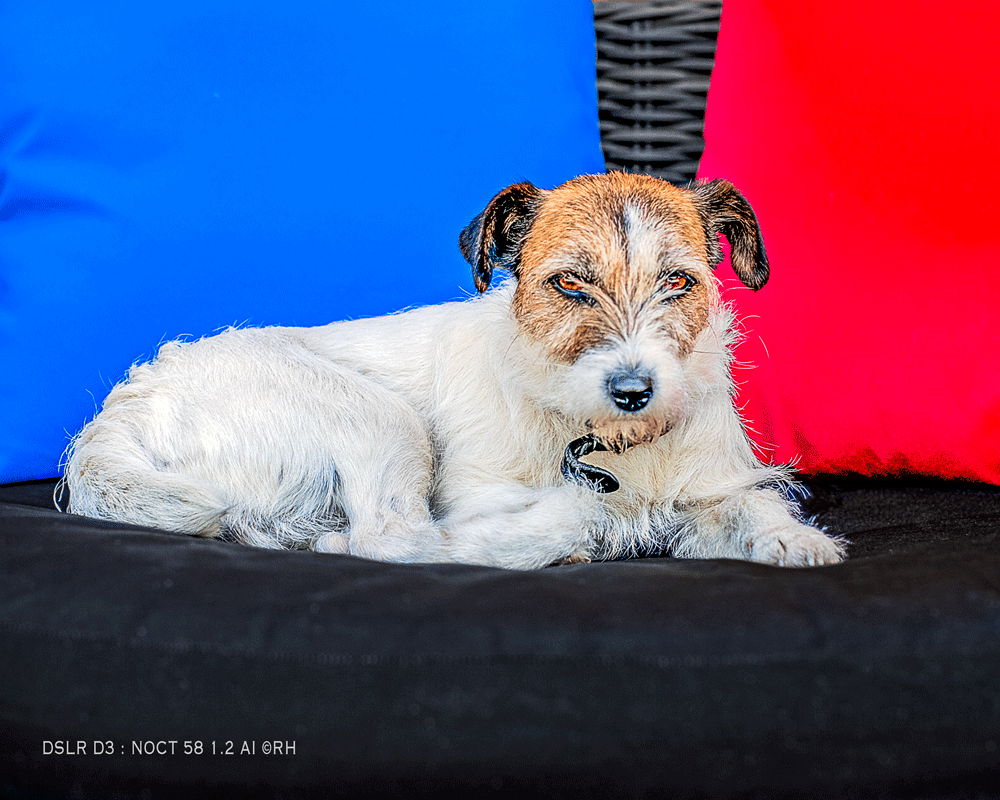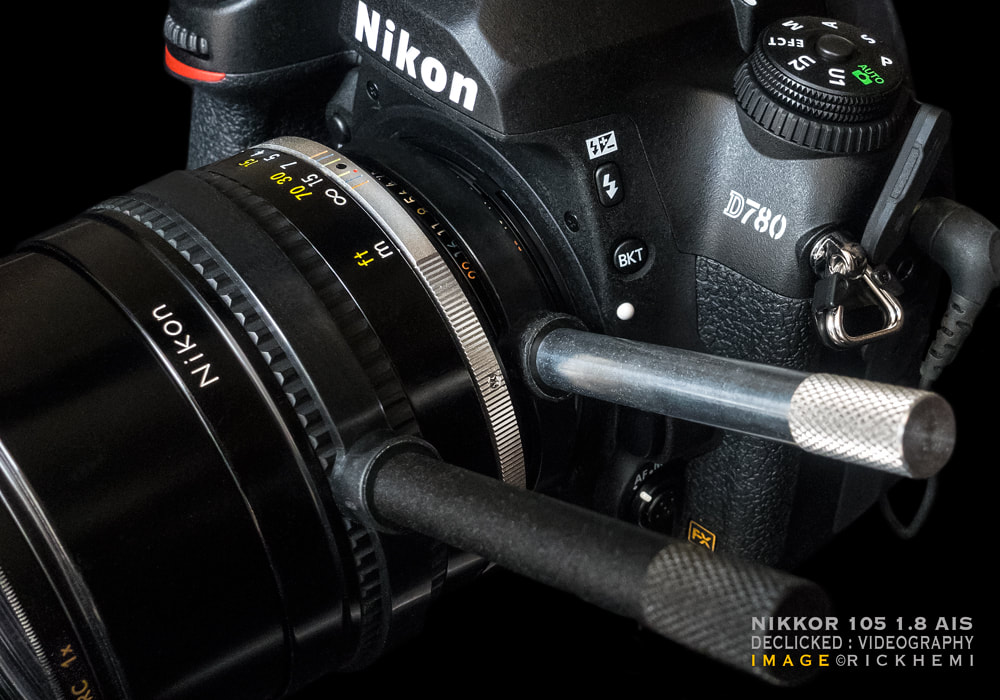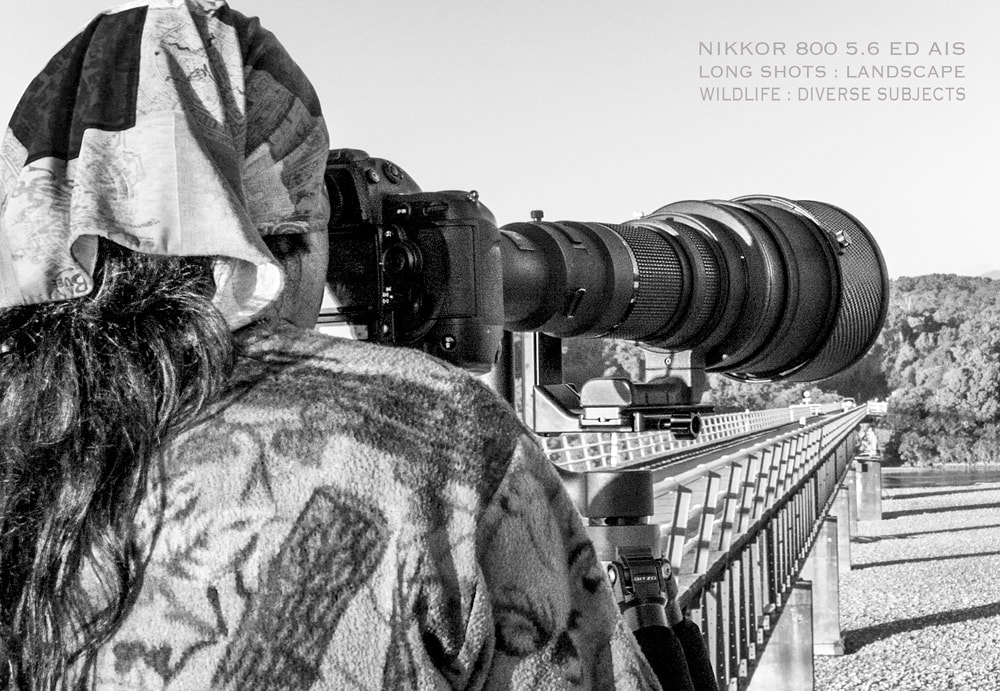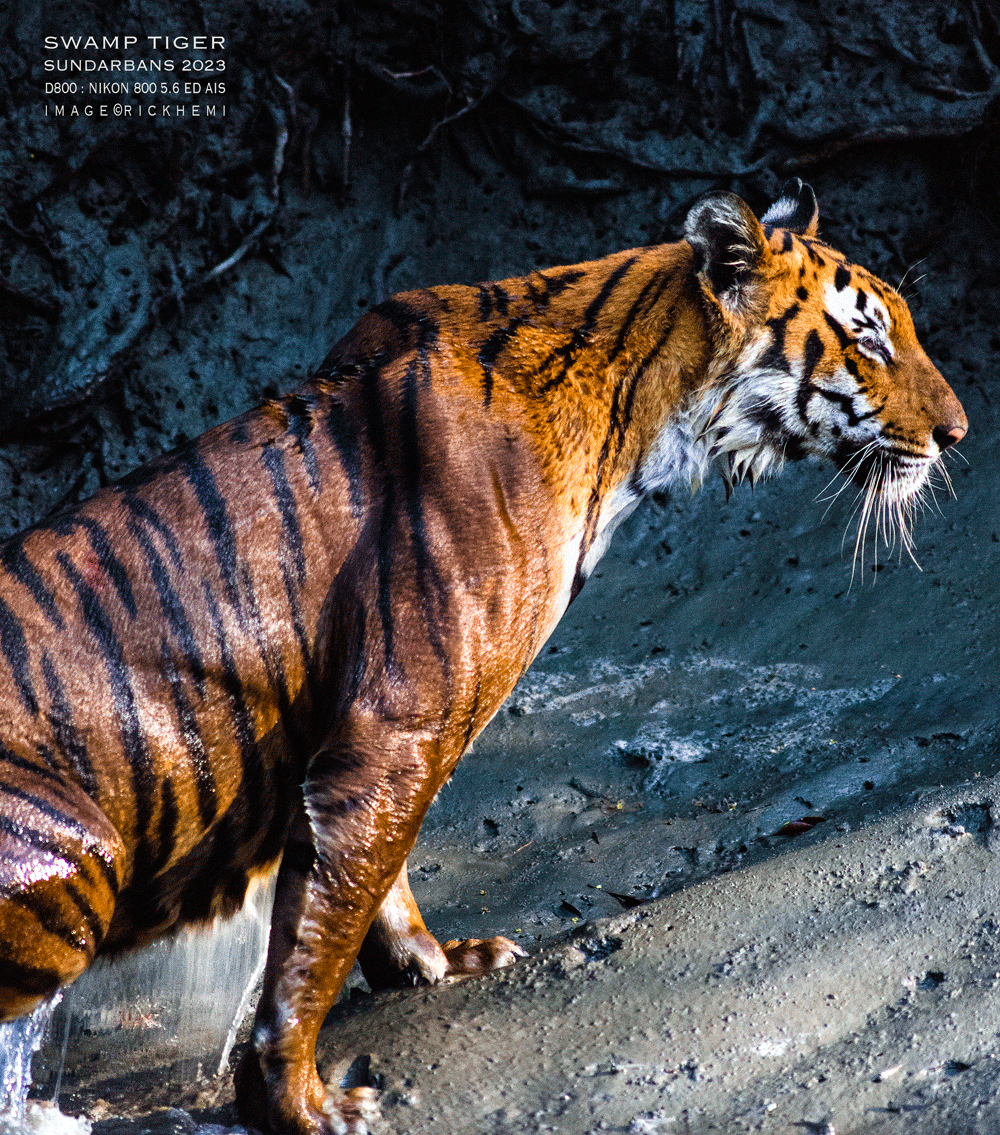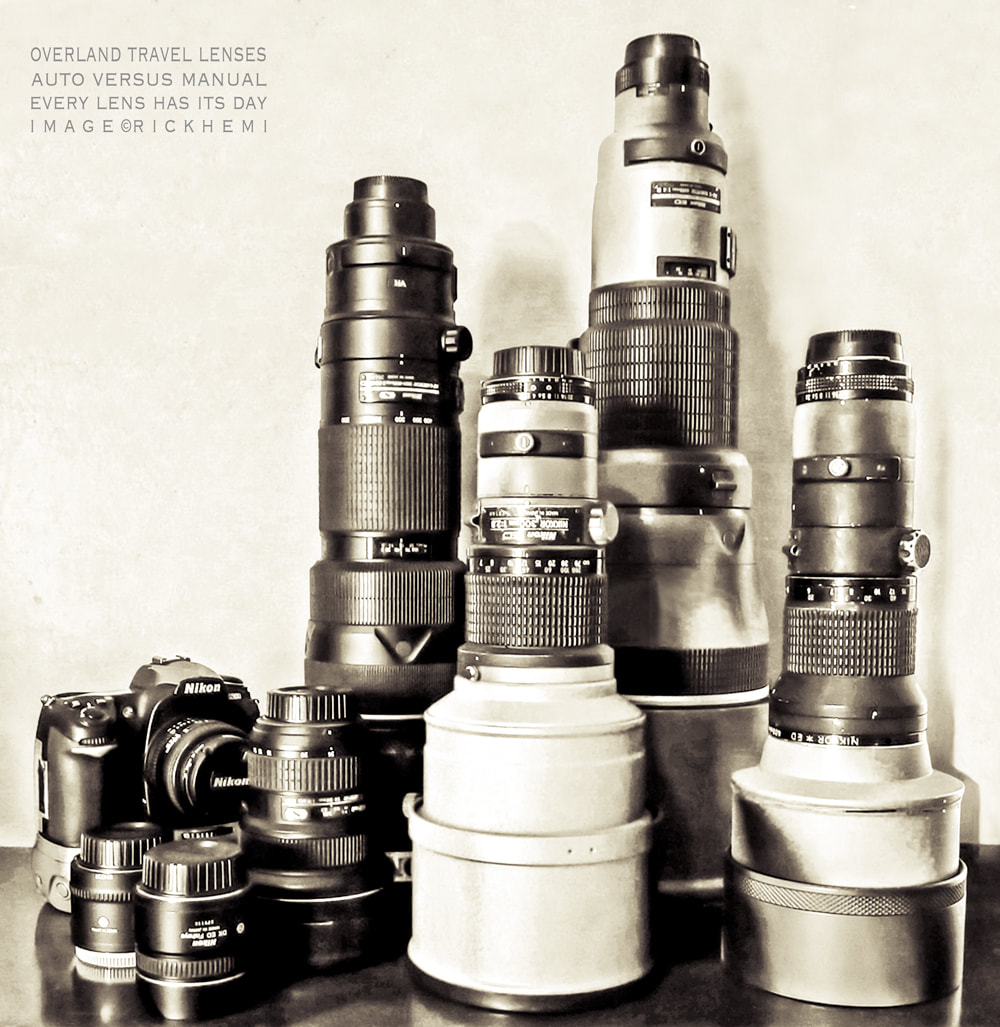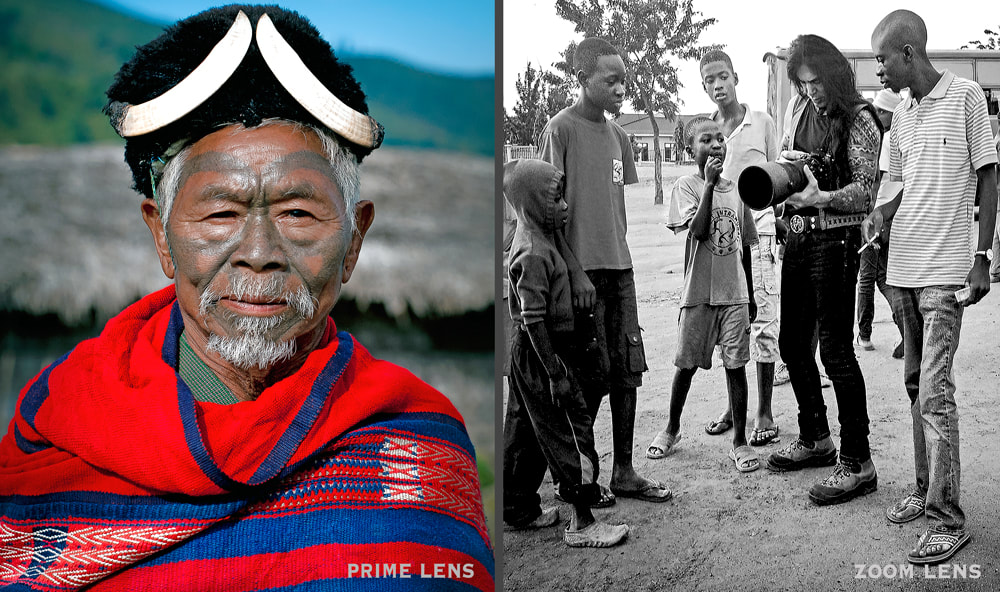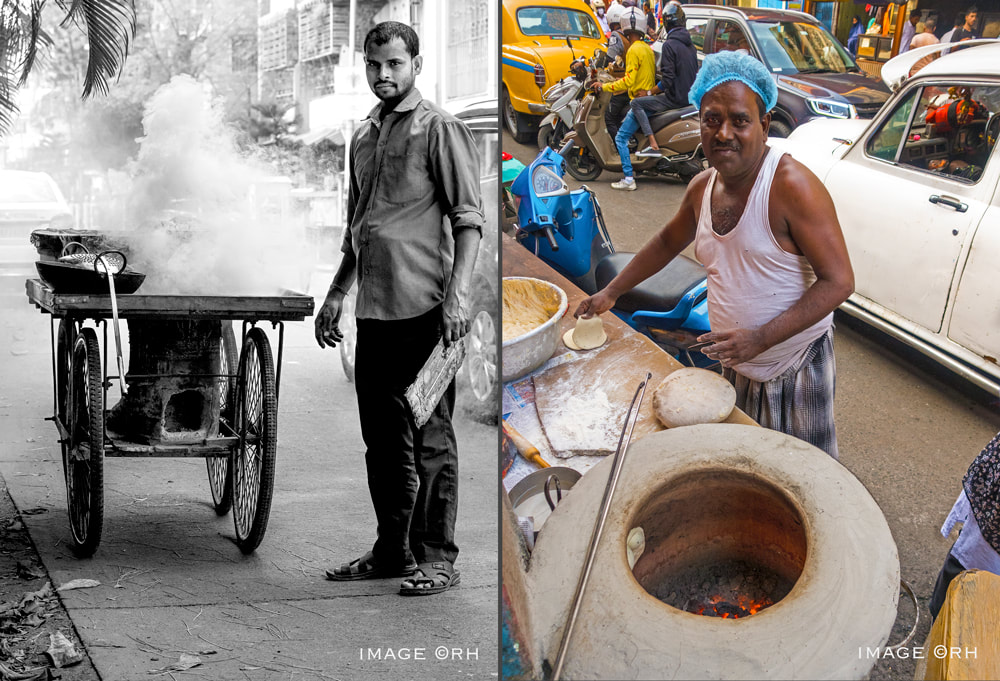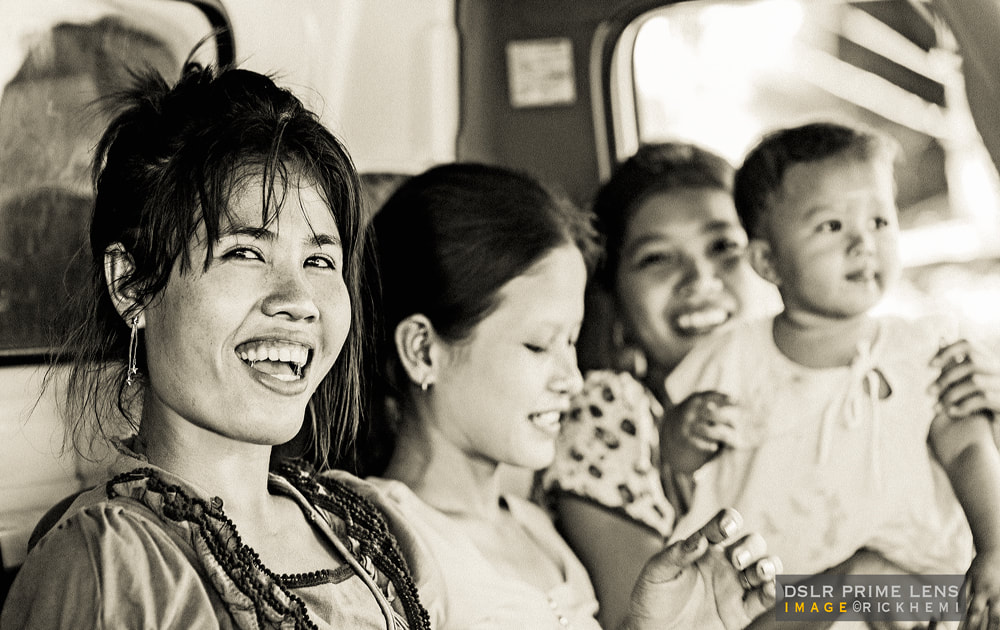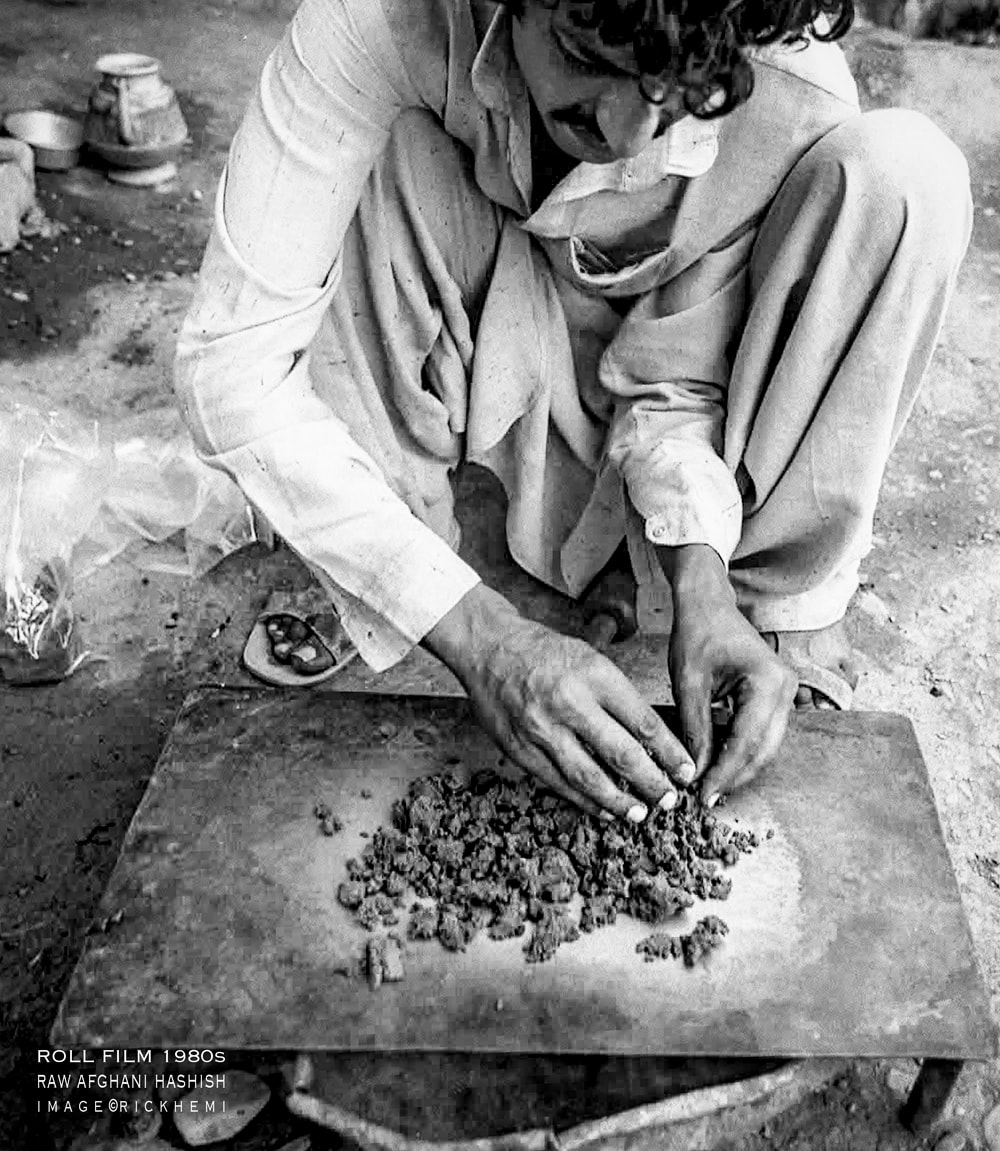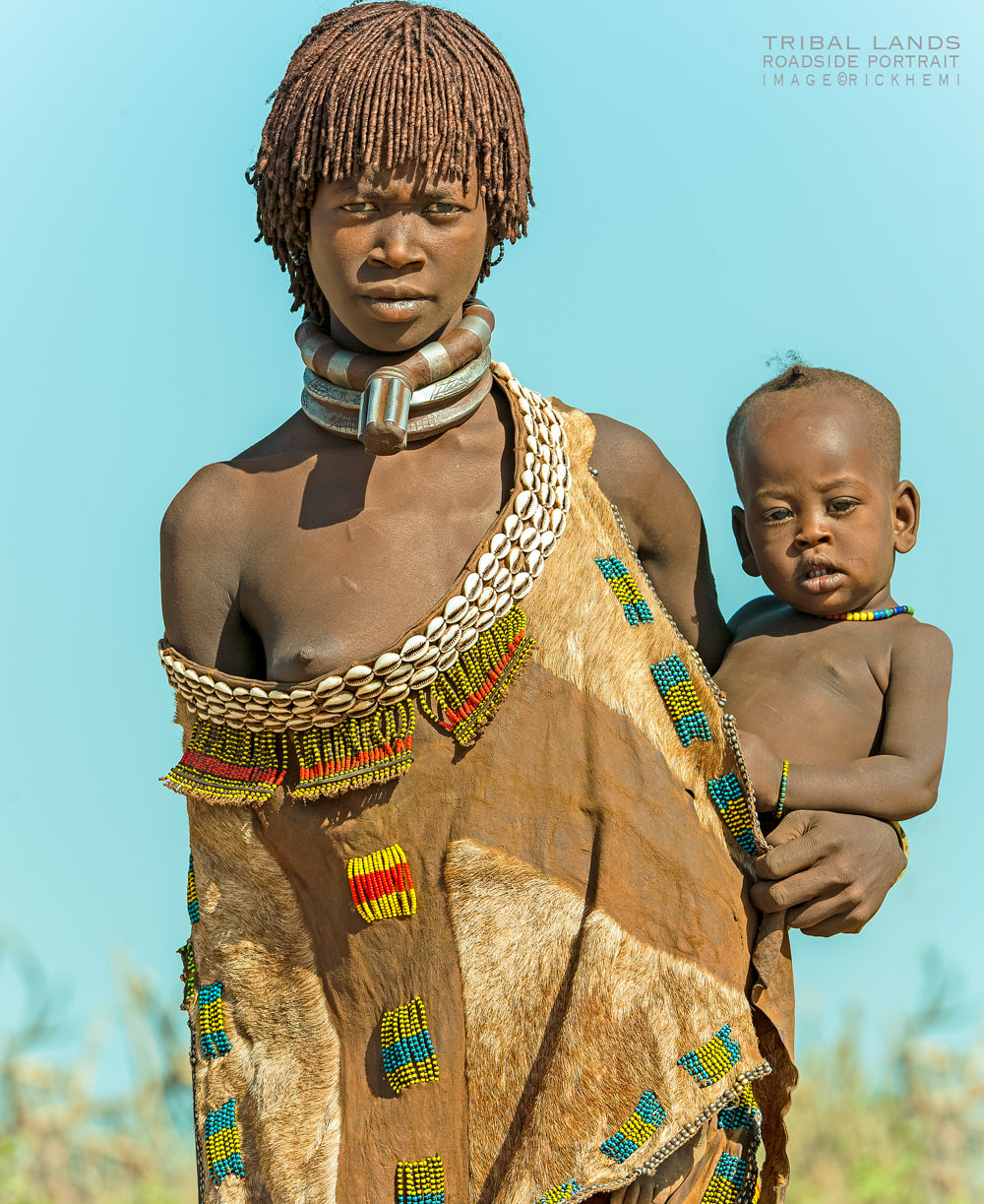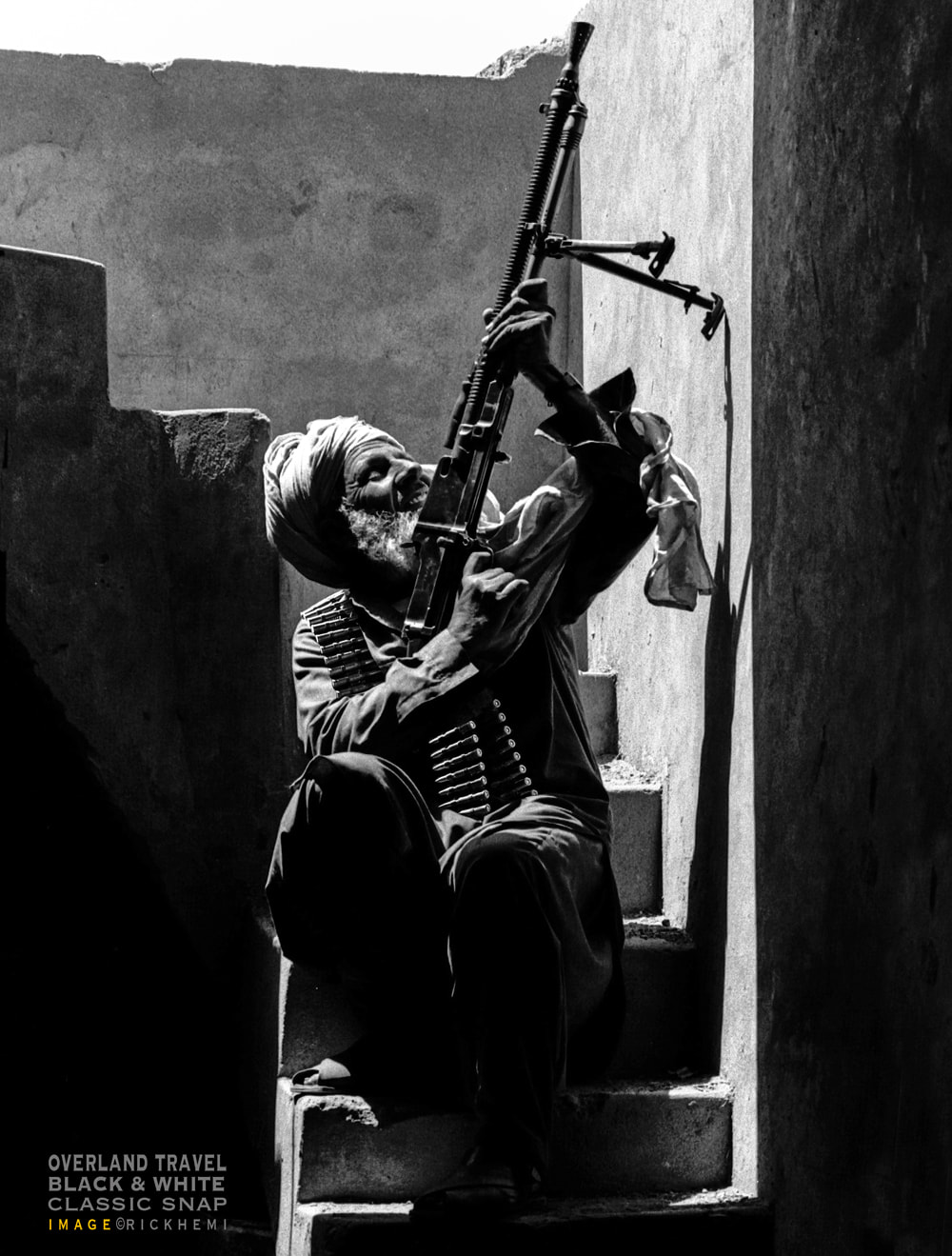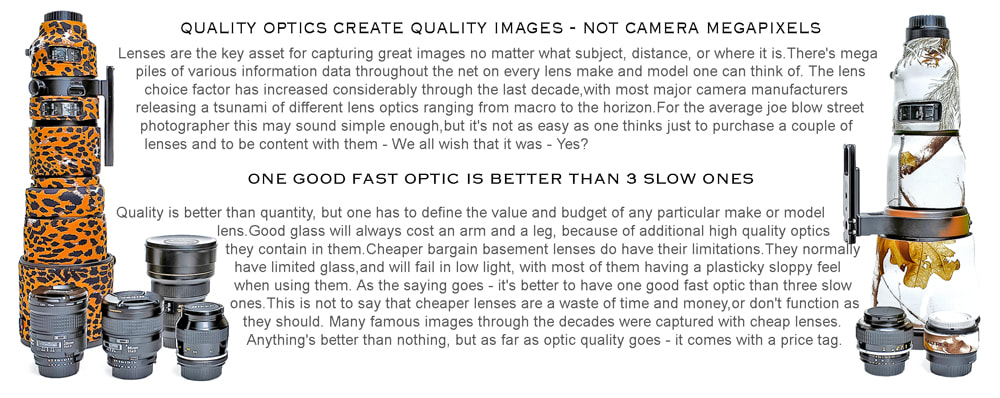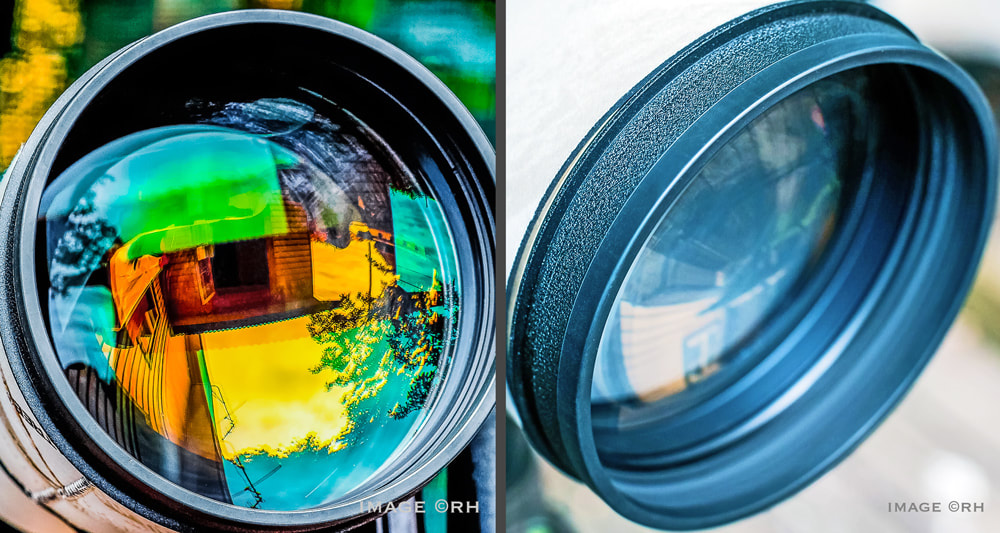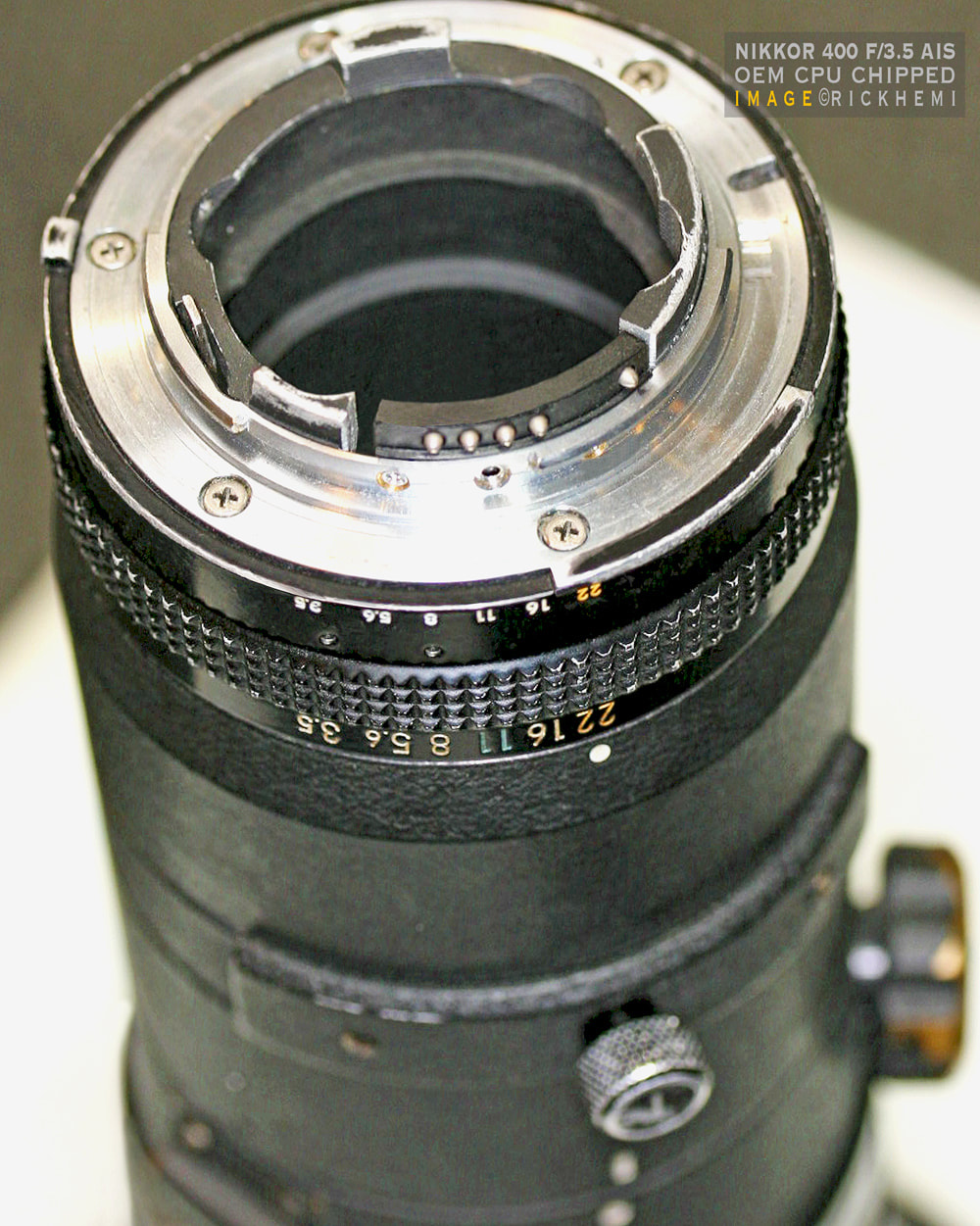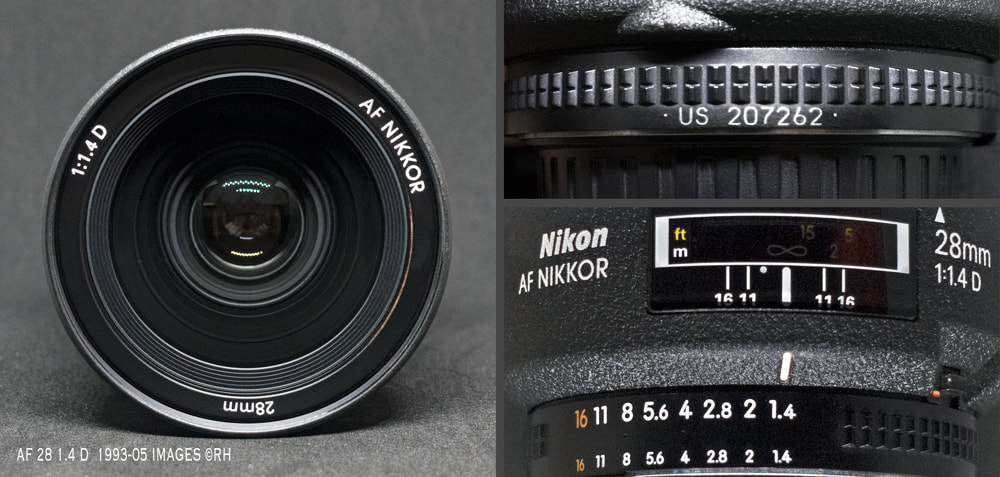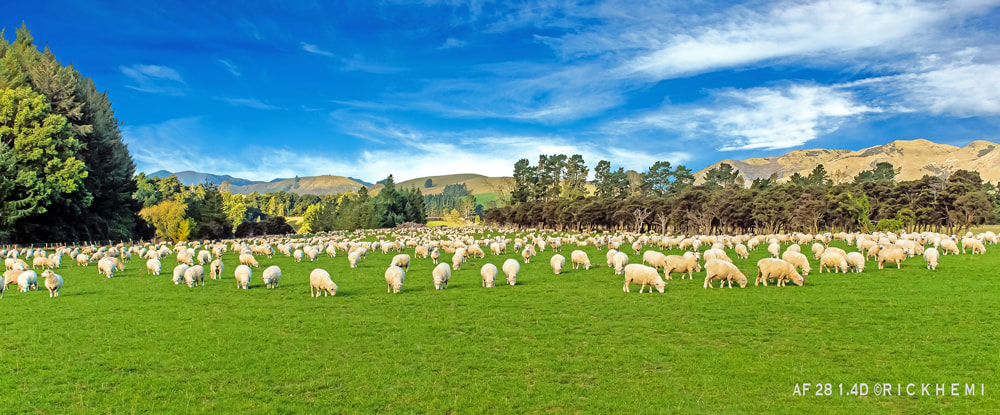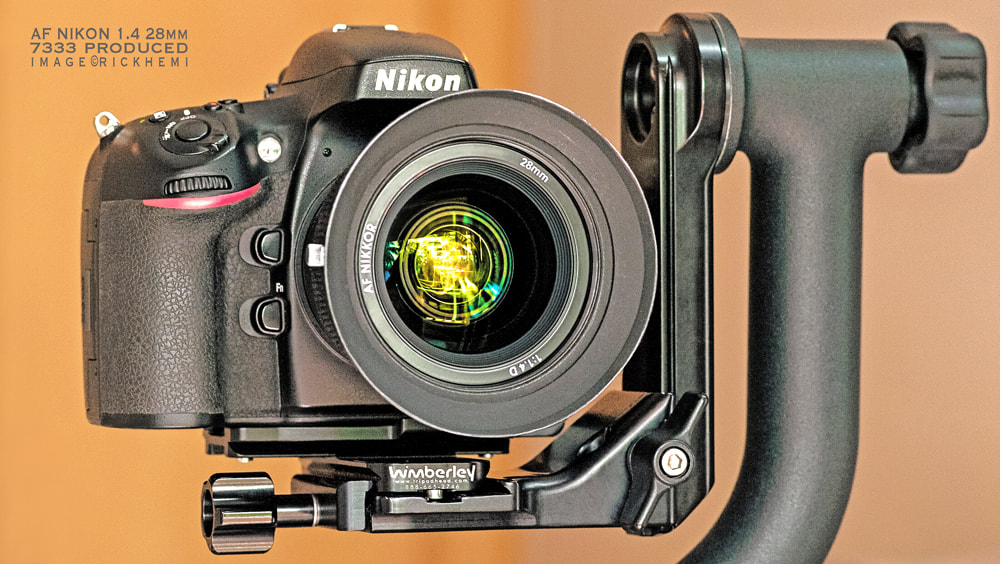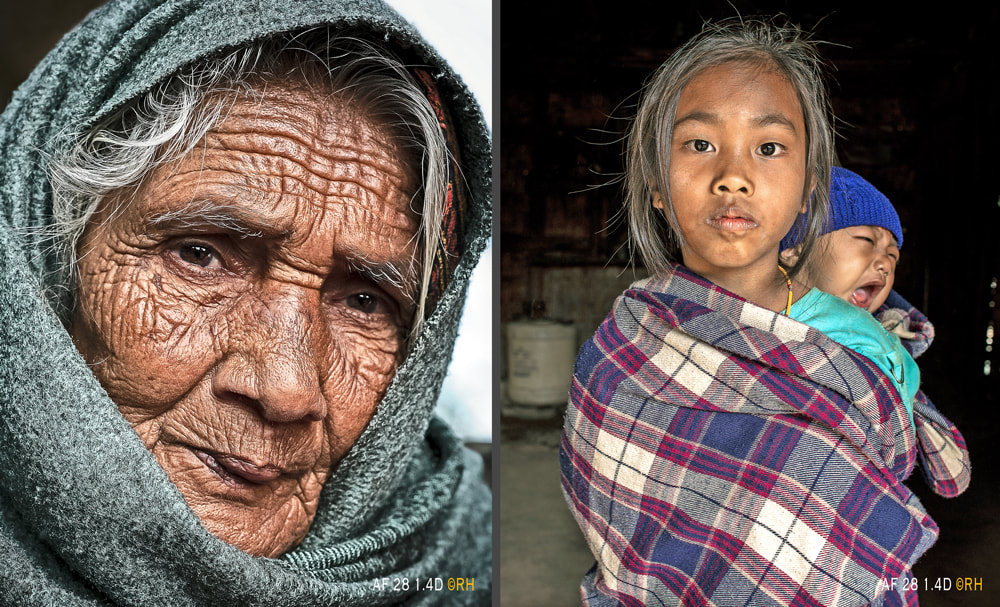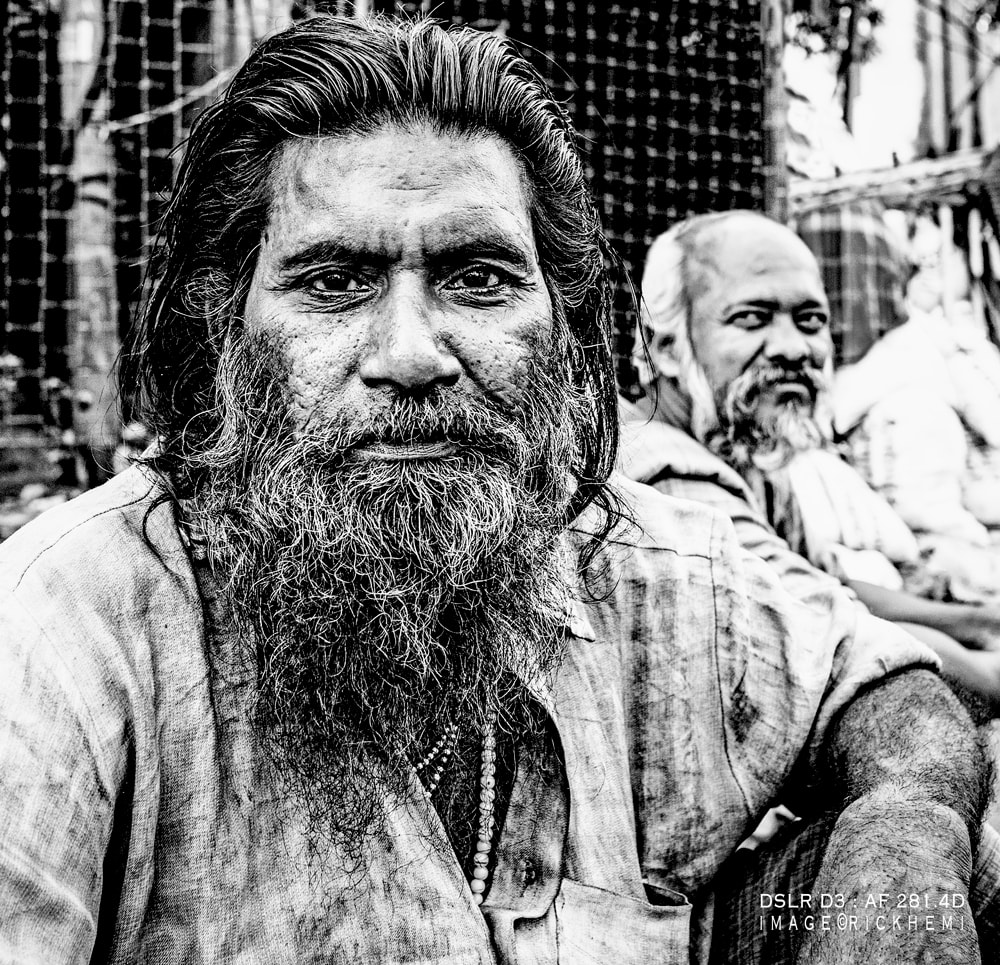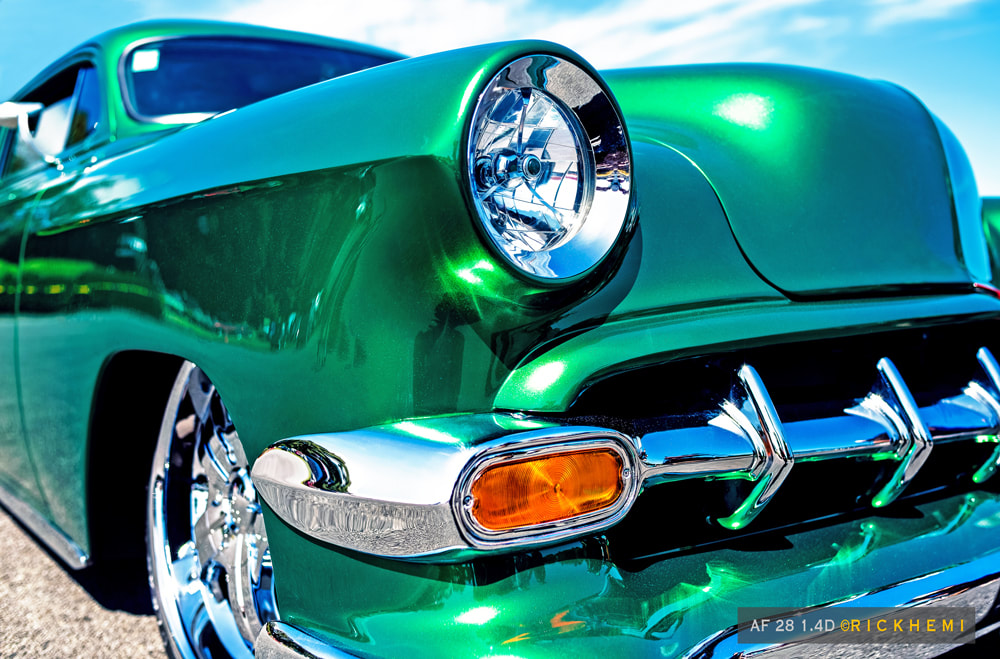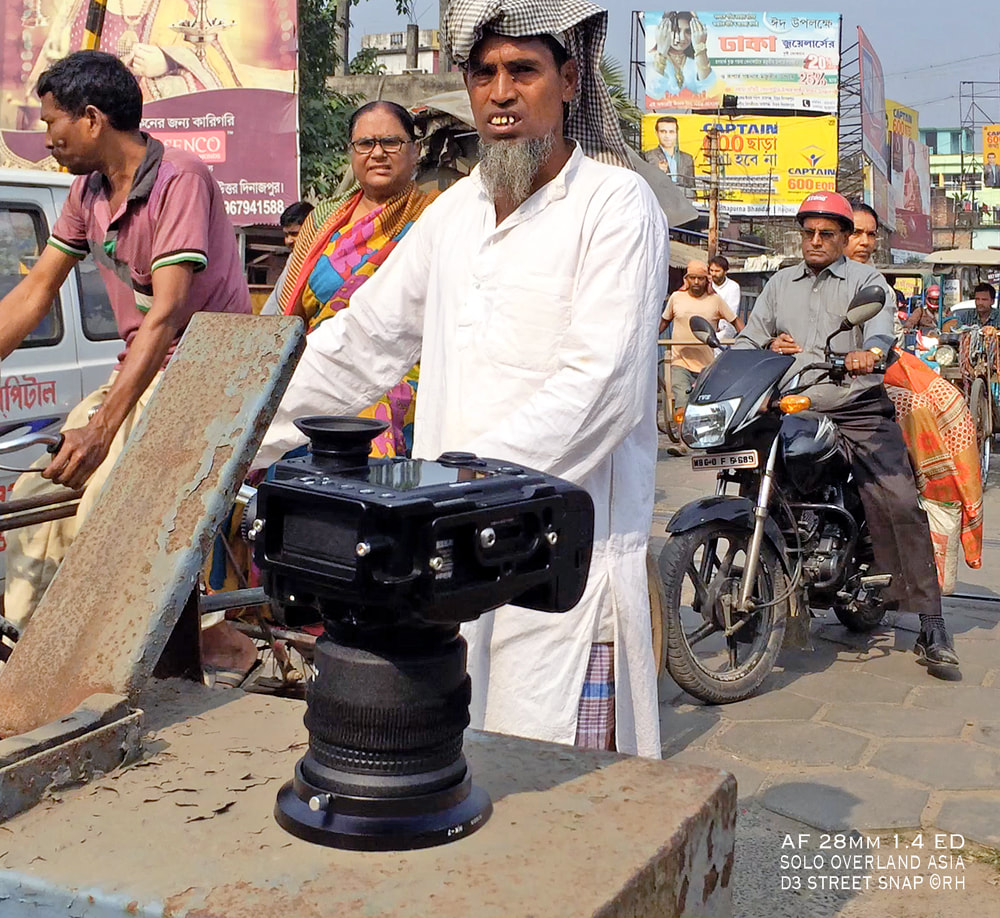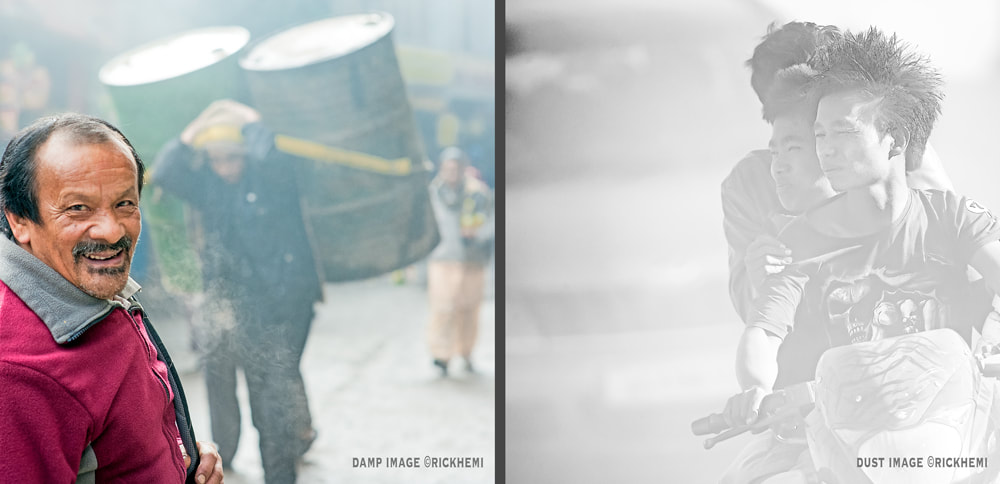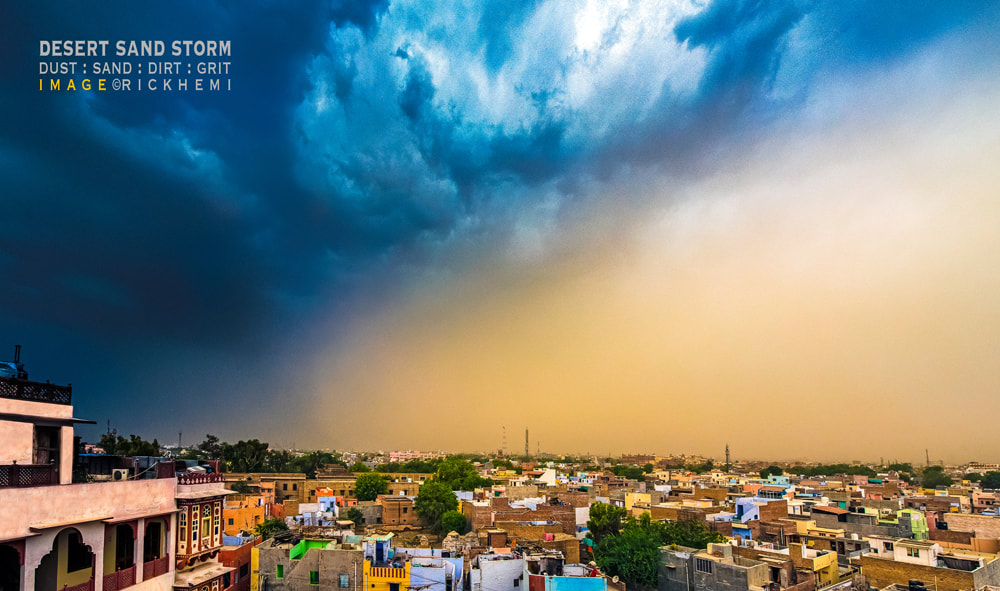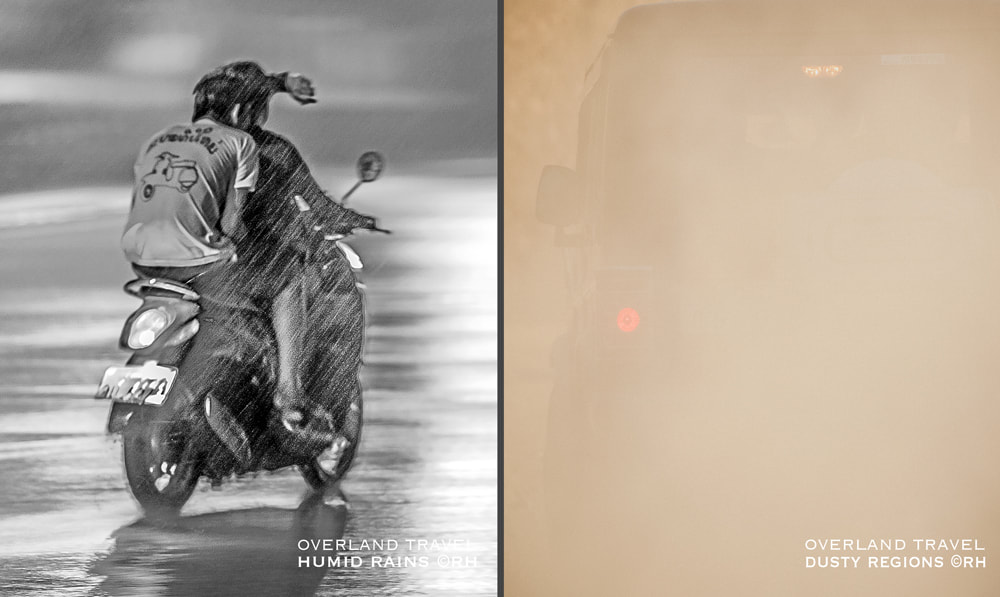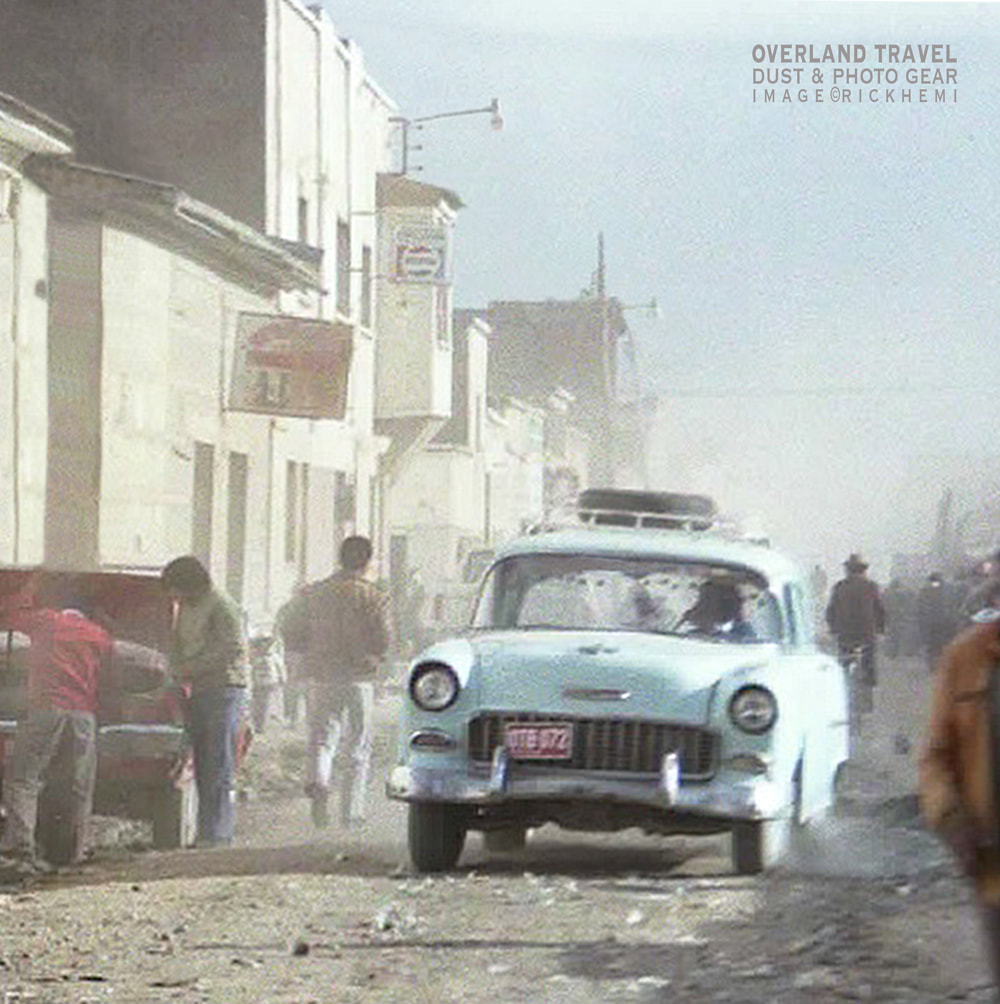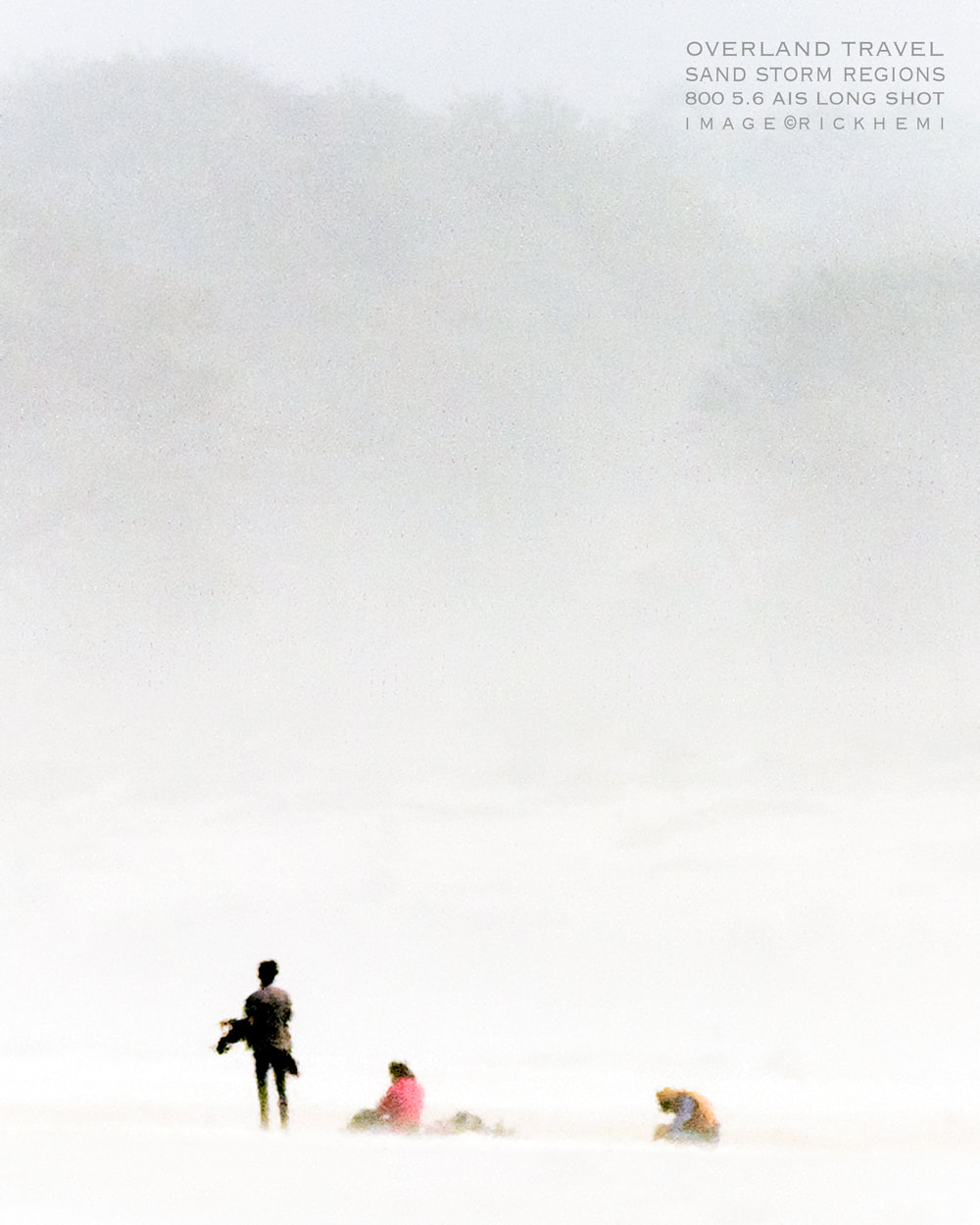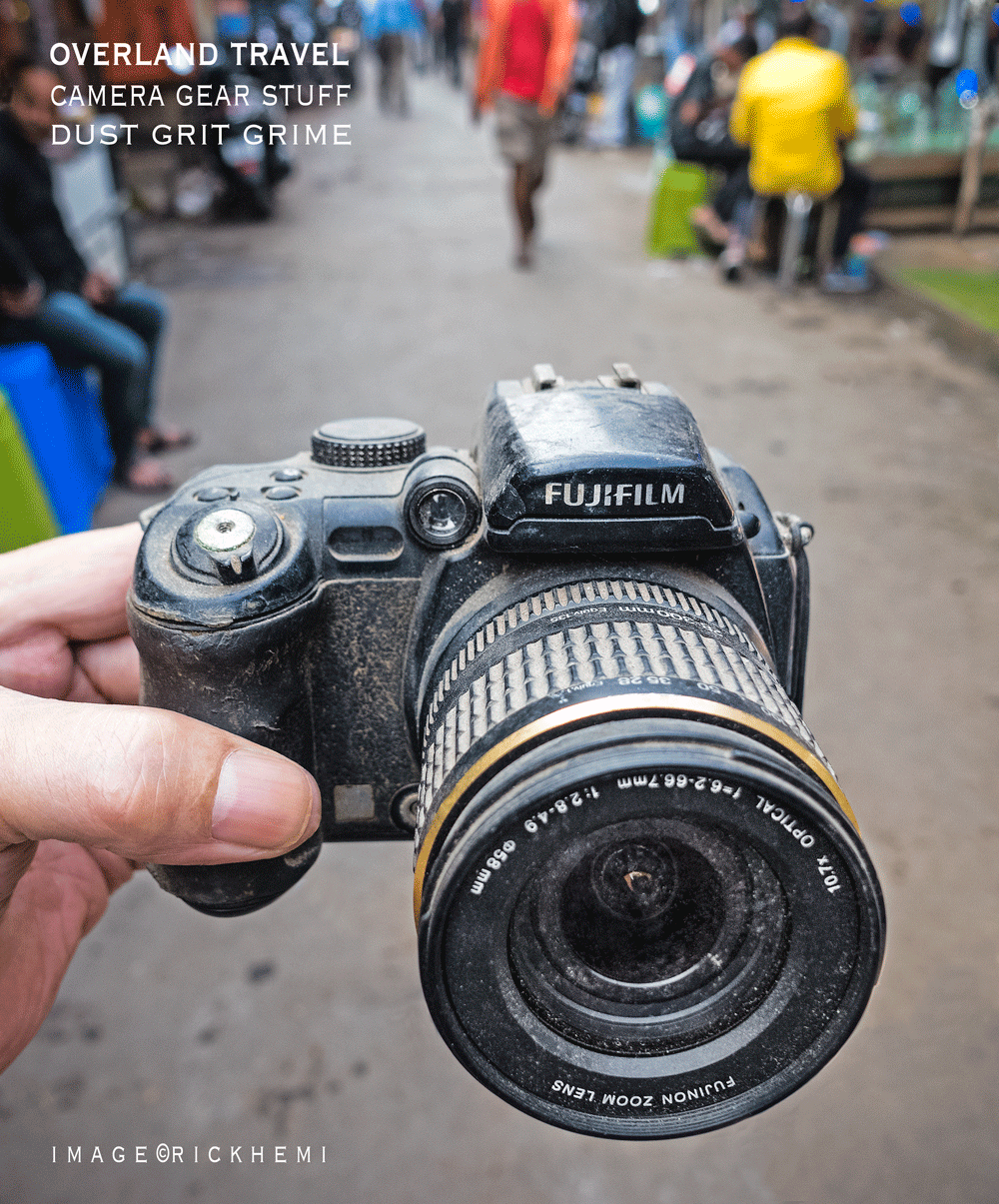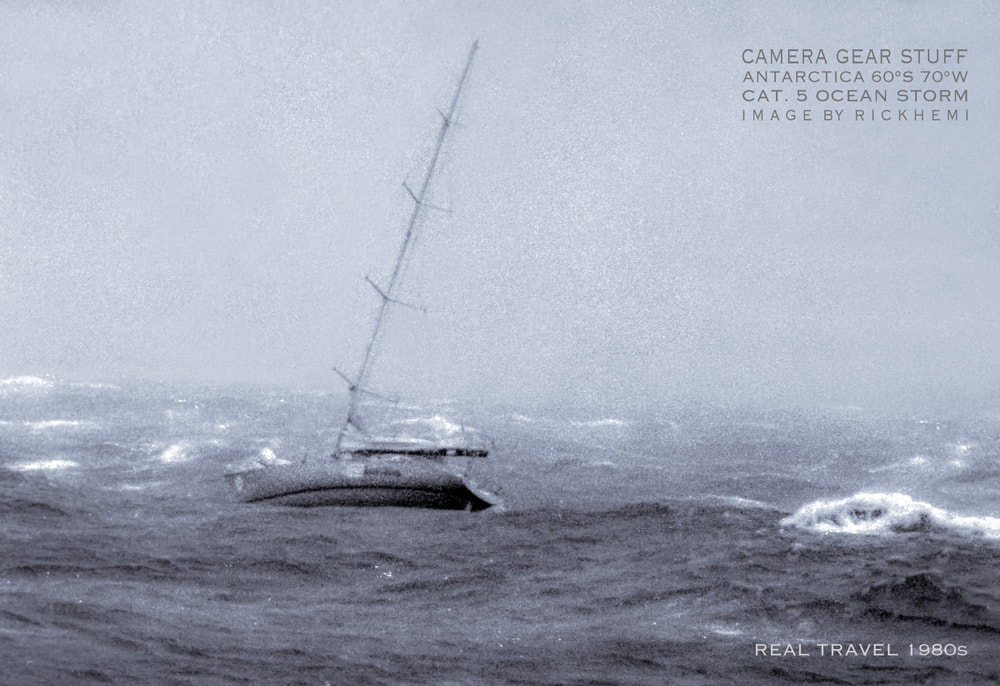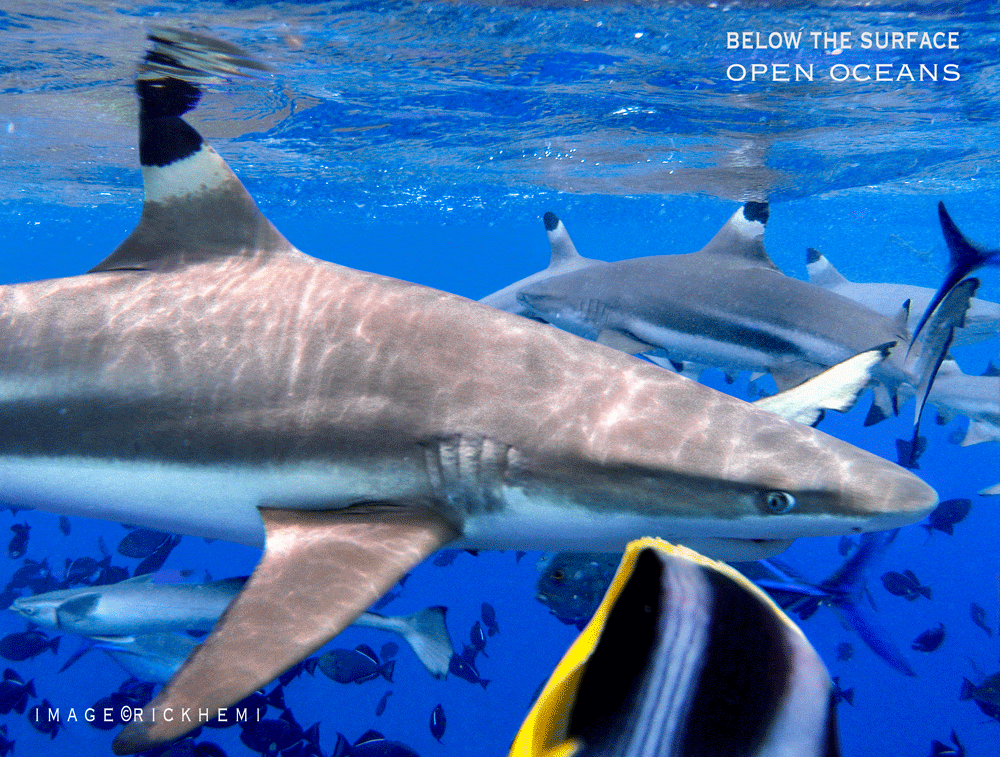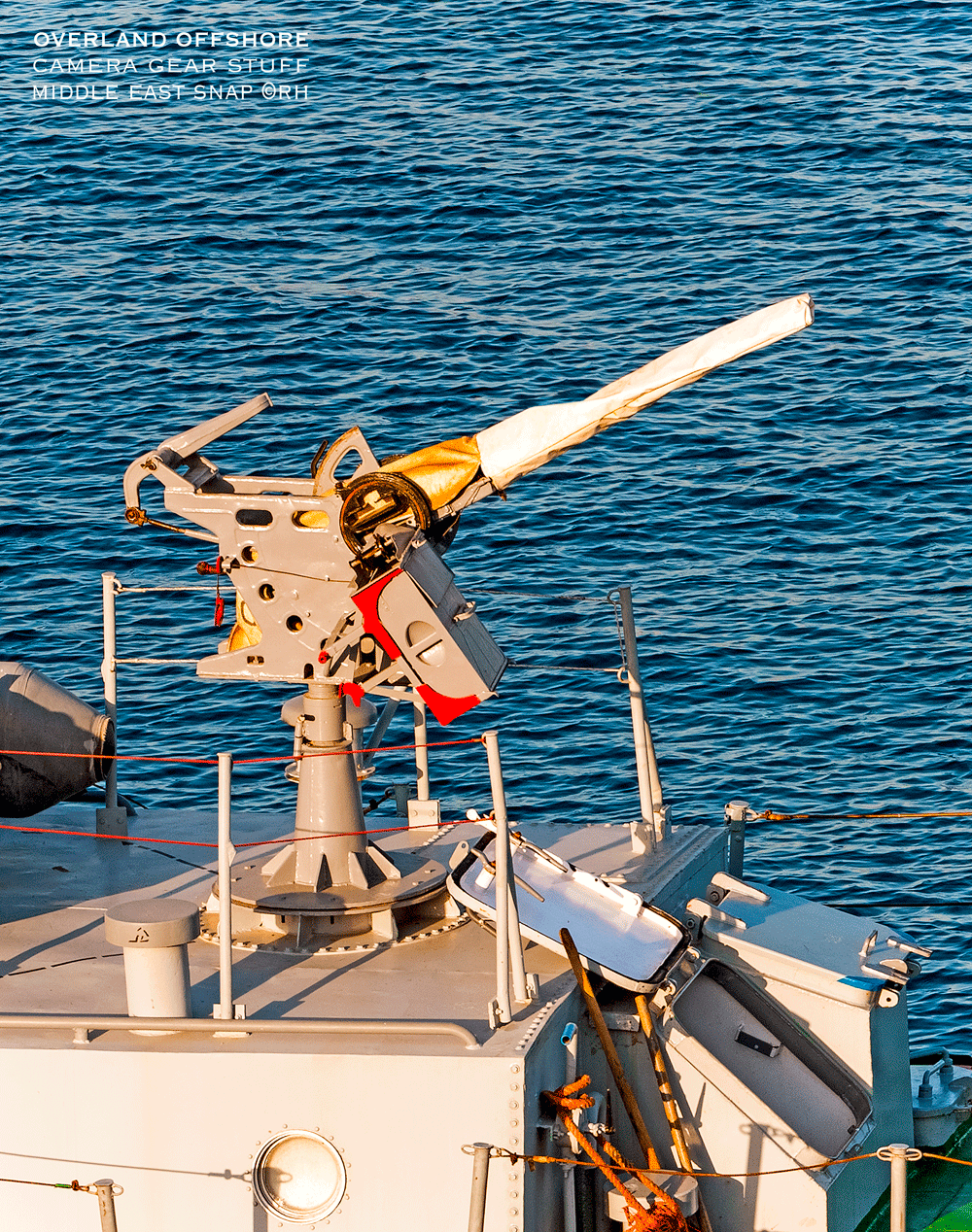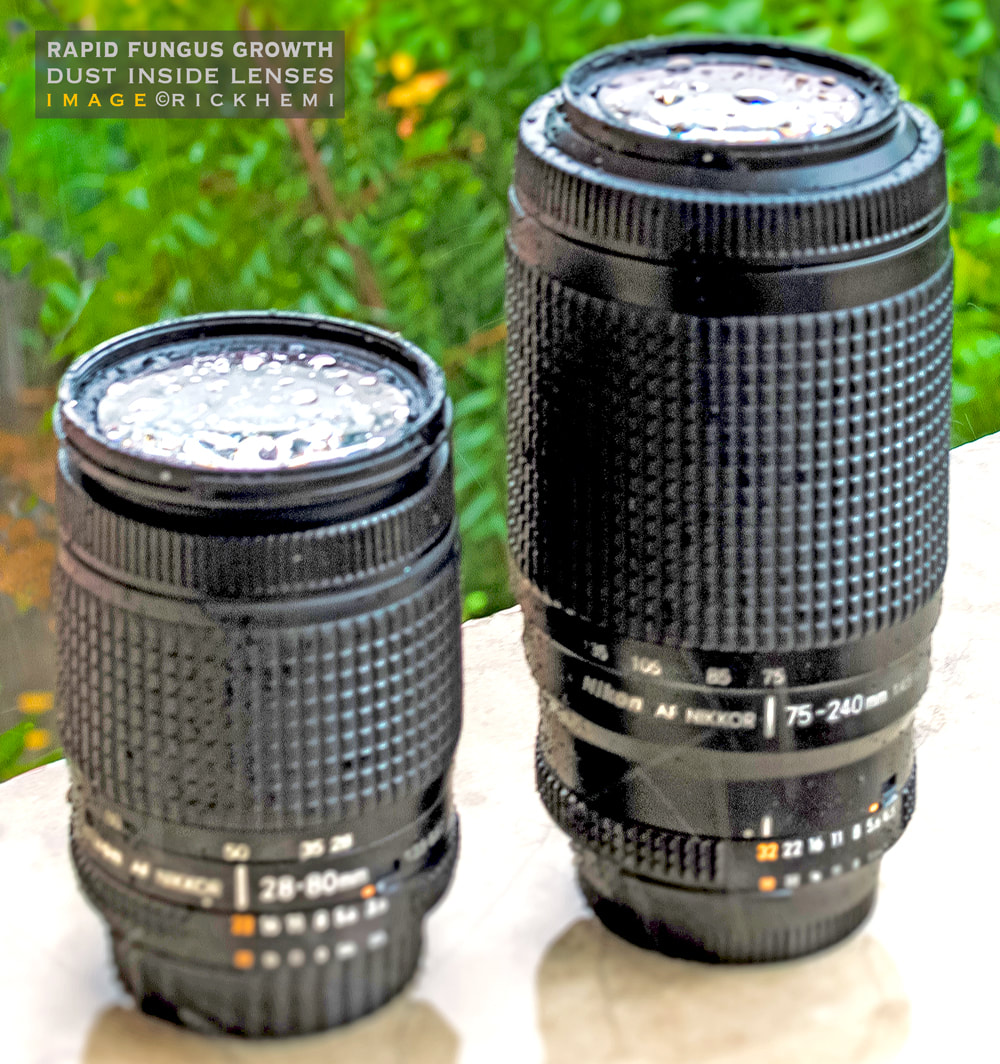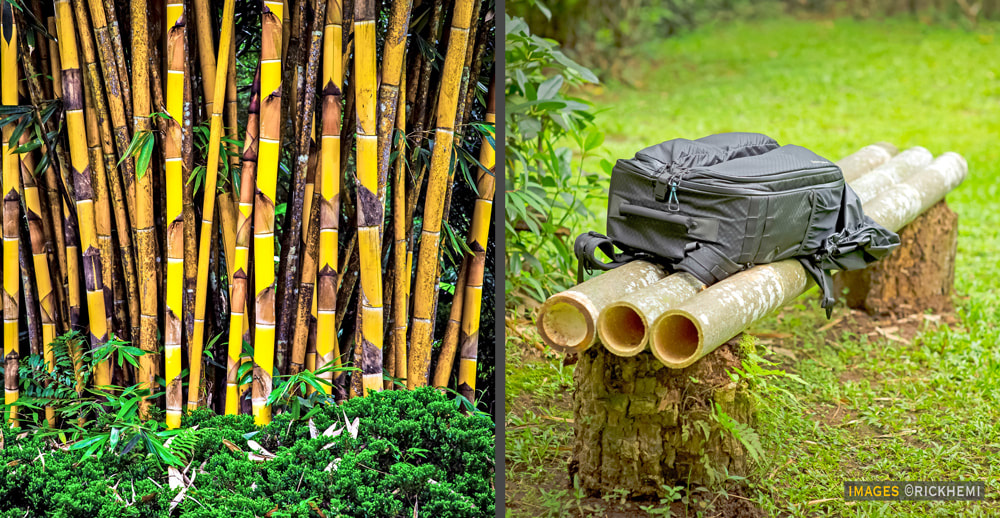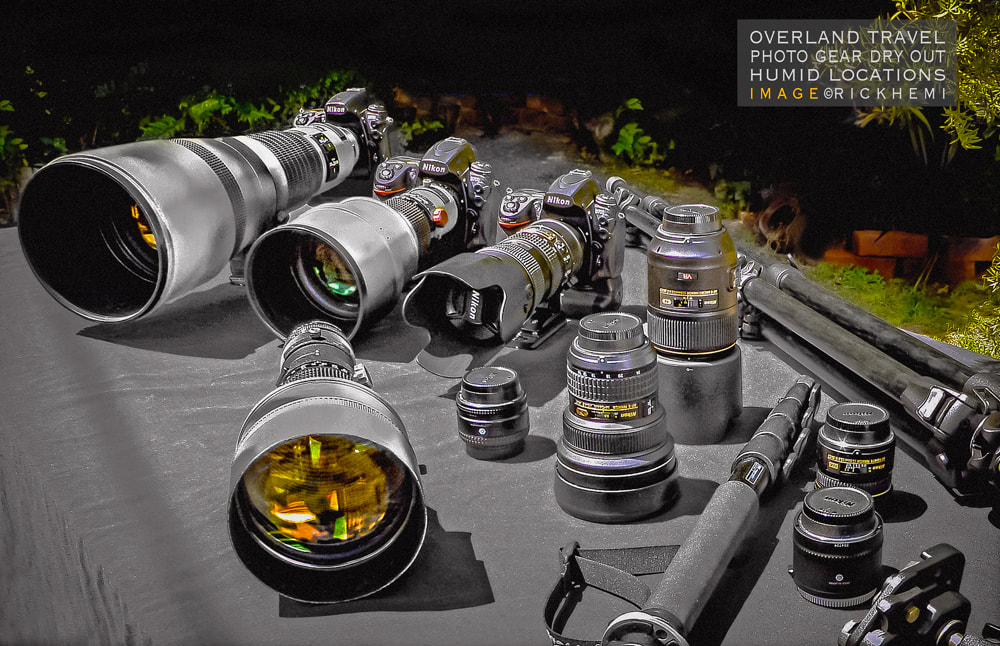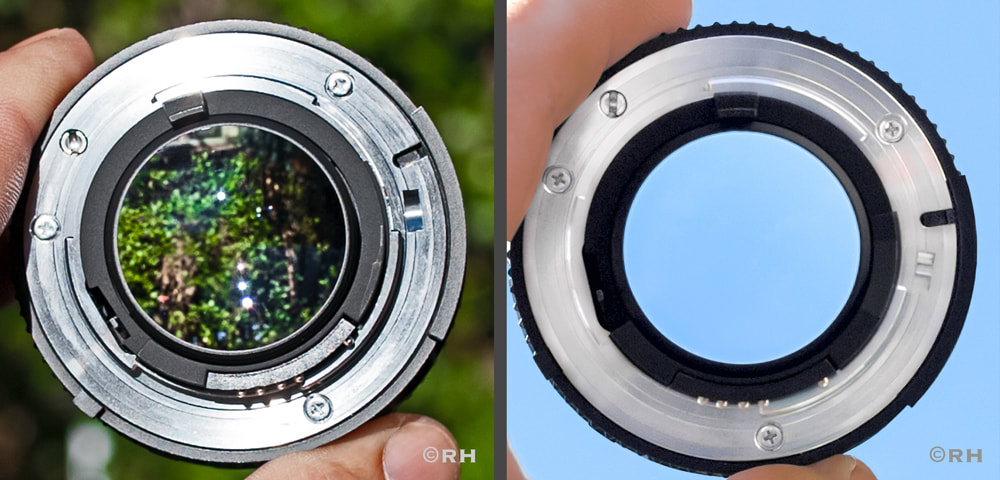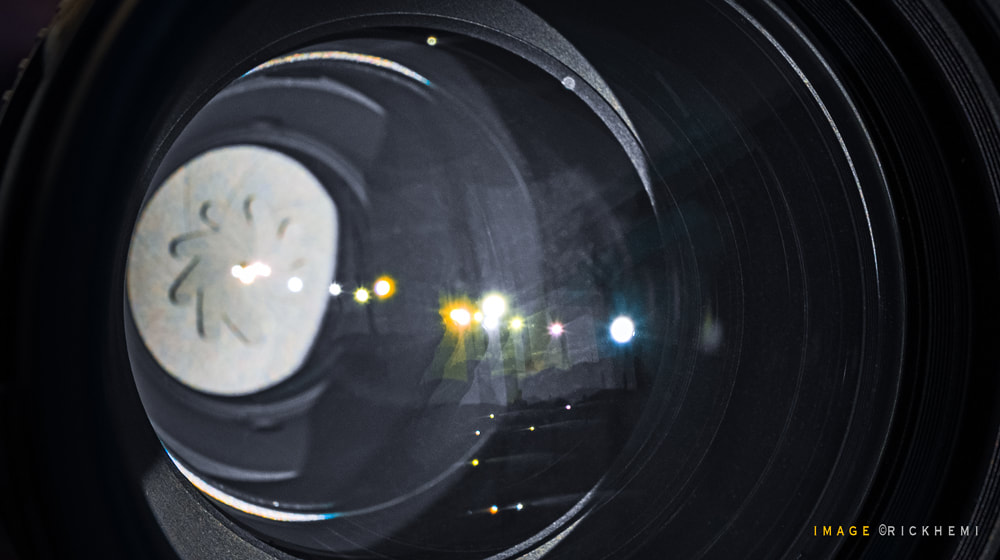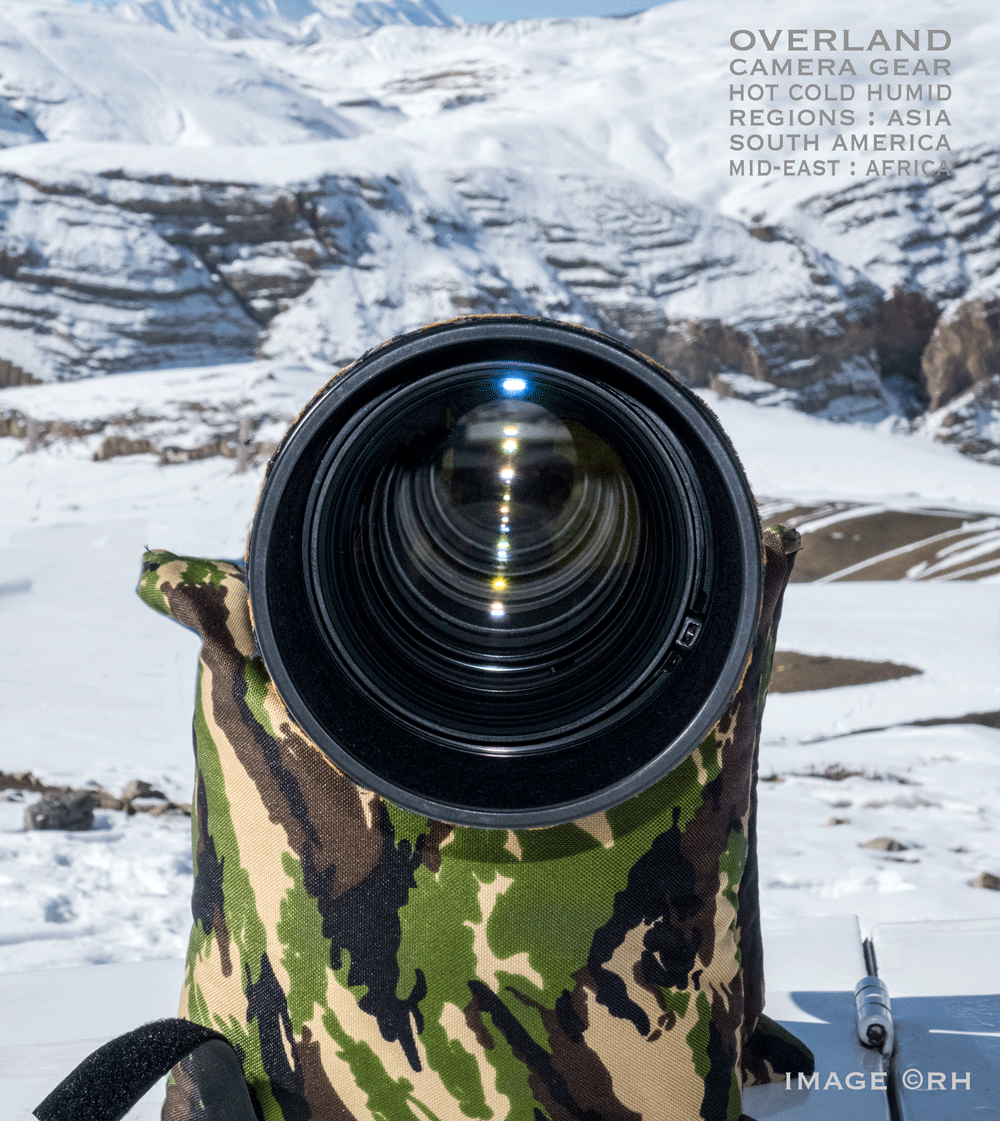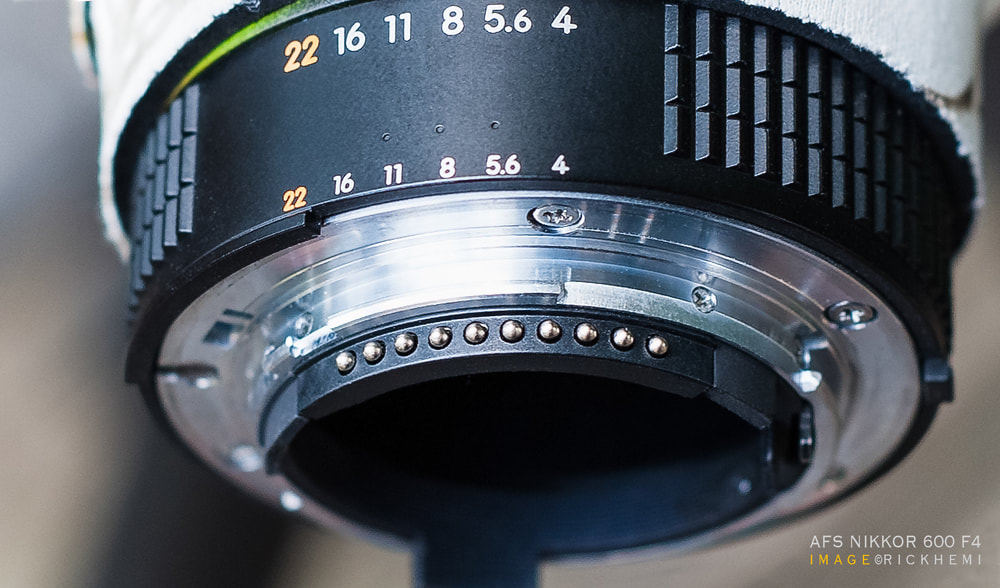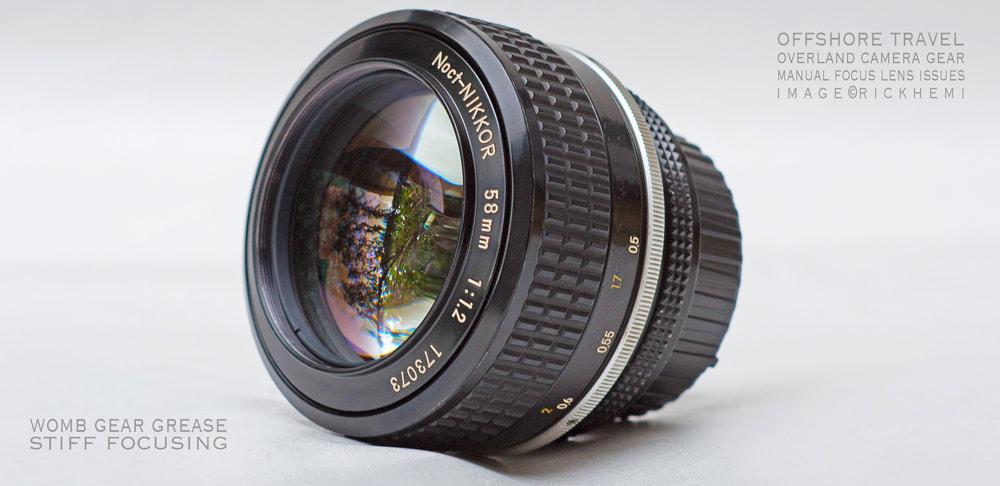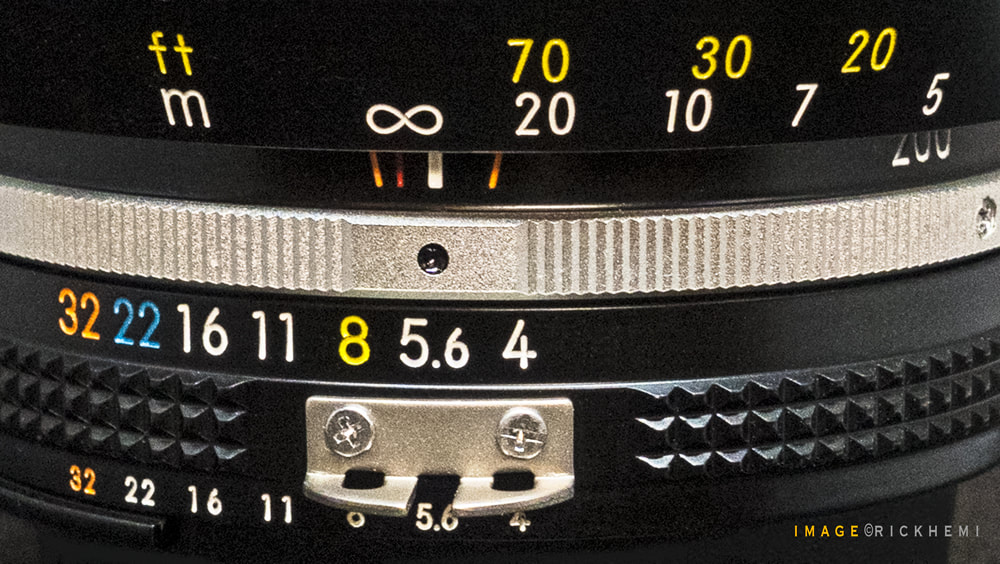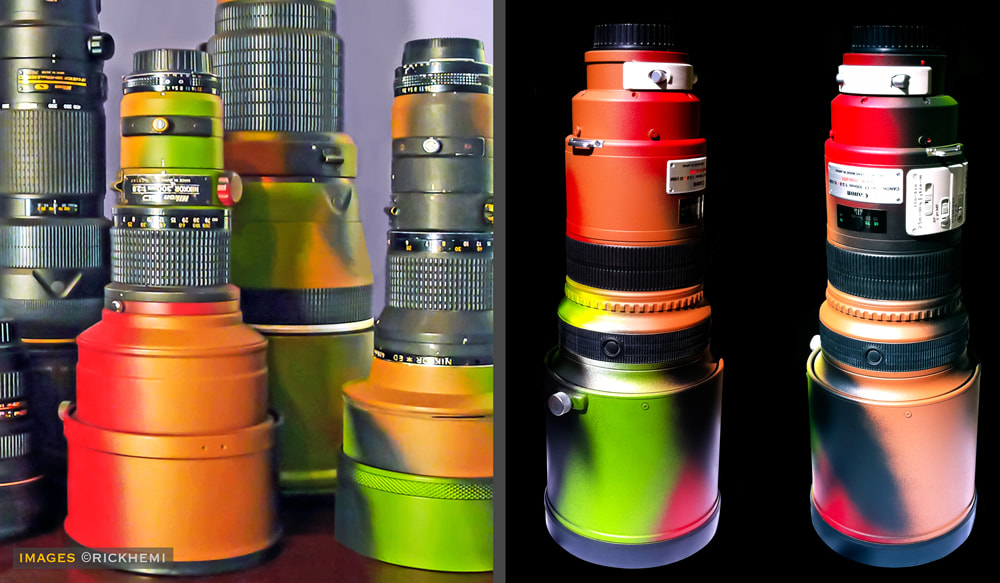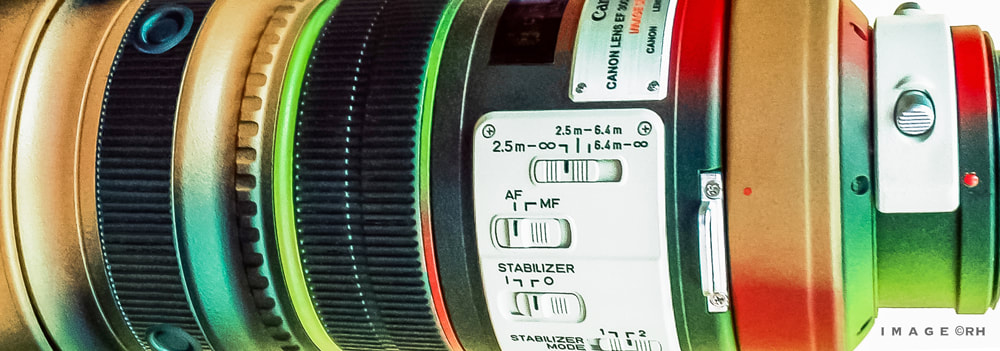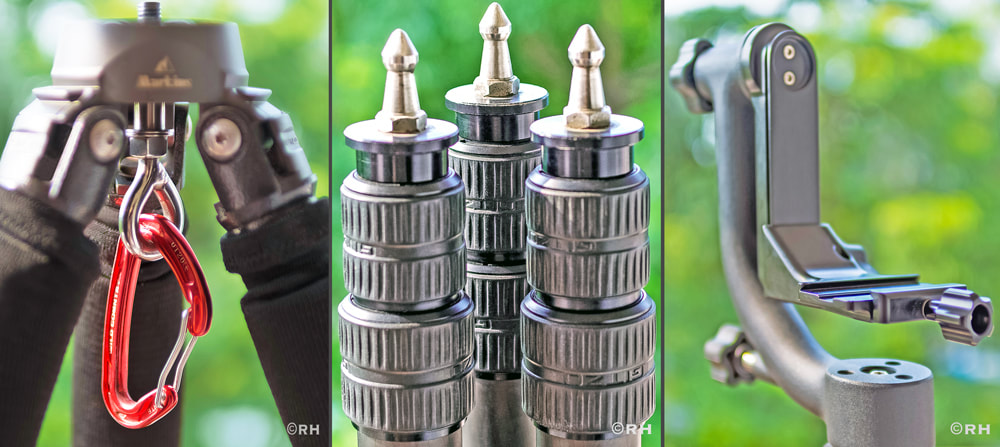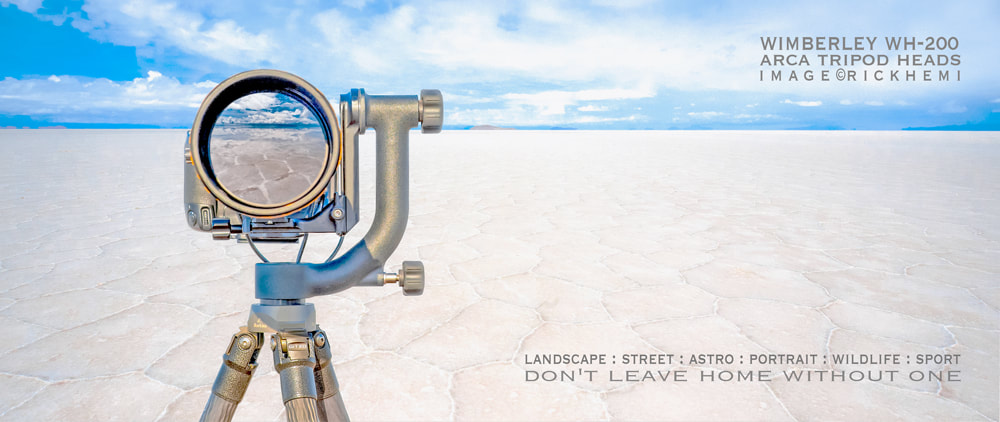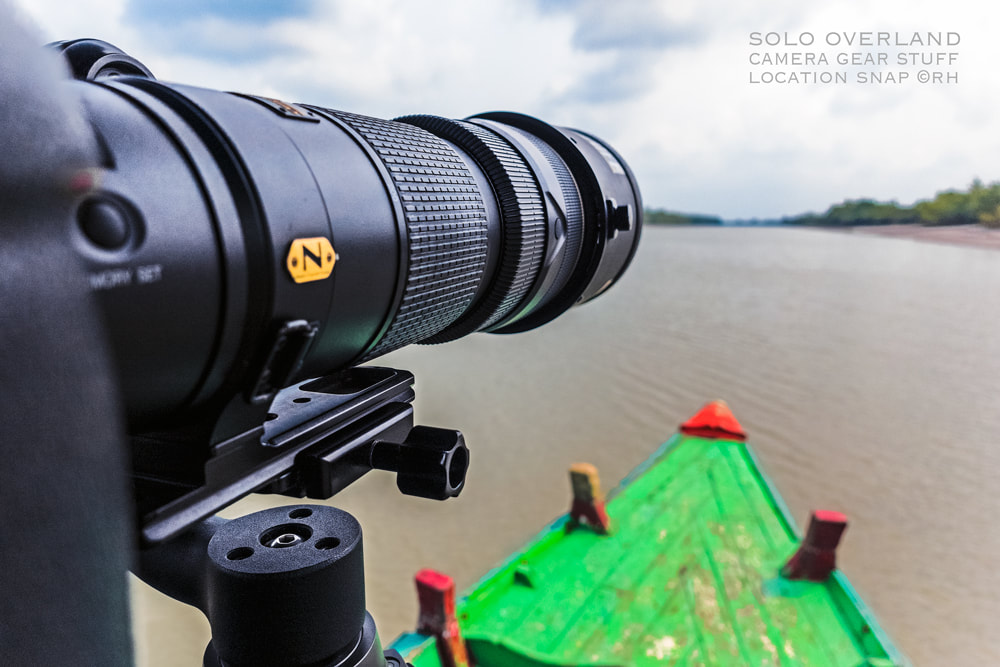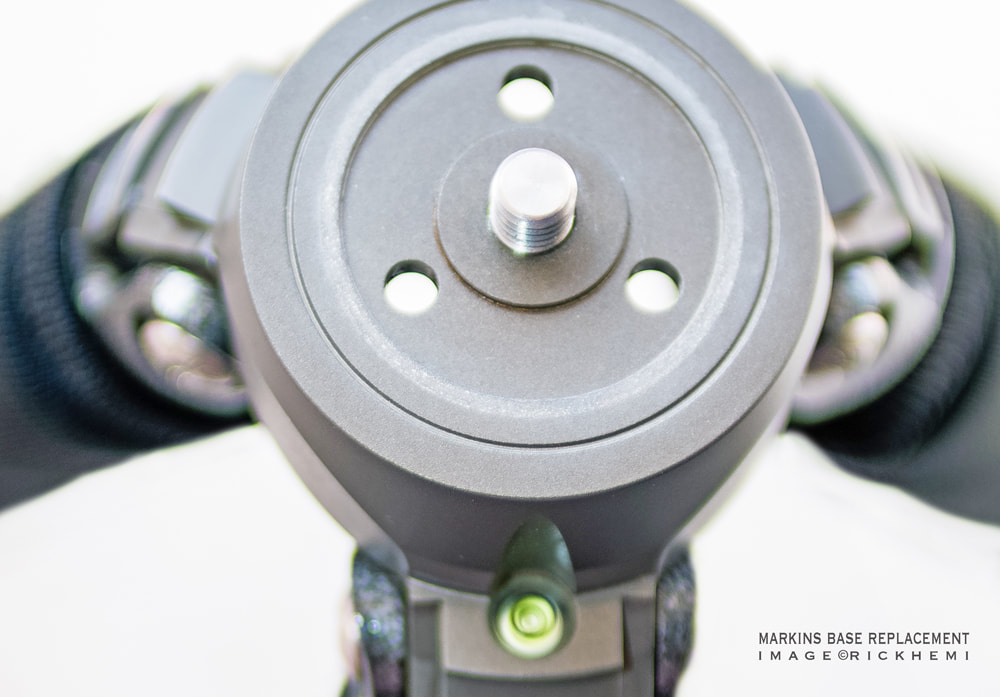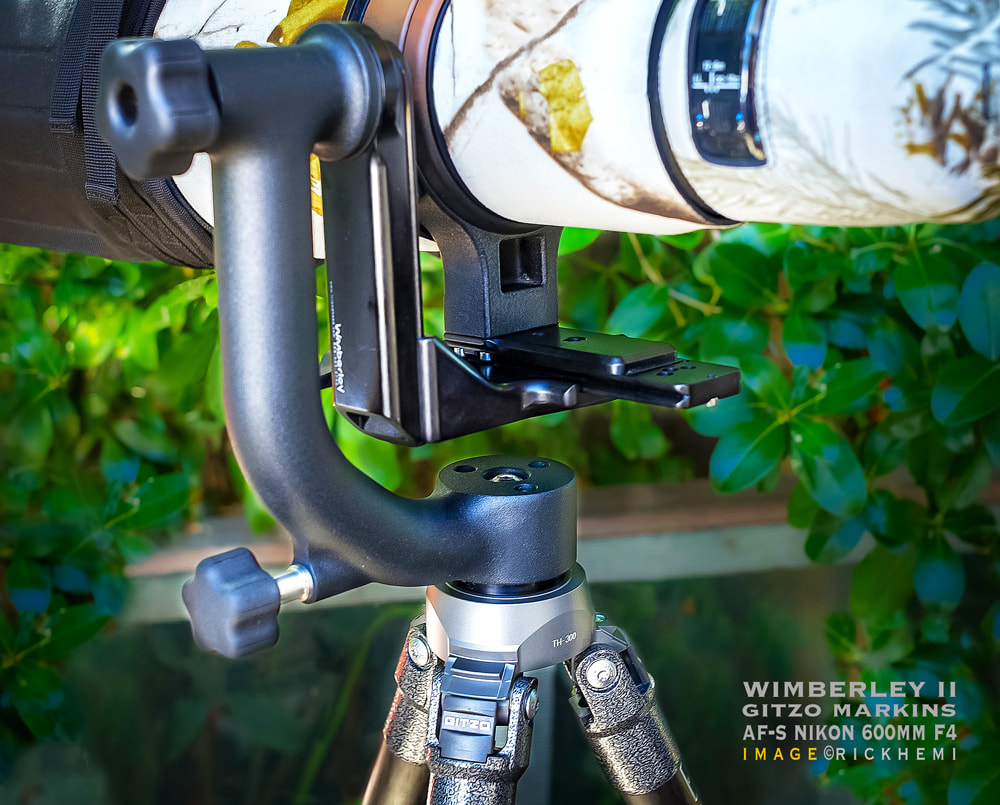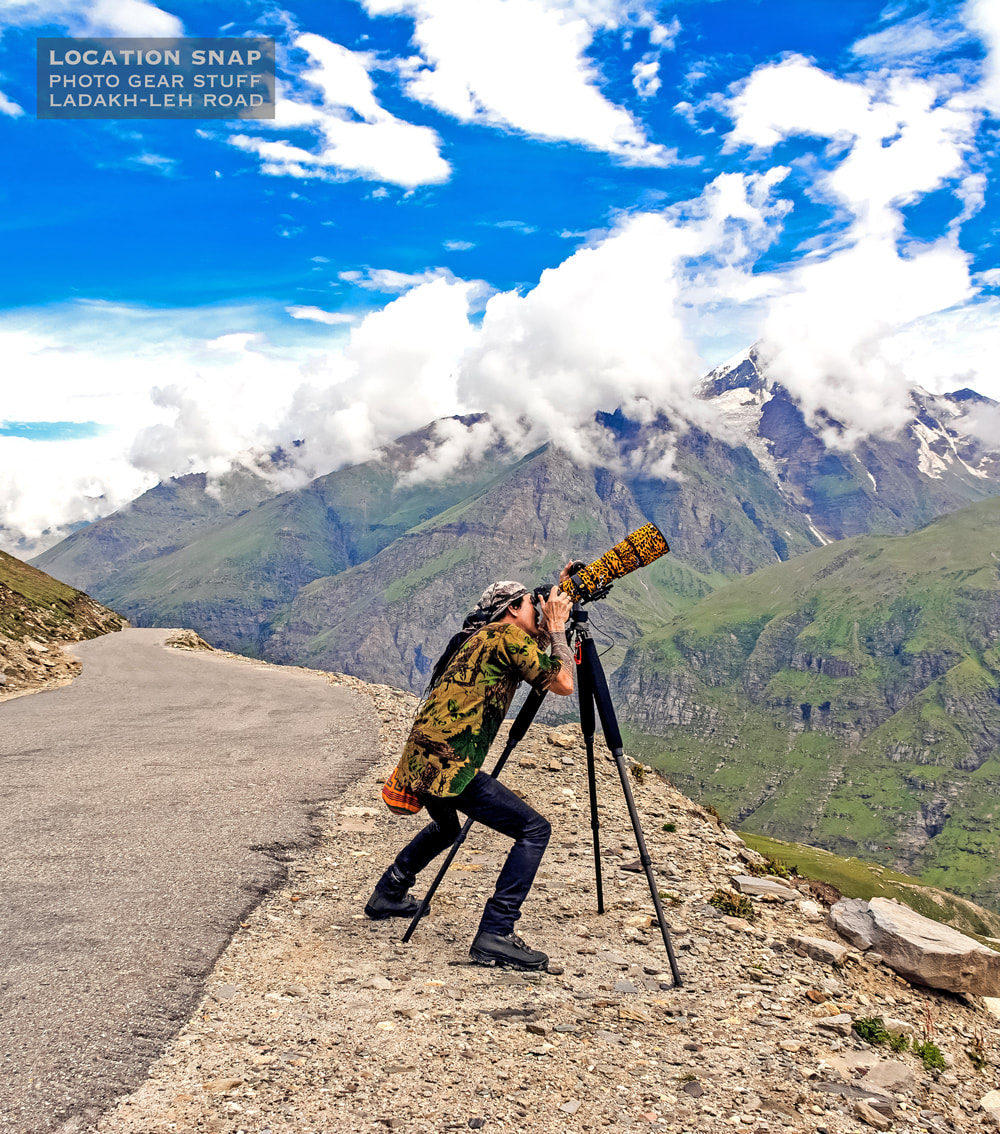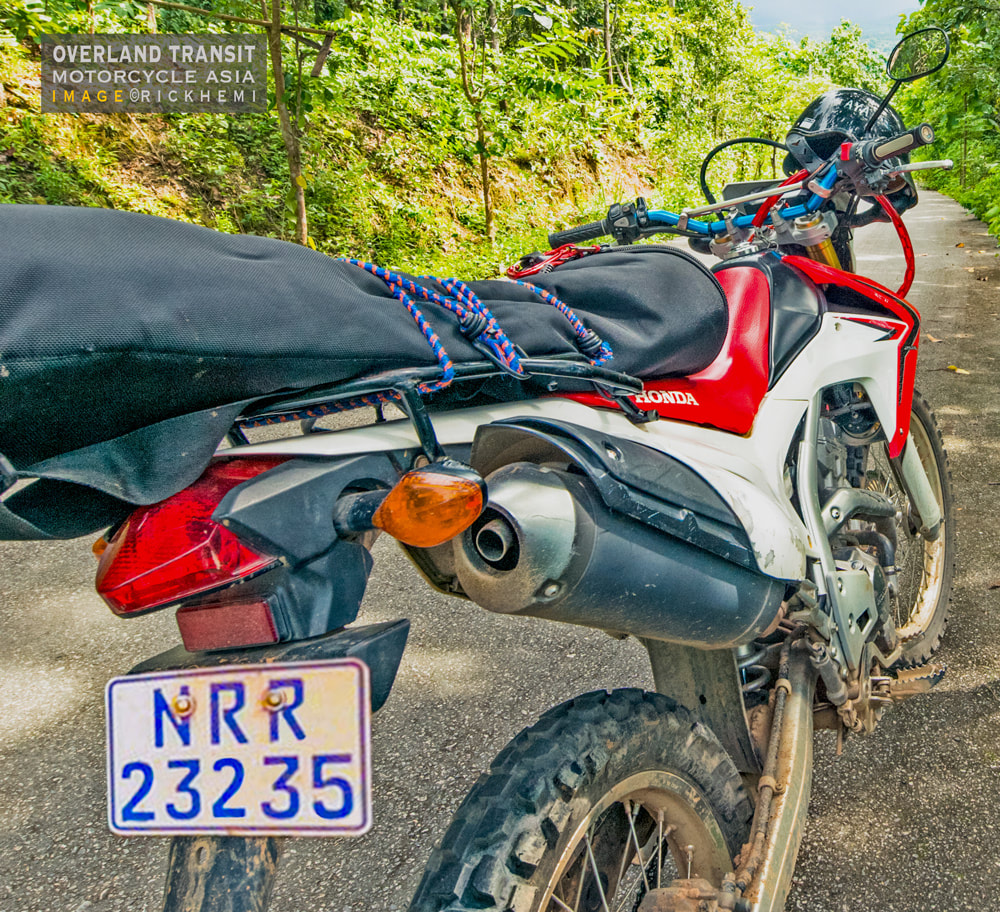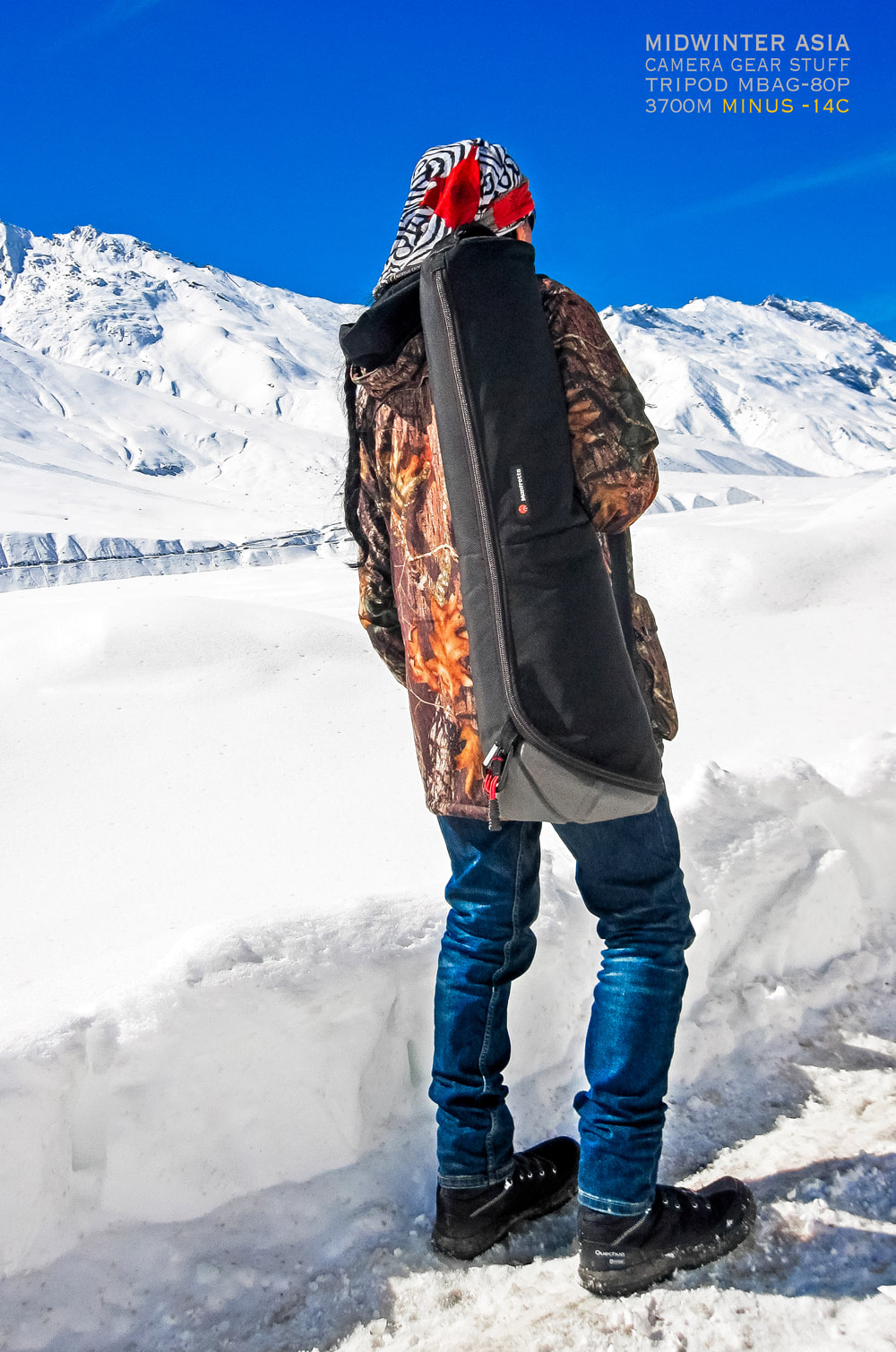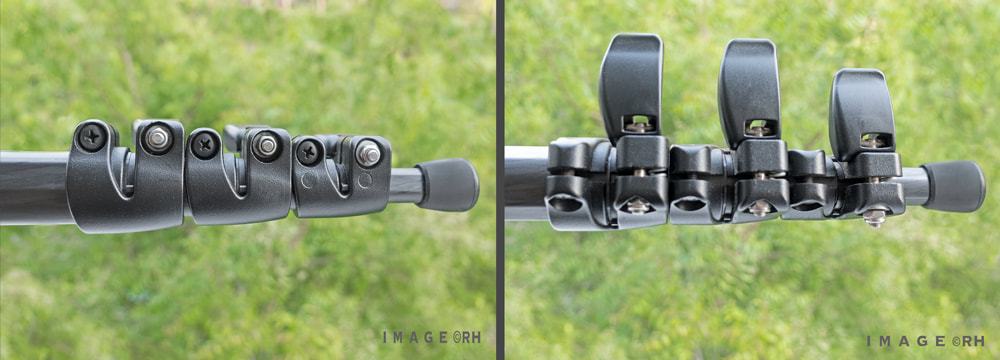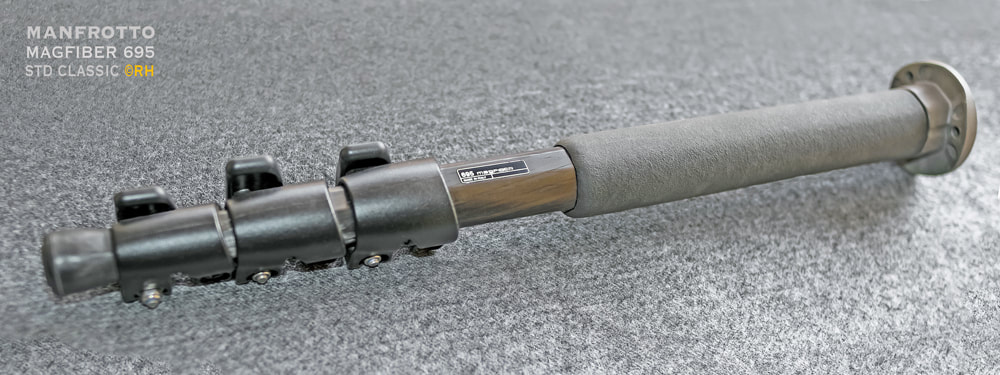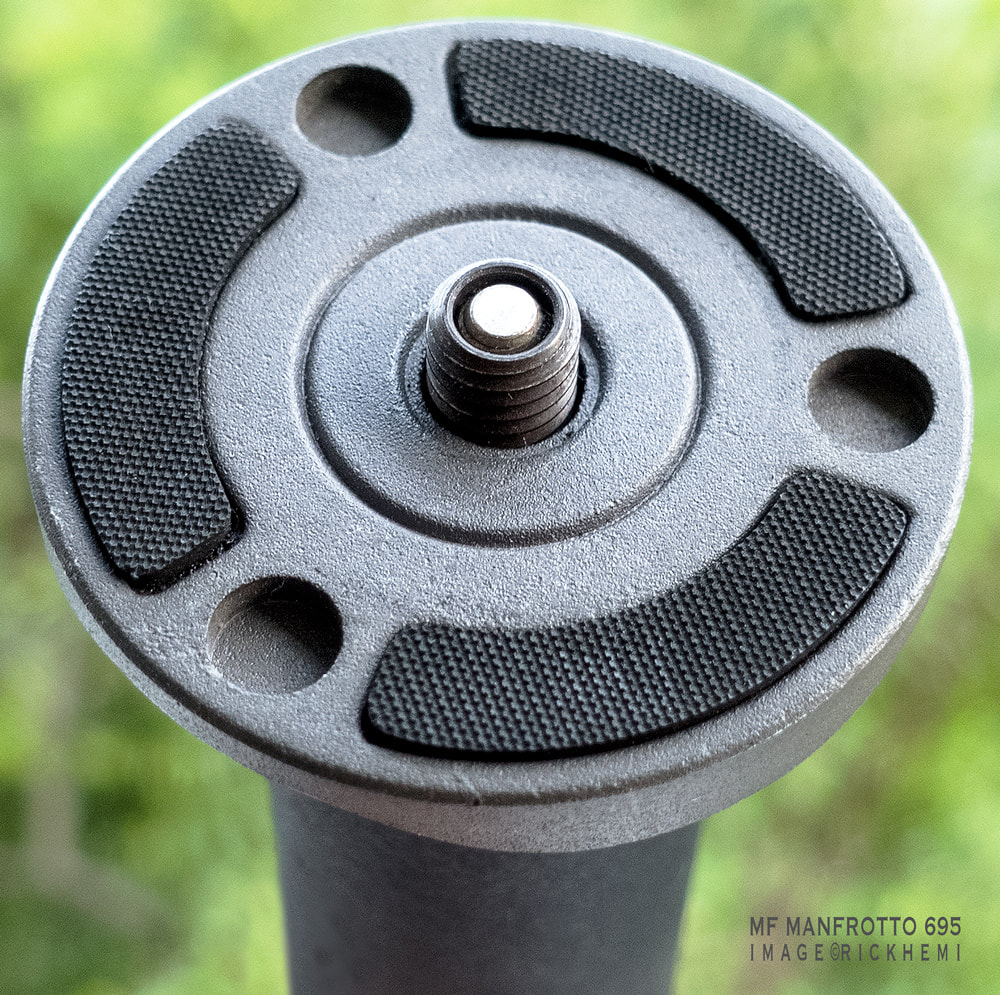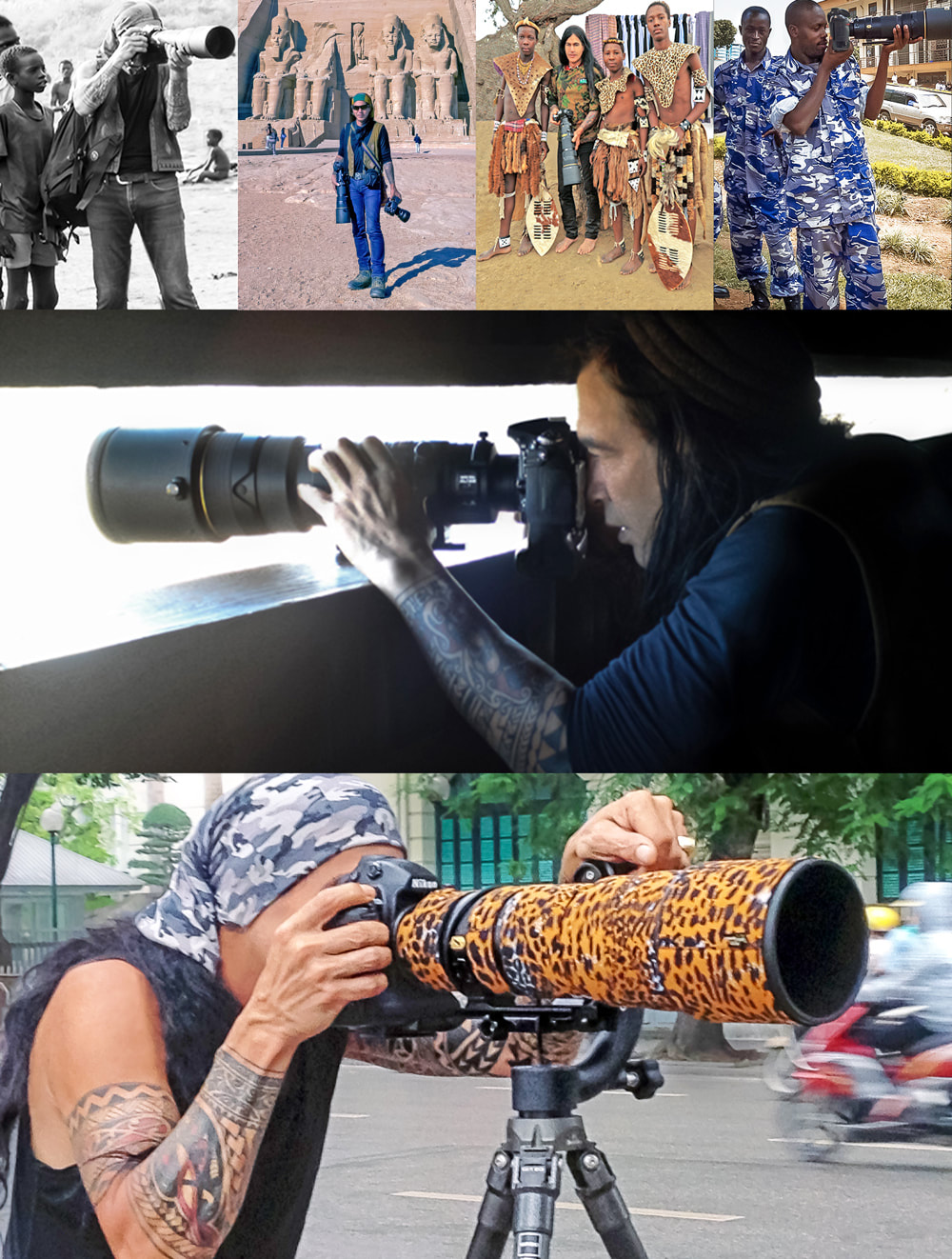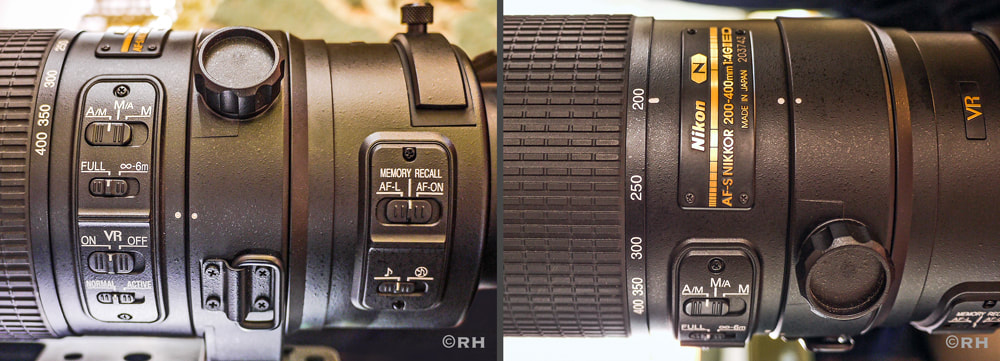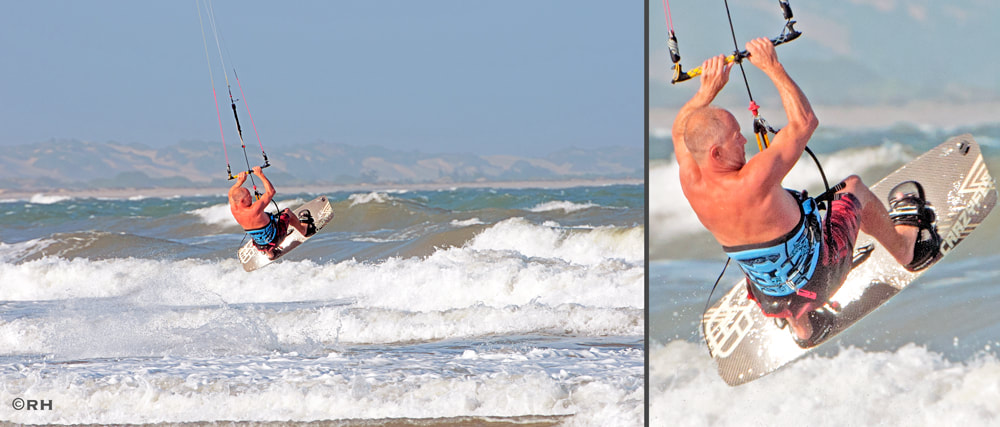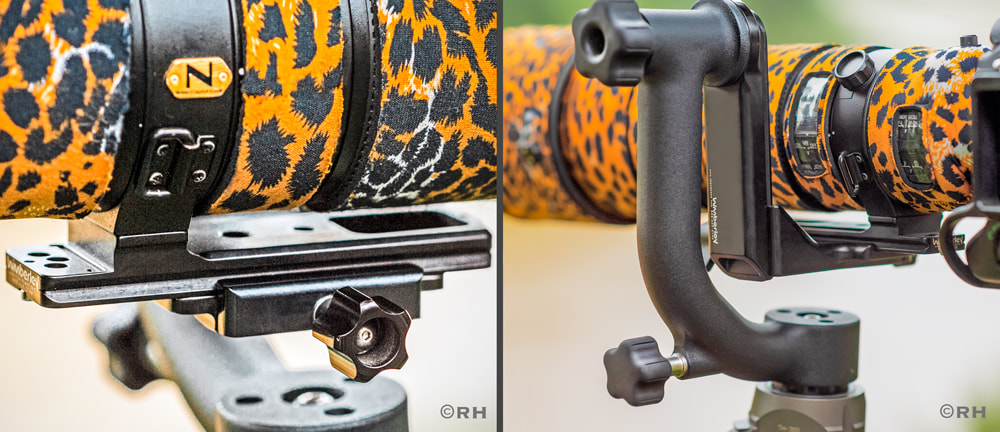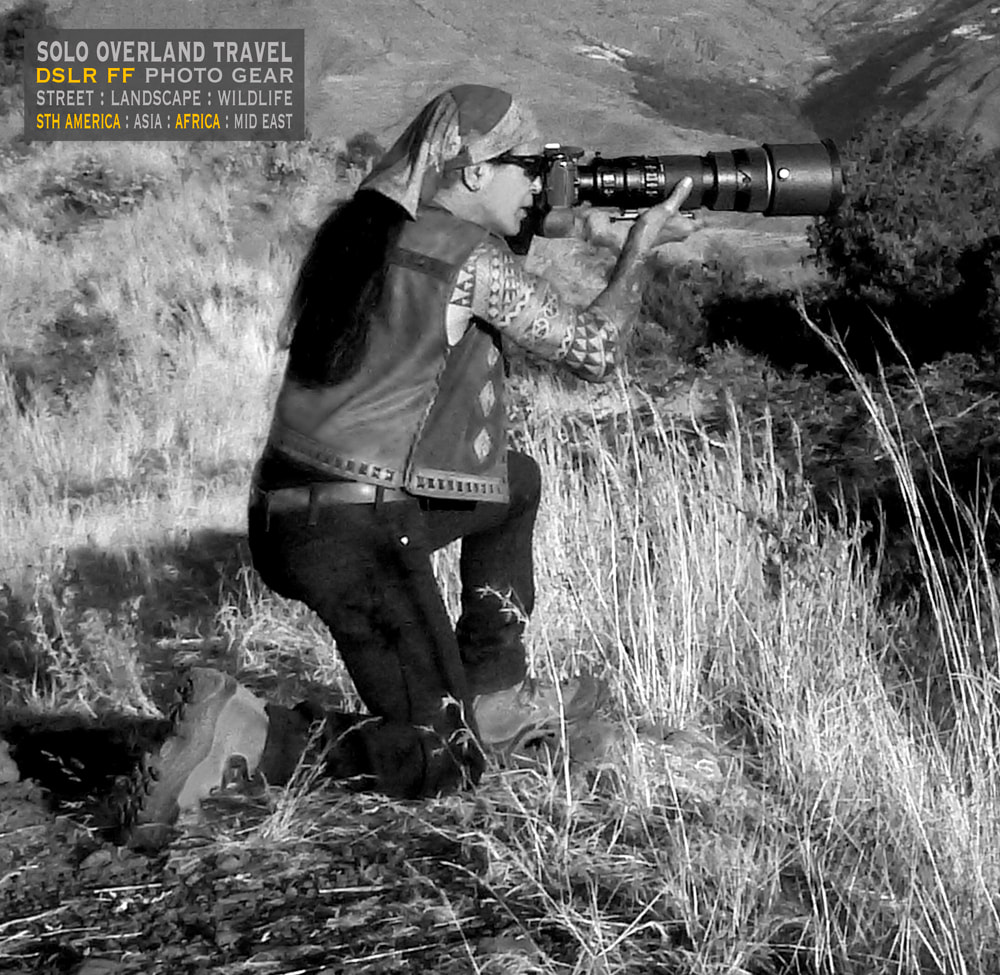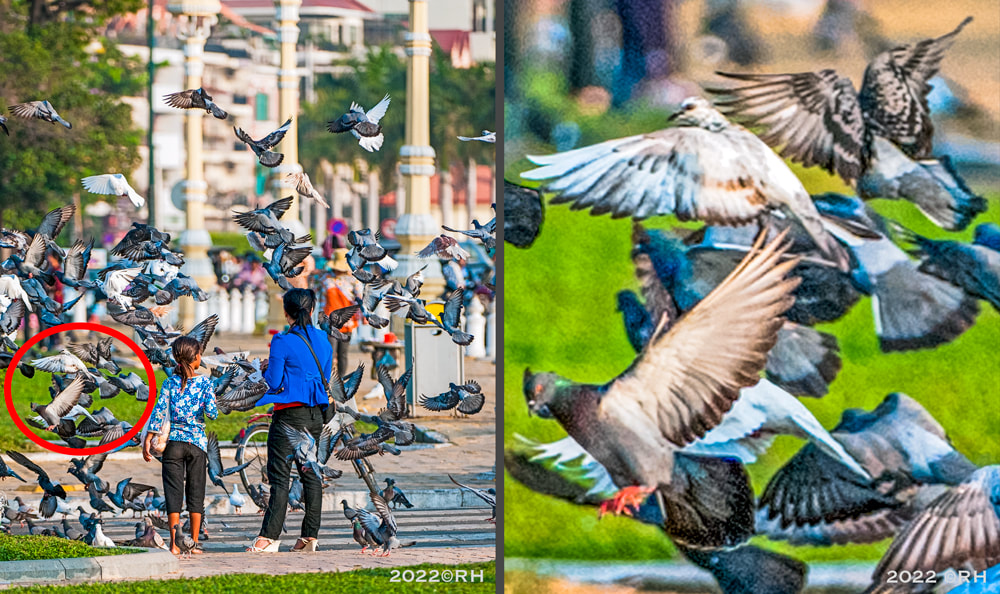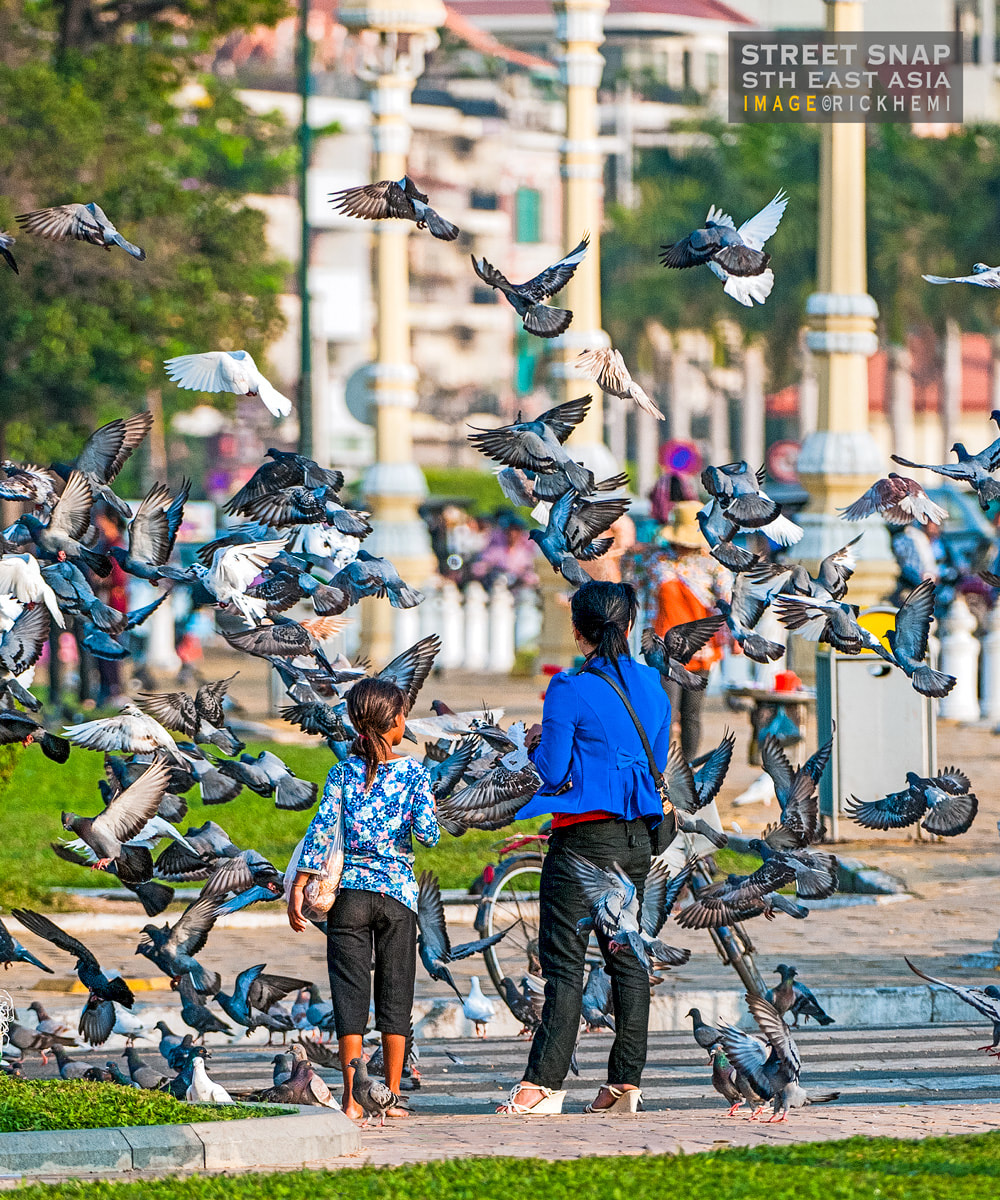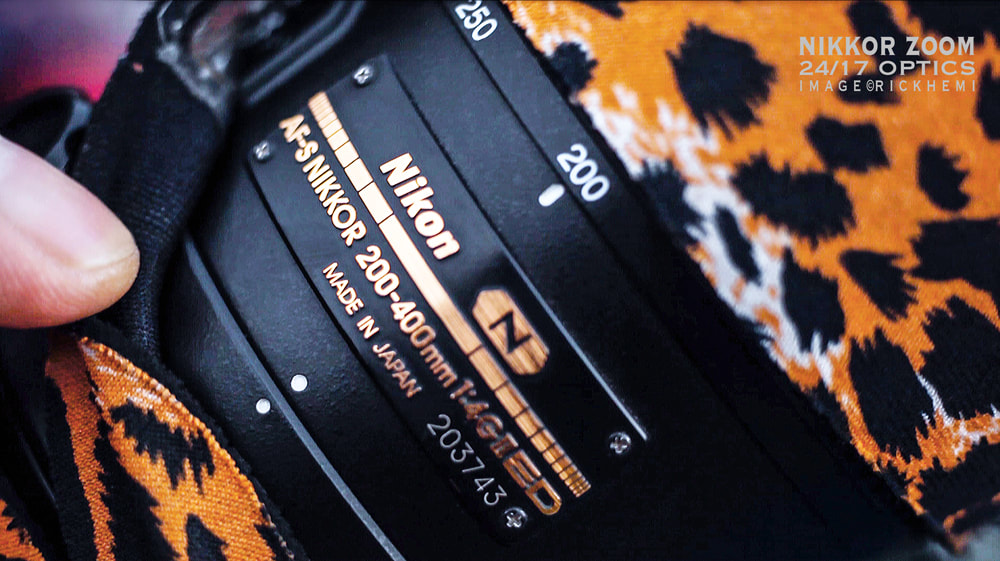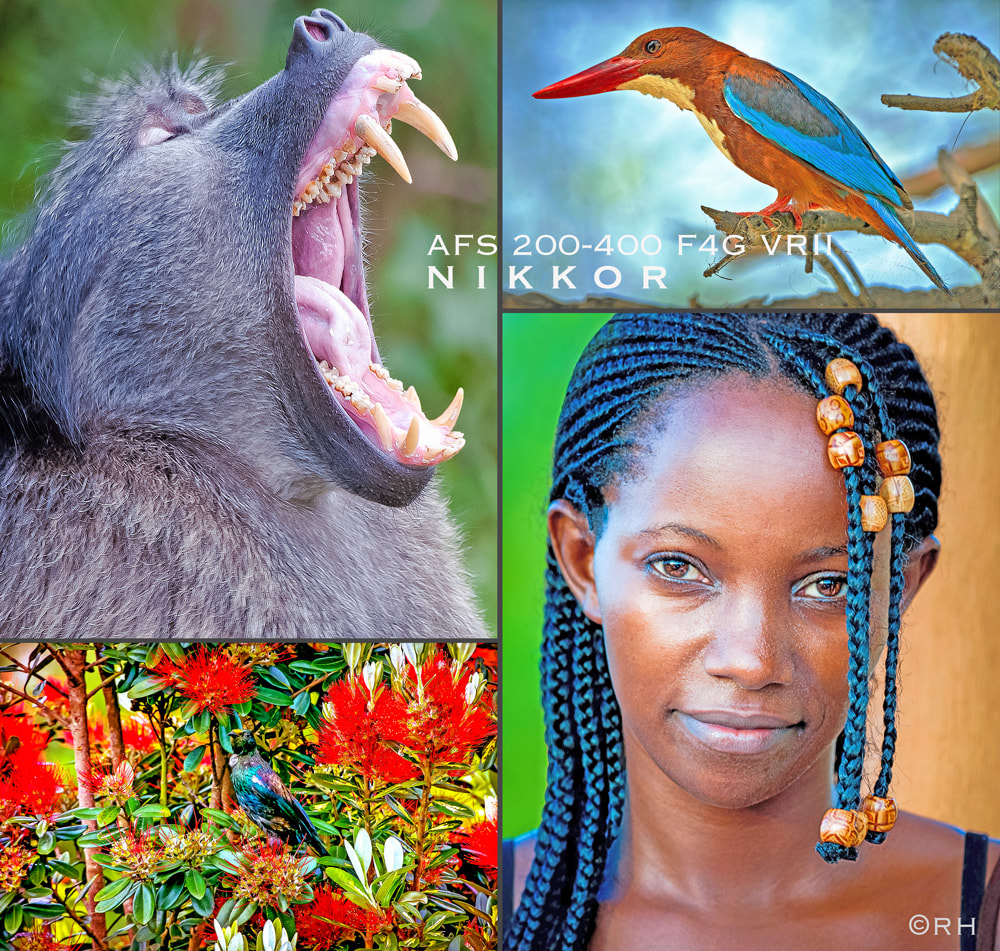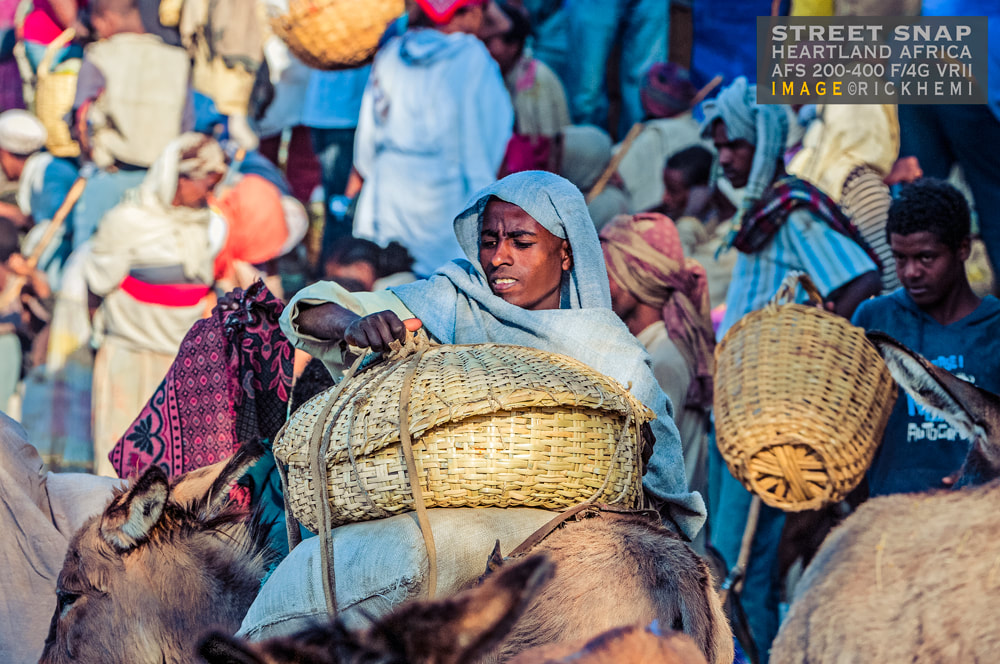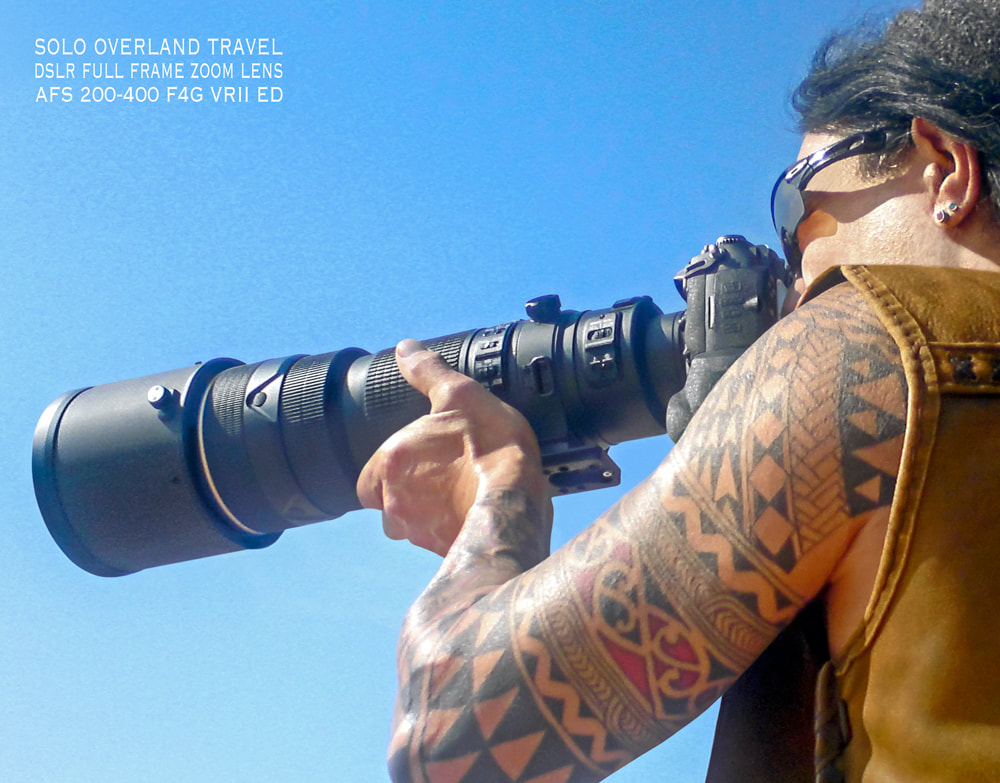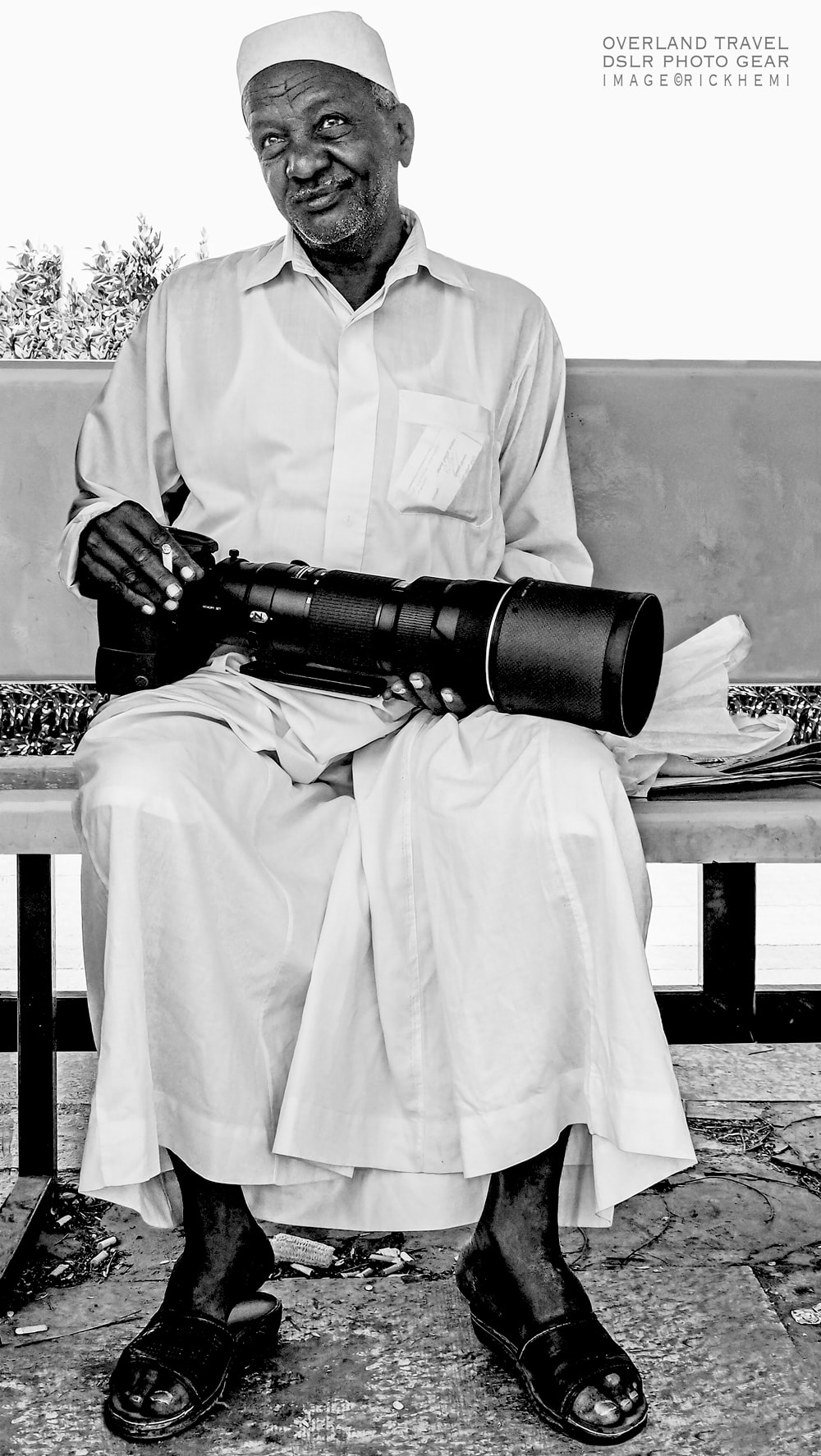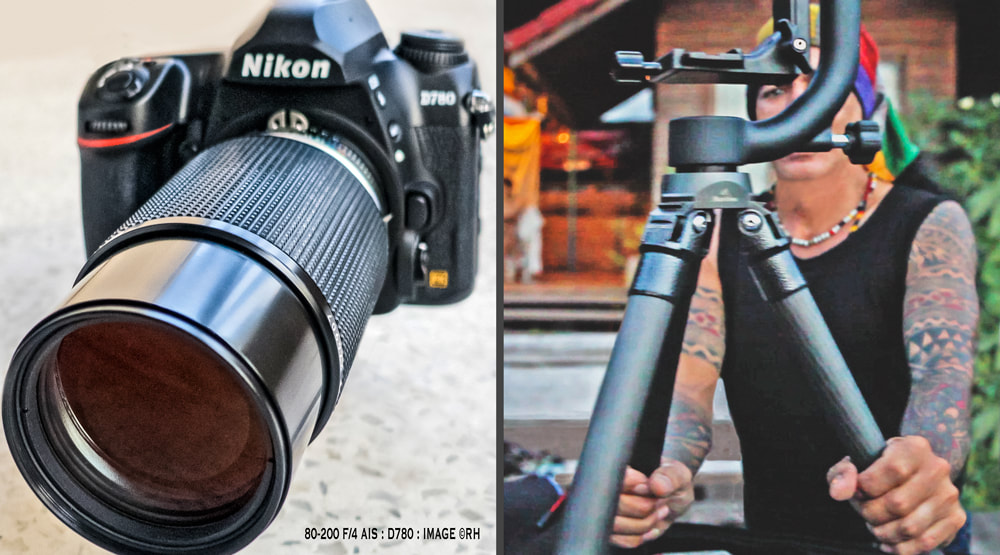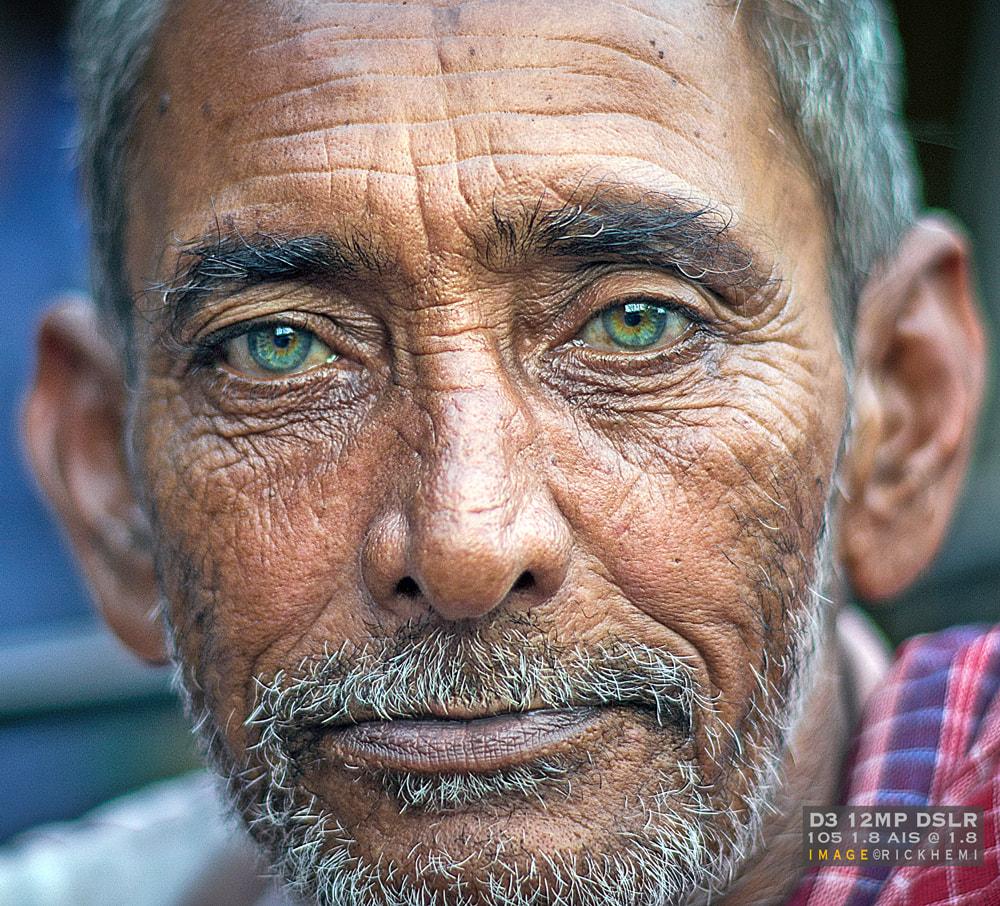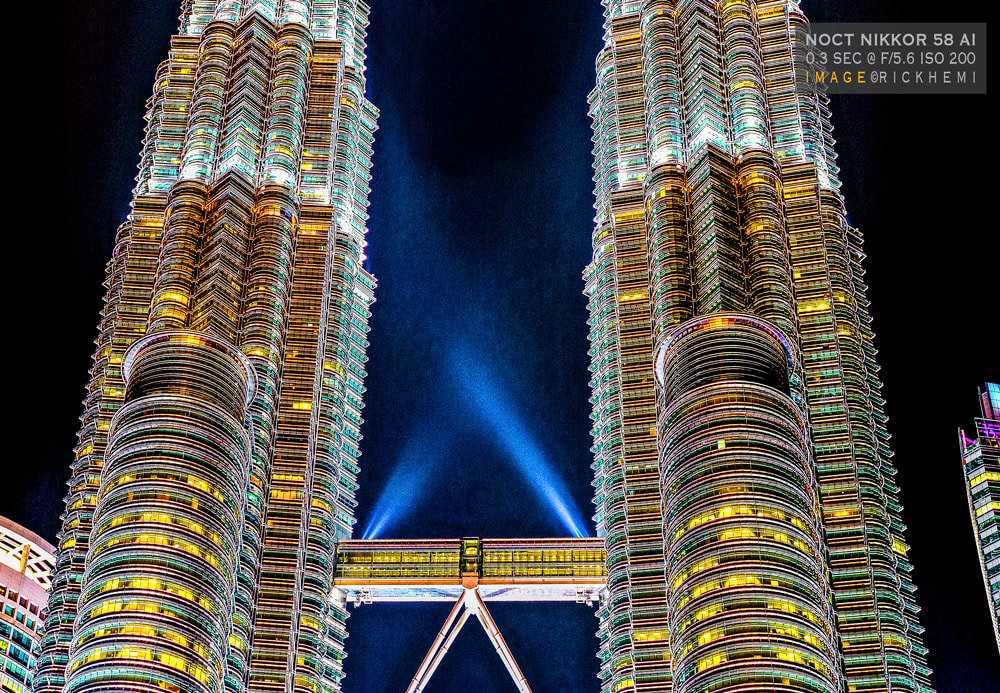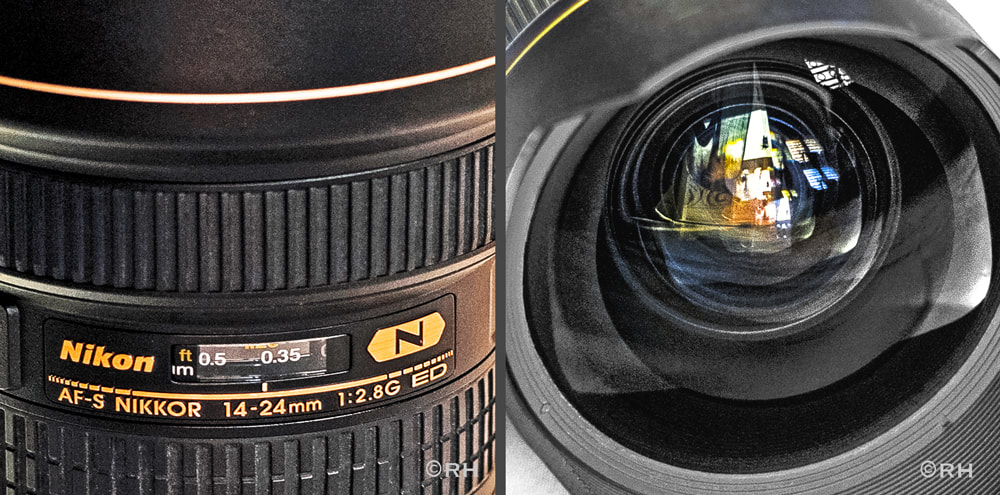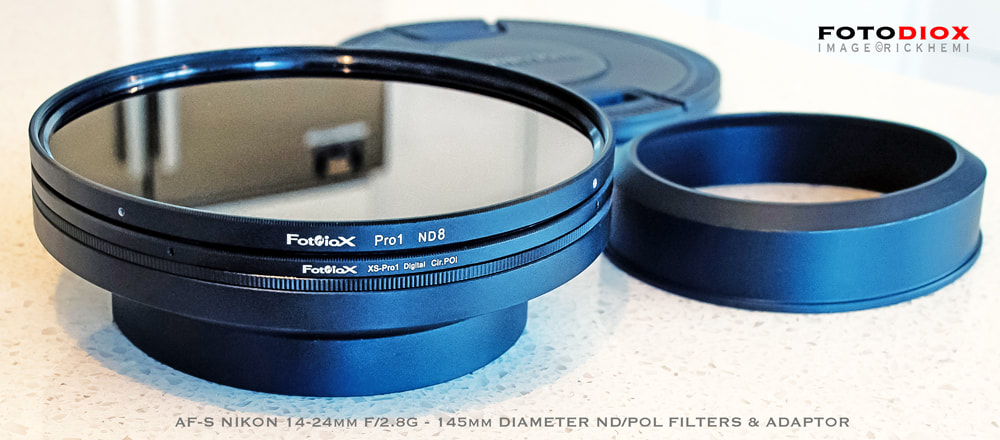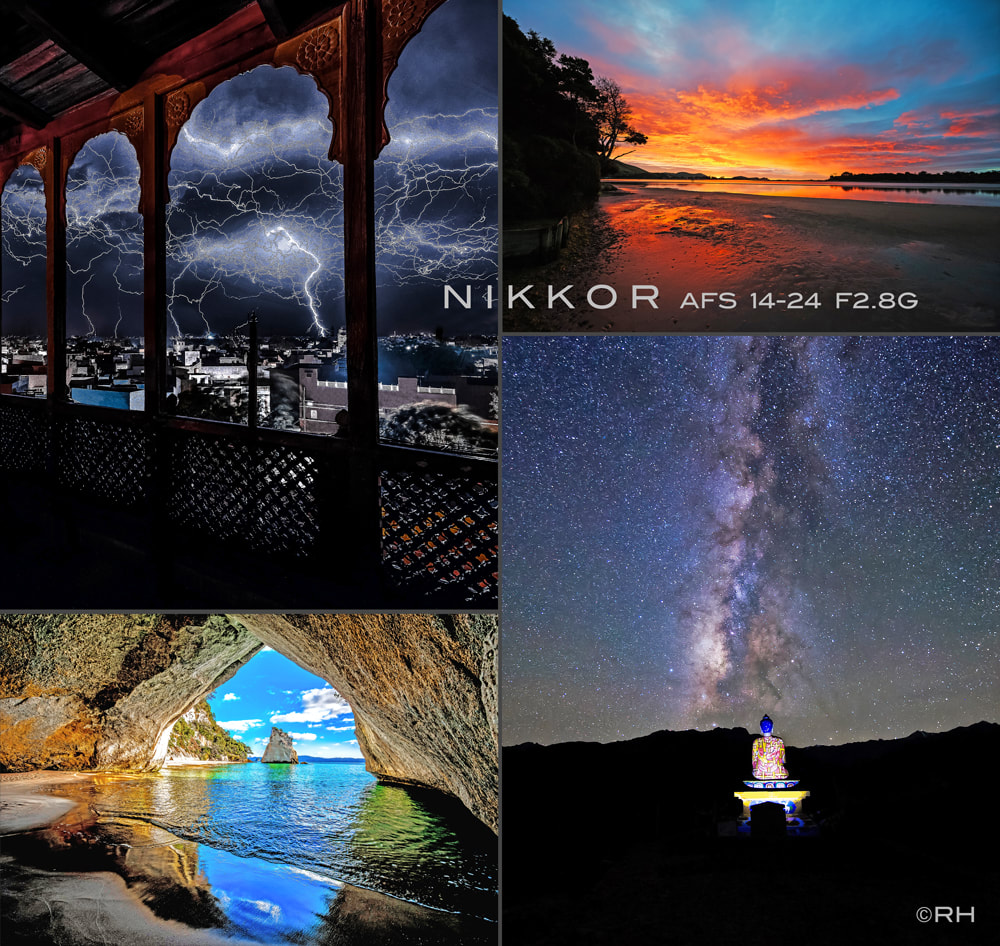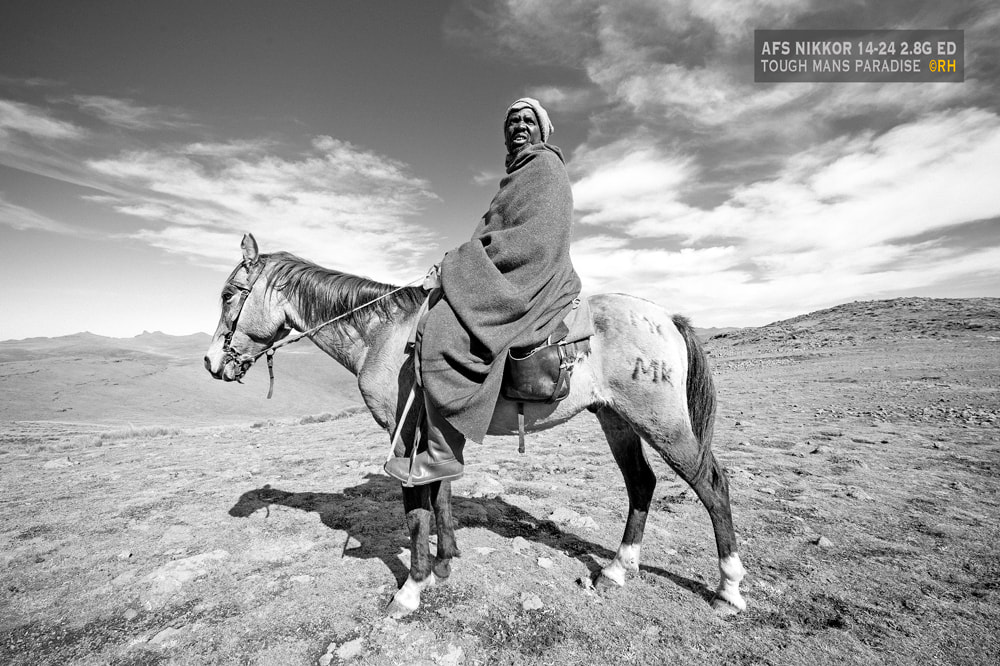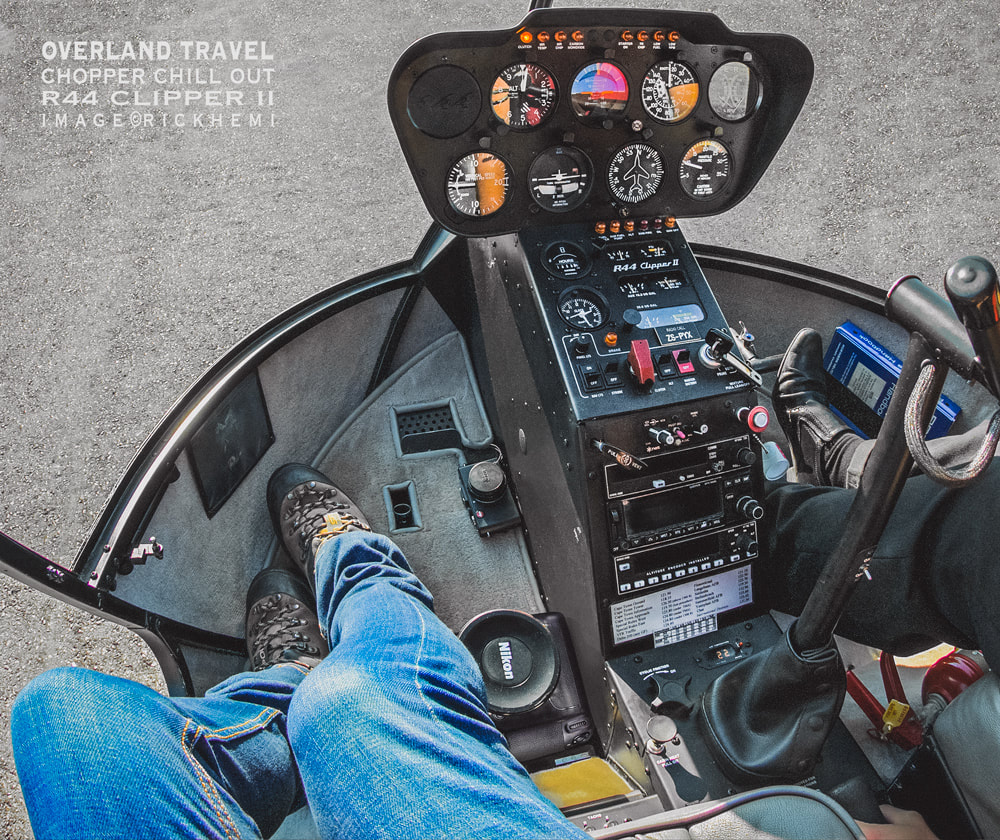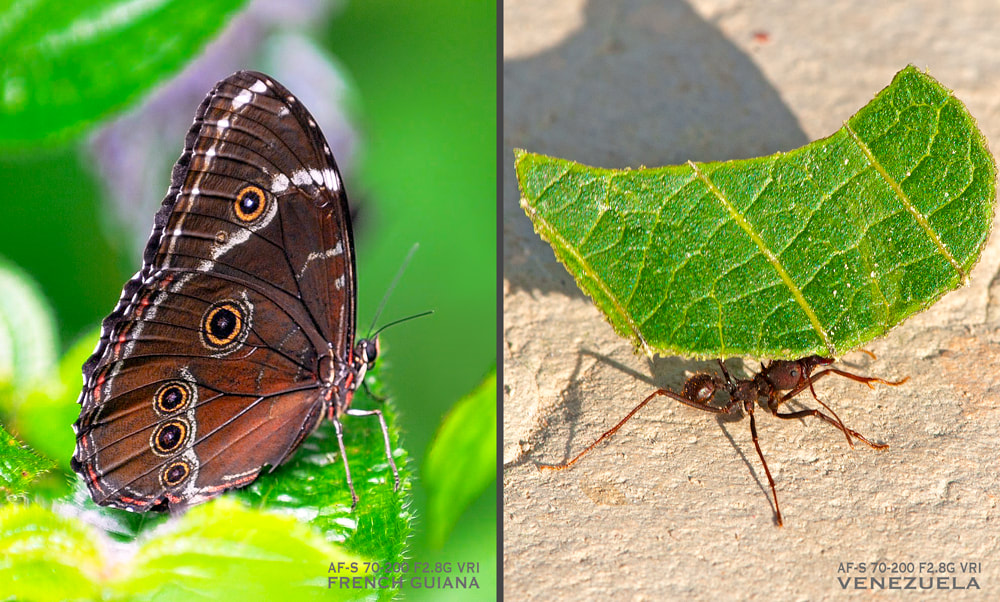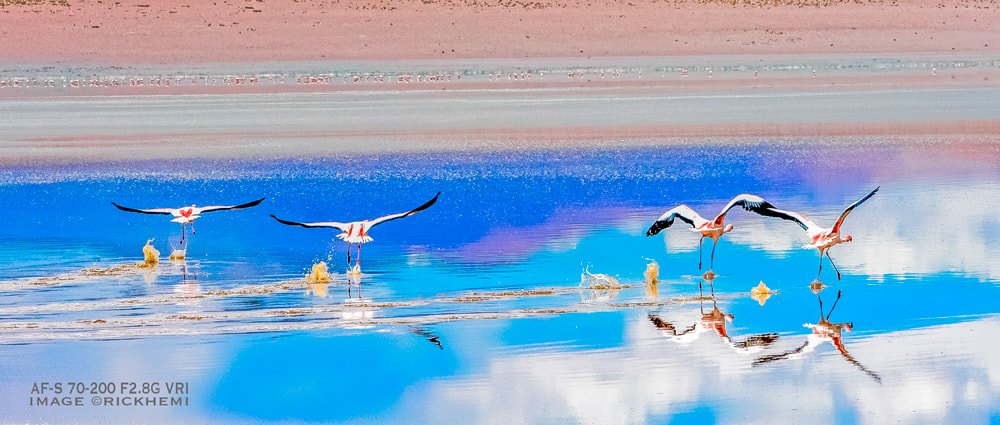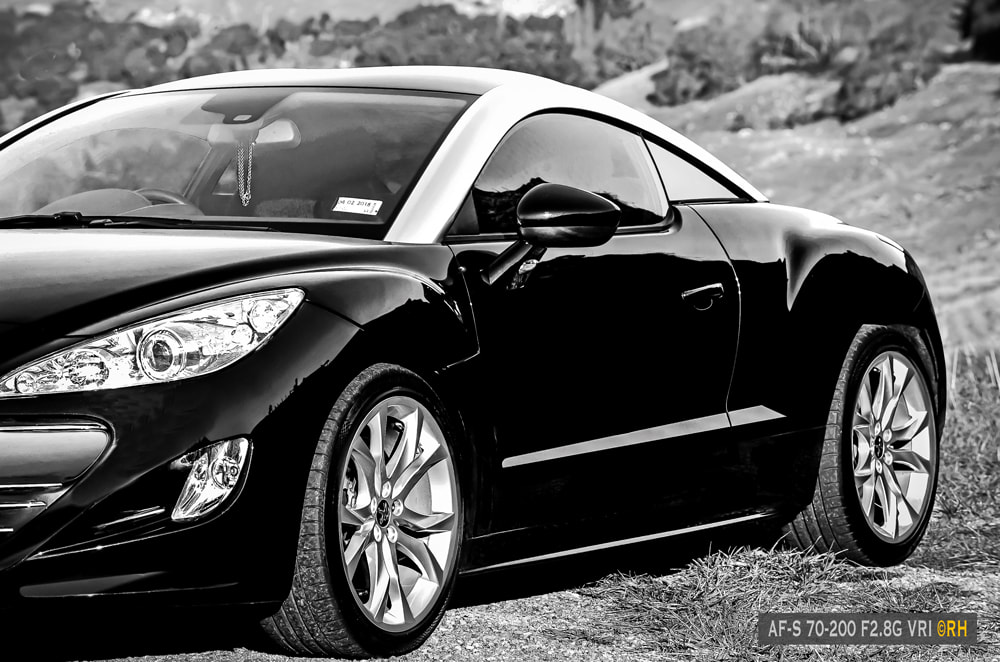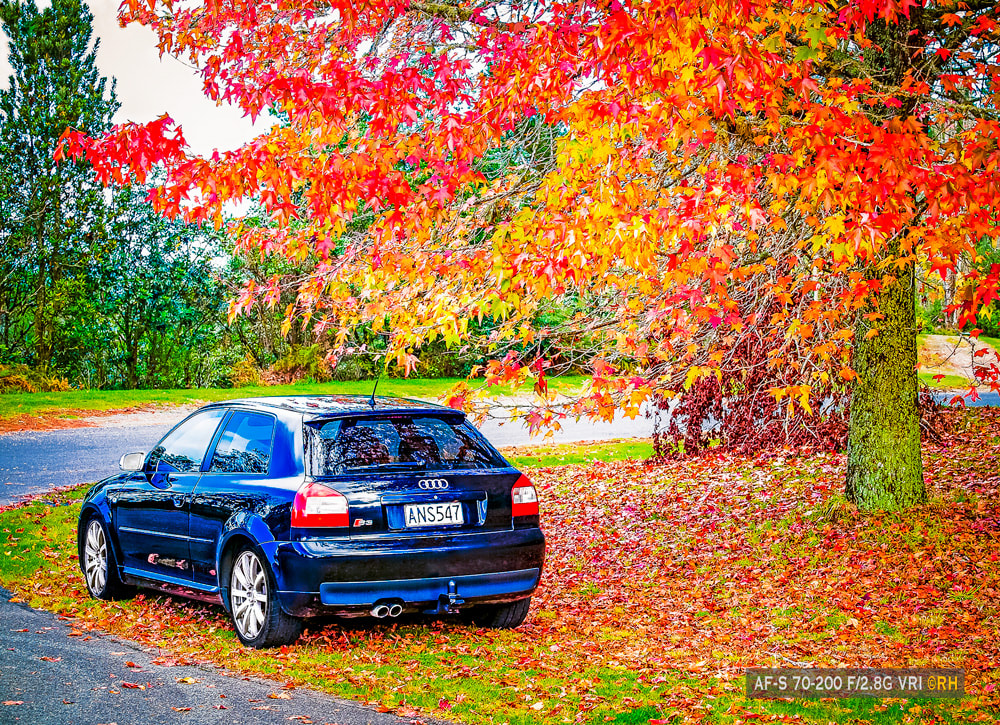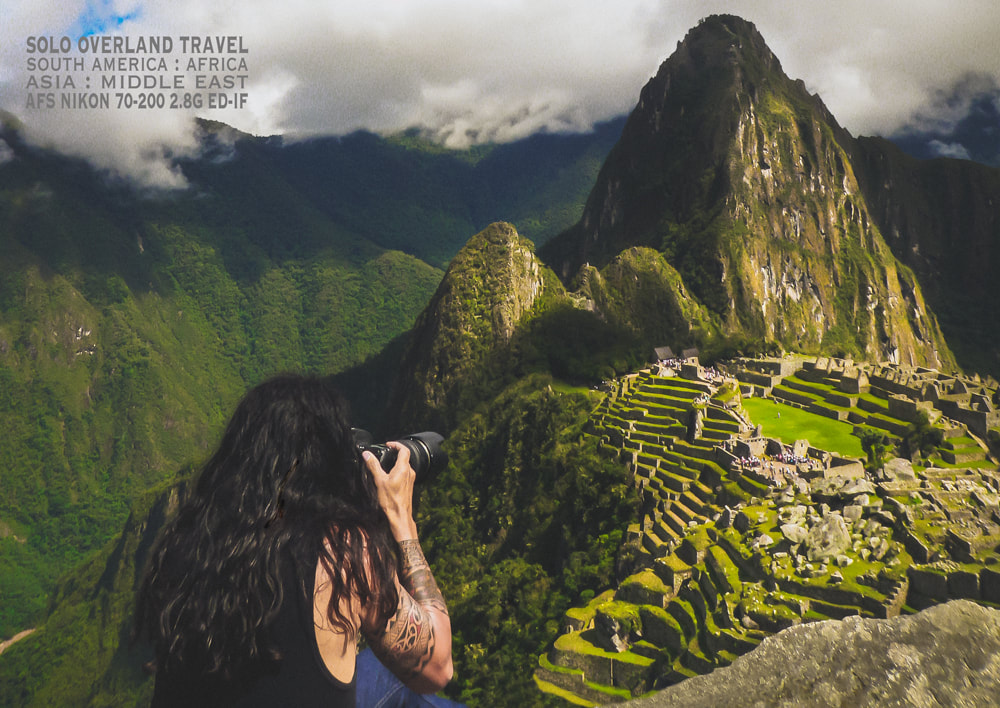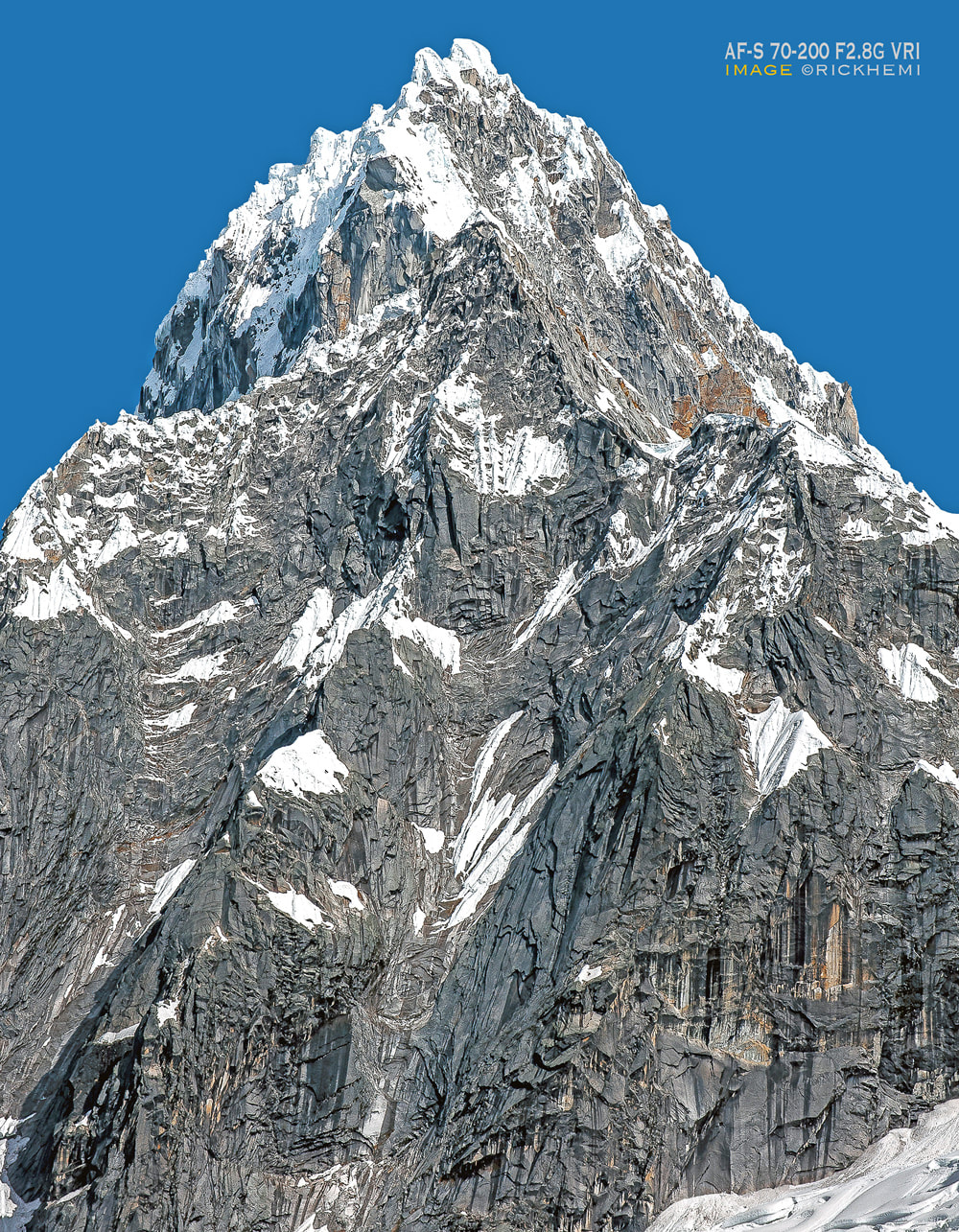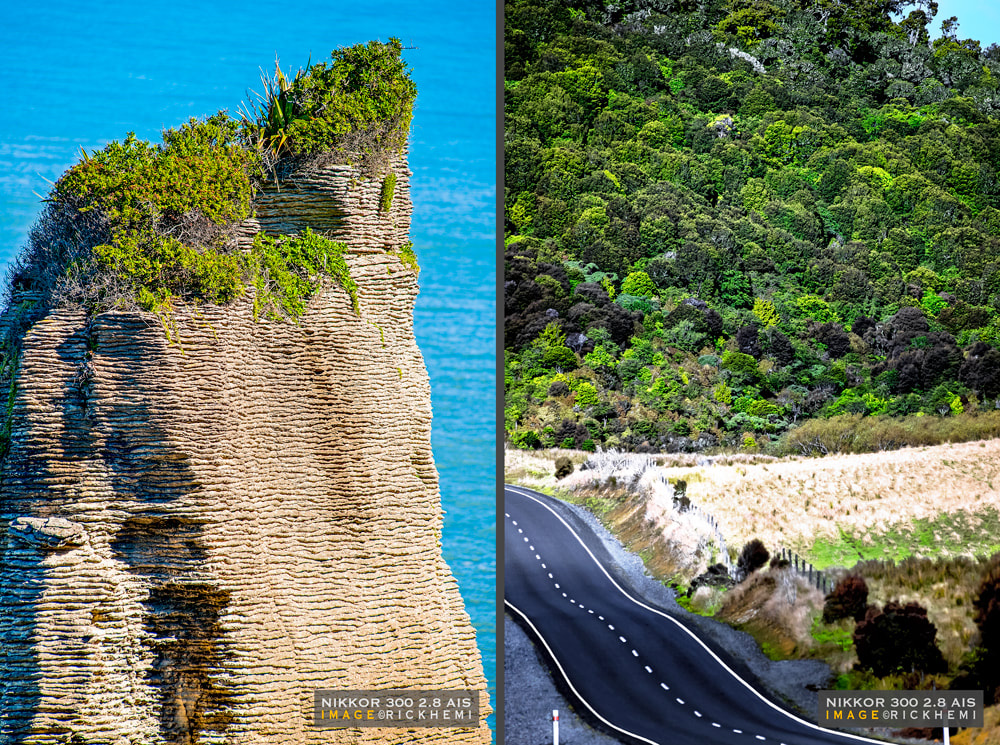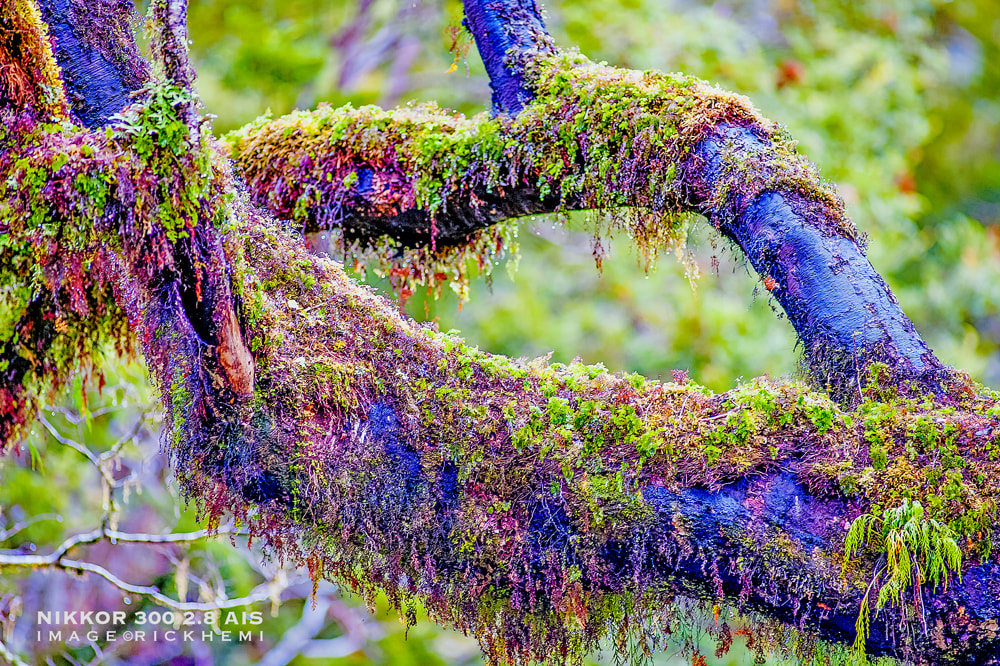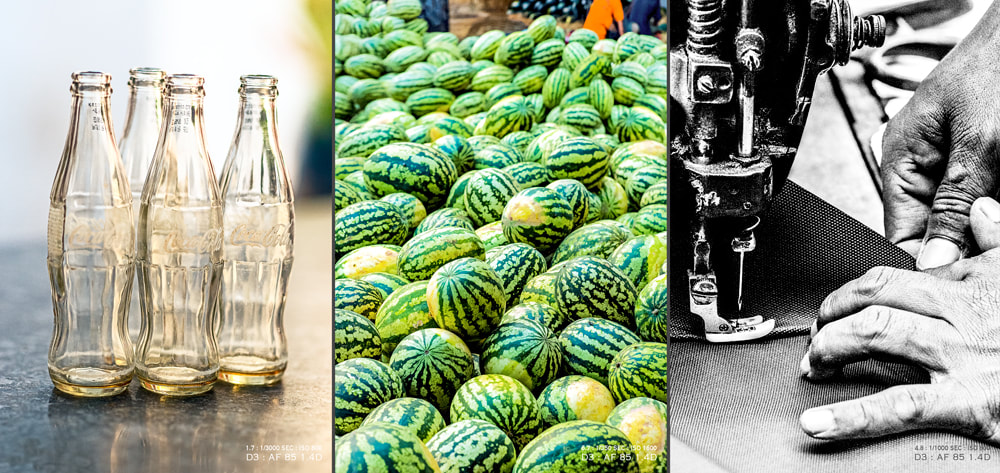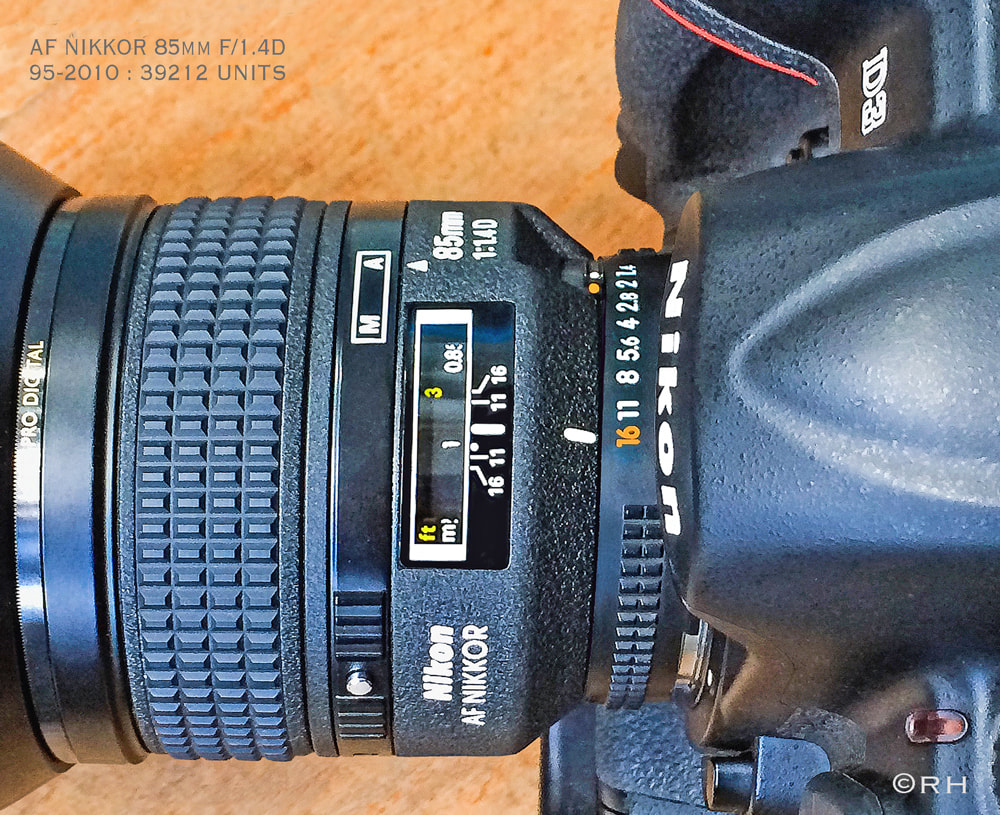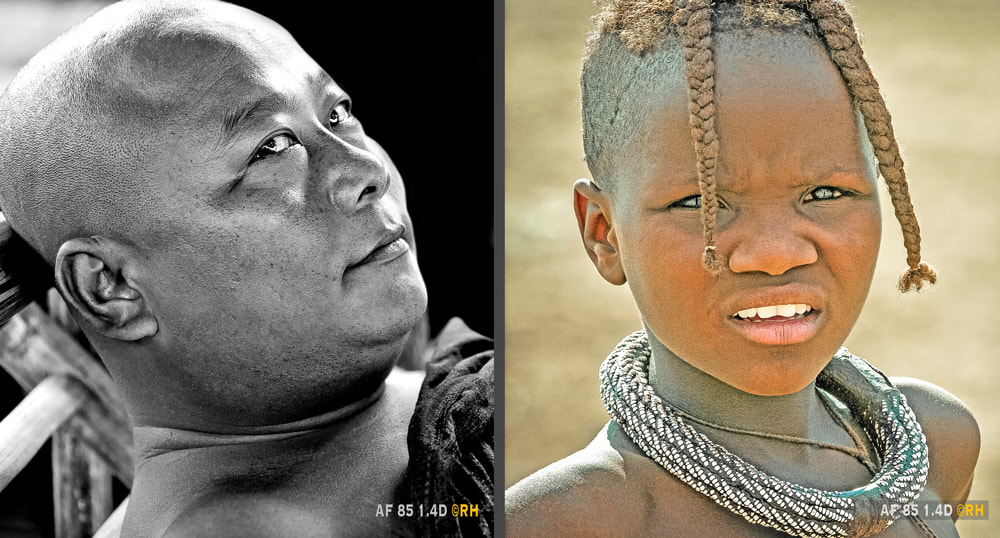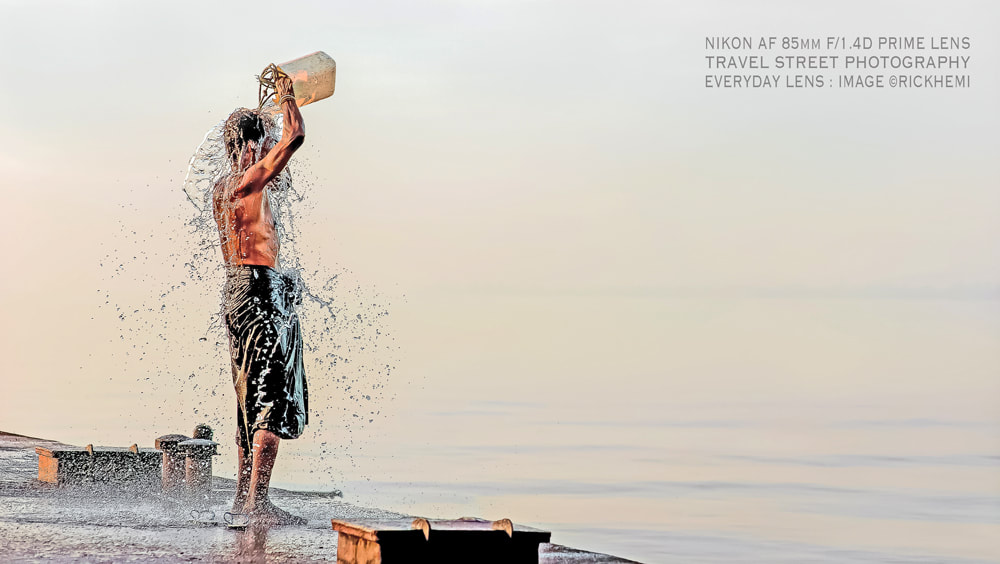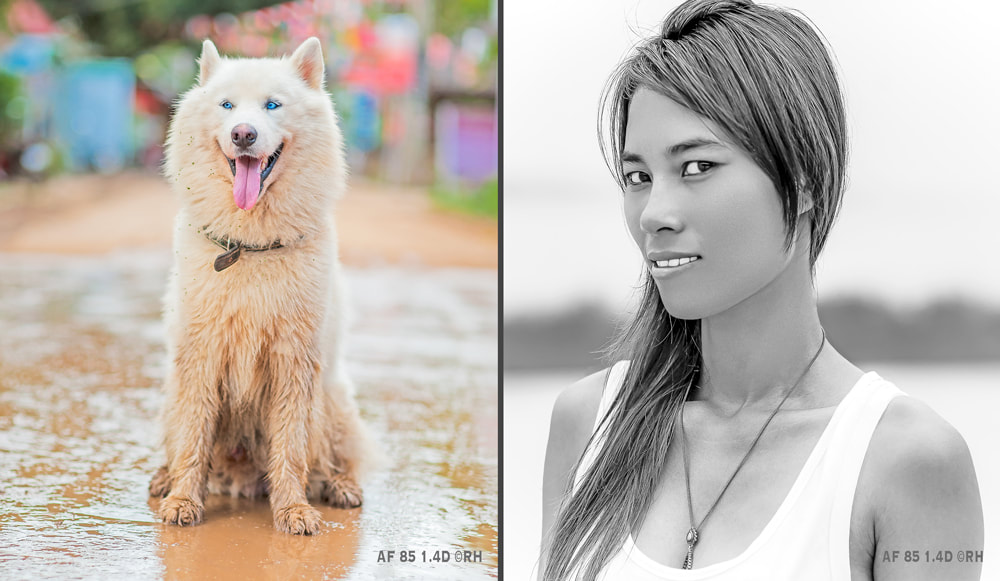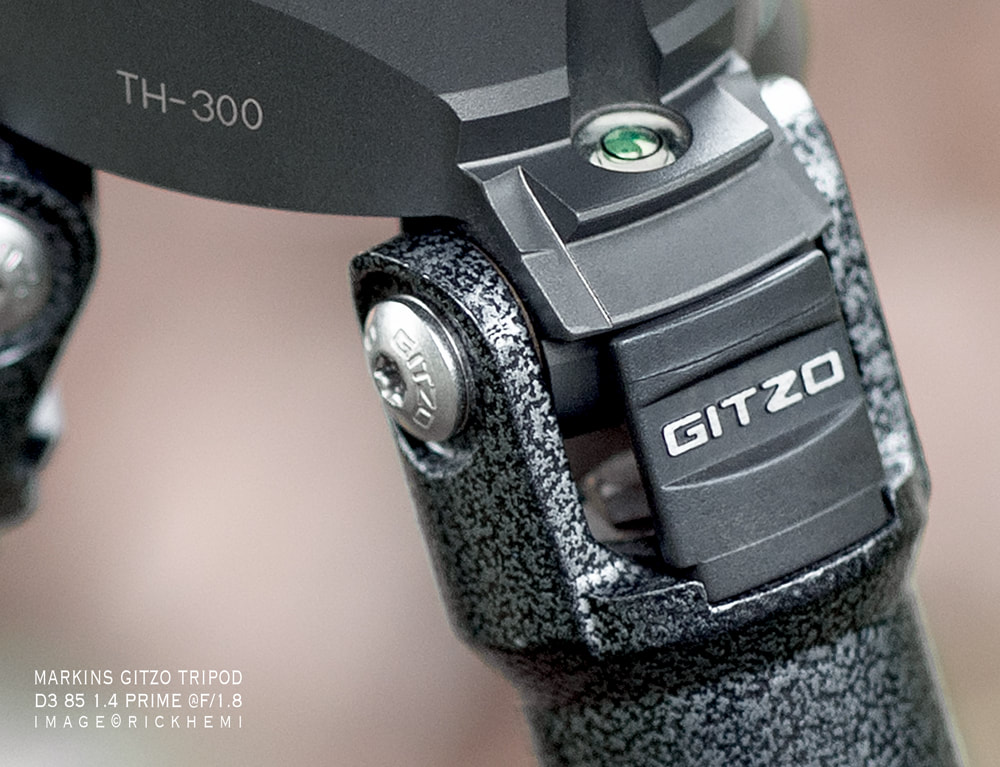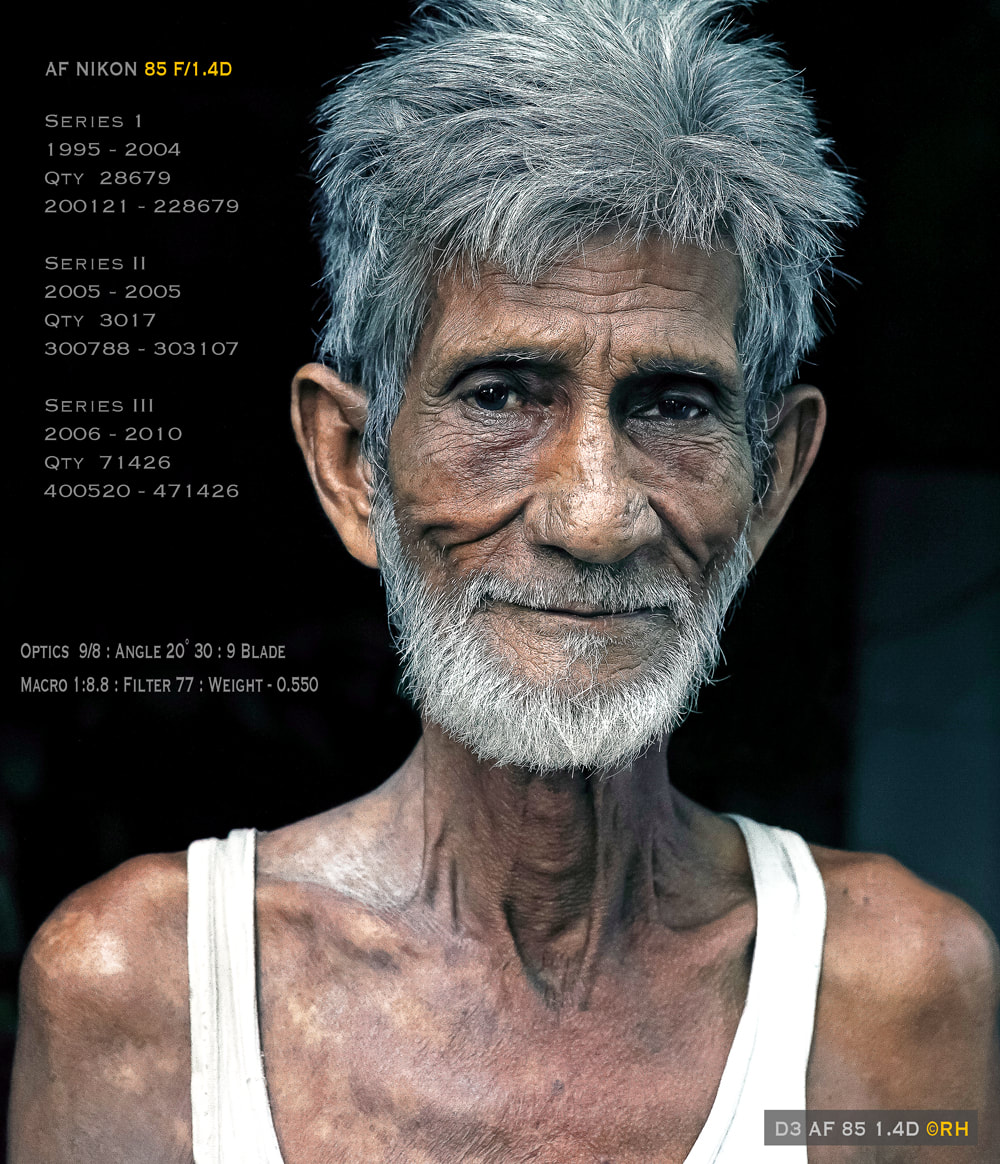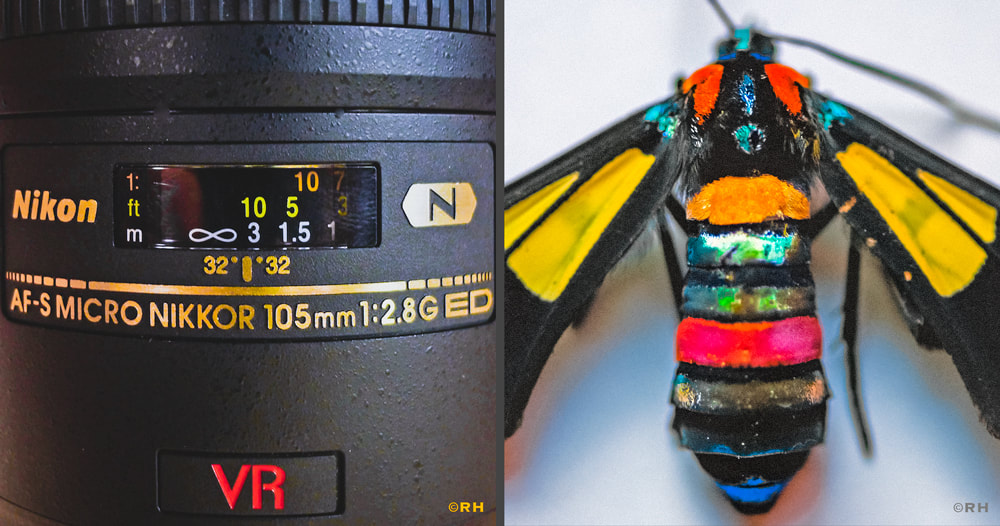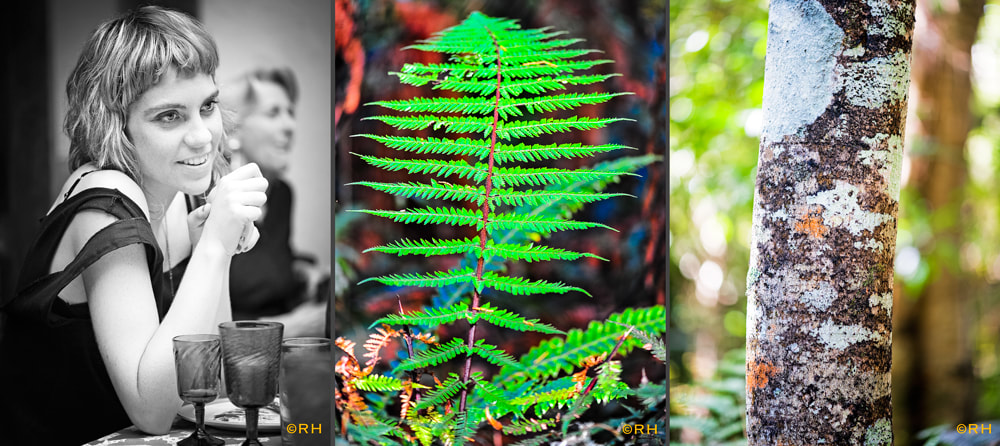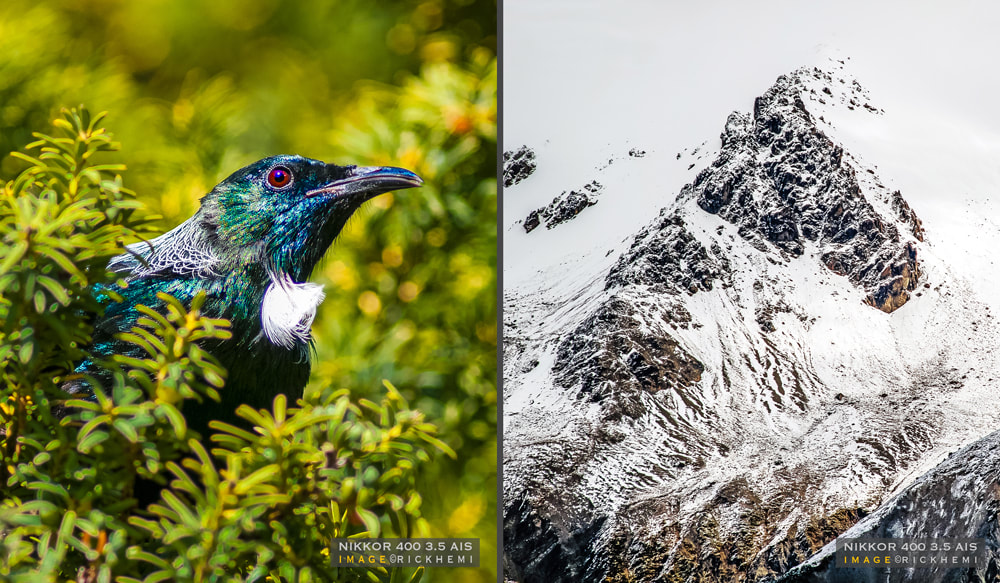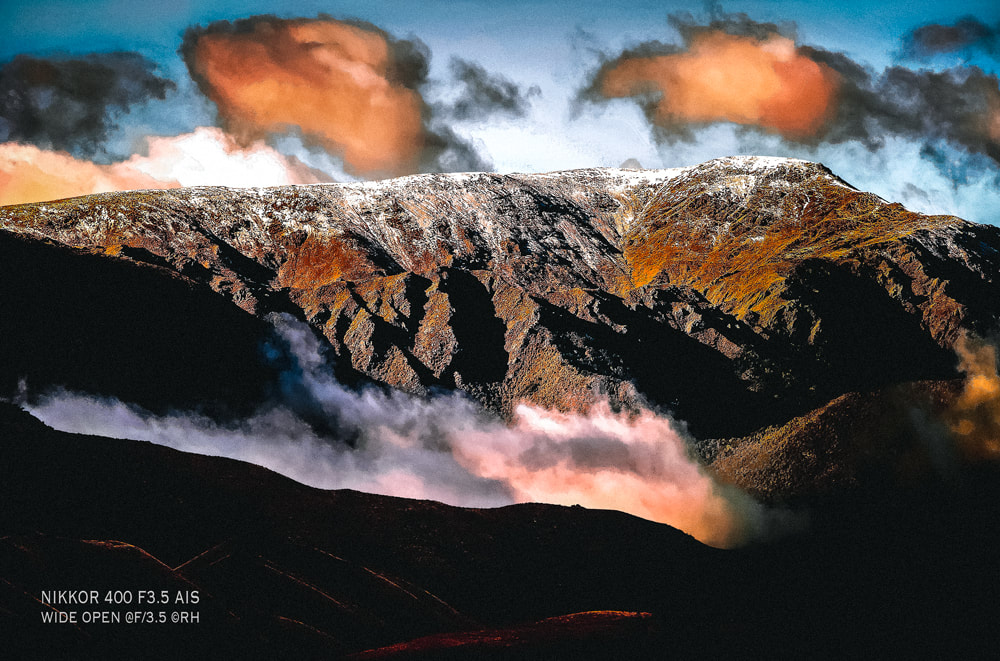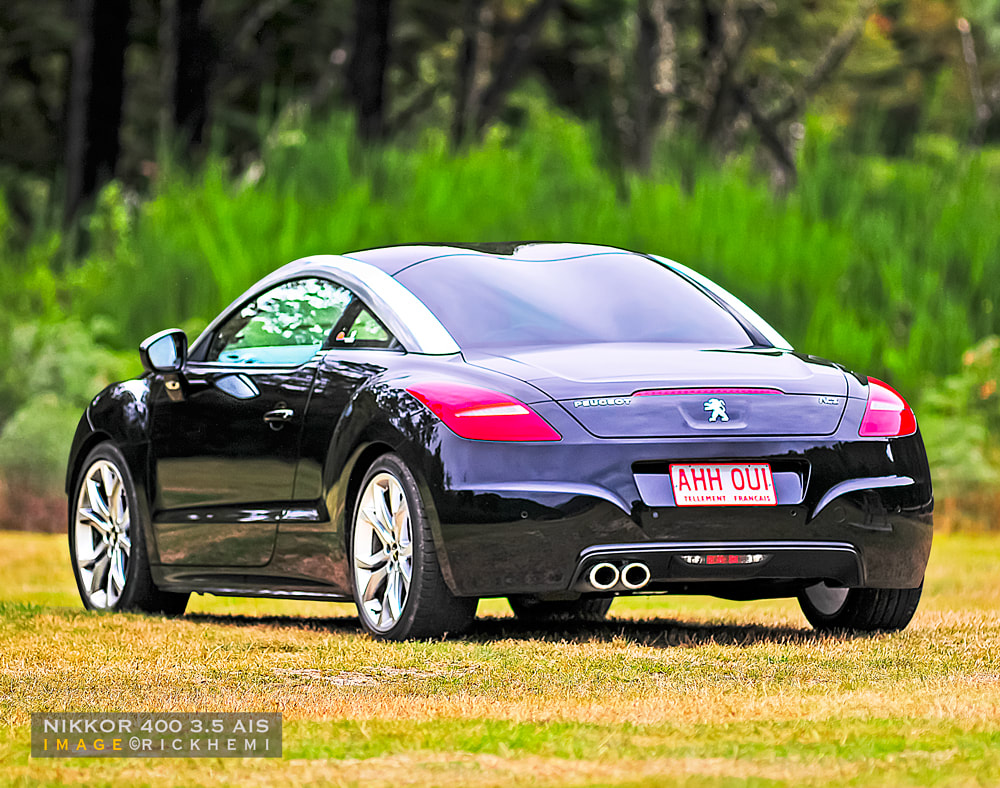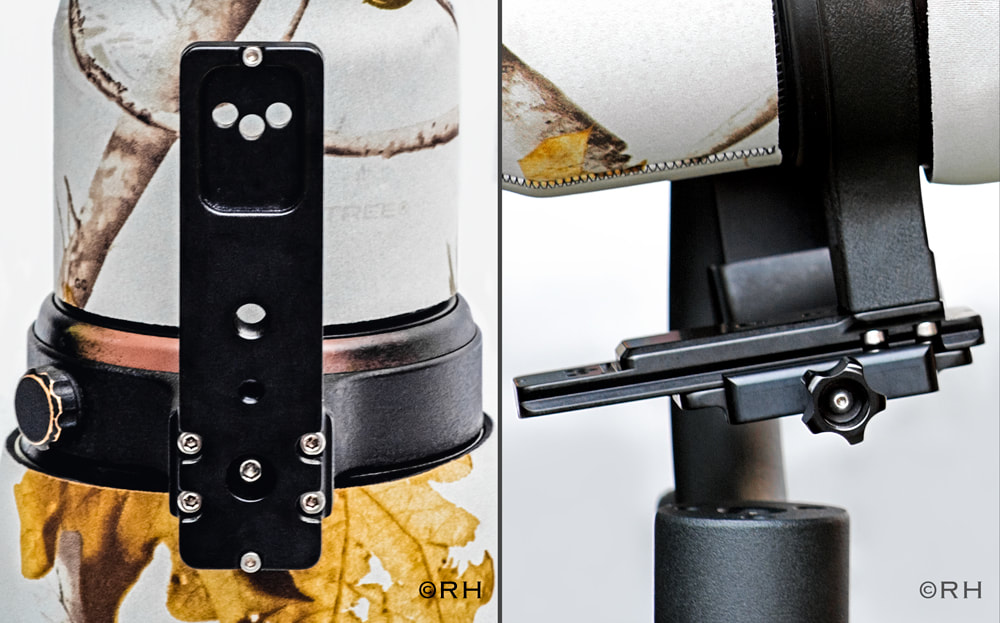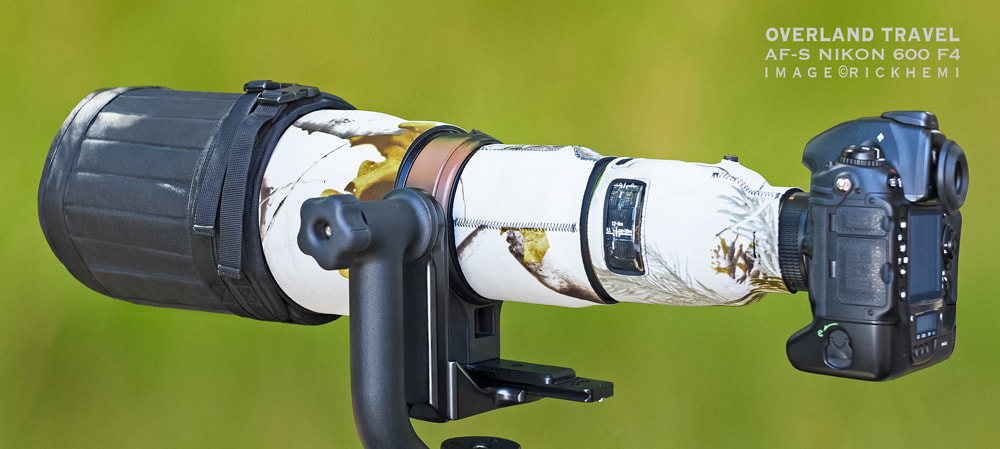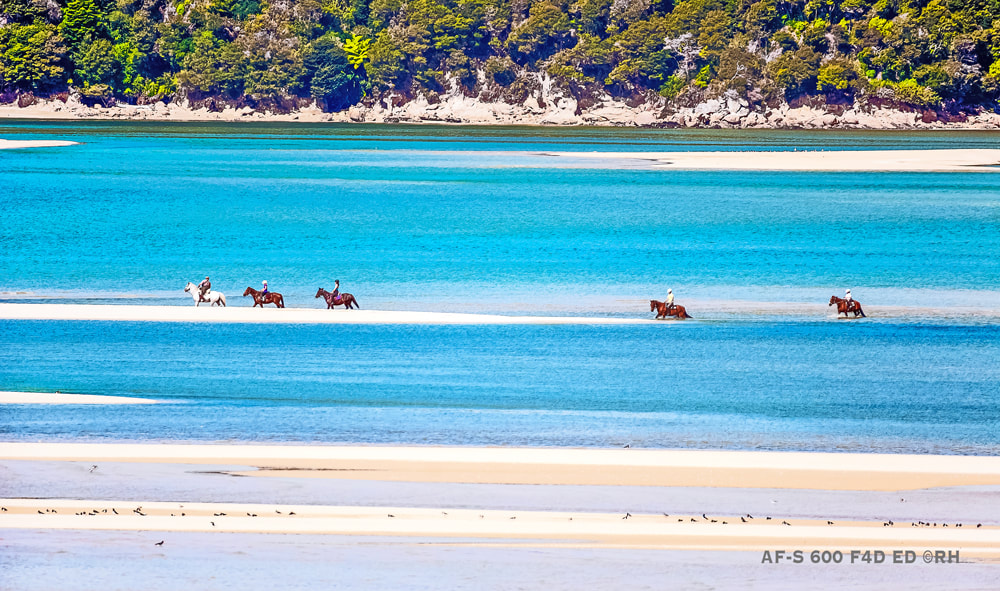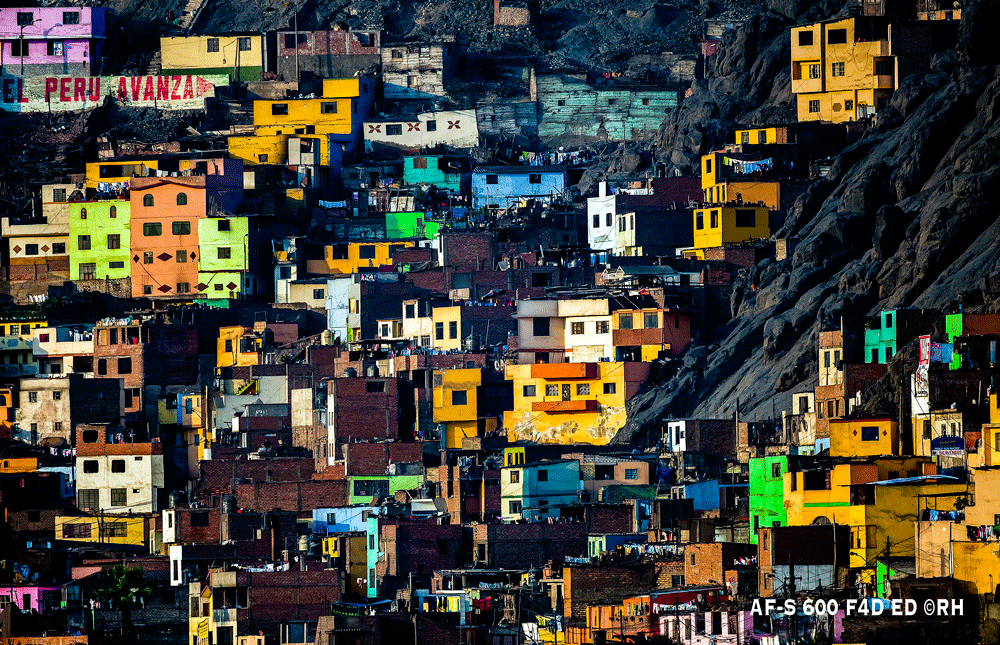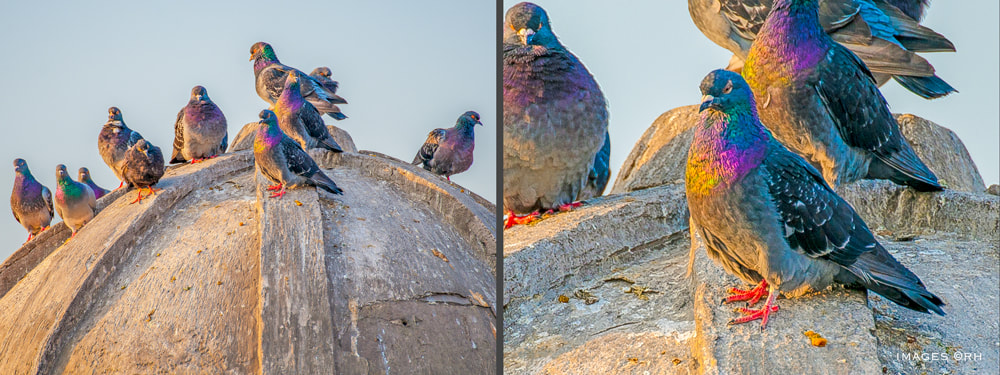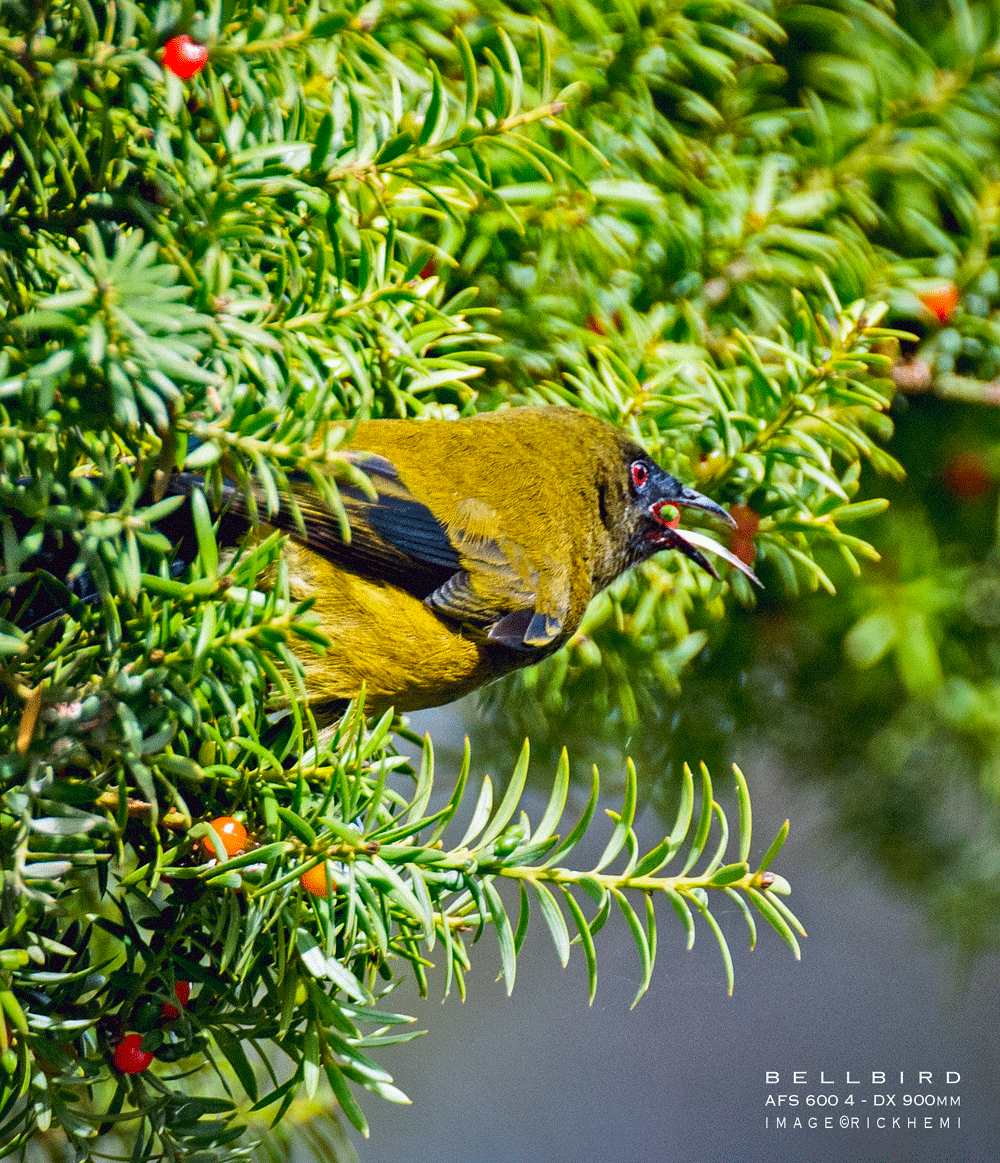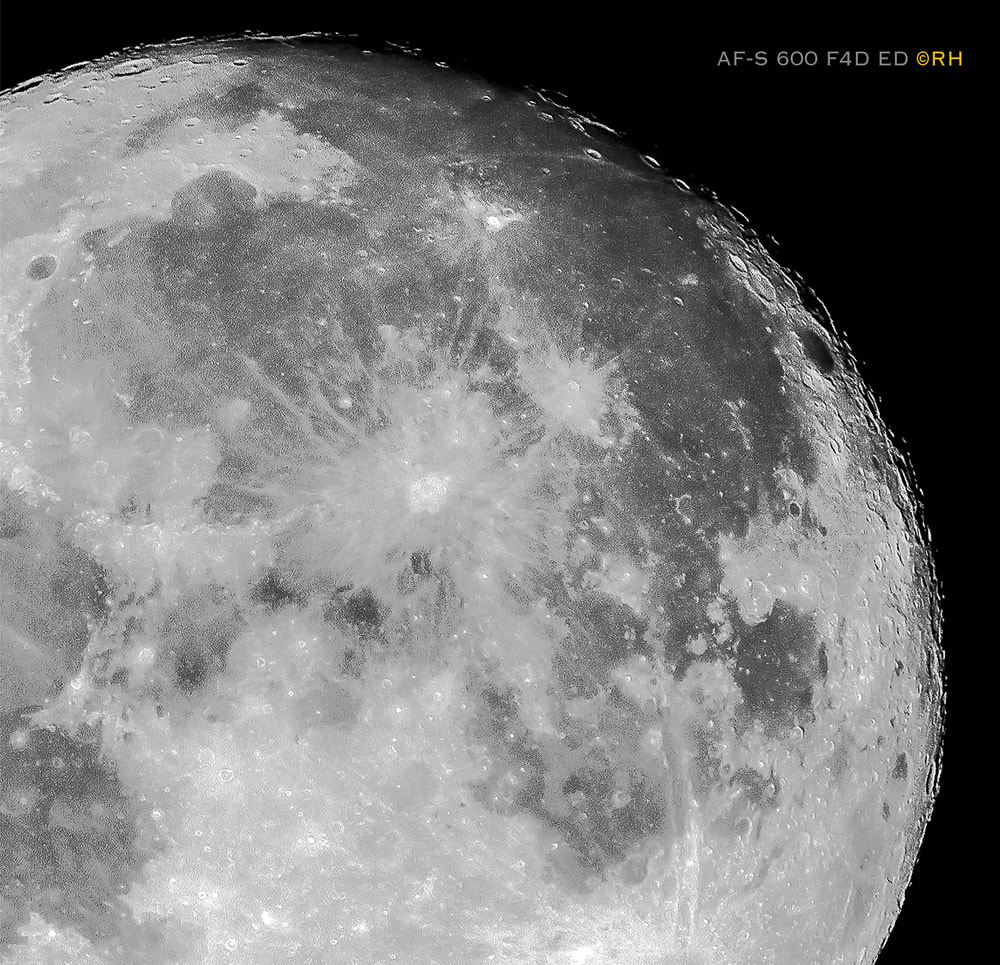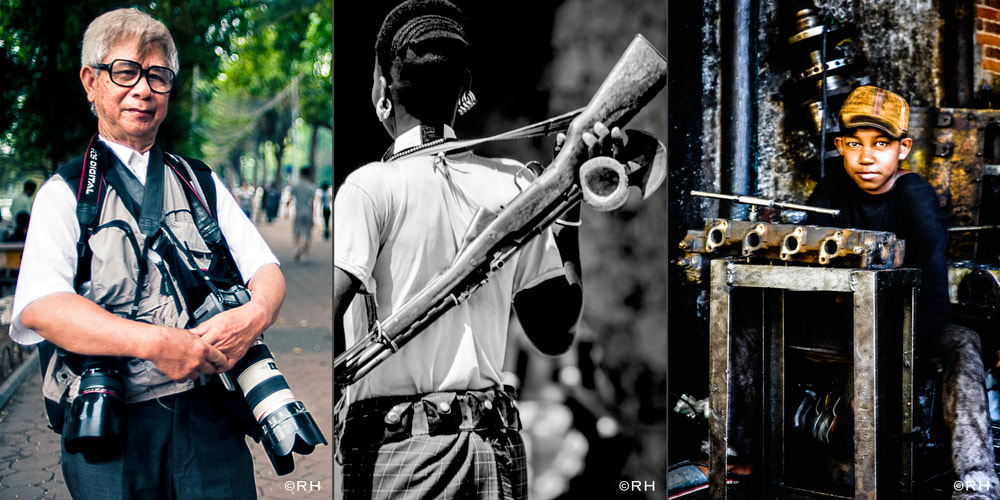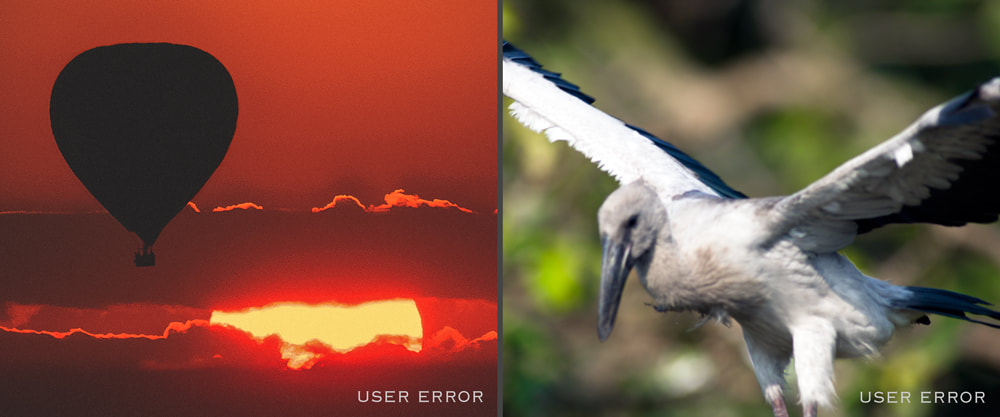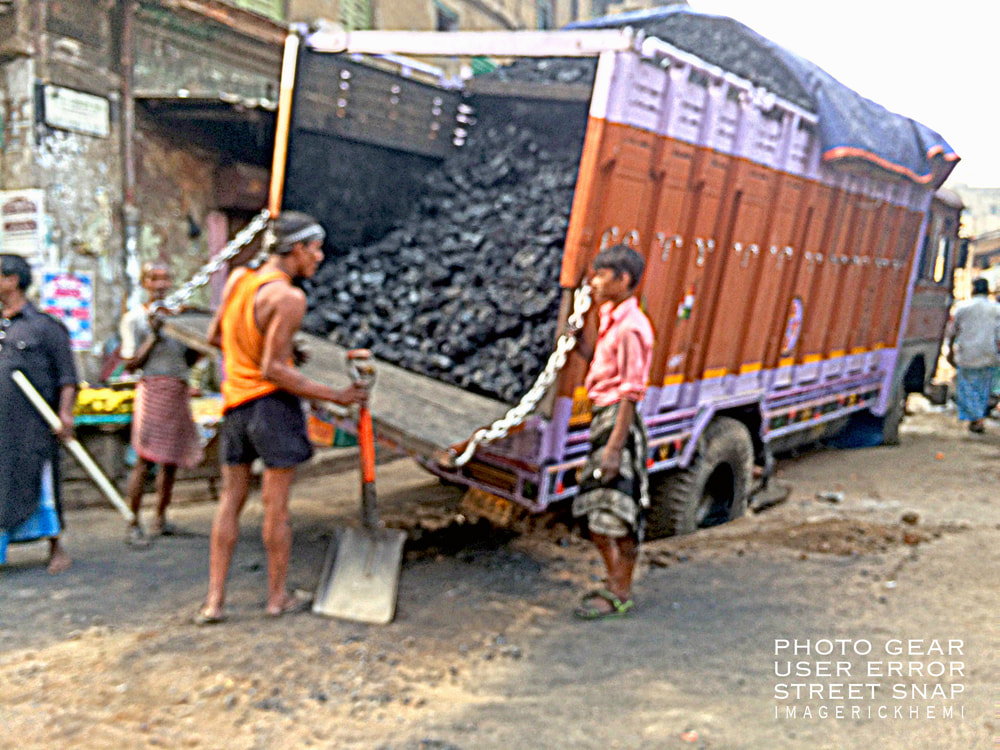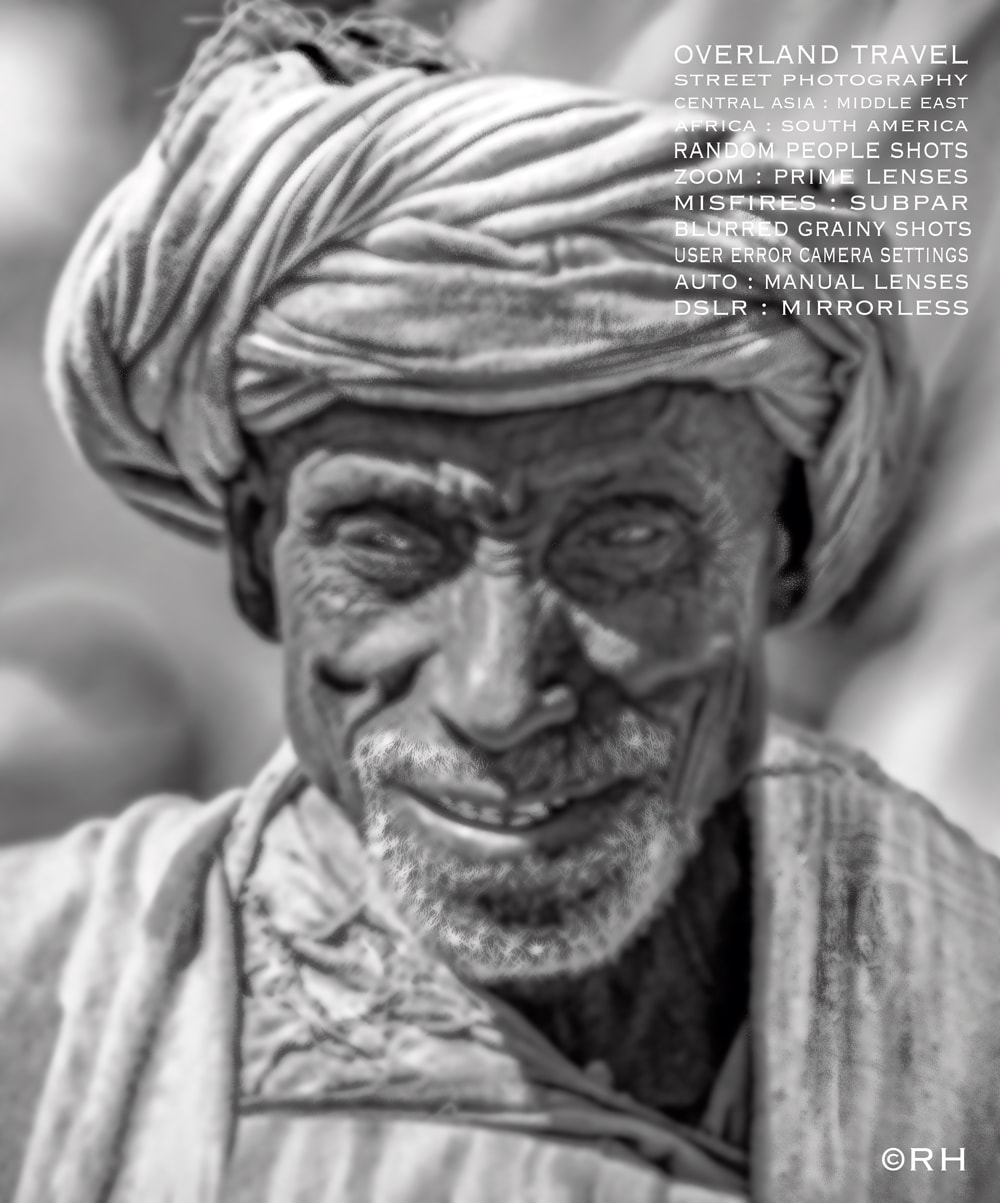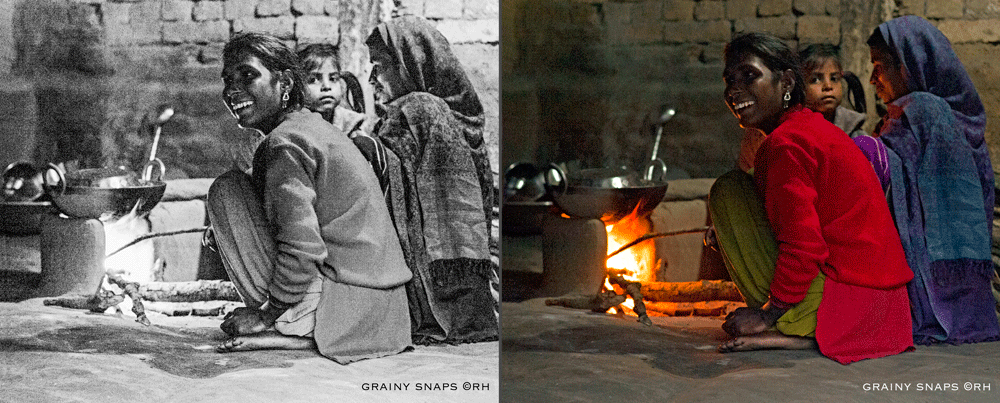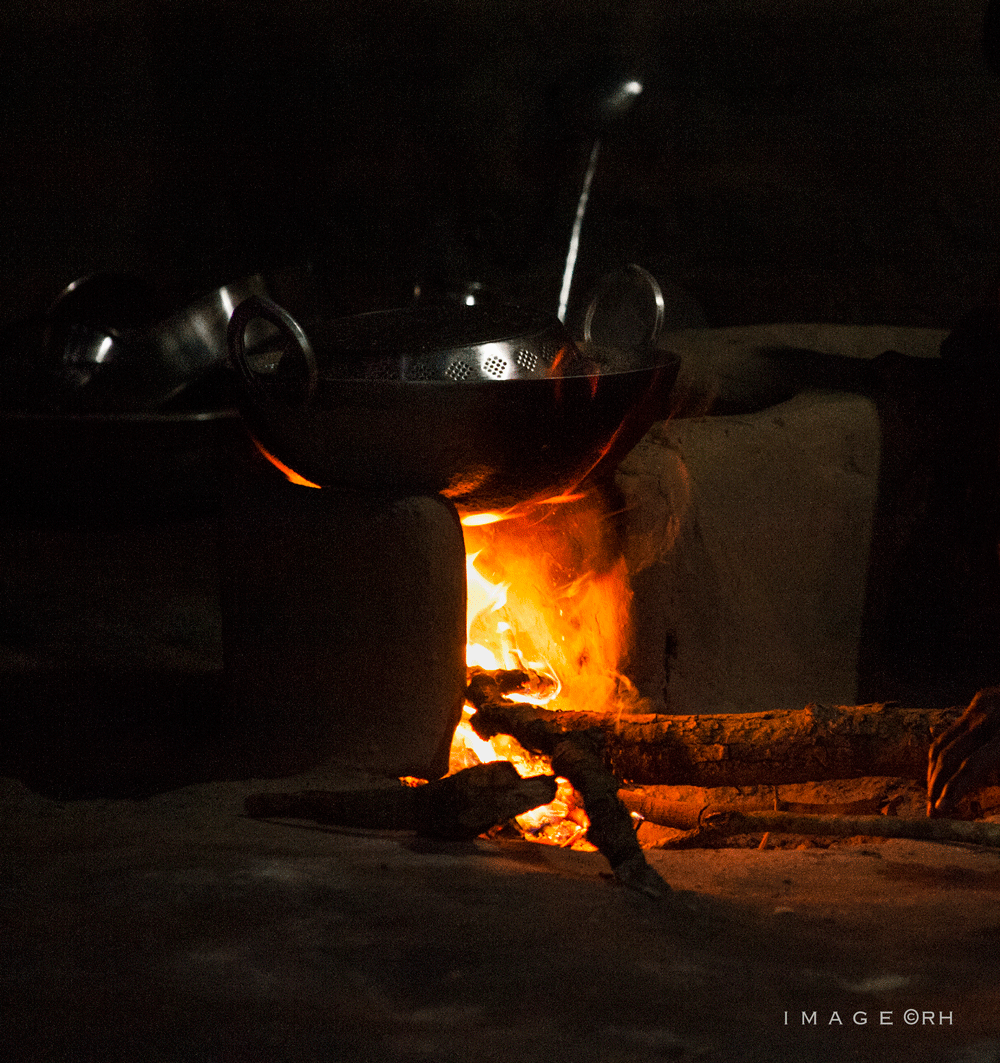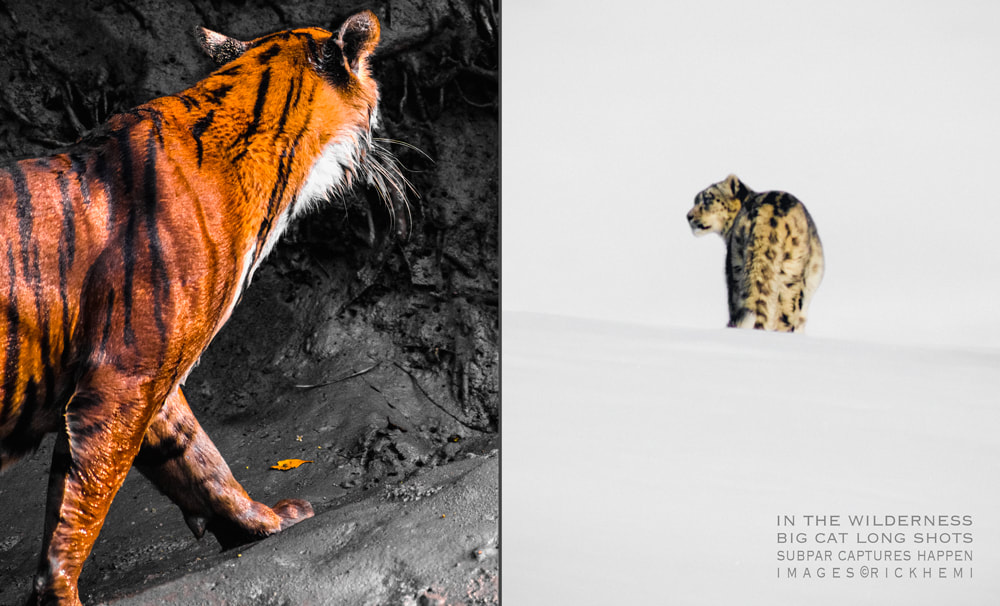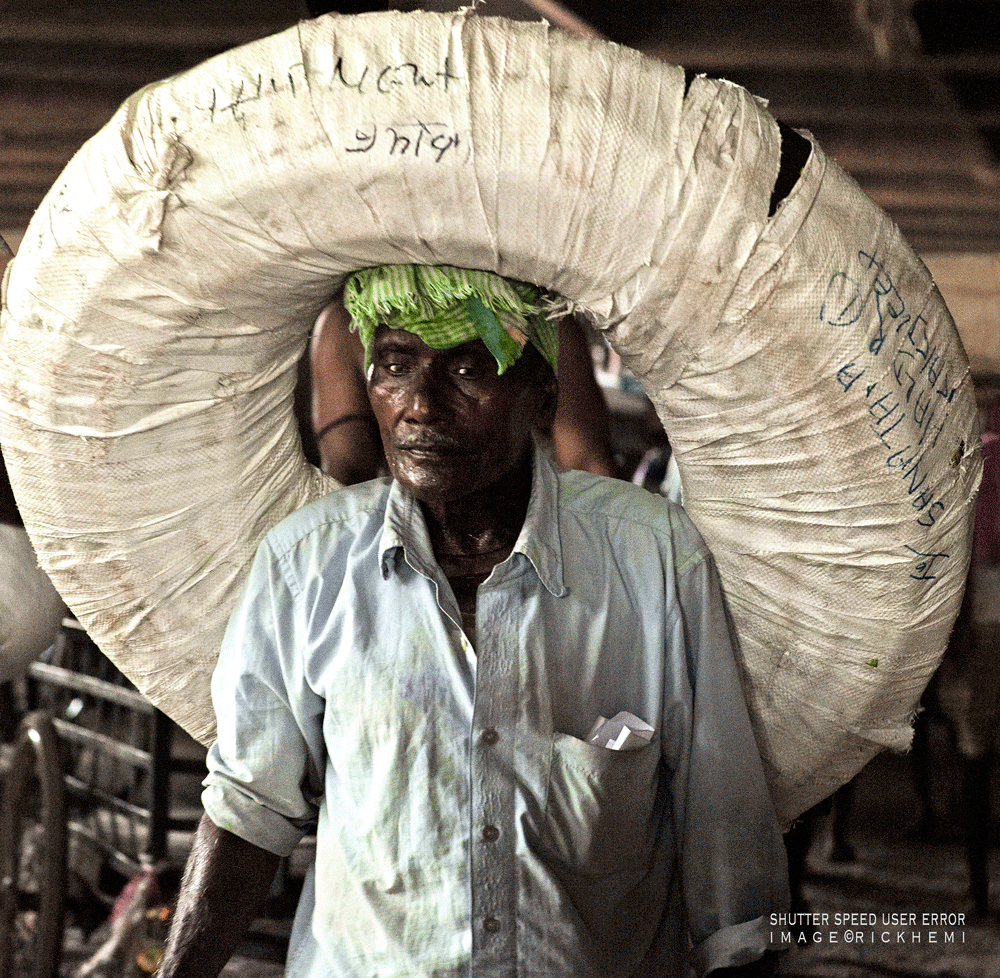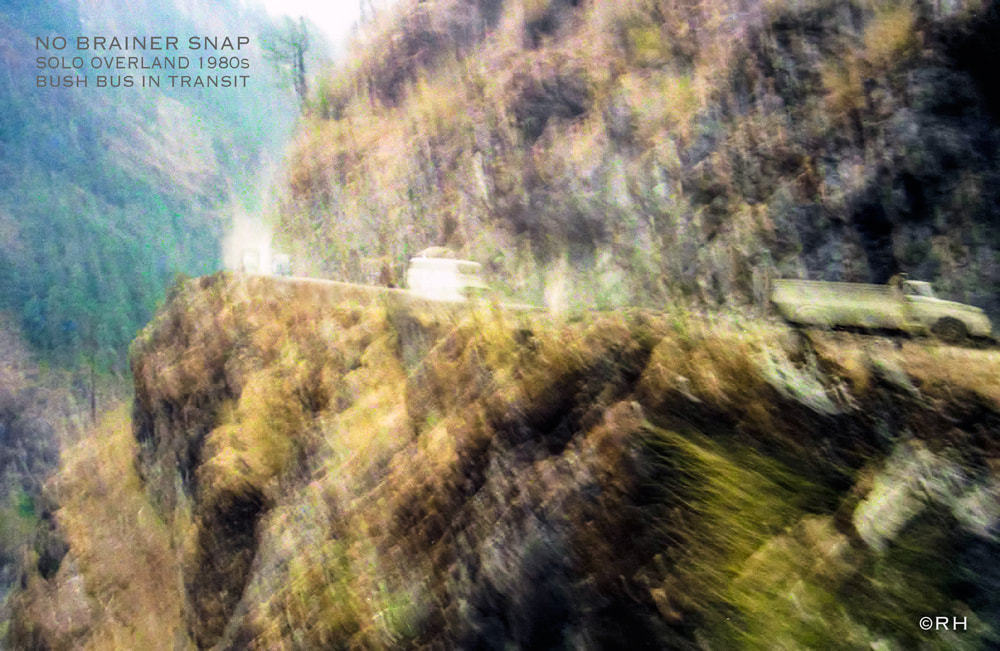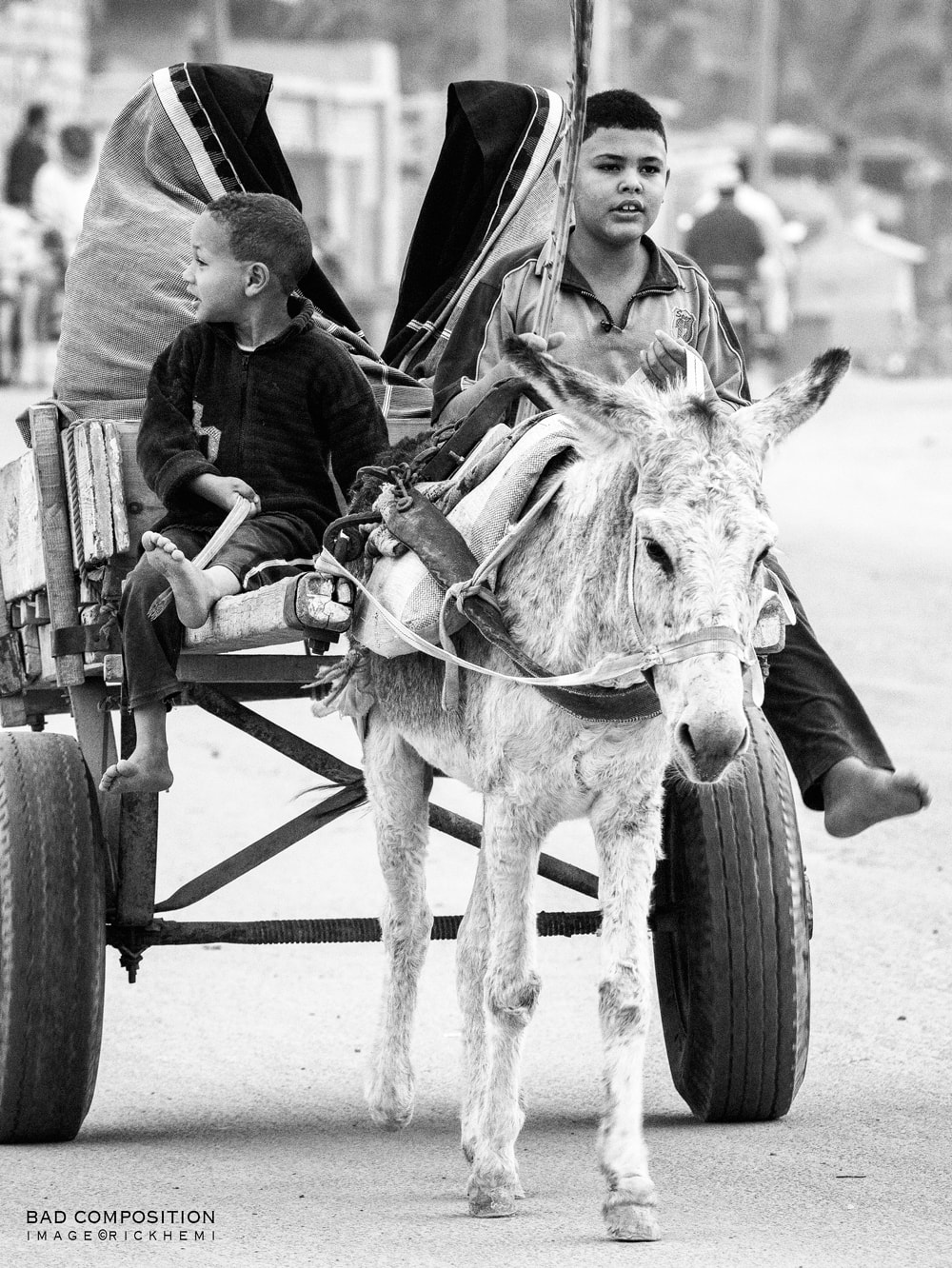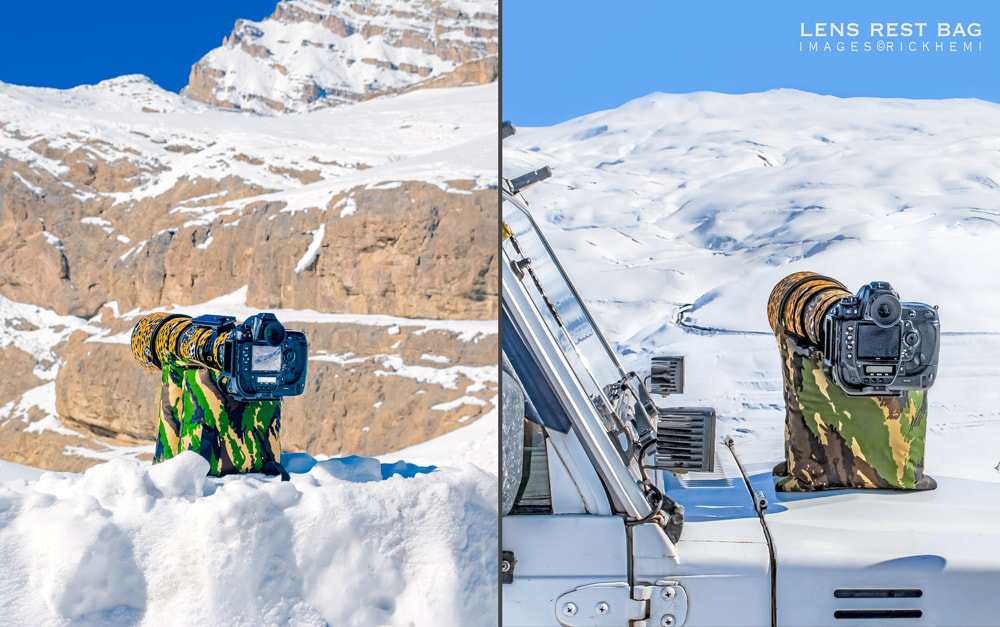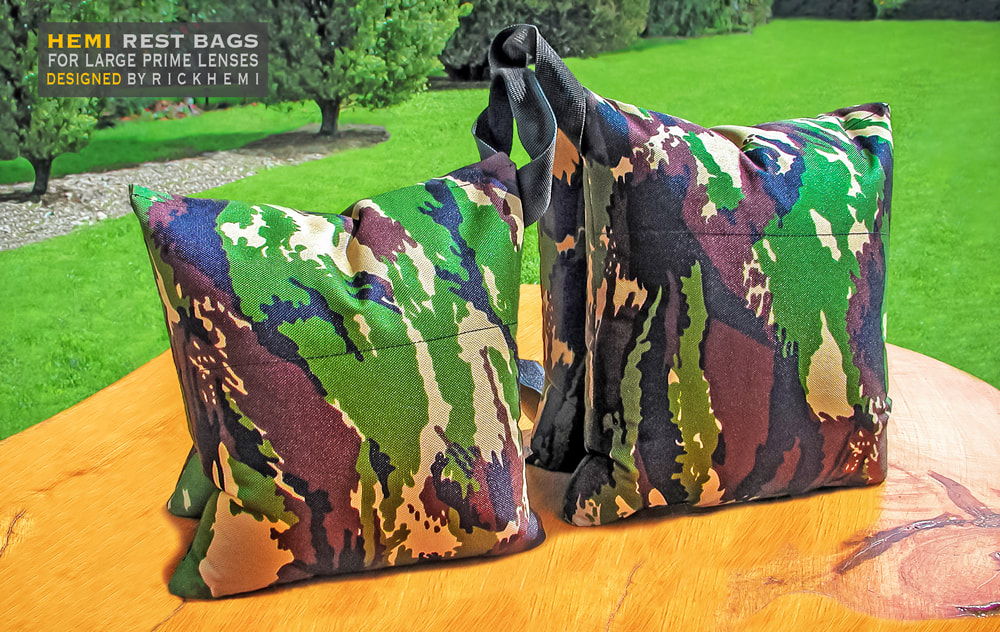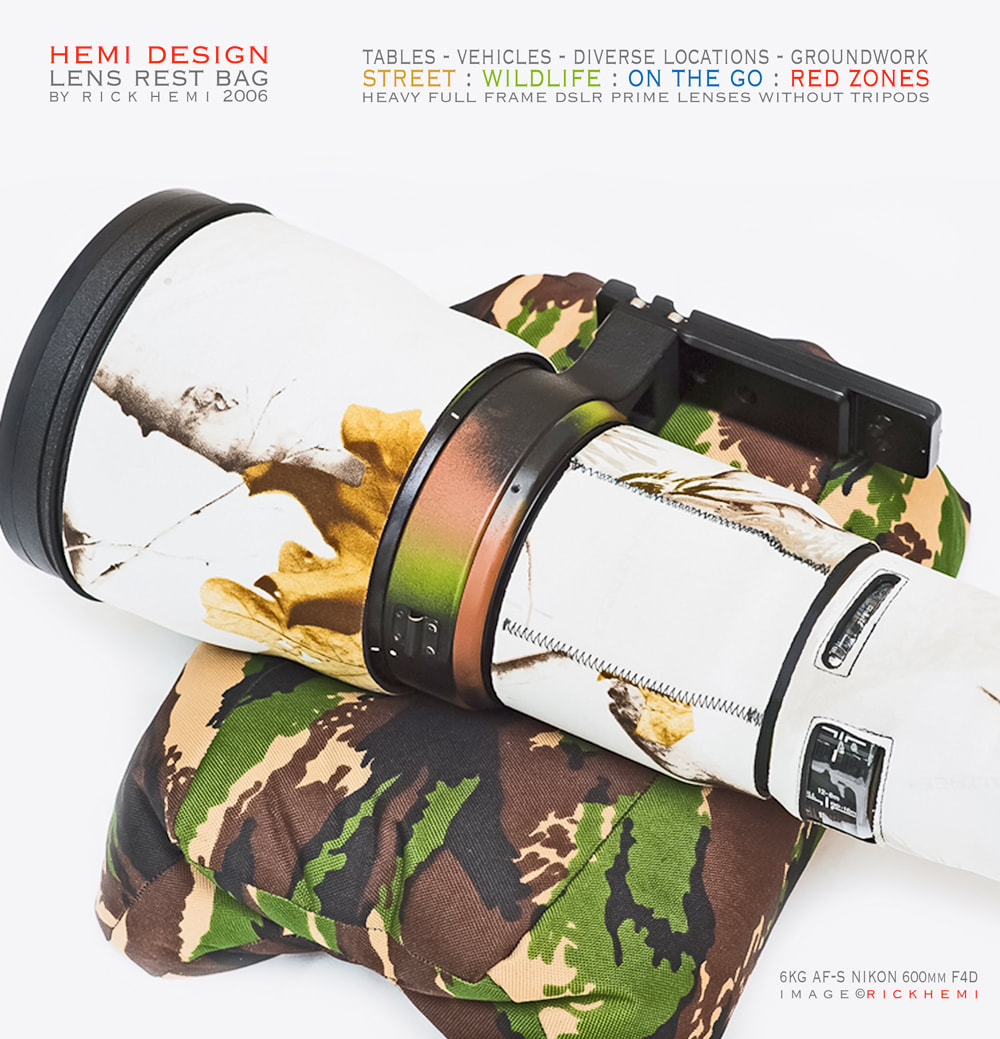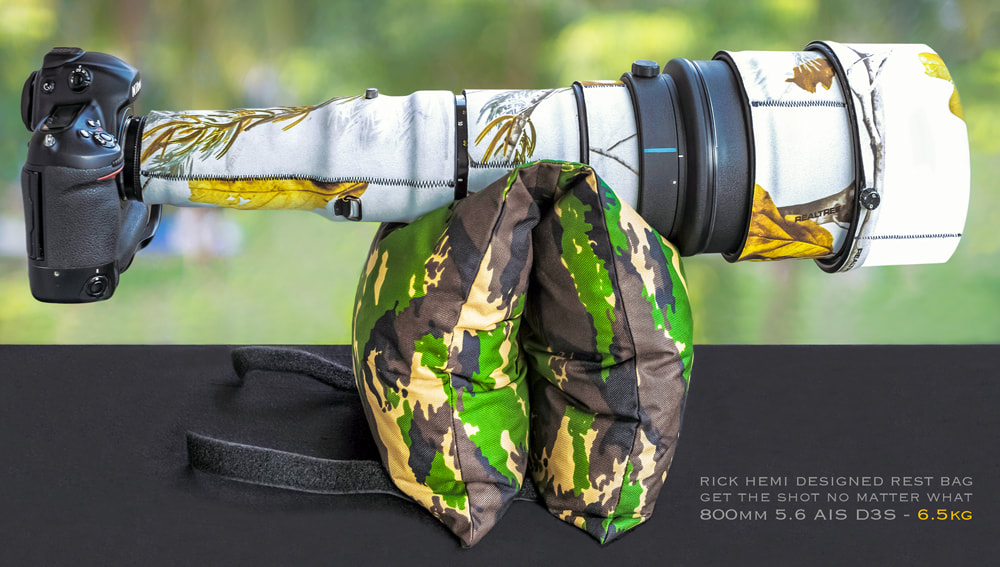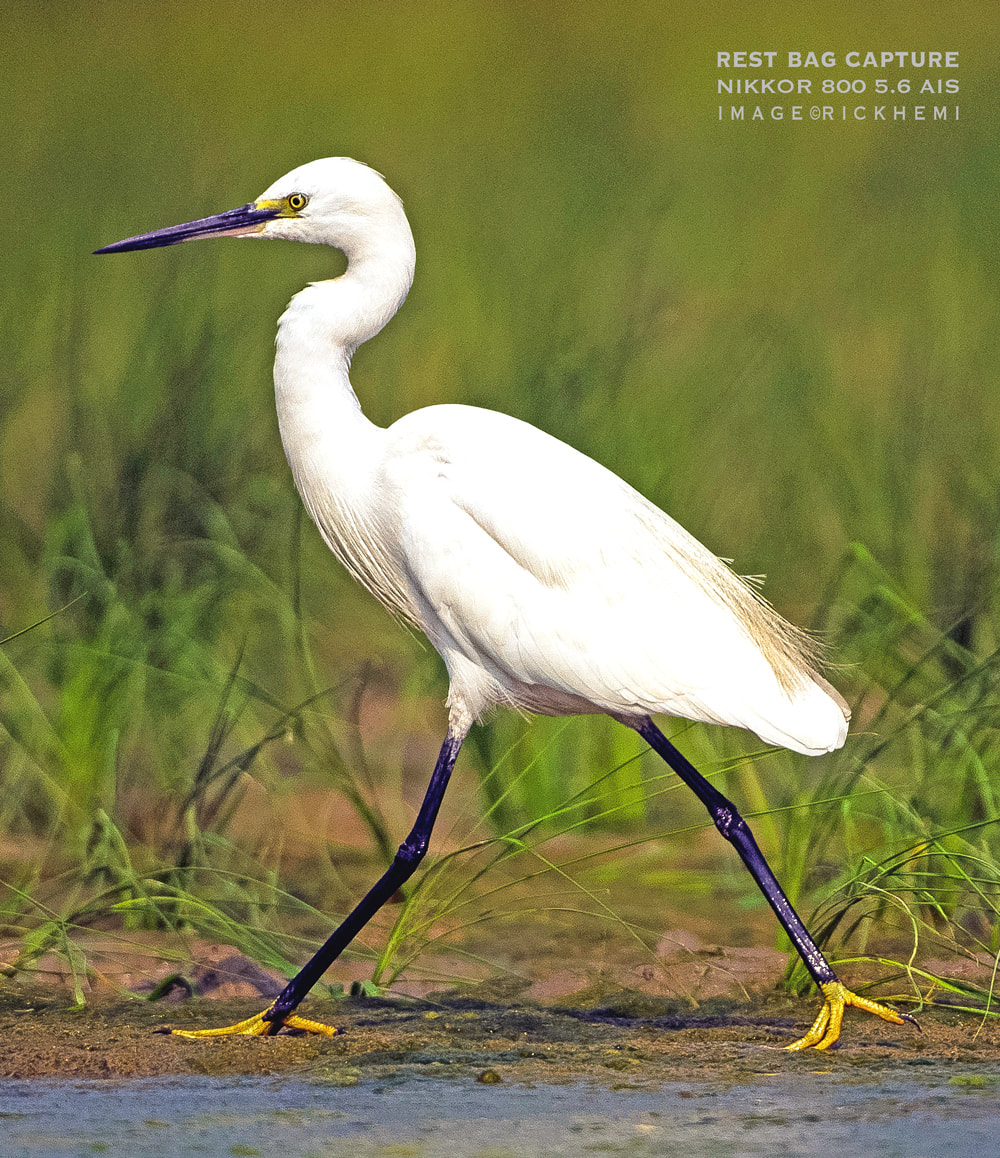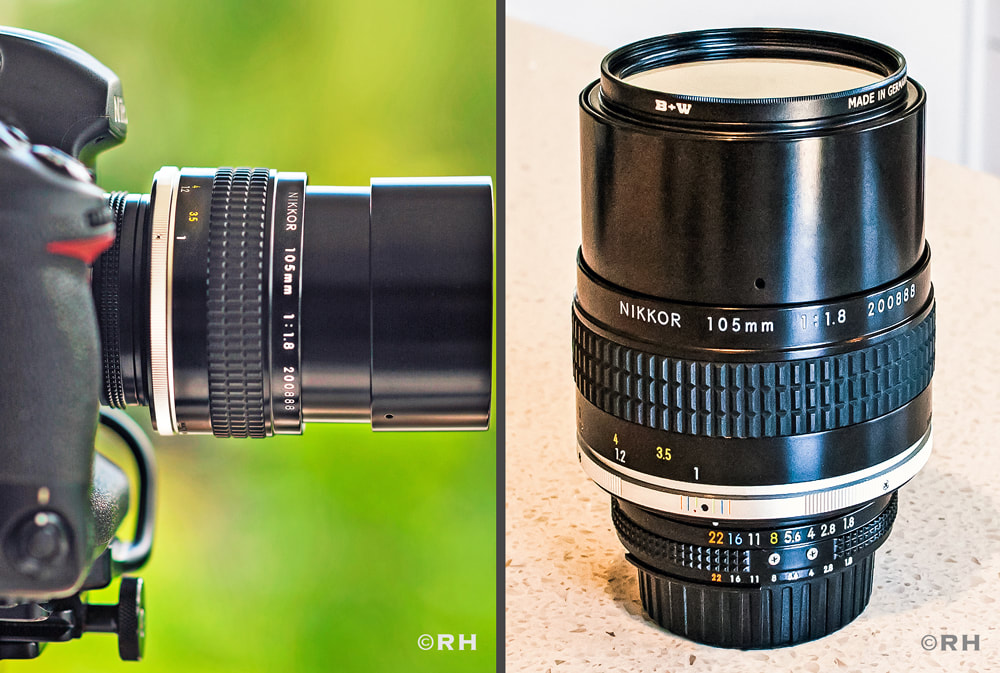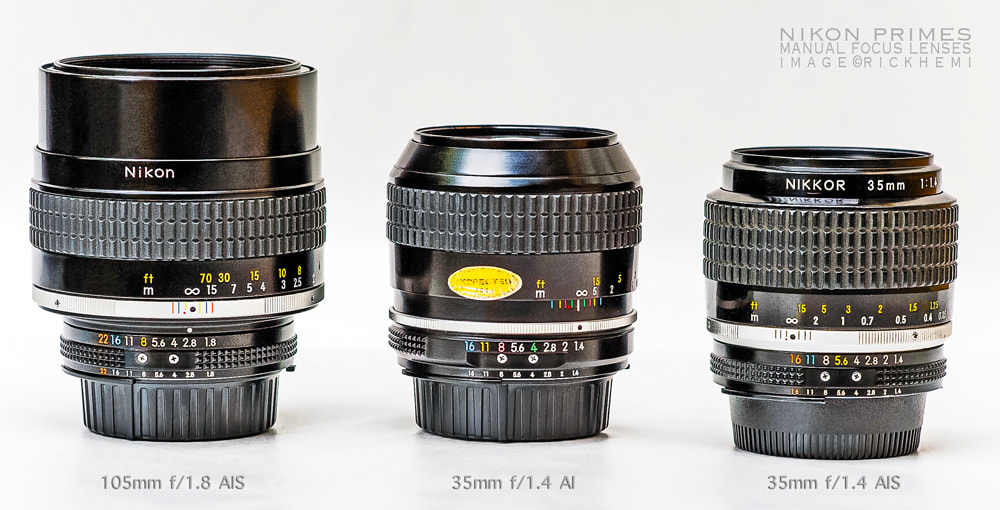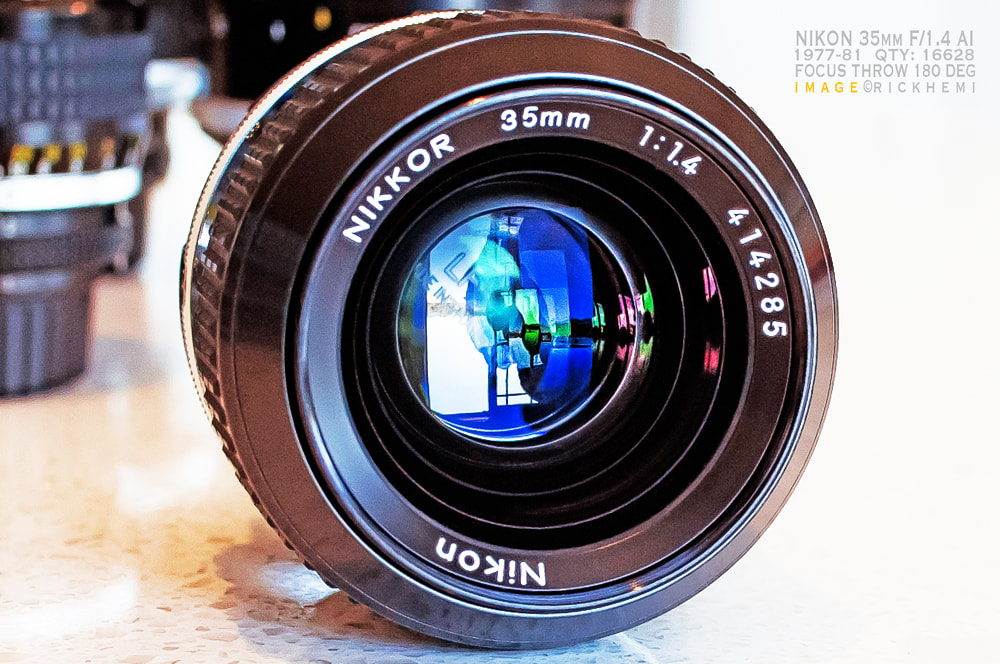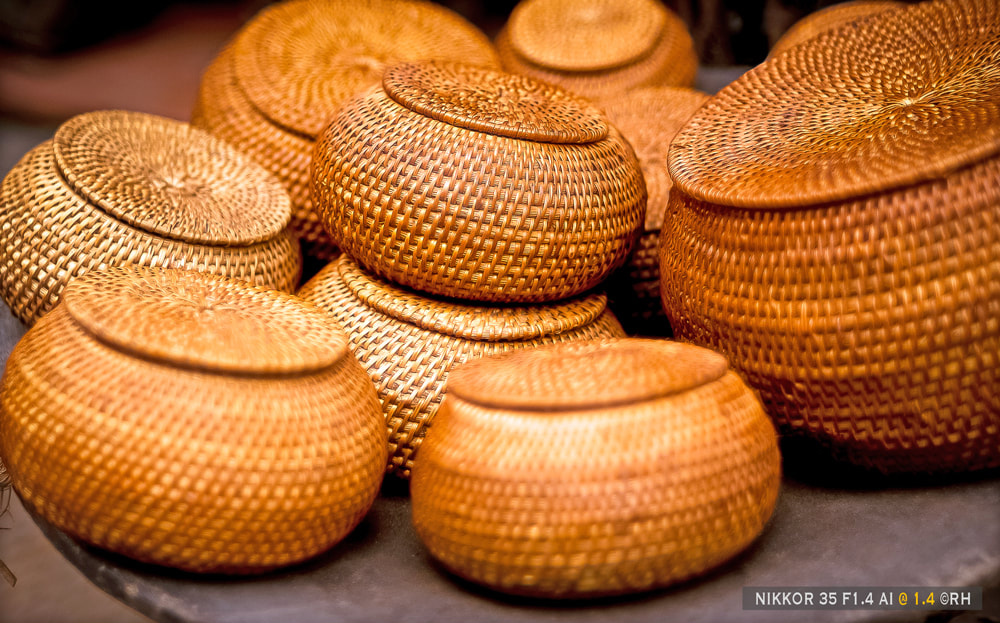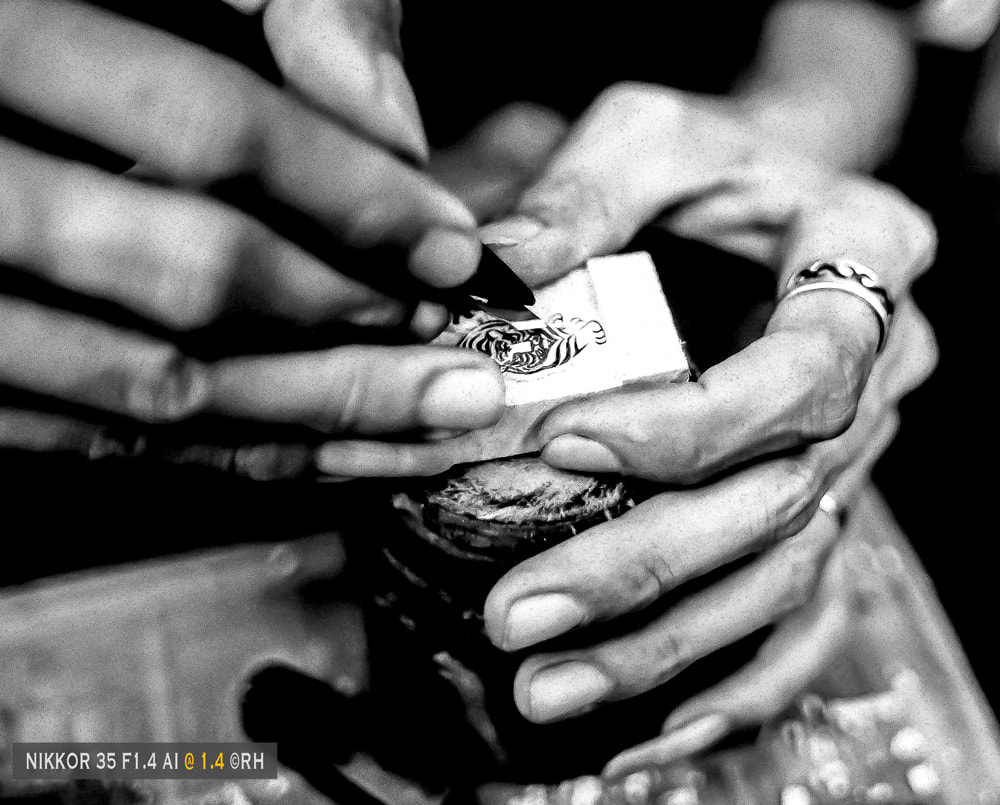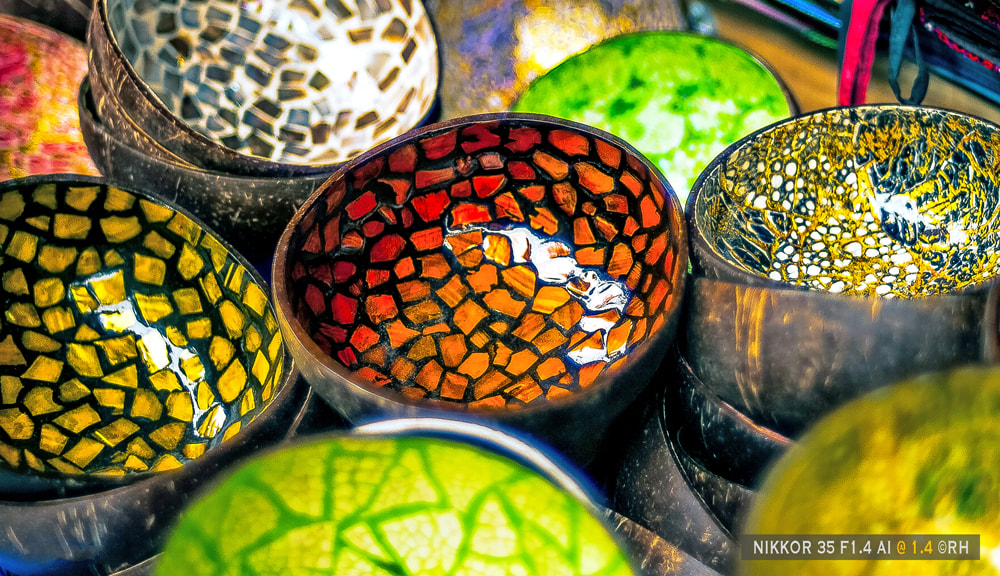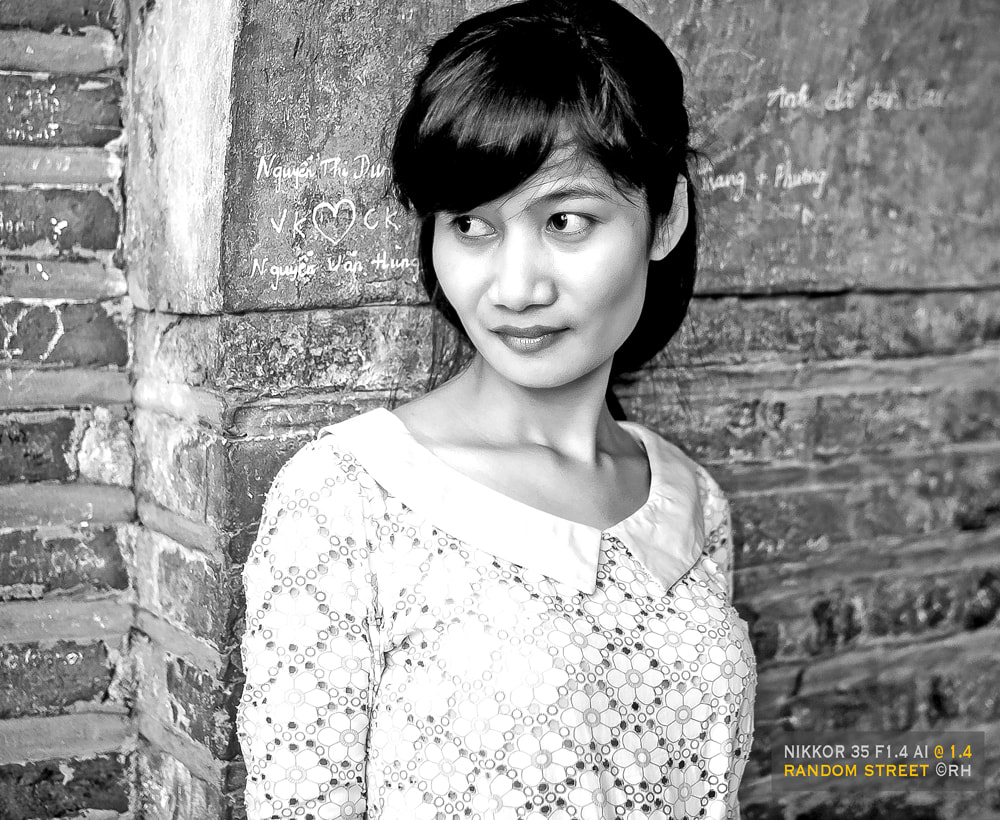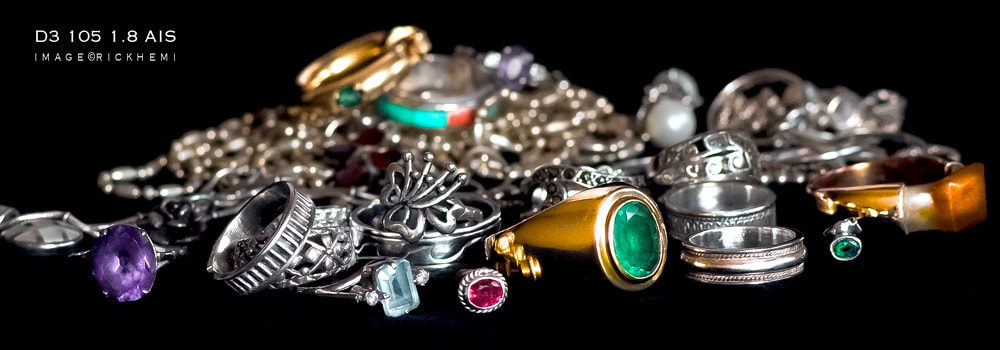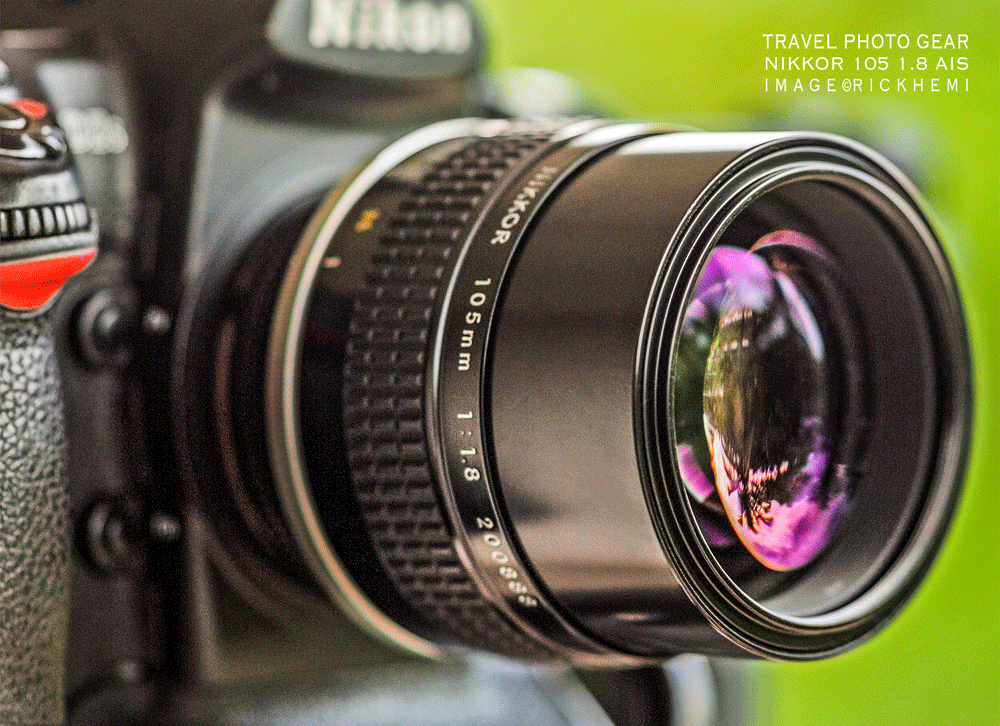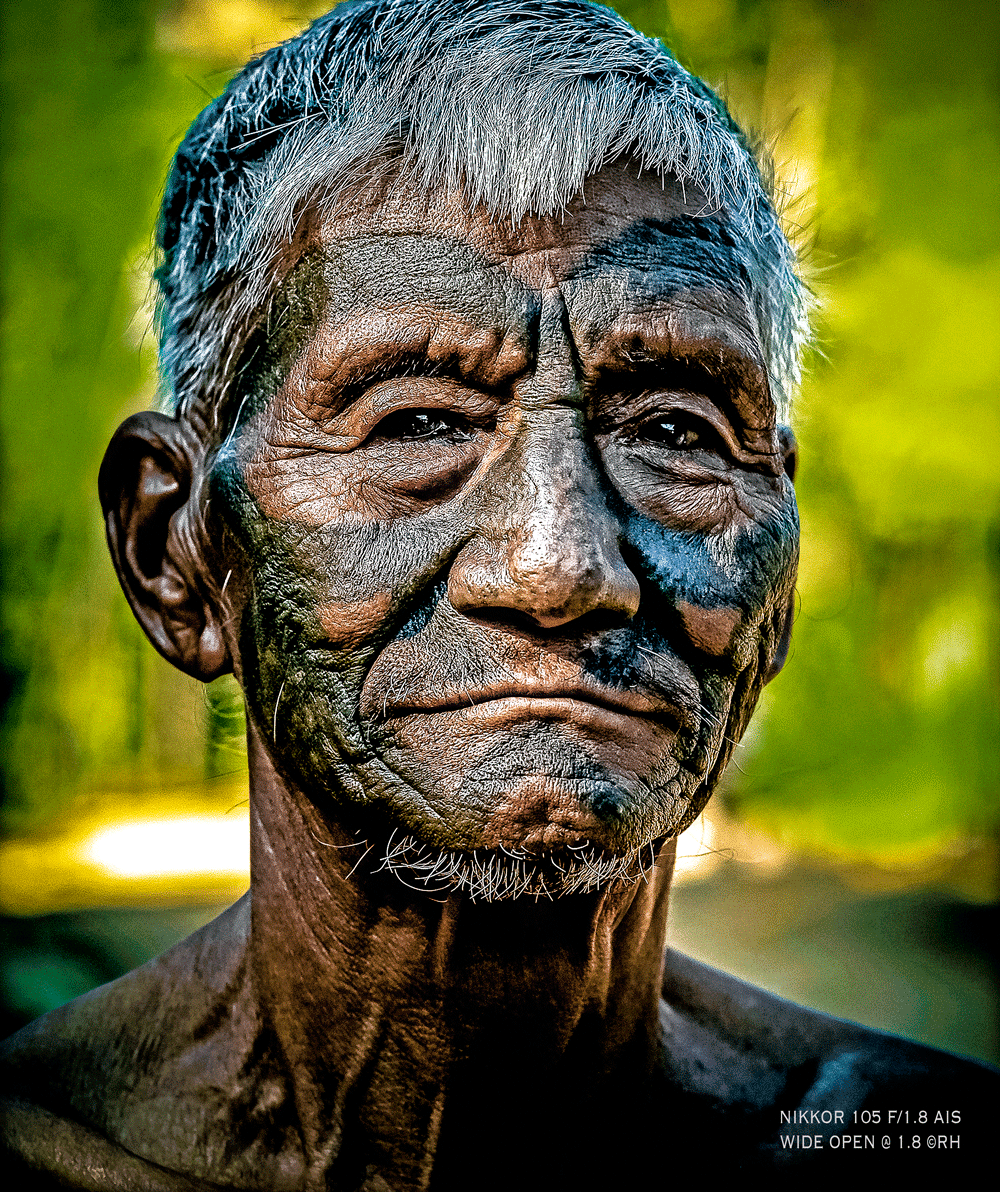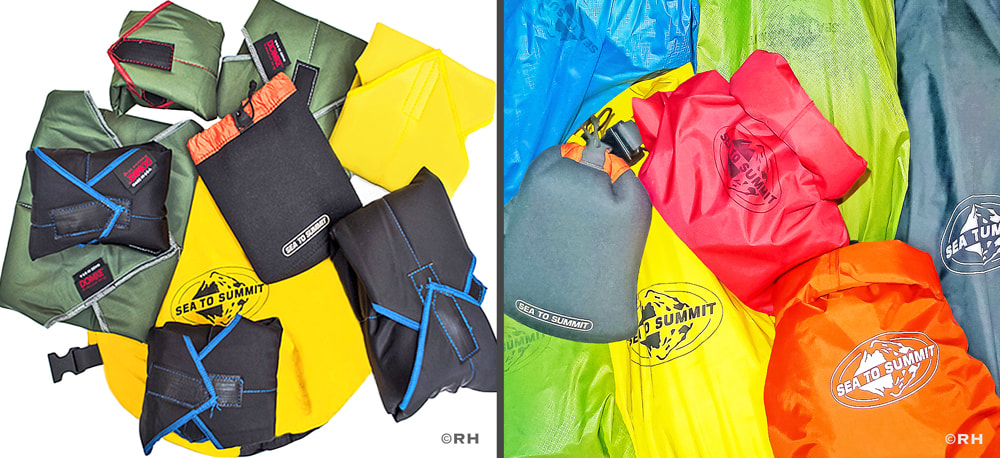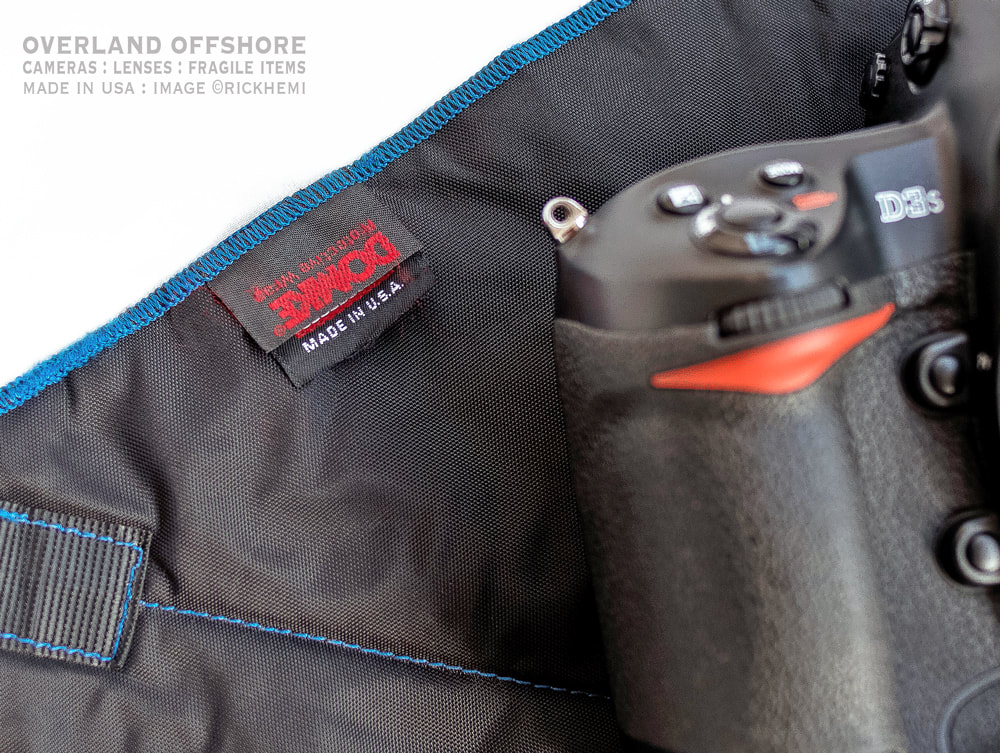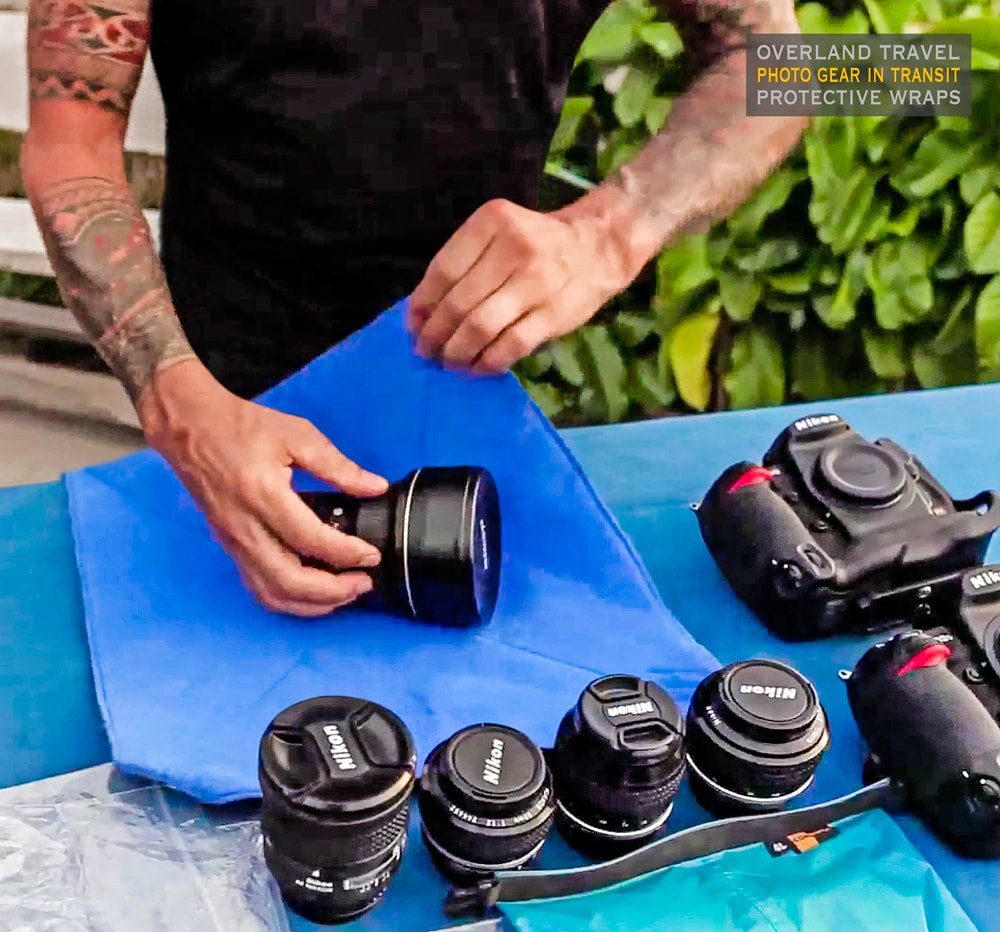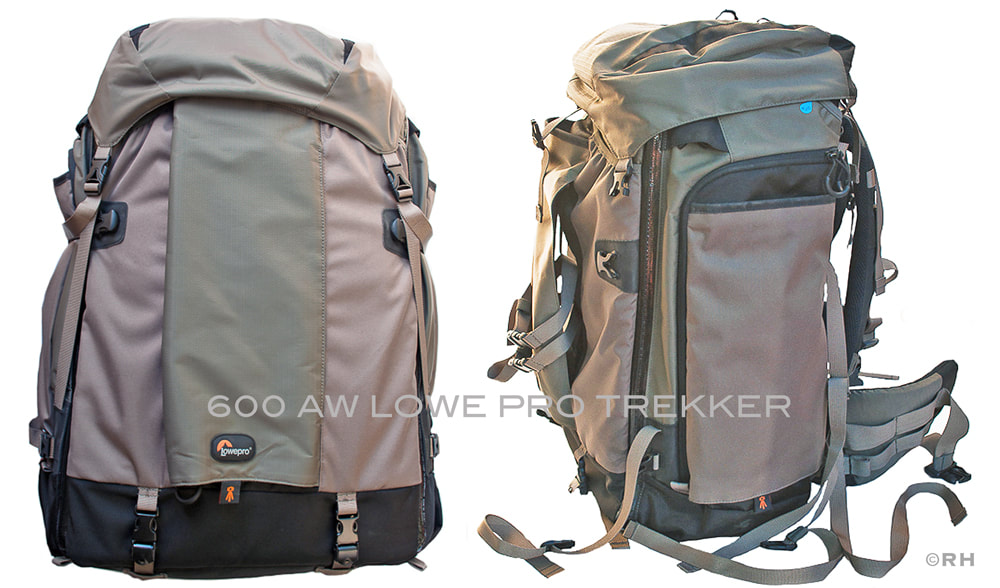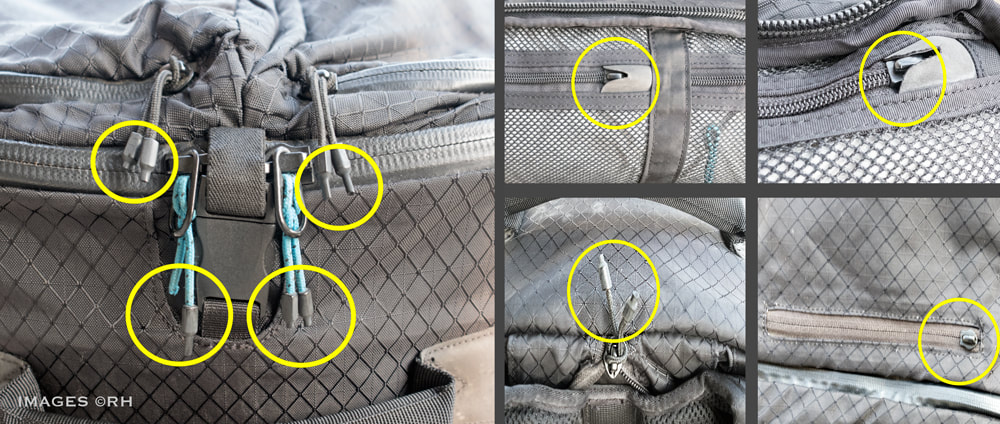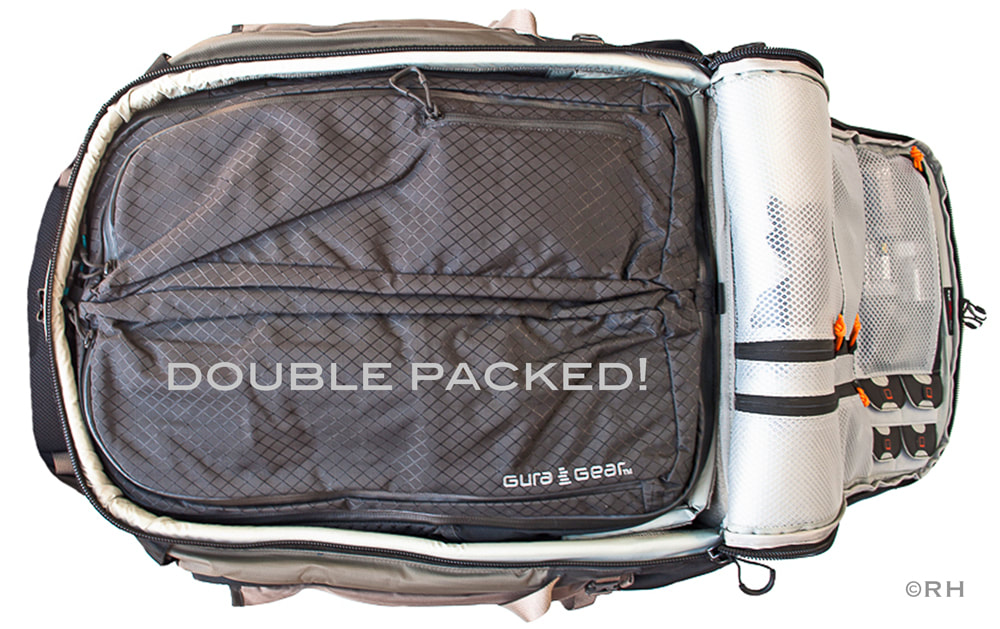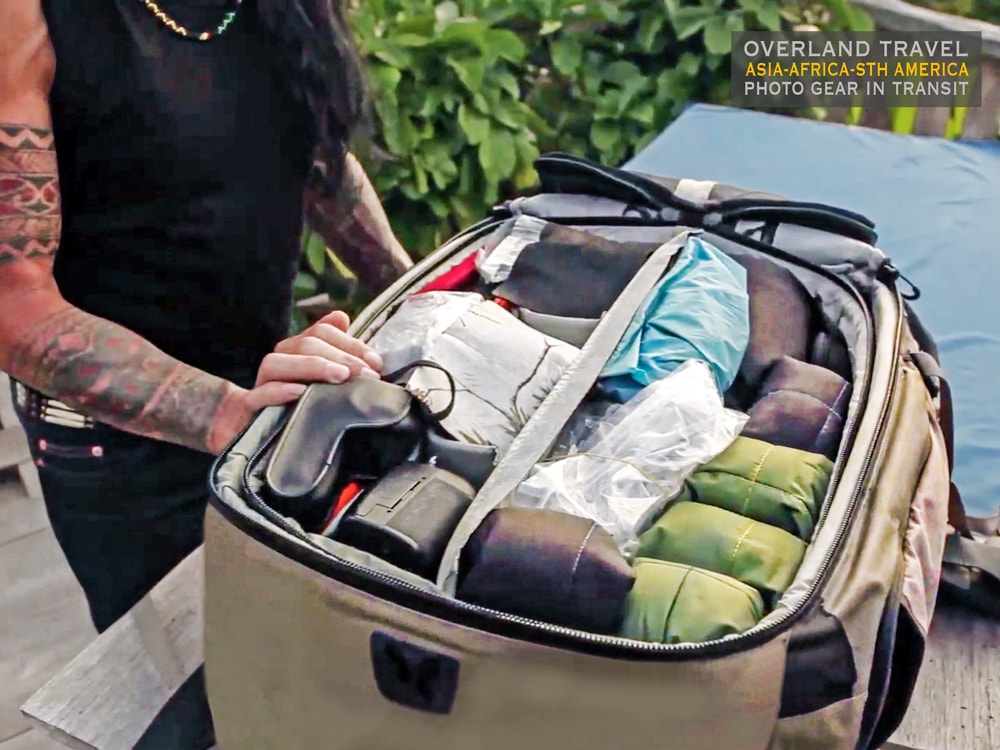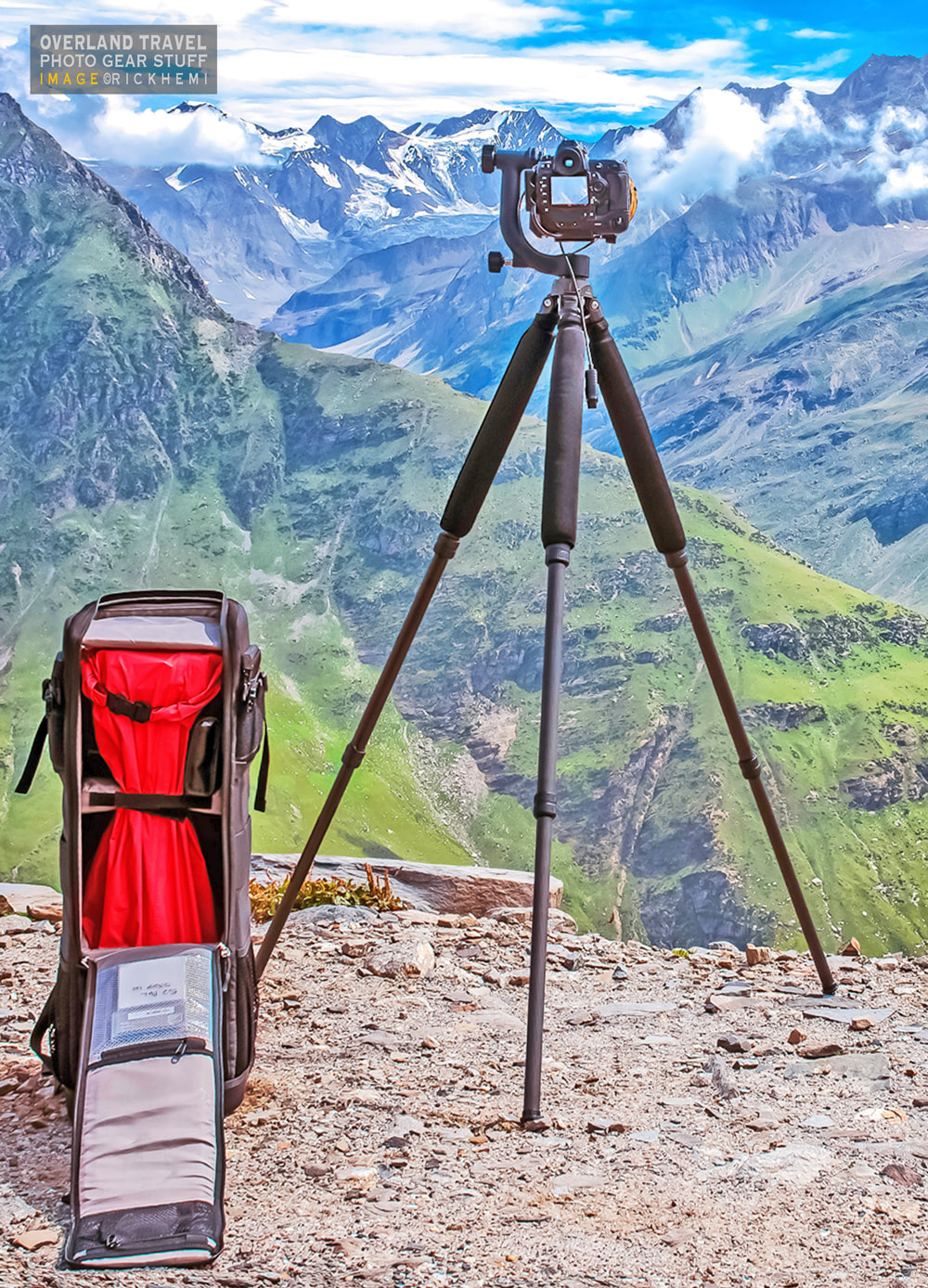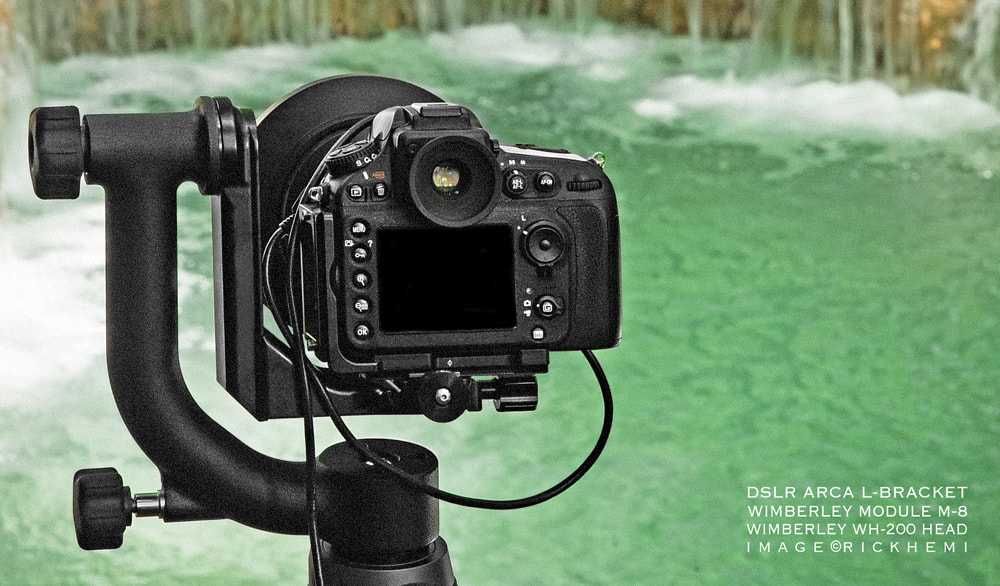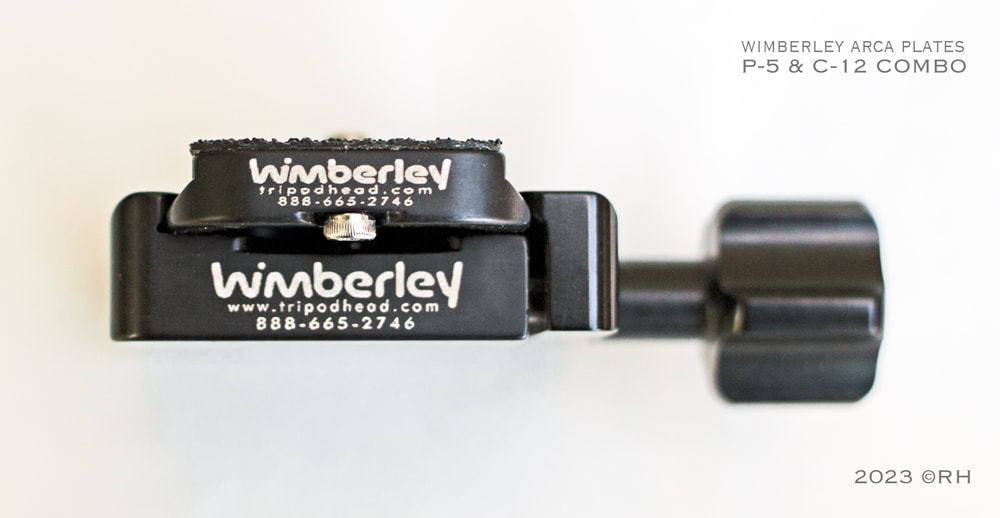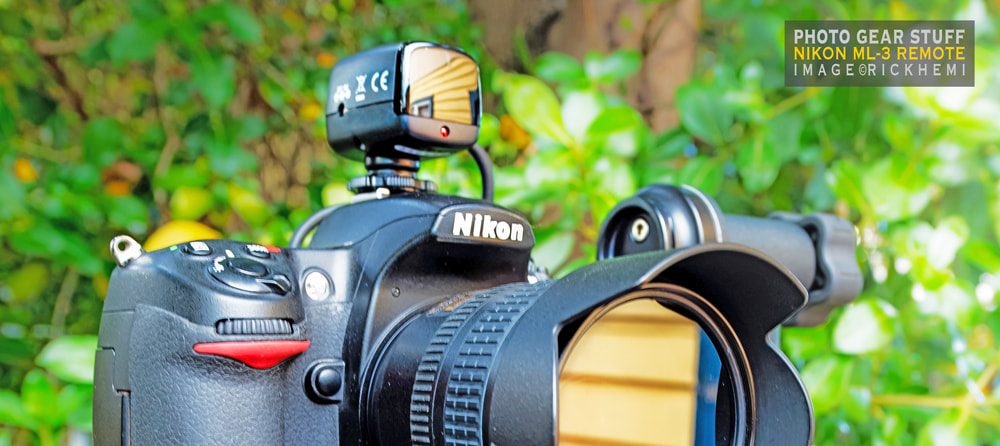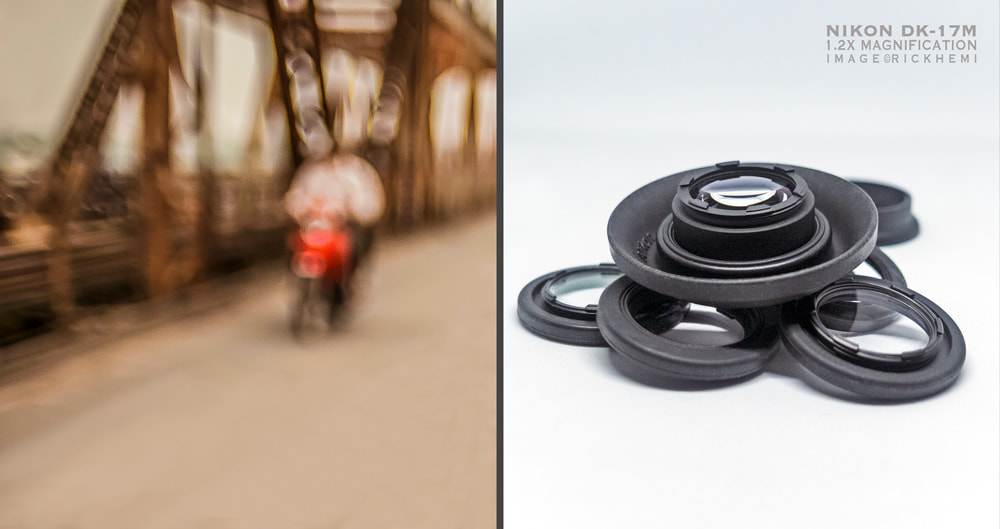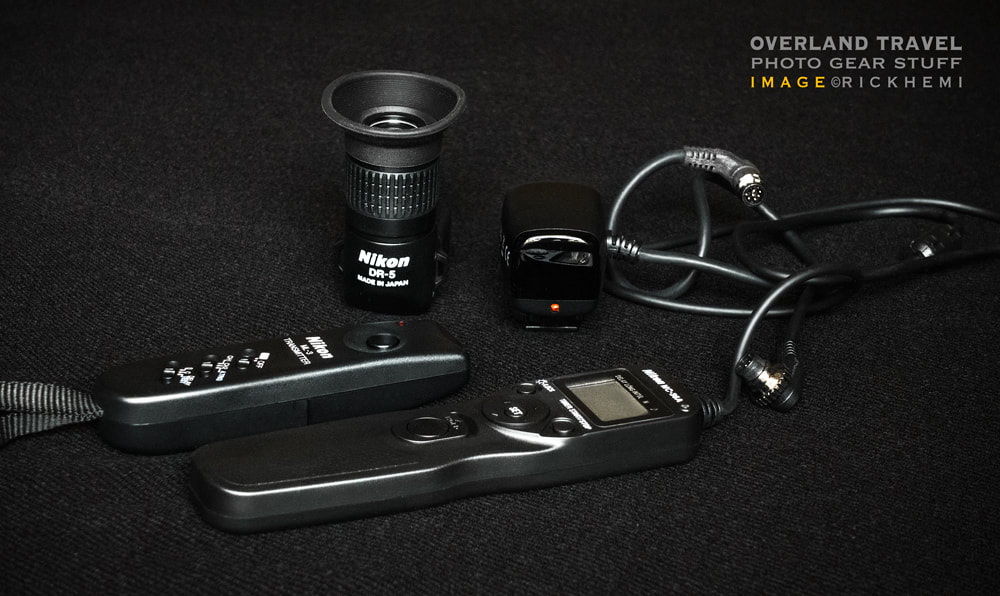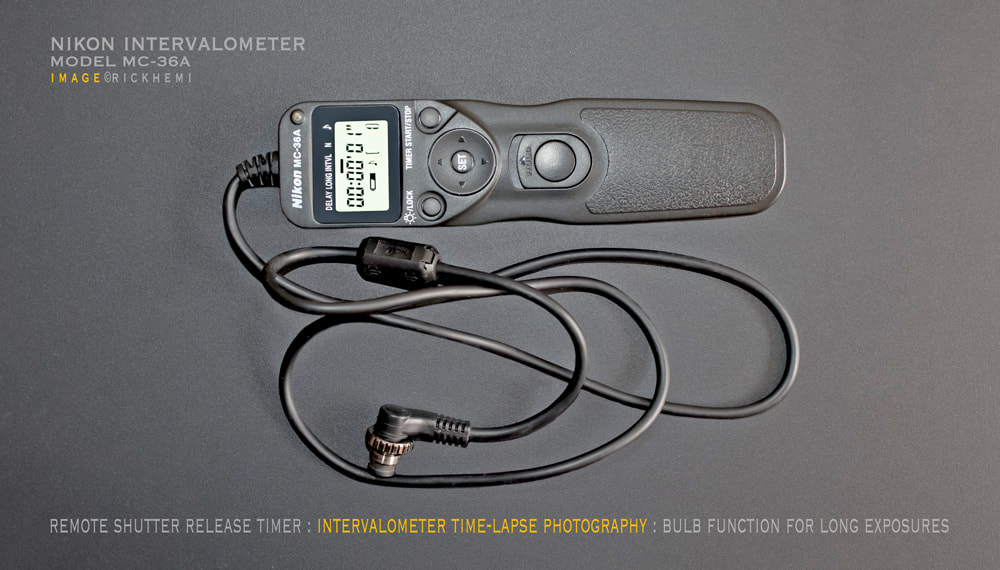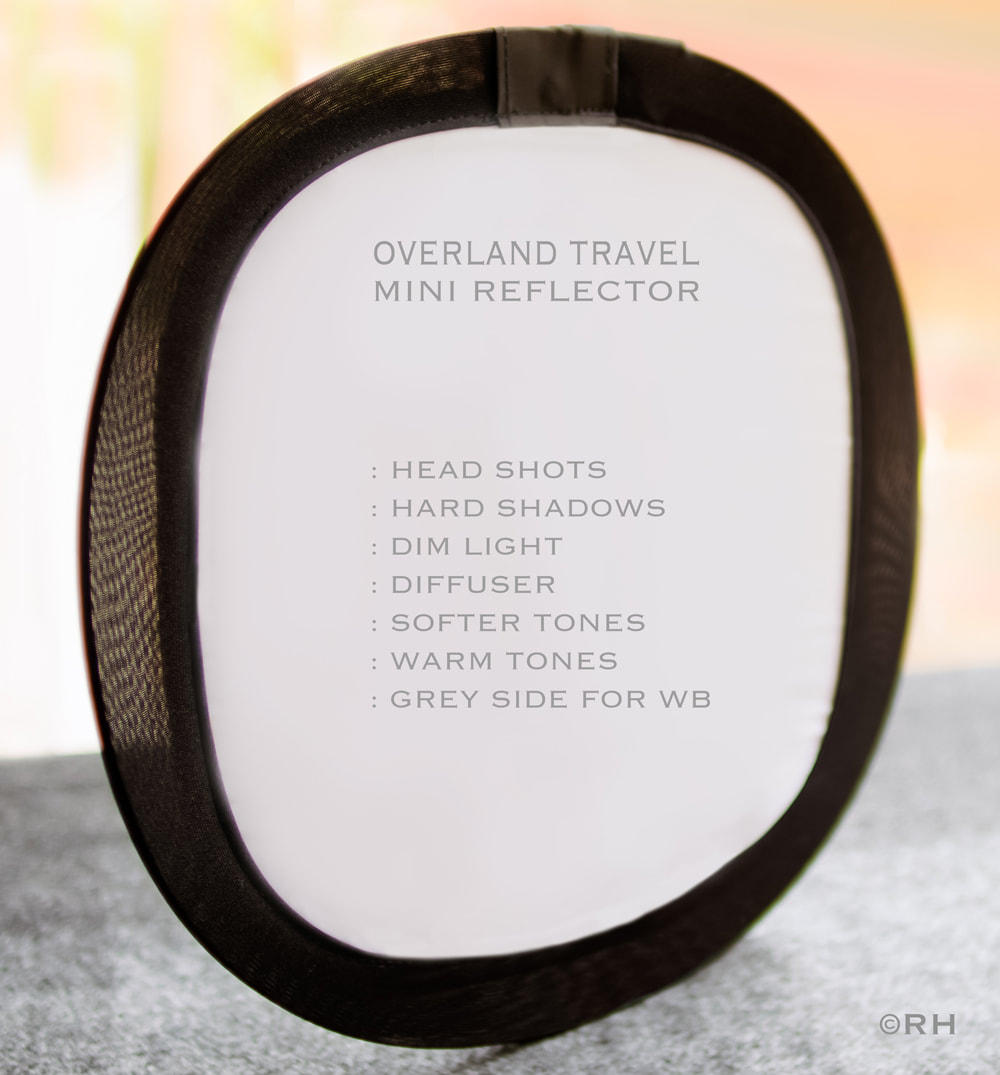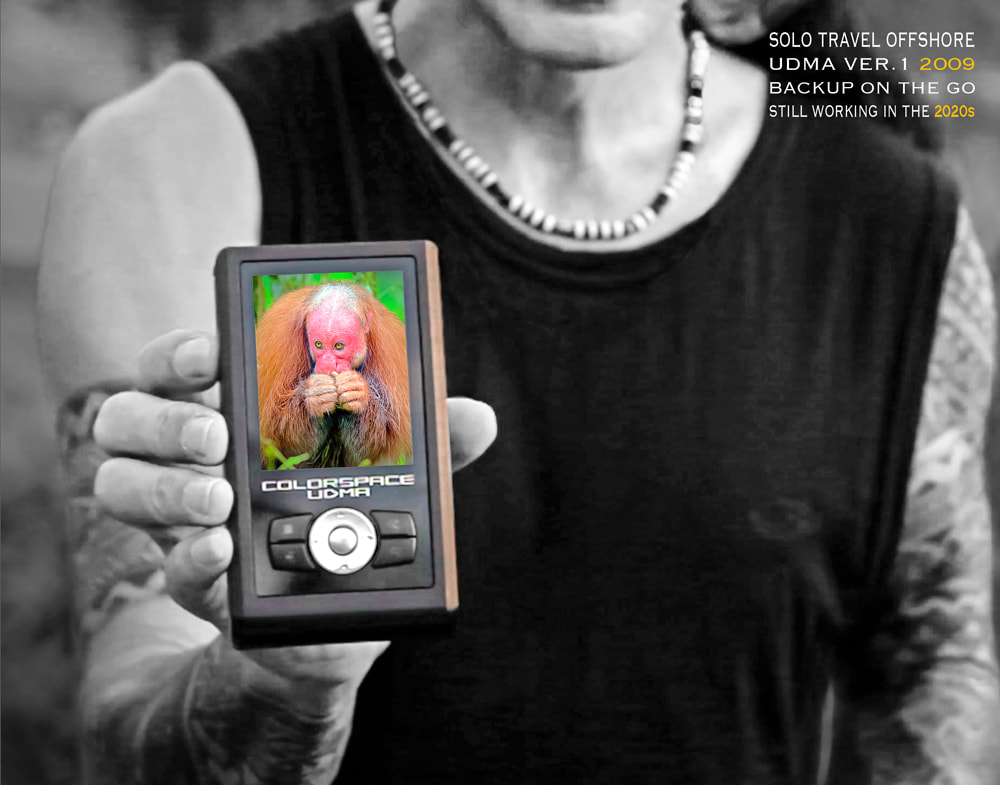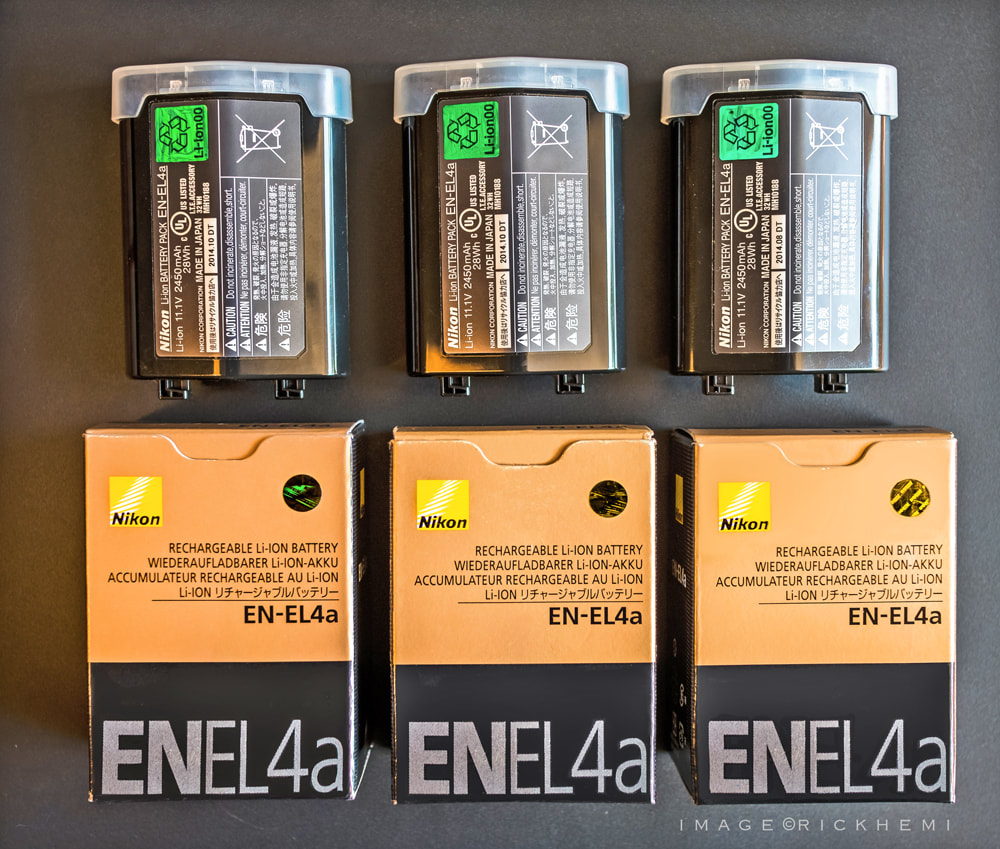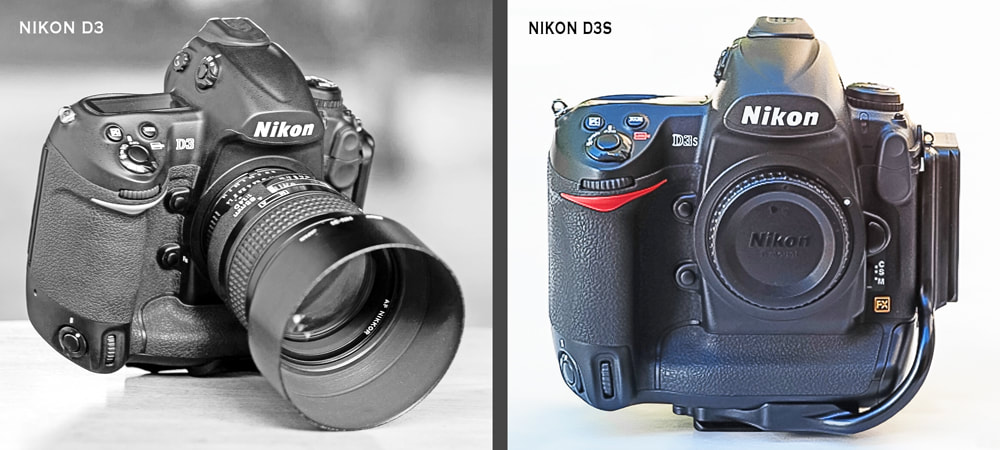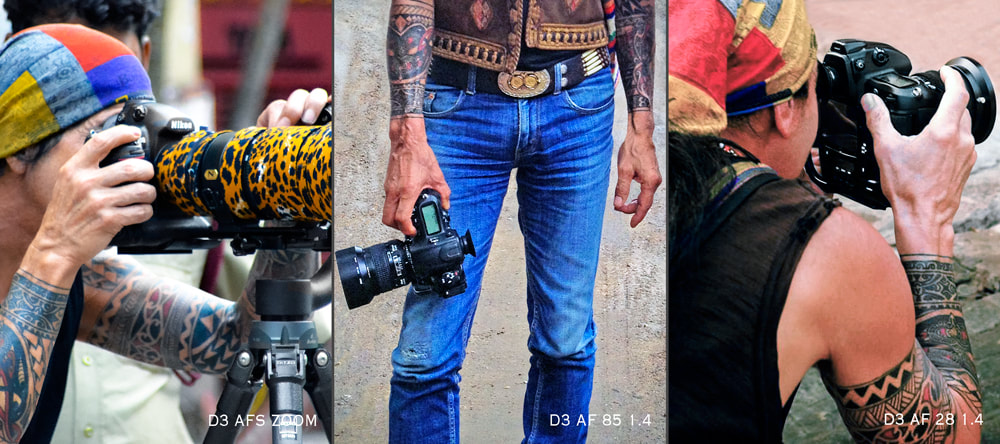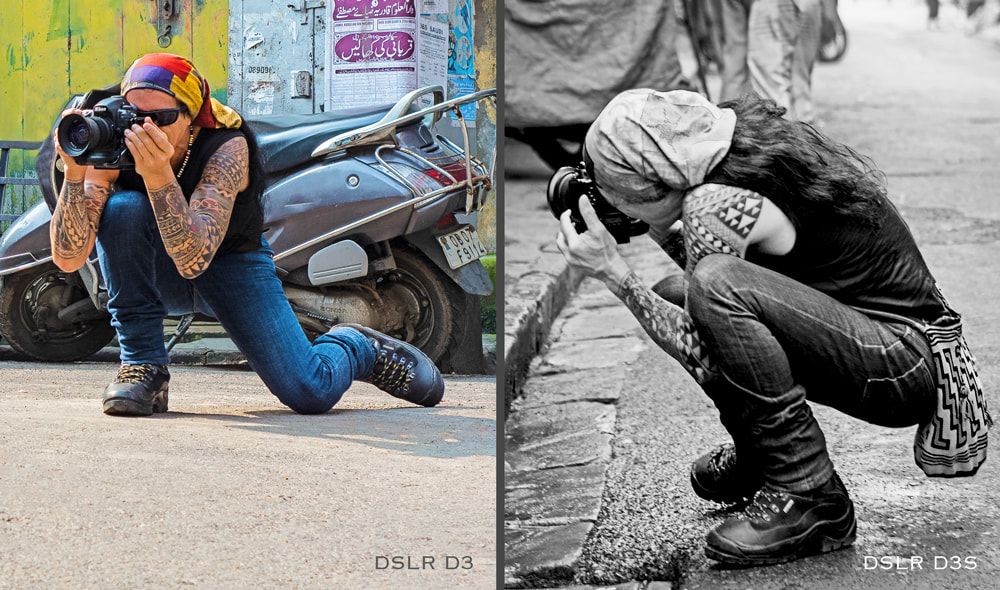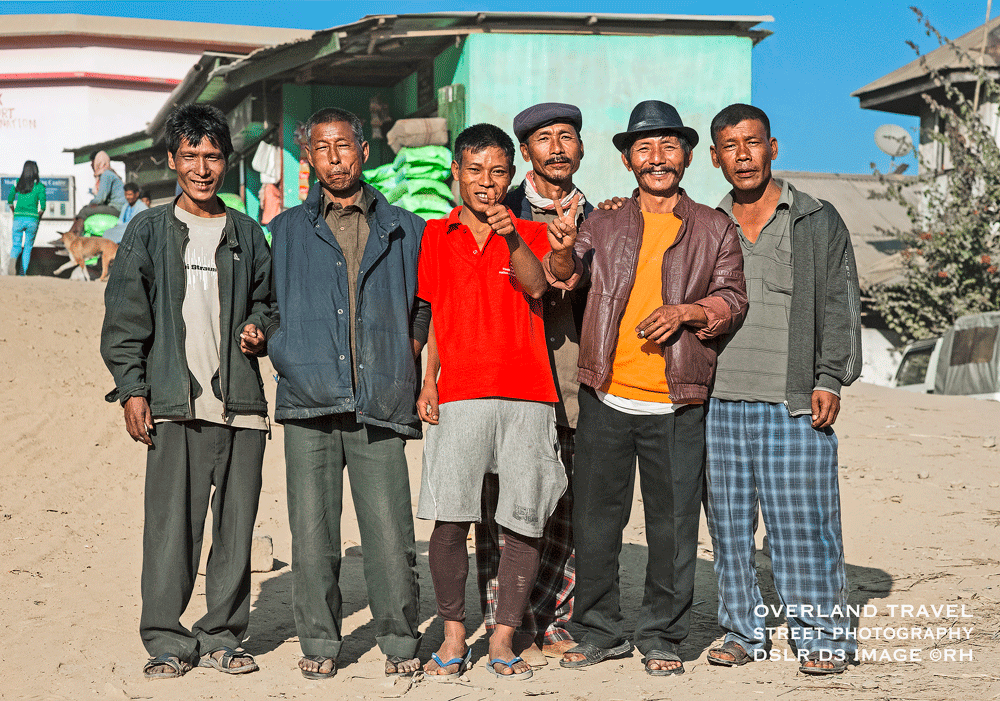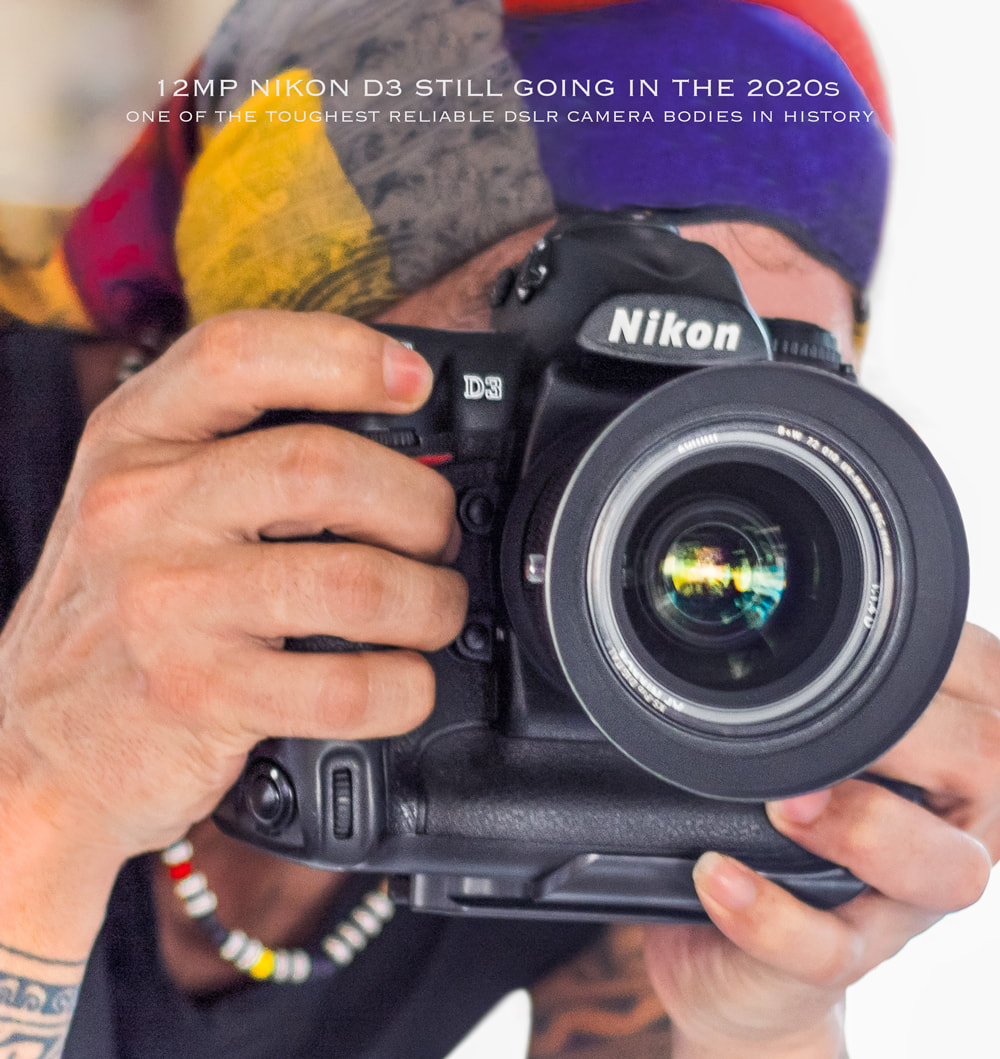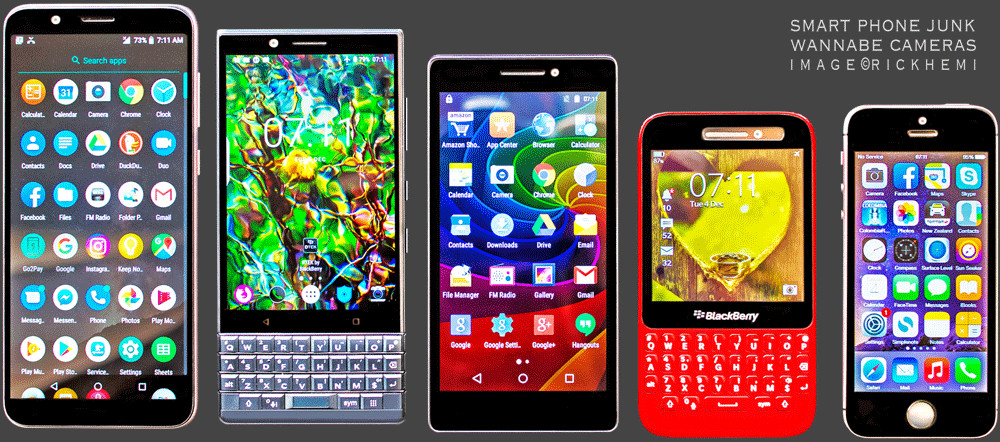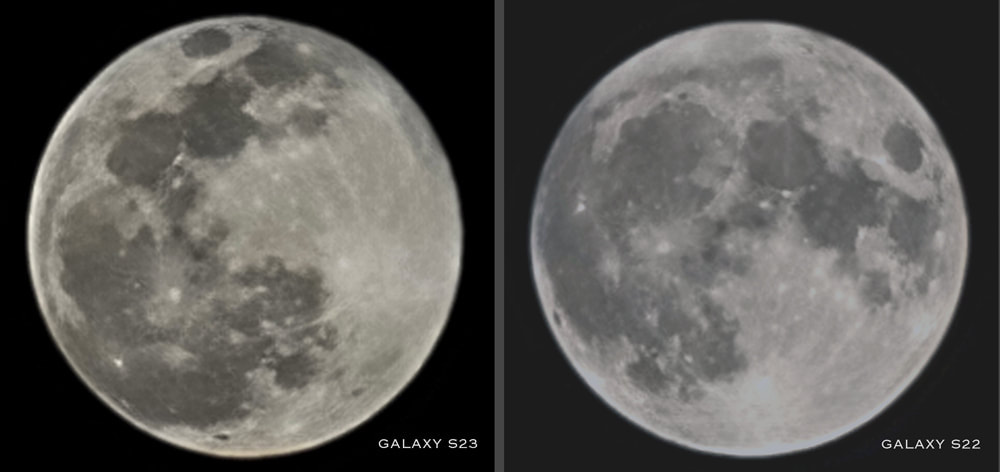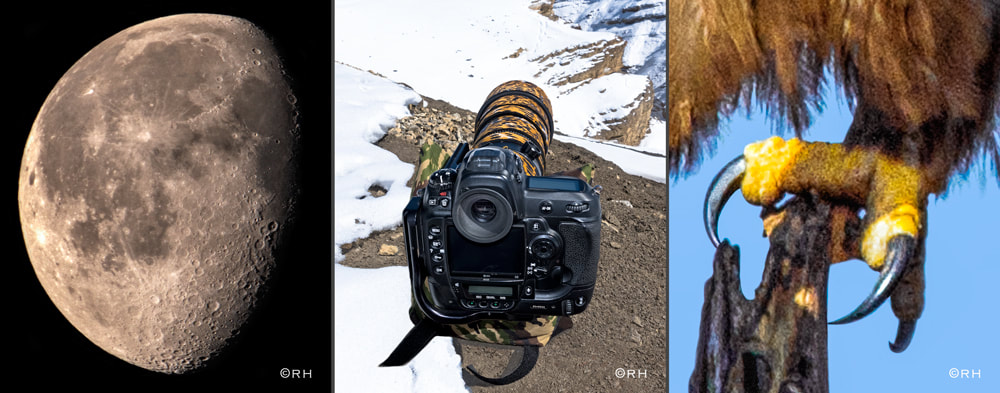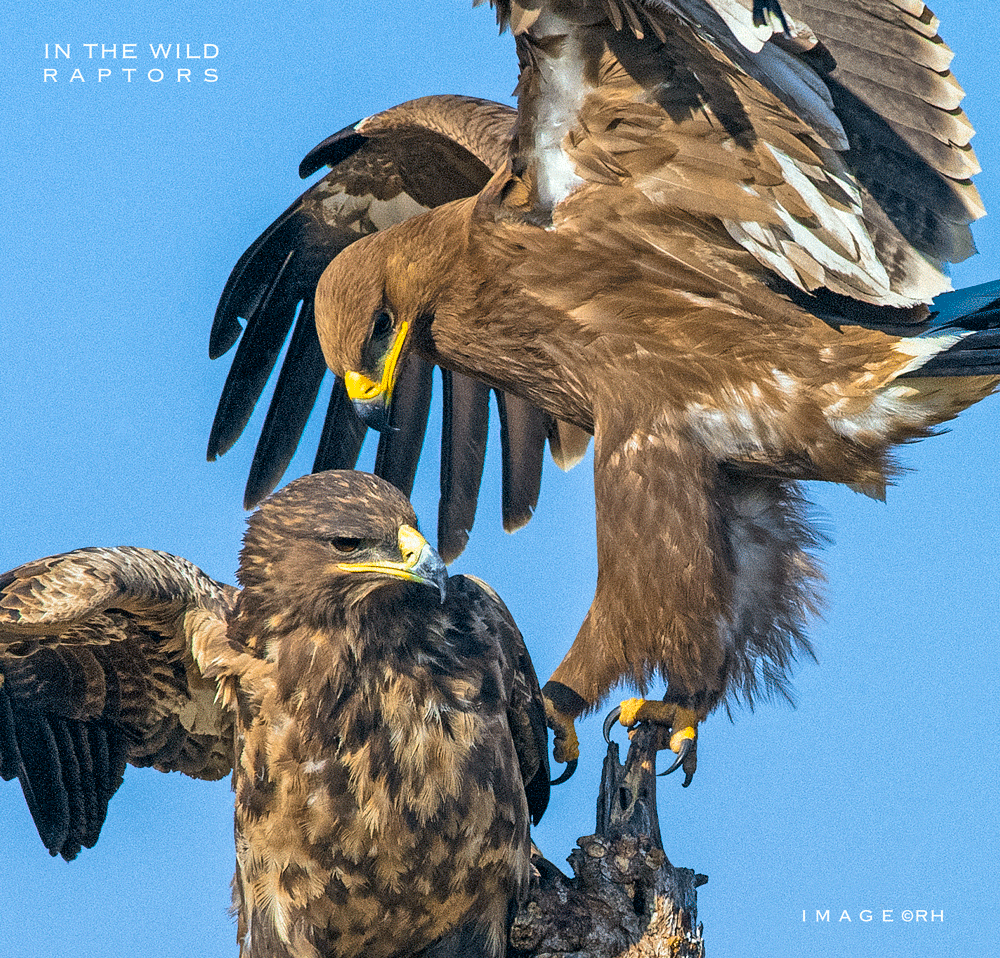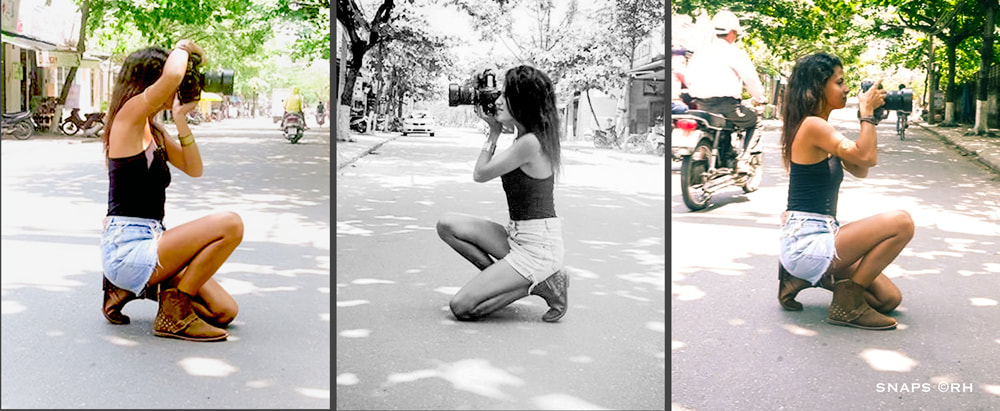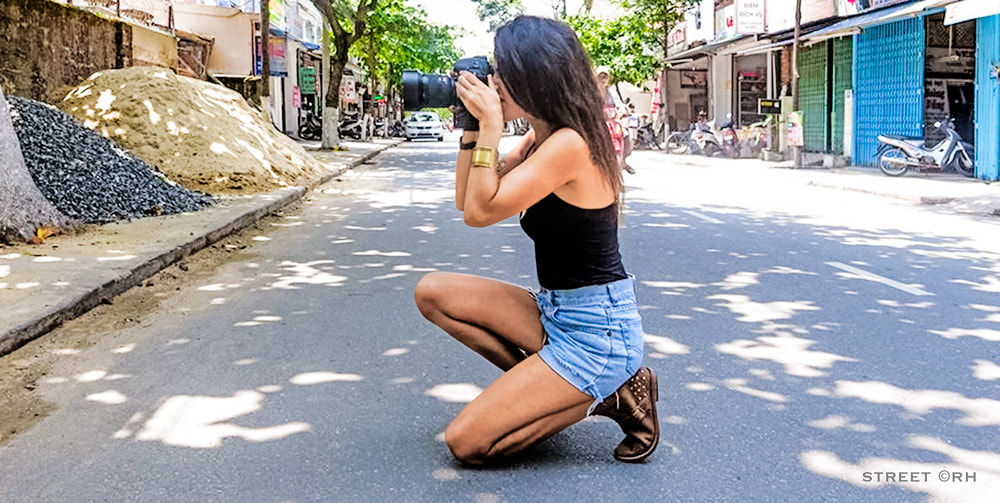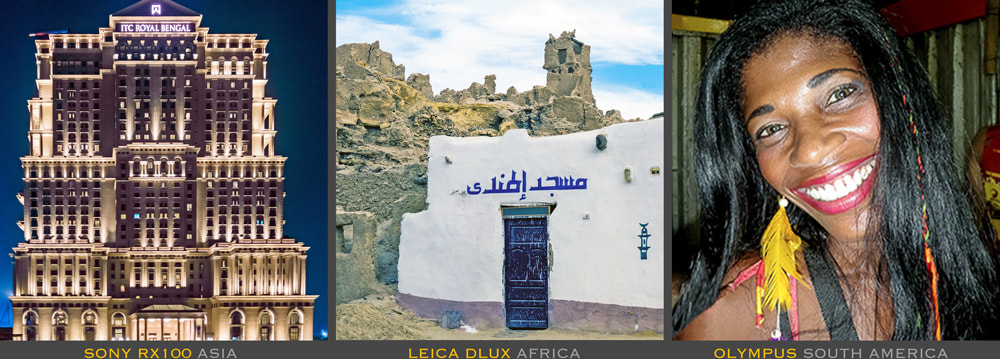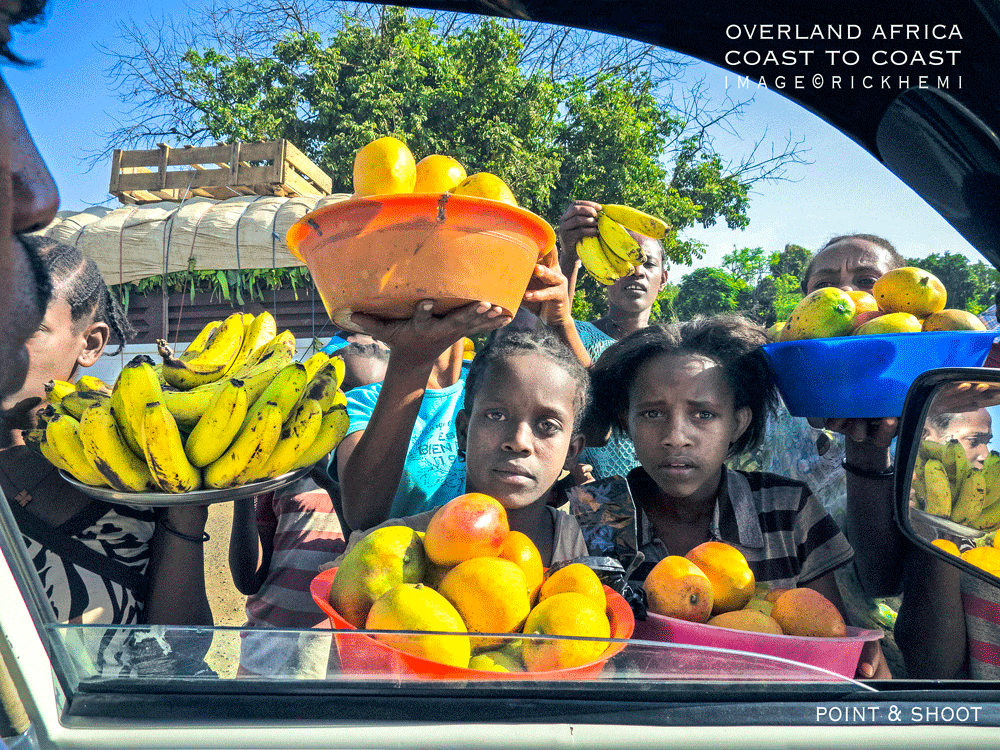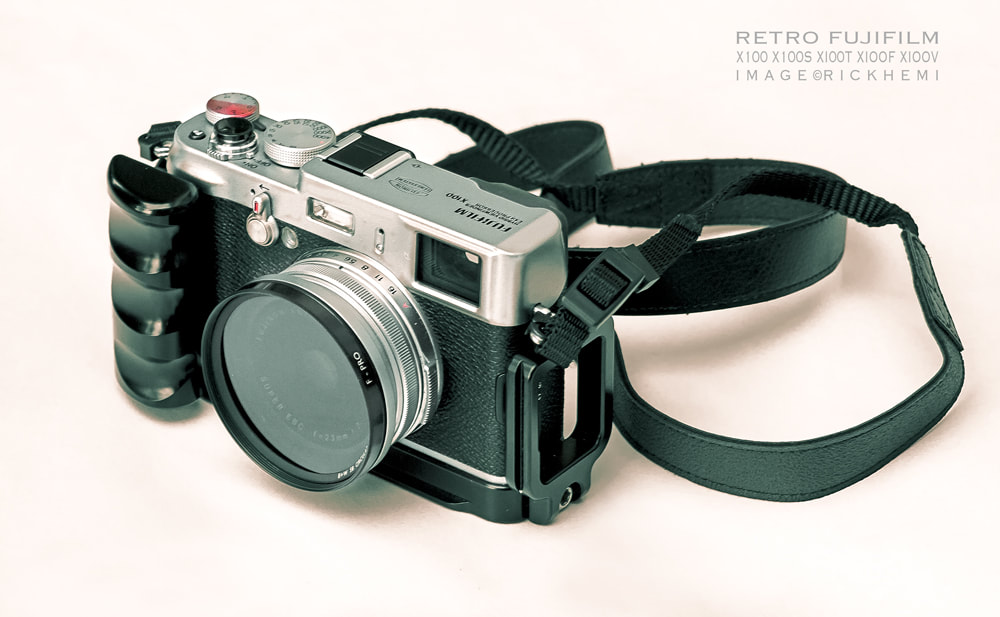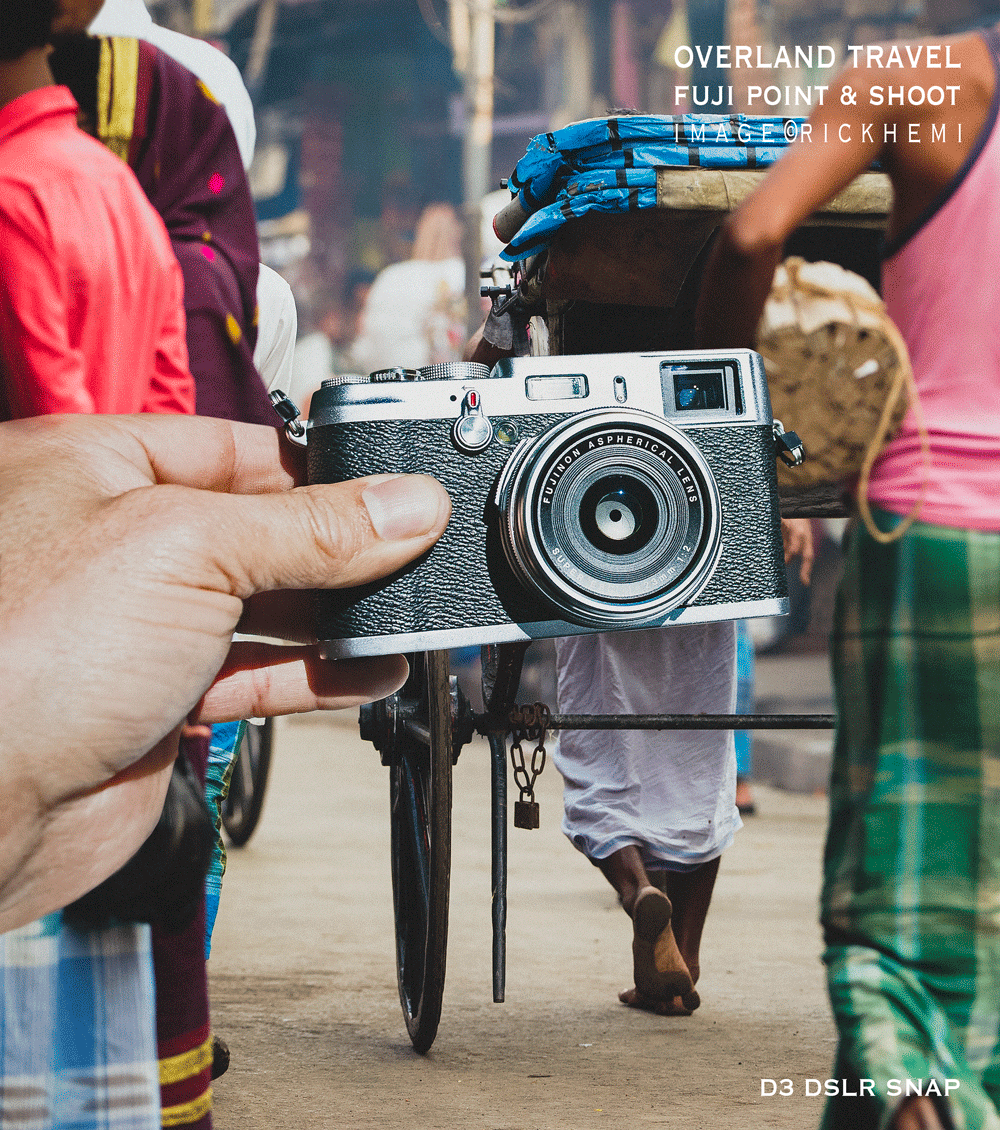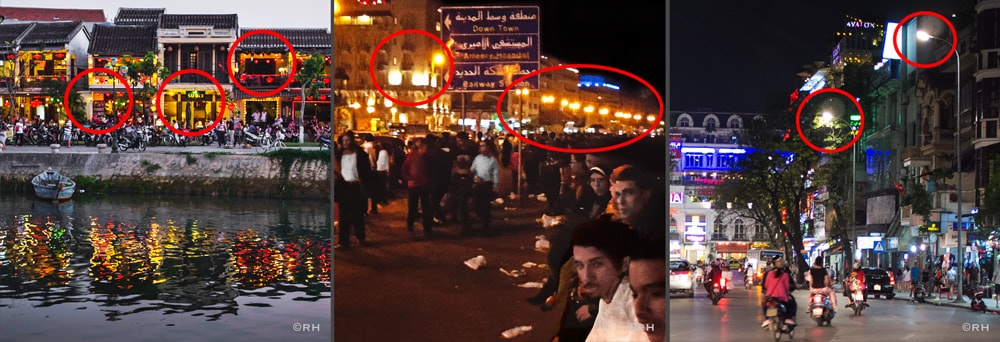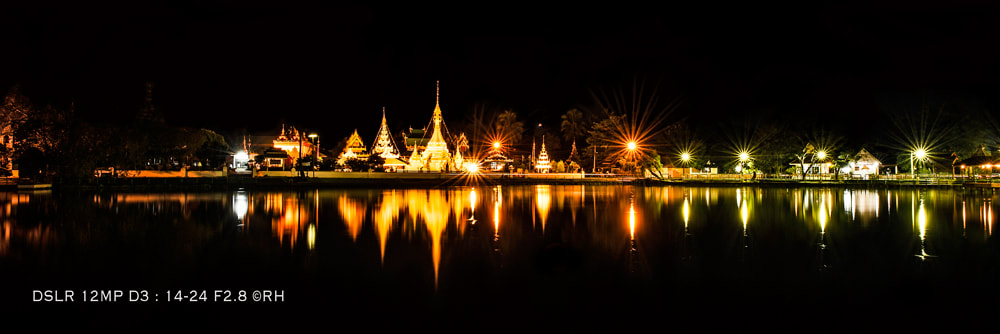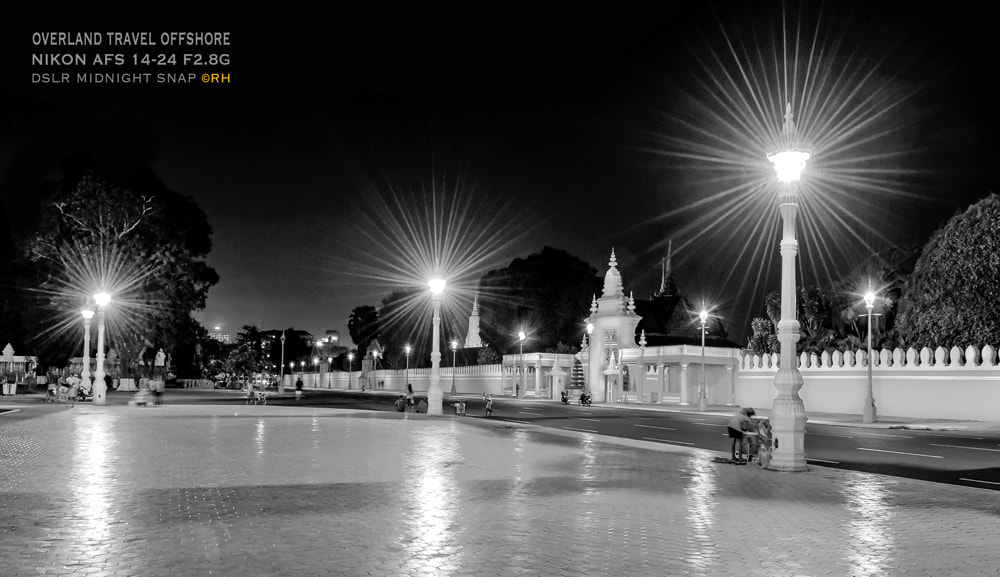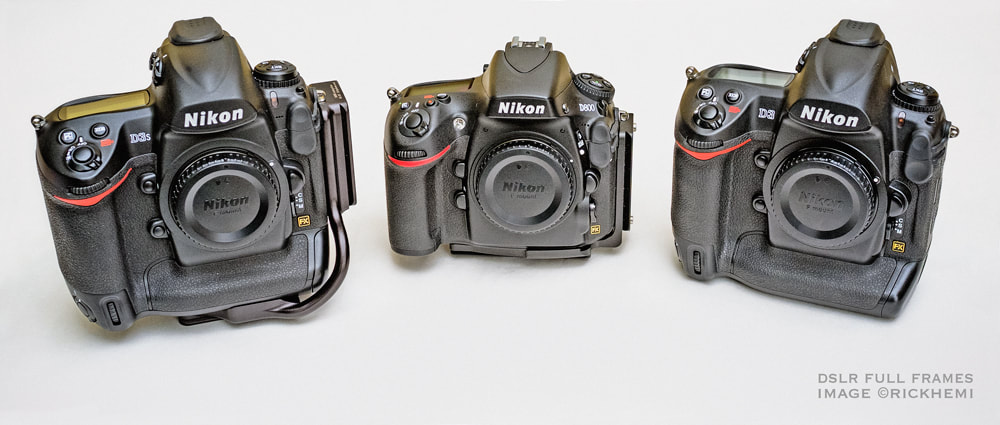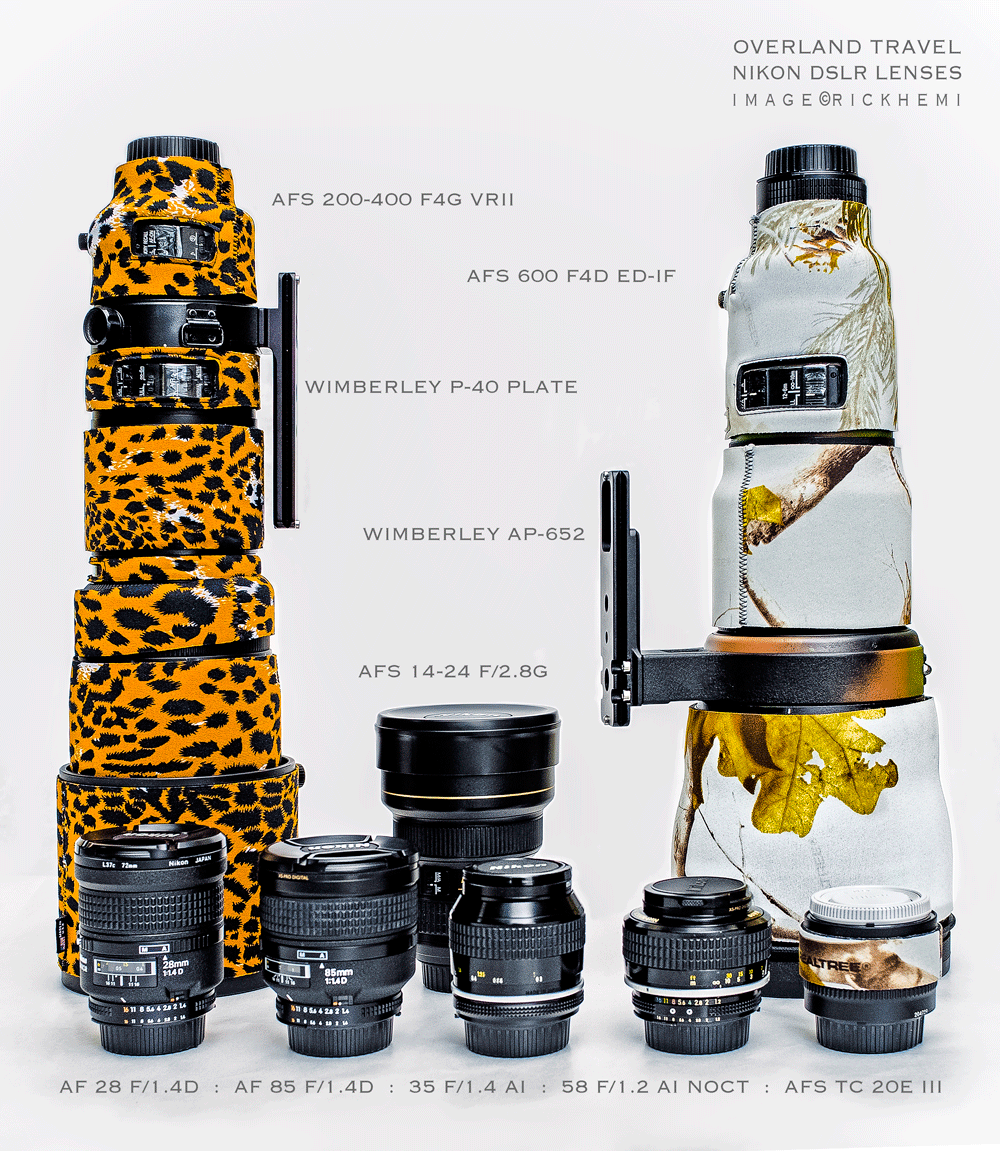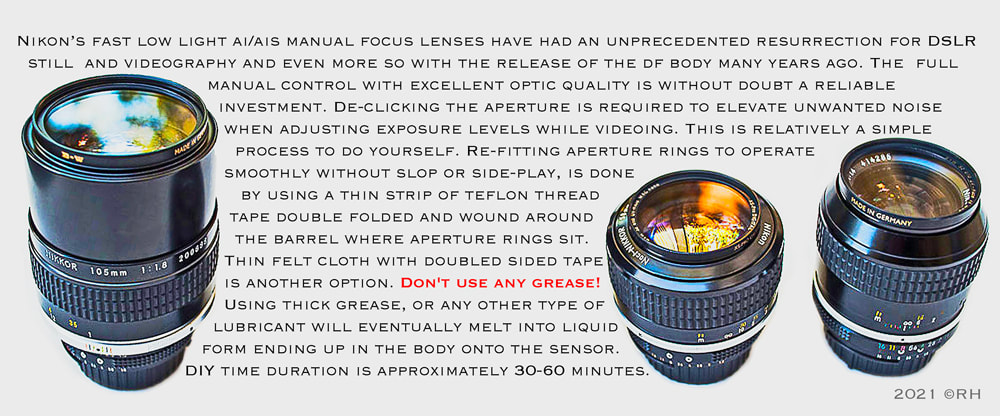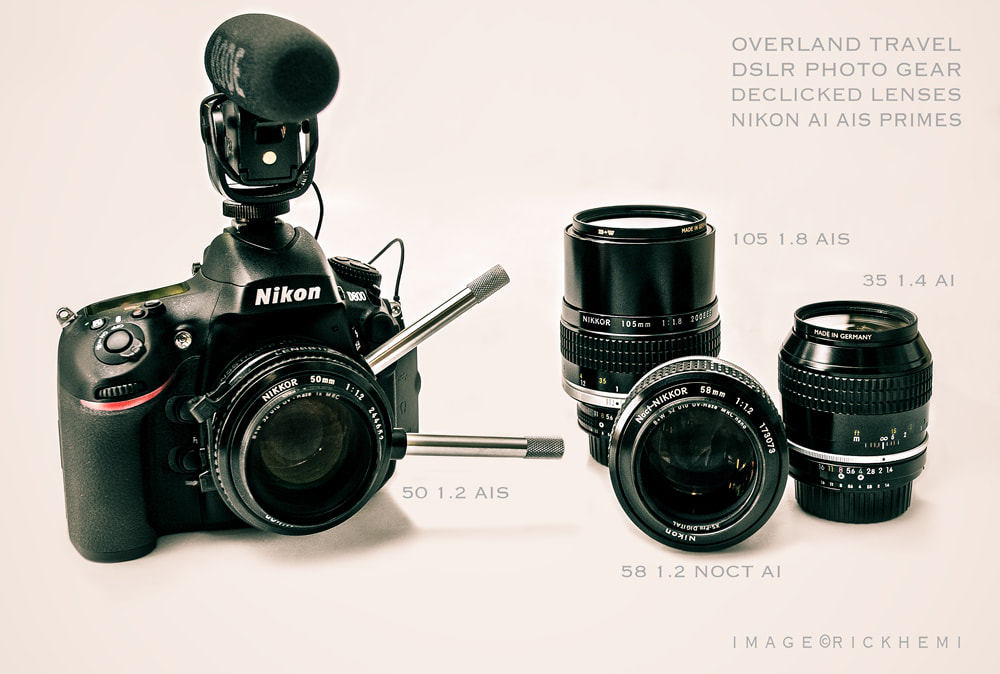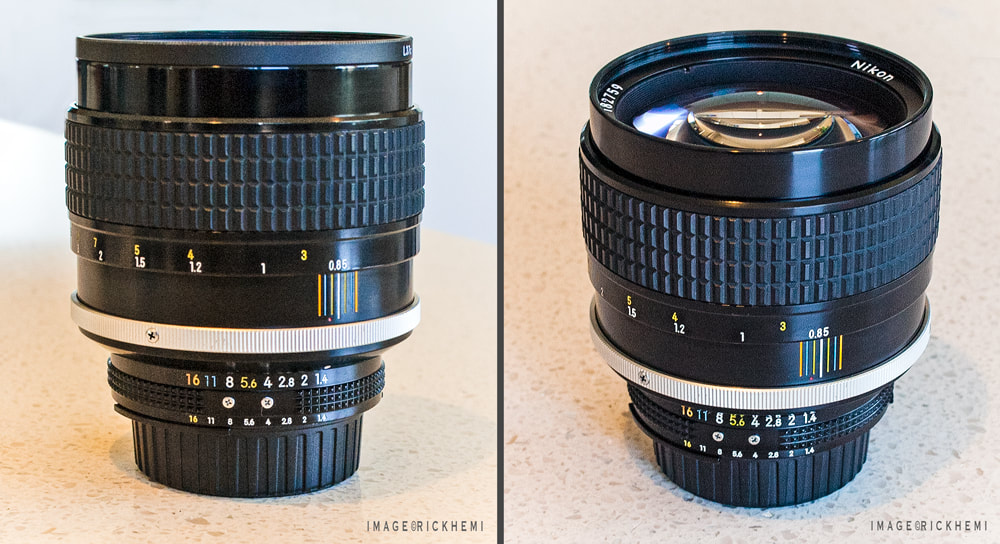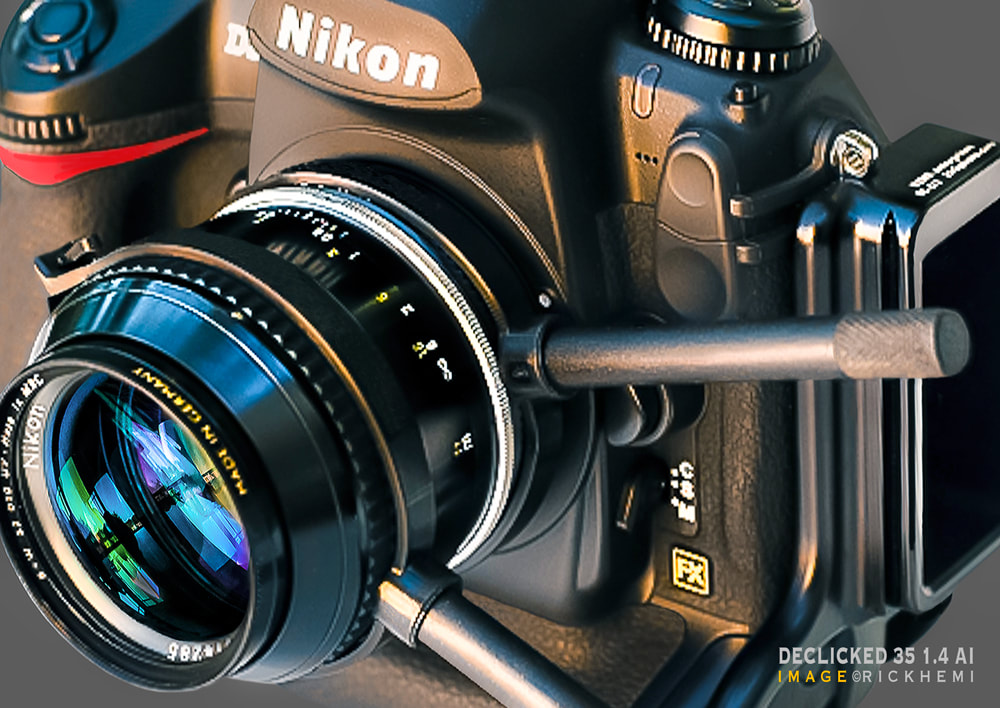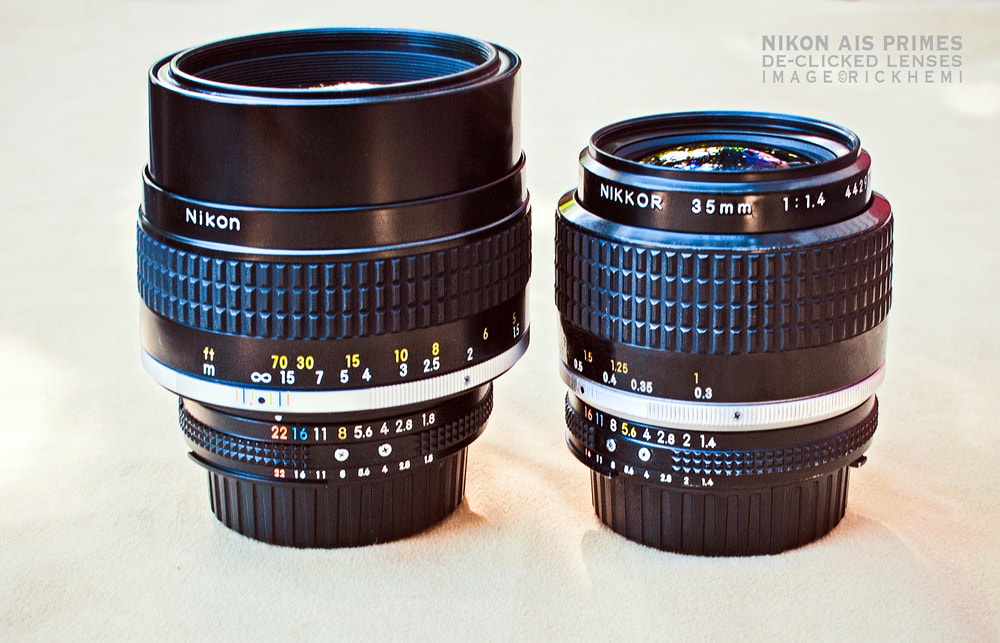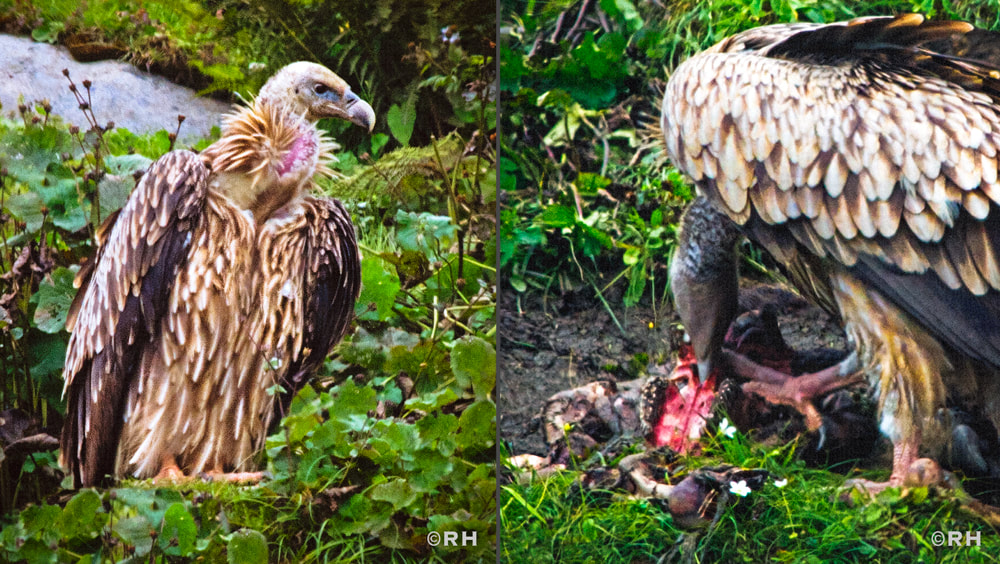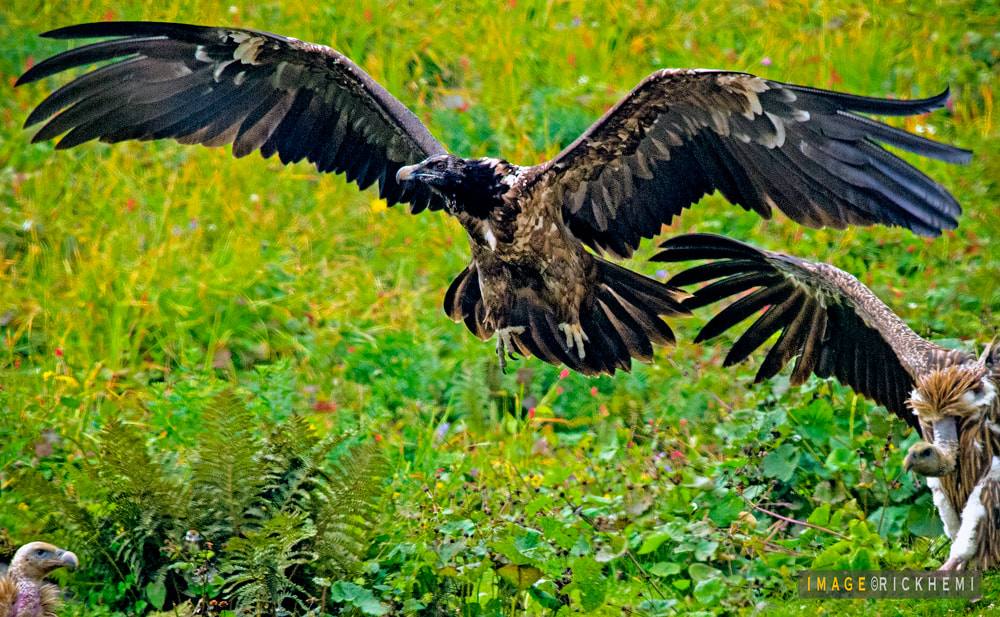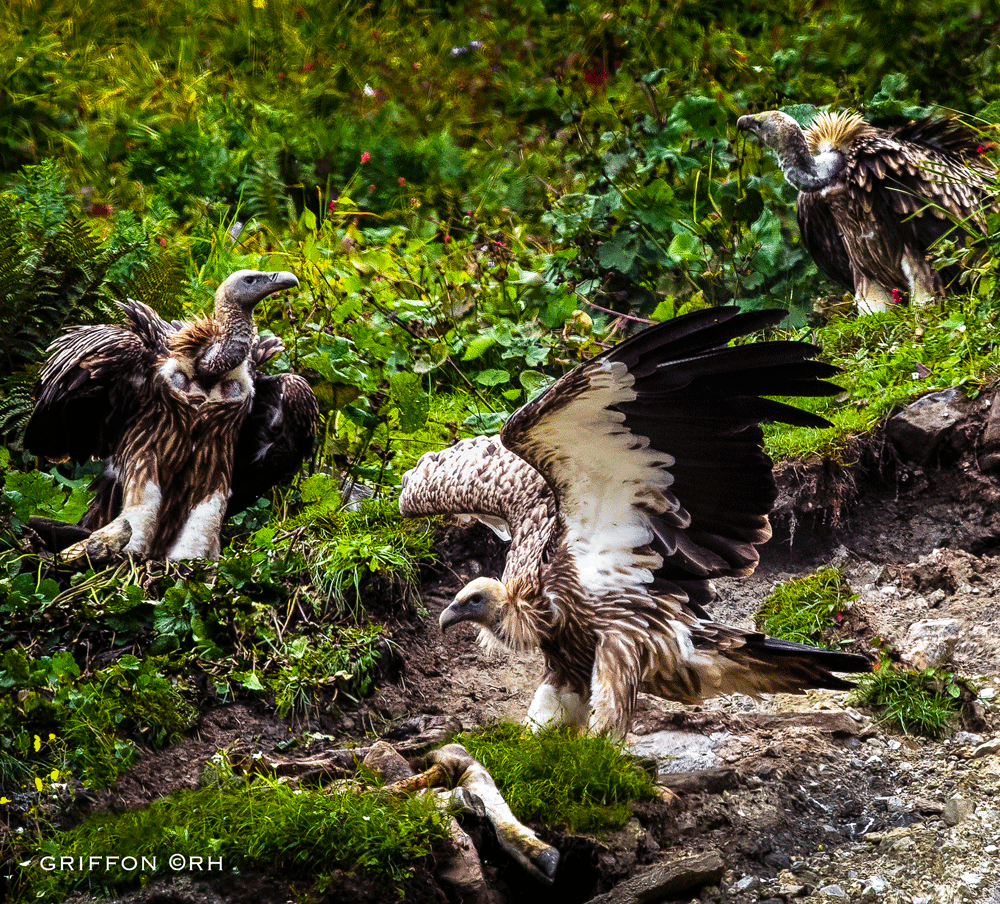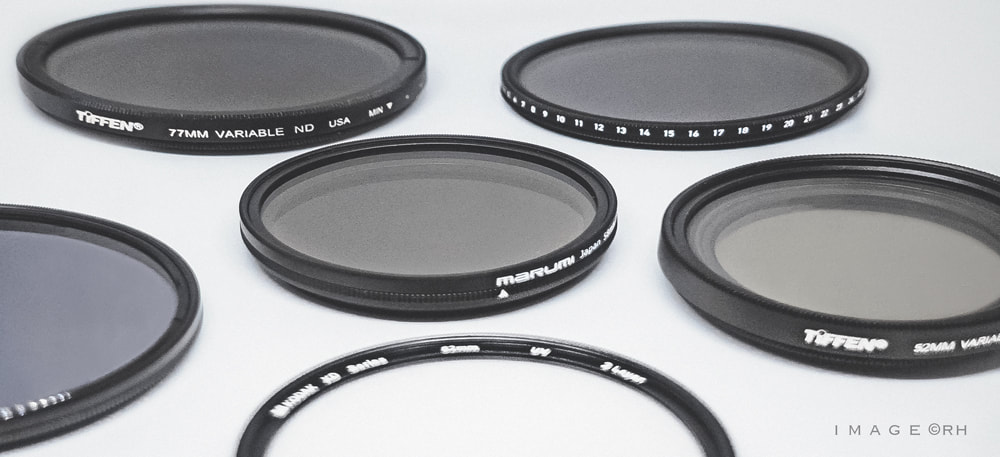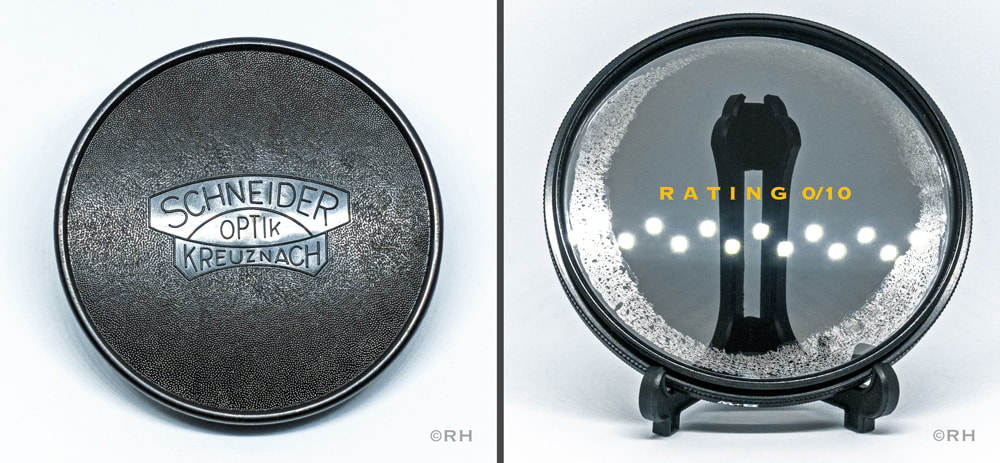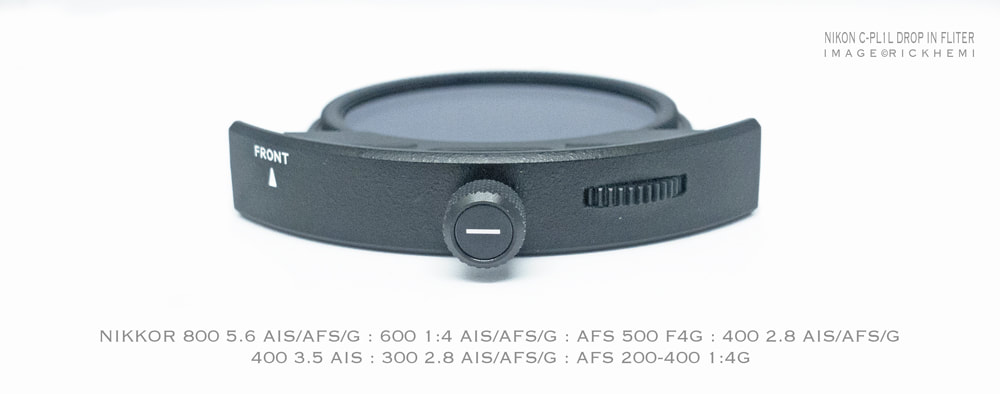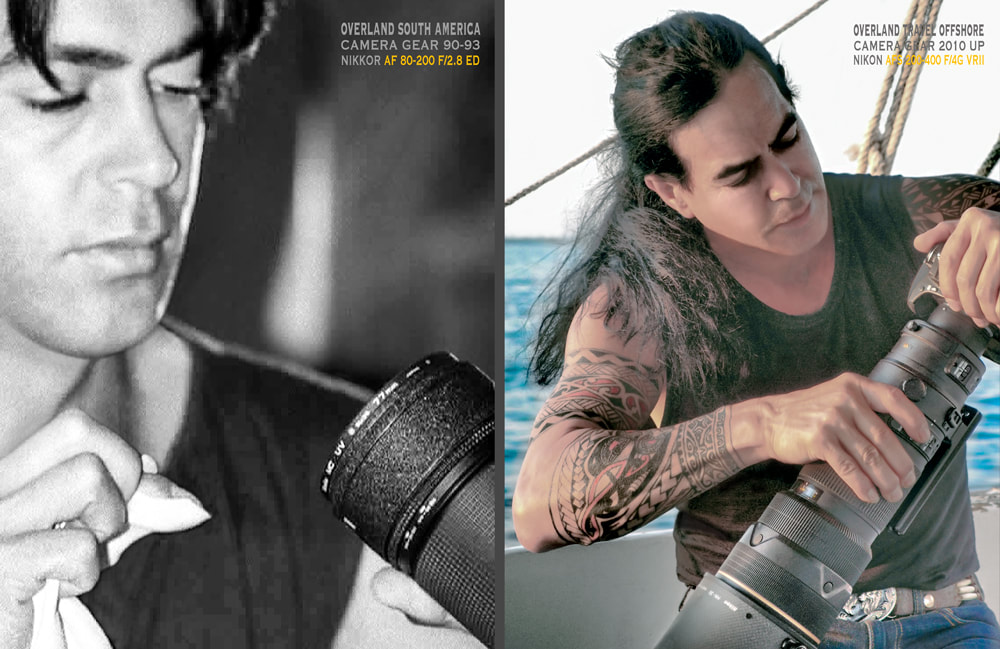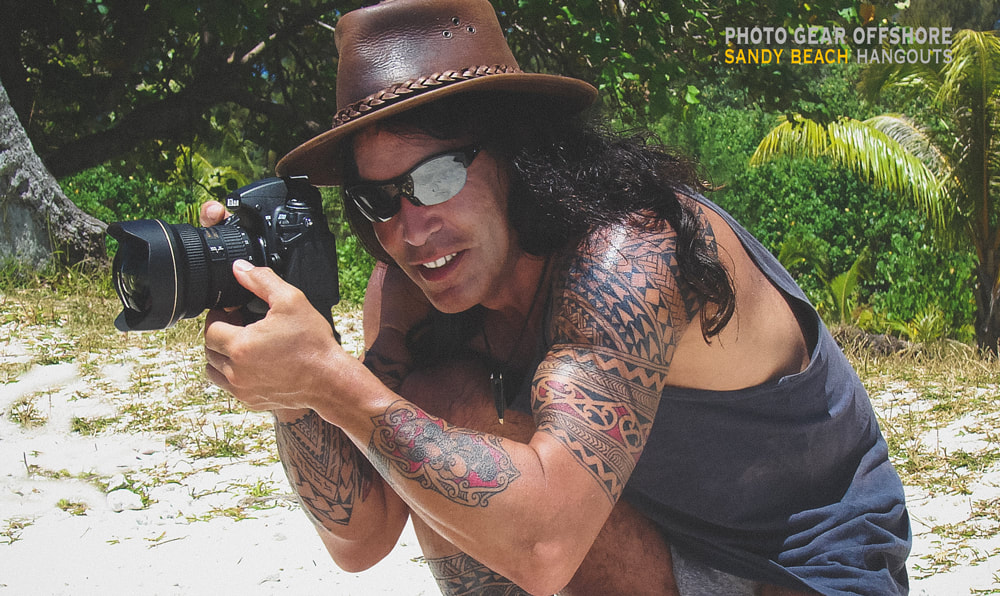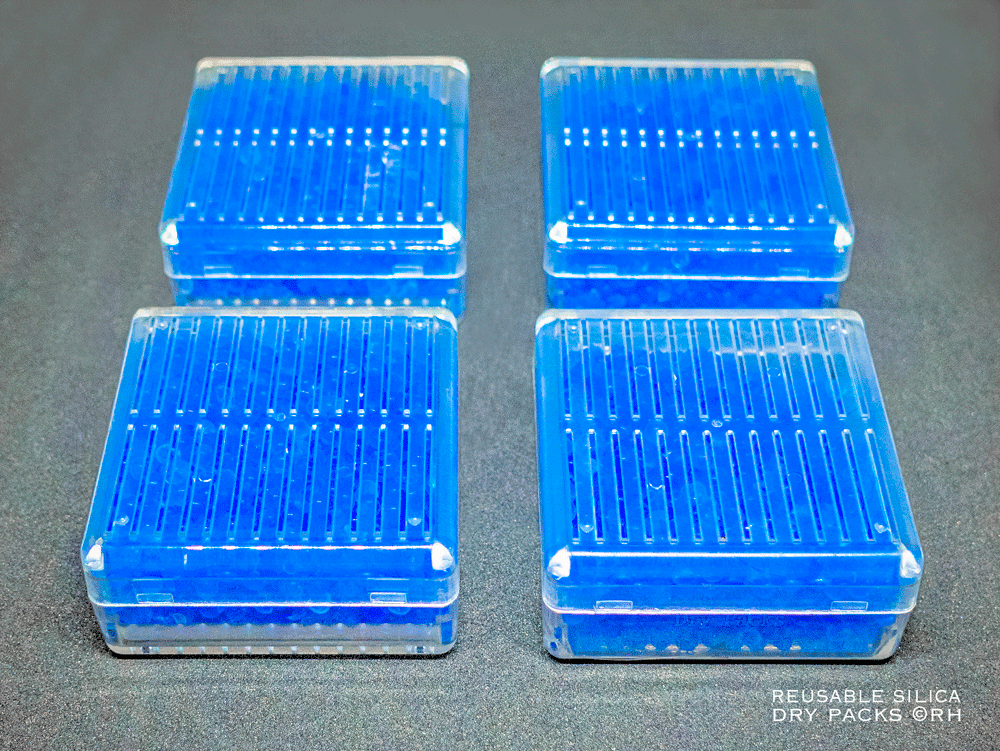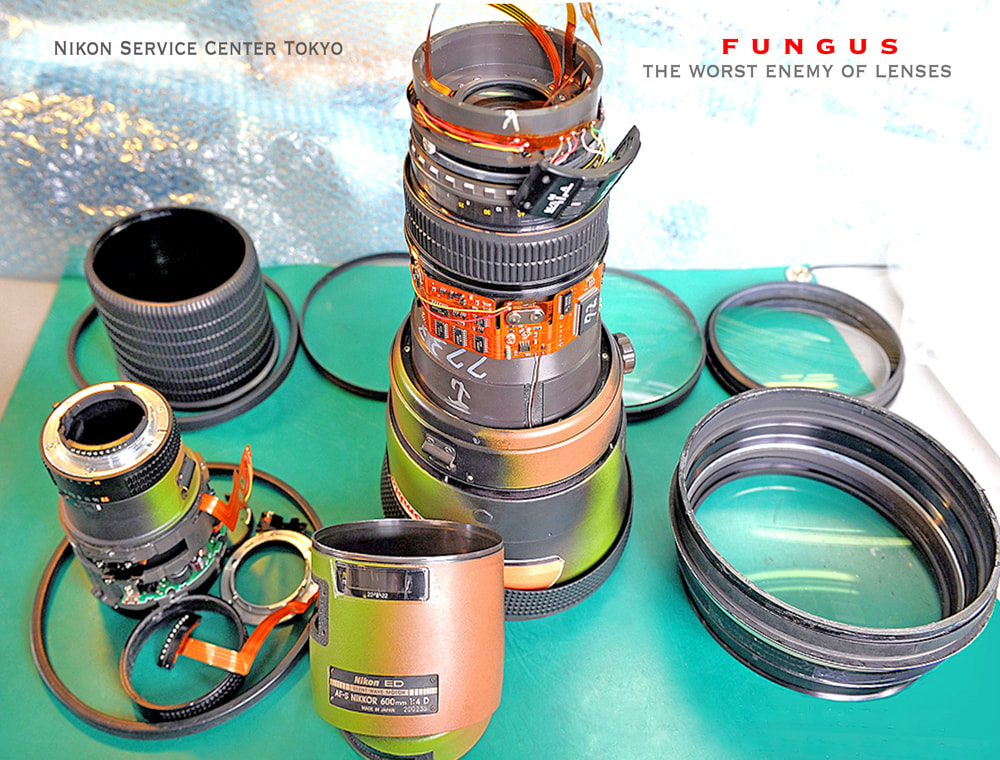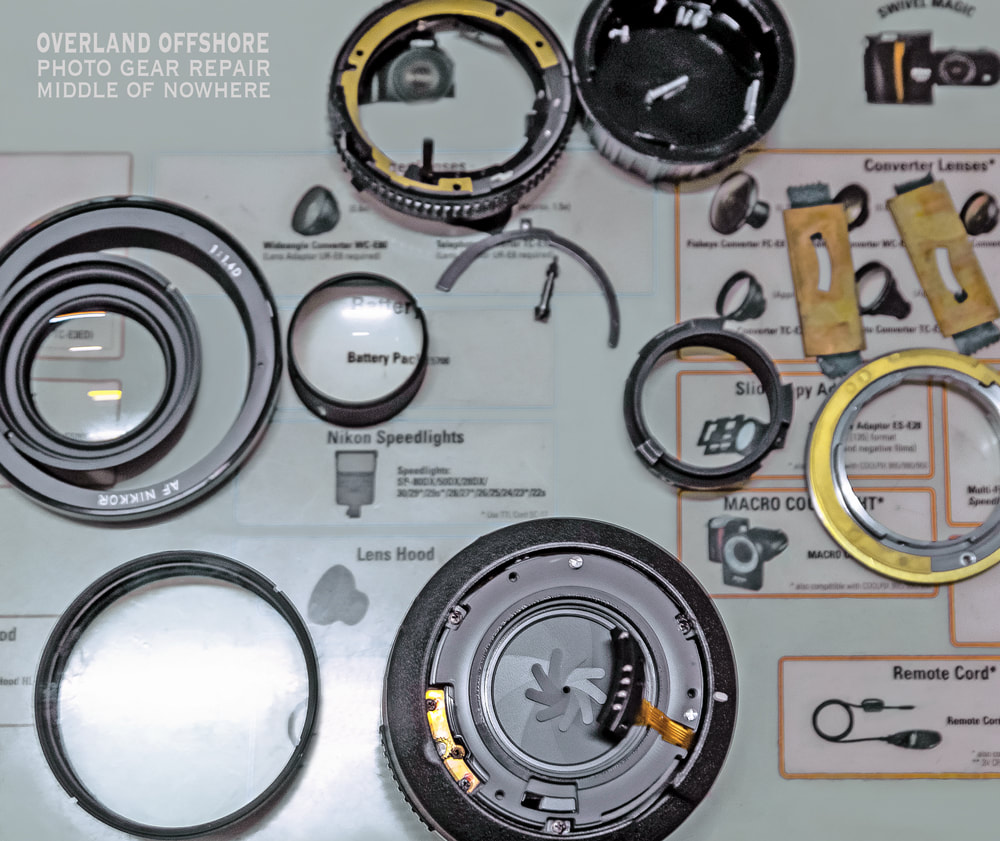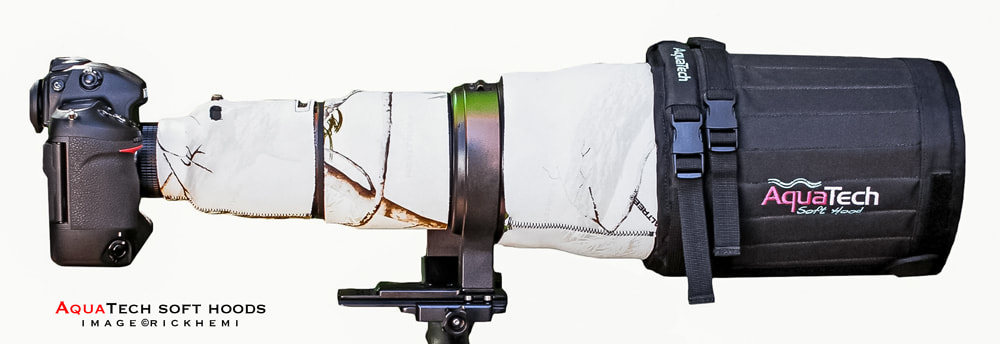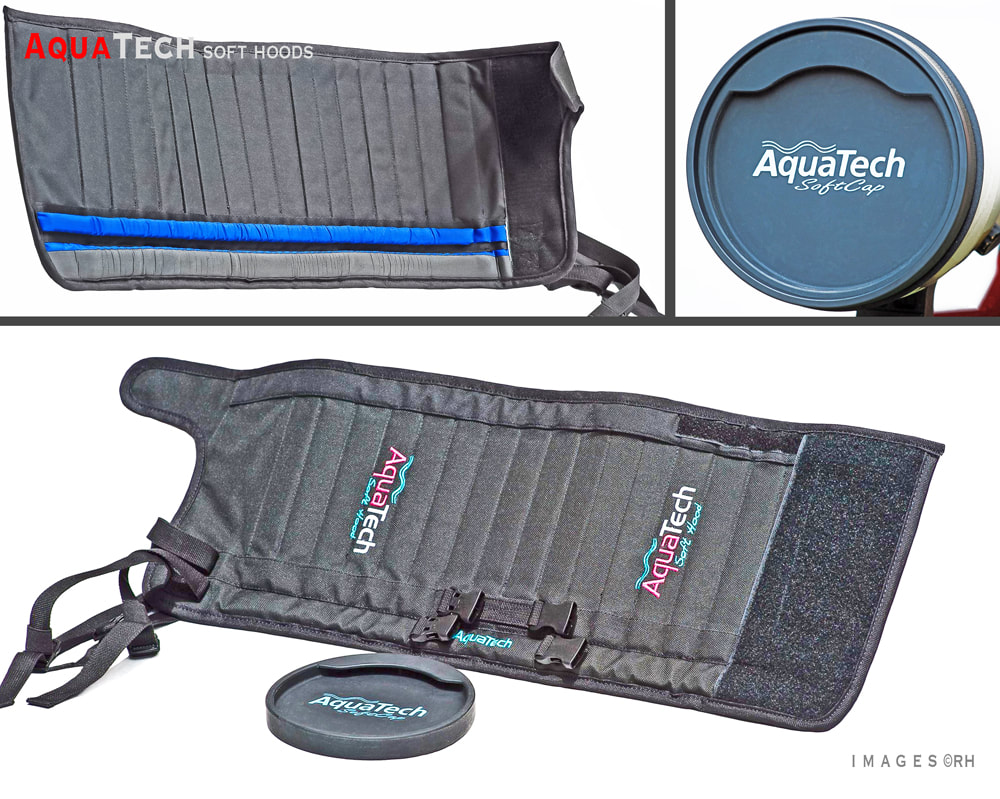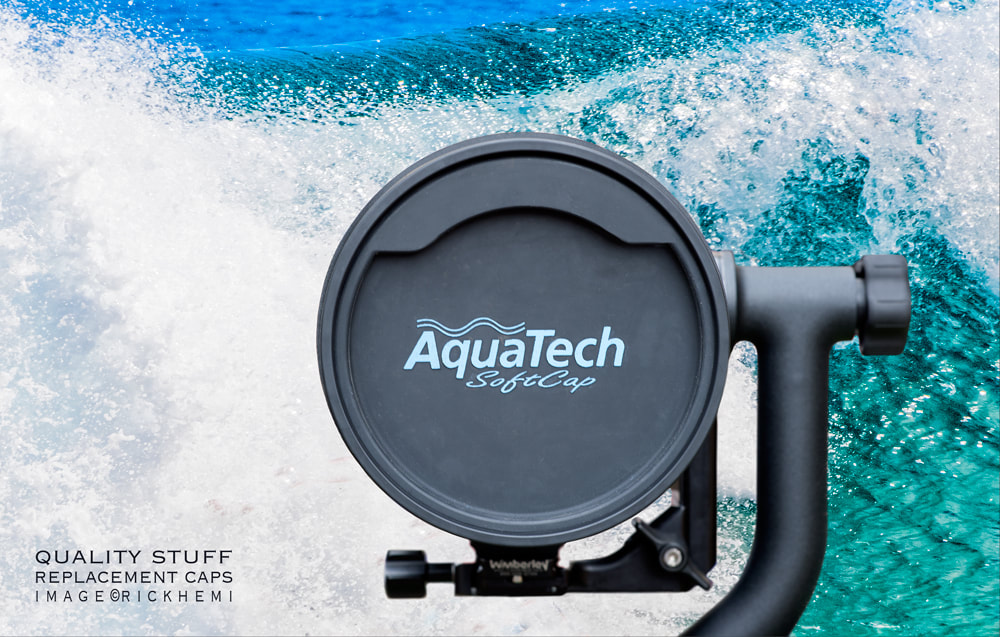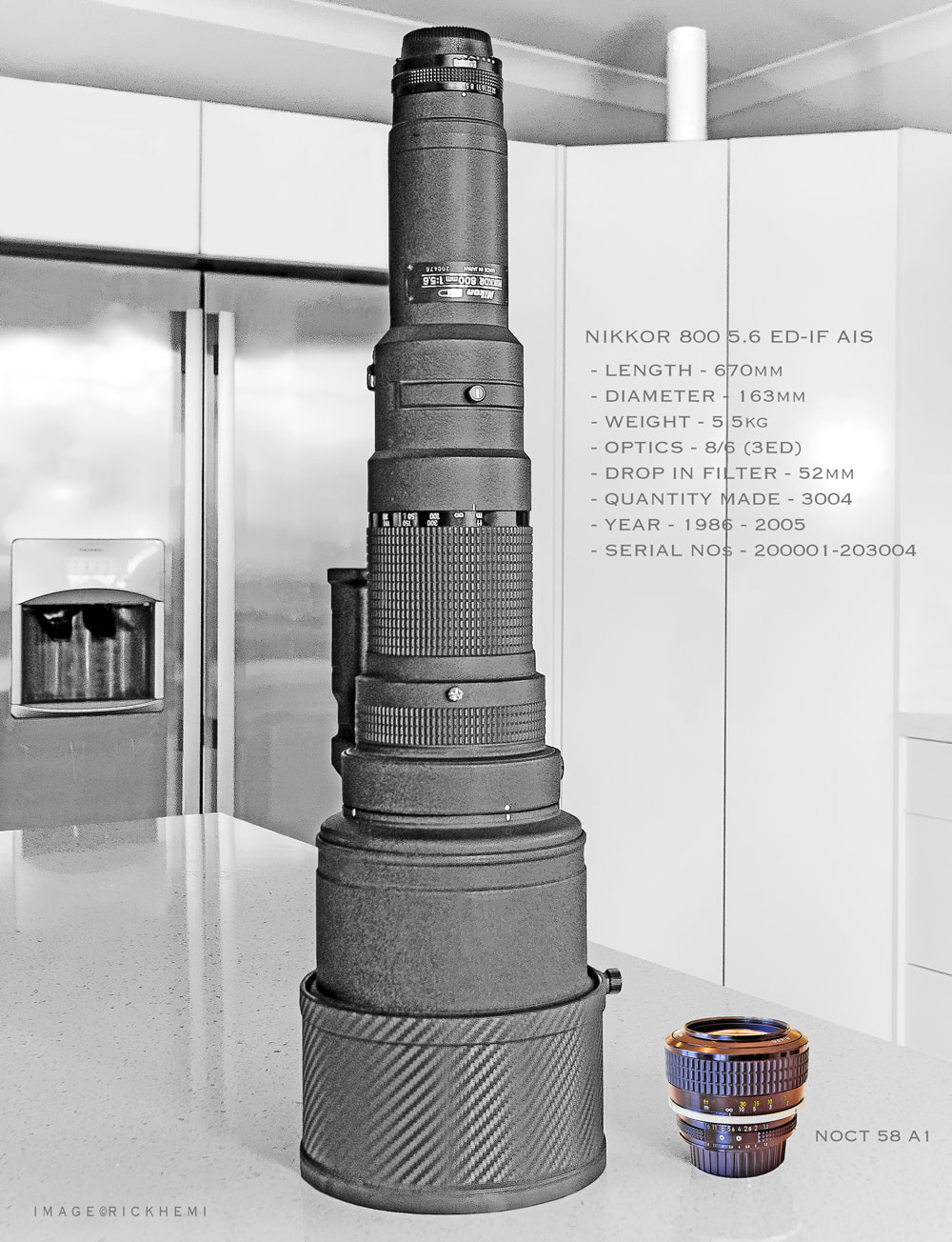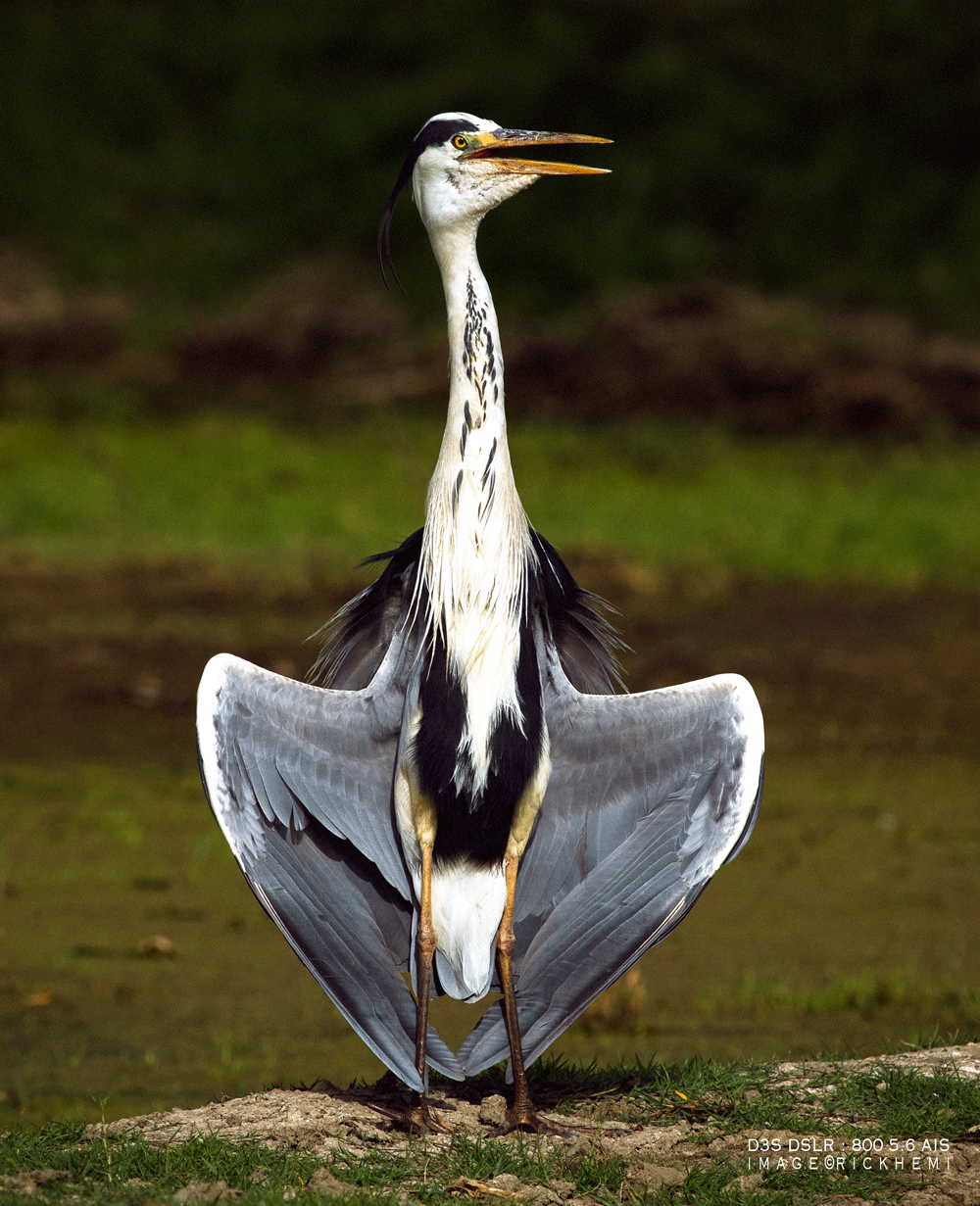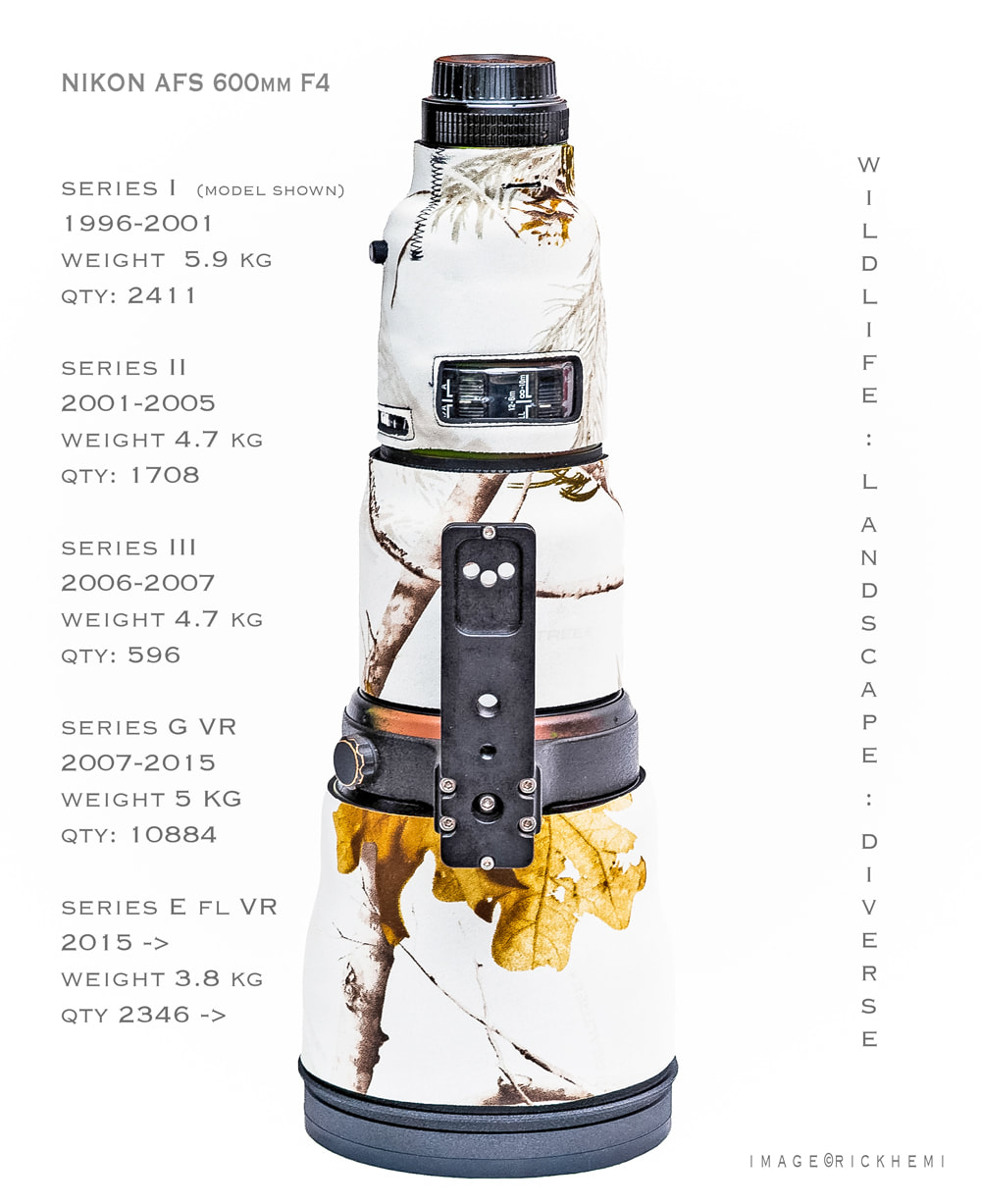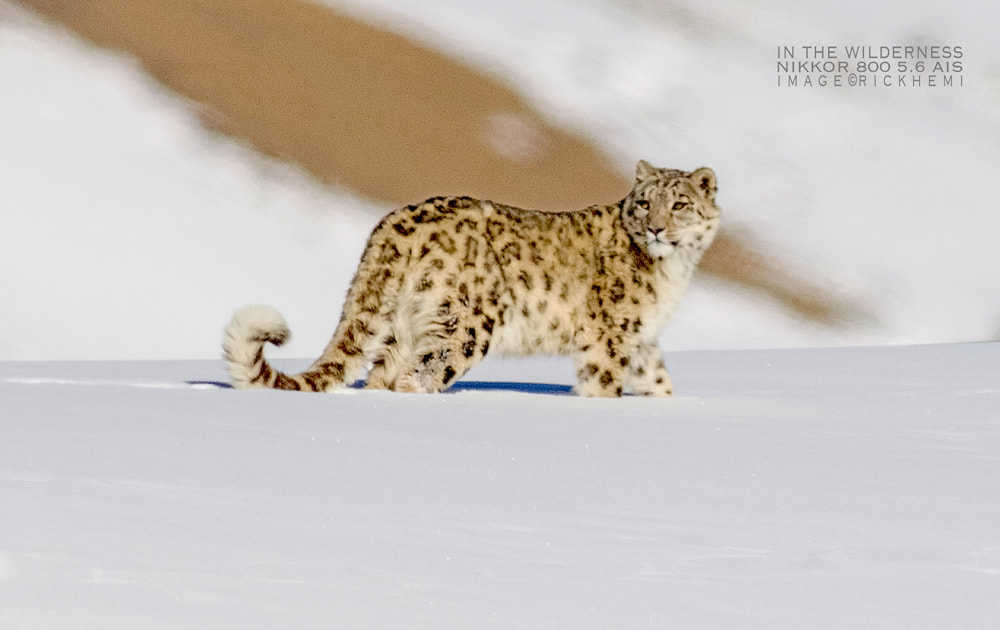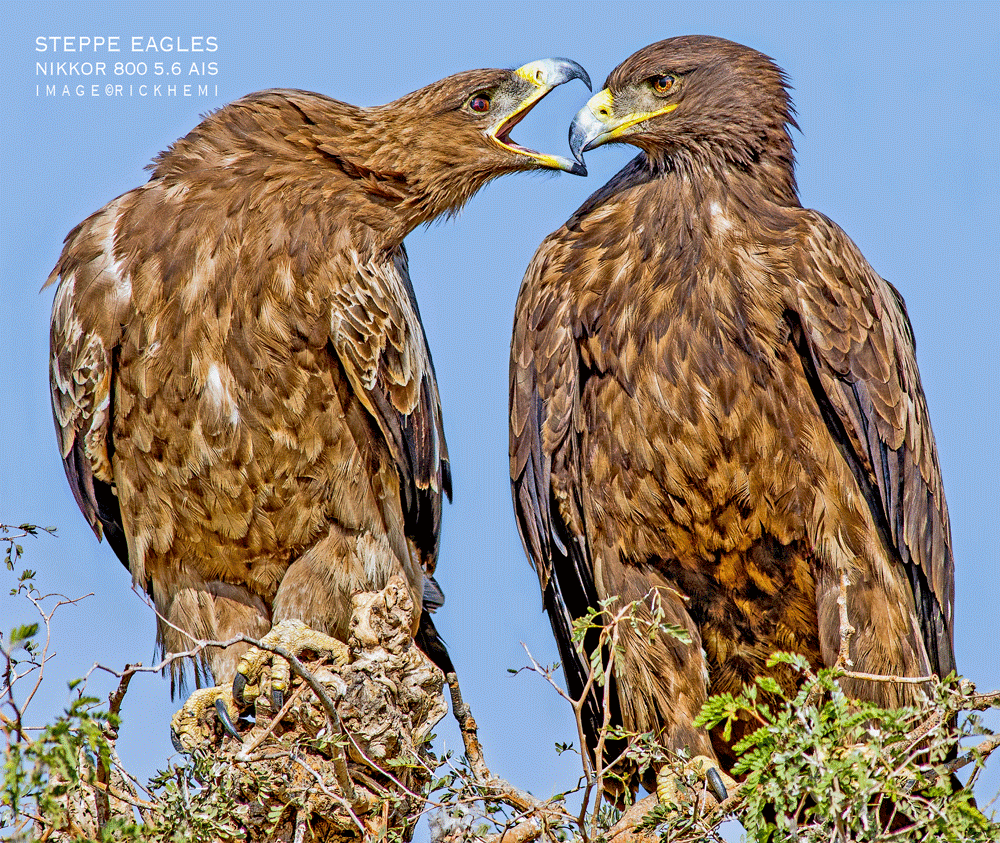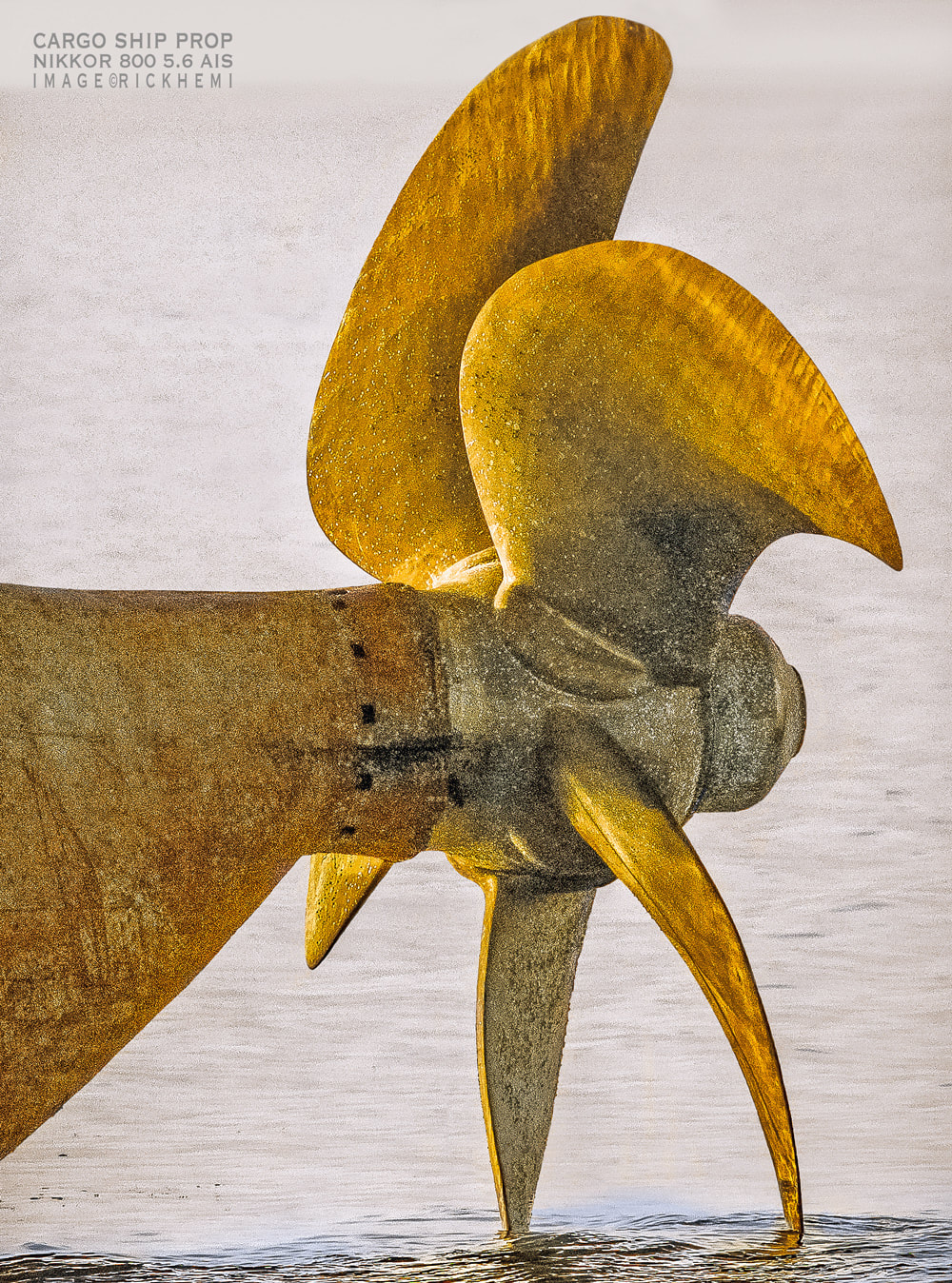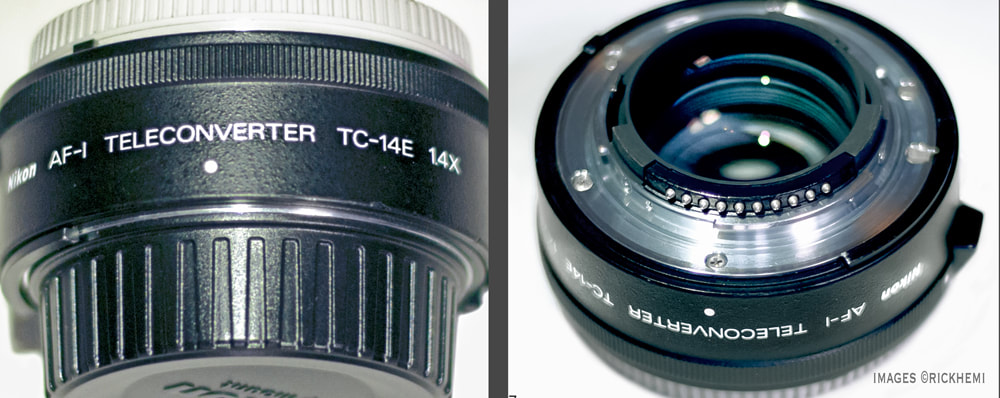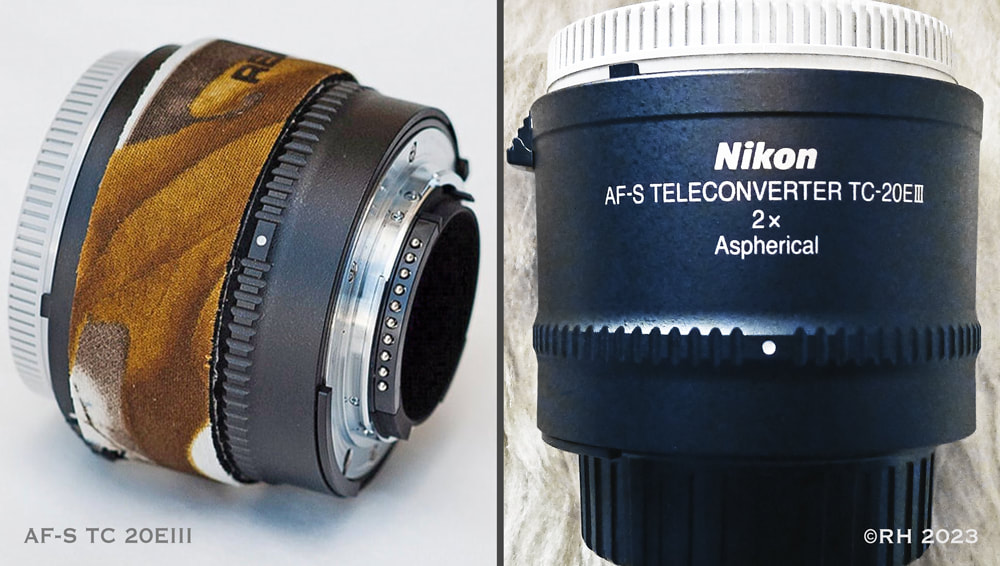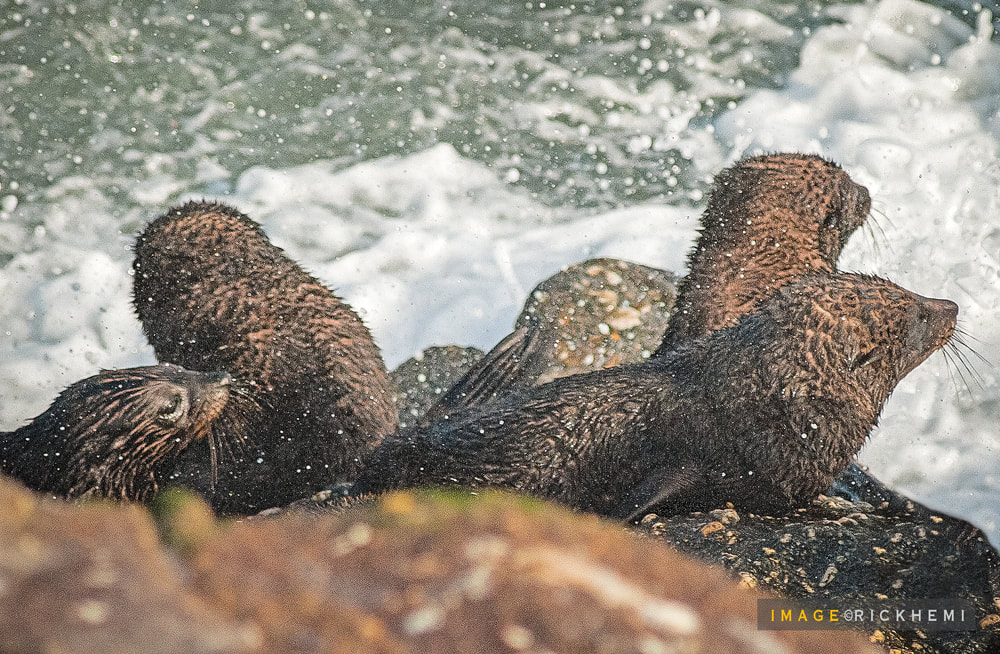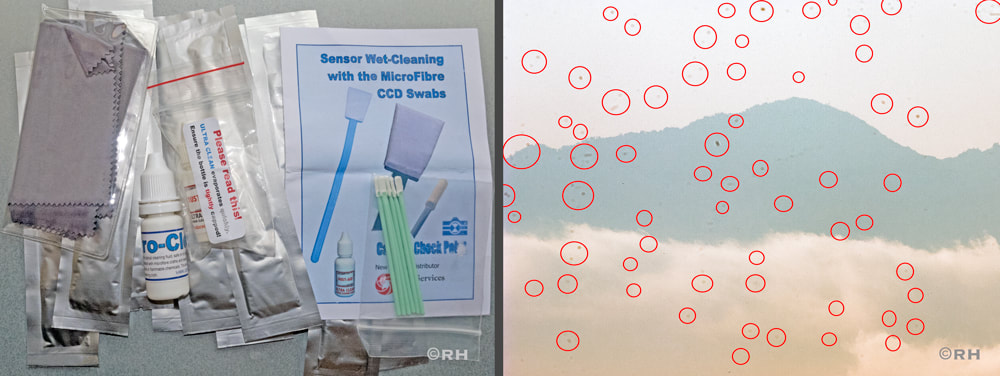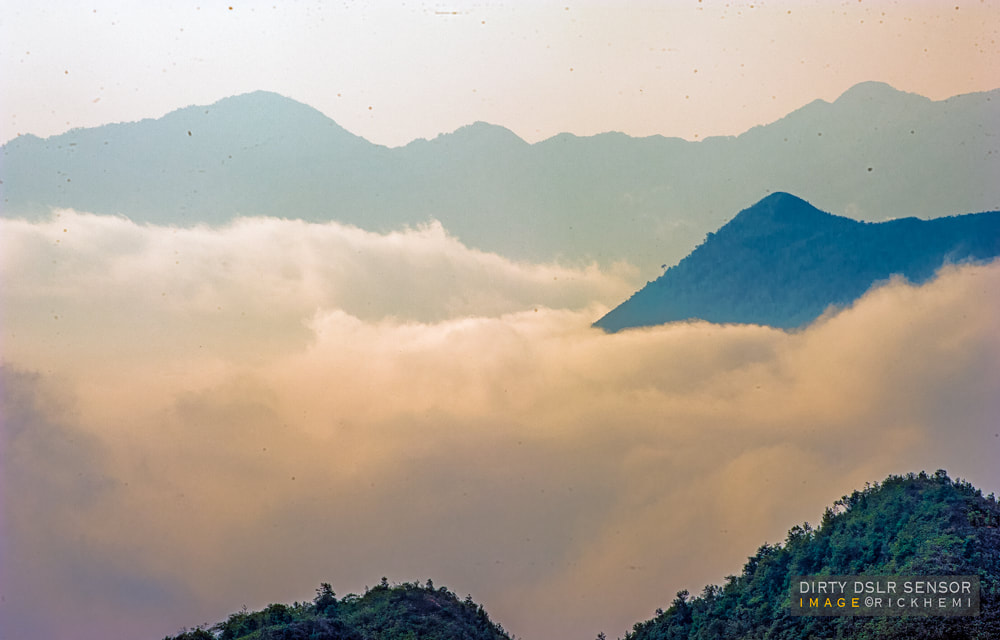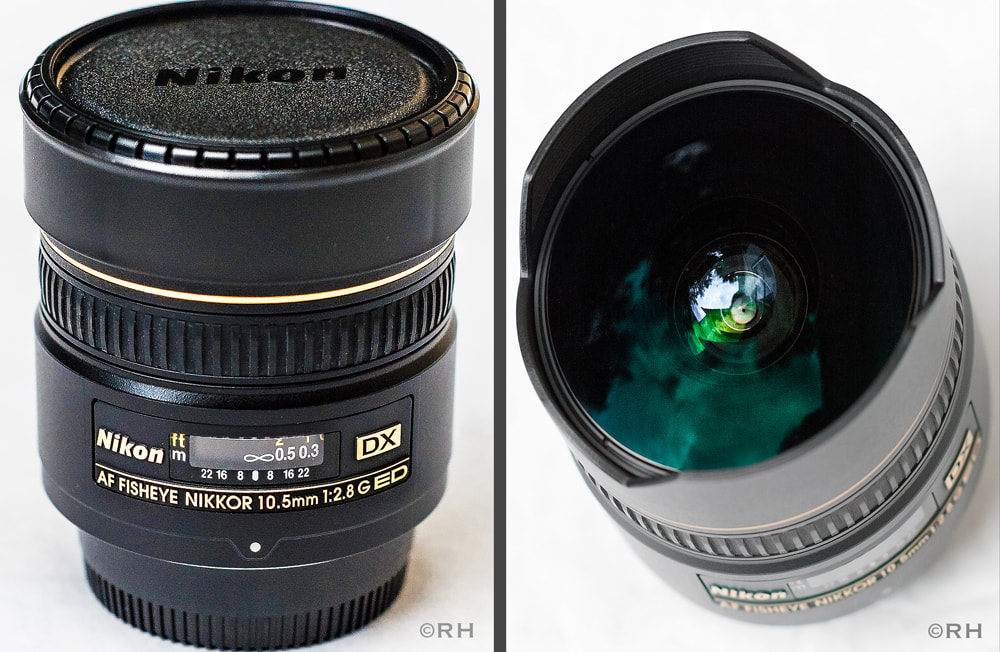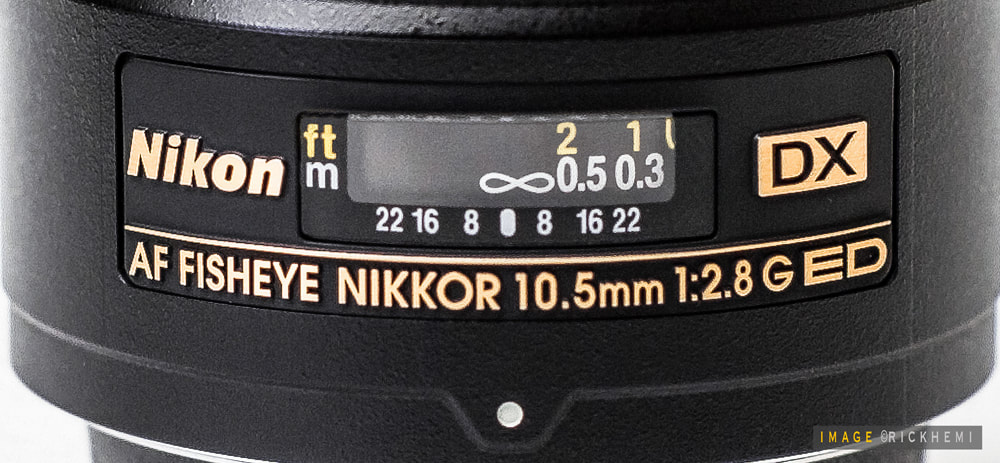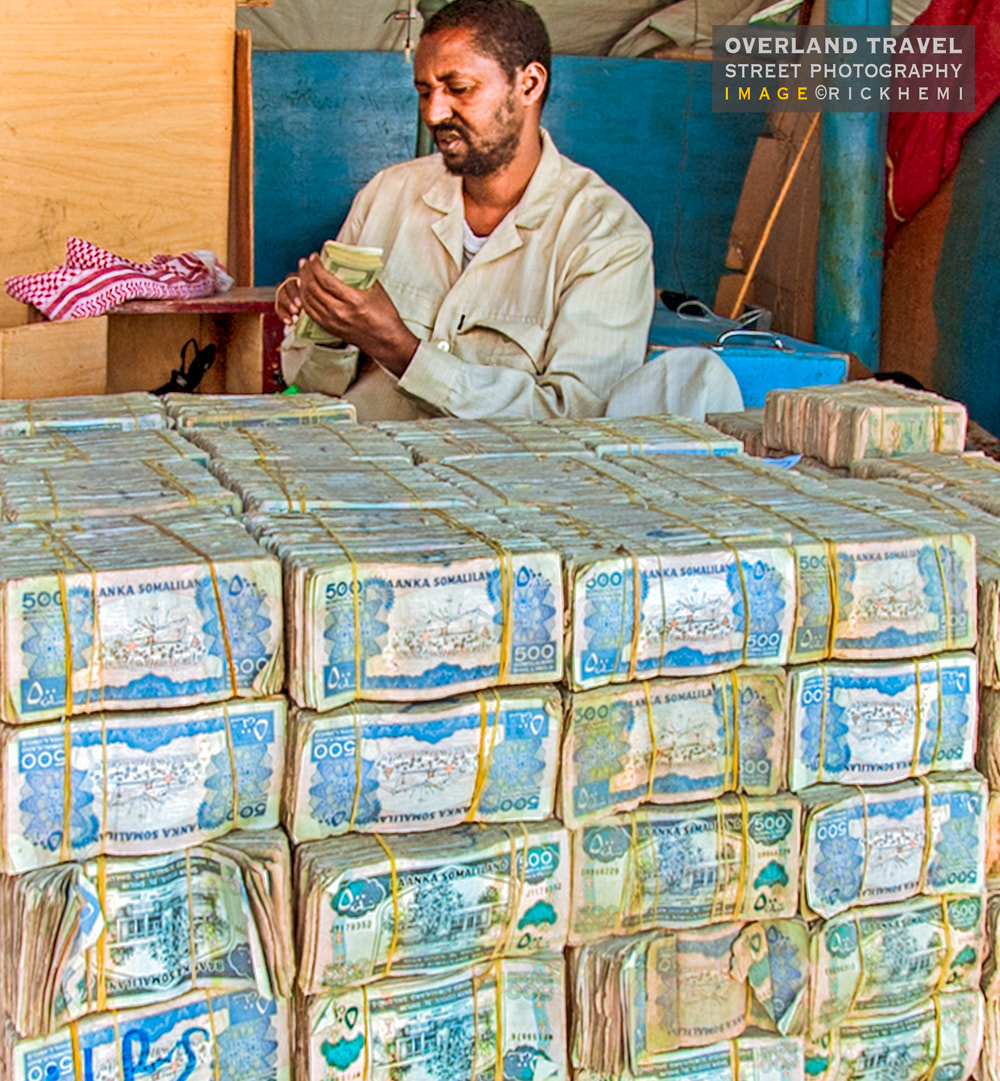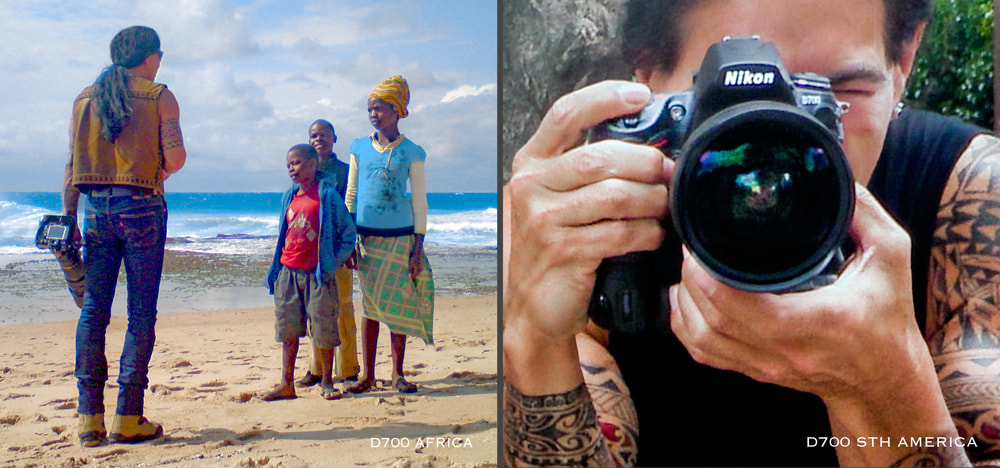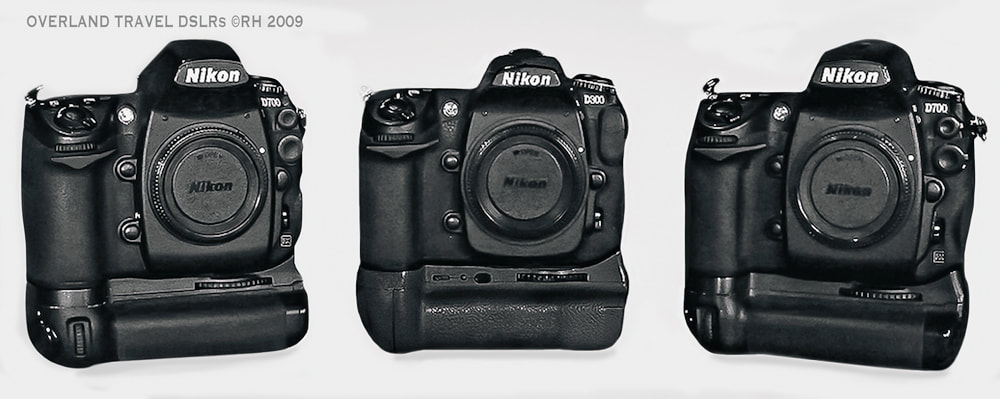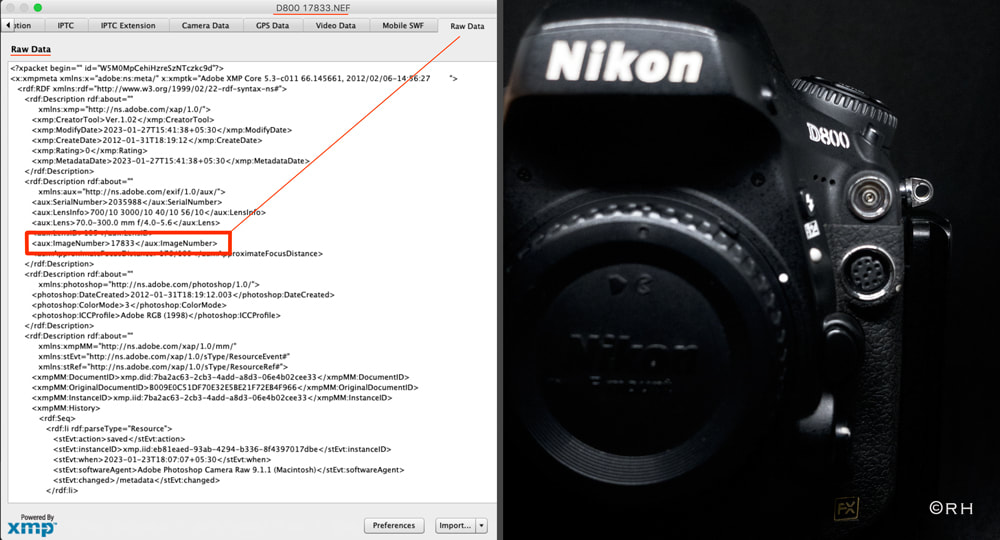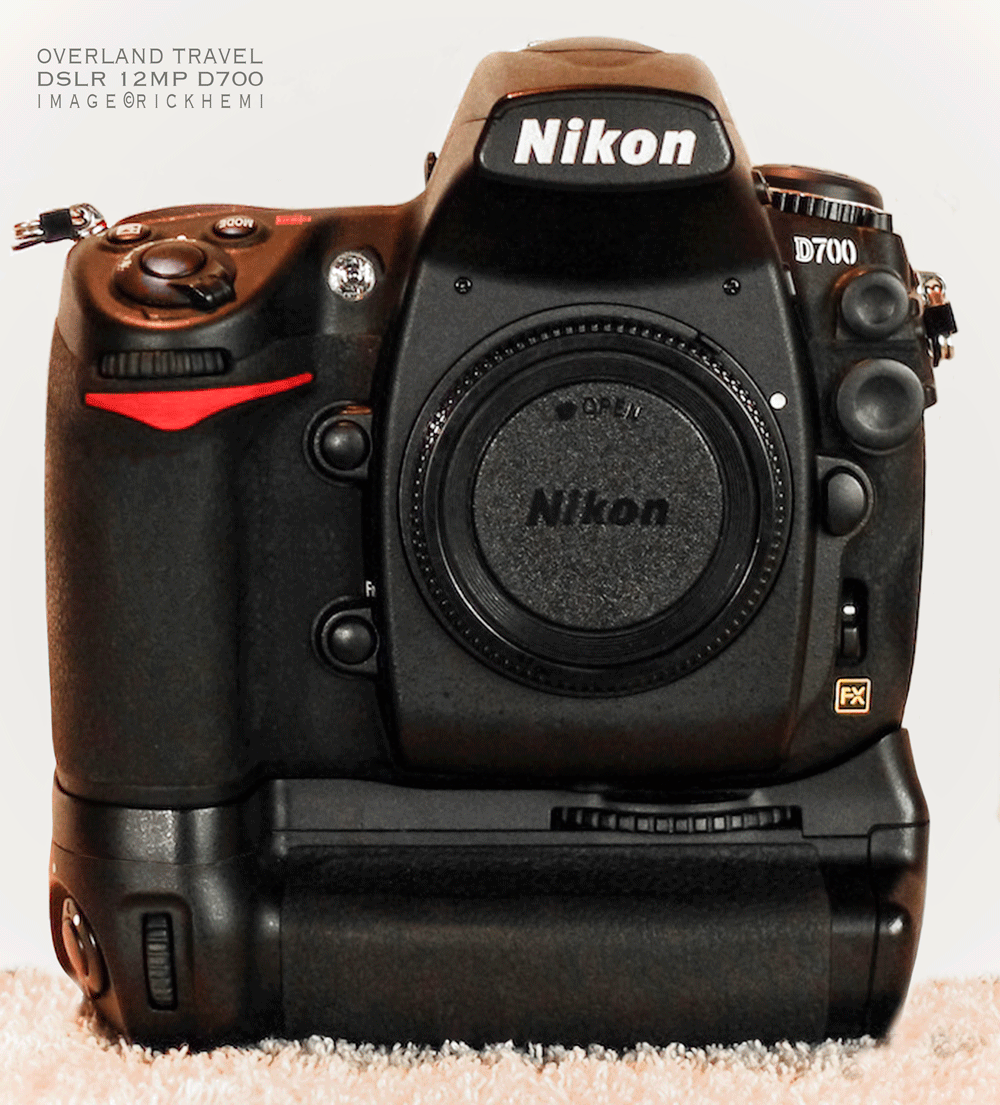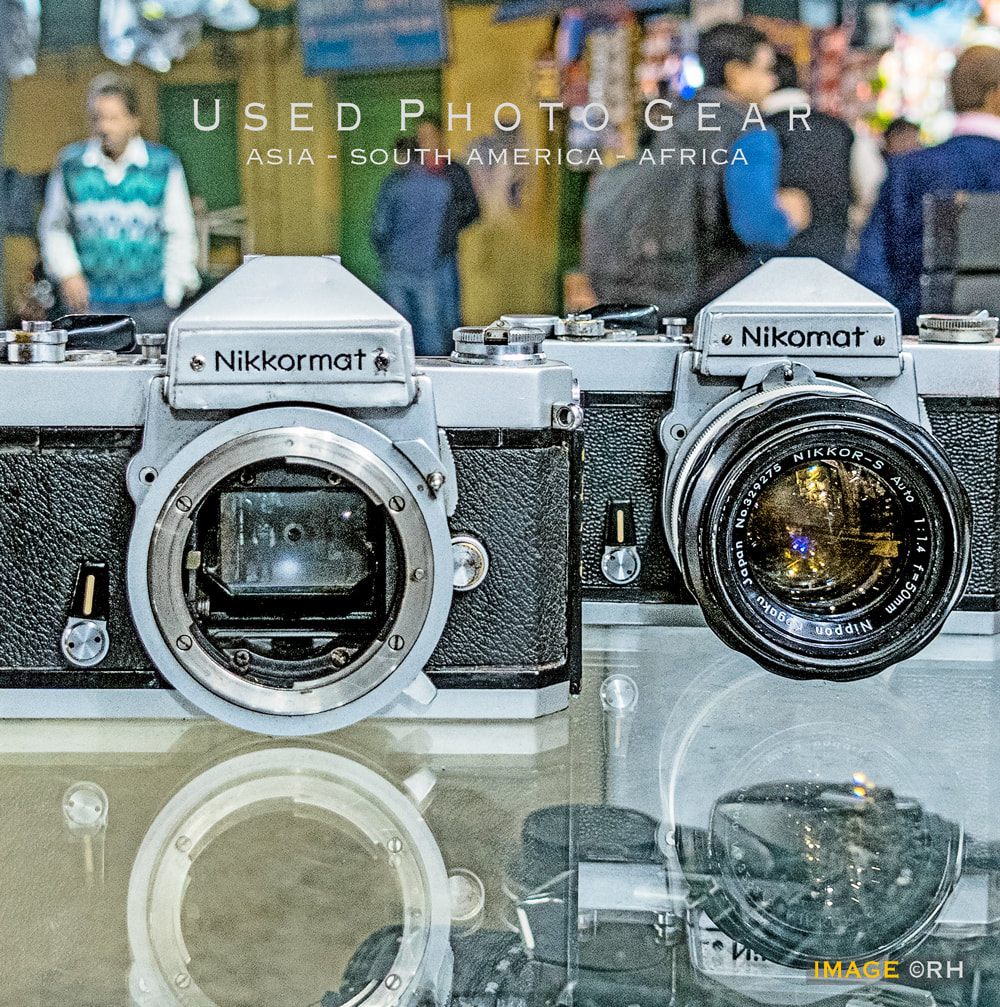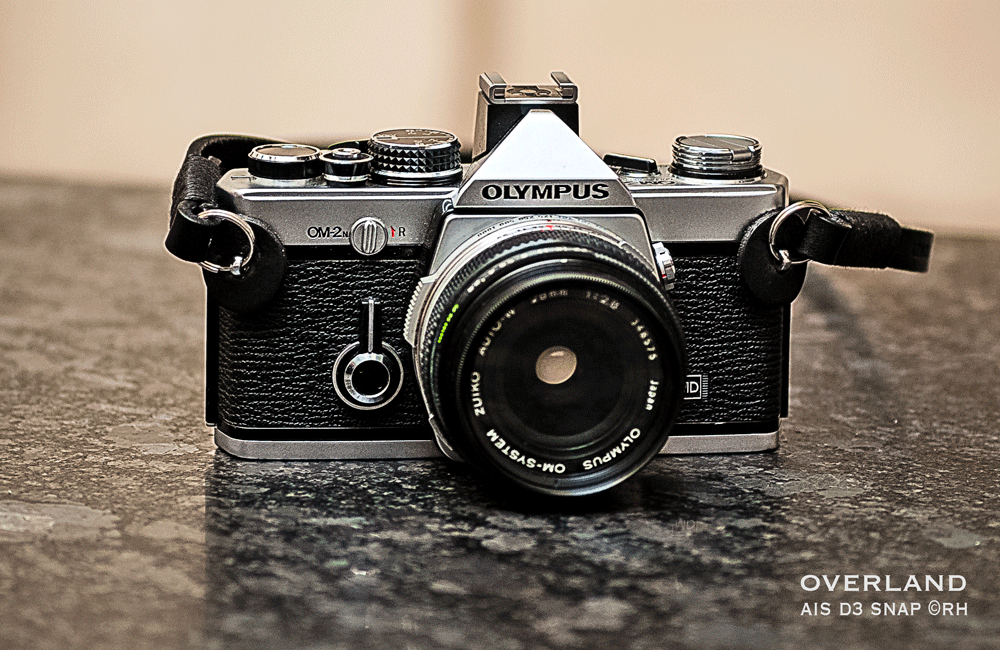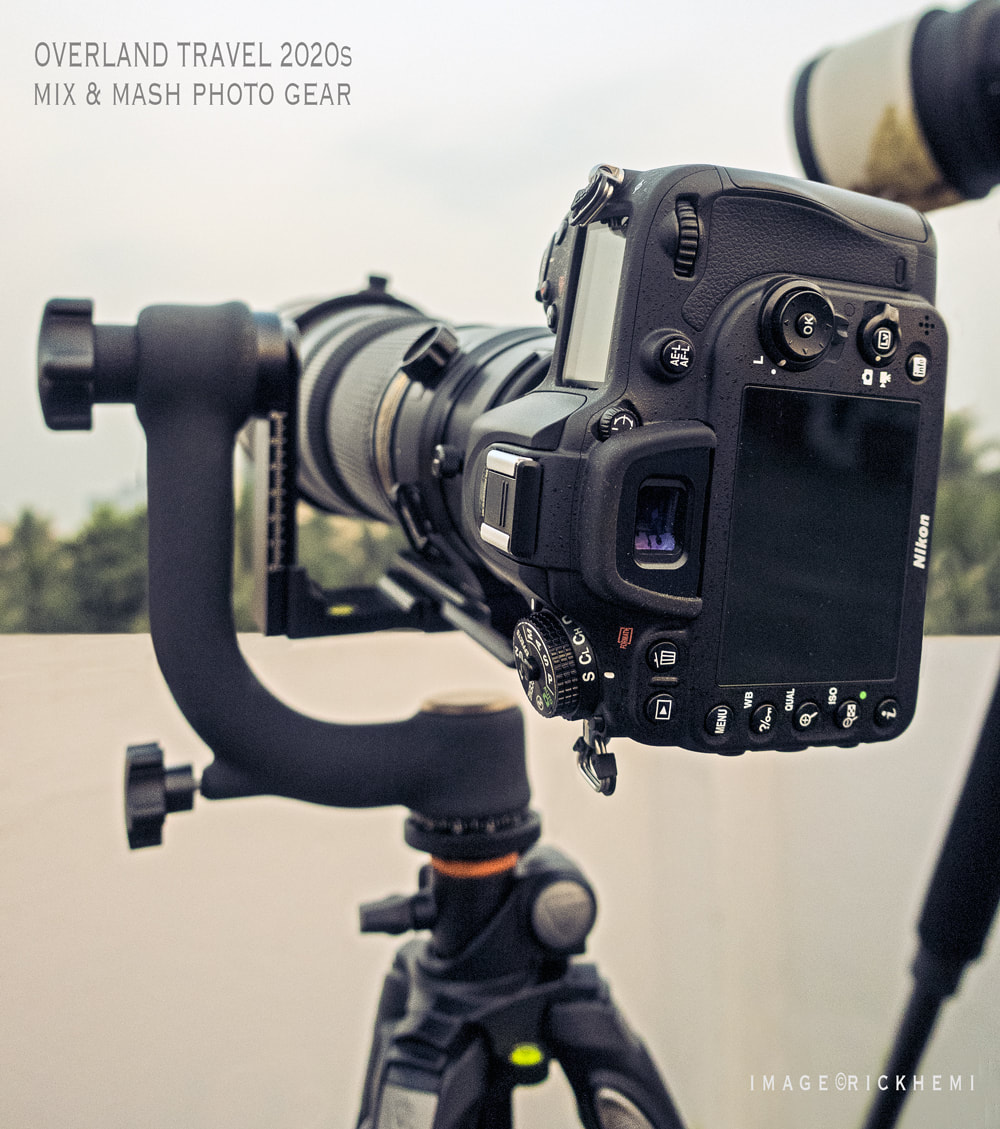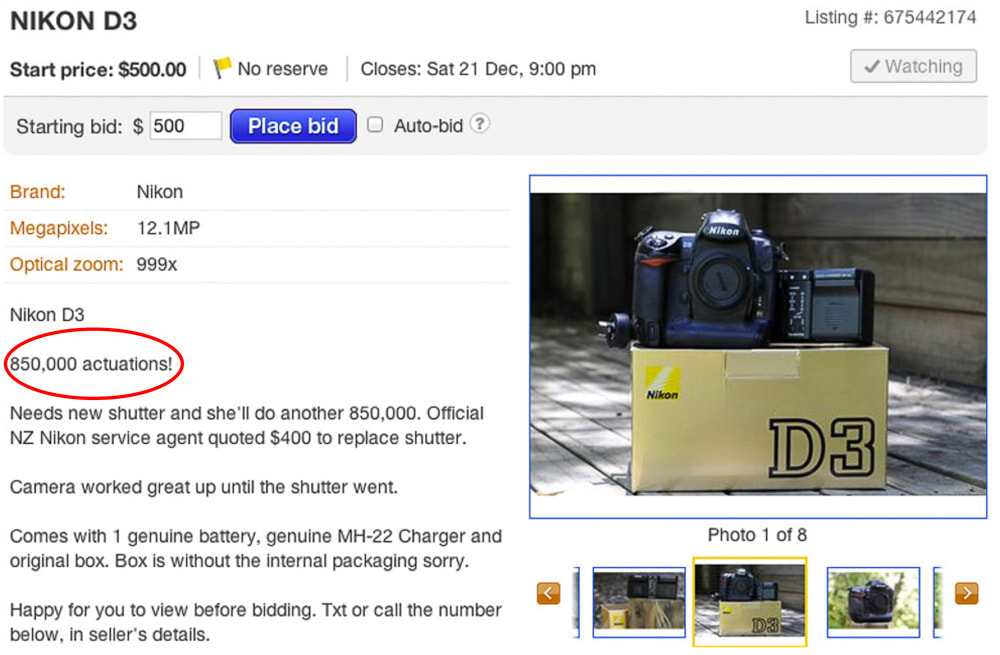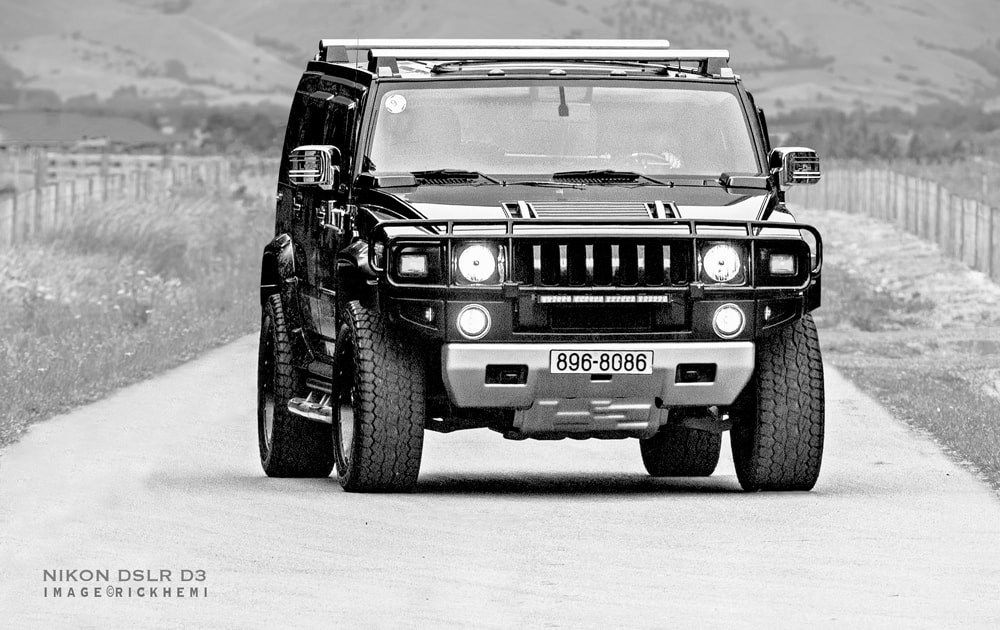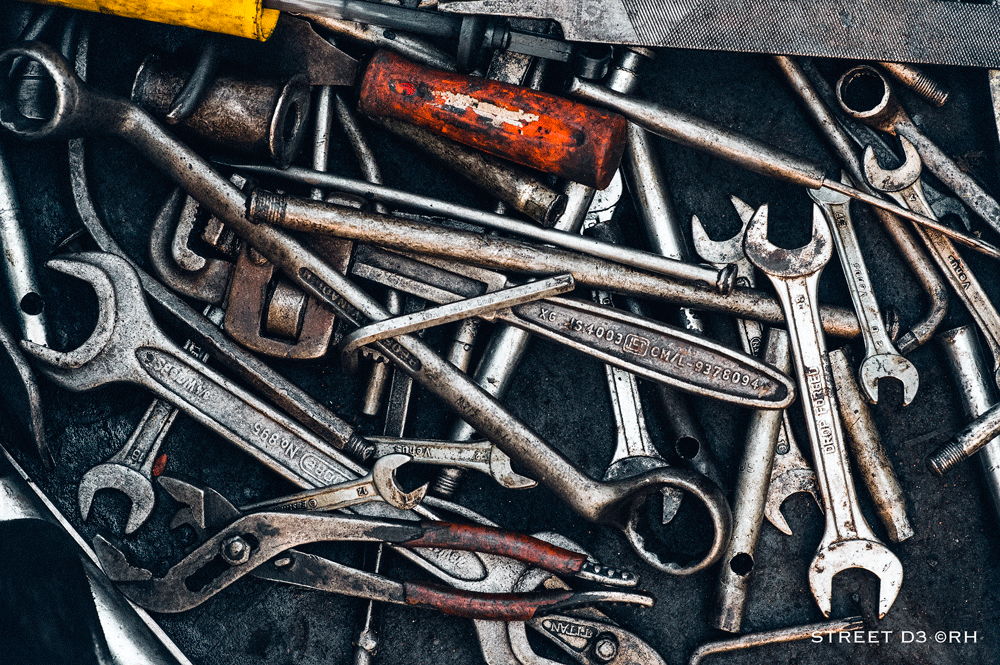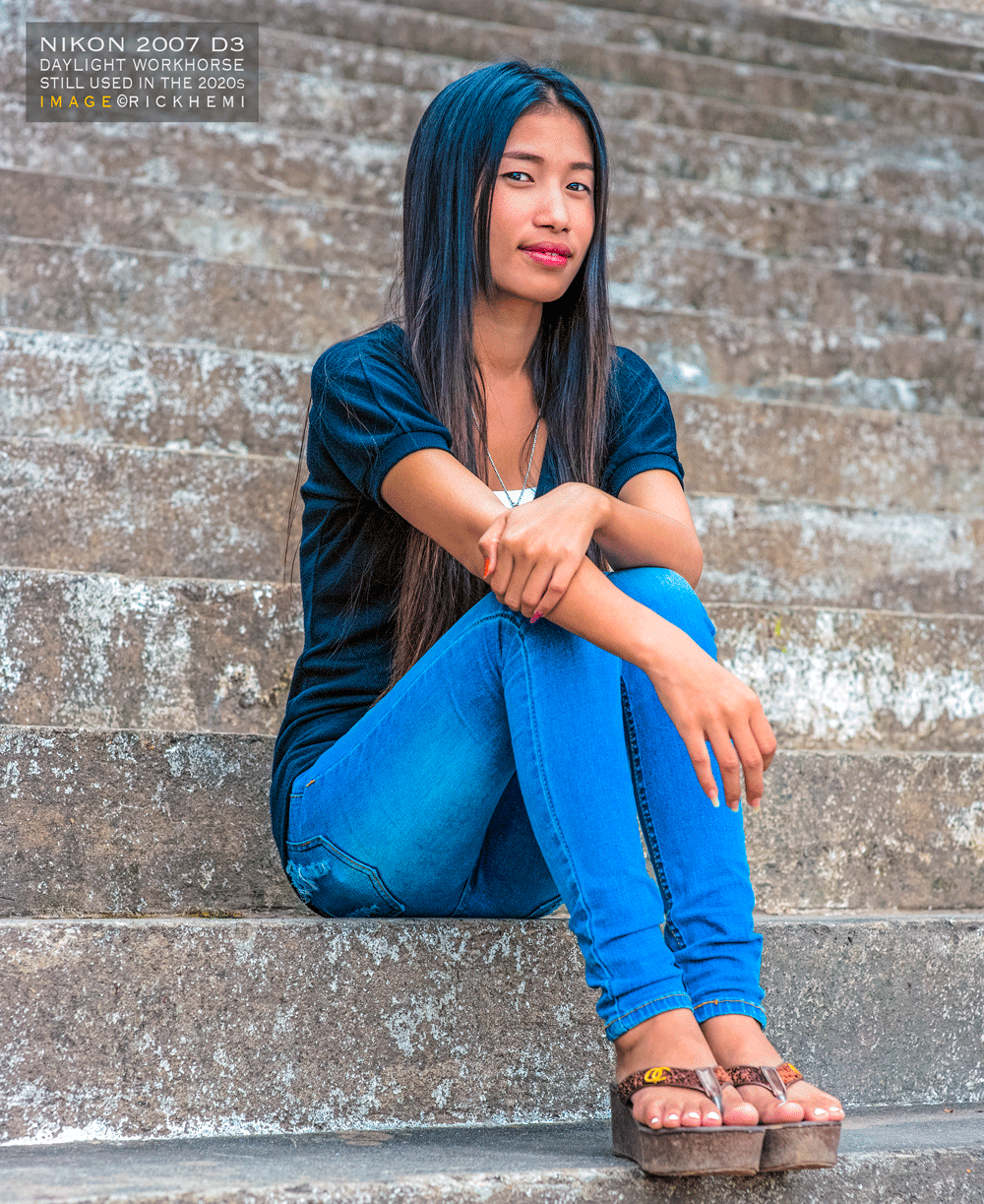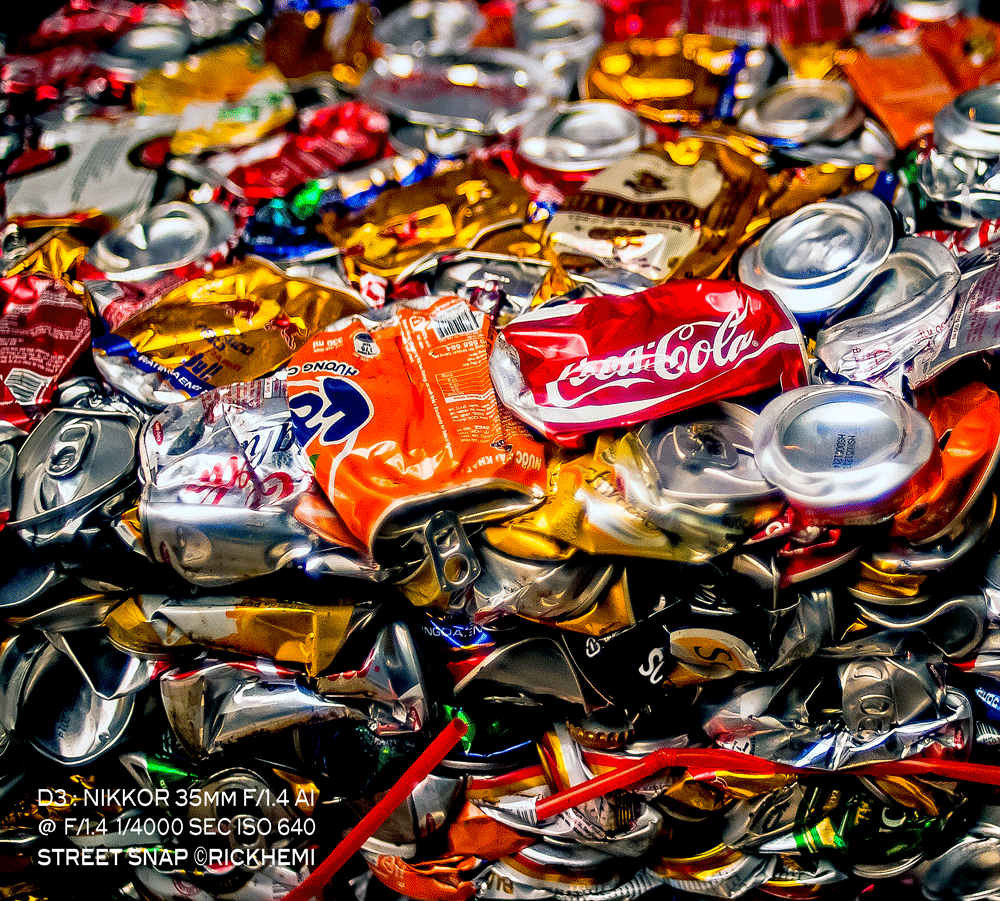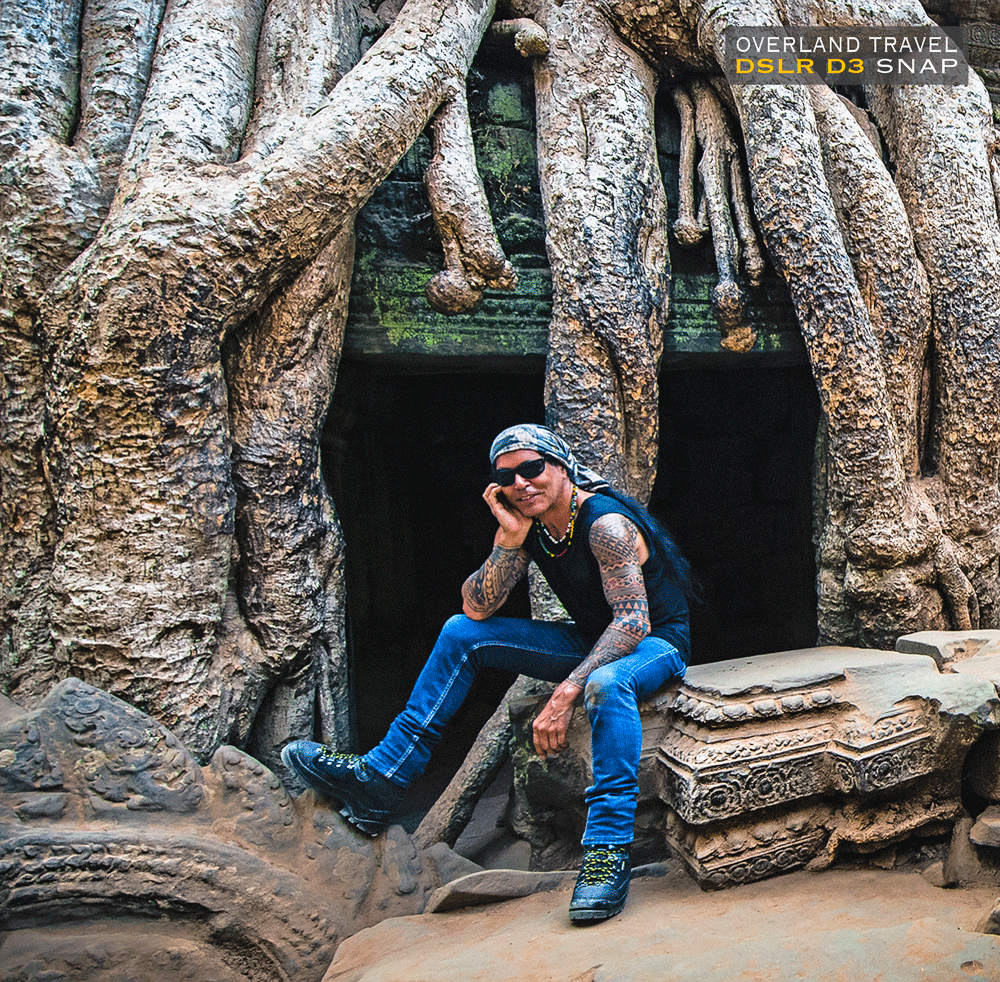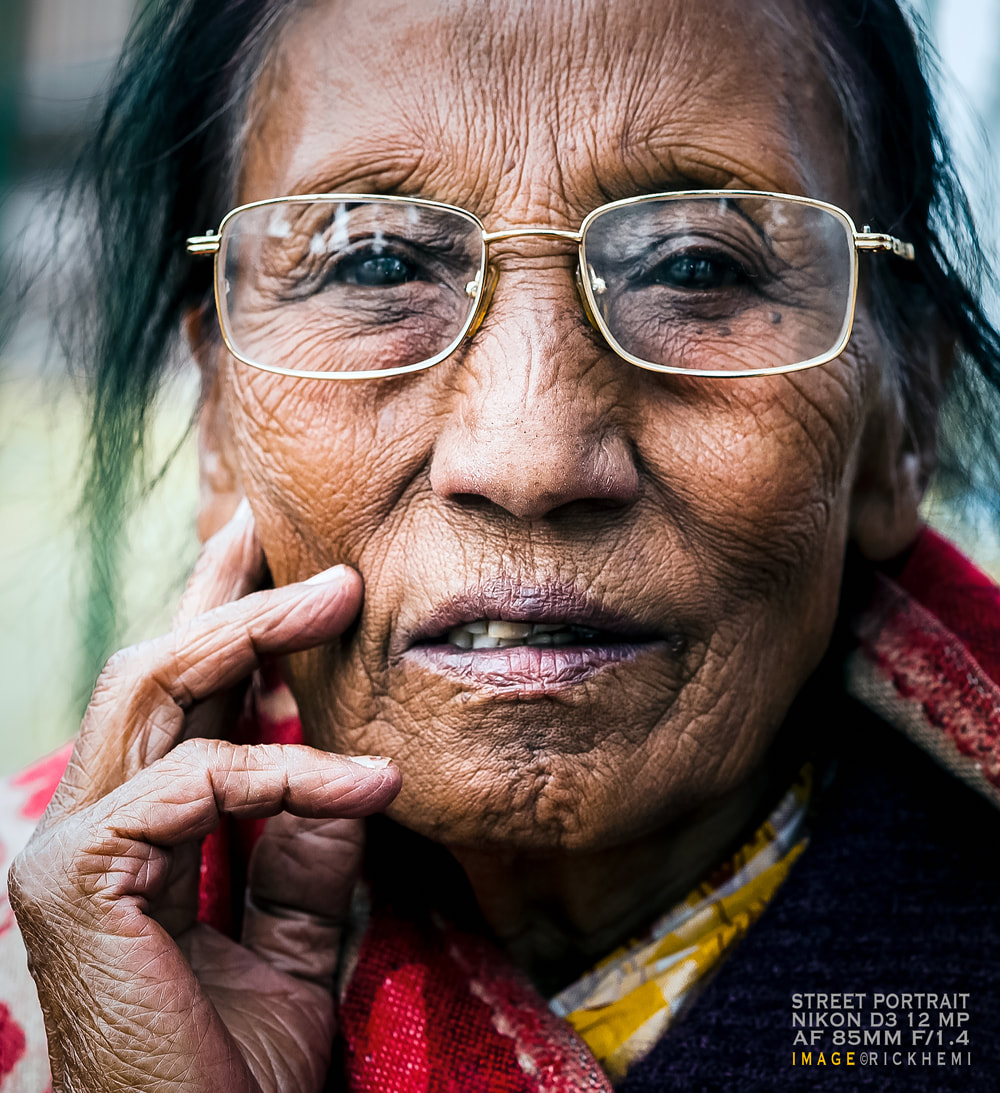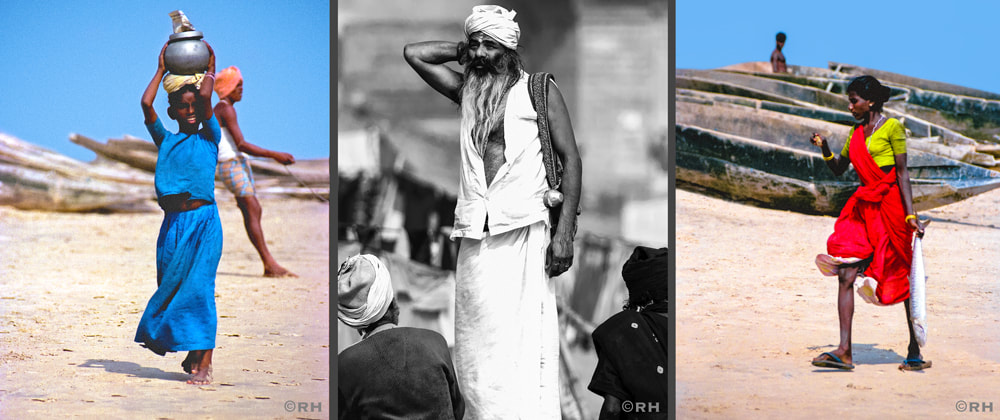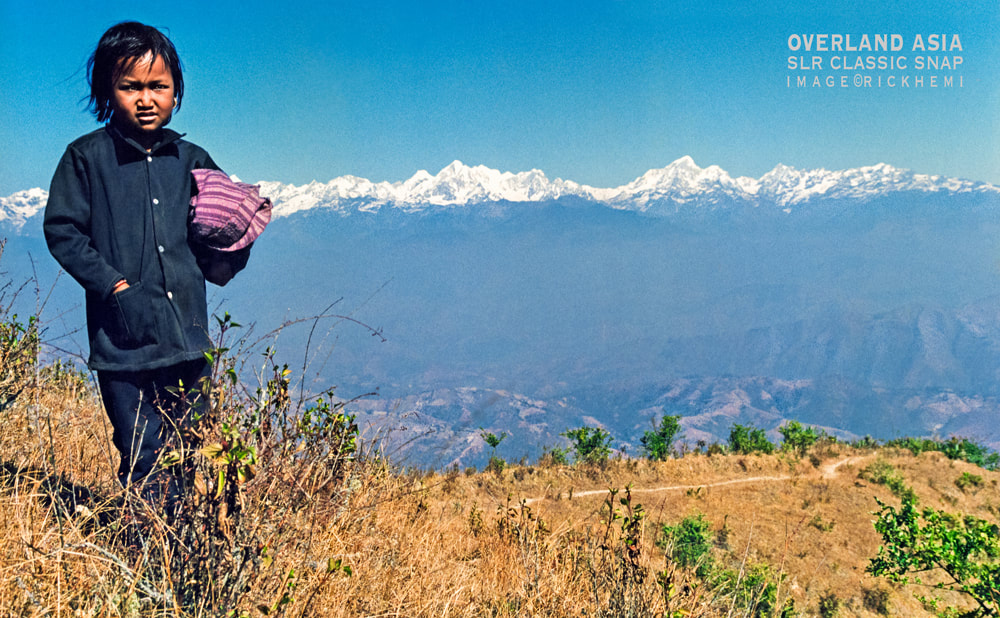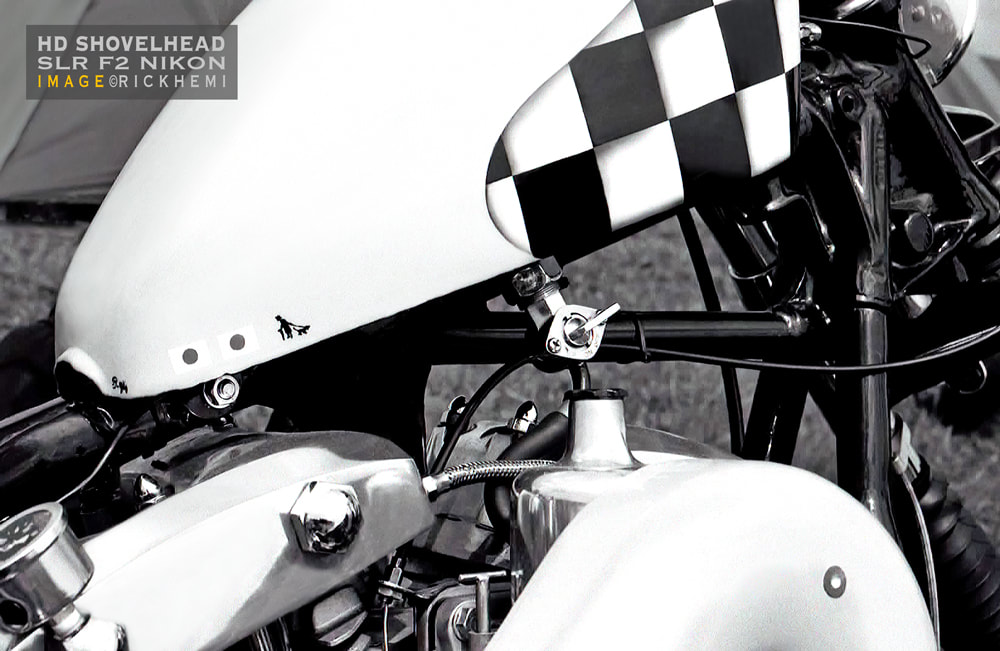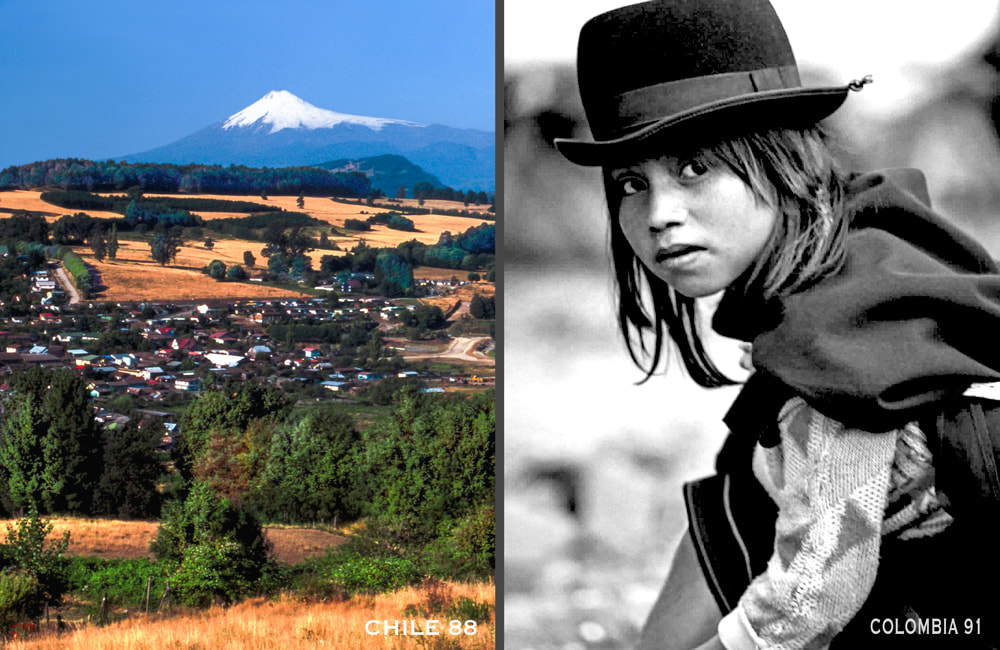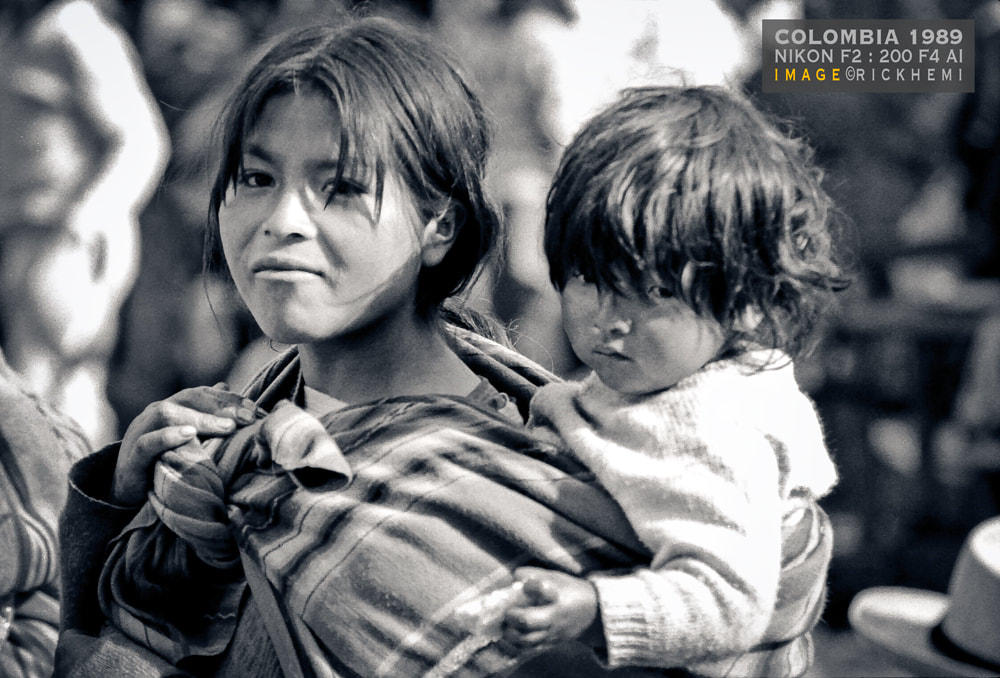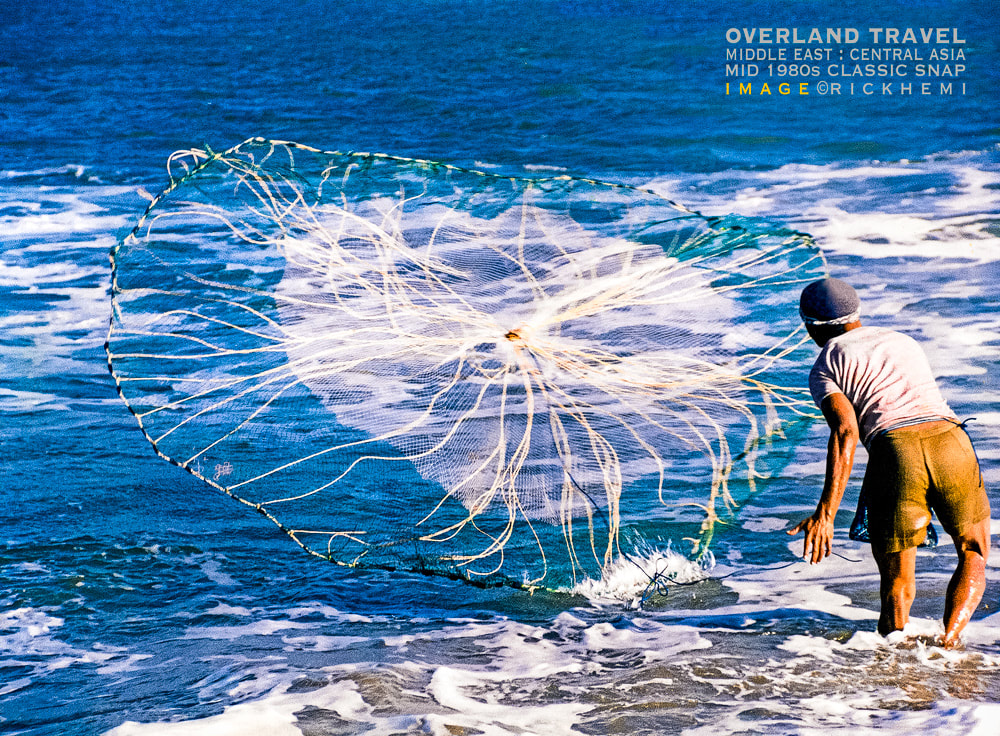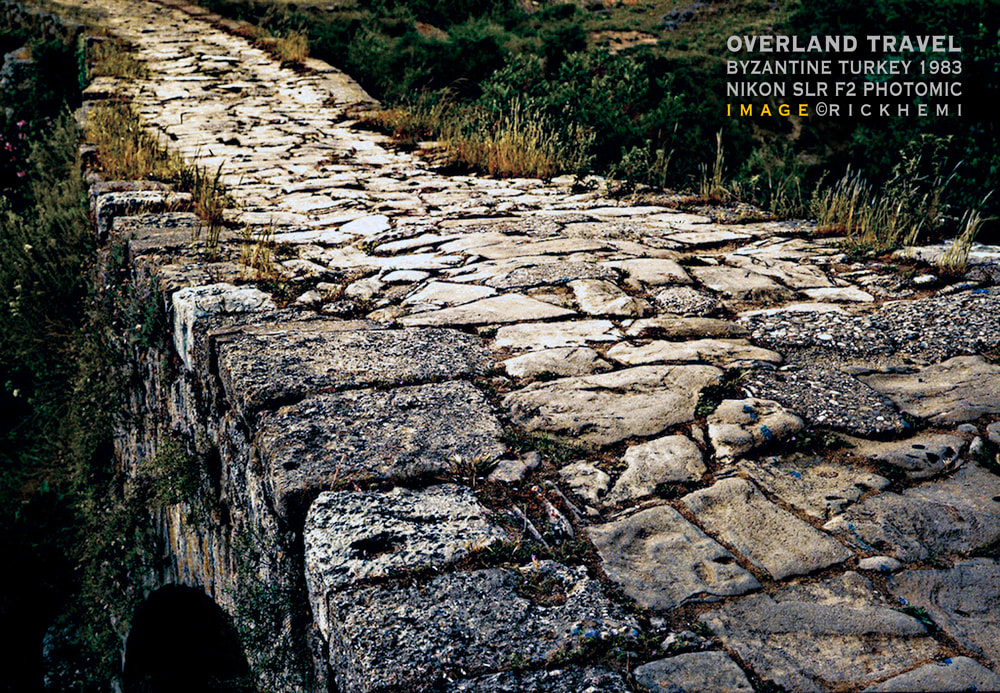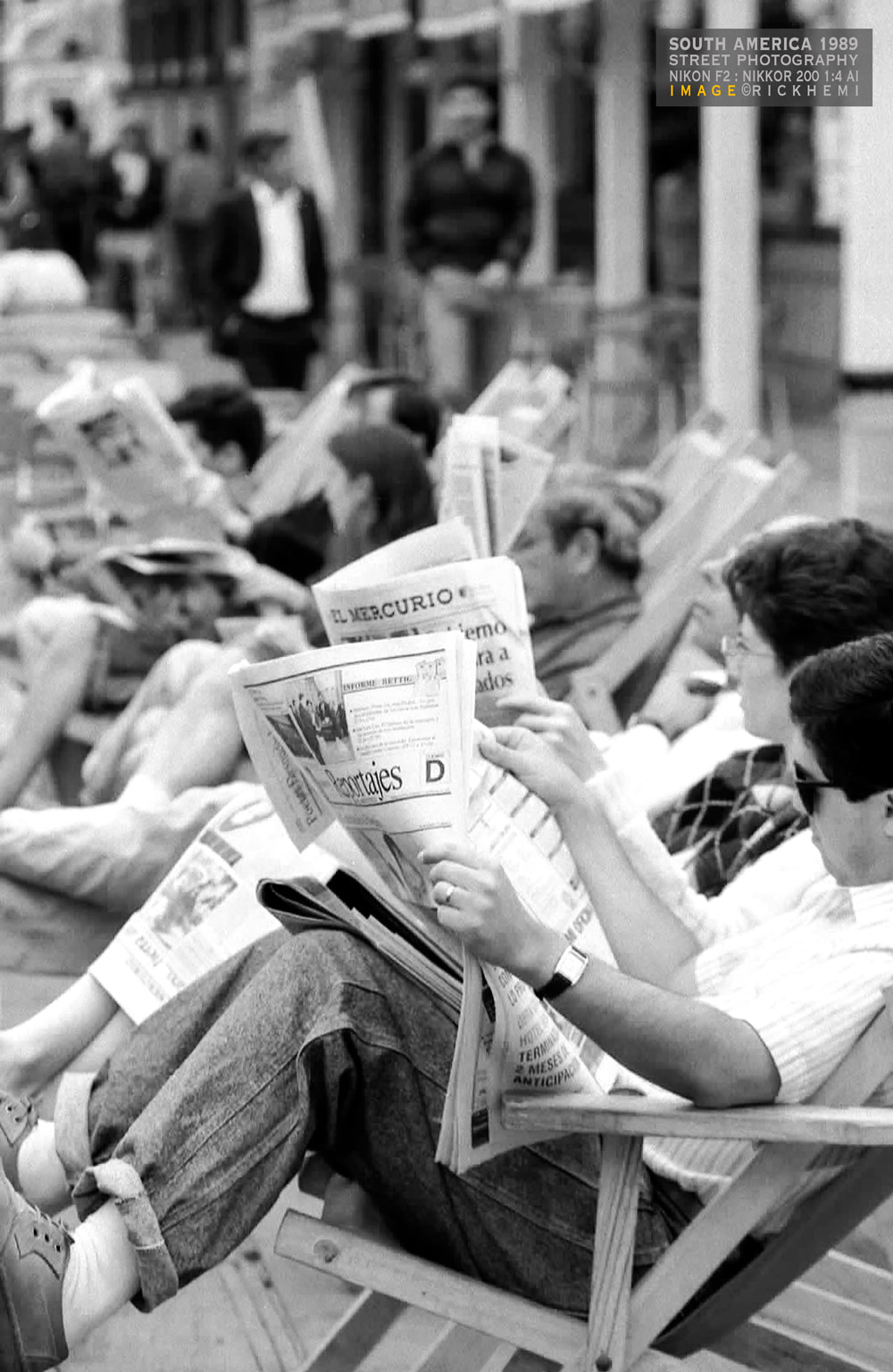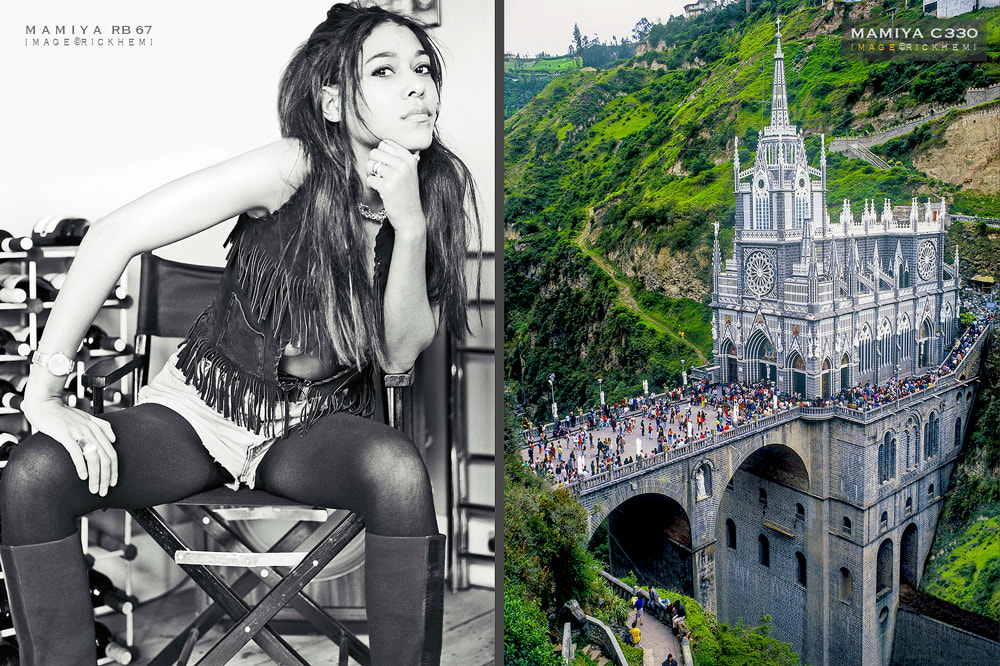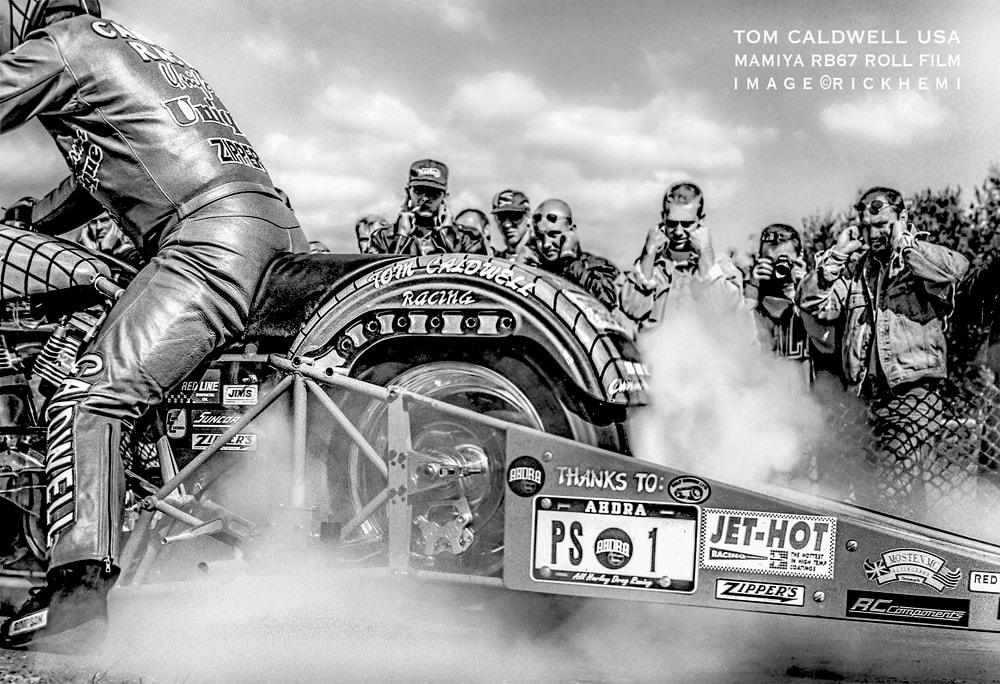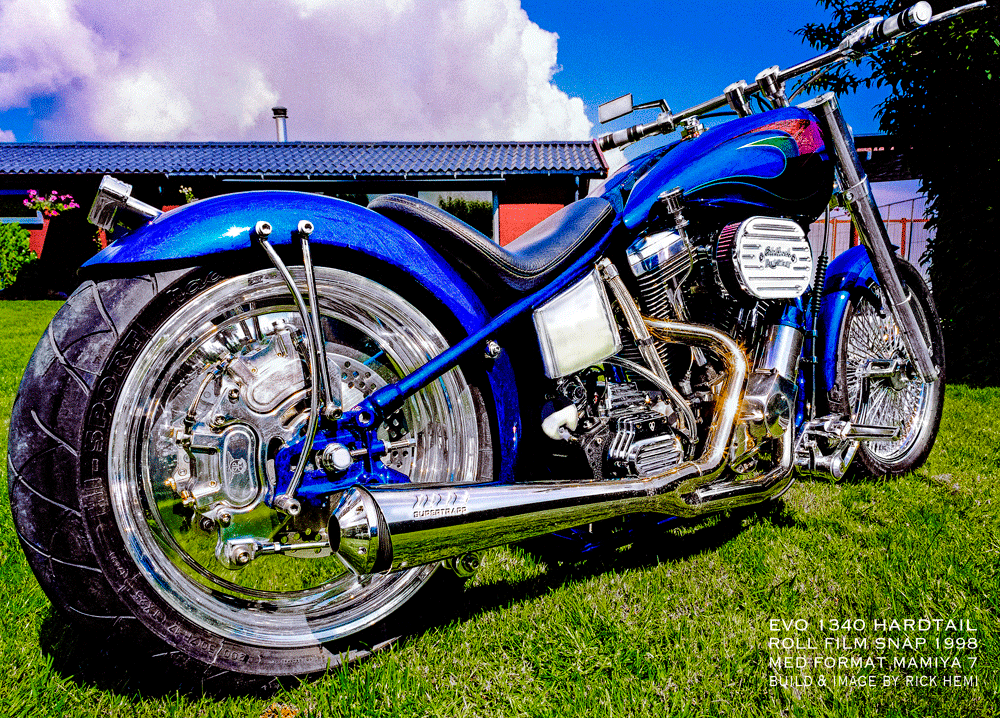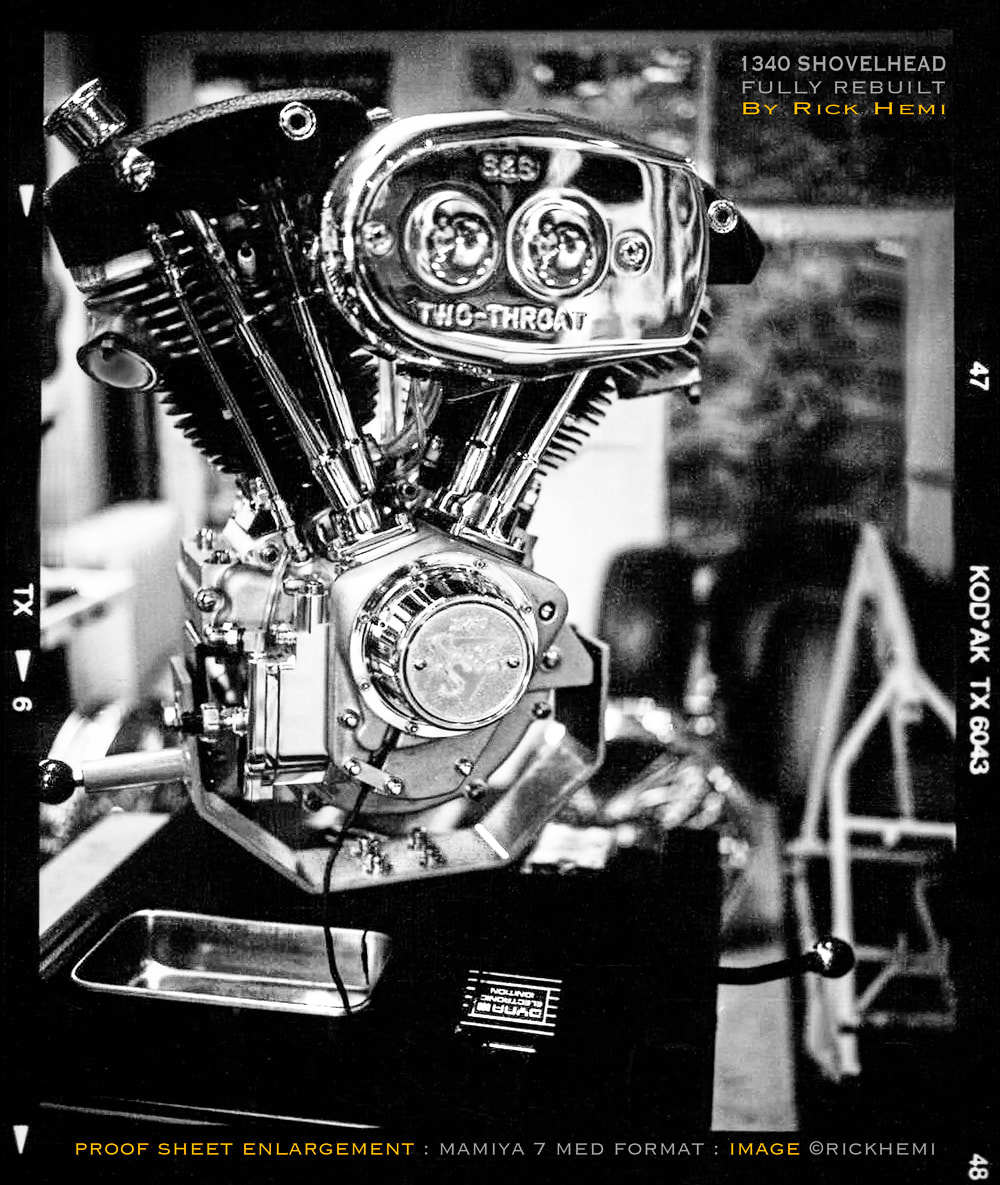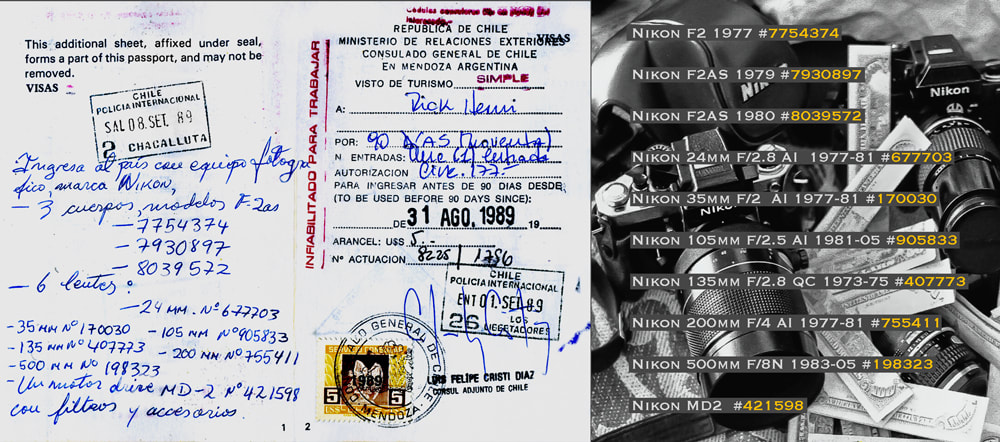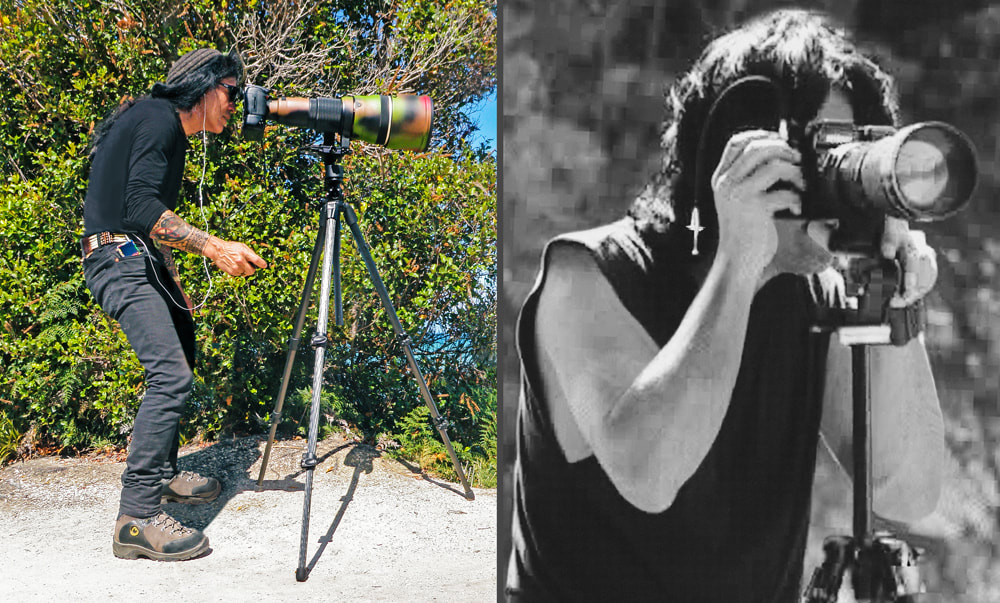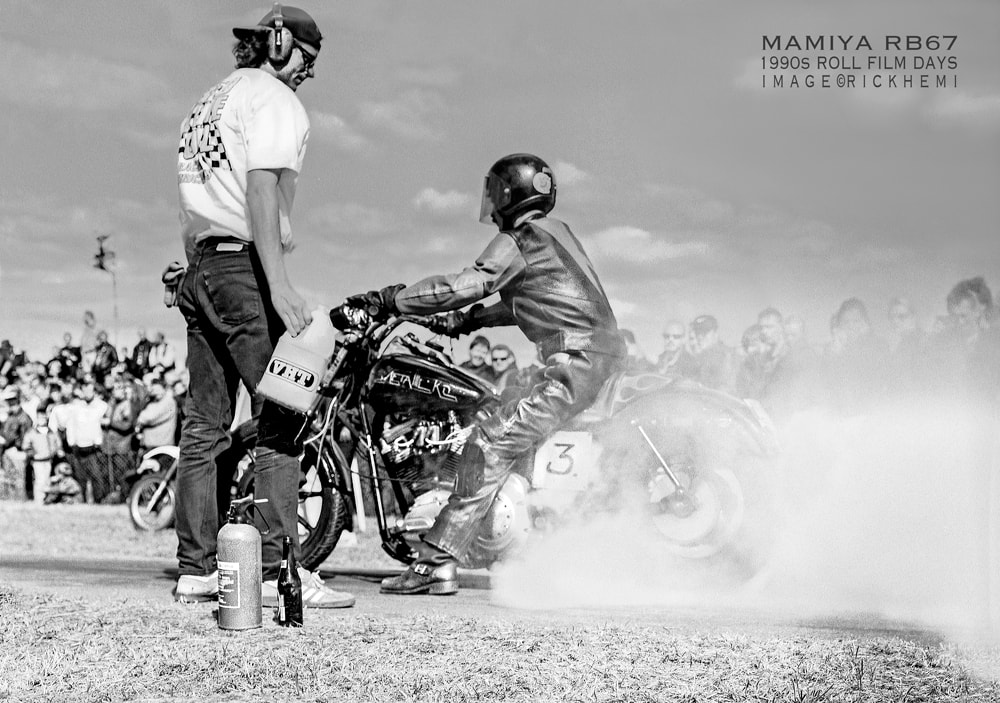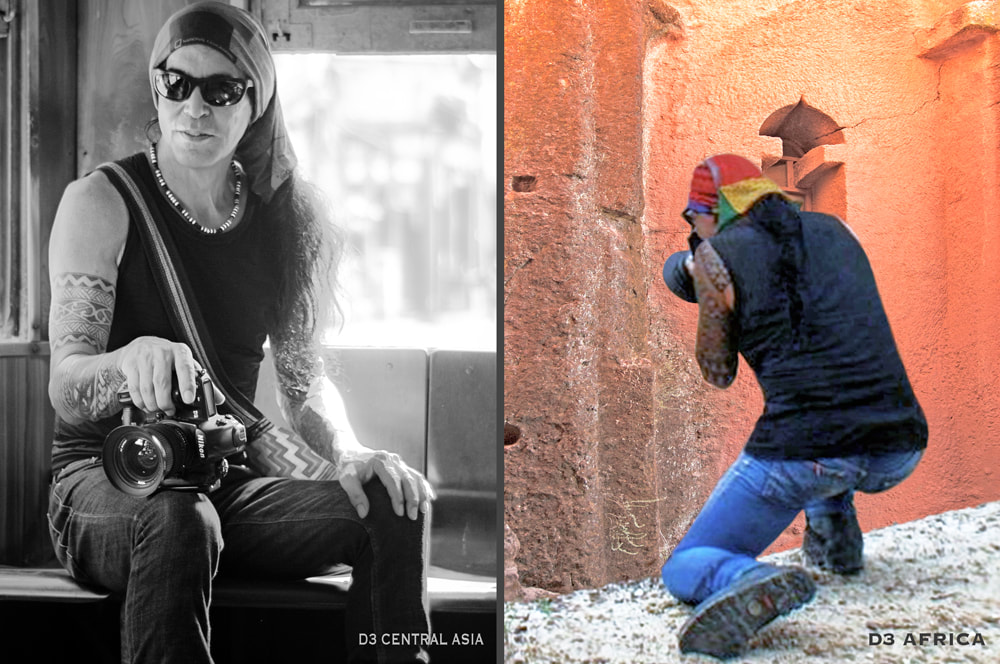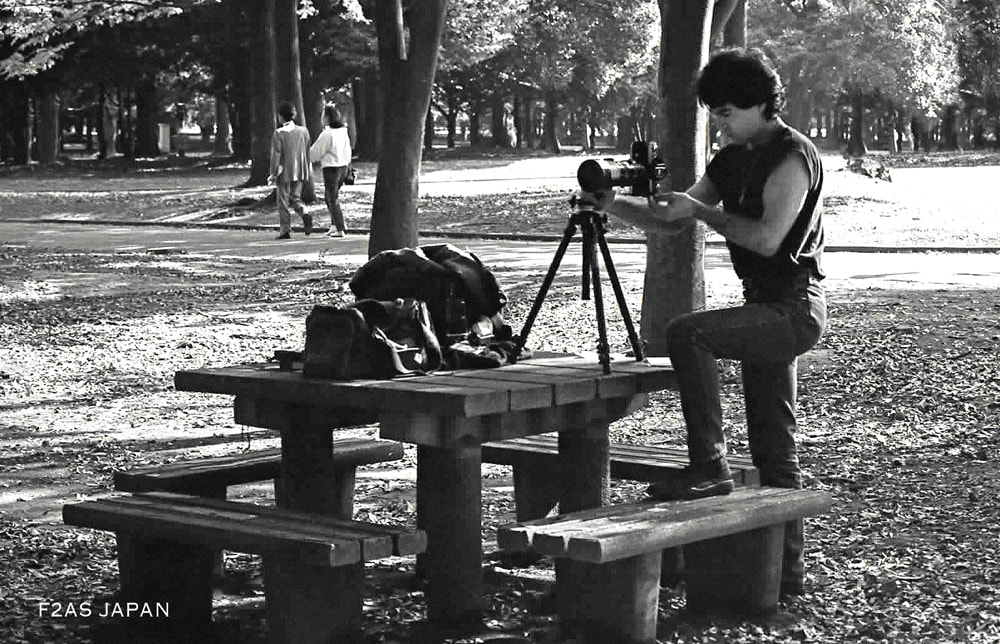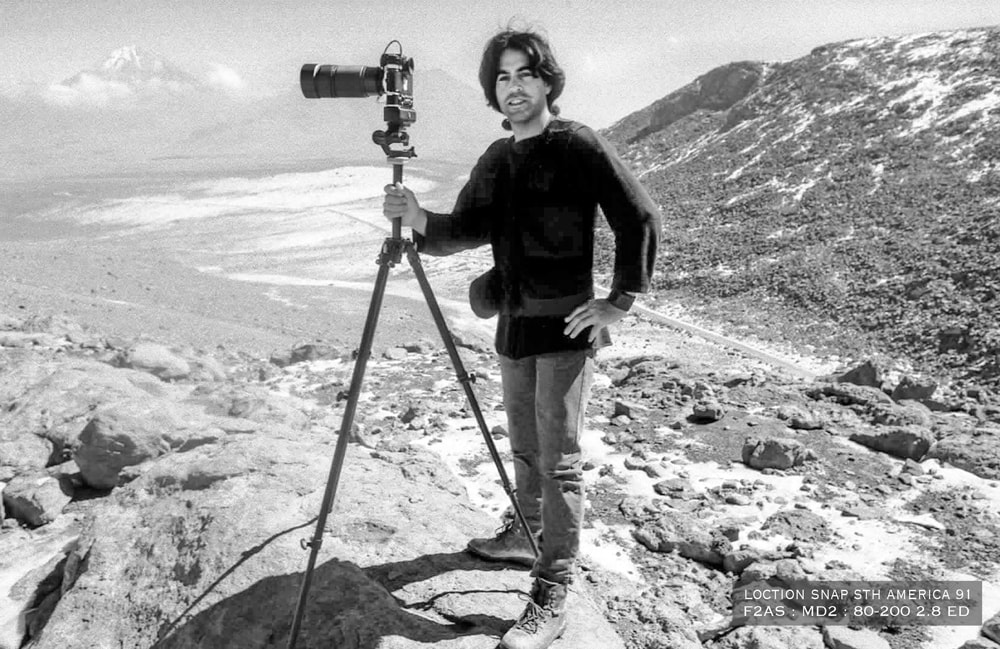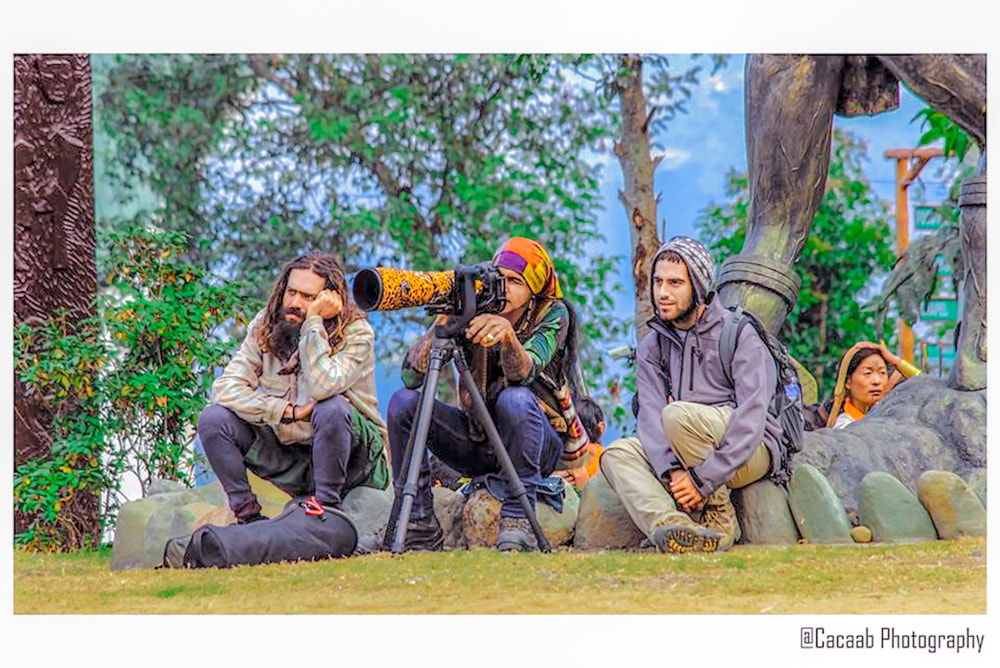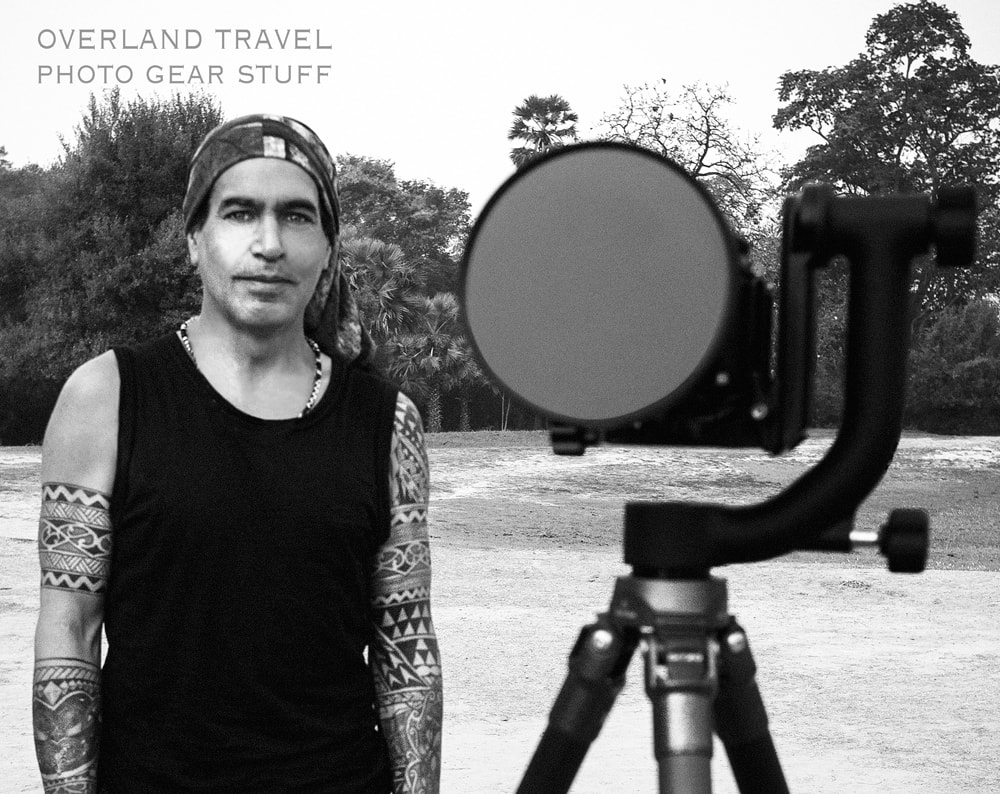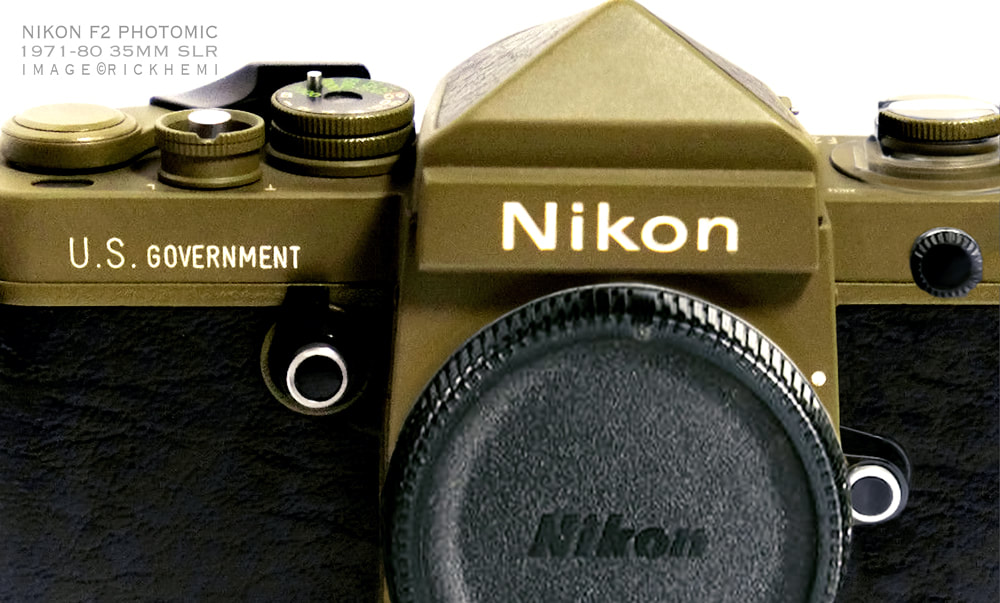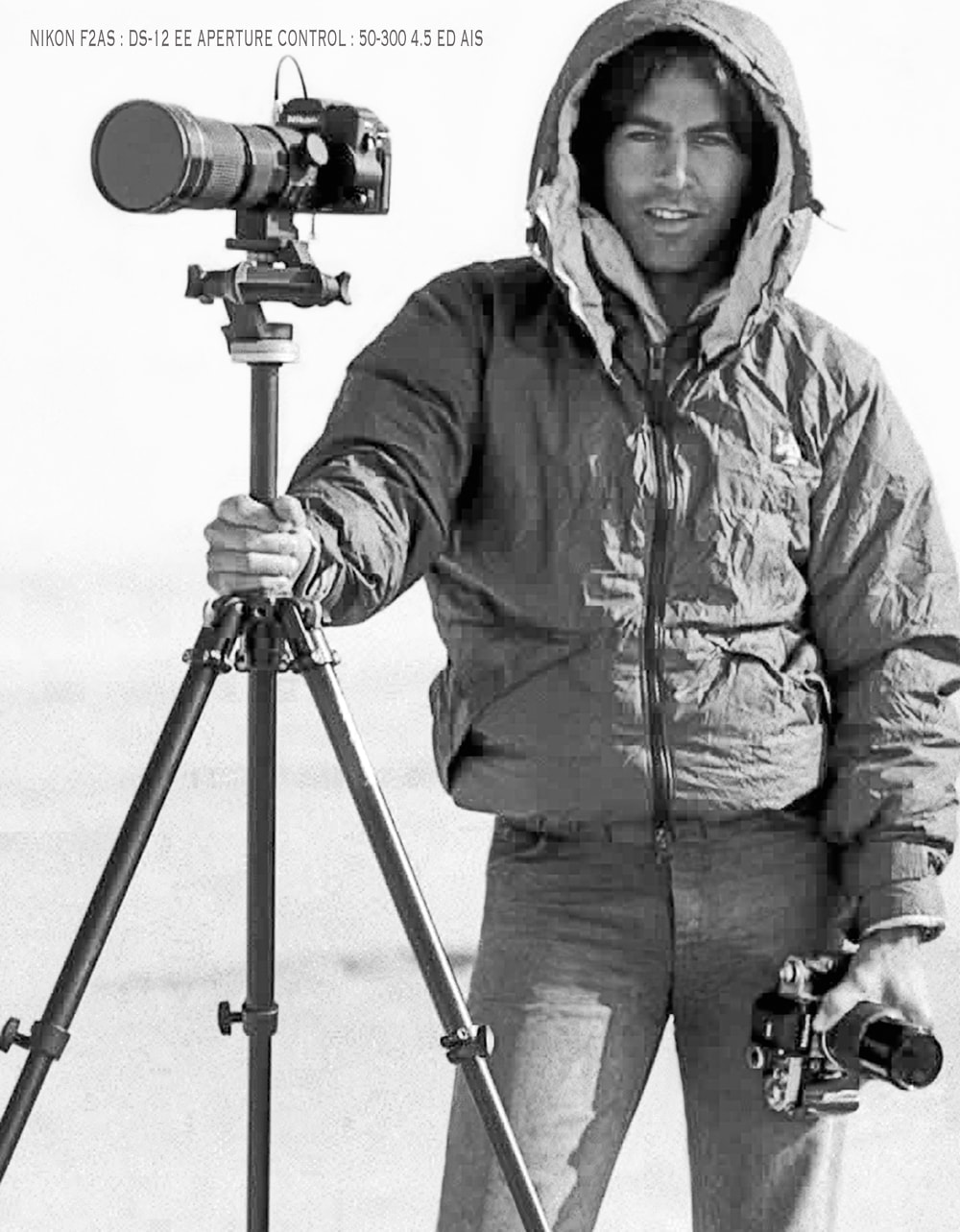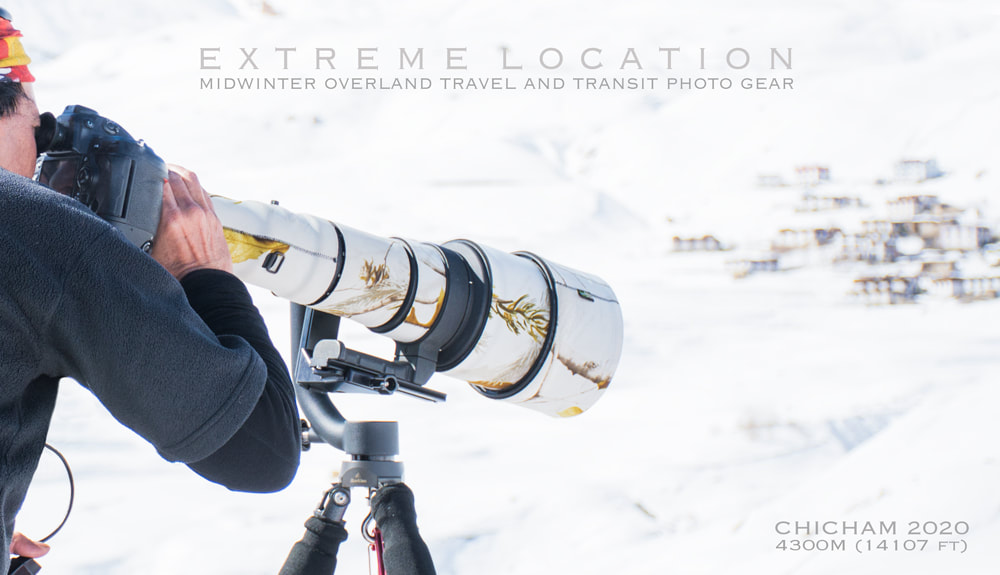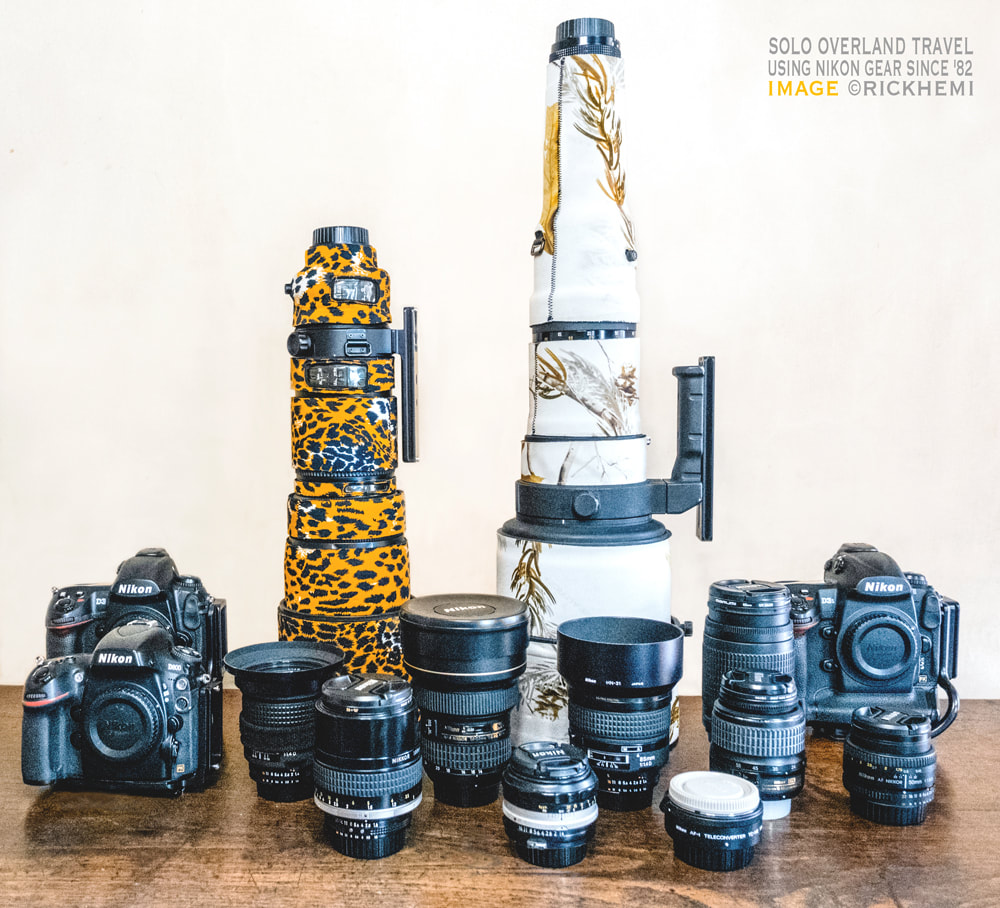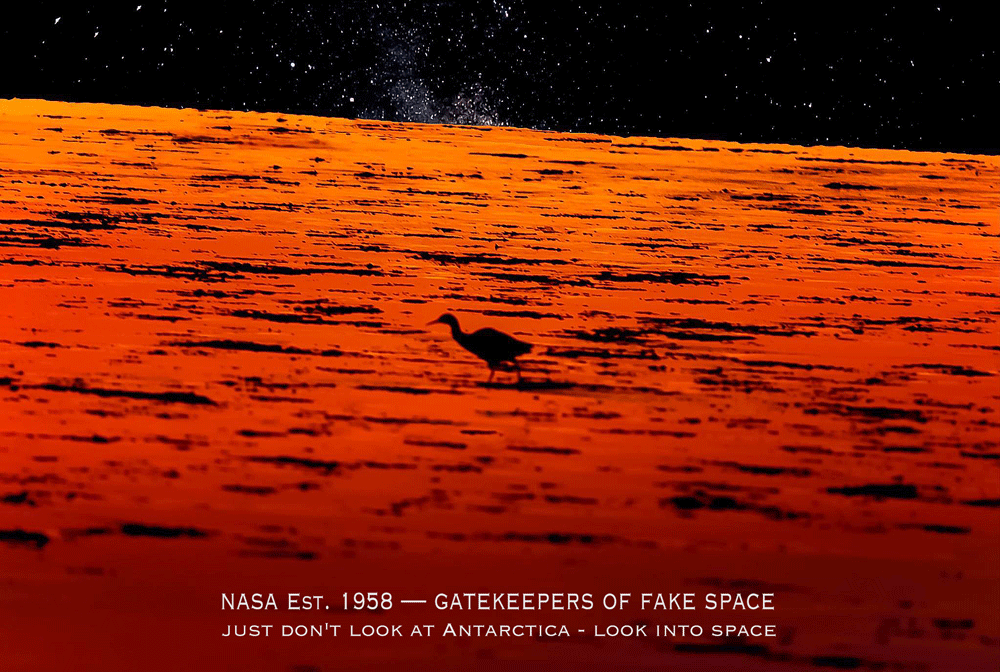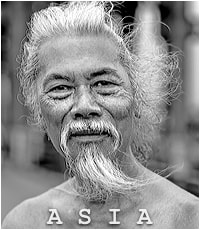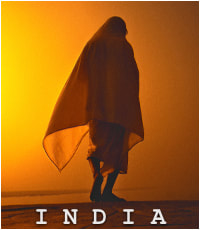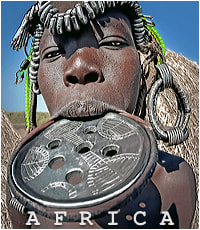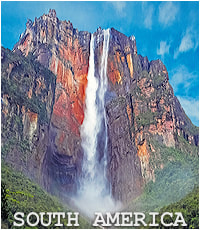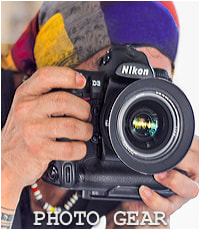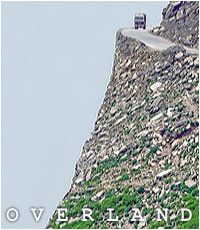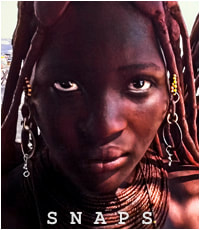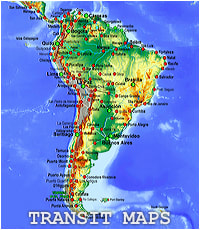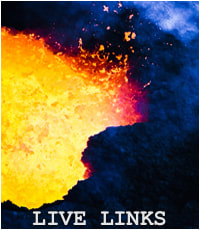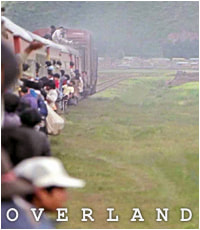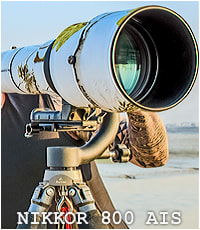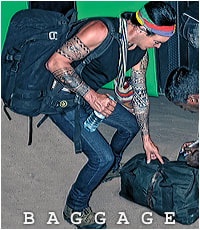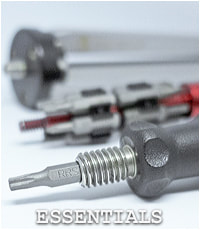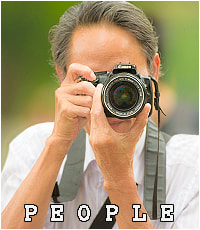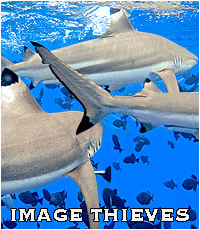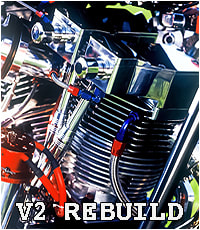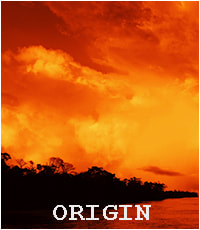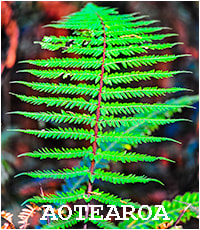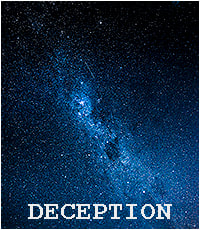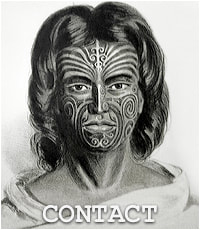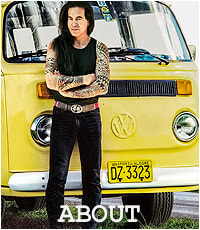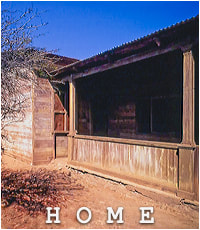Intrepid Overland Travel
Photo Gear - Overland Travel
South America - Africa - Asia - Middle East
All Images By Rick Hemi
For most happy going street photographers, any photo gear used for offshore travel journeys will usually be for short time periods, of a week or two, or up to a month maximum and no more. Photo gear used on a short trips will eventually return home, and placed safely back in cupboards or dry boxes. This is the total opposite for those who are basically like wandering gypsies over-landing somewhere through countries and continents with photo gear for long periods at a time. Most camera equipment will end up being tried and tested through different types of climatic seasonal changes facing natural elements out in the field. When traveling on board basic transport, contents in camera bags can easily become vulnerable to damage, if not properly packed down. Believe me, rugged rough bush buses show no mercy to fragile contents freely floating around inside bags. Robust designed camera bags protect photo gear from sudden drops, knocks, and continuous bump and grind crossing through countries across continents. Traveling overland with quality made camera bags is as important as the camera gear itself. Those who have traveled with a lot of camera gear for 12-36 months using basic transportation without damage know what I;m talking about.
Photo Gear - Overkill Is Real
Running out buying the latest photo gear doesn't make you a better street photographer!
"The fact is that relatively few photographers ever master their medium. Instead, they allow the medium to master them and go on an endless squirrel cage chase from new lens to new paper to new developer to new gadget, never staying with one piece of equipment long enough to learn its full capacities, becoming lost in a maze of techinical information that is of little or no use since they don't know what to do with it." Edward Weston.
Chinese tourists really looking the part, dressed like pro-photographers with pro-photo gear, but unfortunately they were far from it. I had watched them from distance where I was setup with a tripod and lens. They lacked what most street photographers would normally accomplish. The quick snaps they did take could of easily been captured using simple smartphones instead. When in the thick of it traveling offshore carrying photo gear, at least put camera stuff into good use, or invest in little point and shoots, or just use junky little smartphone cameras — aka the smartphone traveler. The one thing immediately noticed, is that all four Chinese tourists are using made in Japan photo gear. We all know why that is. Chinese made cameras wouldn't last even a month of overland travel mileage through the continents let alone capturing tack sharp images.
Freaking out during overland travel journeys happens to those who aren't familiar with their camera gear. I've lost count how many times I've met people offshore who only knew basic adjustments with camera settings. It's recommended to use new purchased photo gear well in advance before heading overseas. Most top camera brands keep the same external and internal adjustments in the same place. Give me a pro Canon or Sony body and I wouldn't have a clue where to begin. I've been a Nikon user since the early eighties and have no intention switching. Point and shoots can be just as complicated with fiddly endless internal menus. Nothings more frustrating capturing images that are out of focus, blurred, burnt or under exposed from user error. Knowing your camera settings makes a difference.
Amateur, semi and pro photographers use real photo gear. Above, in the wilderness — Nikon D500, Nikon P1000, Sony Alpha.
No matter where one travels overland offshore, you'll quickly notice amateurs, semi and pro photographers from all walks of life, using real camera gear capturing their images. They don't use smartphone junk for obvious reasons — image quality is subpar looking like screen grabs. To avoid disappointment, travel using real camera gear stuff for street photography, random people shots, portraits, landscape, bird and wildlife. Getting familiar using new camera gear is recommended well before overland journeys.
Anything that can produce an image is better than nothing at all - Travel offshore using real photo gear.
Below, Chinese tourists offshore using smart phone cameras to get the shot. Like mentioned above, anything that can produce an image is better than nothing at all. Smart phone cameras have limitations when used out of their range. Only idiots would try to drive a mini cooper across the Sahara desert instead of using 4WD vehicles. Smart phone cameras run out of steam capturing sharp tack images past 50 meters. Street, landscape and wildlife photographers traveling offshore don't rely on junky smart phone cameras to get their shots. They capture images using real camera gear - Got It? wildlife photographers : sport photographers : fashion & wedding photographers
Photo Gear Isolated Locations - Getting The Shots
Reaching certain isolated locations through the continents can be as thrilling as the destinations themselves. Traveling with photo gear well off the beaten track through the middle of nowhere, is something I've been doing since the early 80s. Arriving to locations with minimal camera gear is something I've witnessed with others on many occasions. The usual comments "I wish I came with DSLR gear instead of this point & shoot", and of late "my smart phone camera failed to get those shots your lenses easily captured". This is how it was in the past, and how it continues in the 2020s. Traveling overland with the right photo gear offshore makes all the difference. Avoid becoming one of the many dissatisfied foreigners, who risked traveling with only smartphone junk — Don't do it!
Overland travel photography requires more than using 5 lens 200MP smartphone junk — Use real camera gear instead!
Below, an example of reaching an isolated location teaming with raptors and vultures in the wild. This is the opposite of caged up birds in zoos where smart phones are commonly used. Getting up close photographing free roaming eagles and raptors is impossible. They will quickly move when approached. This is when long range full frame DSLR prime and zoom lenses are required. ing an isolated location teaming with raptors and vultures in the wild. This is the opposite of caged up birds in zoos where smart phones are commonly used. Getting up close photographing free roaming eagles and raptors is impossible. They will quickly move when approached. This is when long range full frame DSLR prime and zoom lenses are required.
Scouting around looking for spots to set up photo gear depends on the terrain. Using tripods is auto-procedure with heavy camera lenses over 4kg. Capturing distant shots of bird and wildlife requires plenty of time and patience within any territory. You can never know when something suddenly lands or wanders in front of the lens. The below snap is one of them, when an eagle landed beside a vulture. Location is everything when it involves raptors, especially when there's only a few places on the planet to capture images like this. A daylight 12MP D3, and even older 800 5.6 AIS manual focus lens captured the shot on DX mode (1200). How about that?, old school photo gear still capturing good images in the 2020s. Bird and wildlife photographers
Angle height and background are normal issues in the wilderness. Moving to close can cause subjects to suddenly bolt, move, or take flight. Isolated locations require long reach lenses. There's no point getting to regions struggling to capture distant subjects with smartphone junk — Don't even think about it. Also, capturing long shots of bird and wildlife in the wilderness with DSLR cameras using different lenses give varying results. These two examples have been cropped, enlarged from their original file sizes.
Capturing wildlife long shots within rugged unforgiving terrain, is more than satisfying. Reaching these regions requires advance planning when going it alone. I personally avoid package tours, guides and scouts. You don't need them, if you already know how to scout and self-track wildlife. What you do need, are layers of thermo clothing, windchill jacket, gloves, boots, UV glasses, binoculars, food supply, reliable camera gear, backup batteries, and most of all — plenty of time and patience (4-6 weeks). As for photo gear, long reach prime lenses are a must. A 1986 manual focus Nikkor 800 5.6 ED AIS and D3S 12MP DSLR were used on this overland journey. The coldest temp recorded while up at this elevation was minus -33°c (-27°.4f), windchill factor @15kph -45°c (-49°f). The image in color, is far better than this black and white low res. It isn't shown here for one reason. Some just can't help themselves taking other people's images without consent. Website Image thieves, either use other people's photographic work for profit gain, or posted inside closed social media circles for self-boosting their egos in need of narcissistic likes. I certainly don't do massive amounts of overland mileage capturing images just for other's using my images from my own sweat, time and expense.
Many today in the 2020s do believe their smart phone junk will capture distant subject matter producing the same quality as real camera gear. The answer is a straight out No, unless within zoo compounds. Off course, those refuting this claim have done little research of what camera gear amatuer and proffessional wildlife photgraphers use. Certainly not smart phone junk! Don't be disspointed traveling endless mileage from your own country using just smart phone junk. Travel using real phot gear — no matter the brand model.
Below, the visibility at this location with the naked eye was difficult due the overall distance. Using a 300mm lens didn't give good results either, even in DX mode. The Nikkor 800 5.6 AIS easily reached out capturing this early morning low light shot — D3S 12MP body mounted on a tripod @f/8 1/800 Sec, ISO 640
Post Processing - Roll Film & Digital.
Do you really need to upgrade to the latest photo-software?
If everything is working the way it should work — why replace or upgrade it?
Most have probably heard about workflow, workflow, workflow. I received a promotional Lightroom 3 with a camera back in 2010. At about the same time while in Africa, I was given an Adobe CS5.5 creative suite. That was 13+ years ago. Since then, only upgrades to LR4 and CS6 have been done. Following trends getting newer photo-software has been ignored. Even the laptop, as I'm writing this, is on a mid-2012 MBPr — and still working fine. The need of having the latest photo-software isn't required, unless earning a living from it. Everything about photography today, is about "must have this and must have that". The latest, being DoX PureRaw. Those out there using the latest mirrorless camera gear are certainly onboard the DoX PureRaw bandwagon. Think about it, after spending literally mega-thousands of dollars on 80+ megapixel mirrorless cameras, these guys then spend more cash on software to sharpen their images. You can't make this stuff up. It's a never ending cycle of must haves — even when using the latest photo gear. No thanks. I'd rather place that cash on good used manual focus lenses instead. Best advice, spend more time capturing images than sitting for hours everyday steering into computer screens.
If you're unable to capture candid random street still portraits with 12MP DSLR bodies, don't expect doing any better with larger later model megapixel cameras. It's the person behind the camera that creates a good image. In other words, any camera — no matter the brand, is only good as the user. Above and below street snaps taken with Nikon D3s, D3, AF 85 & 28mm 1.4 1990 primes.
Using quality prime lenses, any DSLR body is able to capture crisp shots at whatever it's focused at — D3, 28mm 1.4 @f/4.5 1/50 Sec.
The below classic Nikomat maybe old school, but guaranteed to capture images with the same quality results from when it was first made in the 1960s. The fact is, the majority of street photographers are still using real cameras capturing their shots in the 2020s. SLR Roll film, medium format, full frame DSLRs and pro-point and shoots have successively produced and still producing quality stills. There has been an ongoing conditioning, especially with the Gen Z generation mindset, that smartphone cameras are all that's required. It doesn't matter how much the global smartphone industry pushes glossy advertising promoting their smartphone junk. Street photographers who have been using photo gear for years will continue using real camera gear. They will not rely capturing their images with smartphone junk.
South America - Solo Overland With Photo Gear
South America Isn't Called The Robbing Paradise For Nothing - Brush Up On Your Street Savvy Skills!
There's nothing like testing out your street savvy skills within countries known to have excessive crime and extortion in broad daylight. Socialist Venezuela certainly isn't a country for the weak or the fainthearted. I've personally traveled extensively throughout South America clocking up numerous overland journeys from top to bottom of the continent with the first journey back in '88. Fast forwarding to the last overland journey, I entered Venezuela with five lenses and two full frame DSLR bodies, entering Venezuela from Brazil exiting to Colombia with nothing pillaged, lost or stolen. Three months later I reentered Venezuela with the same photo gear, and again traveled solo through the country, capturing street images and landscape snaps, again without any loss of baggage or photo gear.
It was impossible to find other foreigners in Colombia joining me through Venezuela. This is the difference between yuppie flight baby tourists filled with fear, and those who actually do travel crossing through countries taking each day as it comes. Yes, local officials tried all different types of corruption tactics without success. I've been self-aware of intended extortion and different kinds of thieving tricks since the 1980s. Traveling through countries containing lawlessness without loss of baggage, cash and photo gear, is done by using your instinct and awareness capabilities, of what's around you. This includes your dress mode, where you stay, the way one walks, how one sits and eats in public, your appearance, and facial expressions. By using the appropriate interactive skills at any given location, this will avoid being stripped off stuff or being targeted. Someone is always watching your every move close by. Latin street thieves can easily distinguish weak targets - Just ask locals. Being street smart is more important today offshore than it was before 2020. People are broke, jobs are lost, and money is tight. Blame it on the lock downs, blame it on whatever you wish. The planet was hijacked by globalist reforms. Those happy freedom days are gone, done and dusted never to return. Based offshore, I've seen the change in people, the personal emotion of locals, their dilemmas, the suffering, so don't think the grass is any greener elsewhere. The globalist elites have an agenda, and their agenda didn't start in 2020. Those who may think it did are blind and naive. Note, Asians are the most robbed foreigners throughout South America. They make themselves become easy targets because of their tunnel vision tendencies. How do I know this? I've met many that have been robbed.
Above, classic 1980s snap, South America, carrying a bag full of Nikon SLR photo gear. Having no camera logos or exposed flashy camera bags got my gear criss-crossing overland throughout the continent without loss for over 2+ years. Many foreigners I met through that time period weren't so lucky. Some were robbed of stuff in their first week, others robbed within months. It's all about being street smart, using instinct and awareness knowing beforehand identifying locations commonly known as random mugging zones. It's also about where one stays, where one eats, how you walk on streets, and actually recognizing thieves and snitches. I've also returned to South America twice traveling overland through the entire continent, even with more photo gear with no loss or damage.
Top left, classic early 90s location snap using SLR photo gear in South America (Nikon F2AS & 50-300 f4.5 ED AIS, Manfrotto tripod).Middle, entering Peru at the Kasani border with photo gear, June 89. Top right, entering Chile with photo gear Sept 89. Brazil, Paraguay, Argentina, Ecuador and Colombia didn't bother writing camera gear in passports. Lima, Peru during the 1980s and 90s had a massive inventory of camera gear for sale within certain markets — Most were stolen stuff extracted from tourists.
A classic snap during the 1980s, traveling solo overland with camera gear. The above stuff made it overland through South America for 2+ years without damage, or loss to street thieves and road bandits. Those greenbacks were folded for a reason. Cash notes were placed inside a custom leather money belt worn around the waist. It was also normal procedure keeping passports in small plastic bags hidden down inside undies over-landing through South America and Africa. Camouflaging travel gear (backpacks) inside potato sacks when shoved in bush bus storage compartments worked. The amount of foreigners losing backpacks through the night when fast asleep during transit is uncountable — thinking like how thieves think works.
Above snap, taken with a 77 Nikon F2, central America, an everyday workhorse body grabbing random snaps and location shots. At the time the shot was captured, I was traveling with two F2AS bodies, one F2, MD2 drive, 500 f8N, 200 f4, 135 f2.8, 105 f2.5, 50 f1.4, 35 f2, 24 f2.8. The same camera gear made it through USA, Europe, central Asia, south and north Asia, including another overland journey through South America. The 1980s and '90s were one of the best time periods of solo overland travel. There was no internet, it wasn't needed or required. Using your own brain in the 2020s traveling from point A to B is difficult for many. Smartphones are now their brain.
The first of three visits to Machu Picchu. A 1980s roll film snap taken from Huayna Picchu with a Nikon F2. The last visit in 2009 still had total freedom to stroll around the complex as long as one wanted without guides. How things have drastically changed in the 2020s with new rules and regulations. The dreaded selfie stick is banned — yuppie travel bloggers won't like that. Camera tripods are banned — no more slow precision slow shots. You must be attached to a tourist guide — no more hanky panky. Security cameras are positioned watching your every move — Don't light up a cigarette. Two hour time limit — Say what? Welcome to the world of UNESCO controlled heritage sites.
Above, a 6 kilo AF-S Nikon 600 f4 ED location snap during a 12 month overland journey throughout South America. Was I worried about local street thieves and highway bandits taking my stuff? Not at all. I've traveled through the continent so many times since '88. One learns the ropes of being street wise, where to stay and not to stay, observing what's happening in all directions around you, and especially knowing the latest info of highway holdups that have occurred along certain isolated routes. Snitches are always your worst enemy. Let that sink in. Snitches are as bad or even worse than thieves themselves. They are silent, invisible and harmless, but the root cause of being set up to get robbed of stuff no matter the country or continent. Below, traveling solo overland throughout Socialist Venezuela (twice) without loss of camera gear.
Location snap, photo gear in southern Venezuela - zero loss of stuff, zero corruption payout bribes. Two separate solo overland journeys through Venezuela using buses, pickups, and river boats from south to north, east to west without losing stuff requires to be tuned in, knowing how to interact with corrupt officials without forking out a single peso.
Traveling overland offshore with excessive camera gear for long time periods requires four items protecting stuff. A durable camera bag, tough made tripod bag, domke wraps and lens filters. Using all four guarantees nothing gets damaged. I personally don't use rip-off travel insurance, and haven't for decades. Instead, I take good care of gear using quality made baggage. As for thieving, I've been up, down and across Africa, central and south America, the Mid-East, and all of Asia with zero loss. Having no insurance keeps you more streetwise, aware and alert. Being street savvy offshore doesn't come as a free gift — it's a self-learning curve.
A snap taken in South America. Old school maps, Trimble computer, Colombian mochila, and DSLR photo gear. My stuff made it through the continent without loss or damage solo overland taking the necessary precautions. Border baggage inspections were thorough only in Chile and upon leaving Venezuela. I had met numerous other foreigners, who lost their travel baggage and camera gear from street thieves, hotel room theft, including at isolated locations, during night bus journeys, and even by road bandits, which randomly happens within the Andean block, Venezuela and Brazil. Solo overland travel offshore requires maximum awareness levels — All the time.
Above, one good reason carrying point and shoot cameras offshore, is the amount of positive interaction it creates letting locals use it. These local Bolivian kids became instant street snappers for an hour with an Olympus 12MP. The camera was shared just like above through the continent, and gifted after 18 months of usage.
When freelance journalism was inspired with roll film. It didn't matter what brand and model camera one used, as long as the shots were captured at real-time events. My Nikon F2 and F2AS bodies captured powerful images through the 1980s and early 90s in Peru, Colombia, Nicaragua, El Salvador, Tanzania, Syria, Iran, Pakistan and Tibet. Survived snaps from the 1990 Sandinista elections. Below, anyone familiar in history will recognize this street snap from 1990. A poster of a then younger Daniel Ortega pinned to the side of a dwelling gives it away. Traveling with a bag of photo gear through central America back then wasn't as dangerous as it is today. This is caused from increased poverty, narco gangs, highway bandits, organized people smuggling and last but not least, location cell phone snitching.
In the 2020s, I shake my head sideways. The western traveler offshore mindset in regards to street photography has become fluffy. For verification, one only needs a quick look at travel bloggers and flight baby influencers on instagram and YouTube. The majority of Millennials and Gen Z wouldn't last more than a week traveling rough as guts, crossing continents four decades ago. They'd be hard pressed just to advance roll film levers, manually focusing lenses and figuring out how to read from maps.
Everything designed has limitations. 35mm roll film cameras were notorious for blurred soft shots when used with subpar made lenses. The Nikon 500mm F8N reflex was known for doughnut shaped bokeh. An added TC with the 500mm made images look worse, as if they were taken out of focus. The above long shot snap is proof of that, taken in Porto Allegre. Probably one of the less used Nikon lenses I had used during that travel time period. Why did I travel with this lens in the first place? It was smaller in size than bulkier prime lenses, and the $100 price tag in a Lima camera shop couldn't be resisted. Notice the VWs above? Brazil was manufacturing VW beetles & Kombi vans for the entire continent. The majority of VW's in Brazil were running on alcohol juice, not gasoline. The female in the image may appear, as if she was a working prostitute, but I cannot confirm this. Below, closeup portrait using an F2AS & prime.
What Is An Overland Travel Street Photographer?
Anyone can become an overland travel street photographer. Breaking out, moving away from narcissist social media platforms is a good start. Those ditching smartphone junk capturing subject matter never look back. Traveling using real photo gear makes a difference. You begin capturing much more random subject matter. Best advice — switch-off using programmed swiping smartphone junk.
In the 2020s, relaxing at trendy cafes with 30+ foreigners of different nationalities, one will find 75% of them have zero interest in street photography. 95% will be traveling only with the lightest compact cameras capturing images — smartphone junk. 80% of those images will be selfie-oriented snaps directly loaded to social media platforms. What does that tell you? We live in a narcissist world. Overland travel street photographers are recognized by what they capture. This involves any subject matter randomly captured traveling through countries across continents. At times, it's hard using energy through any given day getting satisfying results. There's a difference between smart phone travelers and overland travel street photographers. Sounds harsh, although most seasoned street photographers will agree.
Since the 1950's, there have been endless views and debate about street photography. No one tends to have the same opinions or fully agrees of what is the appropriate method. The simplest answer - there is none. I've met street photographers who only concentrate on certain subjects, like historical buildings, modern architecture and food snaps. That would quickly bore me to tears. I've observed others taking street snaps of locals keeping distance using point and shoots. Who knows if those images came out positive after cropping and enlarging the original files. Experienced street photographers traveling offshore half way around the planet will most probably have the same camera gear they've used on previous journeys - like myself. Knowing the limitations of individual lenses isn't something to be ignored. The one lens does all was debunked decades ago. I tried that during the early eighties with a 50mm lens - Never again.
Taking random street snaps like above involves more than what most assume. Location, mood, ambience and patience with a lens capable to capture the shot.
Above, a couple using DSLRs. Below, my type of selfie, on the street capturing random street portraits with a DSLR D3
Going Offshore? - Use Real Camera Gear!
Don't think twice, travel with real photo gear offshore. Quality DSLR cameras and lenses have a proven track record capturing whatever the subject matter. Think about how many idiots who thought their cell cameras could manage capturing images that even DSLR users struggle at times within certain environments. Those traveling offshore for 12 months or more relying on their smart phone cameras to capture the same quality shots that DSLR cameras are designed for are dreamers. I've seen it time and time again through the continents, people from all walks of life regretting they didn't travel with real camera gear. It's your choice, but at the end of the day when it comes around to post processing all those images taken with smart phones, there will be disappointment.
Full frame DSLR prime lenses rule, even with the D780, a Z6 retro inside a DSLR body. A selection of prime lenses are a must have offshore. Prime lenses are good to go for almost anything stationary or moving catching the eye. Taking closeup street portraits, moving subject matter, and night shots with prime lenses is what offshore street photography is all about.
Still my go to lens and body for random street portraits in the 2020s. The Nikon AF 85mm 1.4D works and performs well mounted on any full frame DSLR body. Now a 29 year old prime lens that has a proven track record through three decades. Honestly, people are conditionally programmed constantly by glossy advertising to think newer is better. Modern designed photo gear maybe more user friendly, and have all the bells and whistles, which half of them will never be used, just like computer and laptops loaded with unwanted apps. Still photography doesn't require nothing more than a body with a good lens — It's simple as that, above snap, 1995 AF Nikon 85 1.4D & 2007 D3 —2020s
My 1986 Nikkor 800 5.6 ED AIS 5.5kg prime lens gets used at all locations — even onboard bush boats in the middle of nowhere. Above snap, D800 body still getting used in 2023. The 800 5.6 manual prime maybe an old dinosaur, but the images the lens captures, including lens reliability within extreme hot and subzero regions gets a 10/10 rating.
One Lens Does All - A Recycled Myth.
Different continents using full frame DSLR lenses attached to full frame DSLR camera bodies. There's no such thing one lens does all, it's a worn out recycled myth. The Nikon Coolpix P1000 point & shoot has massive range capabilities, but lacks image quality with its tiny smart phone sensor and poorly designed tripod support when used at full zoom causing vibration issues. Anyone traveling overland long term having interest in all kinds of still street photography requires different lenses. Wide angle, fixed primes and lengthy zoom lenses are minimal for street, low light non-flash, closeup street portraits, group street shots, tribal, long shots, wildlife long shots, bird shots, astro, lunar, and diverse subjects.
Random street shots like above are easily captured with prime and zoom lenses — DSLR full frame zoom @400mm
Dragonfly snap taken with an AIS f4 early 80s manual zoom, steppe eagles captured with an 800 5.6 AIS mid-80s prime lens, primates taken with an AFS 600 f4. All three images above were taken with different 12MP DSLR full frame bodies. You don't need the latest camera gear. What is needed are compatible lenses at locations. Knowing the limitions of lenses should already be known well before reaching isolated regions. You don't believe how many people arrive at certain locations, taking days of travel, only to find out their lenses are useless for that particular subject matter. The one lens does all myth was around in the 1980s, and still alive and well in the 2020s. All camera photo gear have various limitations — no matter the brand name.
Arriving to extreme locations using point & shoots or smartphones will struggle capturing wildlife long shots like above. Just reaching these regions is a mission in itself, let alone self-scouting tracking snow leopards in peak midwinter subzero conditions.
Example snaps using different DSLR bodies with different lenses. Top left, manual focus Nikkor 800 5.6 AIS & D3S on DX mode, Top right, Nikkor AFS 600 F4 & D700 on DX mode, below, Nikkor AFS 200-400 F4G VR II & D3. Breaking apart the "one lens does all", is simple when all forms of photography is placed into categories. Pro sports photographers don't arrive to games using point and shoots and cell phones capturing images. They use long range prime lenses. Wildlife and bird photographers use long range prime and zoom lenses. Intelligent travelers and street photographers use a selection of lenses for portrait, landscape, and wildlife.
The other great myth, is that older cameras and lenses need replacing to the latest versions to capture still images. Say what? What a load of rubbish. Unless you're personally earning an income living off your photography, you don't require the latest camera gear. Nikon, Canon, Sony and other brands have the habit of pushing the same narrative — newer is better, you need it. It's all about commercial sales to keep afloat, or go broke, nothing more. Camera gear is similar to the fashion, smart phone and automotive industry. For instance, a Yamaha XT 600 Tenere from the mid 1980s in working condition will reach the Middle East from Australia with no breakdowns. I know that, because I've done it. You just need to know how to ride it, and give periodic maintenance when required. It's the same with photo gear. In most cases, user error is to blame no matter what brand or model camera is being used. Below, an example snap (low res web image) taken in 2023, using well outdated photo gear showing anything's possible to capture no matter how old it is — 2012 D800 in manual mode, 1986 Nikkor 800 5.6 ED AIS lens.
Fixed Prime Lenses - Don't Travel Without Them.
It's not the camera body that captures all those great shots - It's the lenses you use.
If I were to give advise of what lenses one should travel with, no doubt it would be a handful of full frame fixed prime lenses. A few primes worth mentioning, a 35mm 1.4, Std 50mm 1.4. 85mm 1.4, 105mm macro, 600mm 1:4 tele. As for zooms, a wide angle 2.8 and mid range 2.8 zoom are more than adequate enough. It's probaby an amount scary to most, but there's many street photographers out there quietly traveling through the planet with a mountain of camera gear, including myself.
Quick eaxmples of image captures taken with full frame DSLR bodies and fixed focal full frame prime lenses.
Have you ever tried capturing closeup images of alpha baboons within their own habitat? We're not talking about random baboon troops roaming around tourist zones in the Cape Town region or elsewhere. These baboons are usually part of the troop with the alpha hidden nearby out of sight. To successfully photograph any boss alpha, one requires to hang out patiently in lowland bush areas showing signs of fresh baboon droppings, foot prints and movement. Don't waste time using point and shoots or smart phone junk. You need DSLR photo gear with reasonable long range lenses of 400mm up. The below alpha was captured mid morning using an AFS 200-400 f/4 VRII lens on DX mode (600mm). With regret, I also had an AFS 600 f/4 at the same location, but didn't take the risk switching lenses. Within under a minute after taking this shot the alpha retreated back into bush land.
Closeup Street Portraits - DSLR Photo Gear
Example shots captured with various full frame fixed prime lenses from central America, Asia and Africa.
Motivated street photographers have different opinions of which lens is best for street portraits. Personally, I'll use any lens in my hand, but prefer using fixed full frame prime lenses for portraiture. These days you hear and read so many people blogging about how rude or how inappropriate it is to photograph strangers in public places. What a load of rubbish. Only weak timid woke foreigners offshore will agree with this, because they probably haven't a clue how to interact with strangers in the first place. Too much isolated social media, zoom calls and the lack of meeting people in real-time is partially to blame. If one uses their ability to use whatever interaction levels they have with subjects first, one can easily capture closeup street portraits like above. I've been capturing closeup street portraits of total strangers for decades without negative flack back through all the continents no matter what faith or religious belief system.
Those who know the bulkiness of D3 bodies, and how closeup one must get using an AF 28mm prime lens will acknowledge how close I was to this local's face. He shows no irritation, no flinching, and certainly no negativity. Why not? Because I had used the correct interaction levels with him prior before capturing the above shot.
The Nikon D3S works well with any lens. The above image was taken @f2.2, 1/320 Sec, ISO 200 with the 85mm f/1.4 prime. Like all my closeup street portraits, I always use a small amount of interaction with subjects first before raising cameras. Below, a Konyak headhunter happily posing for a quick portrait - Nikon D3, Noct Nikkor 58mm f/1.2 AI prime lens.
Nikon Full Frame DSLRs - 2020s
What's A Good Street Still Camera? No Wifi, No BlueTooth, No Video - D3/S Rating 10/10 D780 Rating 3/10
Nikon has lost the plot. Nikon like other camera manufacturers require to follow the herd keeping their heads above water or suffer. Nikon's latest D6 and D780 full frame DLSR's are examples of too much overloaded inbuilt junk. It's called - covering all bases at all costs. It wasn't long ago when Nikon actually designed cameras for what they were actually intended for - capturing still images and nothing else. Those days are well gone. Today, the need of more and more over excessive user options is where it's at. Do I like using the D780? No not really. The D780 is the complete opposite of the classic D3. Do I need video - No, Do I need wifi or bluetooth - No, Do I need tilt rear monitor - No, Do I need 204K ISO - No. Do I need to upload images ASP online directly from locations - NO. I just want a camera that is capable of capturing still images and nothing more. In my opinion, Nikon's best DSLR era began in 2007 and started fizzling in 2015. Just like laptops and smart phones, cameras now have inbuilt tracking, monitor and surveillance of your every move, including all images taken. Mirrorless cameras from 2012 up are basically cameras with smart phone sensors.
Above, out in the field, in the middle of nowhere in harsh extreme environments. The least things I have never required or needed in DSLR cameras are wifi, bluetooth, and video. Who needs that shit? I can take videos on any point and shoot or cell phone, rather than suck the daylights out of DSLR batteries in subzero temps. Believe it or not, the D3/S does the job. The D3 captures quality images in any daylight environment. Lenses are more important than camera bodies i.e. low grade lens bad image - Got It?
Those who have never used manual focus lenses don't know what they're missing out on in photography sense. One can easily take a dozen image captures with auto focus lenses with zero gratification. Manual lenses are totally the opposite. The feel of using manual lenses are unique. Firstly, manual lenses are made of metal, they're heavier than auto focus lenses. Twisting manual focus lenses to get focus isn't a burden, it's pure satisfaction from start to finish to capture one shot. I use manual focus lenses on DSLR bodies usually for non-moving stationary subjects.
New With The Old - Nikon still has you covered for classic manual focus lenses in the 2020s.
An RRS (Really Right Stuff USA) TFA-01 - 1st version pocket mini pod holding 7Kgs (15.4 lbs) of weight. Now that's one tough little mini pod that can handle a whole lot of weight. The Nikkor 800 5.6 is 5.5kg, and the D3 with battery and L-bracket comes in at 1.5Kg. According to RRS, their TFA-01 can handle holding 15 lbs. Personally, I use other tripod gear for the 800 5.6, but at least one knows for sure, that RRS products no matter the size are excellent quality made items. The TFA-01 below has been used for time-lapse, video and still photography since 2013. We are now in the 2020s, that's nine years offshore using good reliable photo gear stuff that just keeps on going. Nikon's best reliable DSLR camera bodies for still photography were produced between 2007 thru 2017 i.e. D3, D700, D3S, D800, Df, D4S, D850, D5
If You can design something better - then make it : Mini Pod TFA-01 by Really Right Stuff USA holding 7kgs.
I've used Nikon gear since '82, that's right, since 1982. My first Nikon SLR body was a clean '74 F2 Photomic. The F2 was used through various solo overland journeys through Africa, Middle East, Europe and Australasia. On one occasion when buying roll-film in Tel Aviv, the shop owner pulled out an F2 that had seen better days. The body looked as though it had suffered some very serious action, but was still working. In actual fact, the F2 was one of the only items that had survived an air crash. Since those early years of solo overland travel, I've kept using Nikon photo gear without encountering a single mishap or defect with the numerous Nikon SLR and DSLR bodies I've used. Personally, the reliability of using any product offshore definitely goes a long way, and determines the trust of the design. Even my D800 is still working perfectly in the 2020s with no AFS single point issues. The D3 and D3S have been reliable workhorses for many years. Both bodies have been used for weeks on end in subzero temps of minus -33C (-27F) and in desert heat of +51C (+124F). The D7100 DX and D780 FX bodies are great all round street camera bodies both mounting manual focus lenses '77 up. Even in the 2020s, the D3/S bodies are still my favorite go to bodies for street and wildlife photography. They work, they get the shots, and have never failed me not once.
I still use DSLR full frame cameras for street, portrait, wildlife, landscape and diverse still shots in the 2020s
Canon has killed Pro DSLRs replacing them for mirrorless, but mirrorless have issues and problems
Other street photographers in the 2020s probably think it's insane to be still stuck in time using outdated heavy cumbersome nostalgic photo gear. The Nikon D3/S are actually great handling DSLR bodies that comfortably fit perfectly in your hand at any given angle. The D3/S have everything one requires for daylight outdoor still photography. The 12MP sensor is more than adequate enough, including all those 1000's of NEF Raw files that don't clog up storage space other large mega camera sensors quickly do. Below, the 6kg AFS Nikon 600mm f4 ED-IF and D3S. This is the heaviest camera rig combo I've owned and used. Both lens and body get a 10/10 rating. Although this is the first version AFS 600, the auto focus is lightning fast and built like a tank.
Even stepping further back, when using those classic solid manual focus Nikkor lenses, one quickly experiences that real photographic feel about them. Capturing 100 street snaps with auto focus lenses is done in a few seconds, but taking a single image using manual focus lenses requires lag time. What's the rush and where's the enjoyment? A single image capture taken with manual focus lenses will normally have more appreciative value. Below, the D3 and zoom Nikkor 80-200 f/4. Although four plus decades old, the Zoom 80-200 f/4 AIS still captures great still images. The 260 degree focus throw on this lens makes it a breeze getting precise focus. Zoom creep is very normal on push pull lenses. Street photographers out there who are used to using heavy DSLR full frame bodies will find no problem with this lens combo. The D3 and 80-200 AIS packs a total weight of 2.2kg. Some might be asking why do I still use old classic lenses and 12MP bodies? Probably because I'm an old school guy that enjoys time taking one shot stills.
Everyday Go To Camera - 2020s
I'm rarely a user of smartphone cameras to capture still images. The problem with smartphone cameras, is their instant capabilities to selfie and addictive swiping. One just needs to look at people offshore what they commonly do in lockstep — selfie snaps, eyes glued to smartphones, constantly swiping away. Smartphones destroy the true essence of capturing that one shot. That's good reason why DSLR cameras are my favorite go to camera for random street photography.
The Nikon DSLR D3 Just Won't Die - My Go To Street Camera in The 2020s
Using older model DSLR camera bodies are laughed at in the 2020s. Street still photography has taken a back seat. People today are into videography. They require the latest high tech megapixel sensors with all the additional bells and whistles packed into the lightest miniature devices. Meanwhile, random still photography offshore has been overtaken by lazy smartphone camera users. Toxic social media is directly at blame for that. In general, those addicted to social media upload more selfies than anything else, especially when traveling offshore. The truth is, social media addicts must be liked at all costs, they require the "likes" to feel good. The more selfie uploads, the more "likes", the greater the false illusion and perception becomes of themselves to others. In real time reality, sadly this is fake. This may sound like a hit job at social media users, but it is indeed related and the cause of subpar still photography.
Today, It's simpler just to use smartphones capturing shots with little or no effort at all. Still photography has no value from those traveling offshore only using smartphones. Many foreigners I bump into always ask the same stupid questions "why do you use those heavy DSLR cameras?", "why do you use different lenses?", "why do you travel with a tripod?" These are the usual questions coming from social media smartphone travelers. I wouldn't expect anything else.
Capturing random street images in the 2020s are with the same full frame DSLR bodies I was using a decade ago — The D3 and D3S. They haven't missed a beat. The D3 has been a non-stop reliable daylight workhorse. Until a shutter failure, the D3 and D3S will continue to be my go to street still cameras. Certainly not the overloaded overkill D780 (Z7 mirrorless sensor in a DSLR body), and definitely not smartphone camera junk. Below, a DSLR D3 snap.
You've probably read snippets the DSLR era apparently finished in 2019, replaced with mirrorless. But really, is the DSLR dead weight in the 2020s? No, Far from it. The DSLR will still be widely used by amateurs, travelers, outdoor enthusiasts and street photographers throughout the planet for at least another decade or so. I've said many times through this website "if camera gear still works as it should, why replace it", and still stick by that. Finding good used second hand DSLR camera bodies isn't difficult. There's literally millions of DSLR bodies and lenses up for sale month to month. For instance, a one owner 2007, D3 DSLR body with 22k shutter actuations was recently sold online in 2023.
How many have been fooled trading off their DSLR cameras for newer versions? The above images were recently taken with D3 & D3S 12 MP 2007 & 2009 bodies producing these 6 MP lunar shots. Unless you're a professional photographer earning income requiring the latest 150MP lightweight mirrorless — is it worth splashing out all that cash? No, instead spend your money on something that enhances what you're already using, like an added quality full frame lens, a tripod, or other accessories. Heavier camera gear has become cheaper, people are running like sheep to lighter weight cameras. I'm used to traveling using heavy photo gear. So, no, the DSLR isn't dead in the 2020s. I'm sure I'm not alone. What are some of Nikon's best full frame DSLR bodies? D3, D3S, D4S, D5, D850.
Blast From The Past - Roll film Days
The great deception of the 2020s that newer advanced camera gear is better — above, 6x7cm 120 roll film snap, mid-1990s
The days when taking studio snaps with 6x7cm medium format 120 roll film cameras, mid 1990s. These billet CNC machined carbs were used on one of my big twin engine builds. During the eighties, street travel photographers were a tougher robust breed. We rarely complained about about manual operating camera gear. The rewinding of used film, reloading fresh film, and manually focusing lenses for each shot wasn't a burden, it was enjoyment. Trying to Imagine today's world of street photographers adjusting and setting everything manually would probably send most to insane asylums.
Nothing fantastic or good with the above snap. What do do you expect on the back of a truck at full throttle @51C hauling on bitumen tarmac on the lower edge of the Lut desert midsummer. Even the F2 was feeling the heat.
Composition was more important than sharpness in the 1980s, especially long shots like above. Sharpness was dependent on getting correct focus with what ever lens was being used. Below, a semi-blurred roll film snap captured onboard from the back of a moving truck, Lhasa - Golmud track midwinter minus -20C
Photography Offshore - Advisory Warning!
Although in most cases there is minimal issues to photograph semi-naked adults within their tribal communities - Don't cross the grey area and do refrain capturing images of naked children. Riverside locations are normally hectic and busy with naked children running in all directions. The above image is solely posted here for reference only of tribal children having fun down at their local river. This image is posted here for maximum impact. Avoid exploiting children naked or clothed. 1 voluntourism : 2 child photo props : 3 UK Crown Law : 4 Banned naked child photo exhibit Sydney : 5 Child tourism
The Mega Pixel Circus
The mega pixel circus in the 2020s, is still the greatest selling point for all camera brands and smartphones - What a joke!
Below, a tatty 6x7 cm proof sheet image enlargement from the mid 90's. If the actual original negative was used, not just a blow up from the proof sheet above, it would be the equivalent of 100+ megapixels, and match or surpass most junk out there on the market today. I also pulled down and rebuilt the above big twin engines. Film verses digital review
Shopping For Photo Gear? - Shinjuku Tokyo
The best place to purchase a used Rolex watch is in Switzerland - the original country where they're made. This is the same for photographic equipment made in Japan. The amount of used camera equipment in Japan is more than what you can imagine. Some camera shops are so large, they have individual floors for each brand. For instance, there could be a selection of 10 used Nikon D3 or D4 bodies, with each body individually priced by their condition, and actuation shutter count. Japanese second hand camera equipment is like finding piles of gold. In most cases, the Japanese look after their camera-gear for years without having dents or scratches, and still have the original box, and manuals.
Prices for used photo-gear in Japan is very reasonable, compared to Europe, Australia and NZ. This goes for camera lenses as well. For instance, within Shinjuku, one shop on the 3rd floor had a selection of fifteen of the same lens available at different prices. A lens with minor marks or scratches will normally sell for under half the cost of a mint lens of the same model. Usually, a minimum 3 month guarantee is offered with purchased photo gear. Shinjuku has enough used camera equipment of every make, brand and format one only dreams about. Shopping around is recommended, other cities also have surplus supplies of used camera-gear - Osaka, Nagoya and Kagoshima to mention a few. Those already on an overland journey without camera equipment, or wanting to upgrade a few lenses, and intending visiting Japan, this is the country of choice to purchase good used photo gear stuff.
Nikon would of closed down decades ago if they kept producing lenses that were almost indestructible. I found a 1960's 50mm 1.4 lens down a side-street alley in Asia. It had the usual knocks and scrapes, but the lens had no dust or fungus. I walked away with it for a paper weight give away. Classic all metal constructed lenses shows how little things have changed optically through the decades. Today, it's all about cosmetic user-friendly changes to stimulate sales and reduce manufacturing costs. Early pre A1 Nikkor lenses only require a file down on the aperture ring to work on most Nikon DSLRs, or 4/3 bodies with added adapter ring. De-clicking pre-AI, and AI and AIS lenses is straight forward to keep them silent for street videography. Rating 7/10
34 years between shots using the same zoom Nikkor 80-200 f/4 AIS lens : Top Left - Nikon FA : Top Right - Nikon D3
I stopped using SLR roll film cameras over two decades ago, but still use some of the same SLR roll film lenses I had during the '80s. Most of my manual focus lenses are used for slow day walk around street photography with only the largest lens, a 5.5 kg 800 5.6 AIS solely used to capture birds and wilderness wildlife. The above snaps have a 34 year timeline between them using the same lens.
Top left, D3 & Zoom 80-200 AIS street snap Asia 01-01-2022. Top right, classic 6x7cm medium format roll film, Scandinavia late 1990s, I also built this V2 engine. If 120 medium roll film was readily available at reasonable prices, I would jump at an RZ 67 Pro II or Mamiya 7 II
Above, a quick snap of my D3S held by a street shop seller. The D3S is used for still shots with manual and auto focus lenses ranging from 14mm to 800mm. The body has never failed, not once, even in extreme subzero conditions i.e. minus -33C for weeks on end.
Say what? A Nikon 2007 D3 & AF 85 1.4D lens random street snap taken in 2023. Zero post processing. No wonder I'm still using this daylight workhorse body. The need of having the latest expensive camera gear isn't required for overland offshore street photography. Any of Nikon's early full frame DSLRs i.e. D700, D3, D3S, D3X D800 and DF will do the job. If you can't capture simple street snaps like above — It's not the camera gear at fault — It's you. 1/180 Sec, f/6.7, ISO 400, AP Matrix.
Below, without having vehicle headlights beaming directly on these subjects, this image capture wouldn't exist.
6x7cm Roll Film & D3 12MP DSLR - Canvas Prints
Newer featherweight mirrorless cameras are better. What? This is what you hear in the 2020s. You're either a fluff puff street photographer that can't manage or handle holding cameras heavier than junky smart phones, or to look trendy offshore showing off the latest camera gear without a clue how to use them. So much overrated hype with mirrorless, by camera companies and sponsors who promote them. Even my old Mamiya 6x7cm 120 roll film shot taken in the 1990s of my Harmon 120 cubic engine holds its energy hanging on the wall in the 2020s. And those outdated 12MP D3, D3s bodies with kevlar titanium shutters. Well somehow, they still capture those quick shots with manual and AF lenses. Amazing that isn't it? Newer camera gear isn't better, it's just easier.
In the middle of nowhere in unforgiving wilderness with the D3S & 800 5.6 AIS - 2020
Above, a snow leopard canvas print I recently gifted in 2022. Imagine, this big cat was captured using a 36 year old lens with a 12 MP DSLR body. Those out there who assume the latest photo gear is a necessity to get their shots require to rethink. Personally, reliability of camera gear stuff comes first before anything else. Indian Himalaya, Nikkor 800 5.6 ED-IF AIS, Nikon D3S, Markins Wimberley Gitzo tripod combo, 4400 meters, minus -17C
Above, a canvas print also recently gifted in 2022 to a longtime friend. Black water reflections Bangladesh, Nikon full frame 12 MP D3, AF 85 1.4D prime lens. Below, another gifted canvas originally taken in the mid 1990s using medium format 120 roll film. The image was only an enlargement from an image, not from the original 6x7cm negative. But wait a minute, aren't we supposed to believe roll film and DSLR still cameras are old useless outdated stuff in the 2020s? If you're a sheep, follow the crowd. Only you can decide what type of photo gear has the ability of capturing still shots worthy of hanging on walls. I also built & designed the engine — 120 c.i. taken with 120 roll film.
Photo Gear - How Reliable Is It?
Quality constructed camera-gear can usually take a beating within most environments. Have you ever mistakenly dropped a camera body onto hard surfaces? like on pavements, concrete, roads, or rocky surfaces? Some have, and the body ceased to function or work. Others were more fortunate enough to have their cameras survive more than one casual drop - because of its construction. In today's fast lane of replacement updates, mirrorless bodies are hip - Just don't drop those auto fixed focused mirrorless bodies, or submerge them too long in water if using one. At the moment, only the more expensive pro-mirrorless bodies are capable of surviving knocks and drops on a weekly basis.
A Nikon Gem : Noct Nikkor 58mm 1.2 AI 1977-81 : 2462 units produced : Quality - Superb Glass
Choosing photo gear that can handle all types of punishment and abuse over-landing through continents is a must priority. In most cases, don't expect quick repairs or replacements with defunct mirrorless bodies within isolated regions in the middle of nowhere. The choice of traveling with heavy weighted DSLR camera bodies with proven track records for reliability is something to think about for those heading offshore into the wilderness and into the beyond. No matter the brand, paper lightweight mirrorless camera versus the more robust heavy-weighted DSLR full frame bodies will lose their status when put through the ringer on long duration journeys crossing continents. Reliability comes first - Choose wisely. Below, a mint Nikkor 85mm f/1.4 AIS lens purchased a few years ago for $200 bucks.
Roll Film Cameras - 2020s
You're either a vivid collector or an old school photographer using roll film cameras in the 2020s. Strolling through camera markets in Asia and South America, the odd SLRs are spotted, like this Nikon F2A from the mid 1970s. With good bargaining skills, one could walk away with SLR bodies and manual AI and AIS prime lenses much cheaper than buying them online.
The F2 Photomic, Nikon's best ever SLR 35mm roll film camera uses the first two digits showing the year they were made.
Manual focus lenses although cumbersome for those who have never used them are rewarding capturing stationary images. Manual lenses force camera users to concentrate more what they're focusing on. It's called multi-tasking to get the shot. Manually changing apertures and focusing was never a burden before auto-focus lenses flooded the planet. In the 2020s, old school manual focus lenses are sold at give away prices. A manual 1981 zoom Nikkor 80-200 f/4 AIS in mint condition, like below, can be purchased for under $80 bucks.
The Nikkor manual zoom certainly isn't a lens I'd use for portraiture or moving subjects, but when there's nothing else to get the shot, why not use it. The below subject was taken with the 80-200 AIS @f4 with a D780.
Roll Film Cameras - Mid East & Asia
Probably one of the most basic roadside camera studios I've seen through the continents — DSLR D800 & prime lens.
Street snap of roll film cameras taken in the Mid-East. Even in the 2020s, the quick glimpse of someone using roll film cameras on the street is good thing. It shows the individual perspective of still photography. One things for sure, these Nikomats have been thrashed and abused through the decades, and still working perfectly in the 2020s. Most photo gear made in the 70s & 80s were made to last. Ironically, we see this today with fanatic mirrorless camera users using classic manual focus lenses. Today, the latest camera gear are designed with rapid use by dates. Nikon's best DSLR full frame bodies were produced from 2007 thru-2017.
There's nothing special about the mid-1960s 50mm above. The lens is non-multi-coated and requires a file down on the backside of the aperture ring to function on 77 up bodies. Wide open, the lens is soft, creating those creamy dreamy images. CA, ghosting and distortion flaws, is what's expected from a 55+ year old lens. The Nikomats below were for sale down a side street alley. If I was a collector, I could of bought all five bodies for peanuts, and resold earning a profit.
Photo Gear Stuff - Thieves Bandits & Snitches
Arriving and leaving continents overland with stuff you arrived with depends how street savvy you are!
Apart from overhead street camera surveillance, you're also being watched by other people from distance. Openly using or pulling out camera gear from bags automatically attracts interest from all kinds of people. Generally, locals are more inquisitive watching what you're doing in their turf. Any location could be perfectly safe during daylight hours, but the opposite after dark. Street thieves enjoy thieving stuff 24-7. It's all about the timing and location when street thieves pick out their intended victims. Just ask locals. Carrying around a bag full of stuff after dark is pushing the limit. It's then individually up to the person to keep their eyes peeled, of what's happening in and around them within unknown surroundings. Smart thieves will follow their targets all day until striking at the appropriate time. One of many weak links capturing foreigners off guard, is when waiting a few seconds outside hotels for safety entrance doors to unlock.
Highway bandits & street thieves are waiting for you — Remote locations : Side streets : Anywhere after dark.
There's no difference in the 2020s from the 1980s-1990s timeline travel period watching your baggage and camera gear. Street thieves and bandits are still alive and active through the continents doing what they're good at - Robbing other peoples stuff. Through the decades, I've crossed paths with other foreigners that have been robbed of camera gear in Peru, South Africa, Brazil, Argentina, DRC, Colombia, Kenya, Venezuela, Namibia, India, Ecuador, Thailand, Nepal, China, Pakistan, Iraq, Nigeria, Ethiopia, CAR, Philippines, Cuba, Mexico, Honduras, Cameroon, Vietnam and so on.
Sitting down listening to people how they were robbed, how each person was robbed of their camera gear and stuff equates to approximately 80% of being their own fault. The lack of having no street awareness of what's happening around you in the real world has consequences. Becoming complacent offshore will get you robbed. There's no quick fix here. People think, act and react differently at any given location. It only takes seconds to be targeted and robbed of stuff by various street thieving tricks. Intelligent street thieves can automatically pick up on a person's vibe whether docile or alert. This determines the outcome of any person to be robbed of stuff or not.
On one occasion, I had met a UK photo travel blogger in Ethiopia, and again six months later in Cape Town. He let his guard down in South Africa thinking it was safer than DRC, CAR, and Nigeria strolling the streets with camera gear. Big mistake, He was targeted and robbed at 6am by local street thieves brandishing guns taking his professional Canon photo gear. Highway road bandits are another story, they are always aggressive. They will use guns without remorse to take your stuff - all of it. Bandits may already know their intended targets through local snitches who normally receive payoffs. Getting held-up by road bandits usually happens within remote regions on blind bends half way up mountain road routes, and within jungle terrain along dirt road highways day or night. One can always check when the last bush bus, van or 4WD was held-up at certain isolated locations before departure. This is one of many safety procedures I've done and still do. Let's just say, I've self-learnt my own safety tricks keeping my stuff safe. If holdups have occurred a day or two before, it's normally good to go. Hotel rooms are also notorious. Leaving passports cash, and credit cards sealed in a water tight bag duck taped on the underside of WC flush bowel lids is something I've done since the 80s. Avoiding ground floor rooms, and using your own locking devices is sometimes necessary. Inspecting door lock latches for knife scuff marks is normal procedure. An example, in Peru, a ground floor room within an open plan area that had scuff marks on the door frame by the key lock. I questioned the hotel worker that this room door wasn't safe, and had been opened many times with a knife. Off course the denial was apparent, until showing him opening the door using my own knife. I asked for another room upstairs. By doing this, it created a physiological position in my favor. Walking around displaying camera gear within hotels is great if you want to lose your stuff.
Getting robbed of stuff offshore is ongoing — Asia - Moderate : Middle East - Low : Africa - Extreme : South America - Extreme
If no holdups haven't happened for a week in regions notorious for highway banditry, I'll usually hang out passing time until a holdup does happen before transiting. This is why I never use travel schedules, or limited time limits through Africa and South America. It's what I call throwing the dice. Each day has different outcomes. Each thief uses different tactics and tricks. Local snitches are the worst rats. They can be anyone greedy for fast bucks. Snitches can be room maids, bush bus drivers, bus ticket sellers, or those working at local bars and sidewalk cafes serving you drinks. All it takes is a cell call, a text message informing bandits further up the highway.
With the ongoing aftermath of the 2020 plandemic, countries are broke, food shortages are ongoing, inflation is hitting the roof, and jobs lost. Desperate people do desperate things. Street crime, thieves and highway banditry through continents is ongoing and increasing at alarming rates. Solo travel bloggers and travel influencers only promote one side of travel. The false fake illusion everything offshore is bliss and beautiful. In real time reality it's not like that.
One can either learn street wise awareness crossing through countries with nothing lost, or stay ignorant losing everything within a week - It's your choice. Thieves and bandits offshore are already out there waiting for fresh targets. Don't make it easy for them.
Are you set and ready to travel overland offshore with photo gear? Leave home base with fresh passports i.e. 10 year validity. It saves hassles and time wasting extending or renewing already half expired passports. Above, a well used passport from the early '80s issued in Tehran. Even though this particular passport was valid for 10 years, renewal extensions were required because of where it was issued. The inclusion of three extra twelve page extensions through the course of its ten year timeline shows a damn lot of solo overland travel mileage I had clocked up crossing through continents. Since the late '70s, I've never lost, misplaced or had one passport stolen. Below, on the go through Asia with photo gear renting motorbikes from country to country.
Manual Focus - Zoom Nikkor 80-200 1:4 AIS
The zoom Nikkor 80-200 1:4 AIS push pull lens takes you back to the 1980s era of still street photography.
There's no argument, some of Nikon's older lenses are still as good today as they were in the 1980s. The Nikkor 80-200mm f/4 AIS is certainly one of them. Getting accurate focusing with this lens is a breeze with its 260 degree focus throw. The quality of the 80-200 AIS is how lenses used to be - all metal construction, quality optics and craftsmanship.
Classic Zoom Nikkor 80-200 f/4 AIS : 1981-98 : 18076-330114 : All Metal Construction : Rating 8/10
Using one of these classic lenses reveals Nikon's past presentation detail with fully engraved markings and filled in letters. I use this lens for non-moving compositions. It's certainly not a lens for astro, moving subjects or distant wildlife. It's a slow motion street lens that can still perform on most DSLR's and 4/3 cameras. Focus throw 260 : 13 elements / 9 groups : multi coated : 9 blade : 62mm filter : weight 810 grams.
Below, strolling around with an iPhone in the pocket and old school camera gear in a bag. The choice was simple, use the smart phone to get the shot. The smart phone was unable to capture this simple snap. How ironic, instead, a 1981 manual zoom lens and 2007 D3 in DX mode nailed it. The image is 85% cropped from its original file size.
Photo Gear - Protect Your Stuff
Rough Vibrating Dusty Bush Buses Through Africa & Asia Show No Mercy To Photo Gear!
Protecting Photo Gear In Transit : Trains : Ferryboats : Bush Buses : Cabs : Trucks : Self-Driving : Hitchhiking
Reaching far away continents first by air with large heavy lenses isn't at all a hassle if you've done it a few times like myself. For example, the above Nikkor 800 5.6 when air transported, is kept in its original Nikon case. The lens case is placed into a suitcase with clothing packed around it. The suitcase gets a triple shrink wrap at airports with "fragile glass" stickers. Once on the ground, the 800 5.6 begins all its overland travel journeys repacked inside a slimline lens backpack. Never once over the last seven years has there been any damage to the lens, or any other camera gear. Off course, one has to establish offshore home bases storing stuff for extended long-term overland journeys within each continent. I've used established offshore base hubs with friends in Africa, Asia, Mid East and South America for decades.
Solo overland travel through countries across continents with a ton of photo gear is nothing new - people including myself do it all the time. Looking after equipment on the other hand is a mission in itself, and solely depends on the ability to load and off-load your own baggage independently no matter what transport is used. Bush buses through Africa, boats up and down the Amazon, and Himalayan mountain transport all have the same things in common - lots of vibration, with excess baggage treated, and handled all the same way - rough as guts. At times, any excess baggage loaded on bus roof tops will be off-loaded in the fastest and quickest fashion to save time - thrown off the side. This is normal procedure with local's baggage, so don't expect any VIP status being a foreigner. Loading your own baggage is a smart move, but one must remember most bush bus roof tops are also used to accommodate the overflow of passengers. Your baggage may become a make shift bed squashing its contents for a day or two, or walked on a dozen times or more, so transiting as a passenger on the roof top isn't a bad idea to safeguard baggage (grabbing snap shots, and videos in transit mode on top of bush buses is a bonus).
Most baggage floor holds in boats and buses in the middle of nowhere are either oil soaked from engine parts being transported, or from surplus oil and tools that are used when buses break down, or require repairs or service en-route. Other issues, are worn out roof top structures, and rough baggage hold compartments that have protruding sharp jagged metal edges, and worn out pointed screws, which will rip anything open like cat food from a tin can when baggage is dragged out by local baggage handlers. Below, Lenscoat wraps have been around for years, and worth their price tag for expensive and rare lenses. More on camera backpacks further down the page. The tripod page is worth a look for those using heavy lenses
Robust Camera Bags : Reliable Camera Backpacks : Lens Covers : Domke Wraps
Depending how excess photo gear is packed down inside baggage, it may survive a few times, but over a year or two transiting through Africa, the Middle East, and across South America, contents and baggage will get damaged if it's not personally handled by yourself. Each time when loading and off-loading occurs, it's safer to always load your own baggage stuff to and from public transport. In transit mode, taking anything for granted is a grave mistake, especially when baggage is manhandled by local operators who treat baggage as cow fodder. Purchasing a second seat does solve all the above issues, but becomes expensive for those on tight budgets. Rough baggage handling, and oil soaked baggage storage compartments are common scenarios on any solo transit journey over-landing through continents. Screaming will do you no good at all when backpacks and baggage contents are damaged by local bush bashing baggage handlers. You only have yourself to blame, and no one else.
If cameras are still fully functional taking great images - why update? This Argentinean freelancer was using a pretty scruffy worn out D800 grabbing snaps on steroids. Those worried about camera body cosmetic appearances are usually the type who will never push past boundaries, spend more time on social media, and keep their cameras permanently zipped up. Protecting quality lenses is an exception. Resale value drops with every fresh added scratch. Below, strolling in the rain using a DSLR Nikon D3 and prime lens.
DSLR Photo Gear - Extreme Temps
This Nikon 800 5.6 AIS Lens Had No Issues @4400M Subzero Or In +51C Desert Heat.
When you've actually used photo gear within extreme environments weeks on end having zero issues with camera bodies and lenses, you know what photo gear can be relied on for future overland journeys. The DSLR D3, D3S, and manual focus Nikkor 800 5.6 AIS are still being used in the 2020s for their reliable track record.
I had joined a photo forum "NikonGear Net", and had posted a few questions in a thread titled "Nikon Camera In The Cold" by Øivind Tøien - Fairbanks Alaska. I had asked a series of simple questions, if anyone had used manual focus lenses (like above) within extreme climate conditions. My questions were posted on this forum a few weeks before the journey was about to begin.
With 21,000+ at the time who had read Øivind Tøien's 'Nikon Camera In The Cold', you'd think someone on this post, especially Øivind Tøien who created the post would've given some positive advice and feedback on cold temp camera lens issues. I received zero advice, not a word — crickets. There you go - zero kudos for Øivind @NG. Maybe if I had posted "Free Nikon Bodies & Lens Giveaways" instead, I might of received some results.
Anyone reading this wanting additional advise and help on camera gear can contact me with a fast response reply.
Still Photography - One Shot At A time.
Almost every image taken has certain value to it. Most images throughout this website, no matter what camera it was captured with certainly have their own historical footprint, just like the above street snap. A local, captured in a dusty wind blown open makeshift food stop on a bustling dirt road. I returned 18 months later to the same location, but unfortunately this local had passed away a few months earlier. Below, a random street image captured with a D3. I still use a D3 daylight workhorse in 2021. Why use something else if camera bodies are still functioning and working? Lens quality is more important than bodies. Low grade lenses produce low grade images, not the body - Got It?
The Wilderness - Those Long Shots
As the planet becomes more and more obsessed to smart phones capturing images, the less smart phone camera users understand their smart phones are unable to capture wildlife long shots in the wilderness. I've seen this in real time - many times, when foreigners traveling offshore suddenly find out they should have also traveled with some sort of photo gear. Some have even asked, requested long shot images I've taken at the same locations - What? Sorry guys, I'm not anyone's smart phone camera backup dishing out images that your junkie smart phone cameras failed to capture. Below, an example DSLR big cat shot captured from 450+ meters above 4200 meters in minus -17C.
Those out their planning overland journeys into the middle of nowhere should take some good advice - Travel with some real photo gear i.e. DSLR full frame body, Mirrorless, 4/3 cameras, or up market point and shoots. Minimum of three full frame lenses will capture what most dream about that others have already captured countless times through the decades. The below image is an example of how close one can approach before disturbing subjects in open territory from 200 meters. Smart phone cameras even at this distance no matter the megapixels or multi-lenses will be disappointing. Some may ask how do I know that, let's just say I've tried and tested over seven smart phones that end up with the same results - Crappy disappointing images.
Below, anyone familiar using large prime lenses probably know the narrow field of view (FoV) with 800mm tele lenses. Although this shot looks close, it isn't. The distance is recognized by the level of the steppe eagles perched on the tree tops. Getting closer to these eagles would of scared them off, and would also give the wrong angle of view. Captured with a D3 in DX mode @ f/11.
Which Lens - Manual Auto Zoom Or Prime?
Images captured using SLR roll film during various overland journeys during the 1980s. Today, it has become fashionable using classic manual focus lenses for still and videography. Nikon, Canon, Olympus, and Mamiya had made some pretty good optics in the 80's era. Most of these lenses can still be found on eBay and large second hand camera shops like KEH
20 years between shots — shovelhead engine, taken with a Mamiya 7, 120 roll film, and that's just a mini proof sheet image.
Most today in the 2020s prefer using the latest camera gear stuff. The lighter, the better, with all the bells and whistles, including 4K video. Then, there are some, like myself, and others still out there happily using older photo gear with a smile. It's because we're more into still photography than anything else. It's about getting that one shot that counts. That's probably why you'll be hard-pressed to see videos through this website, bar a couple. Even though I do have declicked lenses and other accessories for videography, the interest of doing video has never become an interest matching street still photography.
Personally, I don't miss the roll film days, but I still use some of those classic manual focus lenses on DSLR full frame bodies.
Two images taken with a 1977-81 Noct 58mm AI lens on 12 MP D3 body. One design Nikon has kept through the decades is the mounting ring. The 1977 58mm lens coupled up to a 2007 D3 body without any modifications. Earlier pre 77 lenses require the aperture ring to be machined down copying the same design as 77 up aperture rings. Don't try mounting pre 77 lenses to DSLR bodies until the original aperture rings have been modified. Force mounting older pre-1977 lenses to DSLR bodies will cause damage to the body's lens aperture coupling.
Are you planning a long-term journey through a continent? I can't recommend highly enough to at least invest in a couple of quality lenses. Reselling good lenses has never been a problem. Lenses usually keep their value whereas camera bodies devalue year by year. Mid-range full frame Nikon optics are great value. It takes time to build up a variety of glass that fits the criteria of what one individually enjoys using. A tired shutter thrashed body must be eventually serviced - avoid them, unless it's only a shutter issue needing replacing. Quality second hand prime lenses can be found for reasonable prices online. Shopping around through camera shops and online usually gives a variety of choices to fit anyone's budget. Below, location is everything, a snap captured using classic photo gear still getting the shots in the 2020s.
Some street photographers out there can't wait to grab their hands on the latest version lenses. Are you one of them? I used to be, and would probably be one of those crazy guys, if photography was the main source of income to survive. Personally, I've found more pleasure using manual focus lenses, than auto focus lenses. It's like how some prefer driving automatic cars rather than manually changing gears.
Above, 1977-81 Noct Nikkor 58mm F/1.2 AI has a hand ground aspherical front glass. Nikon doesn't make quality lenses like this anymore.
Nikon D3 snap, Noct 58 f/1.2 AI 77-1981 lens — dinosaur photo gear still working in the 2020s
I had purchased the Noct Nikkor 58 in Tokyo for under 2/3rds of the normal asking price. Shopping around for lenses through the continents can be rewarding. Small back alley camera repair shops can have shelves full of dusty used lenses that may have been sitting neglected for decades. It's like searching for alluvial gold - which I've also done. The Japanese have a tendency to repack their old camera stuff back into their original boxes, and store them hidden away inside draws and cupboards for years. Full reviews on the 58 Noct by pro-photographers one : two : three
Years ago when having a YouTube channel was hip, I had a video "what's in my camera bag" showing a pile of Nikon photo gear stuff I was traveling with through Asia. Because of what YouTube had become this photo gear page was created instead. As they say - Never look back.
Classic lenses attached to newer DSLR camera bodies works with Nikon gear — Nikkor 105 f/1.8 AIS declicked for video on a D780.
Out and about with the manual focus Nikkor 800 5.6 AIS lens. A gimbal Wimberley WH-200 tripod head makes a huge difference with heavy lenses. The ease of rotating the 800 at any given angle can't be easier. It's not only about quality design stuff, it's about the safety of photo gear, and reliability of the design within any environment i.e. subzero temps below minus -25C, desert heat above 50C, rugged wilderness terrain. The Wimberley WH-200 tripod head hasn't missed a beat for more than 12+ years.
Above, a swamp tiger captured with the Nikkor 800 5.6 ED AIS manual focus lens onboard a bush boat within the Sundarbans. A 2012 D800 body in manual mode took care of everything else — wide open @5.6, 1/5000 Sec, ISO 1600. Only fools underestimate older designed lenses and earlier full frame DSLR bodies. Just because something is newer doesn't necessarily mean it's better — The image above proves that.
Interacting With Strangers - Skills Required
Street photography is at its climax when it involves photographing people. How many times have you personally let yourself down missing out capturing closeup portraits of strangers? Don't worry, you're not alone. This is more often a Western mindset, especially Westerners who've either been indoctrinated, or have minimal interaction skills with other people. In general, most people don't mind being quickly photographed. All it takes is the correct approach using positive dialogue with subjects. These examples show different environments which required some form of interaction level before pointing cameras in their direction. The tribal portrait involved moving the subject outdoors wrapped in traditional dress and shawl (the full length high res portrait is awesome). In heartland Africa, there's no escape from locals, especially kids. It's normal to have a bunch of inquisitive locals watching what you're doing with camera gear.
Random street snaps of people subjects requires some form of interaction. Below, a quick snap poking a DSLR D3 body with prime lens inside a pickup. Using positive interaction with subjects beforehand works. Street photography without using dialogue with total strangers will end up with poor results and negative flak.
Below, a local pashtuni within tribal territory allowing me to photograph while processing raw Afghani hashish. Classic subject snaps like this captured through the 1980s travel time period don't lose their ambience. Only two things were needed back then. A camera, and inspiration of subject matter. Imagine the camera world today without all those user friendly settings and Photoshop. Aprrox, 90% of images taken in the 2020s have had some form of enhancement from its original captured file. An F2 Nikon using Tri-X film captured this shot.
Taking random roadside snaps of people within tribal lands is easier than in my own country. Candid portrait images like below are plentiful. One only requires to use positive interaction, and small donation. Giving a packet of biscuits, chocolates or cash are the usual handouts. Most locals living within tribal territory have experienced foreigners photographing them through their entire lifetime. DSLR image.
Street images like below are more difficult. One first has to be within this type of environment location to capture such shots.
Quality DSLR Lenses - ED Glass Solid Construction
As previously mentioned, there has never been one lens does all. Using standard 50mm lenses in the wilderness capturing wildlife will be disappointing, and even with more disappointment when images are cropped and enlarged. No one normally captures wide angle shots with standard zoom lenses, they will instead use wide angle prime lenses. This is the same for 3-5 lens smart phone cameras. Attaching a set of binoculars in front of cell cameras to get distant shots will only decrease sharpness and clarity to already blurry distant subjects that smart phone cameras struggle capturing anything sharp past 50 meters.
In the 2020s purchasing long range primes and powerful zooms second hand isn't expensive. Most of these heavy tanks can be bought second hand through eBay Japan, and camera shops like KEH USA. Splashing out cash can't be avoided with new long range auto focus lenses, like the AFS Nikon 800 5.6 @16k US - Ouch. Classic manual focus long range primes is another option. The addition of traveling with robust tripods and tripod head is required for heavy lenses. With older lenses, matrix metering has never been easier by adding CPU chips. Below, a Nikon 400mm f/3.5 ED-IF lens with an added chip. The Nikkor 400 3.5 in its time was one of the best designed long primes Nikon had made during the 1980's (apart from the short hood on it). I used a 400 f/3.5 AIS for a few years with good results. For an in-depth reference check on all Nikon lenses ever produced Serial Codes and Specifications
Nikon Nikkor - AF 28mm 1.4D (1993-05)
People Shots : Street : Portrait : Astro : Diverse
The screw drive AF 28mm f/1.4D is still a favorite lens used in the 2020s. The 1993-05 lens is a good all purpose prime for almost any subject matter it's pointed at. I've used the 28 on various full frame bodies mainly for random street portraits. This is an intrusive lens when pointed up close at strangers. Interacting with subjects first is required. The HK-7 lens hood controls lens flare, sudden bumps and knocks, and a bonus resting cameras when out and about. Serial lens numbers are on the aperture ring.
I rarely use the 28 prime for landscape. This lens works well for street portraits and people shots.
The AF Nikkor 28mm 1.4D lens is probably unknown to most Nikon users. Only 7333 units were ever produced (1993-2005). The lens has 14/11 optics of glass, (1 aspherical), 9 blade diaphragm with an all-metal housing. The 28mm functions on any Nikon body with screw drive focus. If you can find one of these lenses in working condition, don't hesitate putting your hands on it. The AF 28mm 1.4D is one of Nikon's classic up-market lenses. Rating 8/10
The most interesting street portraits are randomly spotted, and usually taken quickly as possible. Subjects have better things to do than staring into lenses, especially by foreigners in their turf. These examples were taken with the AF 28mm f/1.4D.
How do you capture street portraits like above? No, not by saying photo, photo like idiot tourists have a habit of doing. It;s by using positive interaction sitting down with subjects first, showing no interest of photographing the subject, by looking at what the subject is doing, and going from there. Without using any dialogue with the above local, this image wouldn't exist.
An AF 28mm f/1.4D street snap taken years ago with a D800. Below, the 28mm and D800 getting a break on the streets of Asia. The body and lens still function perfectly capturing images in the 2020s. Actually, the D800, as from Jan 2023 only has 17k acutations since it was purchased in 2012. Certainly not my go to camera body, because of the larger file sizes. Instead, a D3 12MP does the job.
Damp : Dust : Grime : Salt Spray - Protect Your Stuff
Unprotected photo-gear, especially using lenses in unforgiving environments will quickly become saturated with dust. This is one of many enemies of lenses, no matter the brand name. All camera lenses, including seal proof lenses are vulnerable when used or detached from camera bodies in damp, humid locations.
Dust should be blown off photo gear before disconnecting lenses from camera bodies. A blower brush, or using compressed air to remove dust from lenses is adequate. After a blow down, use a semi-damp cloth to wipe around the body/lens mounting ring. This ensures to eliminate any remaining dust particles that may enter inside camera bodies when dismounting lenses. If ignored, dust, or other residue will eventually find their way to the sensor. Using Sea to Summit bags to protect camera equipment within desert and arid environs, is recommended. The above image, a typical full force dust storm in its early stages clashing with a cold front. Within under a minute from taking this snap this desert town was covered under a thick blanket of fine dust residue.
Typical overland travel street snaps within different regions through the continents. When my camera is soaking wet, It gets a complete dry down before removing lenses. When in dusty environments, camera gear receives a thorough blow down, and wipe-off with a semi-moist cloth. This has been compulsory since using photo gear dating back to the 1980s. Without doing the above, my camera lenses would have probably suffered from fungus issues.
Below, being within semi-arid and desert regions, sudden sand storms happen with little or no warning. Without having any protective sealed bags handy for camera gear, you can rest assured minuscule sand dust will enter inside lenses and camera bodies. Point and shoots have no chance of survival in desert storms like below. Traveling with camera gear offshore to only have it damaged can be easily avoided by using lightweight water and dust proof bags. Many with cameras, no the brand or design have suffered the fate from desert dust — Avoid becoming one of them.
Since '82, I've completed some amazing solo overland journeys throughout the planet doing street photography. Traveling with a pile of camera gear, is the easy part. Looking after camera gear from theft, holdups, and at unforgiving regions hasn't changed. Keeping photo gear safe within dusty, humid, and desert storm environments is first priority. Changing lenses outdoors is avoided all the time — even on sunny days. Protective sea to summit bags and domke wraps have been used for camera bodies and lenses since 2009. Even the 5.5 kg Nikkor 800 5.6 AIS lens, is placed inside a sea to summit bag with silica gel before being packed in its own pack. That's why most of my photo gear stuff still functions perfectly.
Cameras are only good as the people using them. Some camera owners have careless attitudes camera gear will self-clean themselves. Then they can't figure out why their lenses suddenly seize up caused by their own doing. The above grubby Fuji, is a classic example of poor camera maintenance. Even though most cameras can handle light abuse, many models with fixed lenses will fail past the point of no return by neglected owners. Best advice traveling over-landing offshore — clean your camera gear weekly.
Classic snap on the high seas below South America during a category five storm using a Nikon F2AS — An impossible destination to travel solo beyond the 60° parallel, unless you know the right contacts. And no, I wasn't on one of those tacky sight seeing cruise ships visiting penguin colonies at Deception Island. The 1959 Antarctica treaty is pure deception.
Probably the closet I've been in open oceans with sharks. Any camera gear used in oceans should be thoroughly protected. Even waterproof cameras can fail beyond 12m depth. Most waterproof Go pro cameras can only handle 12m depth without any casing.
Using a blower brush and wet wipes cleaning down camera gear, is recommended after any coastline visit, before removing lenses.
It's uncommon for camera gear to erode along coastlines in short bursts, although beach camping over one month without protecting photo gear will show signs of salt erosion. There's good reason for naval weaponry to be covered when not in use. It stops sea salt mist and spray eating away at steel components. Using camera gear while crossing open oceans during gale force winds blowing sea spray directly on lenses will require a thorough wipe down before placing stuff back into baggage. Ignoring doing this, the remains of dried salt on lenses and bodies would have already begun the process of decaying certain parts on gear — weather sealed lenses included.Below, a DSLR snap taken onboard a cargo passage vessel during a 20 hour ocean crossing in the Middle East.
Wet Lenses - Fungus Cocktail
Amazon : S.E. Asia : Coastal & Jungle Regions Africa : Monsoon Rains : Tropical Climates
Have You Dried Out Your Camera Bag Lately? : Have You Checked Lenses For Fungus Growth?
Wiping down wet lenses is paramount in humid regions. The chances of activating fungus spores inside lenses are more prone to happen when lenses are placed back into damp camera bags within humid environments. Camera-gear in air conditioned rooms in humid environments require temperature adjustments before leaving, and returning. Manaus, Dhaka, and Durban are examples of cities with high humidity levels. Cheap plastic designed lenses are more vulnerable for fungus issues, but even the latest expensive "seal proof" lenses have no escape if they're not thoroughly wiped down and dried before being placed back into camera bags. Front lens optics maybe weather sealed, but they're not humid protected!
Walking around in the rain using DSLR lenses, especially manual focus lenses without some form of protection will result with water droplets entering into lenses. Classic manual lenses have zero rainproof sealing. All it takes is one droplet entering and mixing with dust particles on lens optics to begin fungus growth in humid regions.
Using silica packs in camera bags will absorb moisture. Replacing gel packs each week is recommended in humid regions. Suede and leather lens pouches should be discarded, and replaced with non-absorbing material like Domke wraps. Camera bags should also have a good airing in direct sunlight to dry out moisture after leaving sticky humid environments.
How Fungus Develops In Camera Lenses
It's sometimes necessary to dry out photo-gear in direct sunlight after being in damp humid locations. This will help keep fungus spores from breeding inside camera bags. Silica gel packets do an excellent job of absorbing moisture, but they won't get rid of fungus spores that may already be on lens optics caused by traces of dust particles. The quickest way to check lenses for dust is by placing a torch at the front of a lens, and looking through the rear of the lens with the aperture blades wide open. This can be frightening, and will surprise many who think their lenses are dust free. If a lens does have large accumulations of dust particles, it's advisable to get it serviced ASAP. Fungus usually begins to form growth on lens optics when dust particles inside lens optics become damp.
Fungus activation begins from tiny dust particles inside lenses. When lenses are exposed to either extreme frosty temperatures or wet sweaty humid environments, the fungus process begins. This causes dust particles inside lenses to become a damp nest. Within a short period of time, the dust begins festering into a full-blown spider webs of fungus spores across the optics. The growth continues without mercy, and will actually eat into the coatings of optics. Eventually, lenses with clouds of fungus on optics will render them into paper weights. Fungus spores are naturally airborne, if one lens becomes infected, other lenses can be easily contaminated within the same camera bag. Lenses stored in leather and suede pouches are also breeding nests for fungus. Drying out photo-gear in non-humid climates, including camera bags may sound like overkill, but this avoids fungus to easily breed. The amount of fungus infested lenses I've seen used by amateurs and photographers alike is beyond belief. Fungus has an incubation period before it takes hold. Lenses with "seal proof" status are just as vulnerable to get fungus. The term - weather sealing only means for "Short-Periods of Invasive Weather", like cloud bursts of rain, or dusty environments. Weather sealing is not weather proof, or fungus proof.
Checking early for dust particles in lenses determines lens life within different climates. Dust becoming damp inside lenses, is the beginning process of fungus spores to breed. Once the process begins, fungus will spread with no remorse across lens optics. It's more than advisable to have contaminated lenses cleaned of dust well before fungus growth spreads. Many street photographers ignore this warning until its too late. Don't be one of them.
Above and below, healthy lenses with no signs of dust particles. Always check lenses before moving to different climates i.e. hot to subzero, humid to subzero, subzero to humid etc. Lenses that are maintained and cared for properly last for decades.
Nikon Cameras - "Err" Issue
Don't freak out unless camera gear has been accidentally hard dropped causing "Err" failure.
Nikon Camera "Err" : Lens Manual Switch On : Jammed Faulty Pins : AF AFS Lens Aperture Ring Not Set at Minimum
Most ERR issues are easily solved. ERR issues can happen on all camera models. A simple fix is by moving aperture rings on AF/AFS lenses to minimum f/stops, and ensuring lenses are switched in auto focus mode. Seized or dirty pins can cause ERR issues. Using a blower brush, and soft cloth pushing down each pin several times should be down at least every 3 months. Switch functions on lenses should also be moved back and forth every few months. This will guarantee they will work when required. Other ERR issues can be the result of simple camera settings, SD card failure, or battery connections.
Older manual focus lenses stored in cold climates have a habit of seizing up when they're not used for long time periods. Stiff focusing issues is caused by hardening womb gear grease. I once had a lens that was extremely difficult to focus freely. I solved the problem by placing the lens in direct sunlight above 25C for a few days to heat the womb gear grease. Rotating the focus ring in different positions each day quickly freed up the lens back to its normal focusing pressure - Problem solved.
Below, camera gear stored for months on end can sometimes result with minor issues. It's the responsibly of camera owners to service their camera gear at home base or when traveling offshore. Stored lenses should be attached to bodies and used from time to time. Manual focus lenses, especially push pull zoom lenses require their focus and aperture blades to be rotated back and forth. By doing this, photo gear will remain in tiptop condition ready to use at a moments notice.
Below, I've used AFS Nikkor 70-200 2.8G VR lenses for years with no issues throughout the south American & African continents. Those having sudden problems with this particular series lens, are usually auto-focus related. Some quick fixes are self-simple five minute repairs, before sending lenses off to camera service shops. Jammed contact pins, seized pins, sluggish pin springs only require wiping down, drop of lube and finger pressure to work again. It's seldom the cause are missing contact pins, but this does happen. A bent aperture lever from knocks & drops only requires straightening. Loose back plate screws from previous repairs will also cause issues and need retightening. Most common is an unstuck PCB which can also be carefully DIY repaired. The mentioned issues can also be with other auto-focus lenses.
Battered Lens Makeover - DIY Respray
Many classic lenses have perfect optics, but cosmetically some are have faded coatings, marks, stains, and scratches from wear and tear by previous owners. Lens coats are fashion these days, even I use them. I've also had issues with a few very sloppy lens-coats that have been poorly made. Slack tolerances and sloppy fit — buyer beware. Respraying lenses isn't that complicated. It requires good automotive matt sprays, wet and dry sandpaper, cleaner, and quality ultra-thin masking tape. The images above and below are example. A Canon EF 300 USM lens received a camo finish respray. It takes a day to complete a lens, so if you're game enough to give it try, and do have a few lenses in need of a cosmetic respray — Go for it, give your old classic lenses a fresh matt spray-job with its own custom finish.
Camera Tripods - A Must Have Asset!
Slow Shutter Speeds - Heavy Lenses - Wildlife - Street - Diverse
I've used tripods on-and-off since the late '80s. Because of the hassles of carting tripods around, and the extra added weight, many exclude traveling with tripods offshore. Today, I wouldn't think twice to carry a tripod overland across any country because of its value as an important tool capturing images. Don't leave home base without one — more about tripod stuff in the tripod gear page.
There are numerous different brands, makes and model tripods on the market to satisfy anyone wanting one. The tripod I've been using for more than 14 years, is lightweight. It has the strength to hold heavy lenses. The Gitzo GT3531 load capacity holds a maximum weight of 18kg (40 lbs). The original Gitzo center stem and hub were replaced with a Markins base hub. The Markins TH-300 hub, from South Korea, retains the same strength as the original. Additional stainless steel foot spikes were added keeping stability when on uneven ground. A Wimberley WH-200 Gimbal head finishes off the rig. I've used a few different tripod heads over the years, and do recommend the Wimberley WH II Arca head for its proven quality and reliability.
From time to time, self-servicing tripods and tripod heads is required. Re-oiling thrust washers before and after leaving subzero temps and humid climates will keep tripods and heads operating smoothly. Avoid Chinese made clone tripods! The original WH-200 gets 10/10
A heavy duty eyelet attached under the hub manages 10+kg of added weight placed in a bag. This keeps tripods stable in breezy conditions. Added weight also reduces shake when using slow shutter speeds An indestructible Manfrotto MBAG80P tripod bag protects my tripod gear during transit i.e. rough bush buses, packed out vans, trains, onboard bush boats, and on the back of trucks crossing countries. The MBAG80P has survived crossing through three entire continents since 2011. Rating 10/10
The Markins TH-300 has a level, something the GT3531 was missing making it frustrating setting up at locations.
The AF-S Nikon 600mm f/4 ED-IF mounted to a Wimberley II head on a Gitzo/Markins tripod. I've used this rig since 2011 without any issues. The total weight of the AF-S 600 f/4 lens and pro body is 7.2 kg. The GT 3531 with replacement Markins hub makes it less cumbersome and lightweight for travel through countries and continents.
Above, location snap, Gitzo, Markins, Wimberley riig, AFS Nikon 200-400 f/4G VRII lens - Manali - Leh Ladakh highway @4000M. Below, even the smallest cameras are'nt forgotten. Coastline location, Manfrotto minipod & Sony RX100 VA. I use two different minipods, one for solid surfaces (RRS TFA-01), the Manfrotto for soft ground surfaces.
Camera Tripod Bags - Choose Wisely!
Central & South East Asia : Central & South America : West & East Africa : Middle east
Traveling overland offshore with a lot of photo gear requires reliable camera and tripod bags. You can only blame yourself if damage occurs with any camera gear, because of using shoddy made camera packs. Researching on different pack brand designs with proven reliability that have been used offshore is good start — well before departure.
I haven't needed to replaced the MBAG-80P because there's still nothing wrong with it - 13+ years and counting.
One reliable tripod bag for overland travel is the Manfrotto MBAG-80P. The super strong padded ballistic nylon material can tolerate almost anything. On one rough road trip journey, the tripod bag had slipped off the luggage roof on board a local 4WD at full speed in India. I had visually seen it cartwheeling end-on-end down the road behind the vehicle. The bag was fully packed with tripod, tripod head, brackets, batteries, chargers, monopod, and other travel stuff. It suffered zero damage to any of the contents, or to the bag itself, not one rip, tear, or scuffing. That's what I call one tough reliable product design. Although the original MBAG-80 is no longer available, new old stock can still be found online. Manfrotto also has another design similar to their classic version - MBAG80PN. I've been using the same MBAG-80P since 2010 covering untold amounts of overland transit mileage through the continents. The image above, from 2020, shows the MBAG-80P within extreme subzero temps dropping to minus -35C @ altitude levels up to 4500m. On this journey, my photo gear clocked up over 4600km overland using trains, cars, vans and 4WDs with zero damage.
The Manfrotto MBAG-80P tripod bag gets 10/10 for reliability in any environment. How do I know that? I've been using the same MBAG-80P since 2010 clocking up overland journeys through Africa, the Mid East and Asia. Whether traveling in extreme subzero temps, blistering 50C desert heat, on board countless rugged bush bus journeys, the MBAG-80P tripod bag passed all boundaries for what quality stands for.
Monopods - Magfiber
If there was ever something worth while carting around through continents, it has to be a monopod. A great back up tool for camera gear in quick or tight situations at locations. A fluid 3 base foot for videography is optional. Since 2009, I've either used Arca plate or directly mounted cameras on the #695. Magfiber monopods are strong, lightweight and robust. The lower extension was removed years ago. The #695 has been part of my photo gear since 09, and still functions and works perfectly in 2020s. Rating Usage 8/10 : Quality & Reliability 10/10
Below, the 695 Magfiber has a sturdy mount base with double threads compatible for all cameras big and small. I've even used the Nikkor 800 5.6 AIS, AF-S 600 f4 and other cumbersome lenses at low position.
AF-S Nikon 200-400 f/4G VRII ED-IF
Street : Landscape : Wildlife : Action : Diverse
The Nikon AFS 200-400 f4G VRII is one of the many top quality lenses from Nikon's range of zoom optics. Using this lens on tripods and monopods guarantees crisp images. Hand holding the lens grabbing snaps is manageable with short bursts. With practice and technique, the weight of the lens becomes less apparent.
The only negative flaw with this lens is the tripod collar. Nikon as of late have wing-bling collar designs. Any model Wimberley arca plate replacement makes the lens more stable eliminating shake. It also places the lens weight ratio closer to the center when mounted on tripods. The 200-400 has never faulted one time since 2010.
This lens has done some serious overland travel mileage up, down and across entire continents on board rattling bush buses through the middle of nowhere. Rating 10/10 Professional lens reviews Nikon Lens Evaluations
Above, AF-S Nikon 200-400mm f/4G VR II lens with an aftermarket Wimberley P-40 tripod collar replacement. The lens is a good all-rounder for all types of photography. In DX mode, the 200-400 will capture distant wildlife. Even with the VR II system, using a tripod is recommended for tack sharp image captures.
Above left, the AF-S Nikkor 200-400mm f/4G VRII @400mm x 1.5 on DX mode. The lens is capable of capturing semi-distant long shots with good results. I don't use this lens for distant subjects. I prefer using the Nikkor 800mm f/5.6 AIS on a tripod which gives a 1200mm value in DX mode.
Above, the AF-S Nikon 200-400 f4G VRII with replacement Wimberley P-40 foot plate mounted on a Wimberley WH-200 Gimbal head. Wimberley tripod replacement lens plates aren't your usual wing bling spinoff junk. Wimberley products are made from top quality material finished in non-wearing coatings. Are you heading offshore traveling with camera gear? Wimberley tripod designs have you covered
Traveling overland offshore through any continent with this particular zoom lens will not disappoint. The 200-400 F/4G VRII is guaranteed to satisfy anyone with perfect image captures. The lens works and functions on any full frame Nikon DSLR body. I've used the same lens since 2010 with zero issues on numerous bodies.
AFS Nikon 200-400mm f/4G VRII ED : Distance 70 meters : 360mm @f/4 : 1/2000 Sec : ISO 400
There are lenses that are resold and other lenses that are worth keeping. The Nikon AFS 200-400mm f/4G VRII is one of those special lenses. The cropped enlargement is from the top left and lower image, it was taken from approximately 70 meters full open @f4 attached to a D3 12 MP body. And yes, D3 & D3S bodies with low shutter counts are still in demand by those who know how good they are in the 2020s.
The Nikon AFS 200-400 f/4G VRII is a heavy lens weighing 4.5 Kg with a pro DSLR attached. Capturing images on the go without using tripods, is by resting the lens against poles, trees, or anything solid minimizing shake. The lenscoat is for that exact reason. I've used the lens extensively since 2010 through the continents in all kinds of extreme temperatures with zero issues.
There's really nothing the 200-400 f4 struggles capturing. Even with distant roaming wildlife. Switching to DX mode, the lens reaches out equivalent to 600mm. Attaching a 2x teleconverter increases the range even further, although not recommended. Long range prime lenses are superior for those long shots.
For general purpose street photography, the AF-S 200-400 f4G has you covered for random street snaps, people shots, landscape, bird and wildlife, action, and lunar using tripods. Those familiar with the AFS 70-200 2.8 series lenses will with no doubt enjoy using this lens.
What makes a good full frame zoom lens? The optics inside it, functionality and performance, the build quality, the overall design and reliability. The AFS 200-400 f/4G VRII has all the above qualities mentioned.
Since 2010, this lens has clocked up well over 95,000 kilometers of overland road mileage through continents. You name it, this lens has traveled on it i.e. rough as guts bush buses, on the back of trucks, packed out vans, trains, ferry and cargo ships, motorbikes, loaded up 4WD's, rickshaws, self-driving and hitched lifts, extreme subzero temps, and sweltering heat. Now that's one heck of a reliable lens that not only captures great images, but it can also handle all types of bump and grind no matter what transportation it travels with. The AFS 200-400 f/4G, is still working perfectly capturing random street shots in the 2020s.
The AFS-200-400 f4G VRII zoom lens has clocked up some serious overland mileage through Africa, Asia and Mid-East since 2010.
2nd Hand Photo Gear - Why Buy New? Save Cash!
Just Because Lenses Are Old Doesn't Mean They're All Paperweights.
Strolling through open markets in south America, Asia and Mid-East can give surprising results. An example above, 2009-2016 AFS Nikkor 70-200 f/2.8G VRII lens in relative pristine condition for under half the asking price compared in western countries. Quick checking the lens on a body showed autofocus was operating 100% perfect. There were no scratches on the front glass, no signs of hazing or inner fungus. The lens does show a slight knock on the front rim @8'oclock, which may give issues when mounting filters. Further down the same laneway, a rough solid 1997 AF Nikkor f/2.8 80-200 had a give away price tag for under a 100 bucks. It's always recommended self-inspecting lenses for defects, including testing lenses on camera bodies for functionality. Bartering hard will normally cut 1/3rd of the asking price of used camera gear. Street snaps — Sony RX100 VA
Purchasing photo gear can become a never ending sacrificial investment. Updating or replacing photo gear can be a painful experience digging deep down into pockets upgrading or replacing worn out stuff - believe me, I've been down that road several times. Not long ago Nikon and Canon used to release one semi-pro or pro-body every 2-4 years. How things have changed - yes? Today one can't keep up with the amount of new camera models from all major camera kings. The competition is fiercer than it ever was, this creating confusion even greater from the many choices one already has to choose from. Smartphones equipped with quad lenses and in built high-tech camera apps is pure competition. This has caused major camera companies using the same ploy. Flood the market with affordable "user friendly" lighter weight camera gear. Remember, everything newer released, is apperantly far better than the last release — Really?
Using manual focus lenses in the 2020s certainly has nothing to do being stuck in time warps. It's about connecting from first focusing to capturing that one shot from start to finish. What is this called? Pure enjoyment. Using smartphone junk gives the opposite effect with little to no appreciation. The separation between street photographers, young and old, is easily identified by what they're using. Try giving a manual focus lens mounted on a DSLR to a GenZer and see what happens.
Used Lenses : Used Camera Bodies : Used Tripods : Primes : Zooms : Autos : Manual : Full Frame DSLRs
Before splashing out hard earned cash at your local camera retail shop, it's well worth the effort to do research on photo gear that already have proven track records of reliability. Camera bodies have use-by dates, but in saying that, some older semi and pro-bodies still function perfectly today. If used preowned cameras have low shutter counts (actuations) with clean cosmetic appearances showing no signs of abuse, then what's the problem? There is no problem. Full frame DSLR camera bodies having under 30K actuations have just been run in. I wouldn't hesitate putting my hands on a D3, D3S, D4 with low shutter counts. Nikon's best DSLR era was from 2007 peaking till 2017. Lenses are a different story. Quality lenses hold their value for at least a decade before dropping in price. Used photo gear for sale across the internet is a booming business, it's never been easier. The increase of new cameras has created a back flow of used camera equipment. This gives the opportunity of purchasing used semi-pro or pro -bodies, and lenses at affordable prices. The latest camera versions may have all the fancy bells and whistles, but like computers and laptops, half the junk inside them is never used. Still street photography requires quality lenses. Any full frame camera body from 12 MP up will complete the rest. The below random street closeup is an example of this. Manual focus 1981-05 Nikkor 105mm f/1.8 AIS lens and Nikon D3 DSLR - @ f/1.8, 1/400 Sec. ISO 400.
Investing in quality camera gear new or used, is like carrying around a cash stash better than a bank account. You can resell camera gear anytime anywhere. Used camera bodies depreciate year by year, especially when shutters have passed their official actuation count. A few classic manual focus Nikon lenses from the 1980s - 90s era are still worth getting if the price is right. Before investing in any camera equipment, a knowledge and thorough research is imperative. In the long term, good used quality lenses will give positive results at affordable prices.
Hand held D3S snap using a 45 year old Noct Nikkor 58mm f/1.2 AI lens. @ 0.3 Sec. Below. Noct 58 & D3S on location.
AF-S Nikon 14-24mm f/2.8G ED - Wide Zoom
Street : Landscape : Portrait : Astro : Diverse
Nikon's ultra-wide full frame AFS 14-24mm f/2.8G lens was released in 2007. It's an awesome lens that's still well worthwhile to have in the camera bag. I can personally say the reliability of this lens is impressive both in optical quality and its construction. I had purchased mine in 2009. The lens has been hammered through overland travel and transit journeys through South America, Africa, Asia, and the Middle East. Reliability is a part of any purchase no matter what lens it is. Image captures with the 14-24 are excellent in any light, including astro photography. The only issue, which is the user not the lens, is keeping the front optic safe from scratches and knocks when zoomed out at 14mm. This places the front element glass out in the open with no protection. The AFS 14-24 front lens cover is probably the most important lens cover of the entire Nikon lens range - Don't lose it. Fotodiox supply 145 mm diameter filter kits for this lens. Rating 10/10
The option of using Pol and ND filters on the AF-S Nikkor 14~24mm f/2,8G lens is very limited. Fotodiox USA are probably the best available source of good quality designed filter and adapter kits. Their ultra-thin 145mm diameter filter kit for the AFS 14-24mm lens is superb - Rating 10/10 Fotodiox filters
A few sample images captured around the planet using the same 14-24mm lens with full frame DSLR bodies since 2009.
The D700 body is hardly never mentioned these days. I used two of them with positive results for different kinds of street photography. The D700 uses the same sensor as the D3. The above image was captured with a D700 & AFS Nikkor 14-24 f/2.8G. Those looking for a robust reliable semi-pro body - look no further, find a D700 with low actuations.
The AFS Nikon 14-24 f/2.8G has been used almost everywhere through four continents since 2009. It's one of those handy lenses that never fails whatever full frame camera body it's attached to. Even when chilling out somewhere relaxing taking time out, this lens comes along for the ride. Below, the AFS Nikon 14-24 f/2.8G mounted to a D3 ready for liftoff - Africa
AF-S Nikon 70-200mm f/2.8G VR1 ED-IF
Are you looking for a good all round zoom lens? A zoom lens that can be relied on capturing most images?
Above, close up examples captured with an AFS Nikon 70-200mm f/2.8 VR I zoom lens. It's the most versatile DSLR zoom lens to travel with offshore. The lens is lightweight, non-bulky with super fast auto-focusing. Forget about earlier versions, the VR I or later models are recommended.
The AF-S Nikon 70-200mm f/2.8G I & II are probably the most versatile zoom lenses of the Nikon range. It's a light weight lens that won't let you down in any type of environment. The AF-S 70-200mm f/2.8G ED VRI/II series lenses have retained their superior optics like all the other models since the mid 1980's. The only flaw worth mentioning, is the tripod mount that can be easily replaced with either a Wimberley or RRS arca plate. The AFS 70-200 2.8G has a super-fast auto focus, and functions well in low light.
These lenses are found on e-Bay, or from, B&H and KEH. Don't think twice to travel offshore with one. I constantly used this lens for a number of years through continents with zero issues. Rating 10/10
Point and shoot location snap using an AFS 70-200 f/2.8G lens. The below image shows the difference between point and shoot cameras and quality full frame lenses. If you're going to travel offshore, travel with real camera gear. Forget relying on smart phone junk. They will fail when least expected in the middle of nowhere when needed. As always, the reliability of any product comes first traveling overland offshore. Quality is a close second. Used second hand full frame lenses in good condition can be bought almost anywhere if the price is right. At the end of the day it's your choice what you use. I'm only telling you what has worked for me.
Nikkor 300mm f/2.8 ED-IF AIS
Street : Landscape : Portrait : Astro : Diverse
The Nikon AIS Nikkor 300mm f/2.8 ED-IF manual lens is a quality piece of optic precision glass with a flawless track record of reliability. The 300 2.8 AIS can be used on most auto focus DSLR bodies. The addition of a TC-16a teleconverter will autofocus Nikon bodies with screw drive adding 1.6x increase to the focal length. Adding CPU chips will give full matrix metering. The Nikon DF body automatically does the same job. The last run of these lenses were from 1986~2005 with serial numbers #620285 thru #627680 Nikon Lens Evaluations
The 9 blade 300 2.8 were only affordable for the rich back in the early '80s. I bought this lens for peanuts years back. The lens was in tatty condition, so it received a matt respray. I really didn't care so much about the lens, it was mainly used as a backup capturing quick snaps rather than using smart phone camera junk. Yes I avoid smart phone camera junk, the world would be a better place without them.
Nikon AF 85mm f/1.4D - Prime Lens
Portrait : Street : Diverse
The Nikon AF 85mm f/1.4D lens has been around since 1995, regarded as the perfect portrait lens. Although production stopped in 2010, the 85 f/1,4D can be purchased 2nd hand through eBay, B&H, KEH, and other large camera shops.
The 85 prime lens works great in low light, and can be used wide open with it's peak performance at f/2.8-f/5.6. It's 9 blade aperture gives great bokeh. The lens hood stops flaring and should be used all the time due to the large 77mm front element. I use the 85 for random street snaps and street portraiture. Rating 9/10
AF-S Micro Nikkor 105mm f/2.8G VR1 ED-IF
The first version AF-S Micro Nikkor 105mm 2.8G ED lenses were made in Japan (2006-09). All following models through 2021 are manufactured in China. This is a good all purpose lens worth traveling with offshore. Finding a used made in Japan model can easily be found on eBay and KEH camera USA.
AF-S Micro Nikkor 105 f/2.8G ED-IF VR - Serial #200196 - 391790 were early versions made in Japan from 2006-09
Although the AFS 105 2.8G Micro lens isn't commonly used for street portraiture, the lens does give good results. The below full frame image was taken @f4.5, 1600 Sec, ISO 1000 in Jpeg format cropped enlarged 60% from its original file size
Nikkor 400mm f/3.5 ED-IF AIS
Street : Landscape : Wildlife : Portrait : Diverse
The Nikon 400mm f/3.5 ED-IF manual focus lens is an old classic that was shelved into retirement decades ago. This is still a good budget lens that has outstanding abilities of producing excellent images used on DSLR full frame bodies. It's still a fast lens within today's maze of 400mm focal lengths. Its barrel diameter is smaller in diameter than the AF-S 400mm f/2.8. This classic lens is an affordable substitute manual focus lens built like a tank. The tripod mounting collar is solid and well-designed, and rightly placed on the lens for minimal movement lessening vibration. quick review : quick specs
Using the Nikkor 400mm 3.5, including other manual AI-AIS lenses on Nikon DF bodies automatically gives matrix metering. The other method, is Inserting Dandelion CPU chips to manual focus lenses. The production run of the 400mm 3.5 AIS was from 1982~2005 starting with serial numbers #181501 thru #189575. There were 8075 of these lenses made. KEH and Japanese eBay sellers usually have one or two of these lenses for sale. Nikkor 400 3.5 AIS
Hand holding the 2.8 kg 400 3.5 manual focusing subject matter isn't difficult. The above and below snaps were hand held taken wide open @f/3.5 with a D700. The tripod foot support on the 400 AI and AIS models are probably one of Nikon's best solid designs, and also placed in the correct position. The 400 3.5 uses the arca wimberley P-40 plate.
AF-S Nikon 600mm F4D ED-IF - 6Kg Series 1
Street : Landscape : Wildlife : Sport : Diverse
Replacing the tripod foot on the AF-S 600 f4 is straight forward. The Wimberley arca AP-652 is recommended which lowers the lens slightly. Five stainless allen head bolts secure the AP-652 plate in place on the tripod lens ring. Allen head bolts positioned at each end of the AP-652 plate stops the lens from sliding off the tripod head, also a quality made Wimberley product (WH-200 gimbal). The 600 f4 version II and 600 VR lenses use AP-452 plates. The newer AFS 600 FL VR models can either take a P-50 or AP-555. The newest 600 f4 TC Z VR takes the P-40 or AP-502 Wimberley plate.
Nikkor AF-S 600mm f/4D tank. The lens had abnormal amounts of knocks, scratches, marks, and abuse from previous owners since 1996. It had received a full service from Nikon Japan a some years ago. It's the 1st series of the AF-S versions, being the heaviest @6Kg. The latest 600 clone is smaller and lighter only weighing half of this first version. The auto focus is super-fast. The tripod mount collar design is solid as a brick, and positioned on the lens in the right place (well done Nikon). Photo gear can't get better with super powerful tele tanks! Don't leave home without one, if the great outdoors of landscape and wildlife is your fetish. These earlier 600 versions are still in demand. The lens was designed with no shortcuts in its construction. Nikon produced 2411 units of this model (1996-2001) Rating 9/10 Nikon 600 full lens history data and specs here
Long shot across the bay wide open @ f4 — south island, New Zealand
Bush land primate wide open @ f4 — Southern Africa
2.7 km long shot first light wide open @f4 — 60% cropped enlargement from original NEF file, Lima, Peru
Across the skyline wide open @ f4 — both cropped images from original NEF file, Lima, Peru
Bellbird eating totara berries DX mode @ f5.6 — 70% cropped enlargement from original NEF file, New Zealand
Lunar snap @ f8 — 70% cropped full frame enlargement from original NEF file.
Camera Settings - User Error
Exposure : ISO : Out of focus : Soft shots : FOV : Subpar compositions
Capturing rapid moving shots with long reach manual focus prime lenses can end up like above. This is typical user error of being in DX mode with a FOV of only 1.7°. Switching to FX mode of 3° FOV would of got the shot. I know what you're thinking, just pan the lens. By the time of readjusting primes weighing over 5kg, the composition and angle of the jet was already lost — just compressed air.
Typical examples of soft, out of frame street shots. User error is to blame, not the camera gear being used.
Now and then the odd image capture turns out disappointing no matter the camera gear used. This is usually 99.9% user error caused by wrong exposure and speed settings. These examples show the normal occurrences of under exposure, and slow shutter causing out of focus shots. Switching from auto to manual lenses also gives the same issues until camera settings are tweaked. Wasted image captures happen, although rarely shown by professional photographers. It's not good for business. Top left, wrong exposure, top right, manual focus lens on moving subject.
Total out of focus misfires happen, like the above snap which would of been a great street shot. At the time of taking the image, my instinct was to stay a few minutes capturing more shots. Normally, I follow what my inner instinct says, but not on this occasion. Best advice, take as many images required ensuring one of them is perfect.
Camera user error, is common when taking rapid random street shots of subjects. This occurrence happens when switching lenses without changing camera settings. It's never the camera at fault, it's the user creating these simple errors. Another issue, is when switching from auto-focus to manual focus lenses. ISO, speed, and aperture require manual assisted adjustments. Misfires and poorly subpar shots taken with semi-pro, pro camera gear can be avoided before rushing out the door. Knowing your camera gear, making neccesary adjustments avoids disappointment. No wonder the Gen Z use smartphones instead. The above street portrait has been purposely blurred for this topic. The original capture is tack sharp.
We all dislike grainy soft images. The above night snap was taken with a D3 @ 1/6th Sec, high ISO hand-held. Even though user error is to blame, the D3 is rarely used for night snaps. I had other DSLR's that captured some great shots at this location with different lenses.
Grainy shots is what we all try to avoid, and are easily noticed when applying added brightness in post-processing like above. This snap is typical of images taken in low light revealing tons of grain. It was originally taken in the dark using high ISO. User error could have been avoided, if camera settings were adjusted. The only part of the above image salvageable shown below.
Photographing big cats within their own habitat requires long lenses reaching out from safe positions. Taking as many shots as possible in quick succession normally guarantees correct composition of big cats posing in the right direction. These examples below show subpar results we all try to avoid — tiger's head out of view, a snow leopard long shot vanishing into the beyond.
Below, this street image would've been sharp if the shutter speed was 1/100 second higher. This happens when strolling from bright to low light locations with no time adjusting settings at moving subjects. User error is to blame. D3, 85 f/1.4 @ 1/125, ISO 1600.
Below, no your eye vision is fine, a no brainer user error snap solo overland onboard a bush bus rattling along a cliff edge dirt track. Poking SLR cameras out of windows manually focusing wasn't so difficult in the 1980s. This was one shot, if the shutter speed was adjusted higher, would of turned out as a great travel snap. Nikon F2, 35mm prime.
At times, the odd street snap turn out as no brainers, like below. A typical misjudgement semi-long shot with the left side of the cart cut off. Even cropping the image would result with the cart and donkey cut off. The moving subject was zoomed at 300mm with no time checking the shot. Reaching remote isolated regions is difficult enough, let alone capturing bad compositions within those regions. Camera user error has no place at any location.
Heavy Prime Lenses - Rest Bag
On The Go : Quick & Fast : Never Miss Another Shot
On The Go : Wilderness : Shoot From The Ground : On Car Bonnets : Tables : Rugged Environments : Diverse
The aid of a lens rest bag helps those using heavy lenses. They can be quickly placed at almost any location within seconds. I've been using my own designed rest-bags since 2006. They been sold and marketed with great success. A rest-bag can easily be made and completed in a few hours. The best global fill is dry sawdust, which can be sourced anywhere for free. More on rest-bags down the page. Rating 10/10
No Tripod Space? No Time Setup? Quick Fast Solution Are Camera Rest Bags - I've Used My Own Design Since 2006.
Below, a 5.9Kg Nikon AF-S 600mm F4 on a low model rest bag. The use of a tripod and good head assembly is required using heavy lenses. Another alternative without are rest bags. They can be filled with plastic bead, or any fill that allows the bag to remain semi solid when lenses are placed on them. Dry sawdust chip works well! Years ago, I designed, and made my own rest bags from heavy duty waterproof material (images shown). Rest bags can be used on the ground, on tables, on car roofs and bonnets, and even hung over a car window wound down. Plastic bead, sawdust, rice or bean-bag fill are filling options - Avoid using sand! Rating 10/10
No tripod? No problem, custom made rest-bags will keep any large prime lens stable (600mm~1200mm). They can be filled with plastic bead granules, plain rice or sawdust chips. They are designed as fully adjustable rest-bags with twin velcro straps to keep the bags stable at any angle or level. I've tried and tested my designs with heavy AF-S Nikon 600 and 800 AIS lenses with great results. Traveling off-shore with a tripod can be a hassle at times, this is a quick solution for those using large heavy primes or lenses weighing over 3.5Kg. Leaving any location or region is simple - just empty the rest-bag, and refill it when necessary. Sawdust chips can be easily sourced anywhere through the continents. On a recent journey in the Himalaya, I managed to find a pile of dry sawdust in sub-zero mid-winter temps @ 3800 meters.
Get Low Getting The Shot - Full Frame Prime Lens Rest Bag
Using rest-bags gives the opportunity of capturing wildlife at the lowest angle possible. Camera rest bags are also more stable and solid than using monopods and tripods in certain situations with heavy lenses, like in dugouts in wetland areas. Making your own custom rest bag is relatively simple. An over-locker, heavy duty waterproof codura material, one ykk zip, and velcro strapping is all that's required.
The custom made rest bag easily supporting 6.5 kilo weight of the 800 5.6 and pro body. Getting down low as possible capturing bird and wildlife at certain locations captures subjects at parallel levels, like the below example of a heron.
Manual Focus Primes - Nikon 35mm & 105mm
Street : Portrait : Diverse
Still a good light manual prime lens in the 2020s — the Nikkor 105 f/1.8 AIS gets a 10/10 rating.
The above three Nikon manual focus lenses are known for their precision focus and optical qualities. All 2nd hand lenses should be free of dust, scratches and fungus before purchasing them. Traveling long-term with manual focus lenses within dusty hot humid environments without protection can quickly destroy manual focus lenses. Having fresh silica gel packs will absorb moisture inside camera baggage, a necessity required for photo gear. Dust should be removed from lenses before dismounting.
Some of Nikon's old classic MF prime lenses from the 80's era are still being widely used today in the 2020s. I'm one of them, along with thousands of others who know the feel and quality of solid metal optics that capture great images. The 35mm f/1.4 AI /AI-s, and 105mm f/1.8 AI-s lenses have reliable track records. They are good daily workhorse manual focus primes producing tack sharp images giving great bokeh. Like all classic Nikon lenses, they're full metal construction made to last, and will probably be around for another few decades yet. Adding third party CPU chips to MF lenses allows matrix metering. The Nikon DF body can meter MF lenses from 1981 up (also some earlier models). Getting out on the street using MF lenses will feel like slow motion to some, but that's part of the enjoyment. These lenses can be purchased through any reputable eBay seller.
Random street snaps taken with a 1977-81 Nikkor 35 f/1.4 Ai and D3 wide open @f/1.4
Nikon manual focus lenses are rock solid constructed, reliable with great optics. Manual focus lenses mount on numerous full frame DSLR and 4/3 cameras. Adapter rings are required for non-Nikon bodies. CPU chips can also be fitted into most AI/AIS lenses. De-clicking these prime lenses are straight forward.
Random street shots taken with the Nikkor 35mm f/1.4 Ai prime wide open @f/1.4
Nikon Nikkor 105mm f/1.8 AIS Prime
Street : People Shots : Portrait : Diverse
Place cloth on floor, position jewellery, use available ambient light, adjust ISO to 1100, set aperture to 5.6 — take the shot. D3 & 105 1.8 AIS
l1981-2005 : Quantity - 44407 : Lens number - 179097-223497 : Macro - 1:7.6 : Filter - 62mm : Optics - 5/5 : F/1.8-F/22 : 9 blade : Close focus - 1 : Focus throw - 140˚ : Weight - 0.580 : Length - 80.5 : Total length -88.5
The classic Nikkor 105mm 1.8 still gets used from time to time. The lens has reached past its 40+ year manufacturing date, and still remains a hit for still and videographers. Both street snaps were taken wide open.
Protection - Wrap Stuff Up
Avoid carrying lenses in their original OEM pouches. Instead, use Domke wraps, they're super lightweight replacements. OEM lens pouches made from leather will become fungus mold traps within damp environments in short time periods. Any invisible traces of dust inside lenses will create fungi spores caused when dampness enters inside lenses. Fungi mold growth rapidly creates spider webs of fungus and eventually eats into the surface of optics without mercy if lenses are neglected. This includes later model weather sealed lenses.
Want Your Camera Gear To Last? Wrap & Protect Is A good Start : Domke Wraps : Sea Summit Bags
Domke wraps are synthetic. They come in a variety of different sizes. They are also large enough to completely wrap up pro bodies. Domke wraps eliminate rub, scratch and rattle when a bunch of lenses are packed together tightly side by side. I've used Domke wraps for lenses and for other items through the African, Middle East, and Asian continents, and swear by them. Backpacks, and gear are usually jammed wherever they can fit, sometimes in under compartments of bush buses, on the roof, on top of jeeps, in soaking dugouts, packed out trains, crowded boats, and overloaded trucks. None of my photo-gear has sustained any damage, scratches, or abrasive rubbing abuse through continents. You're responsible for your travel and photo gear no one else. Rating 10/10
Many who've bumped in to me during overland travel journeys have asked the same question time and time again. "Your lenses look brand new without marks or scratches." The secret - Domke Wraps, one of the best designs on the market still today keeping camera gear safe from excessive wear and tear. Below, I've been using Domke Wrapas for years with 100% success rate - What do you use?
Overland Travel & Transit - Photo Gear Backpacks
600 Lowe Pro Trekker : Massive Storage Space : Full Harness : Hydration Pocket : Waist Pack : 15" Inch Laptop Storage.
Camera backpacks are many, some designs won't last long transiting continuously through the sub-continents using local transportation. It's not just about the pack, but what's carried inside packs if in fact the pack has enough protection to protect equipment from being damaged. There are times when it's safer to purchase an extra seat to safeguard luggage from accidental damage. I have done this through certain regions crossing Africa, central Asia and Middle East. Locals will walk on top of everything and anything on baggage in the way. A nightmare scenario for camera gear. External pockets, loops and fly zippers are vulnerable to being ripped or broken when placed or dragged out from baggage compartments, or from bus roof tops, or from under seats by protruding jagged metal. Oil spills and other liquid content are other normal occurrences during transit soaking backpack harnesses leaving permanent grime exactly where you don't want it to be. A solution is to place packs inside potato sacks or inside another pack. The below image shows a GuraGear Bataflae 32 liter placed inside a Lowepro trekker 600AW. The Bataflae design is far too thin for valuable photo-gear on long overland journeys through continents.
If you value your photo-gear, this is an alternative solution to carry equipment safely. This ensures a higher margin of protection on board vibrating bush-buses. The GuraGear pack can then be used at locations with lenses attached to bodies without having to interchange lenses in wind swept or dusty environments - thus keeping the sensors and optics dust free.
Above, all 32L G.G pull cords failed and broke within a short time period. The Gura Gear 32L camera pack is way too thin with minimal protection thickness during overland travel and transit journeys when using basic public transport off the bitumen tarmac. The Gura Gear design overall is a good secondary camera pack for out and about day trips, but isn't recommended as a main photo-gear pack for rugged overland journeys. All outer and inner zipper pull cords on this model failed miserably. Although this is a relatively small issue, quality and reliability counts in the middle of nowhere.
Gura Gear Bataflae 32L Pack Indide A Lowepro 600 AW Trekker During Overland Travel & Transit Journeys Offshore.
In Transit Double Protection : Rough Bush Buses : Truck Lifts : Hitched Lifts : Cargo Passage Vessels
Below, a Lowepro 600 AW that has survived since 2013 with no zipper failures, rips or damage. Quick spec load capacity - 3 DSLRs with L Brackets and lenses attached (up to 600mm f/4), 5-9 additional lenses, 2 flash units, tripod or monopod attached, plenty of space for other accessories including a 15" inch laptop.
Rugged Offshore Overland Transit - With Photo Gear
Using Photo Gear is the easy part - Getting Photo Gear to isolated locations in one piece is another story.
Have you got long prime lenses, and having trouble looking for a camera pack to accommodate it? No problem, the Kani L 300L lens pack will fit an 800mm lens with a pro-body attached. The Kani L 300L design gets kudo points, because there's no other camera pack on the market like it. It has a heavy duty outer bottom molding to protect from mud, water, and rough surfaces when placed on the ground. It holds a lens firmly in place during transit, and has enough room to place other small lenses and accessories in and around the main large lens. The harness system is OK for a few kilometers only, it's not a full swivel harness system.
I've personally tried and tested this pack over-landing through Nepal, India and Bangladesh using local transport with no issues. Although the Kani L 300L pack is Chinese made, it gets a 7/10 rating, because it's been put to the test, and has carried my photo-gear safely in transit mode without falling to bits since 2016. The Kani pack (if still available) can be purchased directly from Ali Express and Amazon. More images of the Kani pack in the 800mm page.
Camera Gadgets - Good Handy Stuff
Switching over to arca plates, one requires quality made designs with proven track records. An arca camera body L-bracket, and Wimberley M-8 plate will get you started down the road permanently using arca tripod heads. As the saying goes "there's no turning back". I use the P-5 & M-8 combo plates on camera bodies without L-brackets on the Wimberley WH-200 gimbal head.
On location, DSLR arca L-bracket, Wimberley M-8 plate and WH-200 gimbal head,
If there weren't enough gadgets to lug around with already, there's always something extra that comes in handy. The DR-5 angle view finder and ML-3 cordless remote are two items that are worth their space in the bag. Arca plates are the best solution for any badly designed tripod lens collar foot. Nikon's latest collar foots are poorly designed. Most of Nikon's older large prime lenses were assembled like tanks, including their tripod collar mounting designs. Older model Nikon lenses supported the weight of the lens as near to the center of balance when mounted to any tripod. Any lens with flimsy designed support collars mounted to a tripod in the slightest breeze will give bad results. Placing some added weight on top of the lens may help keeping cameras stable.
One rarely uses these accessories everyday, but imagine not having them when needed half way through any journey in the middle of nowhere in the heart of Africa, or somewhere between South America and the Himalaya.
Sometimes seeing out of focus of slightly blurred subjects happens. The cause is usually eyesight related issues. I use Nikon DK-17M 1.2x magnified eyepieces on all my full frame bodies. The DK-17M enhances clear sharp viewing and focus no matter the subject matter - Rating 10/10 Below, Nikon ML-3 Transmitter, Nikon DR-5 Right Angle View Finder, Nikon MC-36A Intervalometer.
Time Lapse Exposures - 10 Pin Hard Cable
An oldie, but a goodie, the Nikon MC-36A has been around for a while and still listed as available. If you do night Time-Lapse, astro photography etc, this original OEM 10 pin remote shutter will get the job done. There's plenty of other wing-bling copies on the market for under half the price, but if they fail, it's guaranteed to happen on location in the middle of nowhere while being used. I purchased the one above 2nd hand in mint condition from B&H photo USA. Rating 10/10
Mini Reflector - Portrait Aid
A light reflector comes in handy when shooting street portraits in low light situations. There are times when these are required on locals to shade their head from strong light, or to reflect light on the subject. They are an essential tool to diffuse, dim, and create softer warmer tones on faces. Rating 10/10
Storage - Back Stuff Up!
Today, manually backing up images is relatively fast with all the various high-speed hard drives available. Cloud storage is ok when there's an internet connection. I personally don't use cloud storage. The possibilities of even finding a slow 56kb line in the middle of nowhere is pushing it in certain regions around the planet. Traveling with only one external hard drive is also a no brainer - just like having one camera body, if it suddenly fails to work. The launch of high meg pixel cameras like the D850 will fill a 1TB external hard drive quicker than most think. Imagine connecting to cloud, and trying to upload a few hundred 45 mega pixel raw files using a slow 56k landline connection in the middle of the Congo, the Amazon, or Himalaya.
Most who travel doing the hard yards have their own ideas of what's best for backup. External hard drives are like laptops - sensitive prone due to moving internal parts which can fail from one day to the next. Additional protective outer cases for external hard drives are a must. It only takes one drop for any external hard drive to fail. Another alternative are solid state hard drives, but the cost of SSDs are still above the roof.
Dropping any external hard drive on the ground without any protective outer case will kill it immediately. Most external hard drives also dislike extreme temperature changes, like sticky humid or sub-zero conditions, or within scorching heat for any extended length of time. On quick trip journeys, this isn't an issue to fuss over. On long-haul overland travel journeys, using local transport crossing, and zig-zagging through an entire continent, one must take certain precautions to safeguard the storage data itself.
Imagine the amount of time involved collecting thousands of images through a continent, and a backup external hard drive fails in the middle of nowhere. I've always been on the safe side, and carry a variety of external backup accessories to save data on two, or three different drives just in case the inevitable happens. Backing up files twice becomes automatic. Loading images up to cloud is definitely inaccessible within many isolated regions in Asia, South America and Africa. Even if there was a possibility to do so, most internet connections only run at 56kb speed. I'm still using a 1st generation UDMA Colorspace with a few one and two TB Rugged Lacies. It's important to have a ton of extra backup space with an assortment of different external drives. A supply of Flash cards and flash drives are the smallest options, but they can be easily misplaced or lost. A good quality water tight container box for loose key items will keep everything in check. Extra batteries, spare chargers, cables, universal plugs, cards, adapters, external hard drives, cleaning equipment, power adapters, etc. are all vital accessories that will be eventually used over a 1-3 year offshore overland travel journey.
Cloud Storage - No Thanks : 1-4 TB External Hard Drive Is Safaer : Rugged Lacie : Adata : Western Digital : Seagate
Plenty of storage backup is required for long term travel. Over supply is better than under supply. This 1st edition UDMA Colorspace has clocked up tons of overland transit mileage through all the continents. It's still operating perfectly since 2009. Replacement 1 TB hard drive and battery are simple to replace (3 minutes). Reliability comes first. This is another rare moment giving a Chinese made product design 10/10
Middle Of Nowhere - Backup Battery Juice
A surplus battery supply is highly recommended. It's actually better to purchase brand new batteries for extended travel before departure rather than carting a pile of used batteries that may be reaching their use by date. Videography and Time-Lapse will drain and suck batteries dry in no time. Stock up, if traveling through Africa and South America. It's impossible to find replacement batteries in the middle of nowhere. Personally, I haven't had any issues with airlines (outside the USA) in regards to the amount of extra batteries packed in checked baggage. If possible, keep spare batteries in their original boxes with the plastic terminal covers attached (shown above), this keeps airline terminal security happy. Rating 10/10
CPU Dandelion Chip - Manual Focus Lenses
Most Nikon F mounted bayonet manual focus lenses from 1959 up can be easily updated with a Dandelion CPU chip which then gives full exposure metering just like later model AF lenses do. The Dandelion chip designed by Victor Luchnikov can be easily purchased off eBay. Rating 10/10
Still Photography 2020s - Reliable DSLR Workhorses
Will your camera survive solo overland journey through the continents of Asia, Africa and South America? Will your camera handle endless drop, bump and abuse? Can you camera survive extreme subzero and scorching heat months on end? How tough and robust is the D3 body design? The below French You-Tube video by Pixelistes proves more than enough evidence how tough the D3 design really is. I don't think there's any mirrorless designed camera as yet out there that would even pass the 1st test, let alone all 5 tests. Camera reliability is first priority before anything else over landing through the continents, especially for long periods at a time. The images are screenshots from the original Pixelistes You-Tube video.
2007 Nikon DSLR D3 - 2020s
My own D3 body shows no signs of failure fatigue since it was bought second hand in 2013 with only 10k actuations. It was originally purchased by the first owner new in 2011. This daylight 12 MP workhorse camera just keeps on doing what it does best - capturing images no matter the lens used.
Nikon's history of robust camera bodies dates back to the SLR F2 Titanium. The rarest model of all, the F2-92 Titan. I've also owned and used 6x6 and 6x7cm Mamiya medium format cameras. I gave them up during the end of the 90s. If 120 roll film wasn't so expensive, I'd certainly use the Fuji G617 panorama camera for city and landscape captures.
Typical overland travel people shot of locals taken with a DSLR D3. Gathering complete strangers together in public does involve quick interaction skills. Without using any form of interaction first, this image wouldn't exist The Nikon D3 is still a good, reliable camera for street still photography in the 2020s. As mentioned, using the right lens, the D3 captures endless images just like above. You don't need to jump on the megapixel bandwagon. The mistake many do, is rushing out like everyone else spending cash on the latest camera gear — If you struggle capturing random street images like above, don't think using the latest camera gear will help.
Smartphone Junk Versus Real Cameras
There's no argument, smartphone cameras are wannabe cameras that have all the same issues no matter the brand. They can never manage what my DSLRs can easily do with prime lenses. Smartphone cameras have too many limitations. They are unable to capture sharp in focus distance wildlife and astro shots, unless binoculars are placed in front of them which ends up as a big waste of time. Image enlargements from smartphone cameras look like crap compared to full frame DSLR blowups. Smartphone cameras are for social media addicts, the world of selfies and likes. Trusting smartphone camera to capture all different kinds of images traveling overland offshore, is more than risky. It's a no brainer having end results of disappointment - Travel using real camera gear.
Above, Samsung Galaxy S22 & S23 lunar shots - Rating 0/10. Today, the consumer addiction that newer is better is alive and well. Two positives of smart phone cameras, are their video and time lapse capabilities. Those with common sense traveling offshore use camera gear capturing images. They're normally people like myself who already know the value of using real photo gear. People traveling only using smartphone cameras will eventually find out sooner than later, they should have used real cameras with various lenses at certain locations. Disappointment comes later when smartphone images are enlarged. Don't rely on smartphone wannabe cameras. They all have limitations no matter the brand. This includes the Nikon P1000 point and shoot. It may have 125X zoom range, but the smartphone sensor is its weakness.
Those with common sense will use real photo gear for offshore overland travel journeys. Even quality made point and shoots are better than relying on smart phone cameras. Since 2012, the addiction of smart phones has created a new generation of fluffy flight smart phone travel babies, who actually think they're traveling while up at 30K feet. You can't make this stuff up. Below, what smart phone camera travelers can only dream capturing. Lunar eclipse, 5% lunar, 19% lunar, direct sun shots, and astro. They were all taken with - wait for it, Nikon DSLR 2009 D3S 12 MP body, how about that?
Overland travel offshore in the 2020s using real camera gear stuff will capture all those image snaps smartphones struggle doing. Upon reaching isolated locations, there's nothing worse than smartphones auto-shutting off in hot and subzero temps. I've tested them, all having the same issues. DSLR semi and pro camera gear have less issues. DSLRs can function constantly in +50C to minus -35C day in day out.. Wannabe cameras have zero chance, even if they're able to zoom. The end result of quality is lost.
There is no way capturing these eagles up close without using long range prime lens. Smart phones cameras have no place in the wilderness.
These low grade street snaps are here for obivious reasons — they were taken with a wannabe camera, an iPhone at that. Old Nikon F2 roll film cameras would've done a better job. This is what happens when relying on junkie smart phone cameras to do what DSLRs easily accomplish. Never trust smart phones to capture anything — Period! The only positive of these images, is the subject. using a real DSLR full frame camera.
The majority traveling offshore only using smart phones capturing thier still shots have little or no interest outside their social media circles. They have more interest of how many likes they get for beach, shopping and food selfies.
Lightweight Point & Shoots - What's Good?
Solo Overland - South America - Africa - Middle East - Asia
Traveling across continents with point and shoots along with DSLR photo-gear is recommended. Point and shoots come in handy during transit journeys on board bush-buses, trains and during transit-stops. Today, all point and shoot brands are tweaked with innovated user friendly settings, raw, and 4K video. Point and shoots are still better than smart phone cameras hands down. Protecting point and shoots from dust and damp will keep them working for years before the need of replacements. Some point and shoot cameras are more superior than others for overall quality and reliability - the Sony RX100 versions are one of them. Rating 8/10
Point and shoots are lightweight snappers. I use them for capturing all those don't care shots, on the go snaps and location shots. There's no possible way I could travel only using point and shoot cameras. One hard accidental drop and it's all over. Point and shoots are excellent substitutes when DSLRs are having their rest days. Depending on location and subject matter, good captured shots taken with point and shoots are redone again the following day using DSLR gear.
Getting the best out of point and shoot cameras on the go — quick snaps during transit onboard bush buses, trucks, trains and 4WDs.
An X100 with an L-bracket handle grip combo. Already four updates on this model and counting.
One hard drop destroys point and shoots — Use a strap and extended hand grip on these slippery little critters.
The downside of point and shoots compared to full frame DSLRs are numerous. They're fragile, rapid dust collectors, easily dropped, and have cumbersome internal settings. I've used numerous top branded point and shoots through continents spanning 25 years, so I know what I'm talking about. The worst issue with point and shoots (including smartphone junk) are night shots. Blobs of light and coma is what is captured, instead of rays of light i.e. street lamps, light bulbs, and various other lighting sources.
Above, three examples taken with different point and shoots showing sun dogs, flare and coma.
DSLR full frame night captures how it should look. No add on filters or other tricks were used. AFS Nikkor 14-24mm 2.8G wide zoom.
Street Still Photography - Full Frame DSLR Gear
Older full frame DSLR bodies still used In the 2020s for kinds of still photography : Issues - None : Rating 10/10
Are you a solo travel street photographer? And into random portraiture, wildlife, astro, on the go, and anything else in-between? Thinking of doing a long-term solo overland journey through Africa or South America? Or maybe an overland transit journey from Europe to Japan? Travel with a selection of lenses to capture rewarding images. One lens struggles doing the job for everything. Some will debate this, but through the years of traveling solo up and down, and across countries and continents, a few lenses are better than with just one lens. I'm probably one of those "old-school" dudes left on the planet — still traveling offshore since the early eighties. I use Nikon gear, but the options and choices of using other brands out there are equally just as good, or even better.
I recommend traveling with at least three lenses. Depending on which photographic interests and favorite passions, a couple of primes and zoom lens will cover almost everything. My own photo gear isn't the latest high-tech equipment, but still work effortlessly. Building up a collection of overland travel lenses takes time. This depends on availability and personal preference. None of my camera bodies or lenses are lazy - everything gets used. As mentioned several times through this website, quality and reliability of equipment is imperative for any long-term overland travel journey. Avoid investing in items and products which haven't been tried and tested outside their comfy zone, especially new camera bodies.
Below, overland travel photo gear that's been used offshore for street, portraiture, landscape, action, wildlife, astro, lunar, and diverse subject matter. Many travel offshore with 20 kilos of clothing, cosmetics and smart phones. No thanks, give me a bag of photo gear any day.
De-Clicked Ai Ais Lenses - One Hour DIY
De-clicking Nikon Ai & AIS lenses is relitvely a straight forward procedure. The minium tools and hardware required are as follows, a JIS (Japanese industrial standard) phillips screwdriver set and quality made teflon thread pipe tape. Pulling down lenses should be done on a clean table within a dust free environment. The following links should help anyone to gain enough confidence to DIY lenses themselves.
declick one : declick two : declick DP Review forum
Below, a very clean mint Nikon 85mm f/1.4 AIS lens that was de-clicked taking under an hour. Lens Rating 8/10
Below, a de-clicked Nikon 35mm f/1.4 AI lens - time duration to de-click start to finish - approximately one hour
Double levers attached to a de-clicked 35mm lens controlling smooth aperture and focus adjustments. There are differences between the early Nikkor 35mm 1977-81 f/1.4 AI (shown above) to later 81 up AIS versions. The AI has seven blades compared to nine blades in the AIS. The AI lens has 180° focus throw advantage over the AIS with only 105°. Both lens models use the same elements with CRC (Close Range Correction). Nikkor AI 35 1.4 serial number sequence - 400006 - 416628. De-clicking lens warning — Do not use grease, use teflon tape or felt cloth. De-clicked lenses using grease will eventually melt in hot enviroments.
Walkies & Binos - Photo Gear Assets
A small pair of waterproof binoculars come in handy crossing continents. When you don't carry a set, is always when you need to use a set. The Minox brand I can certainly vouch for, They're well designed, small, robust and waterproof. This set has ample enough magnification to focus on wildlife, birds and landscape. Traveling with large binoculars isn't required unless used daily. Rating 10/10
Traveling with walkie talkies is luxury, usually necessary only for those traveling in pairs. When traveling solo, they can be used at isolated locations with others during trekking, climbing, or any region with minimal sat, nav, and cell communications.
Sets with a 40+km range are recommended for isolated locations like mountainous areas. Walkie's are good for emergency backup when required. Don't flash these around in sensitive areas that may have military presence in countries with internal conflict. You may lose them, including a rigorous interrogation wasting time.
As of yet, Walkie's are not classified as sensitive equipment in most countries - exceptions requiring permits are India, Pakistan, Iran, Israel, Egypt, DRC, Sudan, Eritrea, China, Venezuela, and Cuba. I've used the set above, a pair of Midlands since 2007 with good results in mountainous regions. Quality brands can be purchased at most hunting shops. Rating 8/10
Below, without using binoculars, it would of been virtually impossible to home in and track on the exact location of these vultures. Putting it mildly, if I didn't travel with my own binoculars, the image snaps below wouldn't be here. (low res only).
Within isolated regions, spotting raptors and vultures of where they're landing is best done using binoculars. It's extremely difficult otherwise in rugged terrain. These long shots taken from distance were captured locating them with binoculars.
After finding locations of Griffon and raptors, the possibility of getting up close is virtually impossible. Even if terrain is passable, vultures will take flight leaving fresh kill until it's safe to return. These cropped example snaps show the distance taken with an 800mm lens.
Still & Videography - Basic Filters
Tiffen : Heliopan : Hoya : B+W : Nikon : Kenko : Cokin : Marumi : Canon
I personally use filters on lenses protecting front glass. A collection of different size Pol and ND filters are useful for reflective subject matter. Using one large Pol or ND filter with step rings saves baggage space. How many filters is enough? I'm sure I'm not alone here having a pile of filters that have rarely been used.
The use of Clear, Haze and Skylight filters will keep dust at bay protecting front lens optics from scratches. The majority of front lens scratches are caused by wiping down lens glass without first blowing off dust residue. It only takes one dust granule wiped across the front glass creating scratches. Best advice, is to use protective filters on all lenses all the time. Filter brands are important, although the below B&W Slim C-POL filter by Schneider Germany was purchased new, and only used several times had coating separation issues for no apparent reason. Appalling for the cost of this filter Rating 0/10 I can use the cap as a mini frisbee flying across the room and flush the filter down the toilet!
German B&W Slim C-Pol Filter with coating failure issues - Buyer Beware. Quick history, the filter was purchased new and only used 3 times.
Cleaning photo gear each evening after a day's shoot is an automatic procedure on the road. The amount of invisible dust mounting up on lenses used outdoors is a normal occurrence. Dust build-up happens everywhere. lenses can become completely coated with dust within short periods. Personally, I don't change optics outdoors, unless it's a priority to do so. Mounting lenses on bodies the night before heading outside is recommended. Checking out locations the day before usually verifies which lens or lenses are required. Refillable air canisters are superior than a hand blower, but bulky to cart around. Small mini facial powder brushes, optical eyeglass cleaner, and a few soft cloths can be found almost anywhere. A good reliable blower brush should be purchased well in advance before any long-term solo overland journey begins. Good brands are impossible to find in the middle of nowhere when needed.
Nikon C-PL1L polarize filter purchased in 2011. The filter has been used multiple times in various lenses and hasn't blemished, or had coating separation issues like the B&W Pol filter. The C-PL1L filter has been tried and tested in +51C/124F and down to minus -30C/-22F with zero issues - Rating 10/10
Lens Caps - Protect Your Glass!
Do You Travel With Camera Lenses Without Protective Caps? Accumulated Dust & Grime Build Up Will Eventually Destroy Your Lenses!
The amount of people out there who ignore basic protective measures for camera lenses is unbelievable. They are usually the ones who eventually end-up destroying their lenses because of lack of maintenance. Through the decades, I've met countless foreigners offshore who have wondered why their prime and zoom lenses suddenly have grinding noises or semi-seized lenses when focusing. The main causes are from lenses carted around without protective caps and changing lenses at the wrong locations, like on beaches and during wind blown environments. The best solution saving lenses from death, is to change lenses indoors first before heading outside. I will normally place lenses upside down on tables with loosened back caps ready to lift off, and then remove camera body caps off, also upside down, and then connect lenses. This eliminates less dust particles entering into camera bodies.
Camera gear is only as good as its owner. It's your own responsibility to look after camera gear. Lenses are prone to all types of outdoor crap creeping on and inside lenses without knowing about it until it's too late. Lenses don't self-clean themselves after a day out in the field, especially locations with humid damp and dusty environments. I've seen this happen to other camera users stuff more often than most imagine. If you value your camera gear, at least clean it down after a full day capturing street images. Above top left, a classic snap from the early '90s in South America blowing and wiping down an AF 80-200mm f/2.8 ED lens. Top right, floating down the Nile River. Below, some R&R fiddling with full frame DSLR gear.
Silica Gel - Stop Lens Fungus
Damp Humid Environments Are The Worst Enemy For Camera Lenses.
Bulk reusable silica gel — Pink color requires reheating until turning blue.
Are you hanging out in tropical environments traveling with camera gear? If so, silica-gel will be required to suck the moisture out of camera bags. lenses are vulnerable within humid and damp cold climates. Lenses already having signs of dust particles inside on optics will eventually get fungus spores when placed in damp moisture filled camera bags over a short time period. I've seen this happen to other people's camera lenses. Most didn't even notice this issue until showing by using a torch with aperture blades wide open. Fungus spores spread across lens optics is nasty. Dealing with this problem ASP will save lenses.
It only takes a spec of damp dust trapped inside on lens optics for fungus spores to begin contaminating across optical glass. Fungus quickly becomes like spider webs within a few weeks. Silica Gel crystals keep fungus controlled by sucking in moisture protecting photo gear in humid environments. Silica gel will not save lenses already showing signs of fungus growth. Reheated silica will last around 5-7 days before requiring a recharge in a microwave oven. Depending on the amount of moisture and humidity, dry packs may need recharging earlier. After reheating silica crystals turn from pink to blue. The cartridges can be placed directly into any microwave for 30-60 seconds, and then repeated a few times. Removing the silica from the cartridges into a glass bowel, micro wave for 2 minutes for 10+ packets. Repeat the processes again until the gel turns blue.
It's important to allow silica to cool down before reheating again. The process may need to be repeated 3-4 times. Heating the gel in ovens is another option. Silica gel is an alternative to dry box storage, but forget about this option on the road traveling offshore. Photo gear can also be placed in quality "sealed" travel suitcases with silica cartridges instead of a dry-box. Another option on short 2-3 week journeys, is using small sealed silica packets. Throwing a pile of these inside camera bags will absorb, and keep moisture at bay up to 2 weeks. Bagging-up camera gear in the cold, before entering warm environments is also recommended. This is normally done in the opposite way as well i.e. air con rooms to outdoor humid temperatures. Sunning out camera bags and lenses in direct sunlight every 2-3 weeks during travel journeys is also recommended. Below, this batch of Silca gel when reheated turns back to blue within 1 minute in microwaves.
Damp Humid Environments - Fungus In Lenses
Amazonian Region : Tropical Coastlines : Monsoon Season : Humid Zones : Damp Camera Bags
My AFS Nikon 600 f/4 that showed early signs of fungus growth on one optic in the Amazon - Image from Nikon Tokyo.
This is what happens to lenses that become contaminated with fungi. A complete disassembly pull down to clean the optics from fungi spores before the contamination turns into full blown fungus growth, which will literally eat into optical glass rendering them useless if not serviced. When photo-gear has been within any damp humid environment, or have been sitting in damp camera bags, the possibility of fungi spores forming on lens optics is highly probable. Using a mini torch light to look through lenses will freak you out.
Lenses containing dust specs are vulnerable to activate fungus. Any lens with dust only requires the right humid conditions dampening dust particles on optics beginning fungus spread. Leather bags and leather pouches are fungi breeders when damp. If lenses show signs of fungi spores on optics, they should be separated from others lenses. Camera bag should be completely dried out or even replaced. It doesn't take long for air borne fungi spores developing inside other lenses. If lenses show early symptoms of fungus (a spider web is late stage), get it serviced ASP. Nikon Tokyo fully serviced the 6kg AFS 600 f4 back to life. Below, there are pkenty of camera bush shops in the middle of nowhere, some good, some bad - choose wisely.
AquaTech Soft Hood - OEM Replacement
Quick Assembly : Foldable : Flexable : Lightweight : Waterproof : Quality Made : Reliable
Are you running out of room in the camera bag? Many large prime lenses come with bulky single or 2 piece hoods. The diameter of large hoods do hog room space. The best solution solving this problem is to replace the solid original hood with a foldable hood that can flatten out and packed as a flat item. Below, Af-S Nikon 600mm f/4 ED lens with AquaTech soft hood attached. Rating 10/10
The heavy duty AquaTech soft hood replacement is the perfect solution for solid bulky hoods, or for any large prime lenses that have a damaged or lost hood that are no longer available from the OEM distributor. The Aquatech soft hood is designed with strong wide velcro made for easy mounting. The adjustable snap-on fasteners also secure the hood on the lens keeping it firm and attached in any extreme weather environment.
Aquatech also has front lens protector caps when out at locations. The slip-on cap design is made from thick soft rubber. It is easily inserted into the front of lenses, and can be attached or removed super-fast.
Aquatech replacement caps will protect front lens glass from sea spray, scratches, dust, and rain. Like all lens caps before remounting, they should be clean of dust to avoid scratching front optics during transit. AquaTech soft cups are available in different sizes.
I've been traveling offshore with heavy camera gear for decades. Traveling with 3 bodies and 5 lenses is normal. Large lenses like the AFS 600 1:4 have bulky 2 piece extension lens hoods. They rob valuable baggage volume that can be used for other photo gear stuff. Using them at home base is fine, but not for offshore overland travel journeys. The AquaTech foldable replacement hood solves baggage space issues. I had used the AFS 600 in South America with OEM hoods before purchasing an AquaTech kit. What a difference! Those our there who have worn out scratched OEM hoods can easily do what I did - respray the hoods with automotive wrinkle finish paint.
From start to finish the job takes around 2 hours, and approximately a week for the wrinkle coat to fully harden. There's more on how to wrinkle respray on my Harley custom biker page.
I had used an AFS 600 in South America with OEM hoods before purchasing an AquaTech kit. What a difference! Those our there who have worn out scratched OEM hoods can easily do what I did—respray the hoods with automotive wrinkle finish paint, like above. From start to finish a quality DIY spray job takes around 2 hours, and approximately a week for the wrinkle coat to fully harden. There's more on how to wrinkle respray on my Harley custom biker page. Below, an AquaTech soft cap used on an AFS Nikon 600 f4D lens — Rating 10/10
Nikkor 800 5.6 ED-IF AIS - 1986-05
No matter what new innovated lens technology evolves, large long prime lenses will still be around and used for a while yet. Personally, I can't see wildlife photographers giving up their expensive long prime lenses for one obvious reason — there's nothing else on the market that are able to match, or replace powerful glass optics. Nikon and Canon are still producing, and updating, long prime lenses for sport, wildlife, and landscape photographers. Long full frame primes have been out of reach for amateur photographers because of their expense. An AFS Nikon 800 5.6 will drain 16K US out of your pocket. But in today's market of second hand photo gear, the opportunity to purchase super tele-prime lenses has become more affordable. As long as camera manufacturers keep producing new, updated versions, the cycle of 2nd hand long prime lenses will continue getting cheaper. KEH camera USA and Japanese eBay sellers are two good options to purchase almost any camera body and lenses imaginable. Is the classic Nikon Nikkor 800 5.6 ED AIS manual focus lens worth its weight to carry around in the 2020s? The bulky length and 5.5kg 800 will put most people off. In saying that, Nikon's 600 f/4 AIS lens versions weigh between 5.6-6.3 kgs, with the 300 f/2 AIS exceeding 7kg. Those used to handling heavy manual focus lenses will have no issues. There's also the lighter weight option traveling with a P1000 point & shoot — pun intended.
1986-05 Nikkor 800 5.6 AIS specks - Length 670mm : Diameter 163mm : Weight 5.5kg : Optics 8/6 (3 ED) : f5.6 - f32 : 52mm drop in filter : Total Units manufactured 3004 - 1986-2005 : Serial sequence 200001 - 203004. The amount of 800 5.6 lenses still in use is unknown, although the count would be approximately 300 or less, 10% of total leneses calculating damaged dropped and irreparable units spanning over 37 years.
Below, a 50% cropped long shot snap recently taken with the 800 5.6 ED AIS — D3S 12MP @ f/11, 1/1250 Sec, ISO 400
AF-S Nikon 600mm f/4 ED - 1996 Up
Nikon and Canon still keep producing long range prime lenses for a reason - the increase of bird and wildlife photographers. The global market for long powerful primes has increased to maximum levels over the last decade. Most into long distance photography wouldn't hesitate purchasing used Nikon and Canon 600mm - 800mm lenses for the right price. What is the right price you ask? Around half the cost of the same lens in good condition with clean glass. An example, I saw a series III Nikon 600mm f/4 lens selling for $4000. The lens was snapped up as quickly as it was posted online for sale. Recently, I bumped into a couple of amateur bird photographers, both with the latest Nikon 600mm E FL VR lenses attached to D5 bodies (happy guys). In general, fixed prime lenses are superior than zoom lenses. They are sharper, and don't require extra moving internal elements to focus, thus eliminating diffraction issues. Super-tele primes are heavy to lug around, at times awkward capturing the perfect shot. The rewards outweigh weight issues - just ask anyone using them.
Wildlife photography has many positives. It gets you out in the wilderness escaping from hustle and bustle. It gives motivation to capture images of wildlife within their own natural habitat. Finding different locations on foot and adapting to different climates are bonus fitness workouts. Relaxing in the wild enjoying the physical surroundings is impossible to beat.
Capturing close-up snaps like above are simple using long powerful prime lenses, like the 600mm & 800mm. These images were captured with a 1986-05 manual focus Nikkor 800mm f/5.6 ED-IF AIS lens.
Need More Reach? - Teleconverters
Nikon AF-I TC-14E works well with the 800mm f/5.6 ED-IF AI-S lens
Teleconverters come in handy from time to time, although most converters do rob one or two F-stops of light entering through the lens. Carrying one of these little magnifiers in the camera bag will become valuable for wildlife and surfing snappers, including moon shots and anything else distant. There's always a large supply of second converters for sale on eBay.
Above, 2x Nikon AF-S Teleconverter TC-20E III. It has an aspherical element. It sits in the bag most of the time with little usage. The TC 14E 1.4 is occasional used on the 800 5.6 AIS. Below, a D3 800 5.6 AIS TC 14E long shot snap.
Using extra long length lenses have one common issue - Vibration, caused by numerous outdoor elements like constant wind, slight breezes, unstable tripods, and tripod heads. I've personally found using unfrozen ice packs placed on top of lenses eliminates almost all vibration completely. I normally have lens focus settings ready before placing ice packs on top of lenses. I also place 10+ Kg of added weight attached to the tripod, and use a cable release with delay timer activated. Below, the Nikkor 800 5.6 with a couple of ice packs placed on top directly below the tripod head center lens mount.
DSLR Dirty Sensors - DIY Cleaning Kit
There's nothing to freak out about here, all DSLR cameras are prone to collect junk on their sensors over a period of time no matter how well one tries to avoid this issue. Dust enters on to camera sensors from various personal traits. Interchanging lenses on the go in dusty environments is the main cause. Some actually travel with their camera bodies with no body cap attached in baggage. Using mini blowers outside in dusty environments actually blows more dust than what most imagine. Rooms with ceiling fans spinning at full power are automatic dust spreaders, and will blow dust on to camera sensors. The image above shows accumulated dust and grime splattered across it. To self clean sensors, use wet cleaning sensor kits from reputable retailers - Avoid all wet sensor kits made in China! Got it? I carry backup wet sensors kits made in the USA. Wet sensor cleaning video one : video two : video three : video four
AF Fisheye 10.5mm f/2.8G ED DX - Diverse Subjects
The only DX lens I use, is the AF Fisheye 10.5mm f/2.8G ED. It's small, well constructed with 10 elements in 7 groups, including close range correction (CRC) down below six inches. I normally capture images using the lens within sensitive regions without the need of raising cameras to eye level. The simple task of pointing and shooting in the direction from the hip side while casually looking elsewhere captures those quick must have shots using the fisheye.
The Nikon 10.5 f/2.8G ED lens gets a 9/10 rating for one reason only. It has successfully captured all those random snaps within locations that either have bustling overflow, or touchy subject matter. Below, a heavily cropped DSLR full frame snap with a Nikon DX 10.5 lens.
Replacement & Upgrades - DSLR DX FX
Below, 3 Nikon DSLR bodies used through the continents pre-2010. The DX D300 was used for location snaps and on the go transit snaps instead of point and shoot cameras. This was the last image of them together before they were sold off and replaced. Nikon FX D700 Rating 9/10 : D300 DX Rating 5/10
There are personal reasons for upgrading photo gear. It can be for faster frame rates, larger format, or switching brands. The cost of upgrading to newer model cameras depends how much usage it gets. It's certainly not worth expensive price tags replacing photo gear, if it's not being used. If camera bodies are working fine, capturing great snaps without any electronic issues - why replace them? Repairing camera bodies or lenses versus replacement gear depends on cost repairs. Normally, when semi-pro cameras require replacement shutters (at OEM maximum shutter actuations), it's time to let them go before something else fails. DSLR pro-Nikon bodies usually pass their maximum shutter count of 300k clicks.
Checking used DSLR camera shutter count can be done various ways. Either go online, or load the last image taken with cameras into photoshop. Go to info, to Raw Data, and bingo, the shutter count shows as <imagenumber>
The Nikon D700 is here for a reason. It was my first full frame DSLR. I used two D700's on seperate long-term solo overland journeys through South America and Africa. Both bodies used Katz Eye focusing screens and MB packs. Reflecting back to 2008-12, the D700's never missed a beat. Now, such a forgotten DSLR body that really had zero issues. If you can find one with under 30k shutter actuations — Go for it.
Above, 1960s-1970s vintage SLR 35mm roll film cameras for sale. Some good locations of classic cameras, I've personally seen, are through the Middle East, South America and Japan. SLR roll film has become hip once again through most of Europe. An example, the below OM2n SLR was being used by a Spanish street photographer in Asia, 2023. The snap was taken with an 80-200 AIS and D3 — how ironic.
Below, traveling overland with backup camera gear offshore, is usually mix and match stuff. At certain locations, I'll use a second setup with FX full frame lenses and DX body, mounted on a cloned wimberley head. A recent find, a mint used Vanguard tripod, bought for peanuts, because it was already ten years old. Honestly, good reliable photo gear had peaked ten years ago — never to return.
Used Photo Gear - Is It Reliable?
Nikon : Canon : Sony : Minolta : Fuji : Leica : Mamiya : Point & Shoot : 4/3 : DSLR : Manual Lenses : Prime : Zoom : Auto Focus
"Reliability is proven by anything designed that can withstand its use by date without servicing, and continues to perform without issues well past any time frame to replace functioning parts recommended by the original manufacturer"
The Nikon D3 is a non stop daylight work horse.
The Nikon D3 without doubt has had a proven track record globally since its release in 2007, including the Nikon D3s/D3x. The above D3 was for sale in 2016. It had clocked up 850,000 actuations until the shutter failed (that's 550,000 shutter actuations past its recommended limit of shutter replacement). The D3 is an old reliable daylight workhorse and still has the legs even in 2021 to handle what ever punishment one can throw at it. The price for used D3 bodies has fallen through the roof. A good D3 can bought for under $500.
Shutter replacements for D3/s/x is around $300. There are plenty of D3 bodies on the market that still have low actuation counts (10k - 50k). This particular D3 with 850k shutter counts will probably do another 850k with a replacement shutter. A D3S sensor upgrade into D3 bodies will also give better low light capabilities that D3 sensors struggles to do after dark. (something to think about).
Nikon D3 manual, Nikon D3S manual, Nikon D3X manual, Nikon D4 manual, Nikon D4S manual, Nikon D5 manual
In the 2020s, I'm still content using the Nikon D3 body. It functions and works perfectly capturing daylight images. Why should I waste time replacing this camera body when it still operates grabbing long distant and close-up images. It's been a reliable full frame DSLR body since purchased second hand. It will probably still be functioning in 2025... Let's see.
If camera bodies work consistenly taking daylight still shots day in day out, month after month, year to year, why would you replace it?
The Nikon 12MP D3 dinosaur still doing what it was designed for capturing daylight stills in the 2020s
Even this random street snap taken down a side alley with a 1977-81 35mm f/1.4 Ai lens — wide open, shows the D3 can use any lens.
At times when no backup cameras, like point and shoots or junky smartphones aren't handy, I'll give whatever camera I'm using to someone when possible capturing a few quick location snaps. The above snap was taken with a Nikon D3 by a fellow traveler. Below, a random close up street portrait taken with a Nikon D3.
Yesteryear - 35mm & 120 Roll Film Days
People often ask what I personally enjoy photographing. There's nothing better than capturing people shots. It began in the Middle East during the early '80s and continued on from there. Back in those early years of street photography, I had quickly learnt how important it was to individually interact with subjects. Put it this way, if one can interact and capture closeups of Iranian, Syrian soldiers, including the Mujaheddin on their own turf, then one can almost photograph anyone.
While many travel street photographers during the late 1980s were using Nikon F3HP and F4 cameras with updated lenses, I was still capturing images with older F2 and F2AS bodies. Even my AI prime lenses were looking antique. Fast forwarding to the 2020s, I'm still enjoying using a hand full of AI-AIS manual focus primes. So really, nothing much has changed doing random still street photography. Today, some can't tolerate using old manual focus lenses - everything must be fast, quick and have all the latest user friendly options.
Below, a classic 1340cc HD Shovelhead captured decades ago with an SLR Nikon F2 and 50mm lens
When shift came to shove, moving away from SLR roll film cameras didn't happen till the 2000s. The Nikon manual focus lenses were the most difficult letting go. Nikon's fine selection of used manual lenses were affordable and plentiful. Almost every camera shop one walked into had large selections of every Nikon lens imaginable. Large cities in Japan had multiple camera stores with 2-3 floor levels of good used photo gear. It was the same browsing in camera shops through South America and Western Europe.
Having a bag full of used second hand Nikon lenses and camera bodies was an addictive habit. My last South American overland journey using roll film cameras was during the 90s, a total weight of 15kg, half which was Nikon, the rest Mamiya medium format. Like today, street photographers during that time period wanted the latest trendy equipment. All I cared about was capturing my shots, and leaving each continent with the stuff I arrived with. Nothing has changed in the 2020s. Foreigners are still getting robbed of camera gear, normally caused by wrong decision making at certain locations — complacency has no room offshore!
SLR roll film shots taken during the late '80s early '90s, South America — I'd return to that travel timeline in a flash.
There's always something of interest to photograph along coastlines, a classic roll film snap from the mid 1980s. Below, a snap taken in Turkey, 1983 with an SLR F2 Photomic.
Below, random street image Valparaiso, Chile 1989, taken with an F2 Photomic, Nikkor 200mm f/4 lens.
Medium format 6x7cm roll film cameras were too cumbersome to drag through continents. I tried this once, but gave up that idea sticking to 35mm SLR's. I've owned a few medium format cameras, and did use them through the 1990s. The Mamiya RB67 SD Pro was a favorite. I think there was enjoyment opening fresh rolls of 120 film winding and clicking through ten snaps and reloading another.
I did enjoy using the RB67 for all kinds of photography in the 1990s. The original negatives are superb, sitting in deep storage, so only low res copies of copies are scattered through this website. The below action shot of Tom Caldwell, USA, was captured using the RB67.
If there's one medium format camera I've regretted selling, it's the Mamiya 7, including three great lenses. Even today, the Mamiya 7 would be a good street camera for all types of photography. The issue, is the expense of pro 120 roll film and hassles of self-developing.
It took approximately 800 hours building time of the above project. An Evo 1340 hardtail, 1998 image snap, Mamiya 7 & 50mm lens. Some of the parts used. Etalon frame, OEM black & chrome Evo engine, 5 speed, Edelbrock carb, Vertex single fire magneto, 80 straight spoke & solid rear rims, supertrapp exhaust, SJP 5 degree 6 inch over forks, dual SJP 4 piston calipers, 4 liter stainless oil tank, OEM split gas tank, Andrews cam, Crane roller rockers, Tapperlite pushrods, Jims oil pump, Jims lifters & blocks, Primo 3 inch belt drive, marble paint.
Below, 120 roll film proof sheet example. Imagine the quality of this image, if the original negative was used. A mid-1970s late Shovelhead engine rebuild with new S&S crankcase — Mamiya 7 medium format 120 roll film proofsheet enlargement.
Overland Travel Photo Gear - Through The Decades
In the '80s, it wasn't unusual for certain countries to hand scribble photo gear in passports. Above, a classic example of just that from Chilean customs in '89. Peru, Colombia, Brazil, India, Iran and the Sudan were other countries paranoid of foreigners entering their land borders with a bag full of photographic stuff. All the above Nikon gear was sold and traded off decades ago. Anyone out there who maybe using the same model Nikon bodies and lenses could possibly be using what I actually traveled with through Central and South America, USA, Europe, the Mid-East and Asia.
I've used all kinds of photo-gear since the late 1970s. The roll-film days had the same amount of hype amongst brands as they do today. The only difference, is the amount of upgraded models being released each year. Through the decades, I've stuck with Nikon gear. Reliability, especially lens build quality of nikon's Ai, AIS lenses were never questioned — they worked effortlessly even now in the 2020s.
Since '82, the F2, F2AS, FE2, FA, D700, D800, D3 and D3S bodies have been tried and tested over-landing through continents surviving bump and grind, dust, dirt, war zone regions, humid conditions, high altitude, and extreme heat and sub-zero temperatures. Canon, Minolta, and Pentax were probably just as reliable, but I never needed to switch brands. I also had a soft spot for medium formats, and had several Mamiya models (6x6-C330 TLR, 6x7 RB, Mamiya 7). These medium formats weren't carted around across continents, because of their bulkiness, although the C330 was bought in Quito with 3 lens sets and used in South America.
Nikon D700 & AF-S 600 f4 & Wimberley Gimbal Head : Nikon F2AS & 50-300 f/4.5 ED AIS & Manfrotto Tripod
Have I had any regrets selling-off or trading camera stuff through the decades? Not really, I'm never been a collector, rather a user of cameras. In saying that, if roll film was still readily cheap, I would probably have no hesitation of using an RZ-67 Pro II with a couple of lenses, or a Mamiya 7 II rangefinder.
Above, a survived action snap from the mid 1990s using an RB 67 Mamiya medium format camera. The original negative vanished decades ago, but the image shows any camera can be used out of its comfy zone. At the time, I only had the RB67 at this location. Locals thought I was insane, but that's part of the photographic lifrstyle.
Quick location shots taken by others don't mean much at the time they were taken. The above examples although on the soft side are better than nothing. The Nikon D3 body is still being used for random daytime street photography in the 2020s. The day the D3 fails, it will end up mounted on the wall among canvas prints it captured.
I've been to Japan numerous times since the mid-80s. Ueno park, Tokyo fiddling around with F2AS roll film camera gear.
Location snap, South America '91 using Nikon camera gear — F2AS, MD2 drive, Nikkor AF 80-200 2.8 ED, Manfrotto 190 tripod.
Location snap by Cacaab on location using full frame DSLR photo gear. Notice the MBAG-80P? The most reliable tripod bag ever made!
A heavy lmonster lens. No, just deception it looks like one. The lens is actually an AFS 14-24 2.8G zoom with a pol-filter attached. A reliable lens I've used since 2009 — that's 15 years and counting. Below, a collectors dream. An original matt coated F2 Photomic supplied to the US Govt. by Nikon (ex Vietnam usage).
I had traveled using two Nikon F2AS bodies through Central & South America, Middle East, Asia, Europe and Australia for quite a few years. Both bodies were reliable workhorses. Replacement later model F3 screens were used in both bodies. Nikon in Ginza-Tokyo were even amazed when inspecting these F2AS bodies from the amount of overland travel mileage they clocked up through continents. Below, F2AS bodies used in subzero temps, South America late 1980s. I was no couch potato, nor was my camera gear — still the same in the 2020s.
Classic overland location snap. 2 Nikon F2AS bodies, one with DS-12 EE aperture contol & 50-300 f/4.5 AIS, the other with 200 f/4 AIS.
I'm still using Nikon camera gear in the 2020s. A favorite combo, is the D3S and manual focus Nikkor 800mm 5.6 AIS lens. The snap below shows both body and lens being used @4300 M (14107 ft) altitude in mid-winter capturing snow leopards at Chicham gorge. The lens and body have been successfully tried and tested on several occasions above +50C desert heat and subzero temps down to -25C (-13 f) with zero issues - i.e. no lens grease melting or seizing focus, no moisture or fungus issues, no failures whatsoever using the D3 & D3S in extreme environments, new OEM batteries held their juice in sub-zero temps without rapid draining (-10C to -25C using a manual focus lens). I was also fortunate on this particular overland journey self-spotting, tracking and capturing images of snow leopards without the aid of local spotters or guides, and well away from other photographers, normally based in Chicham during midwinter season.
Is it time to replace some of this photo gear stuff in the 2020s? No Way! These full frame DSLR 12 MP dinosaur bodies still function and operate perfectly. The 1986 800 5.6 ED AIS Lens still functions and operates capturing images. Replacing good working photo gear is only necessary when something fails. None of my photo gear since '82 has failed. Out of focus, and soft shots happen — typical user error.
One thing I'll never become, is an addicted smartphone camera traveler capturing my shots. Honestly, I hate smartphones, and will only use the junk when required. Cell phone cameras no matter the brand are wannabe cameras, good for beach snaps, party environments and look at me selfie snaps. Worst of all, smartphone cameras are sophisticated snooping tracking devices knowing how much your last poop load weighed before being offloaded down the toilet. Full on solo overland travel journeys offshore requires more than junky smartphone cameras to captue satisfying images. Don't just dream about it, like many do. Be postively motivated — use real camera gear.
Almost everyone collects memorabilia when traveling offshore, the miniature camera is actually a 16GB USB stick. Below, there's nothing better than reaching isolated regions on your own photographing bird and wildlife. Arriving without real photo gear won't capture shots like above. A manual lens long shot cropped 70% from the original 12MP NEF file.
A Street Photographer's Viewpoint - Hidden Deception & Lies.
Trust Nothing - Question Everything!
HEMI 90° - Super Rapid Rotations - Clockwise - Anti-clockwise - Clockwise
Rapid 90° lunar rotations captured in RAW NEF still images with EXIF data — 2016, 2018, 2022, 2023 — HERE
Note, all images are the property of the website owner. Image thieves will be placed in the website theft page.
www.rickhemi.com 2024
Design by DivTag Weebly Templates
